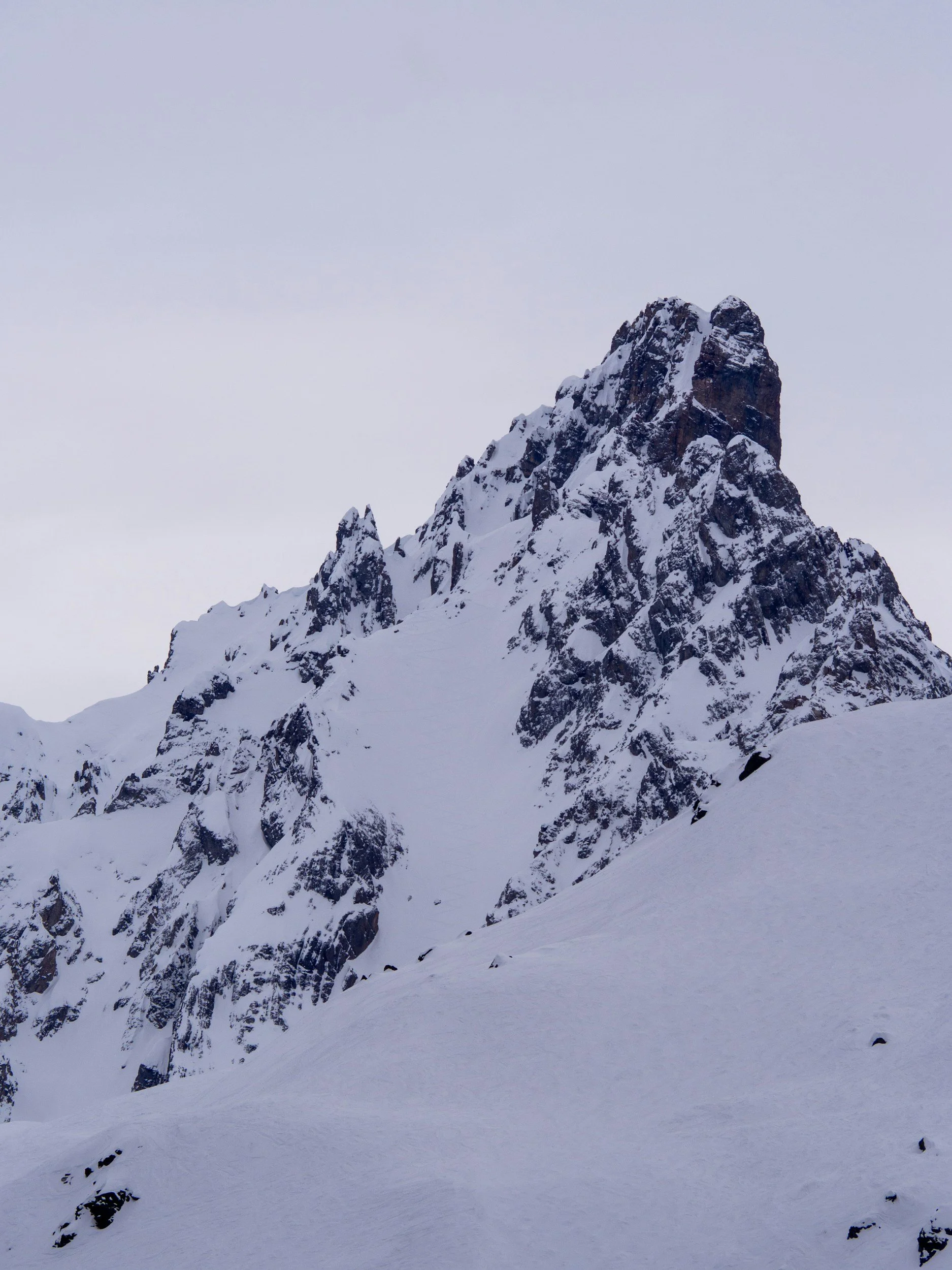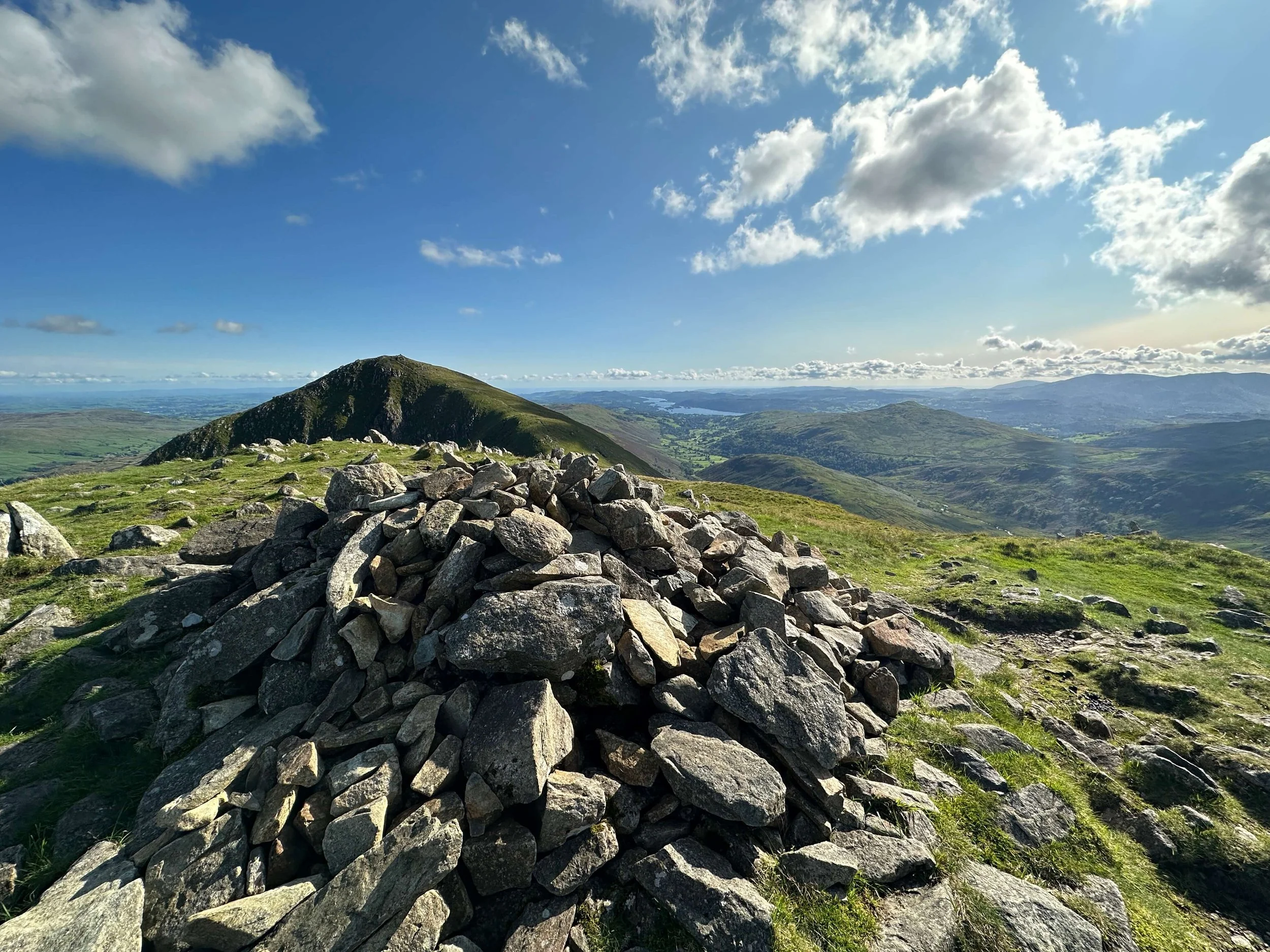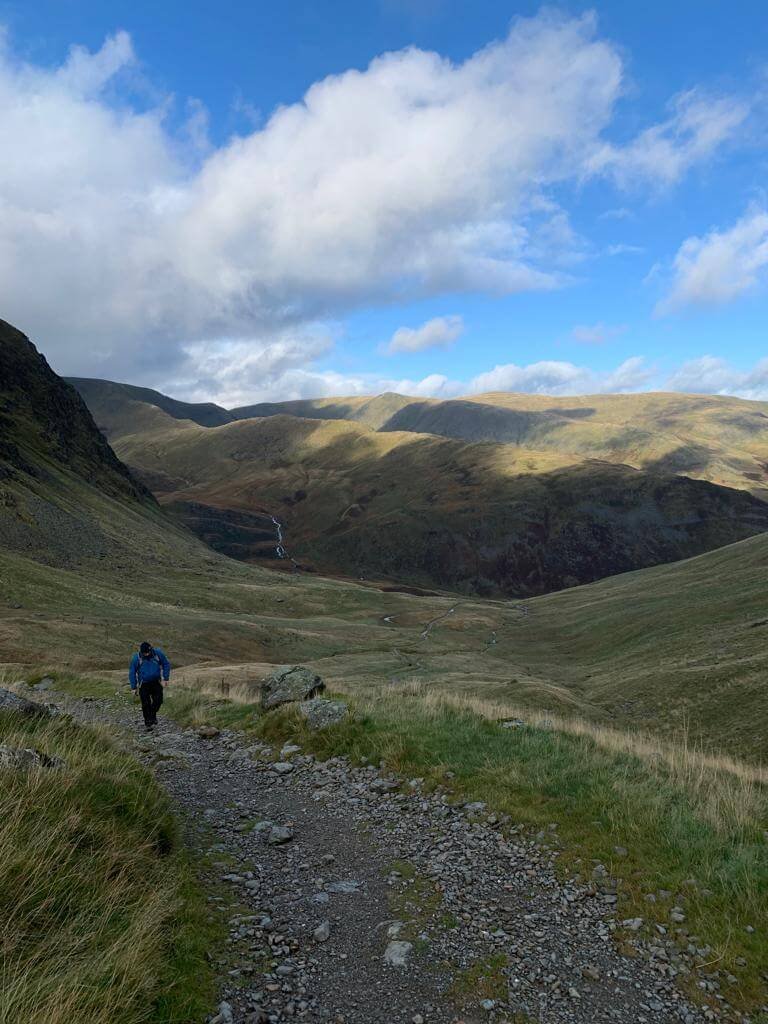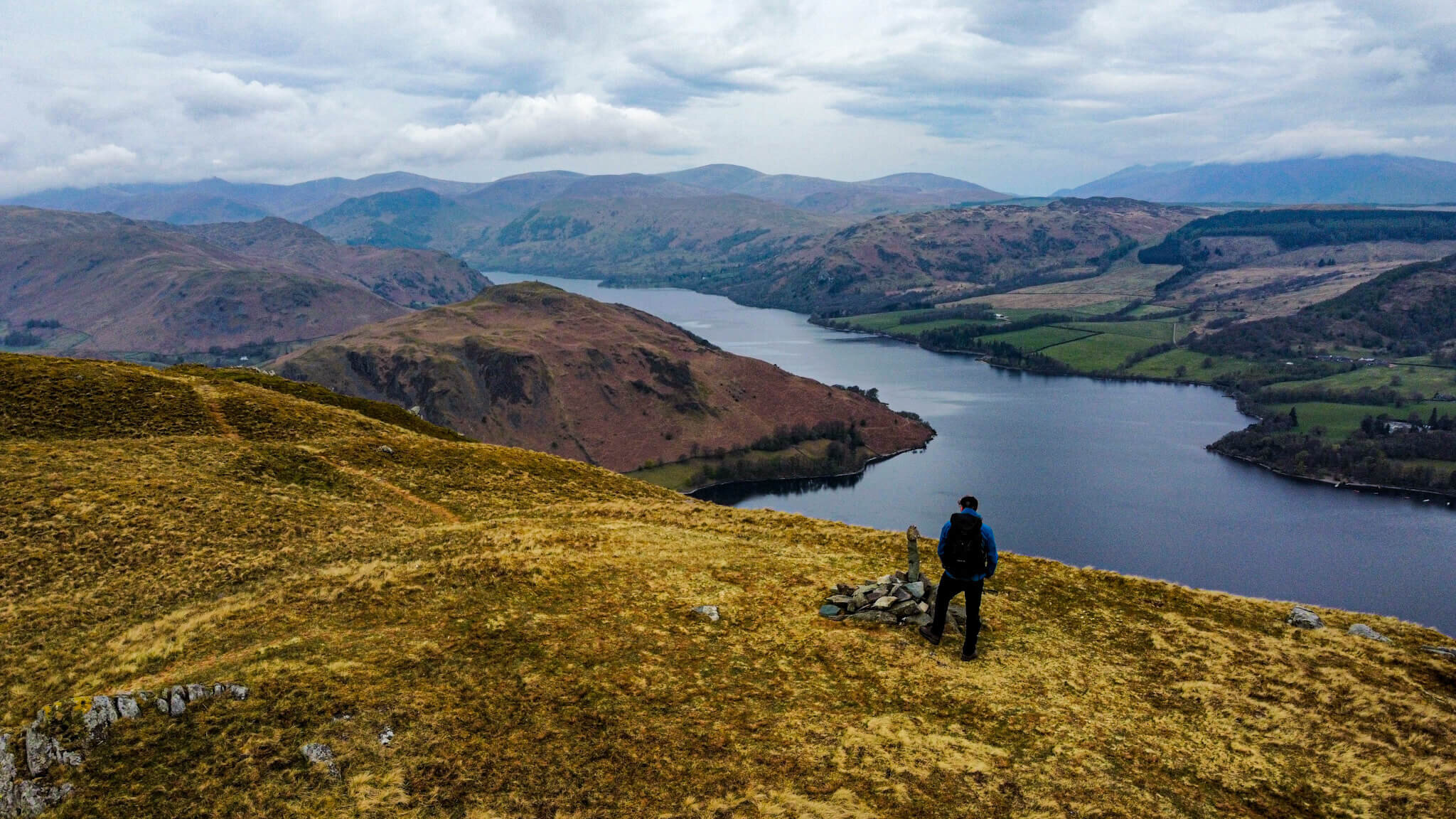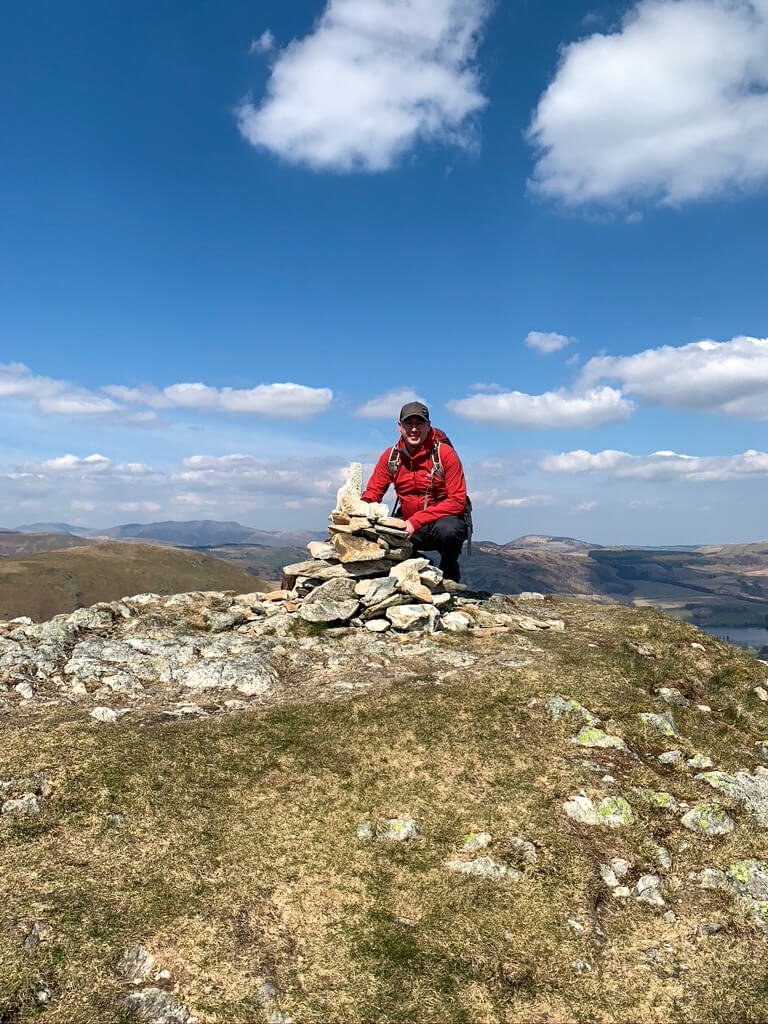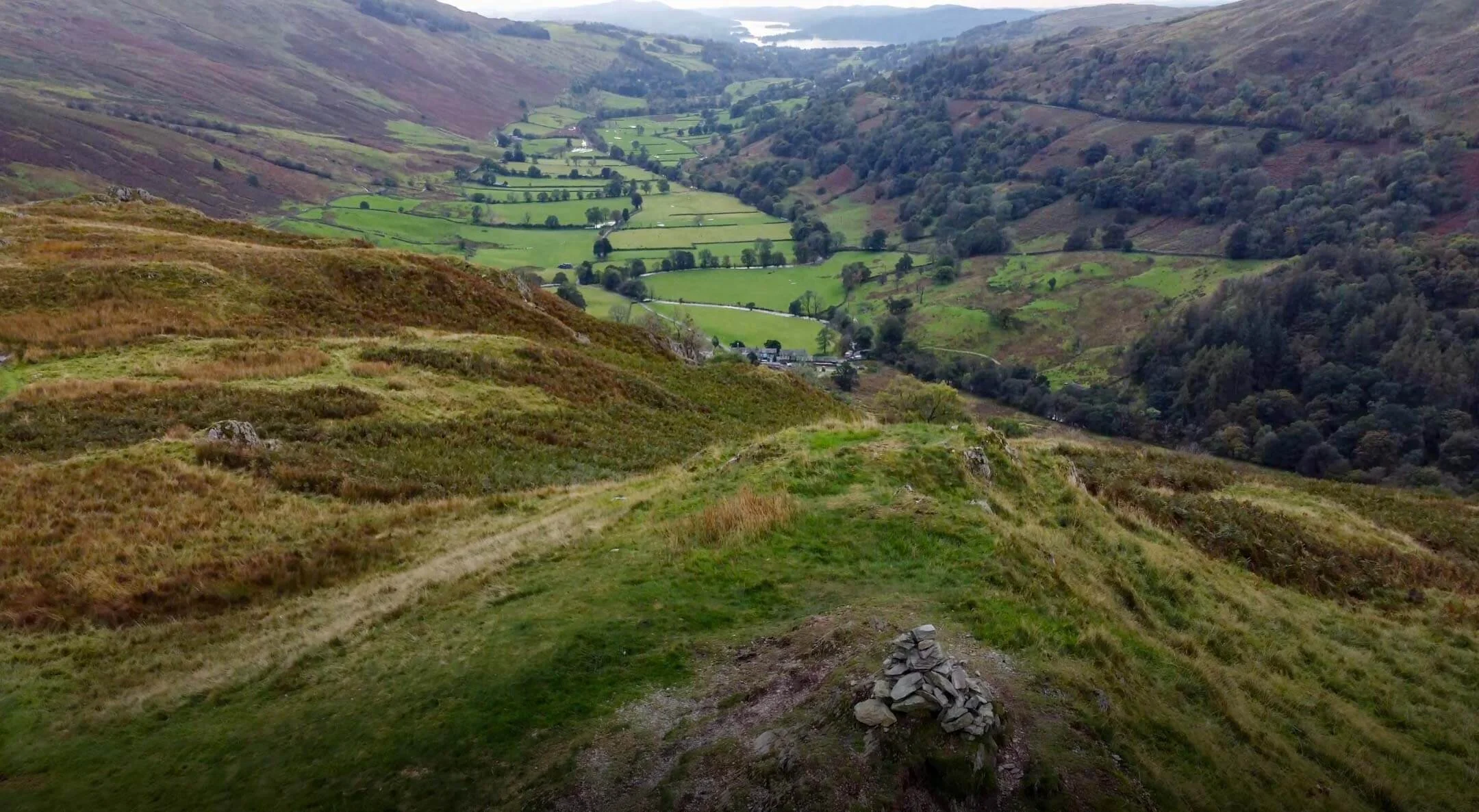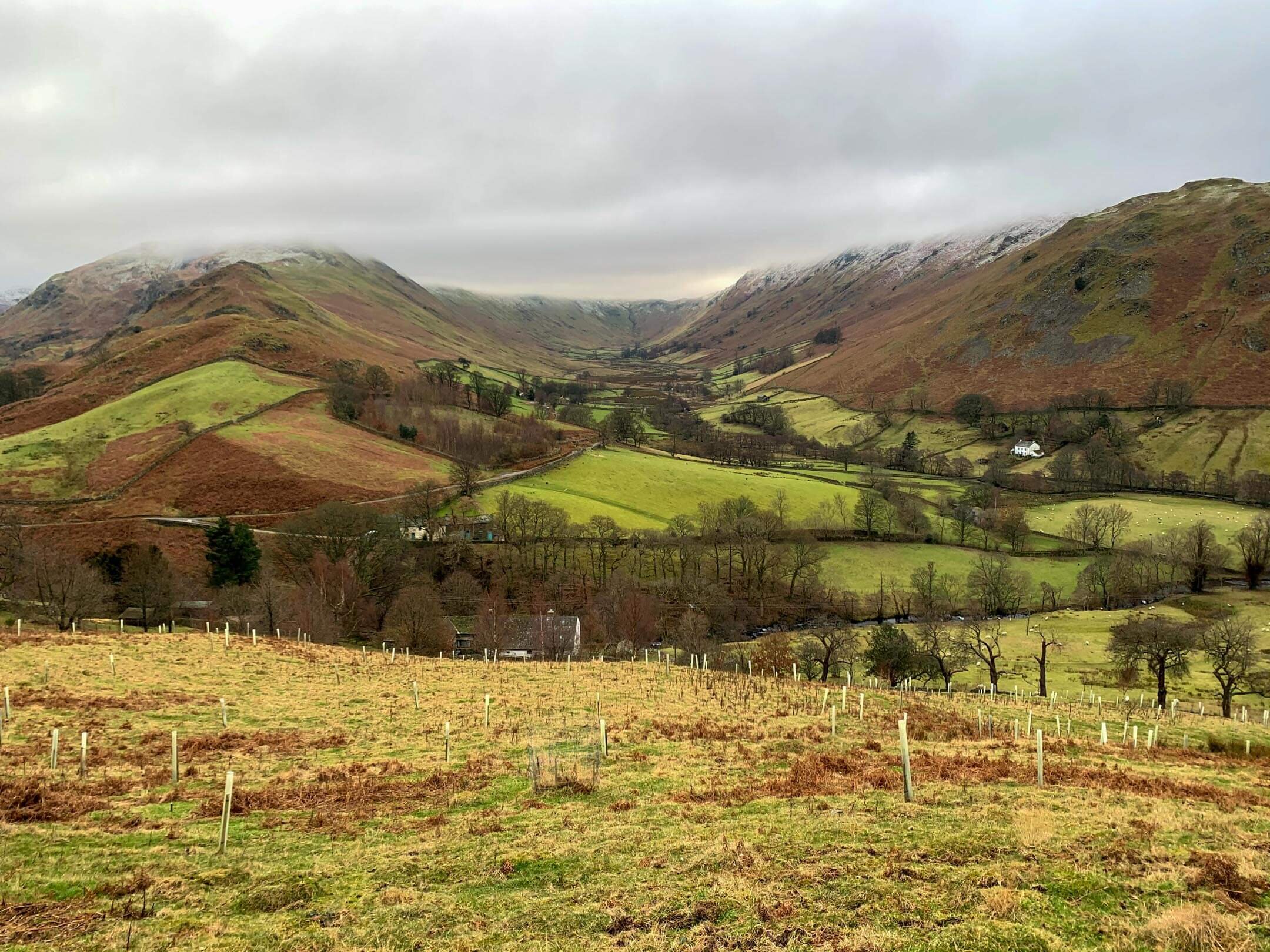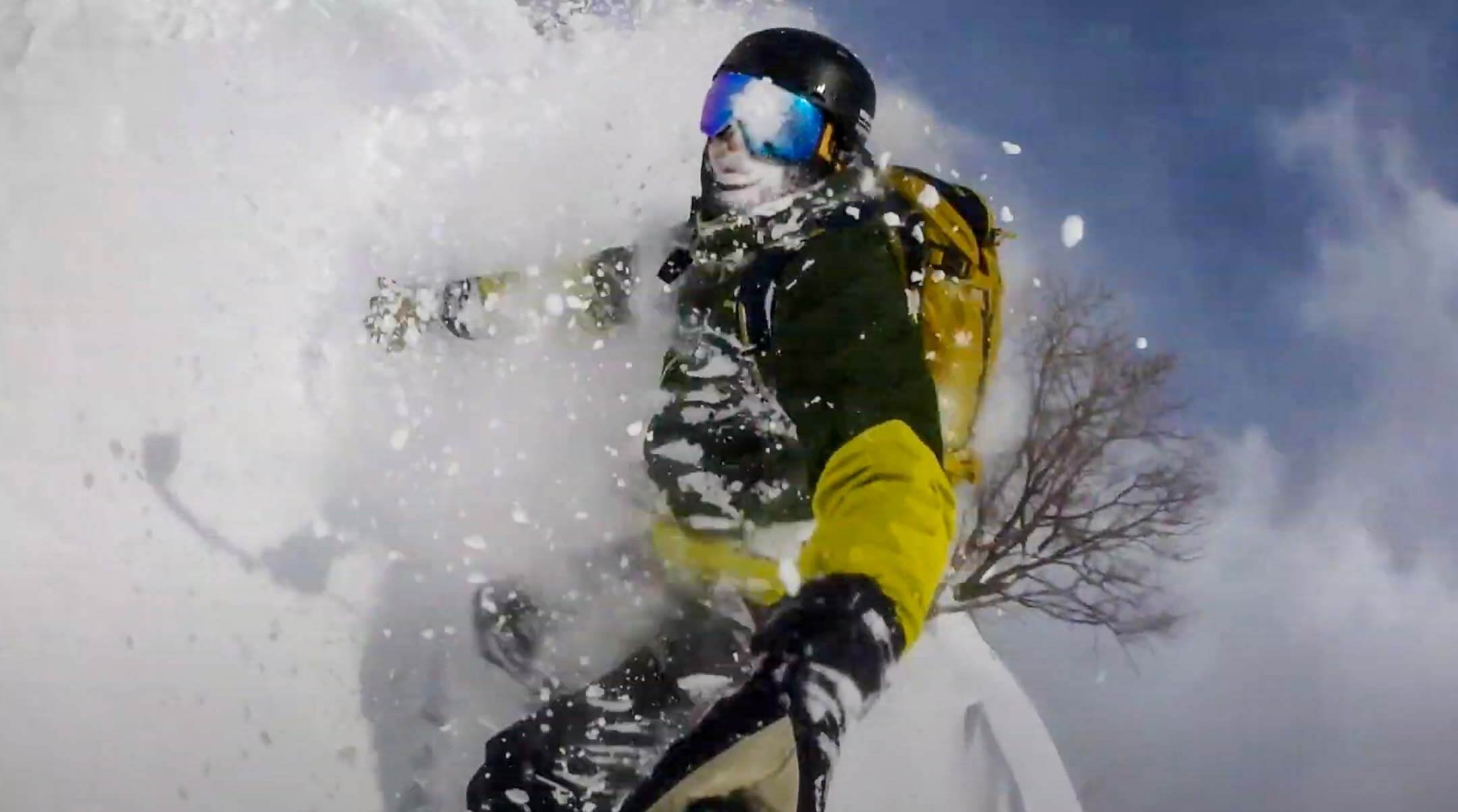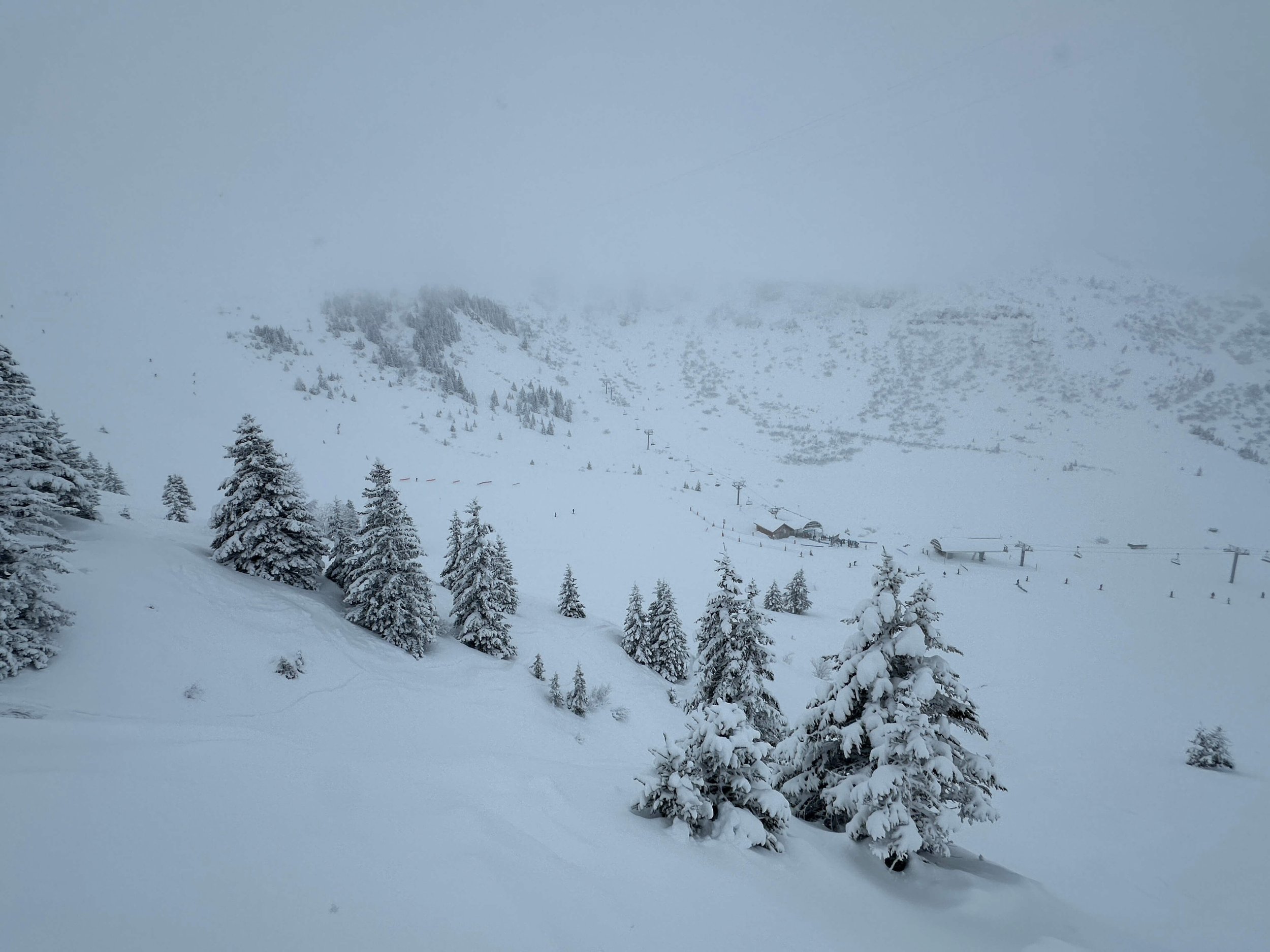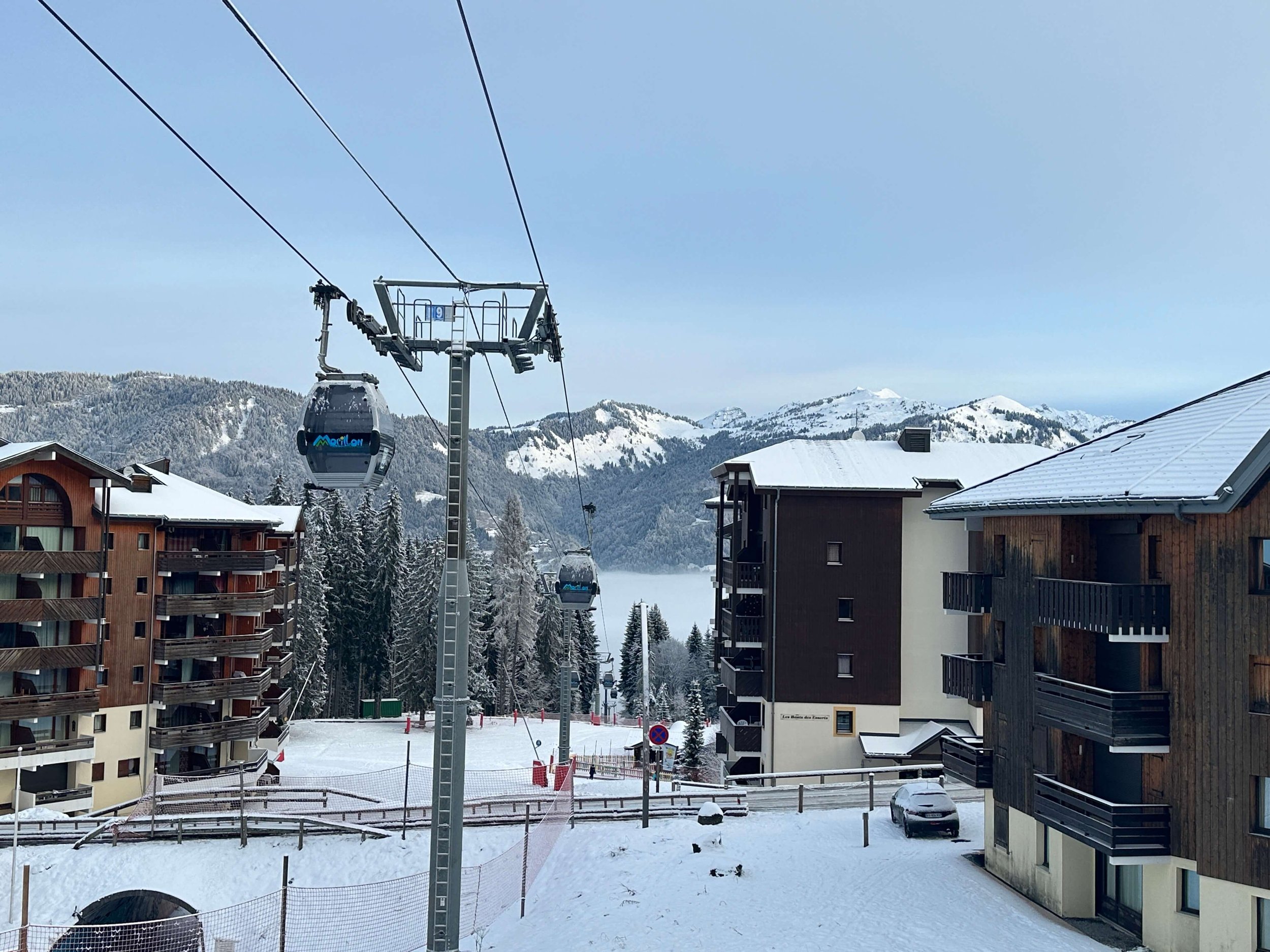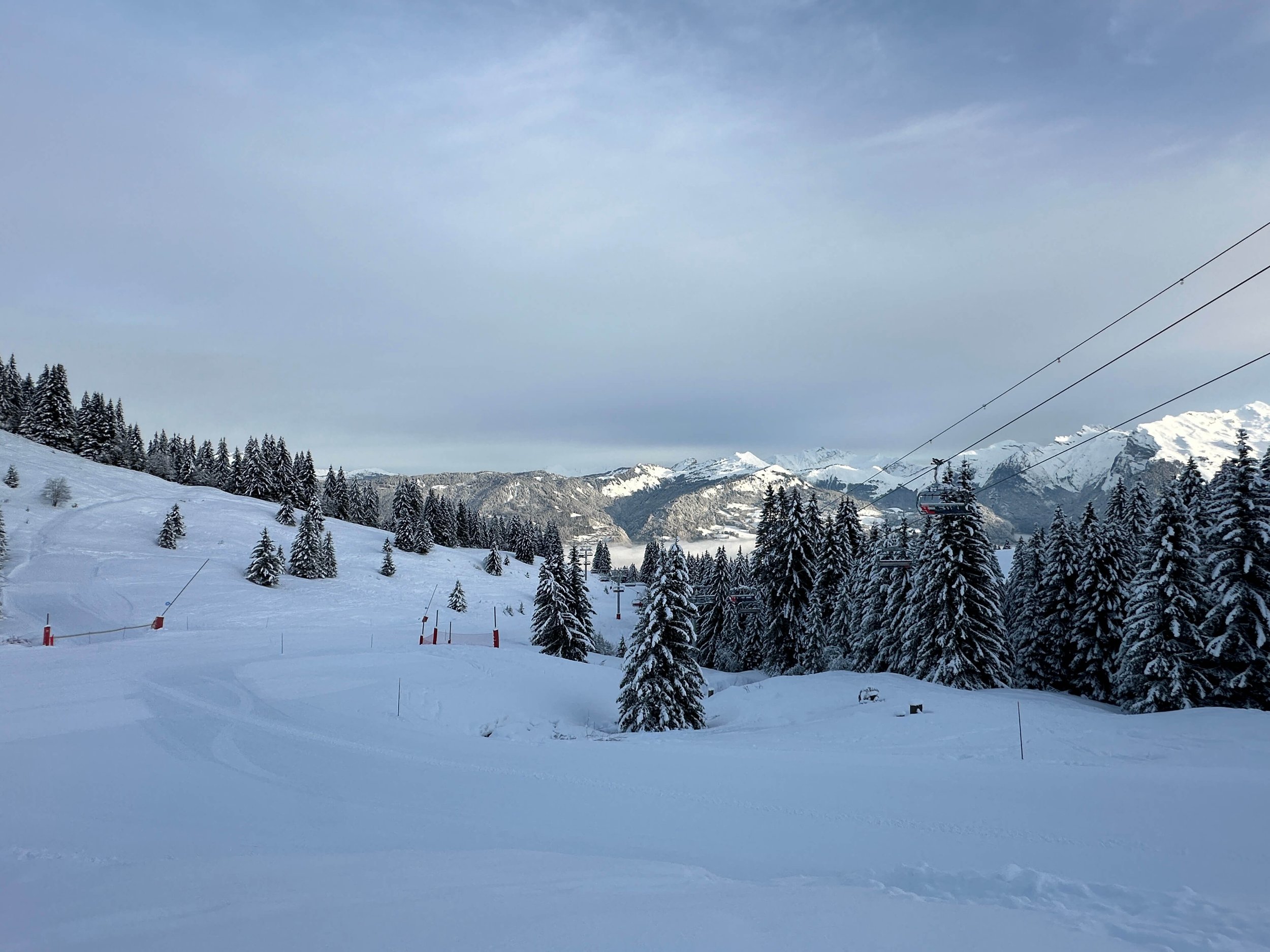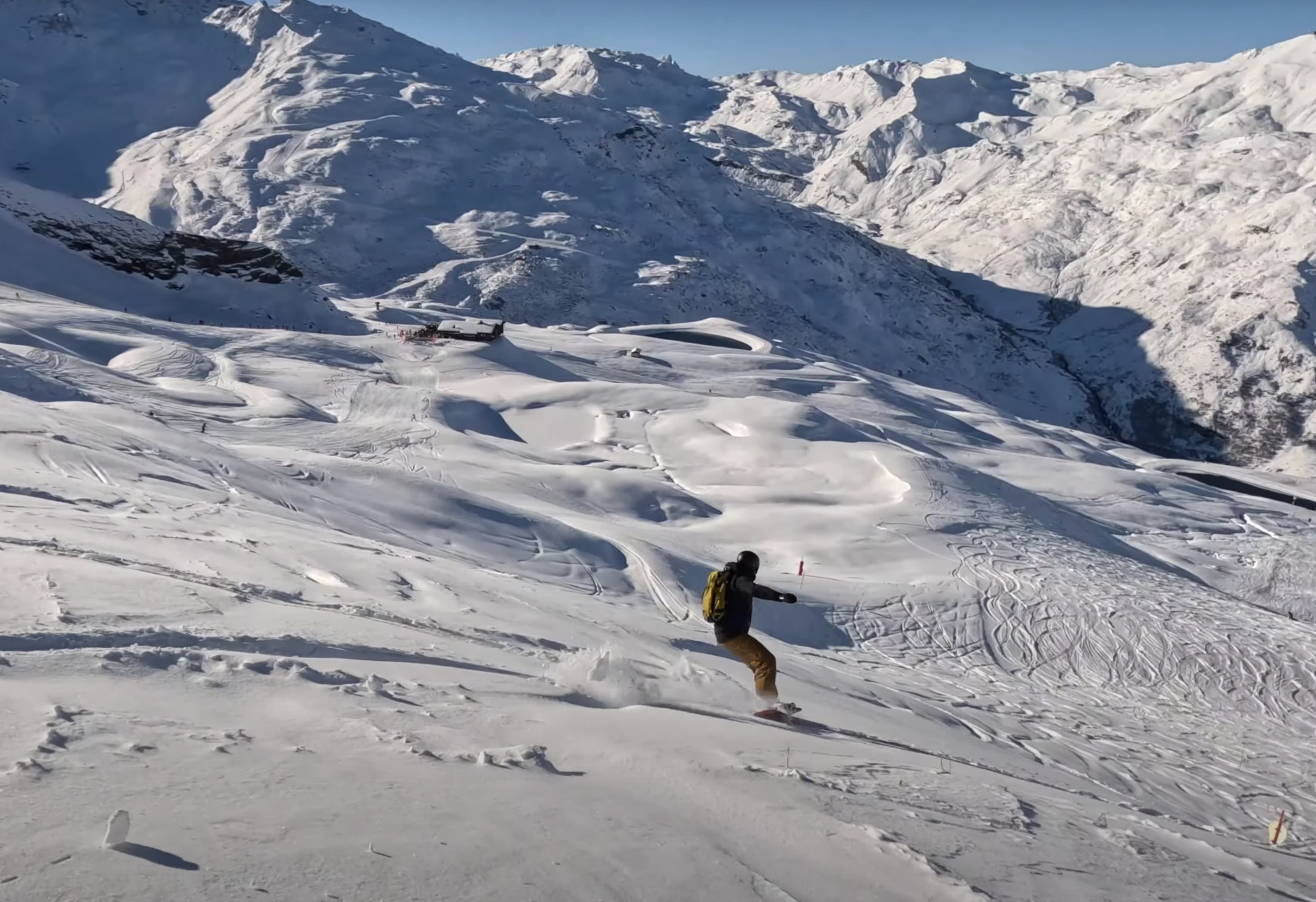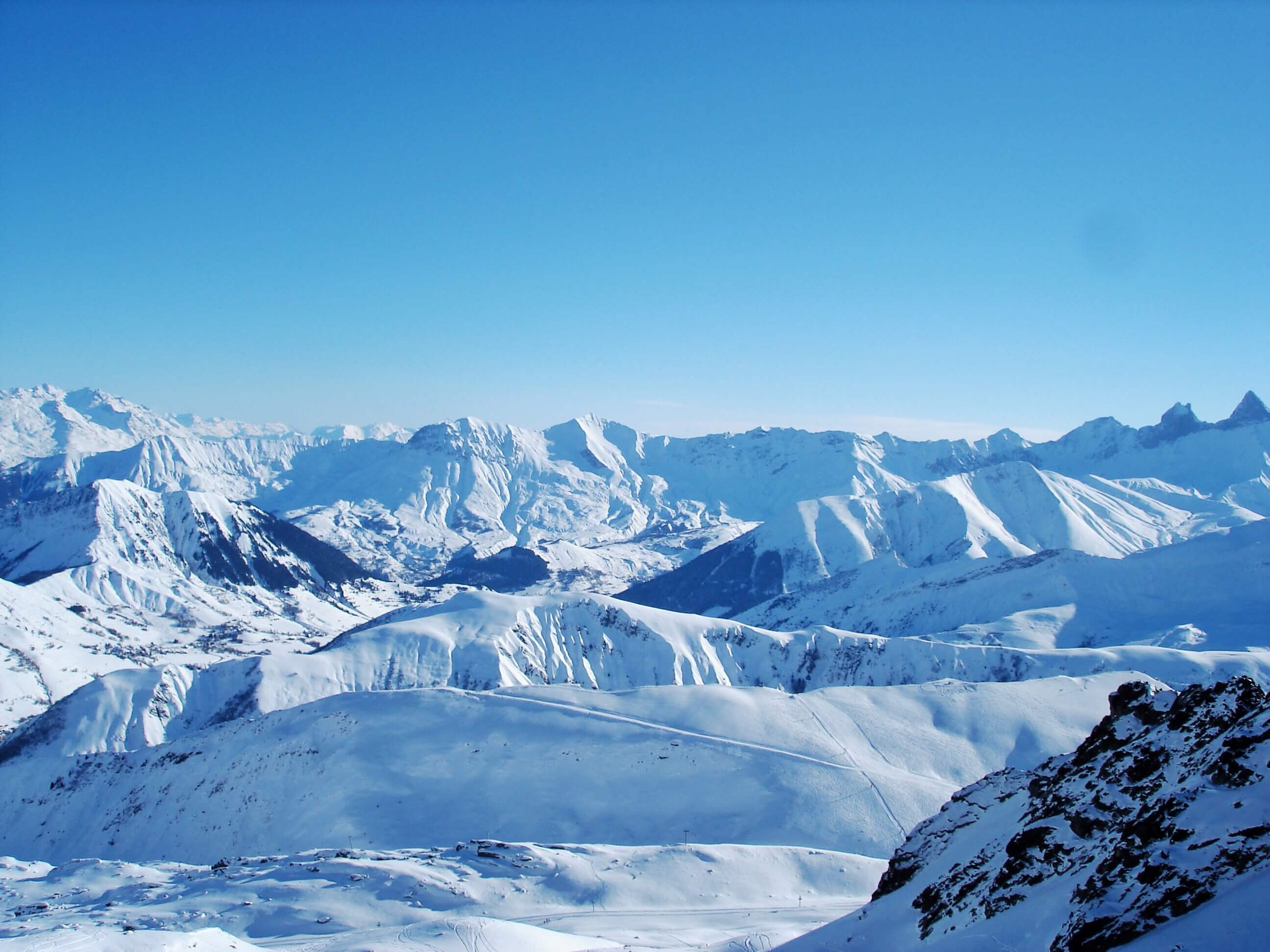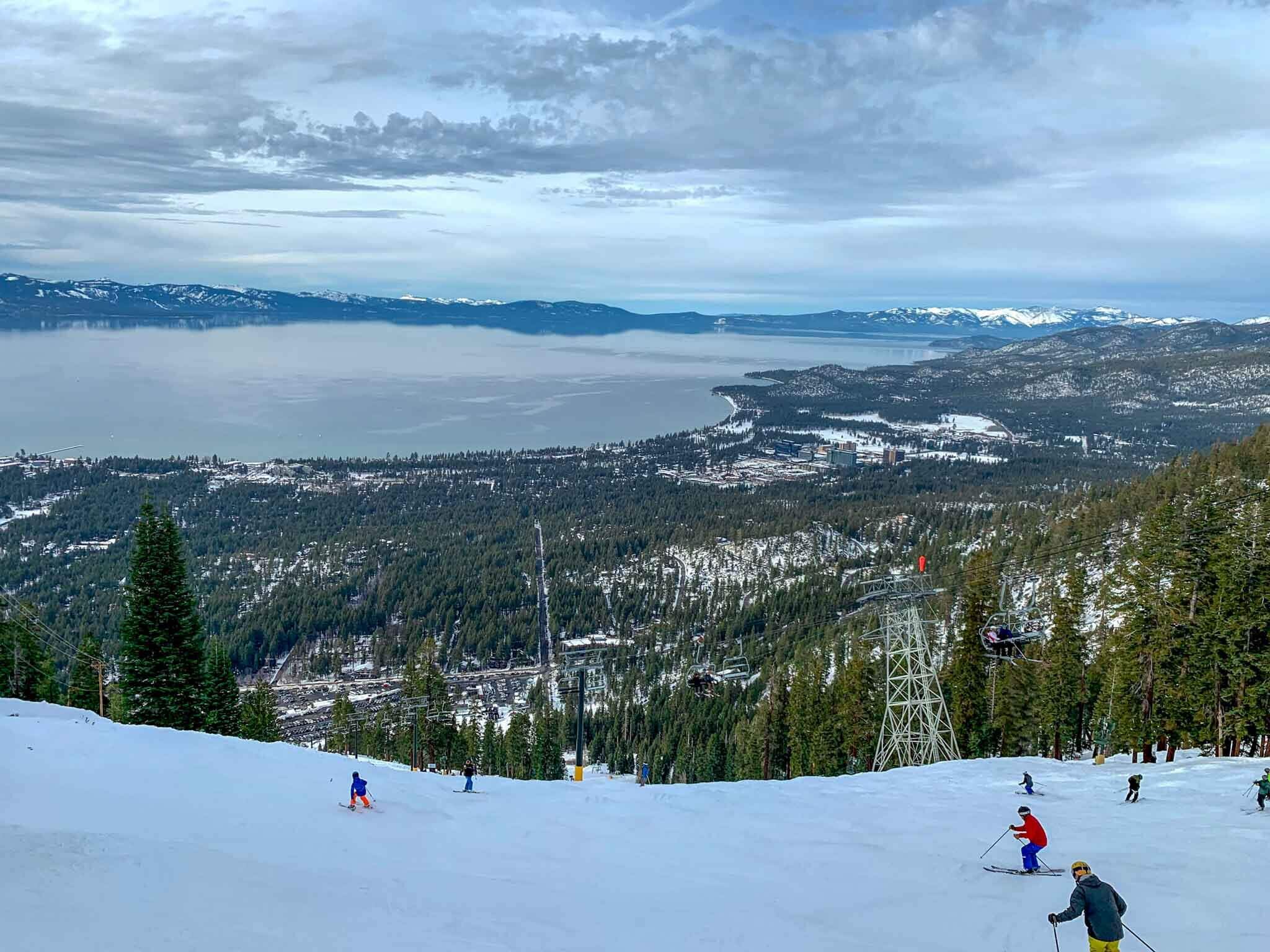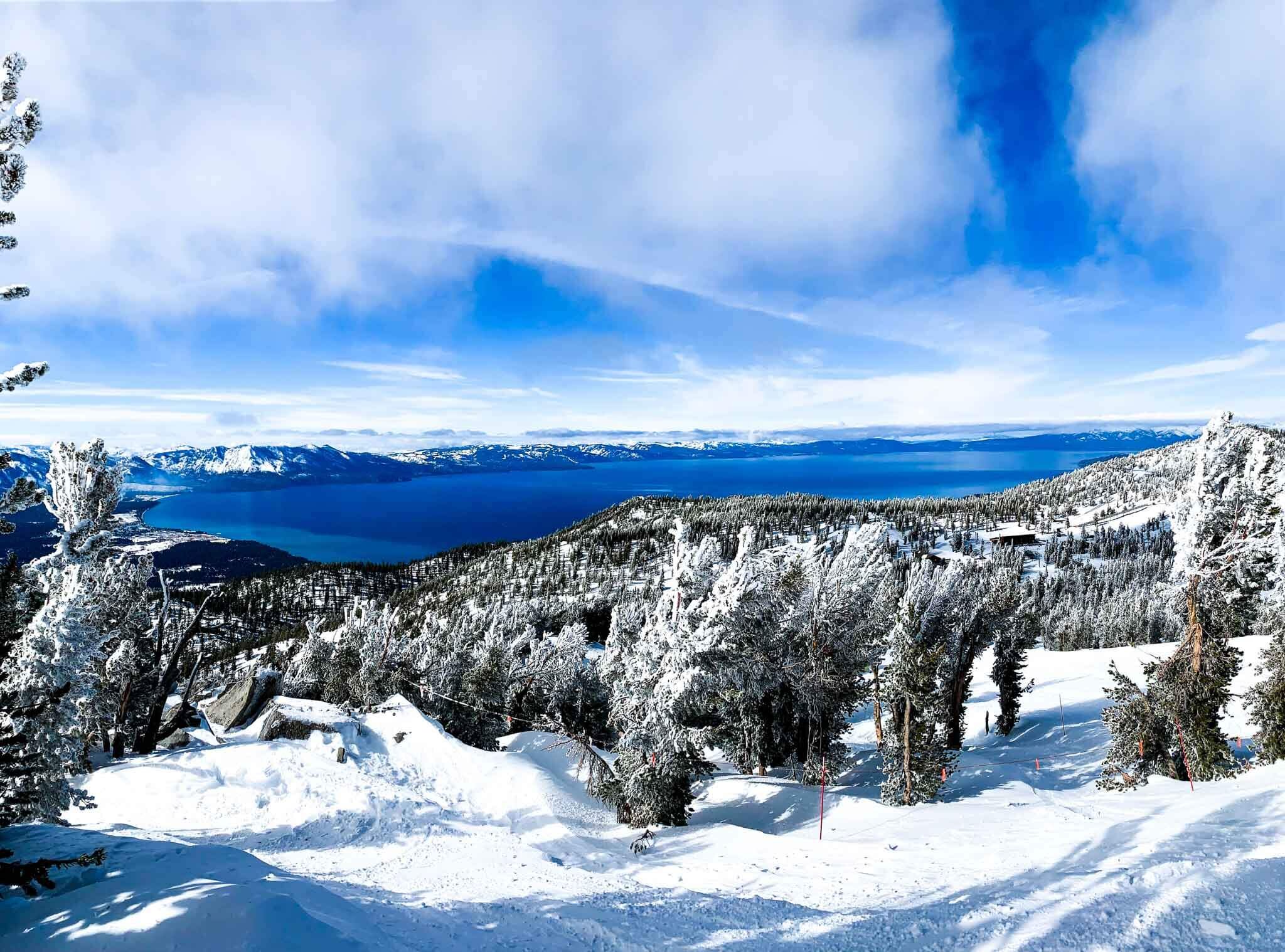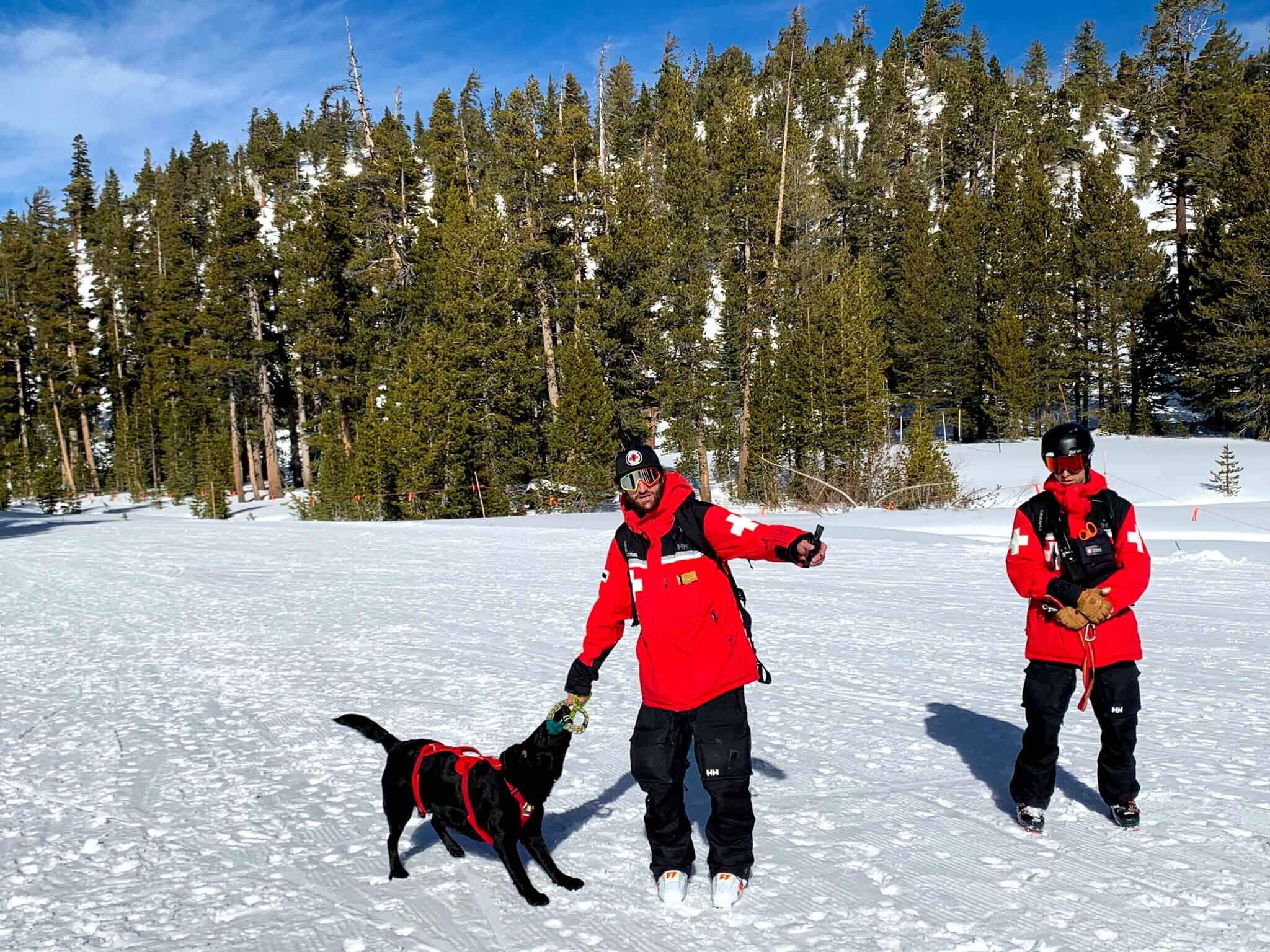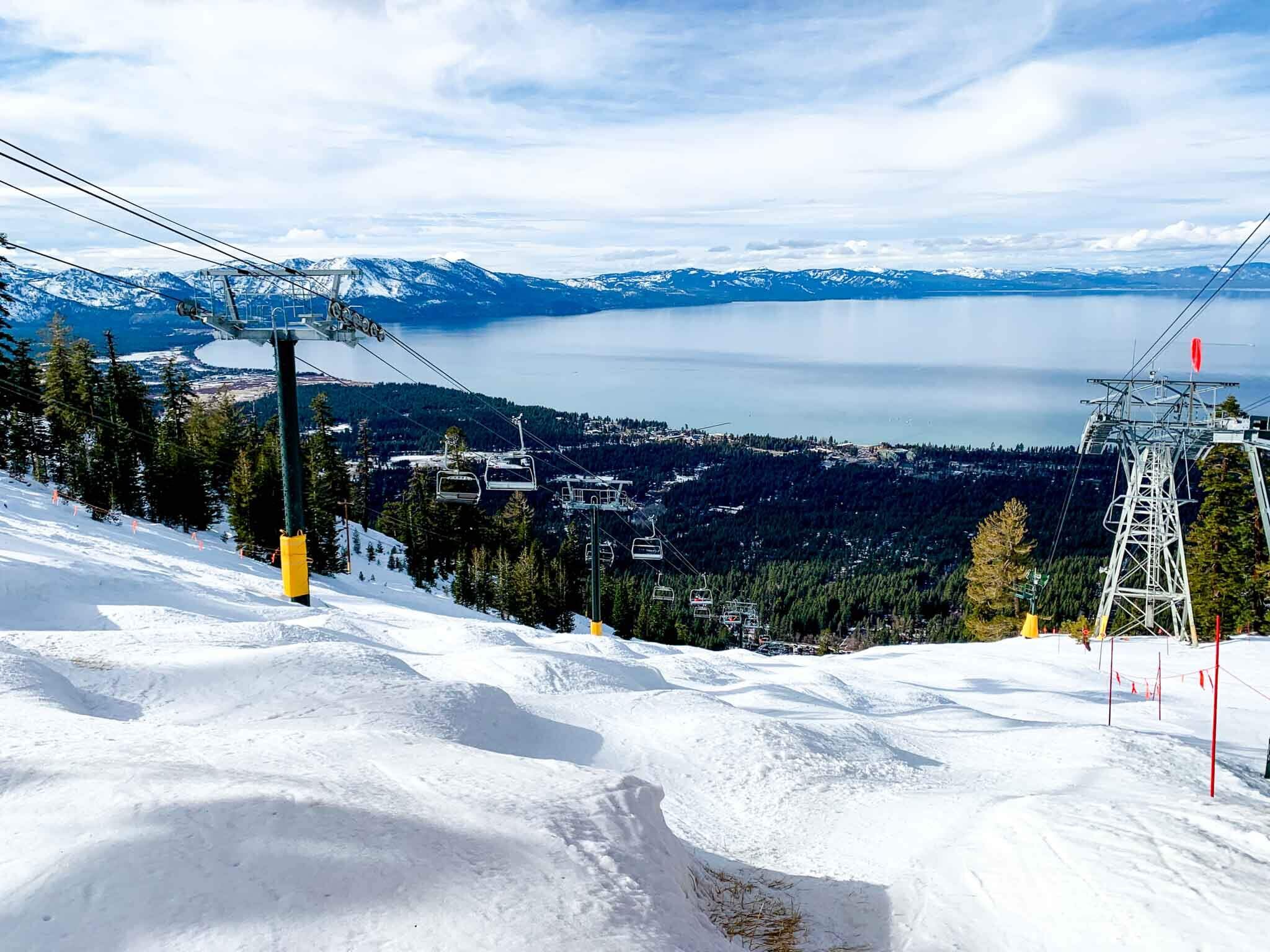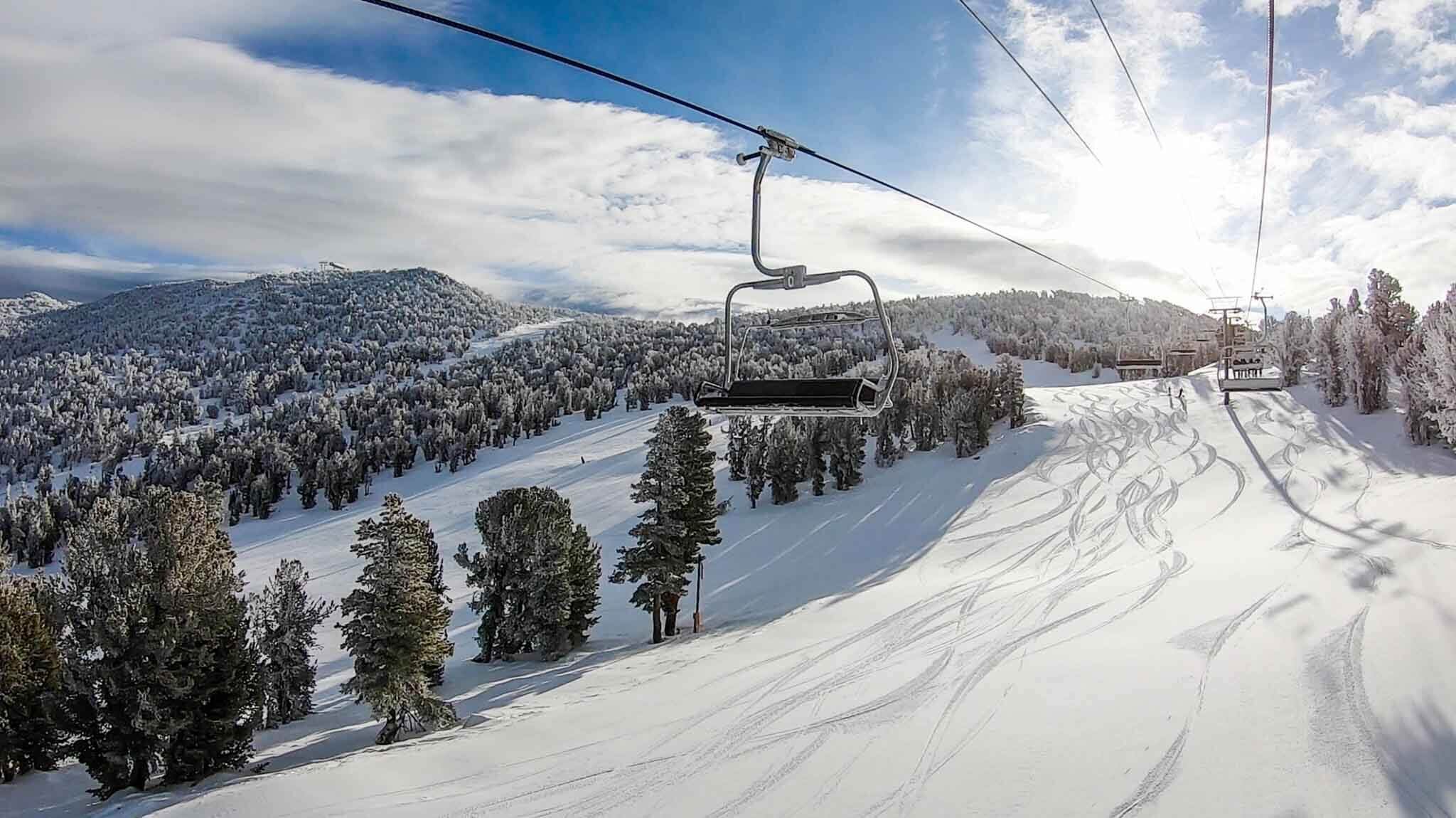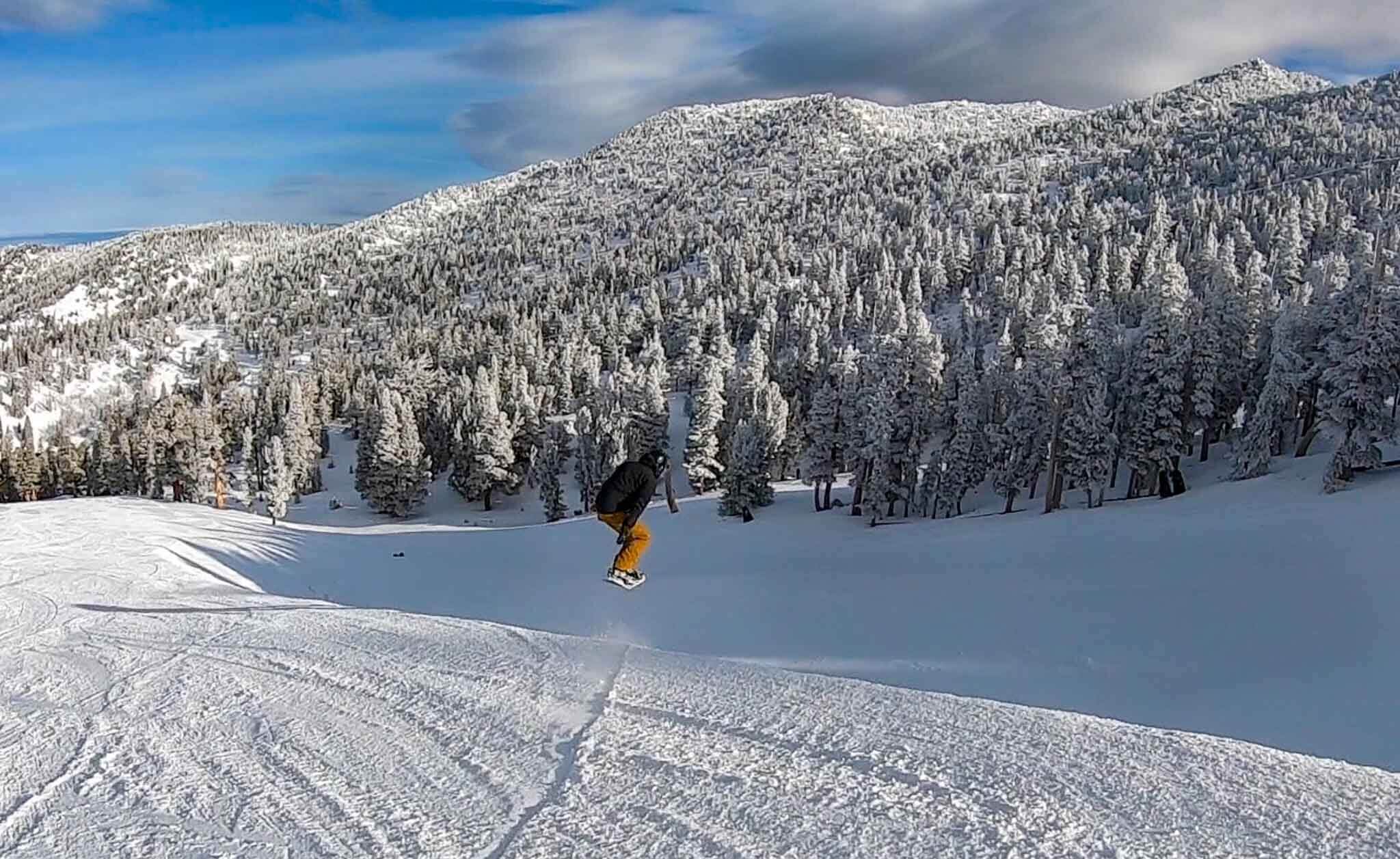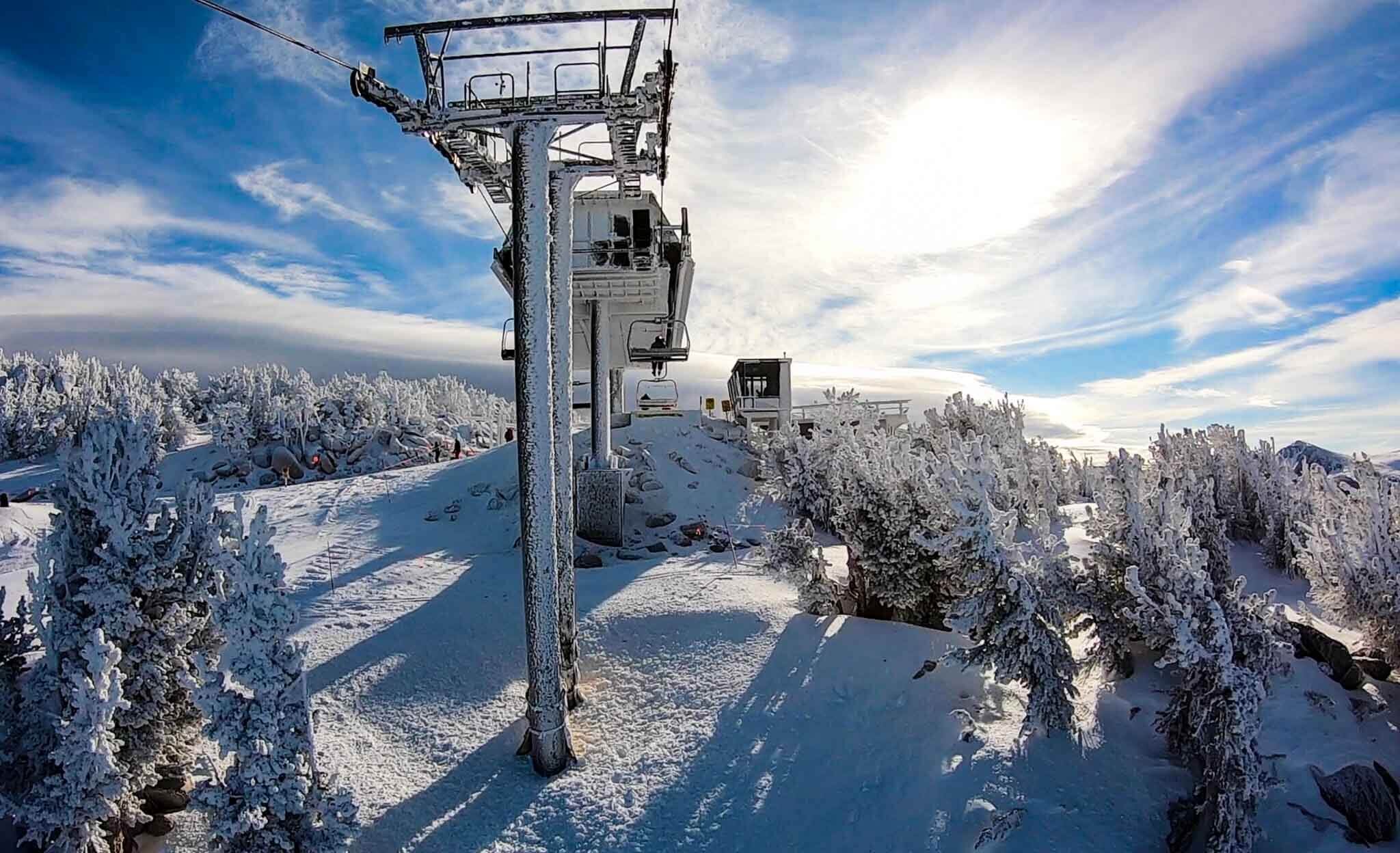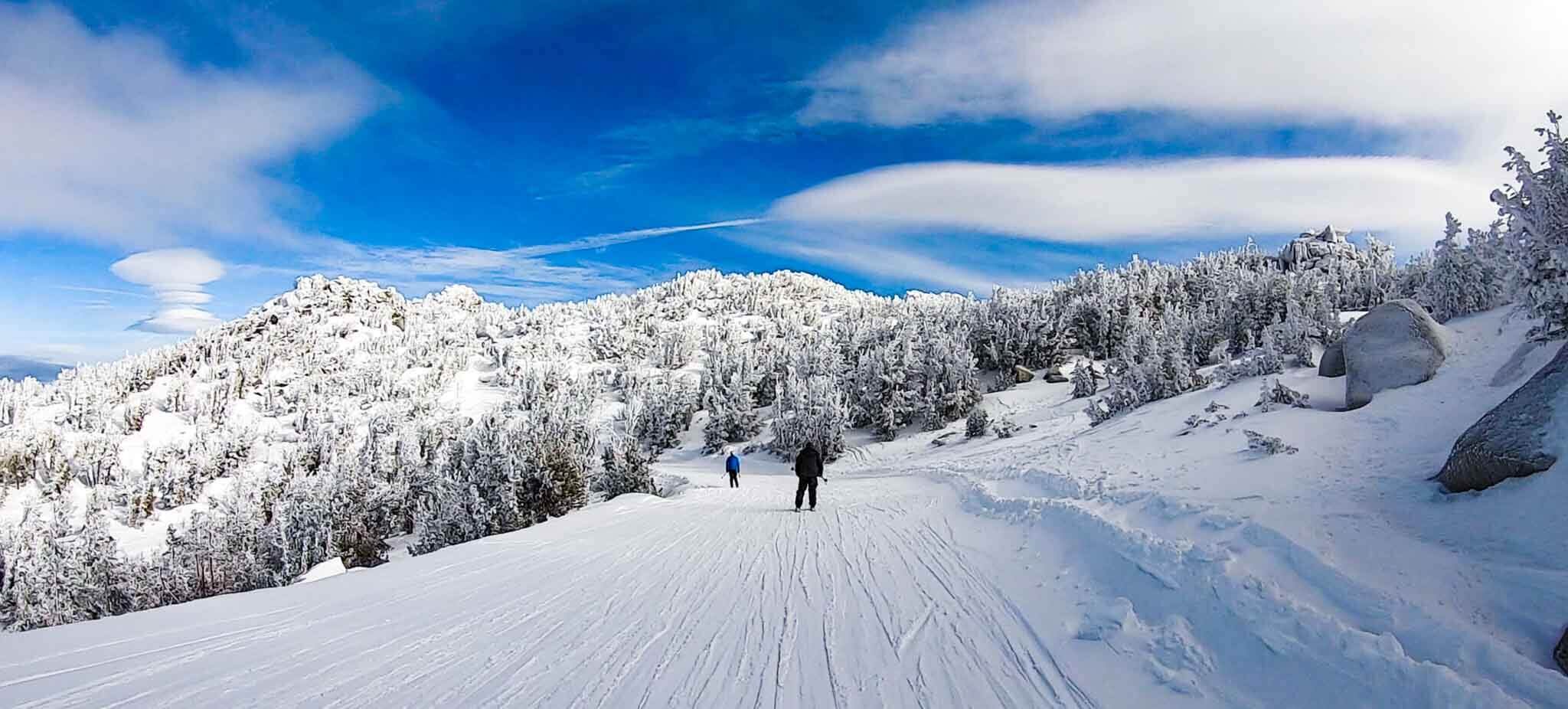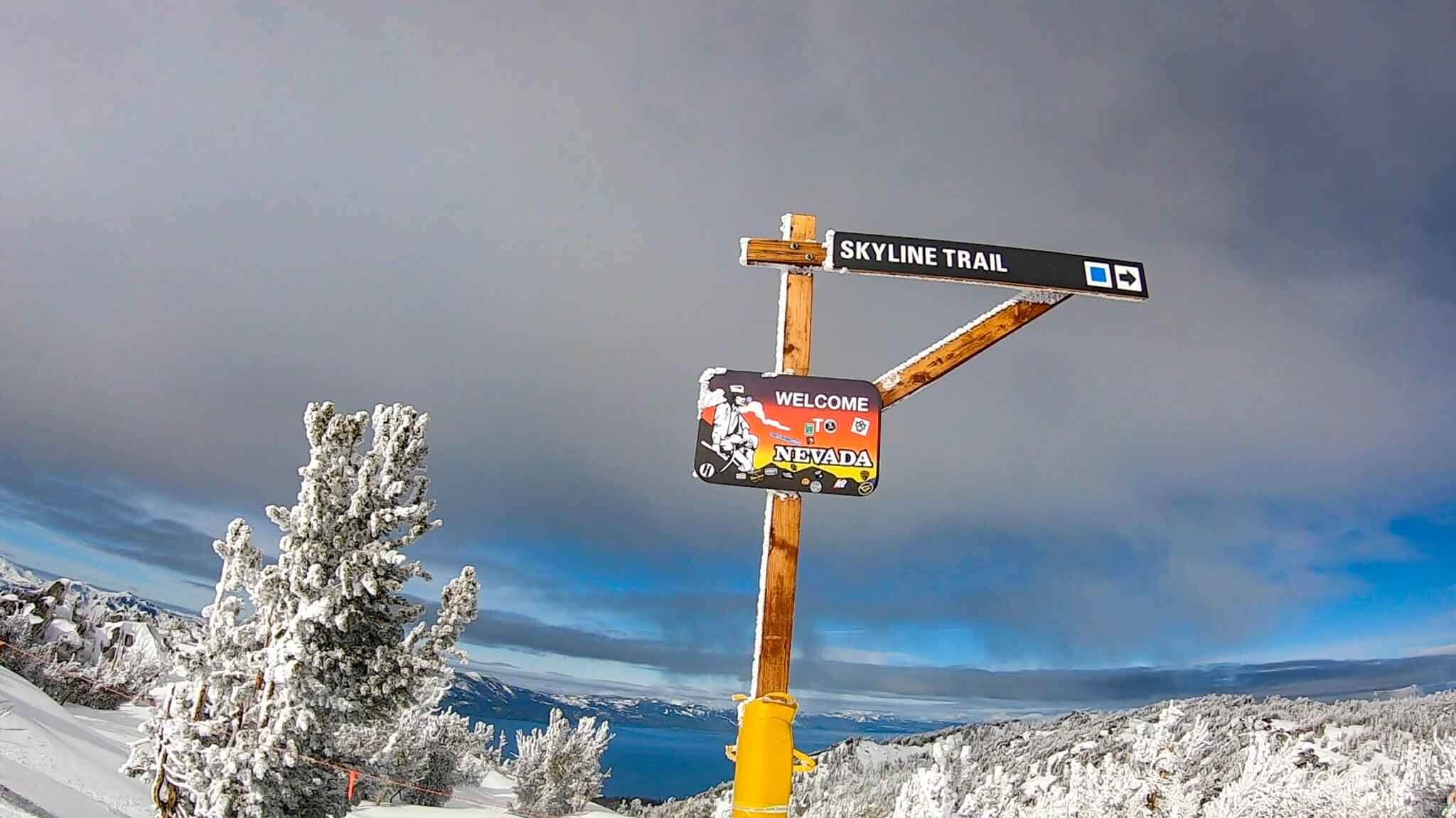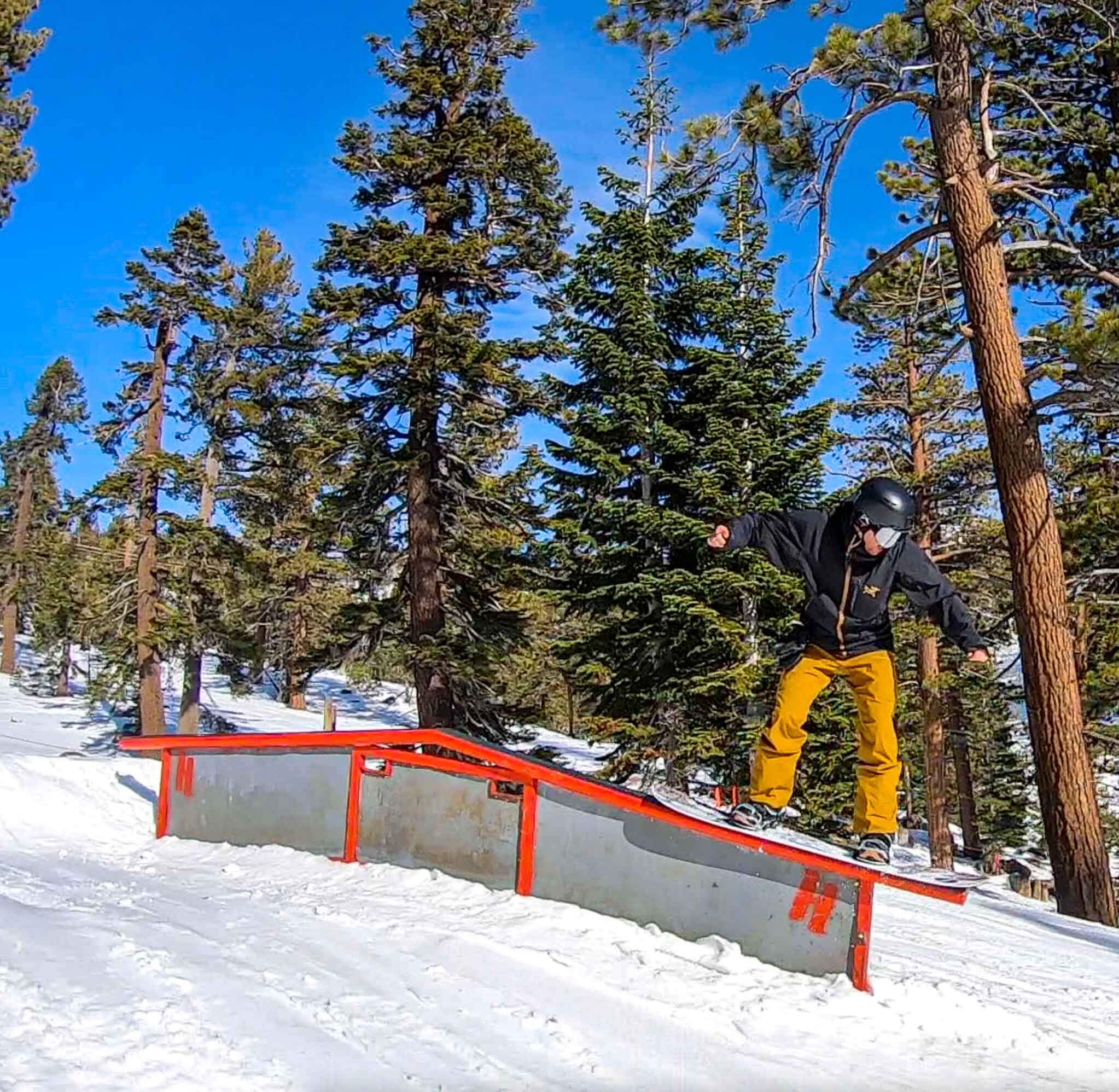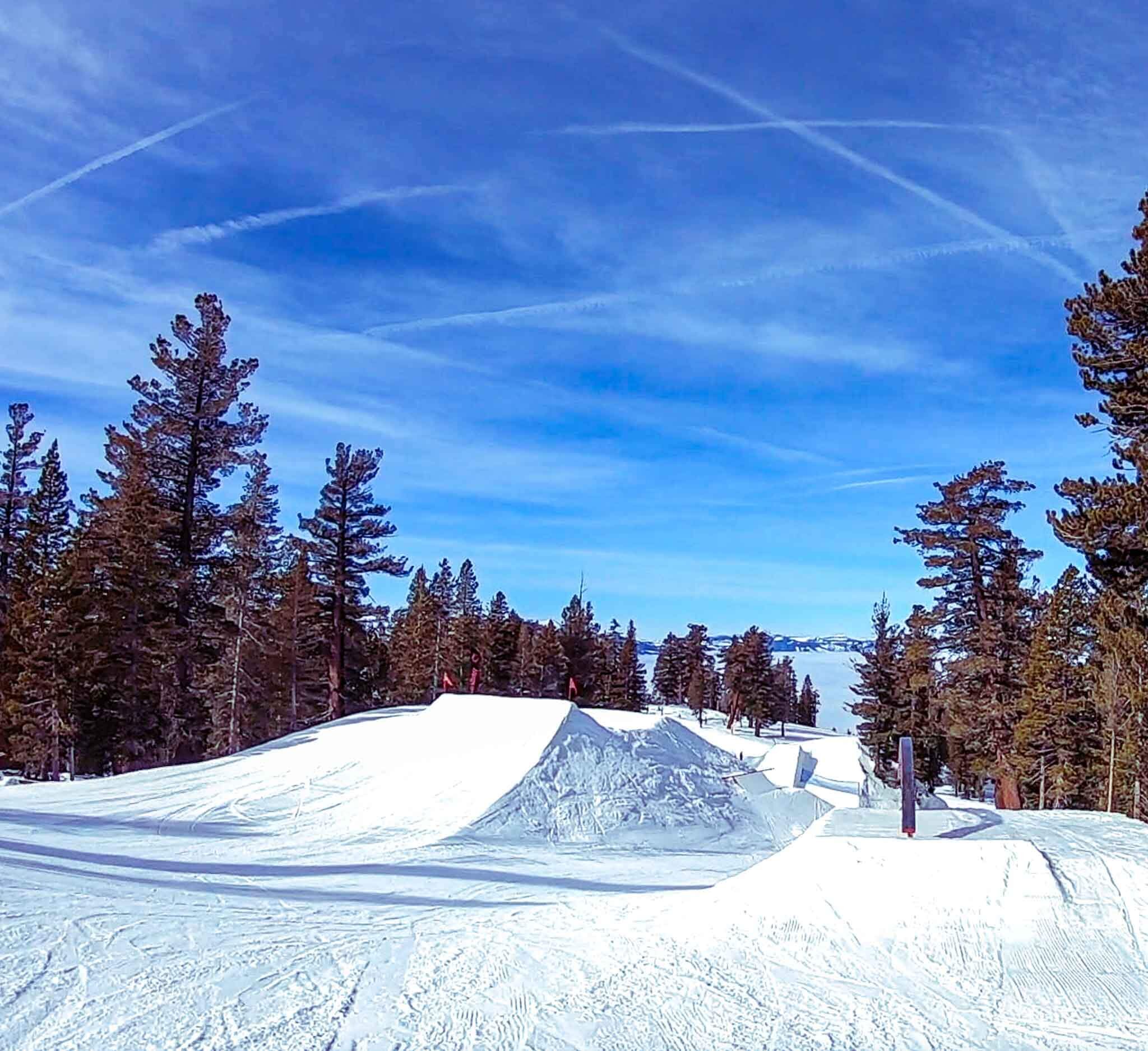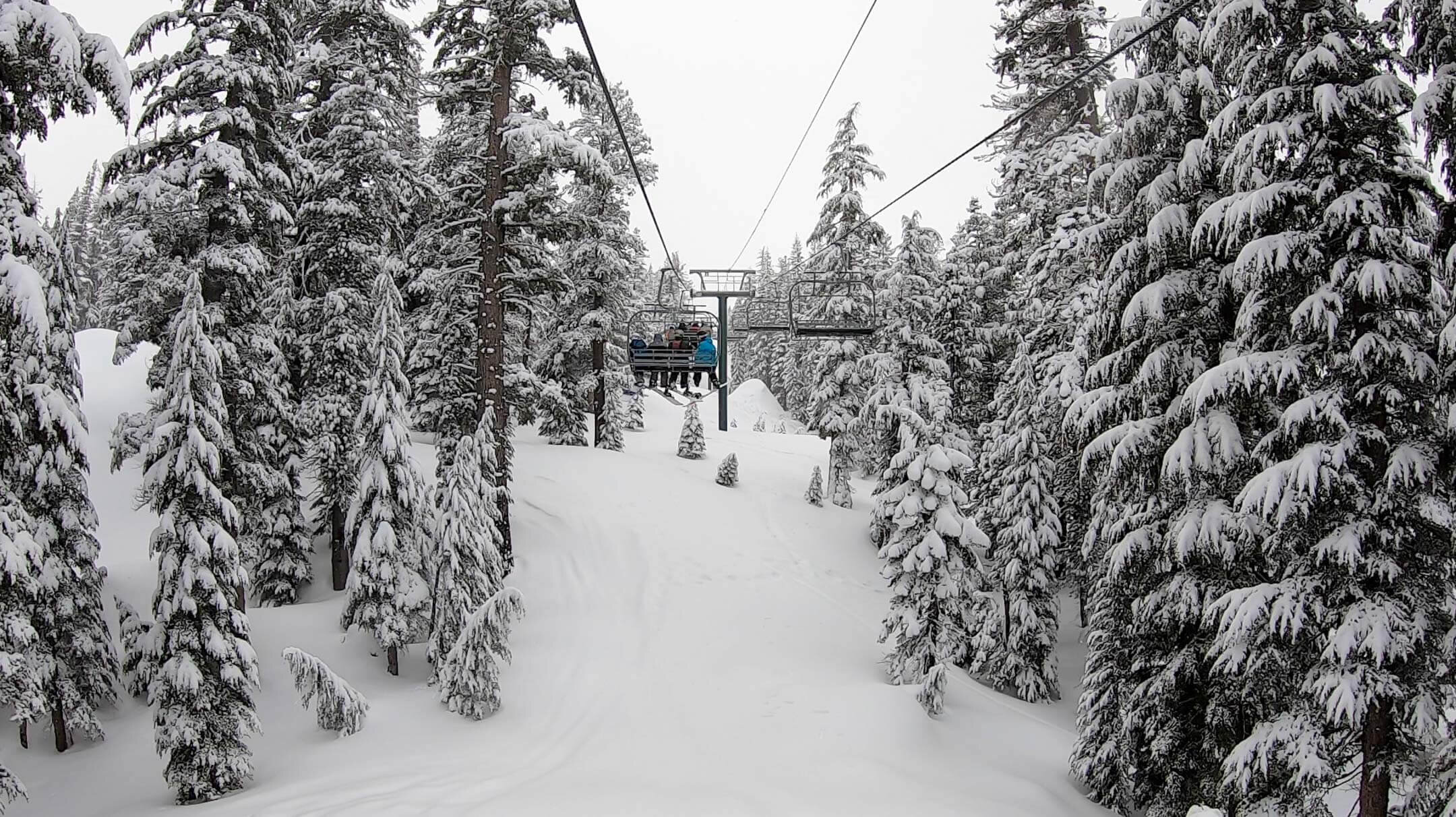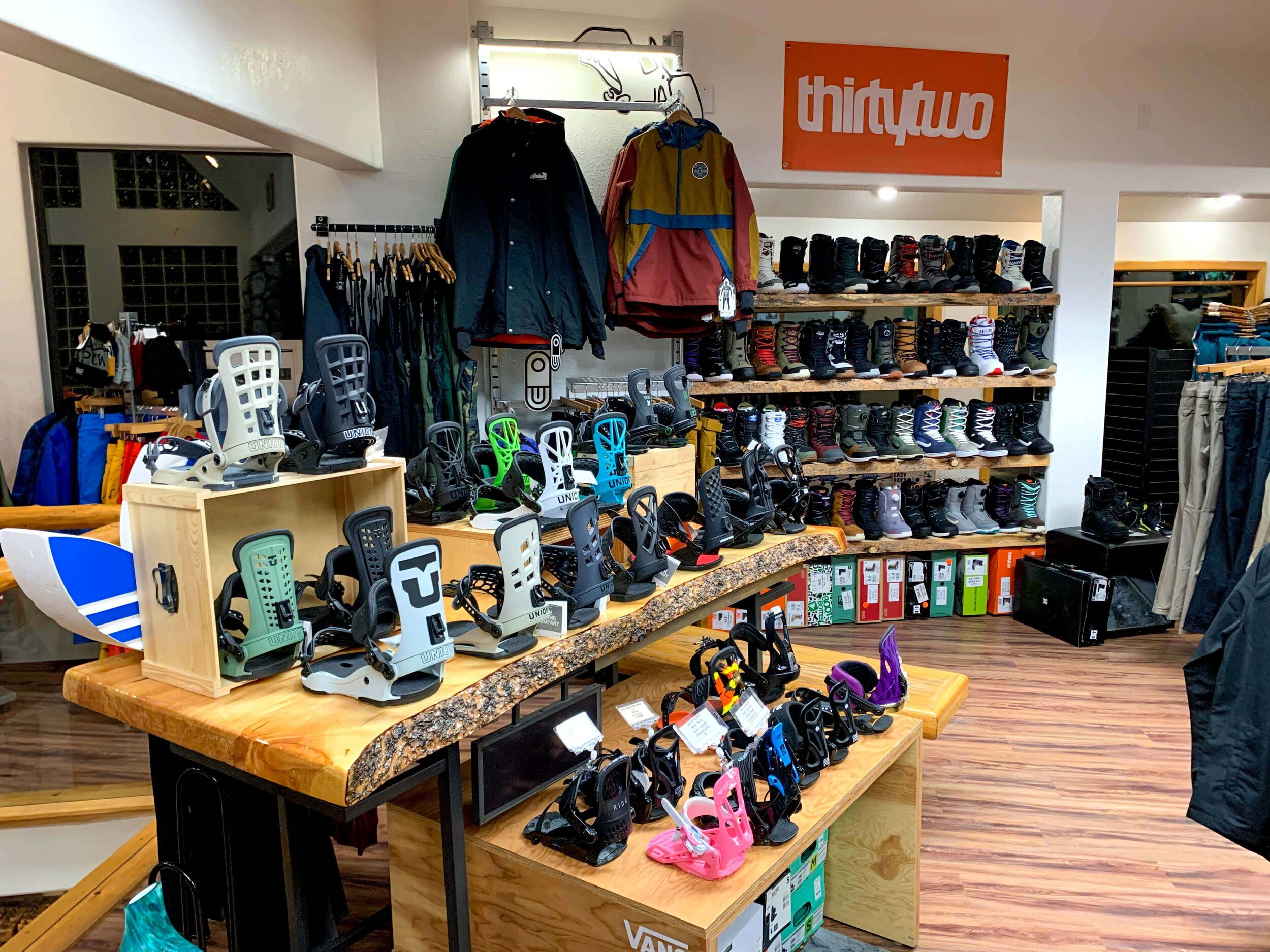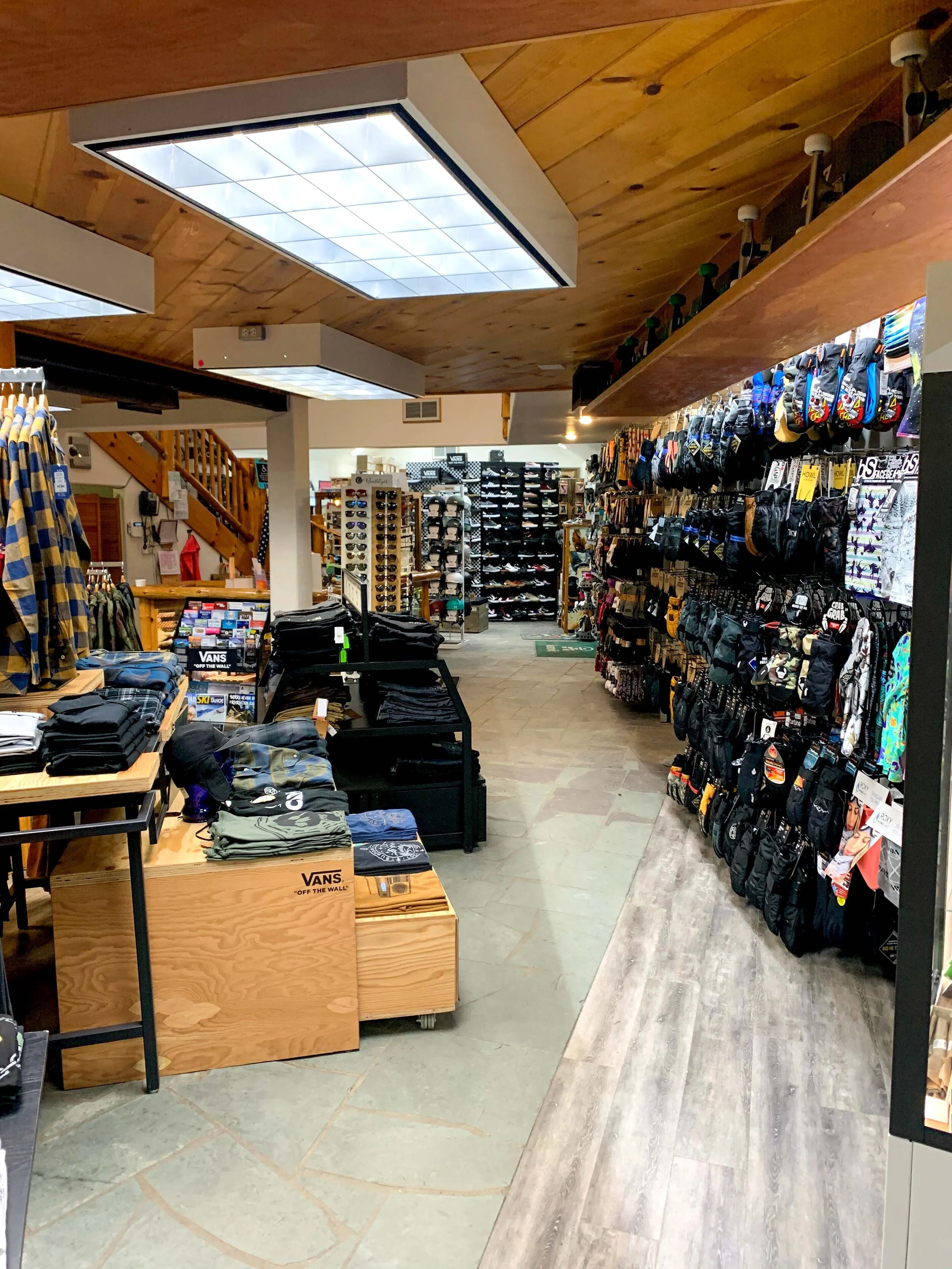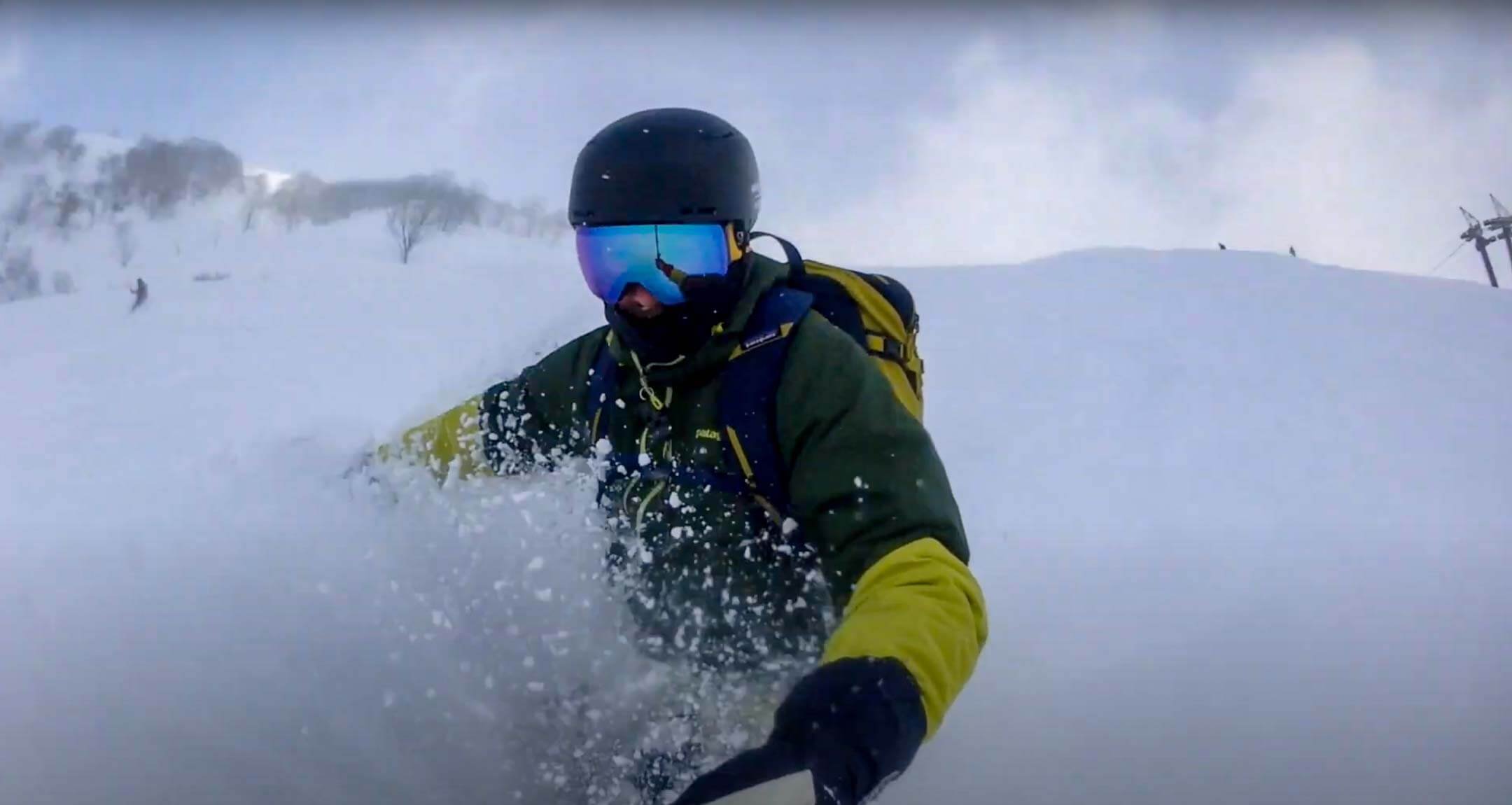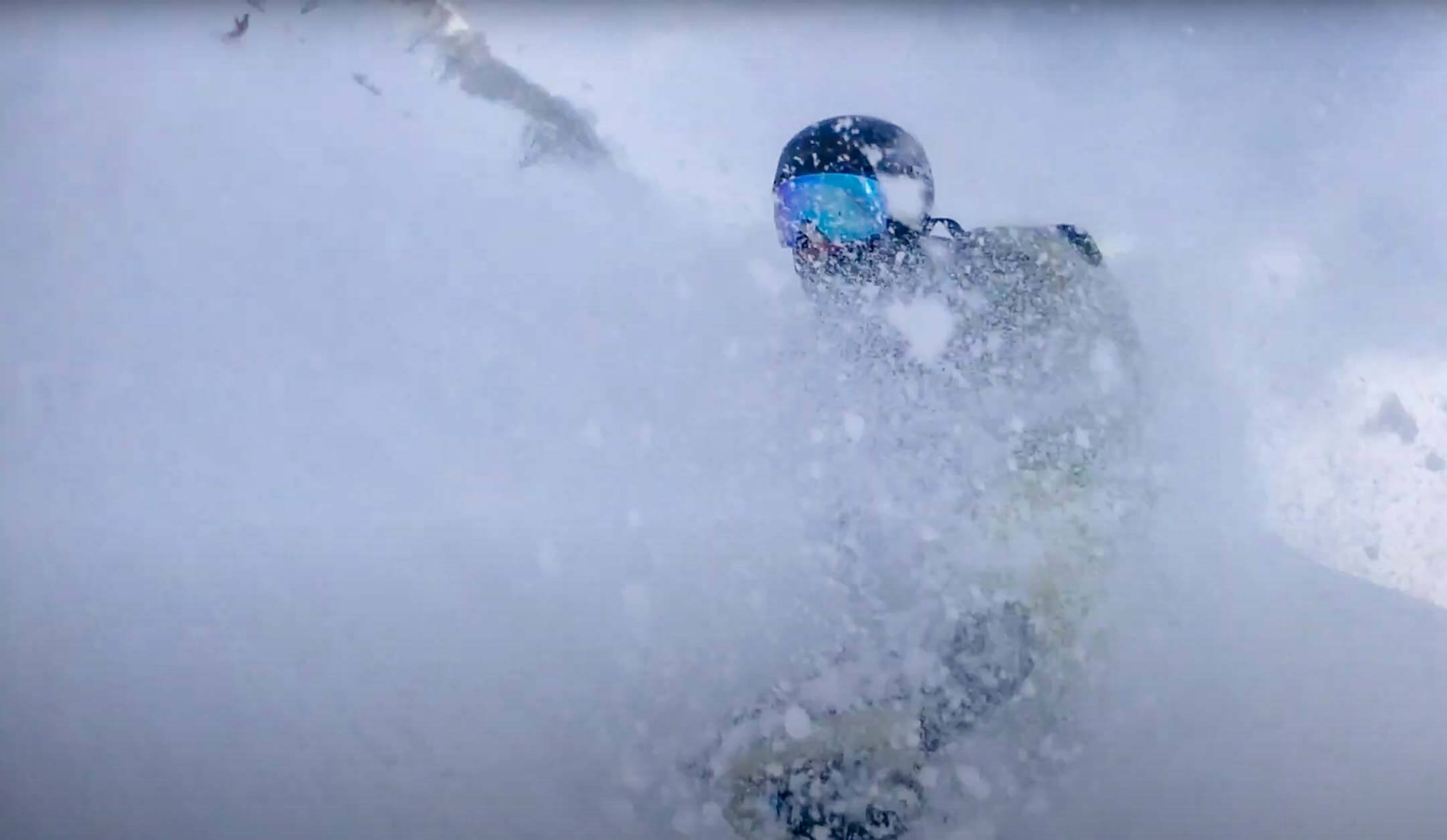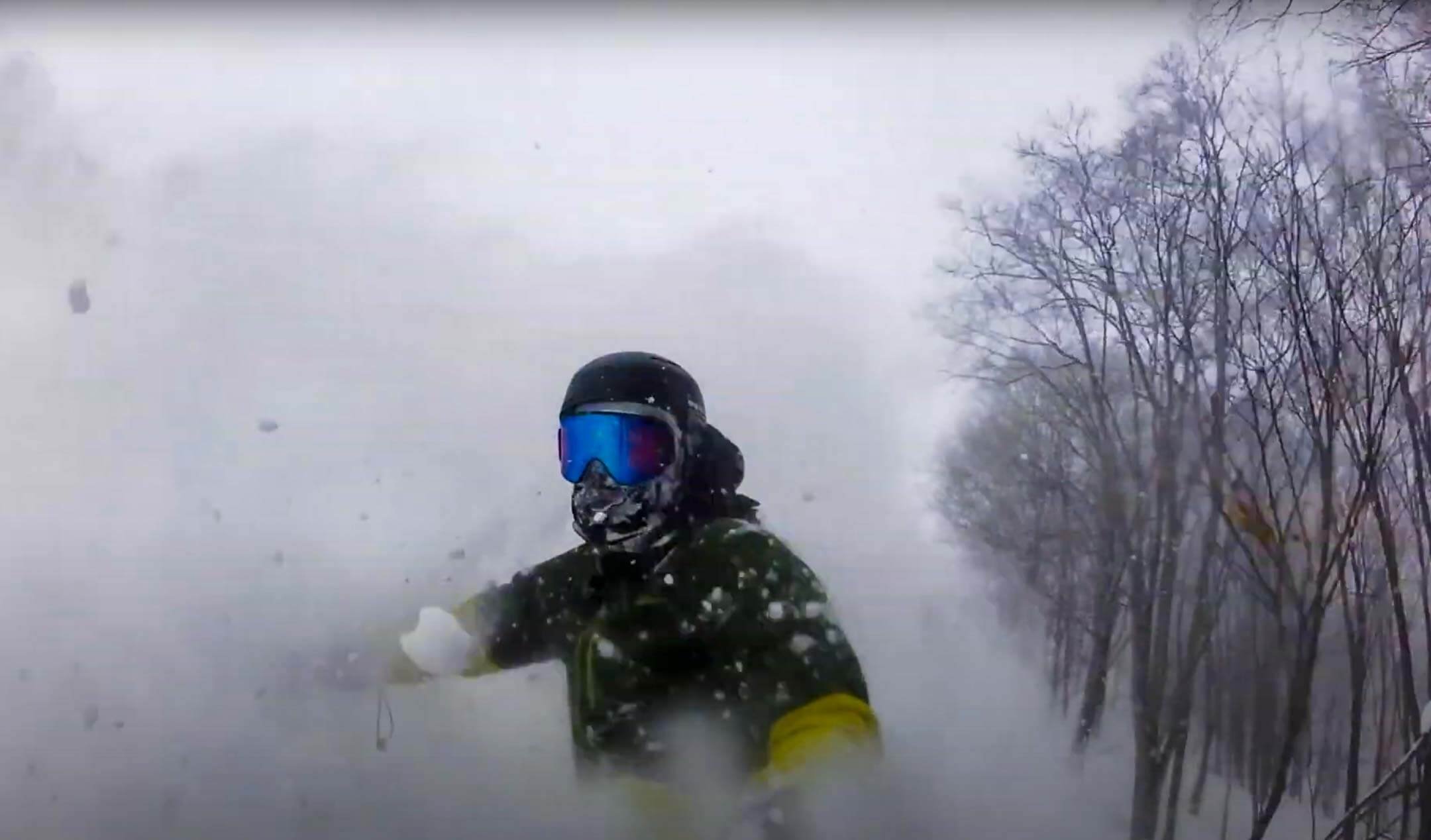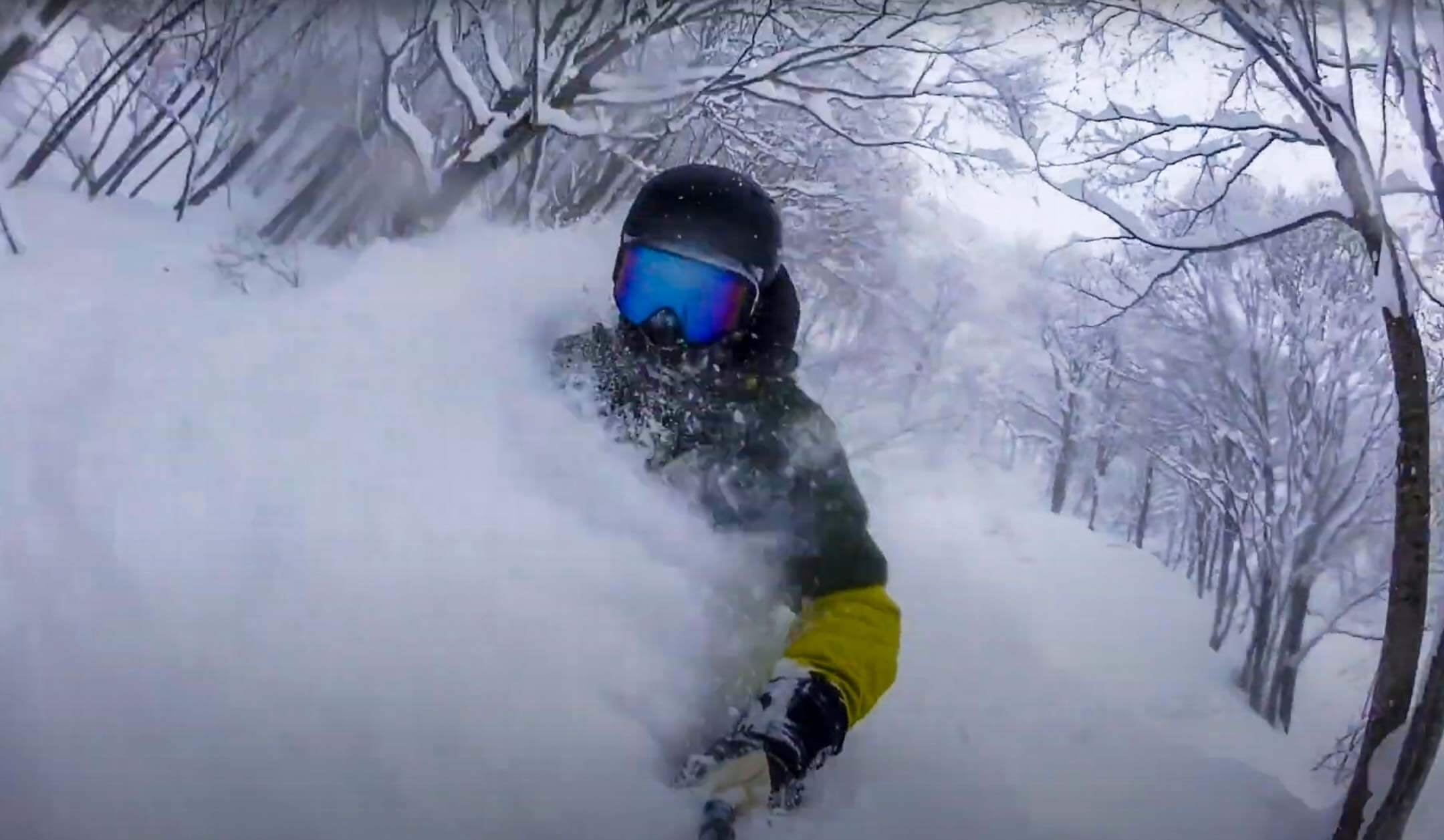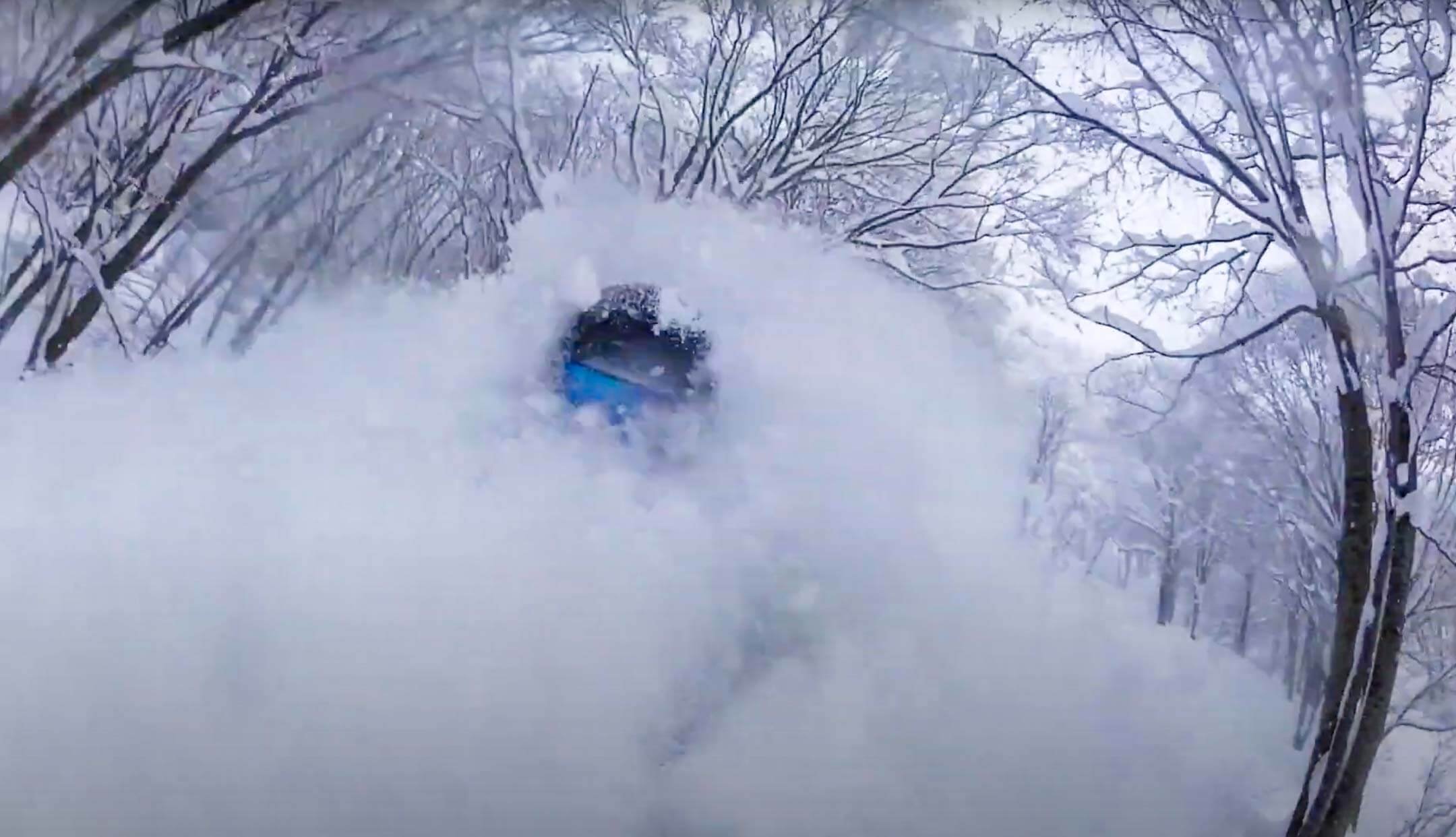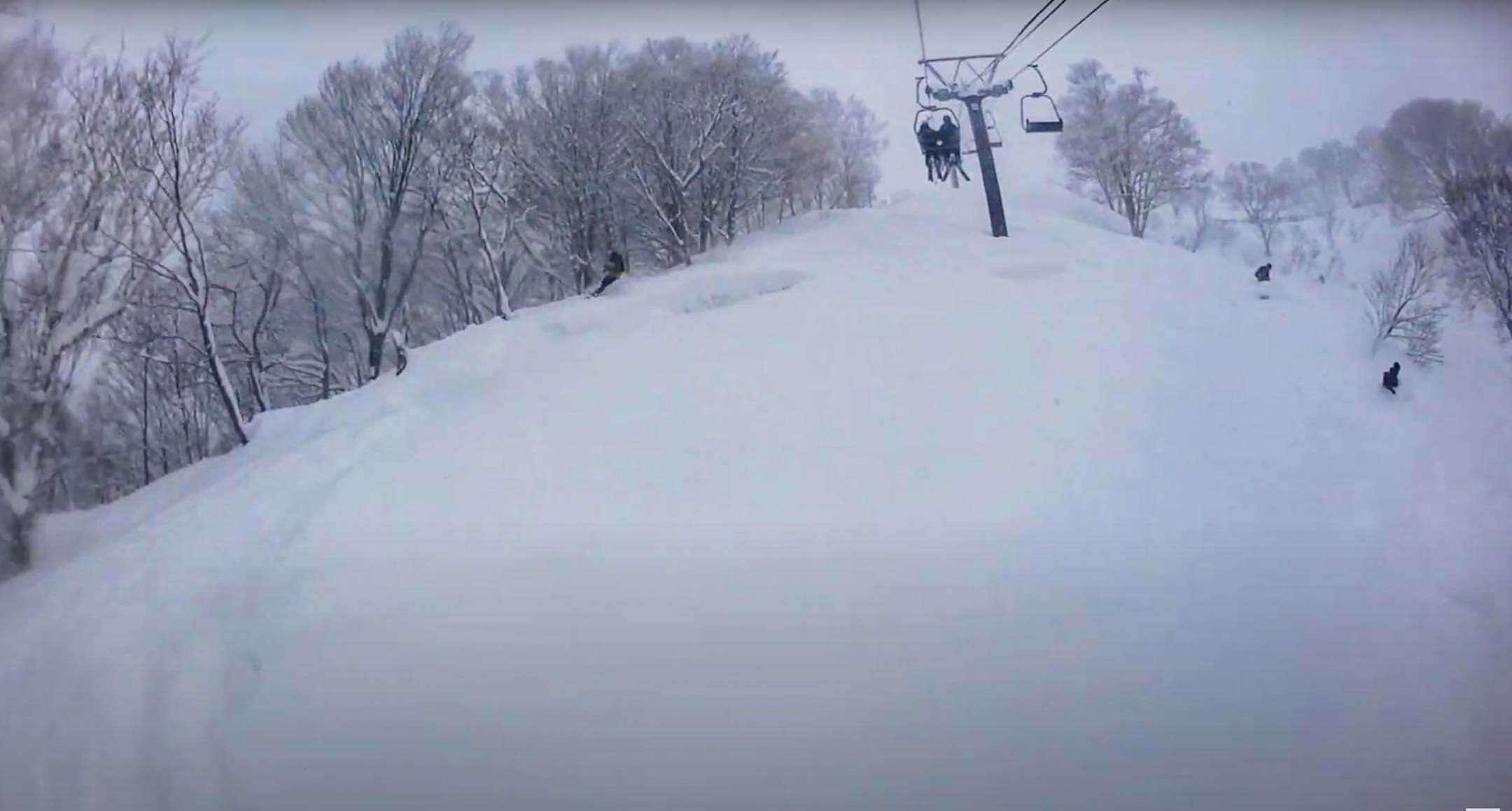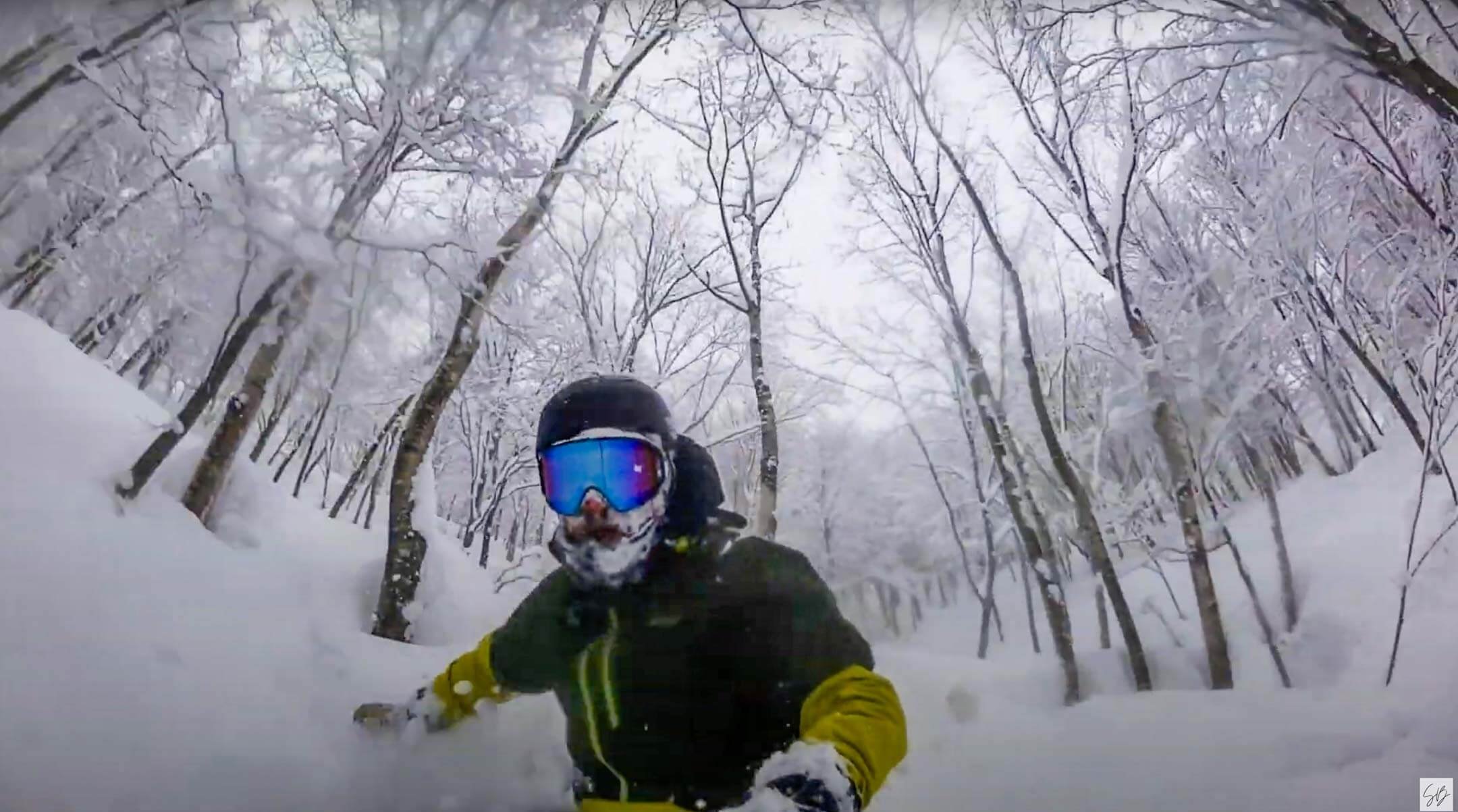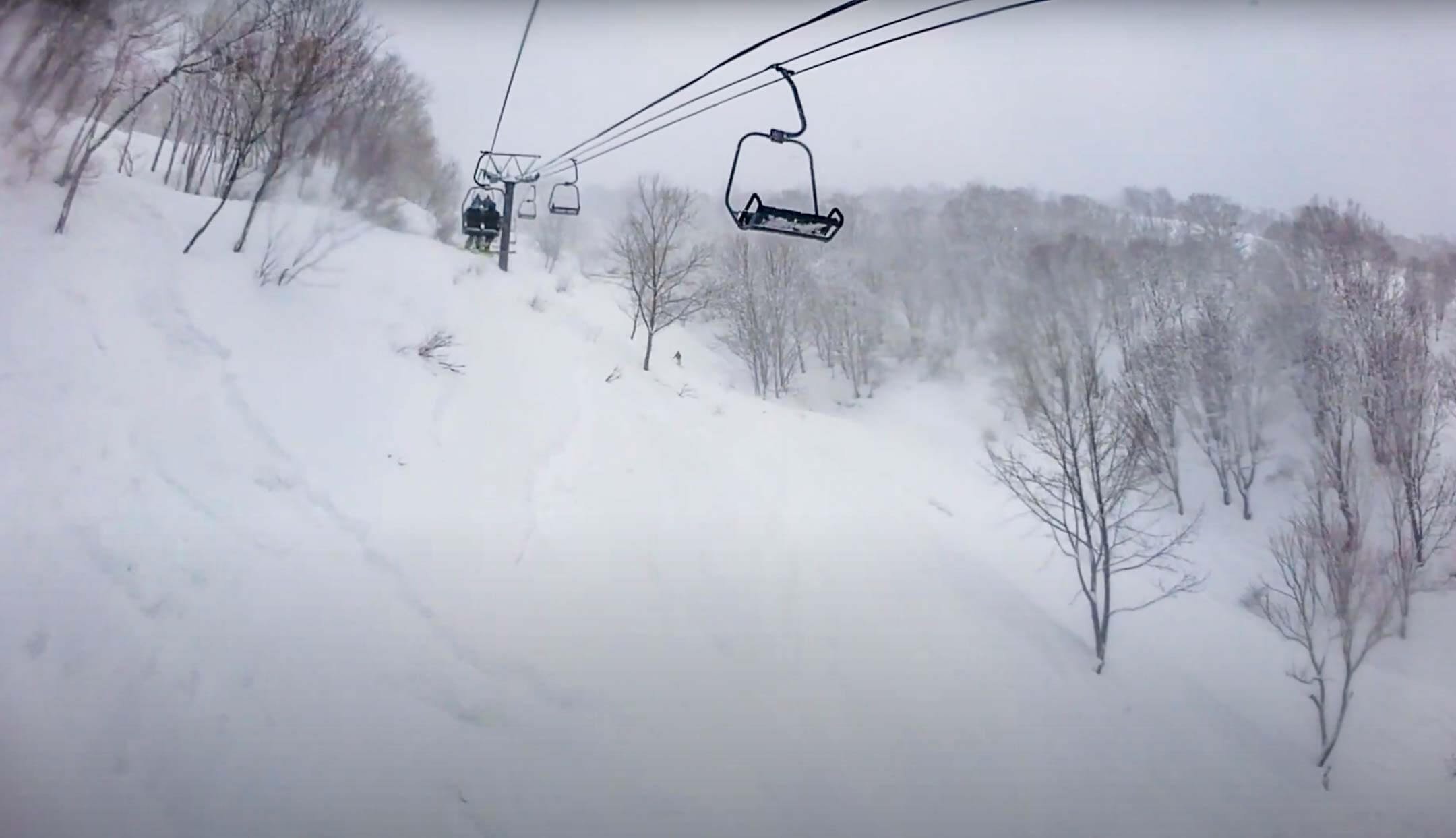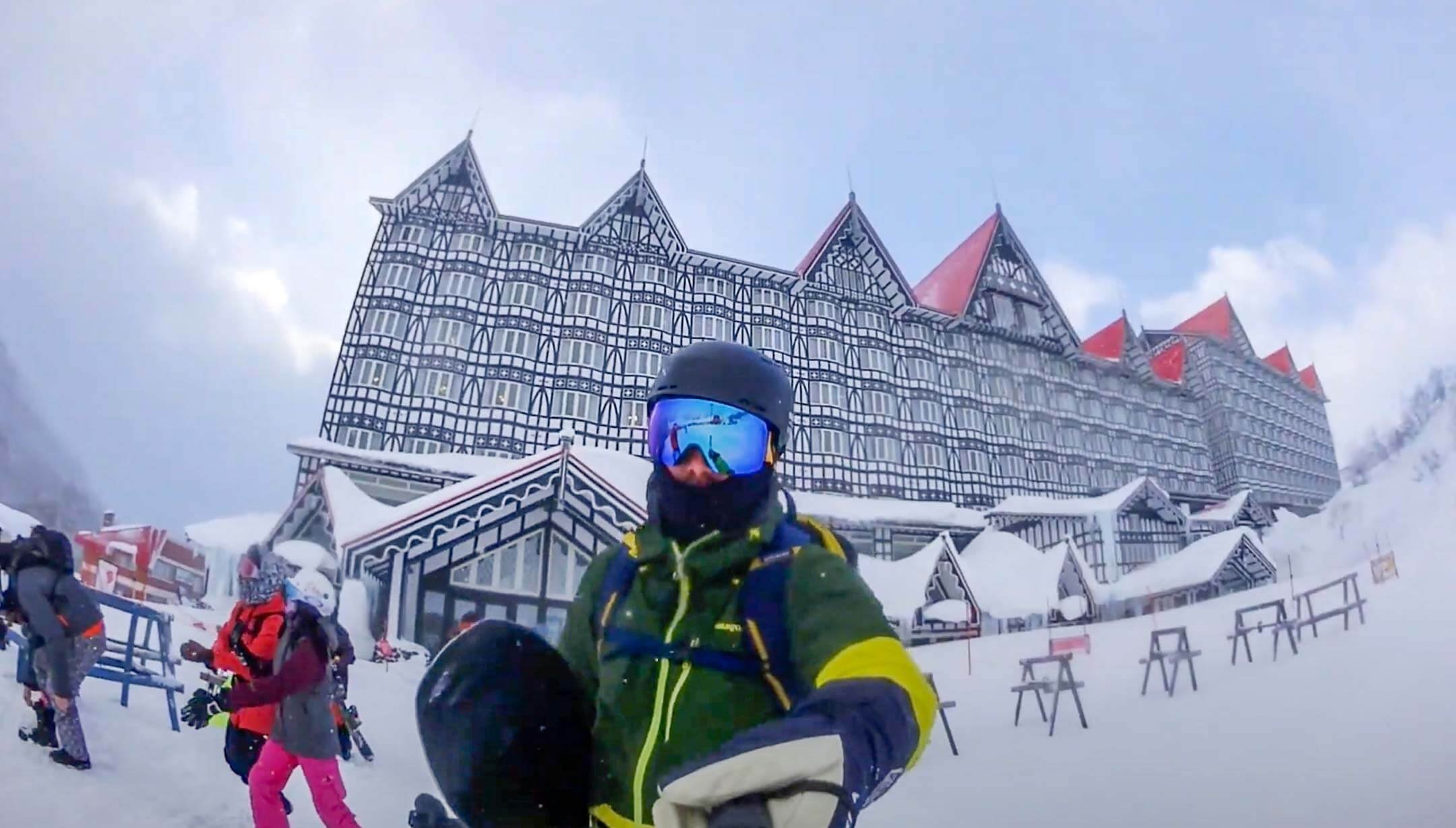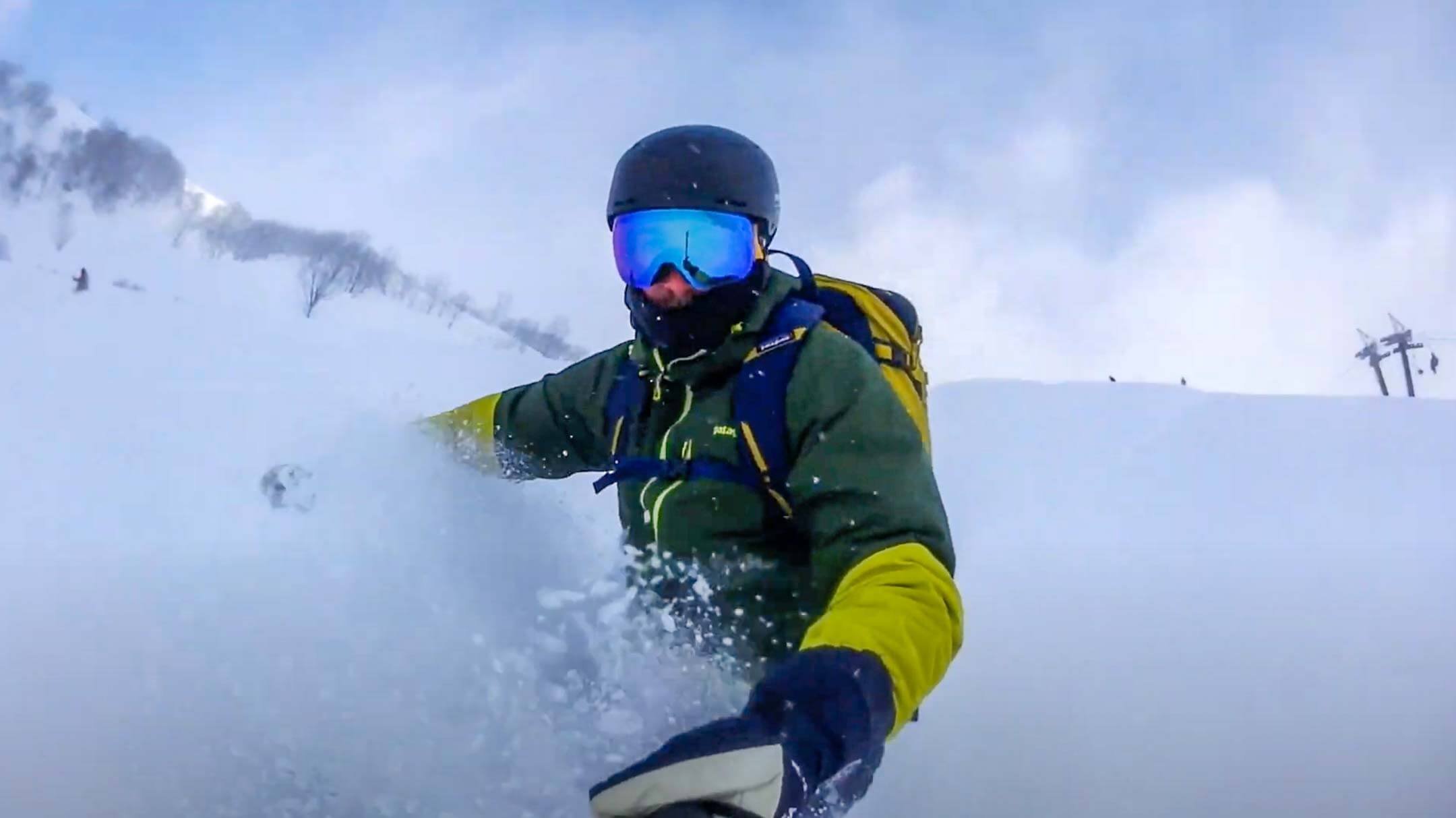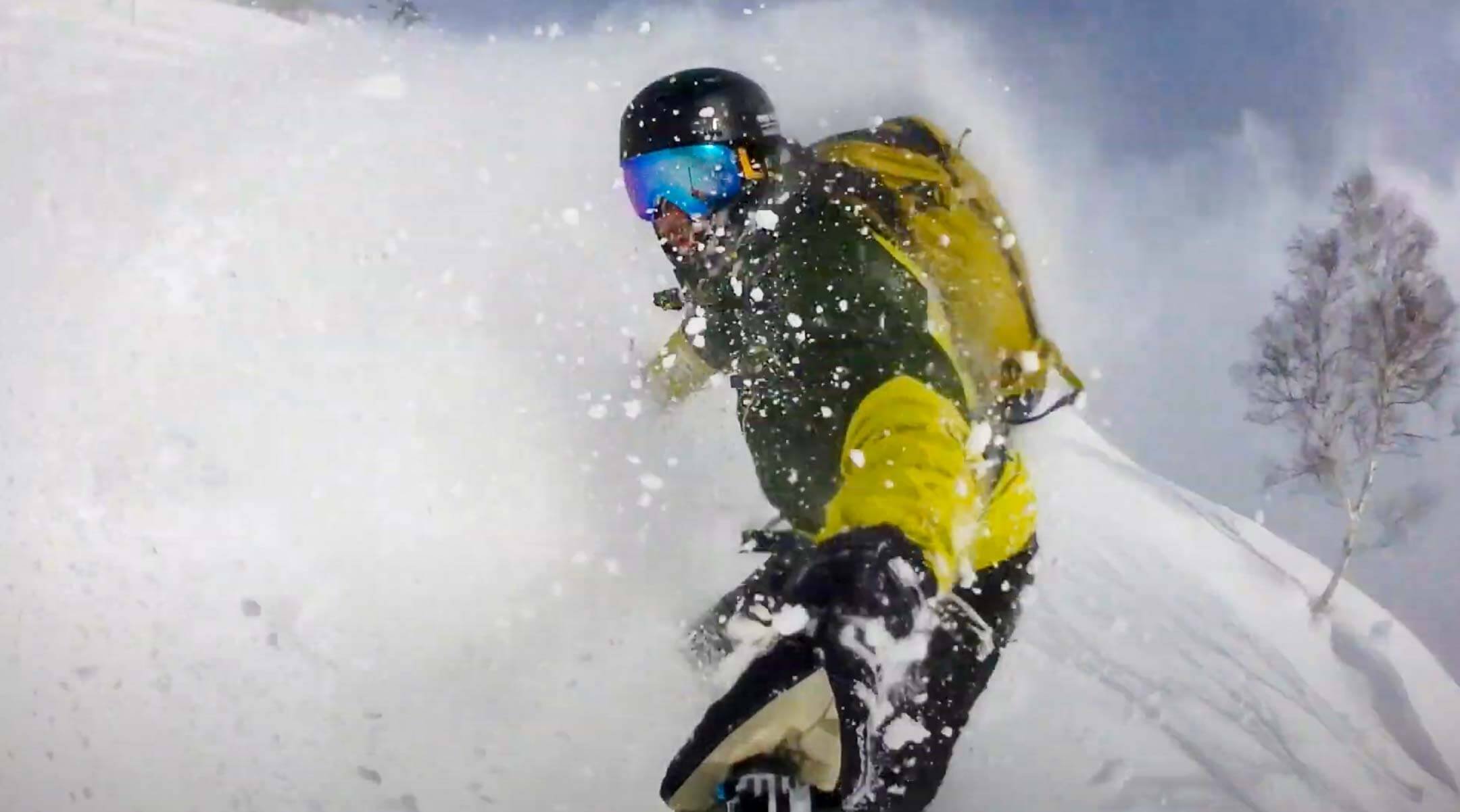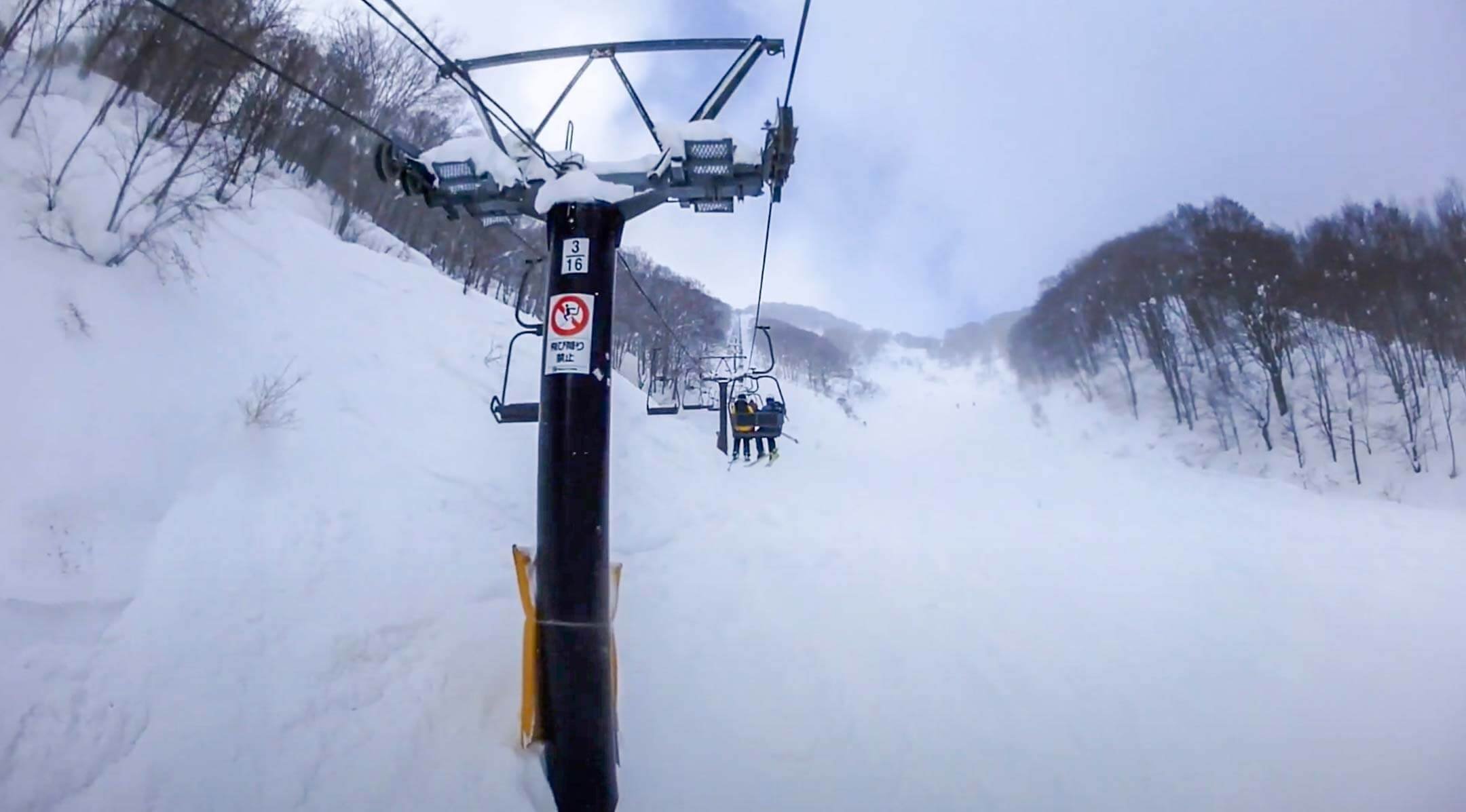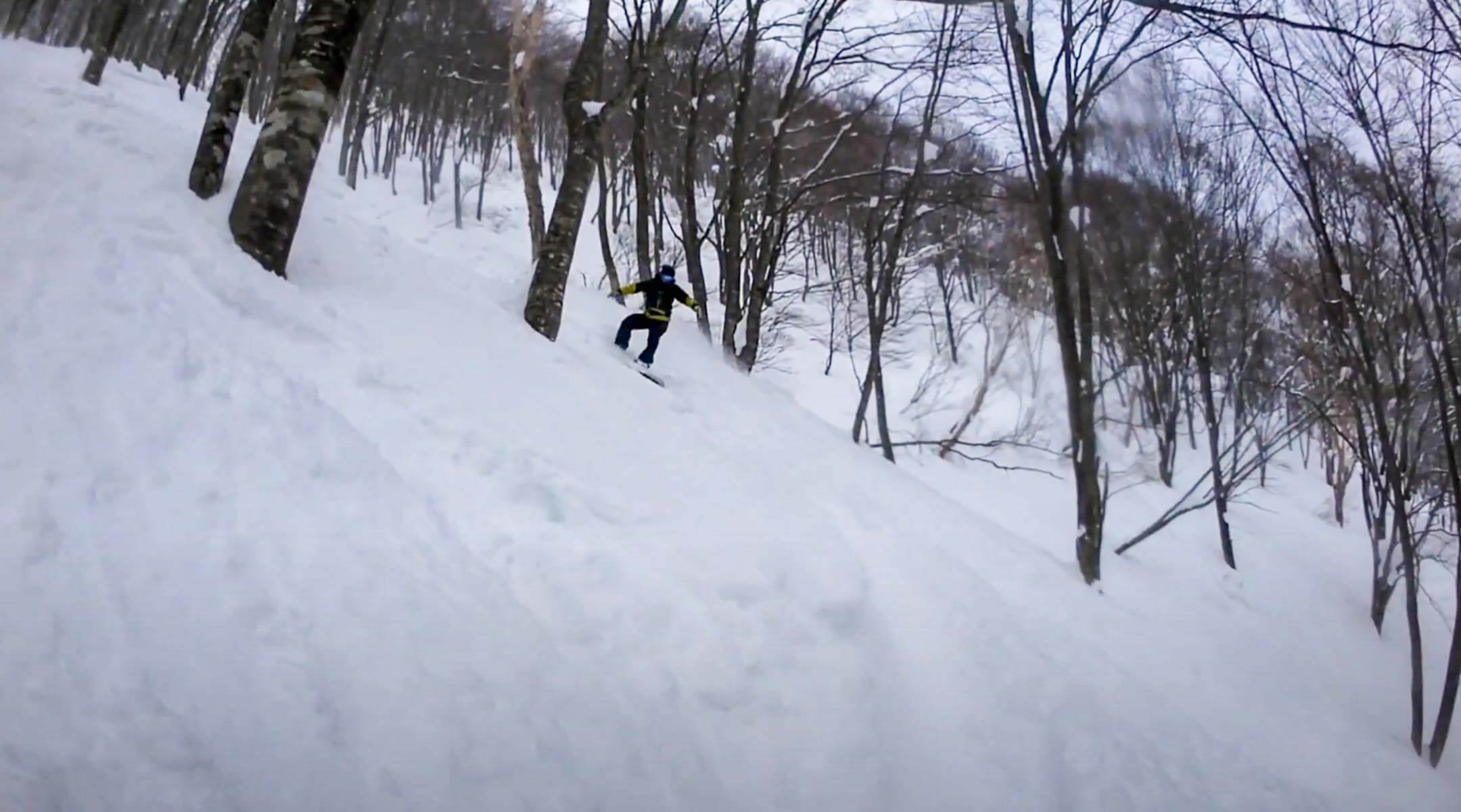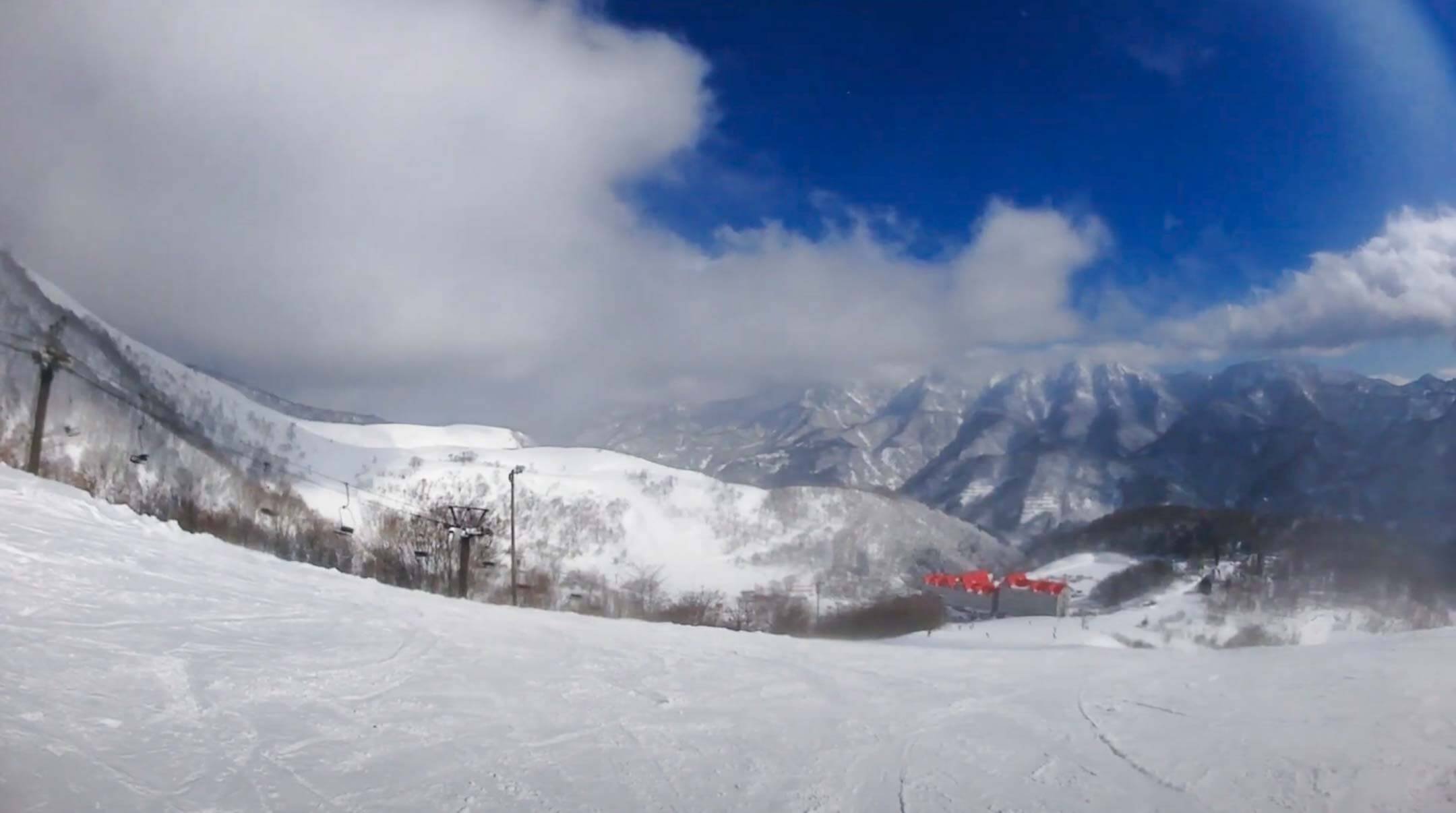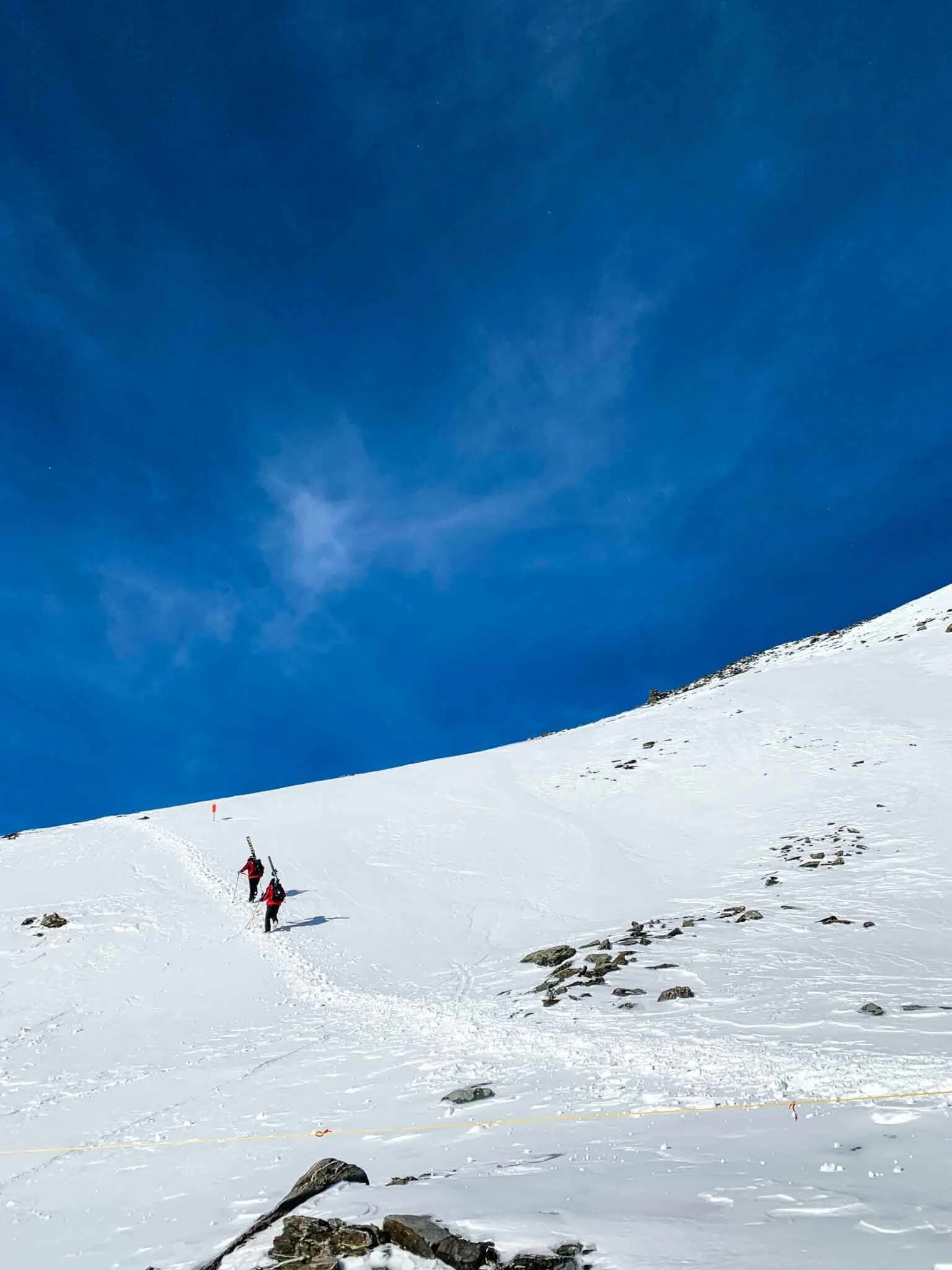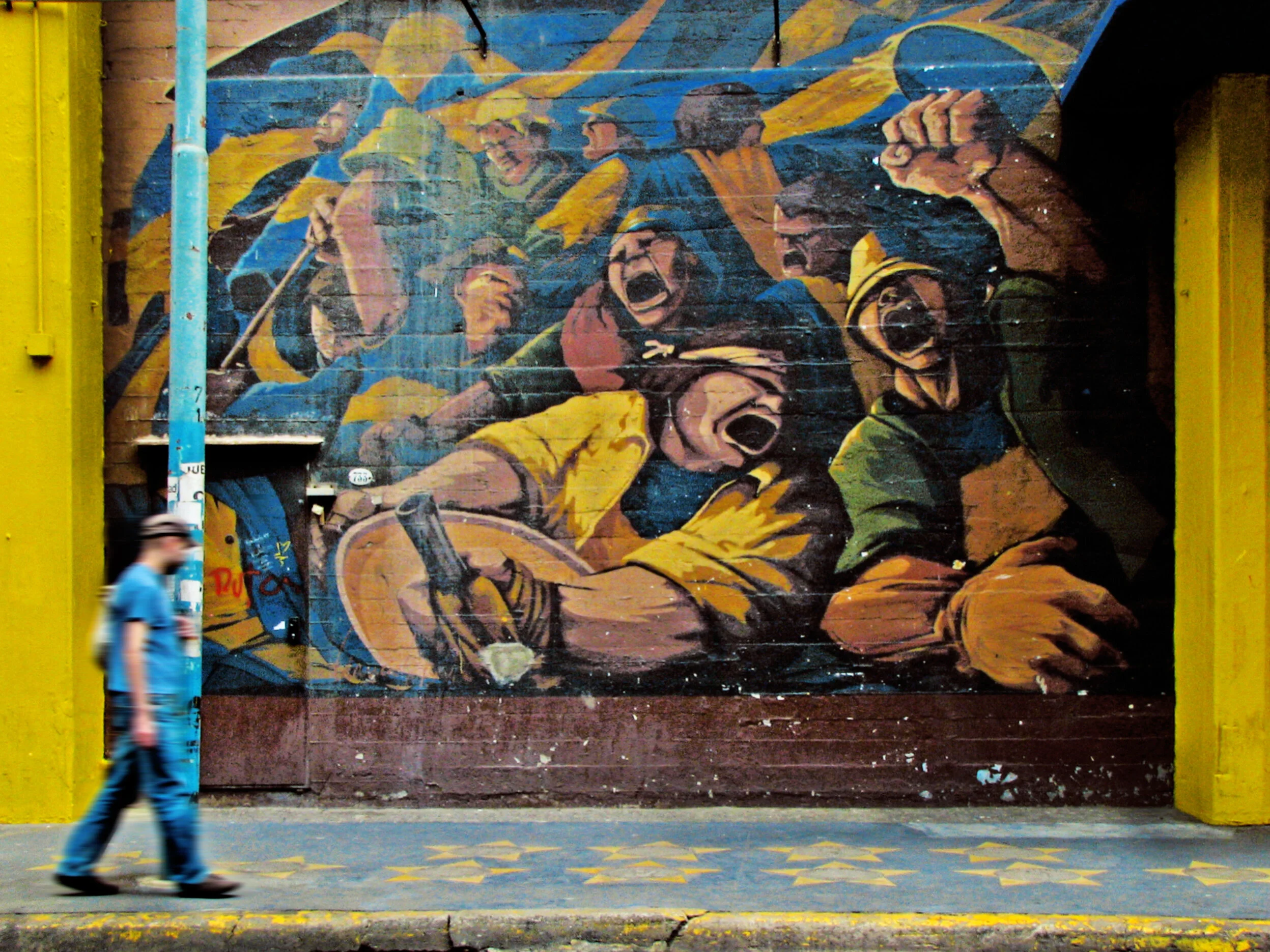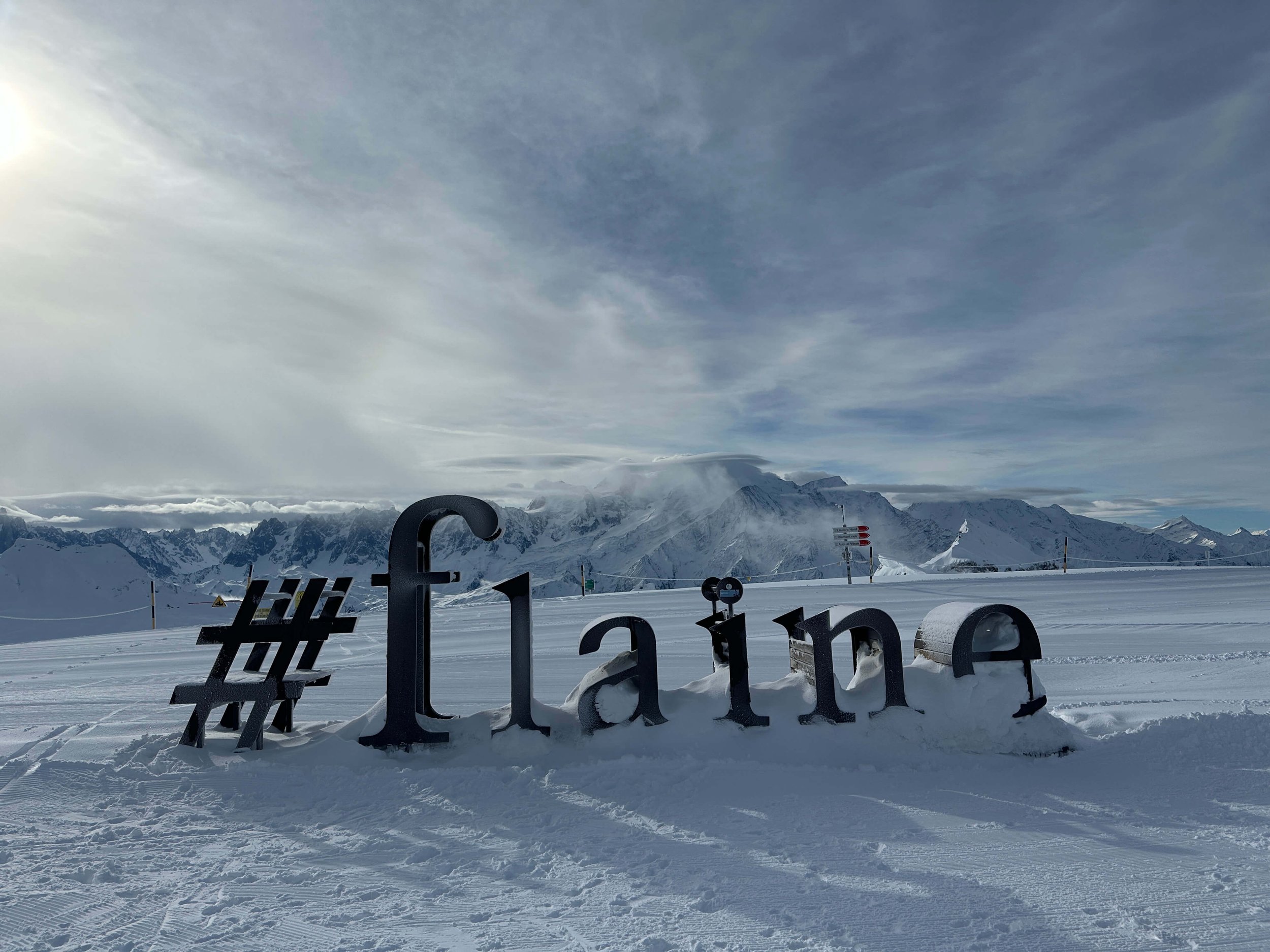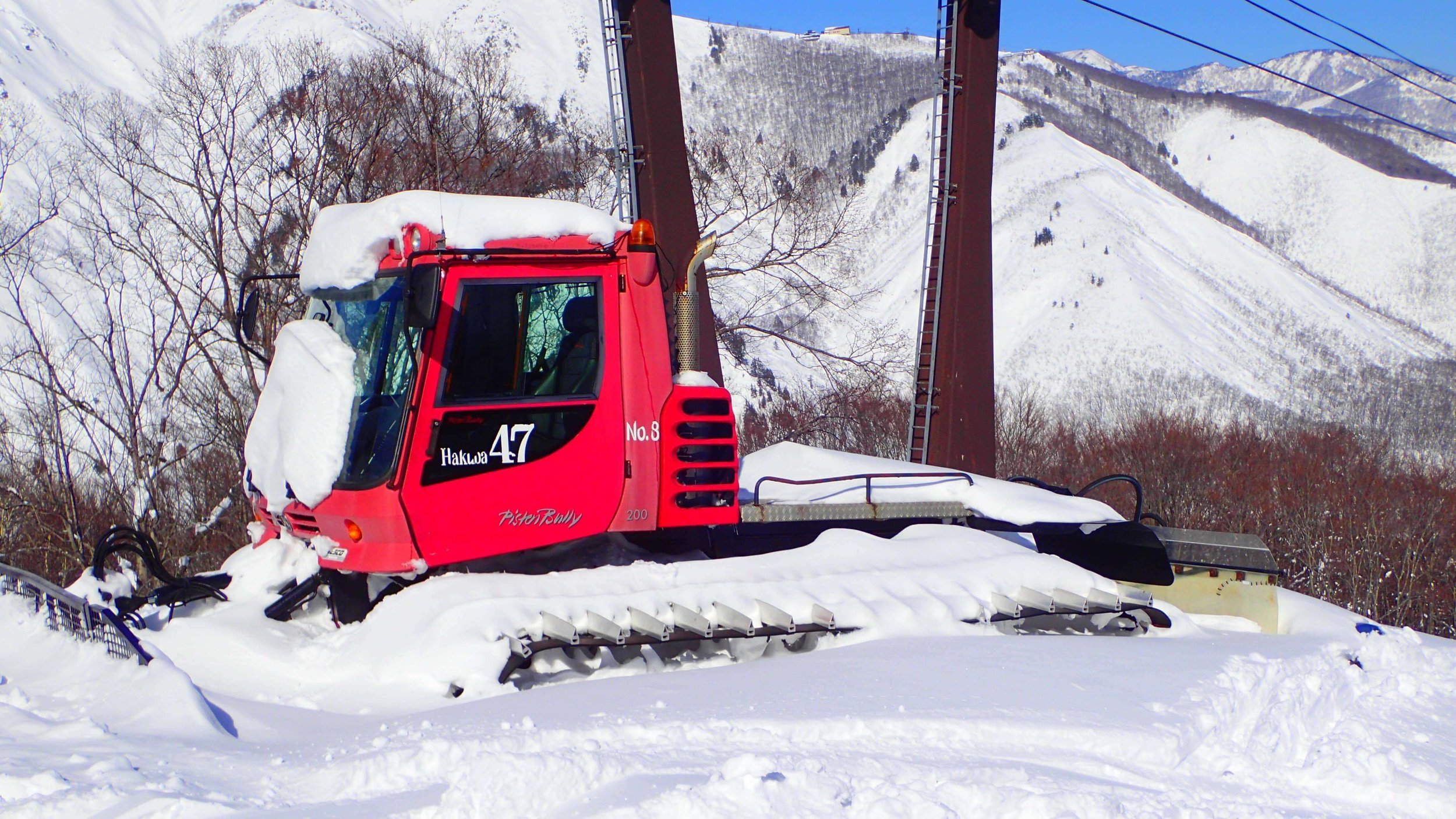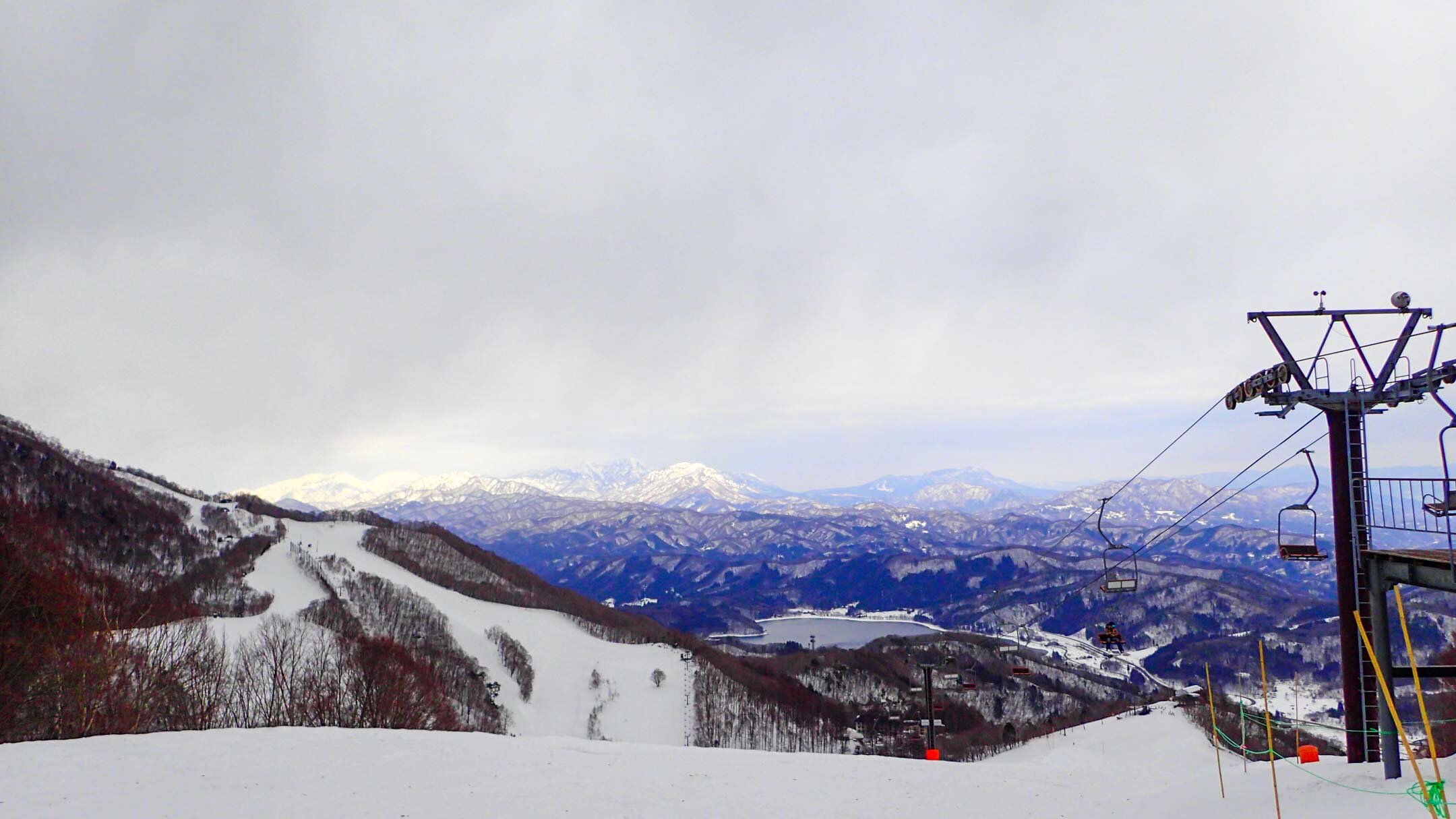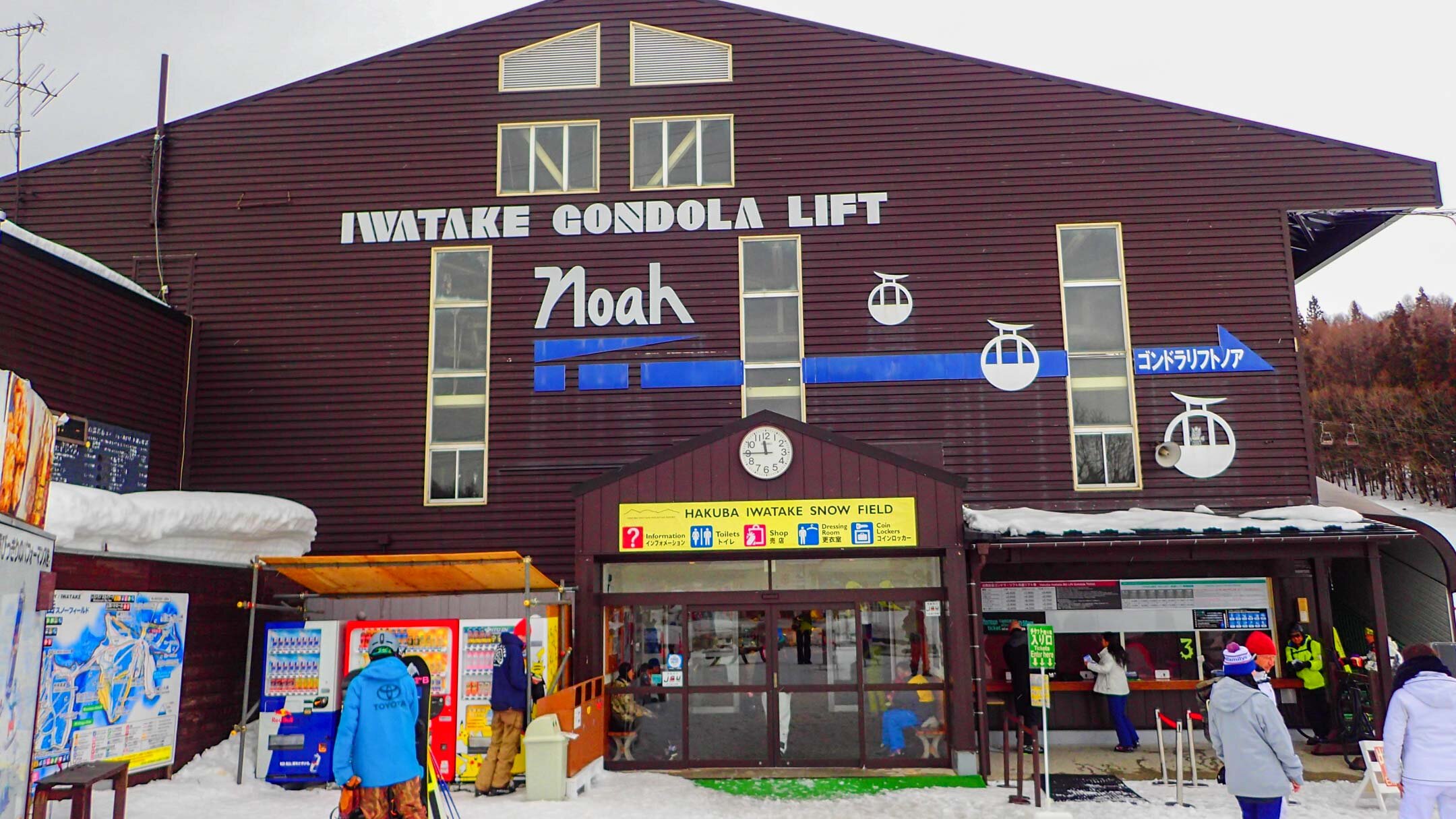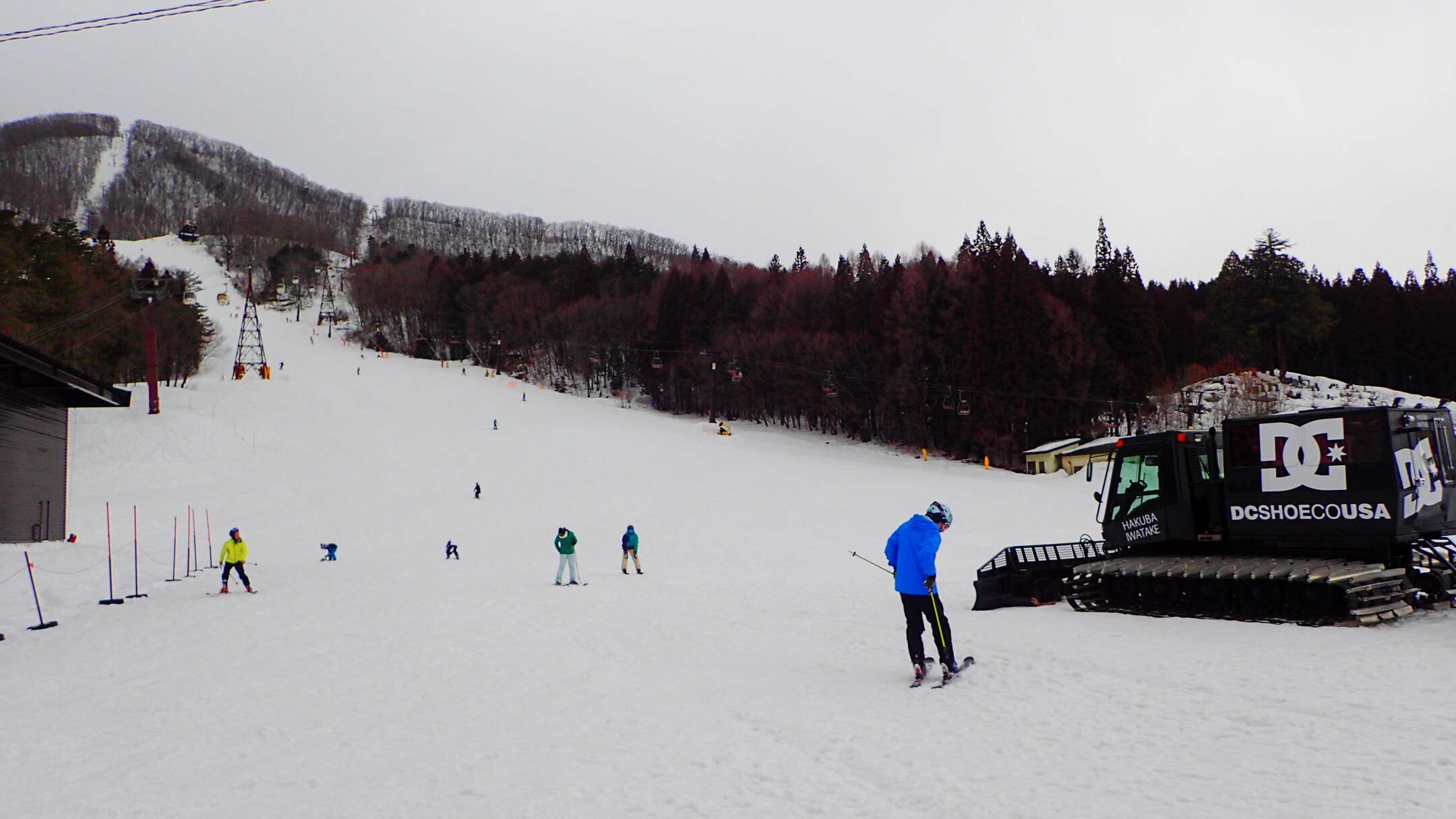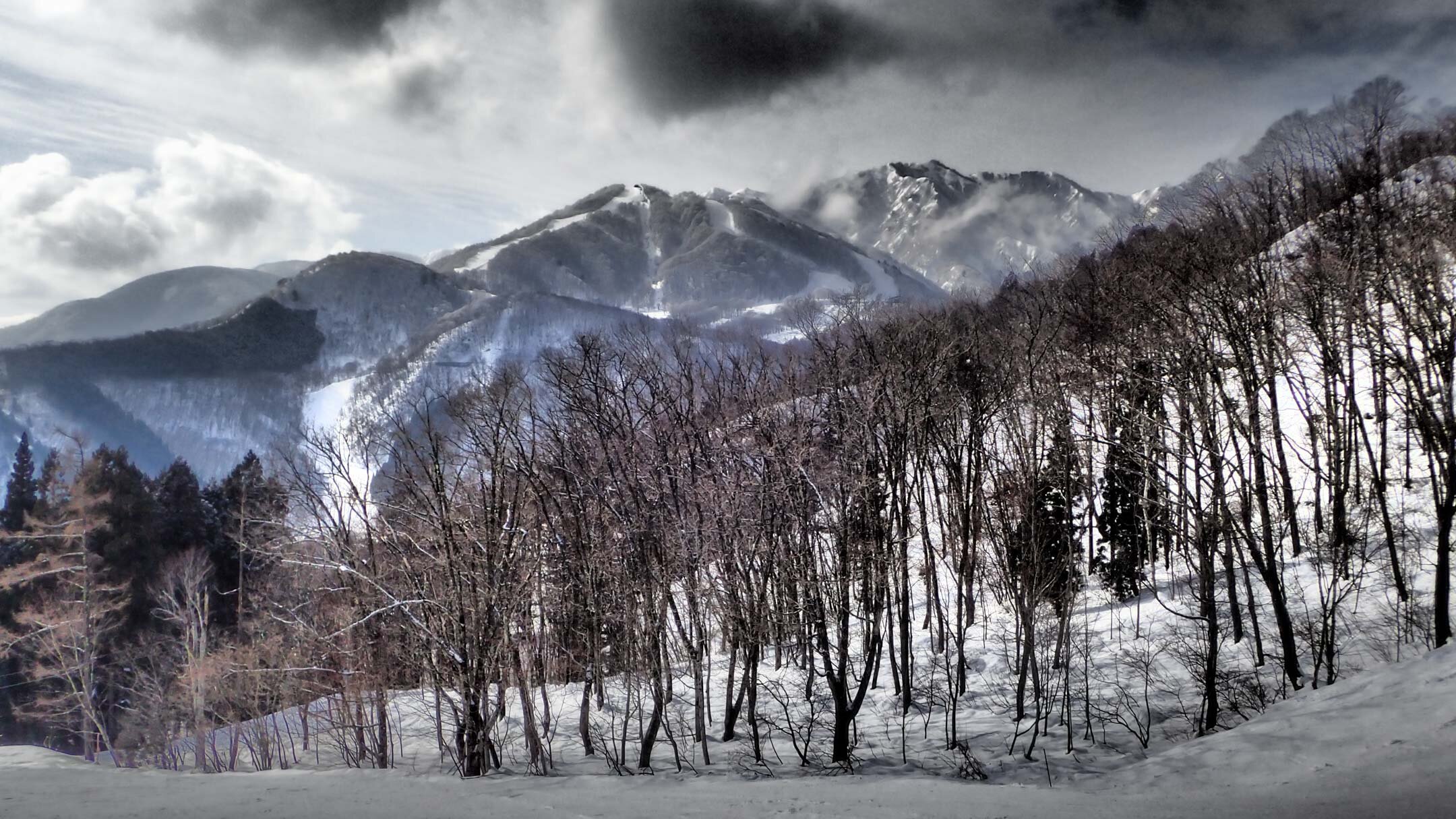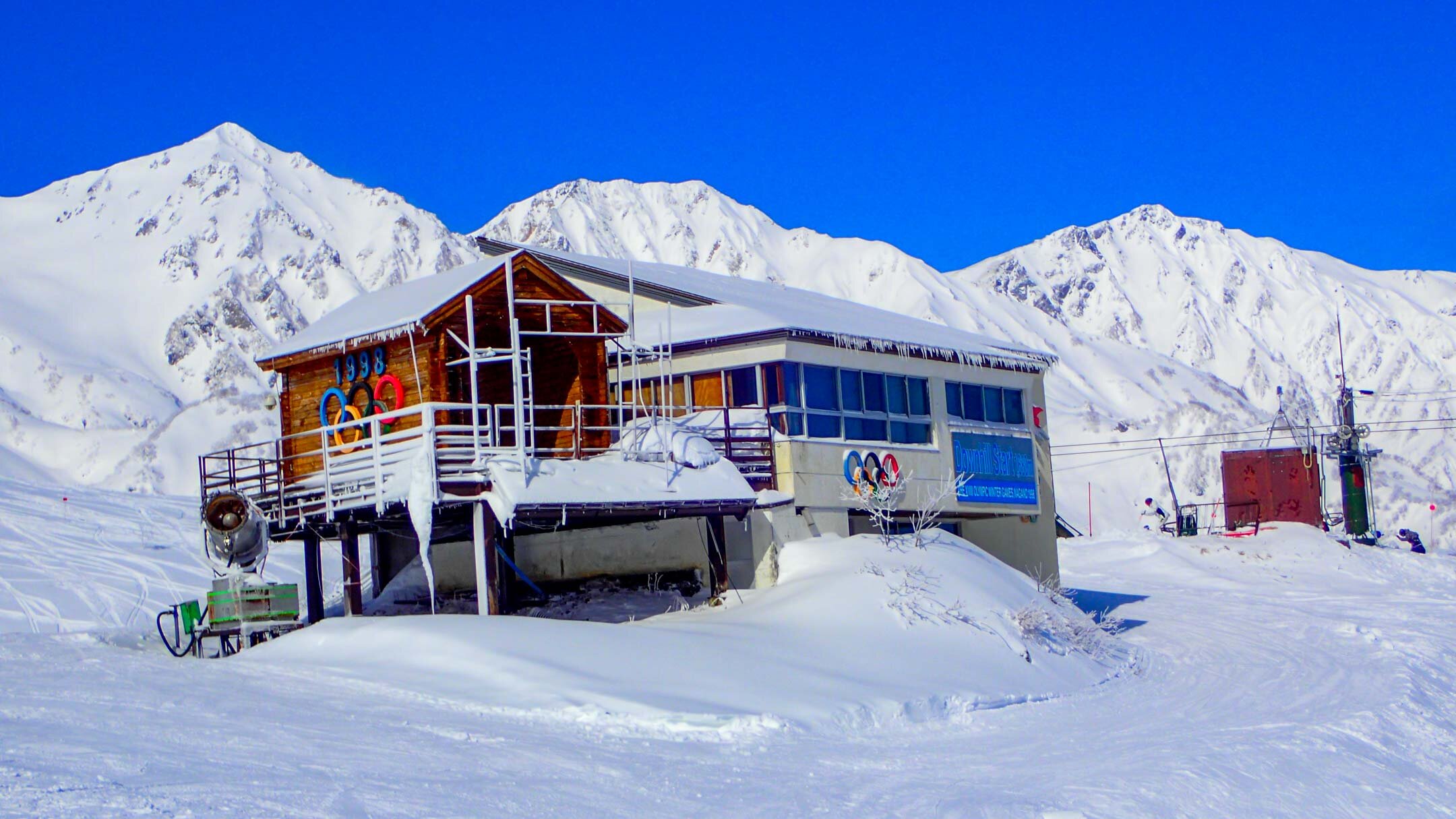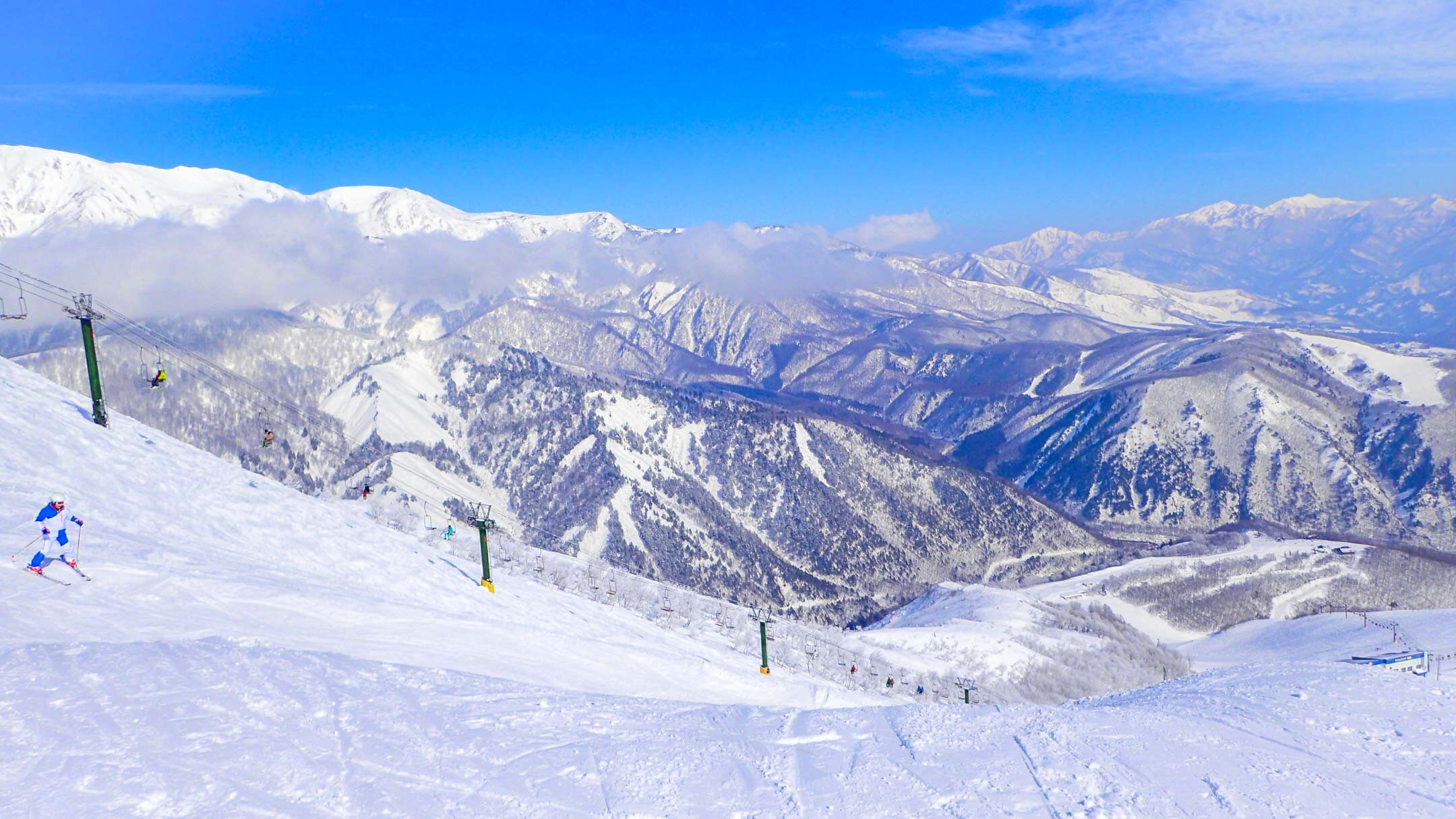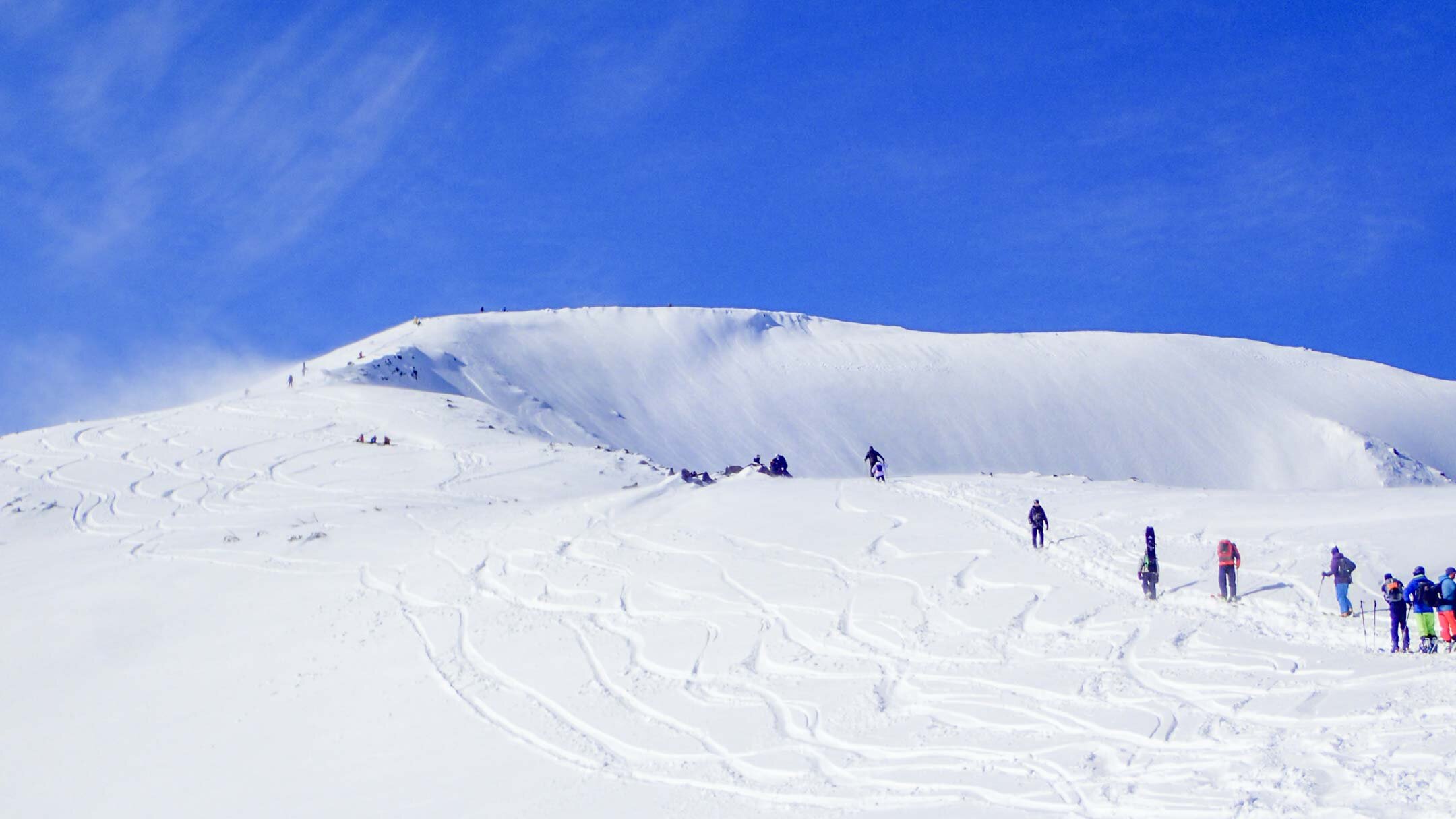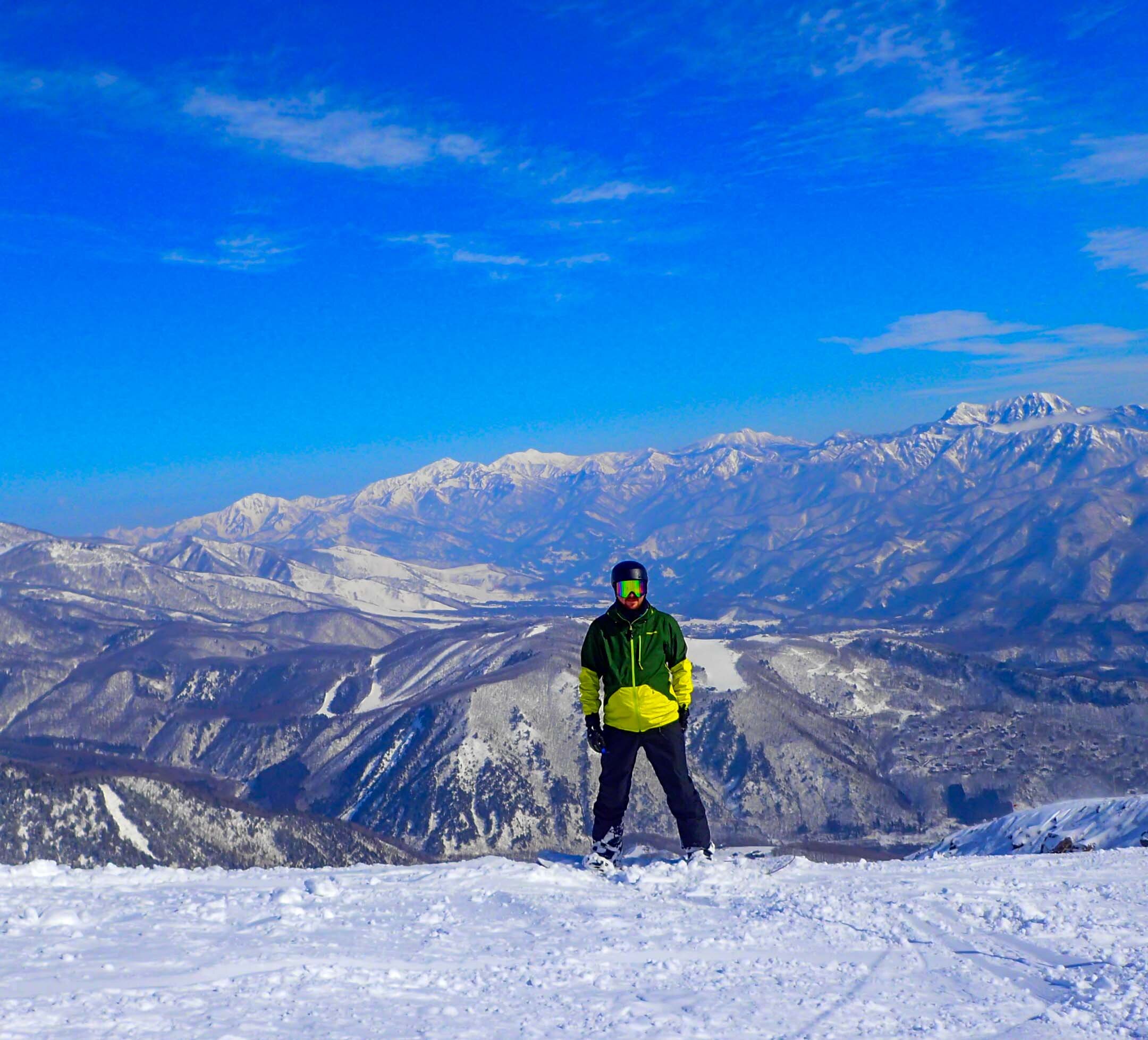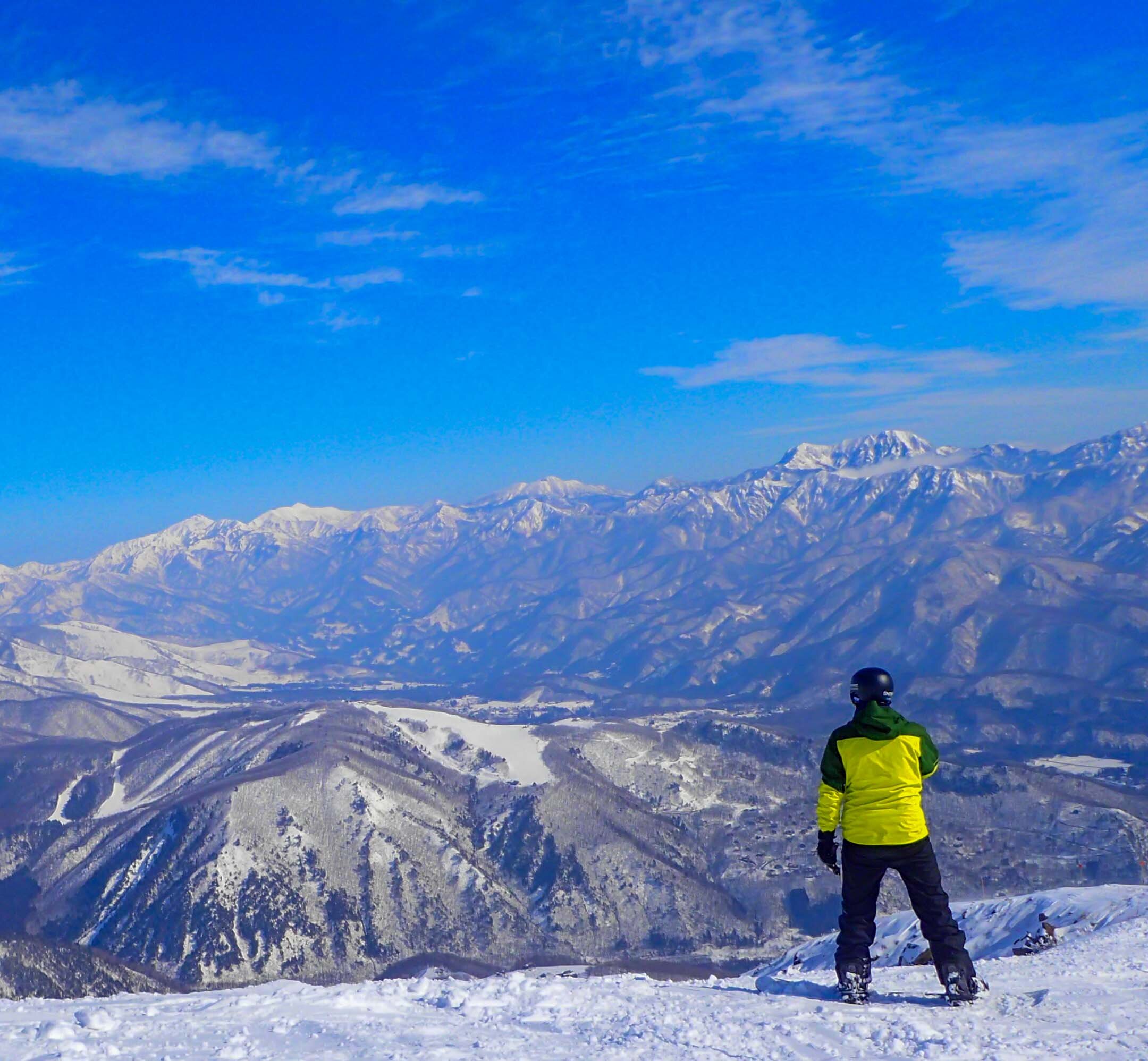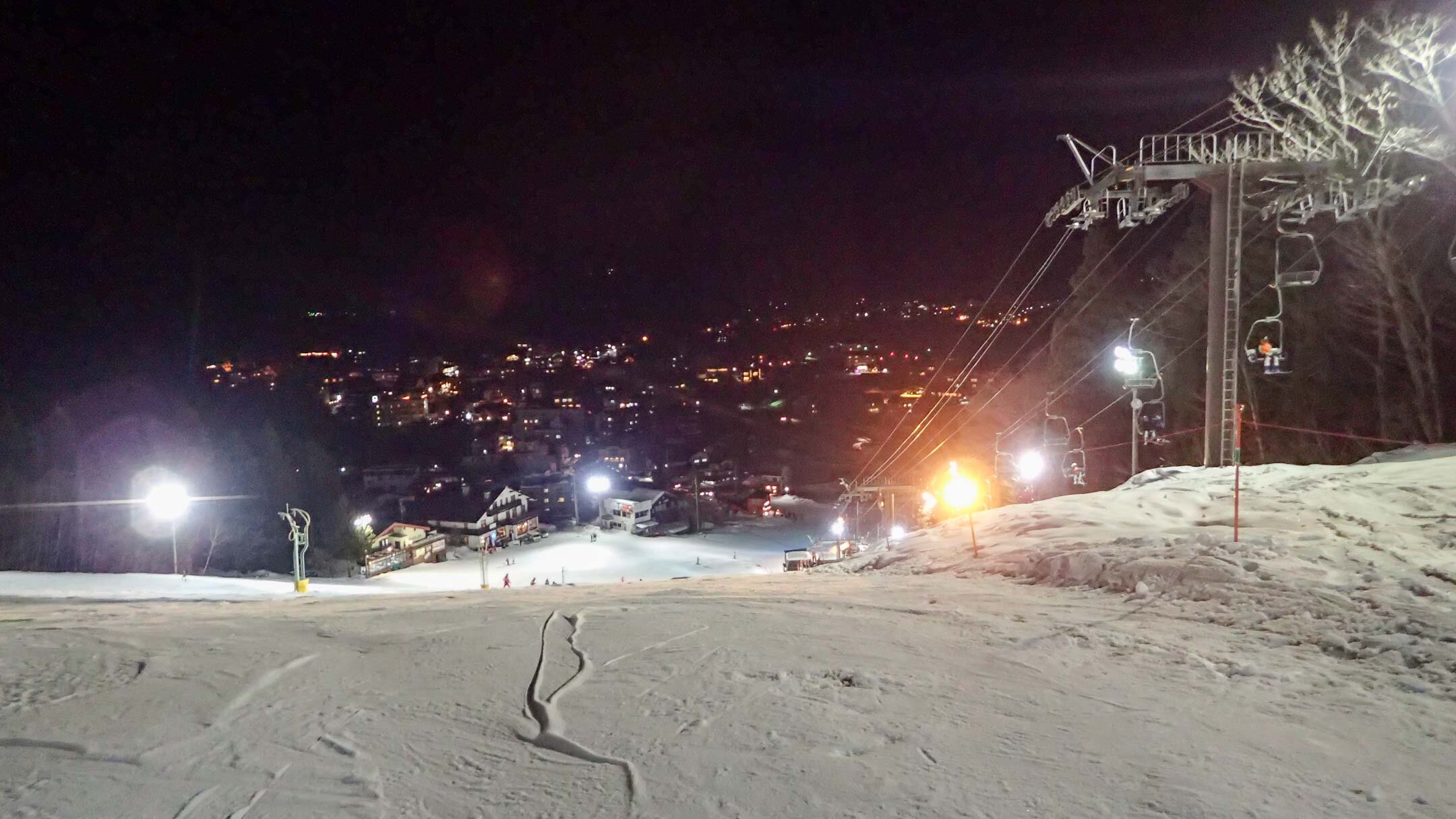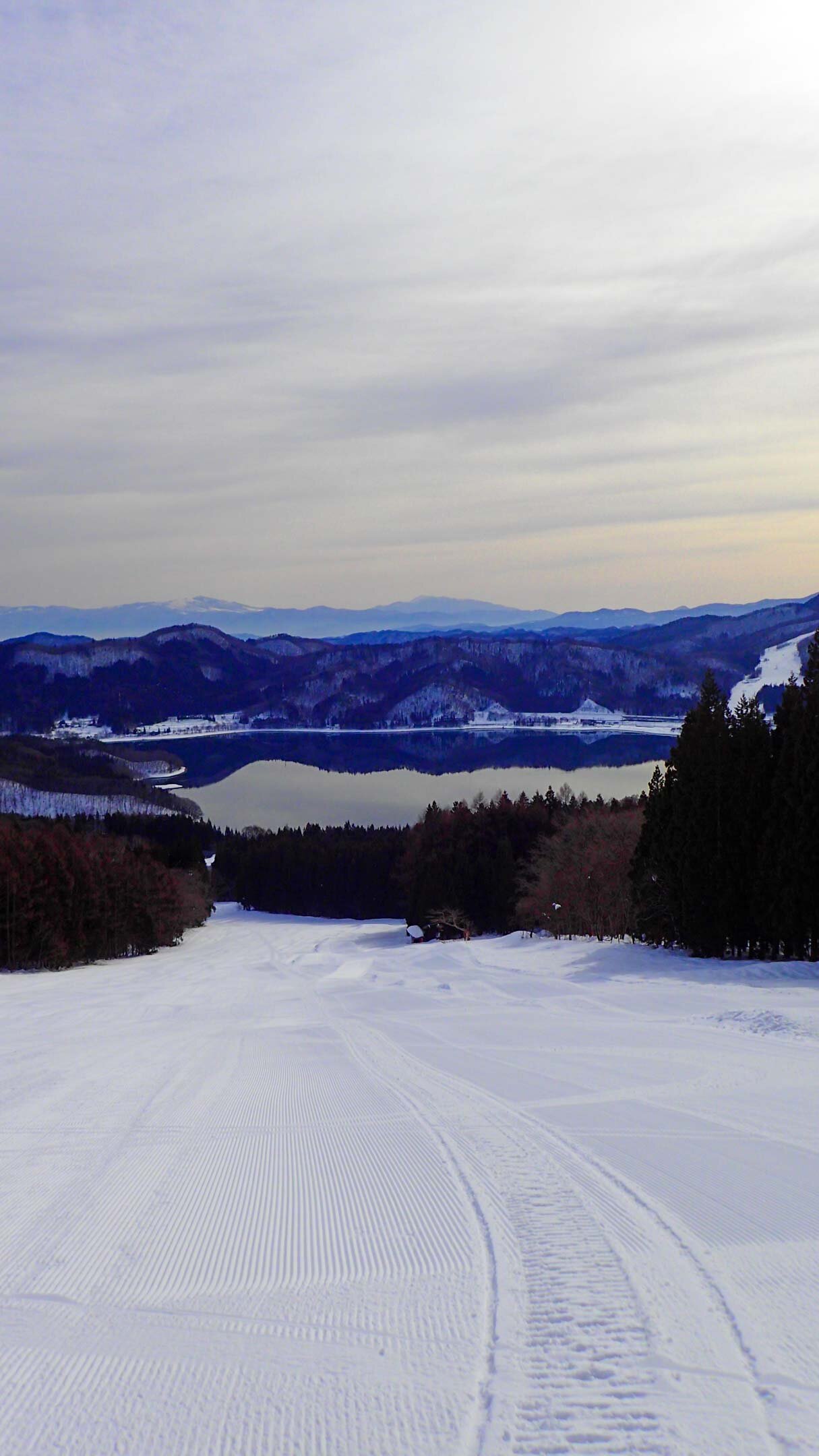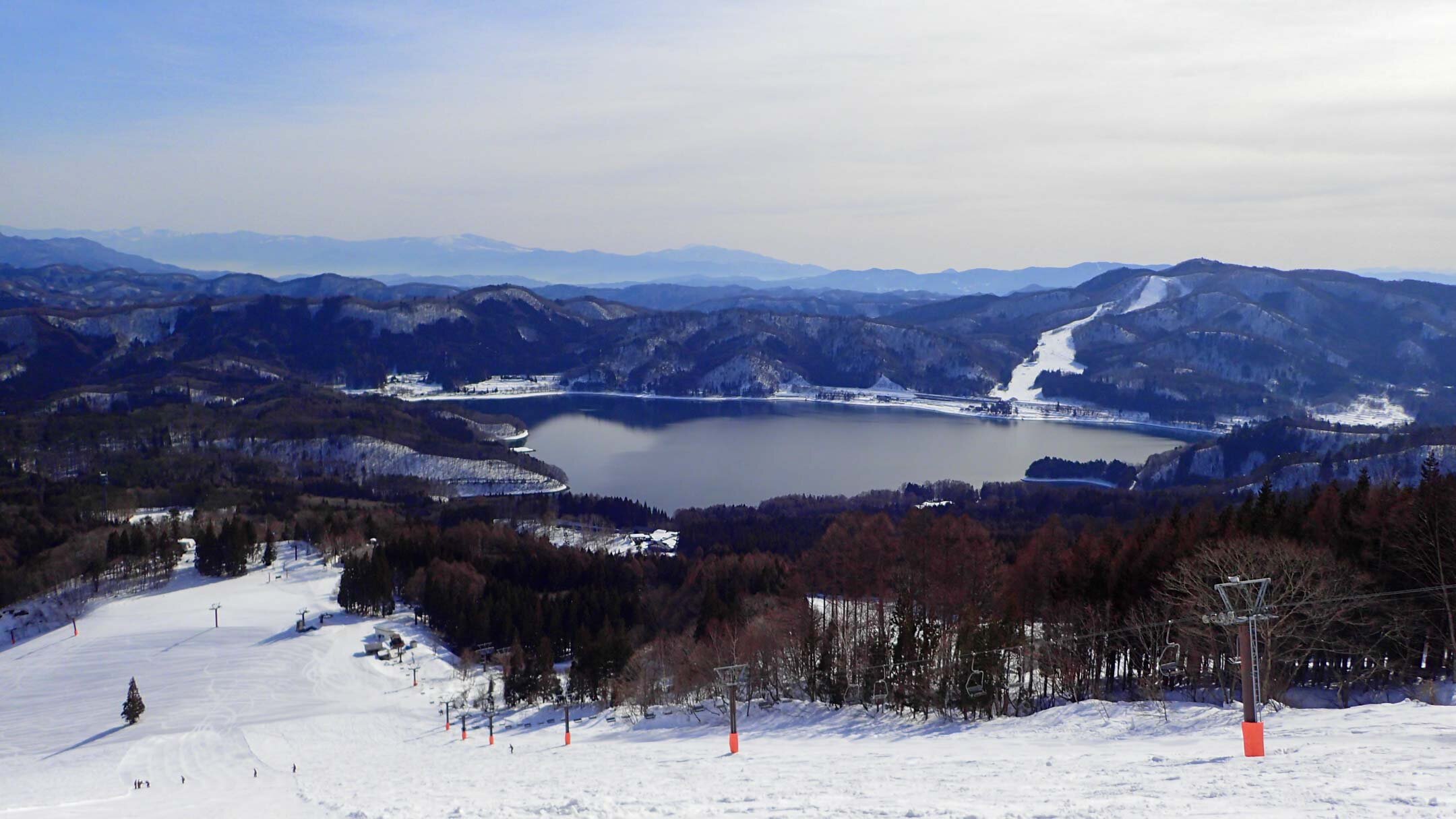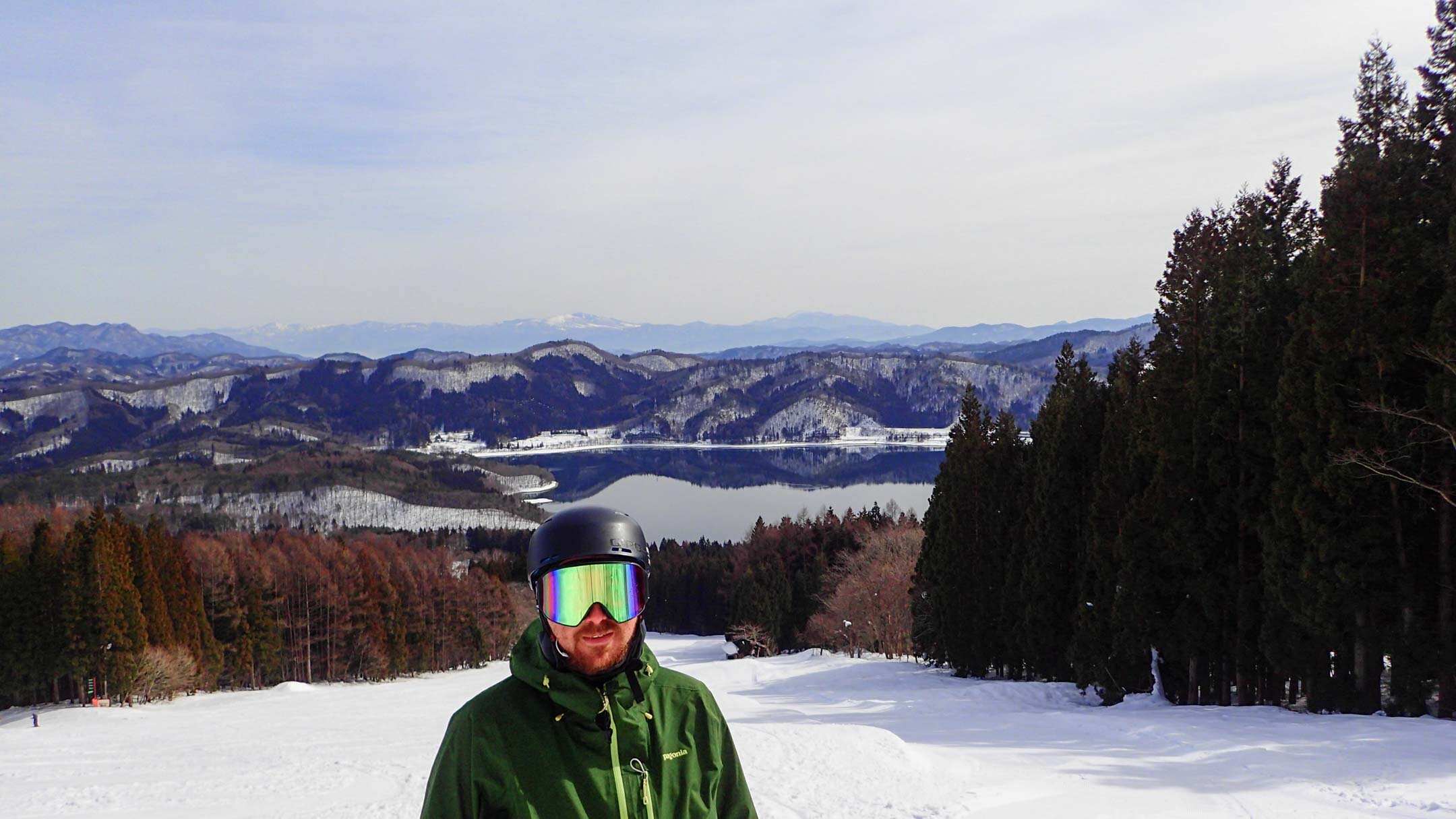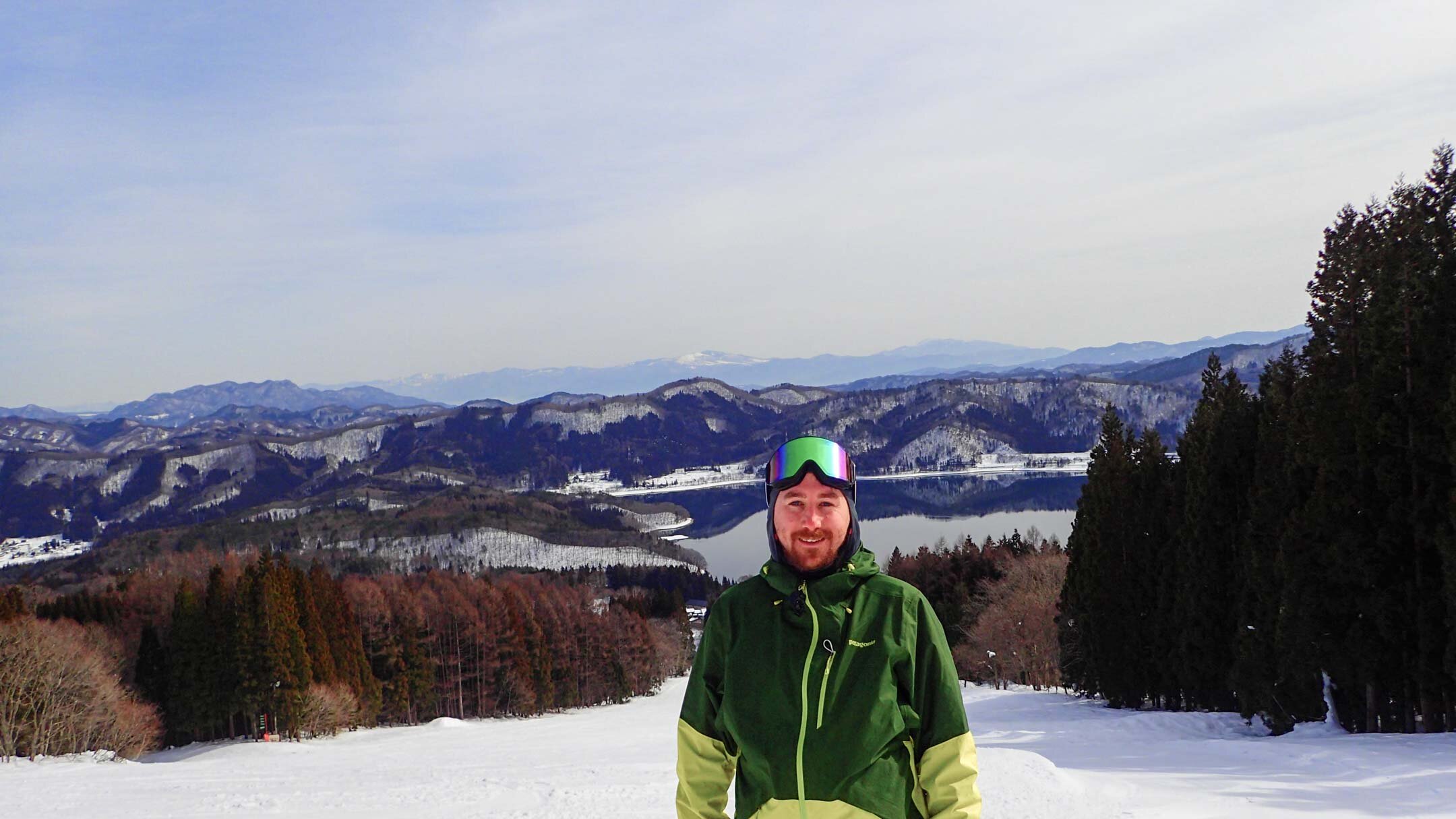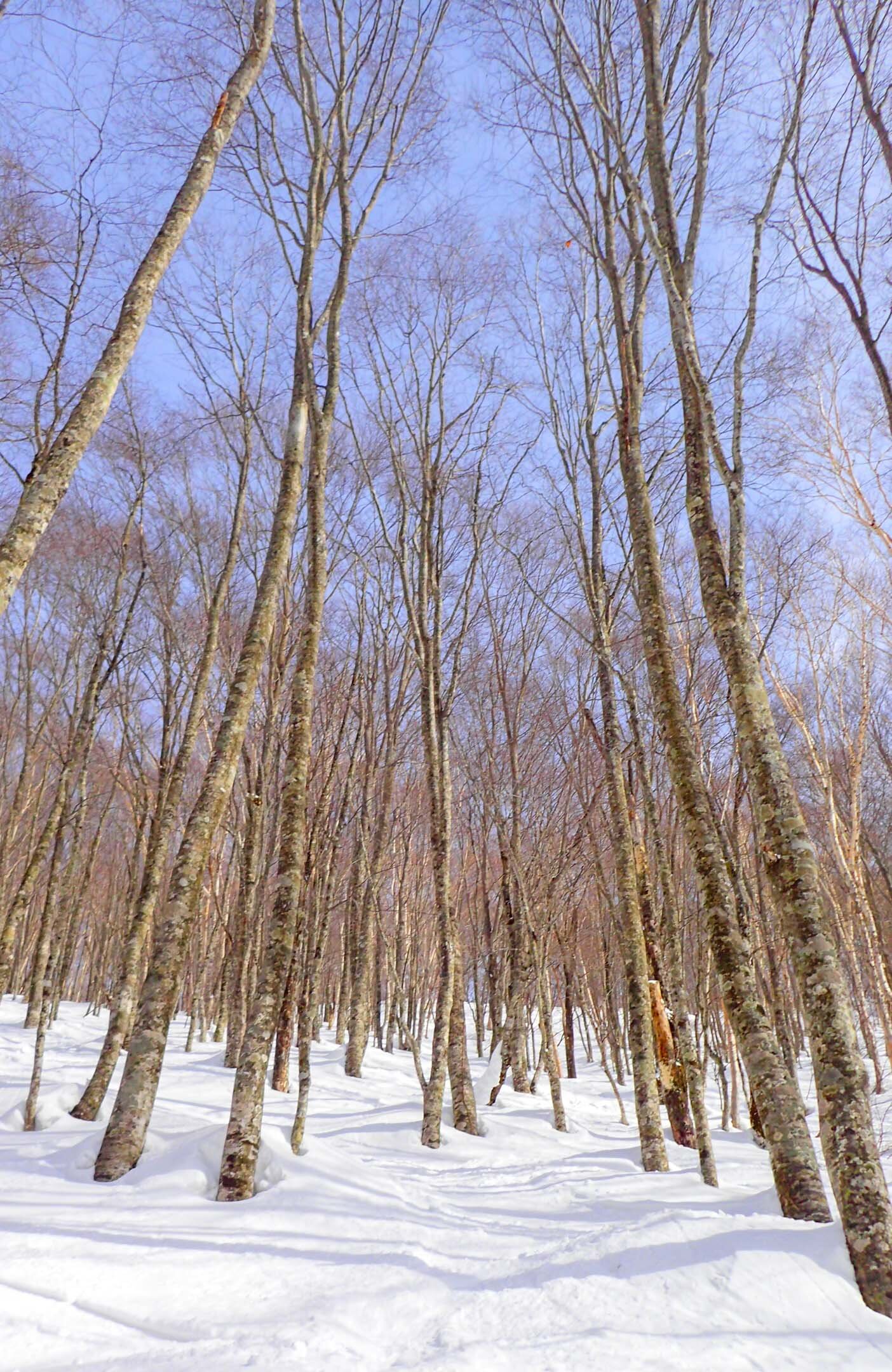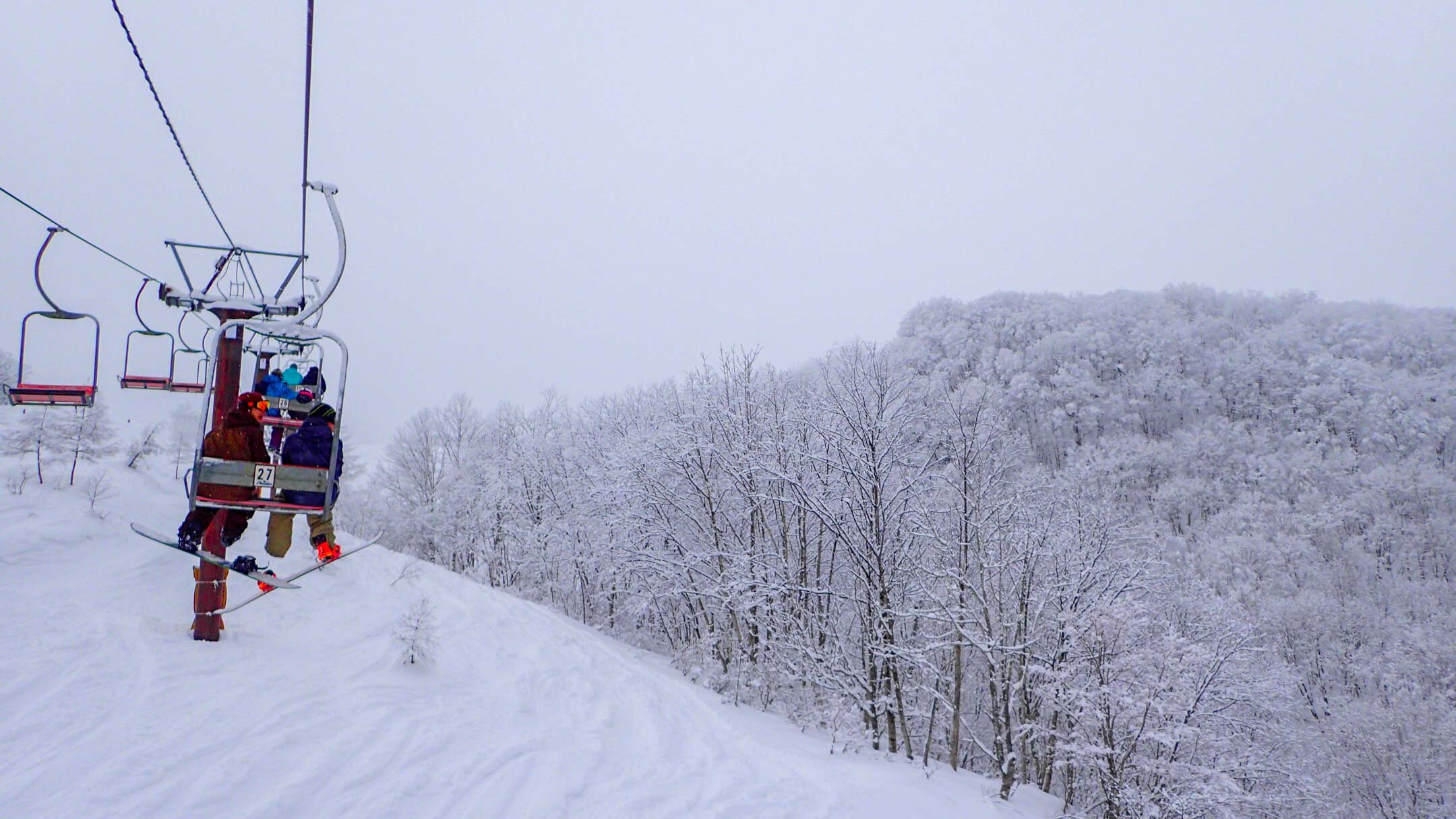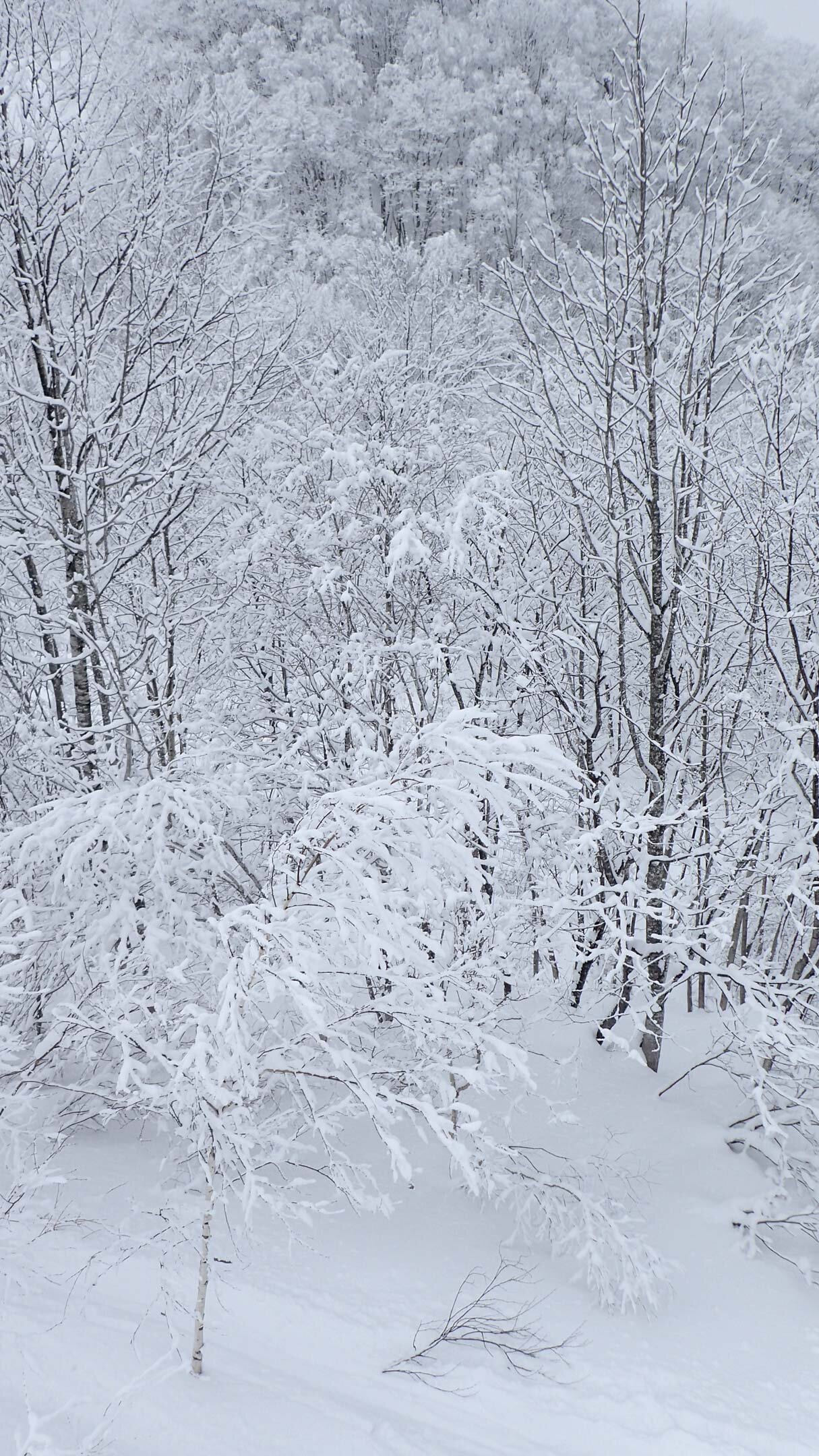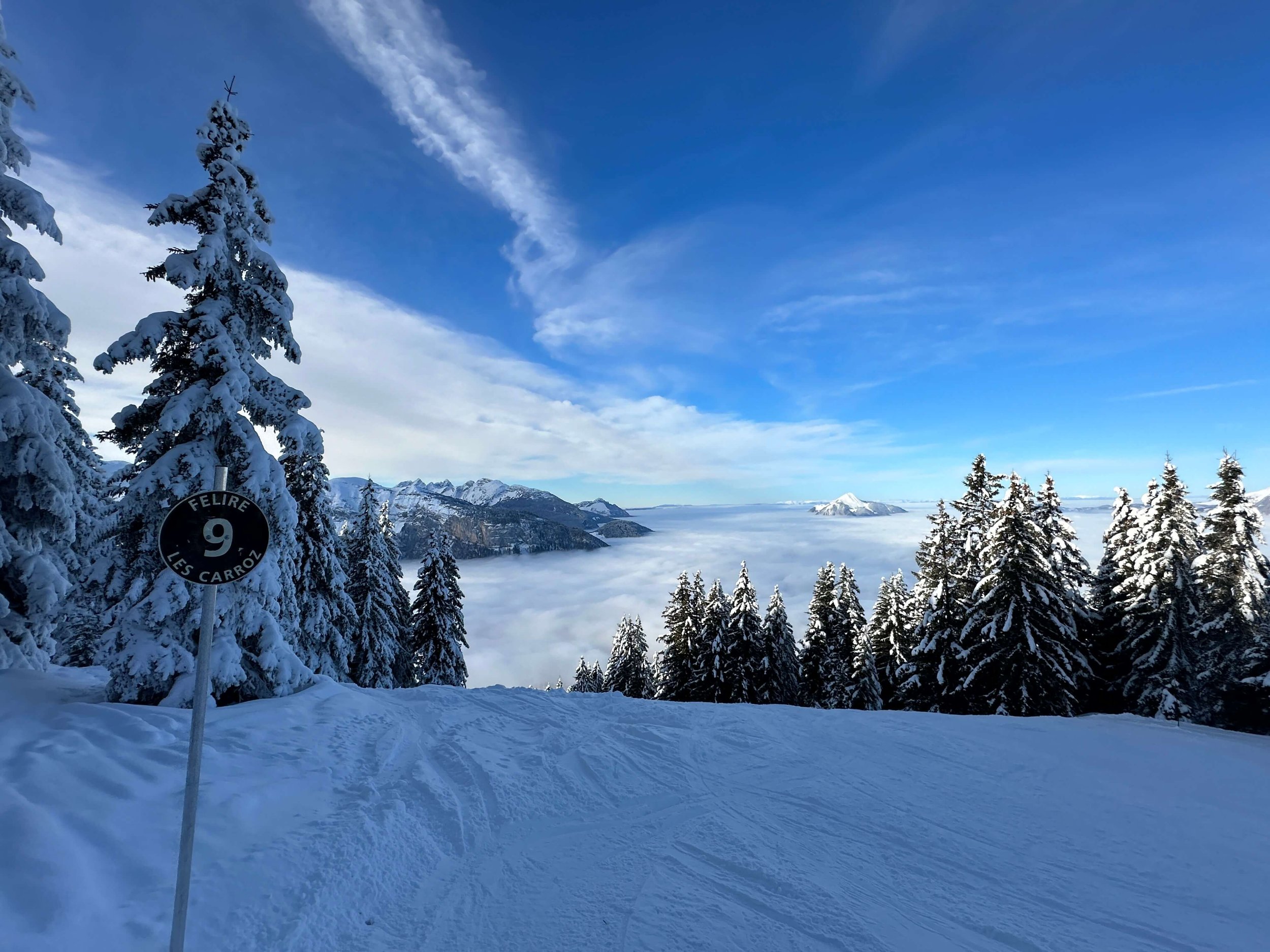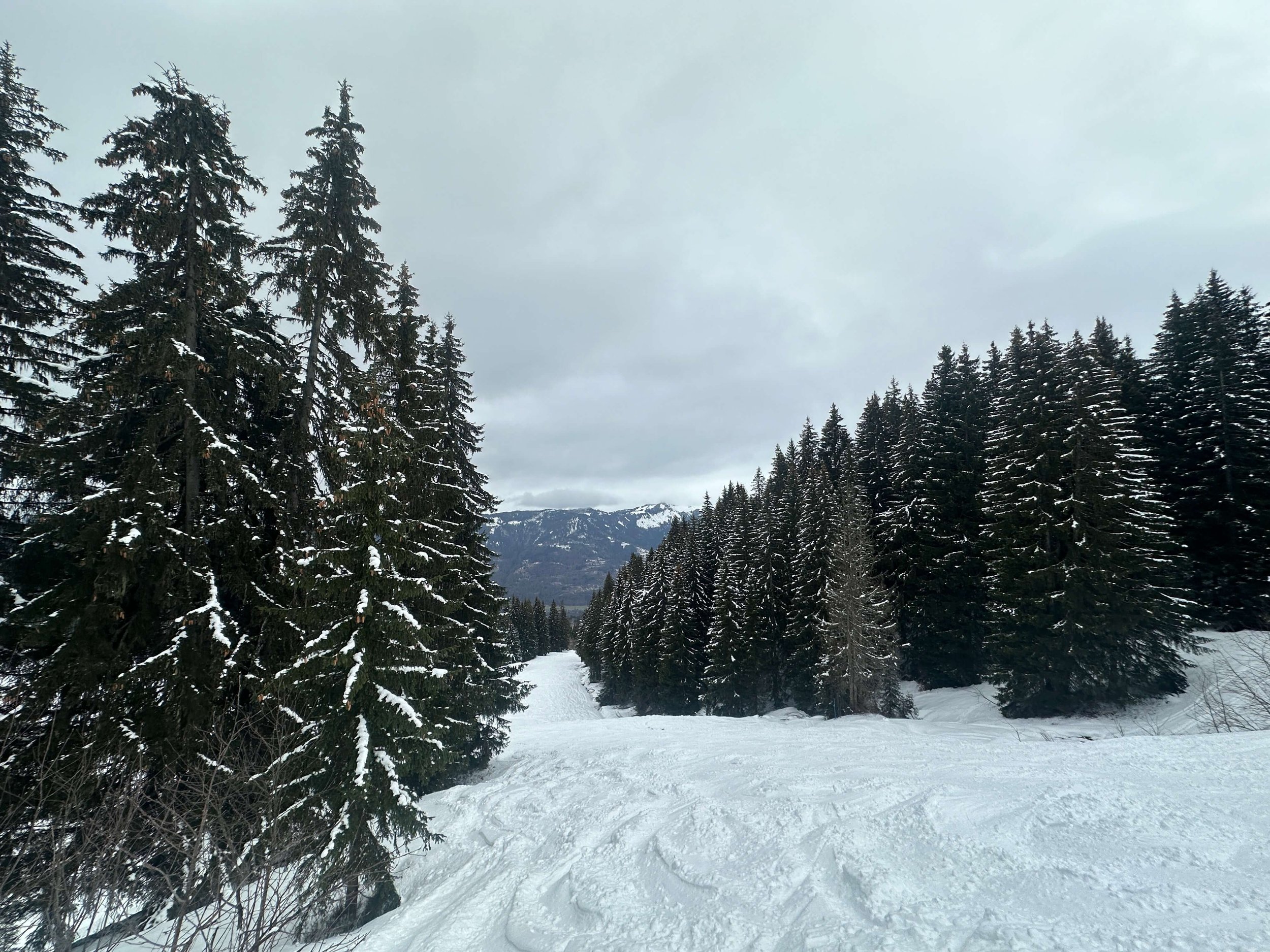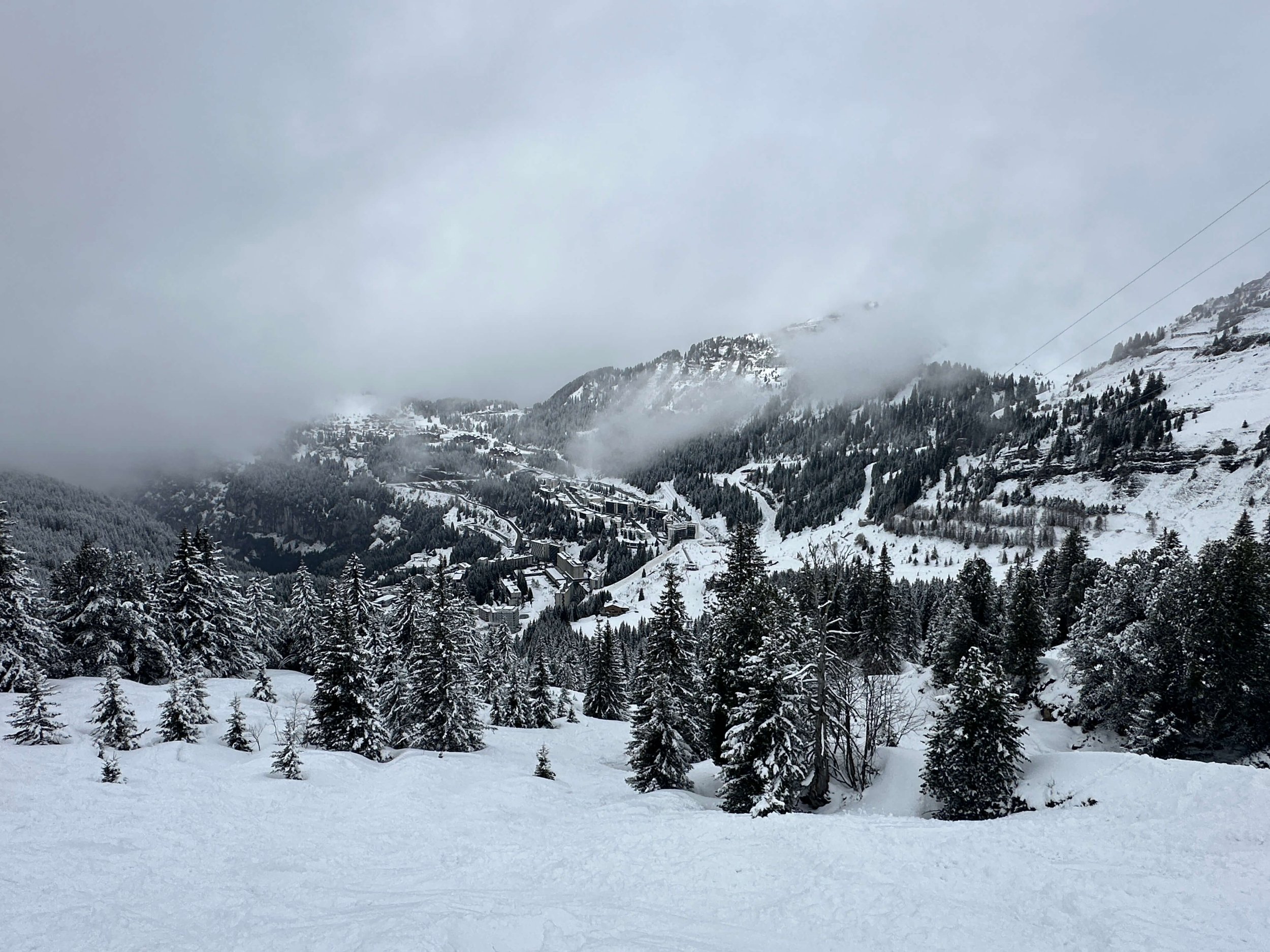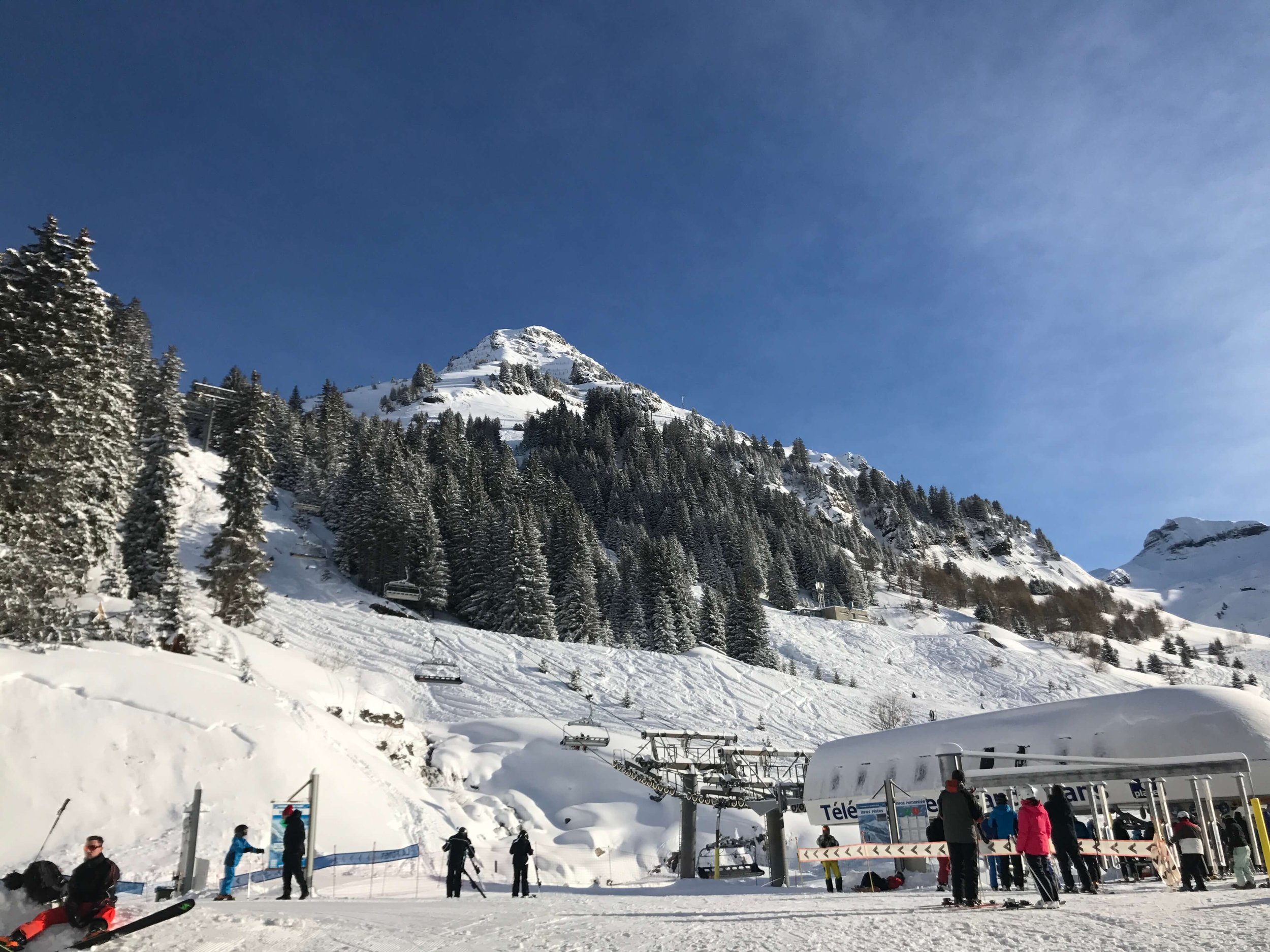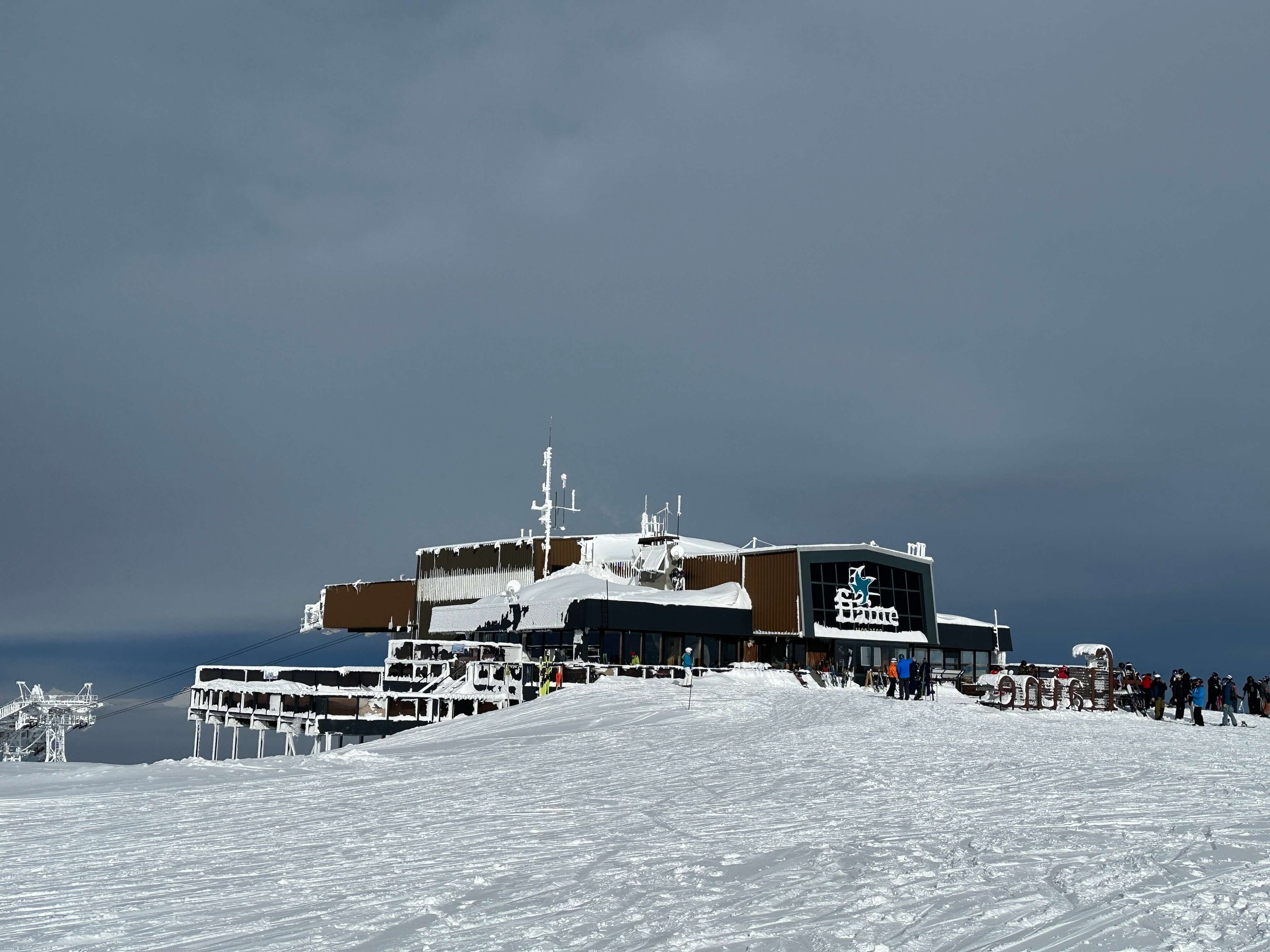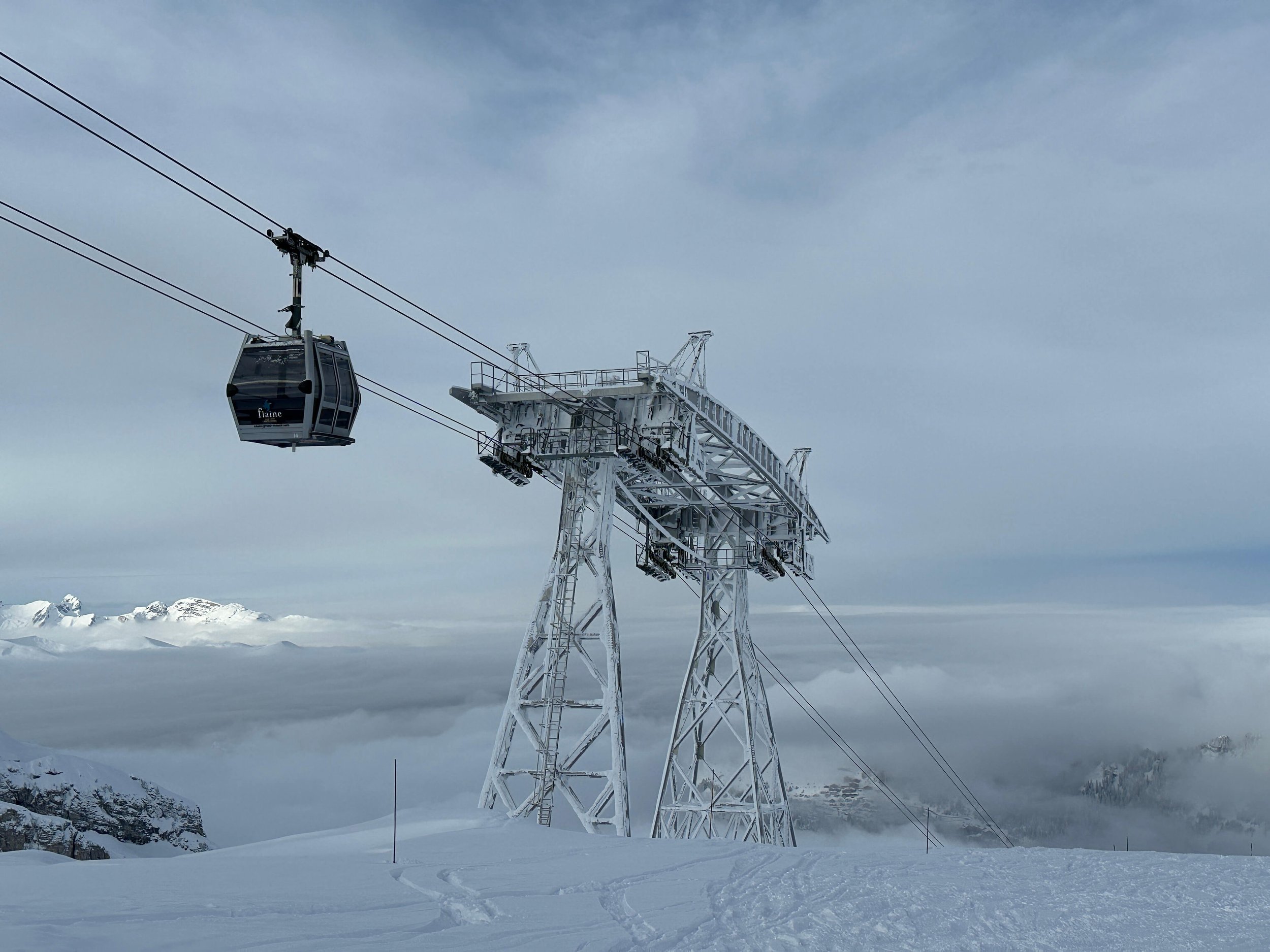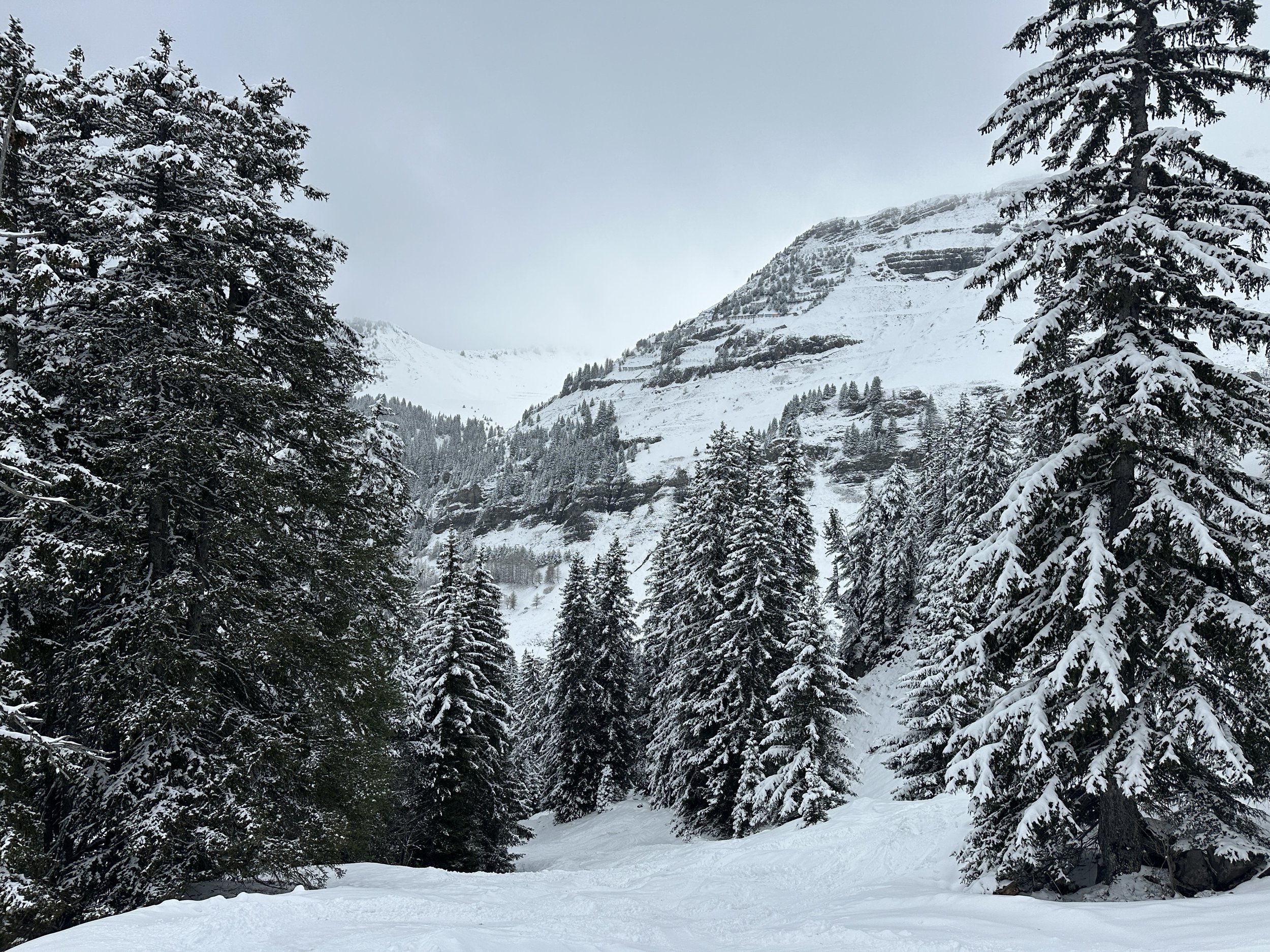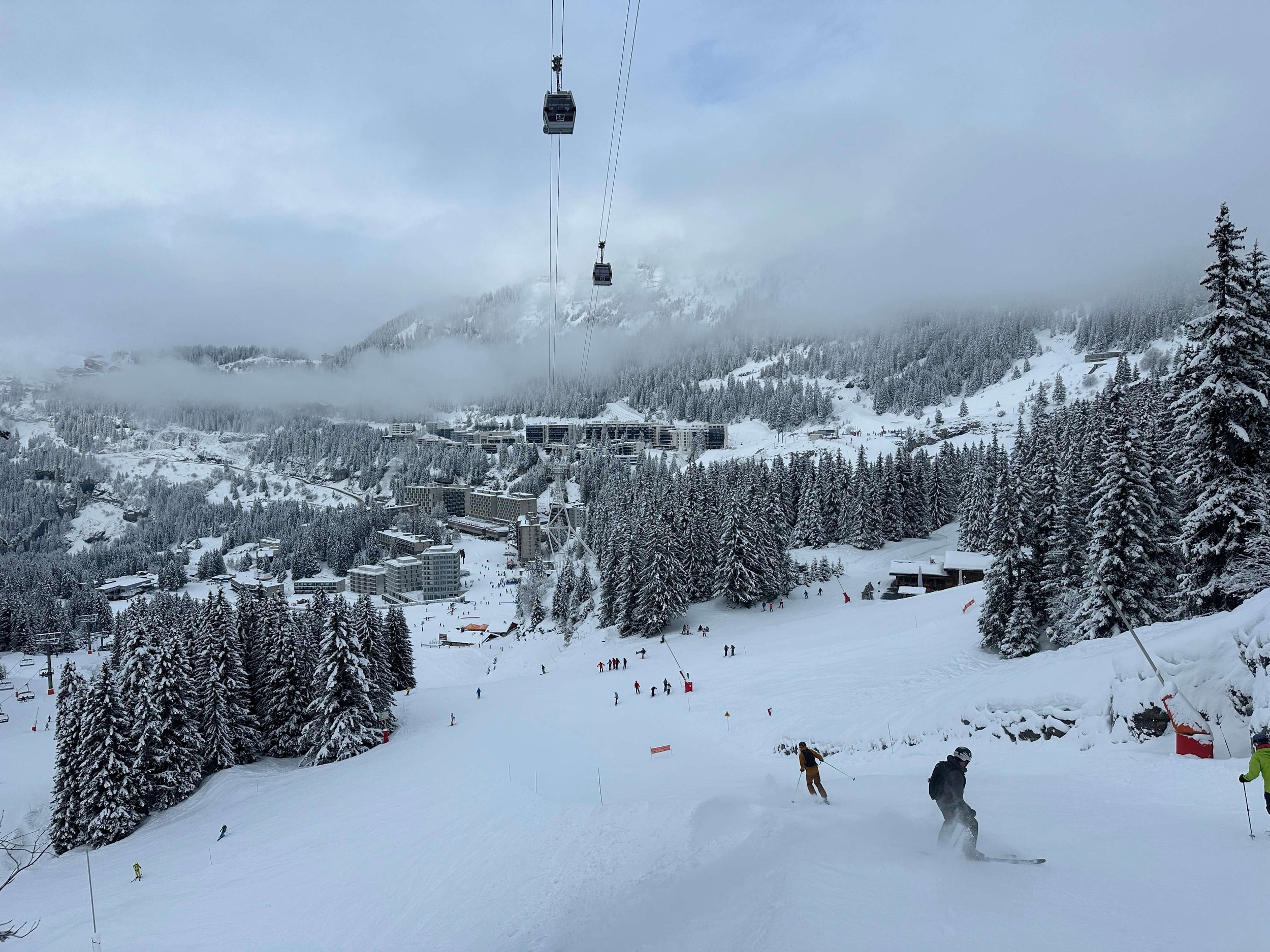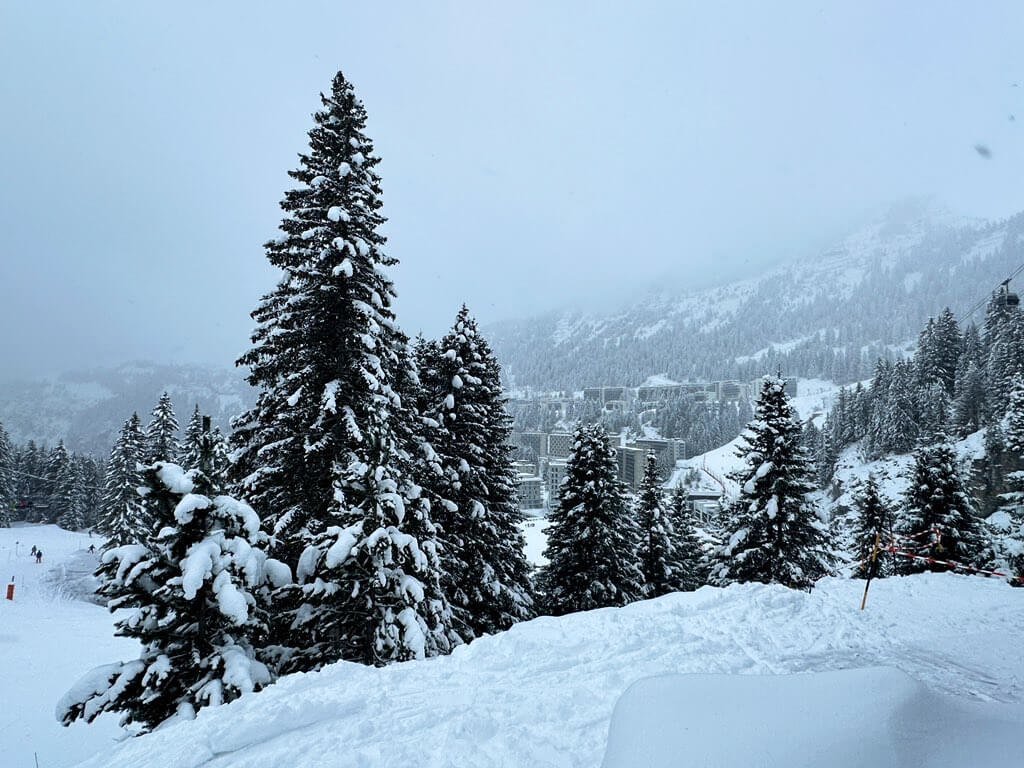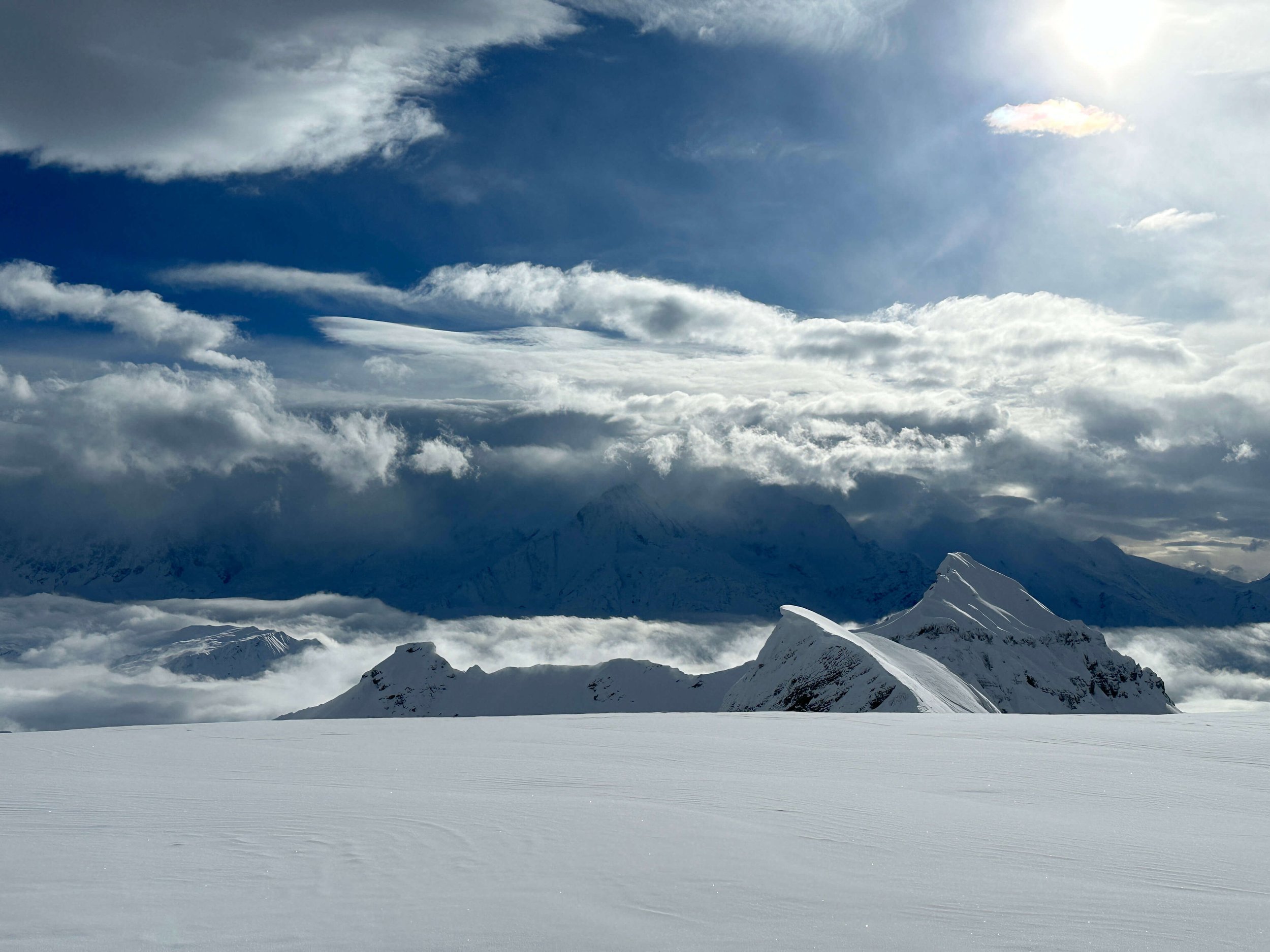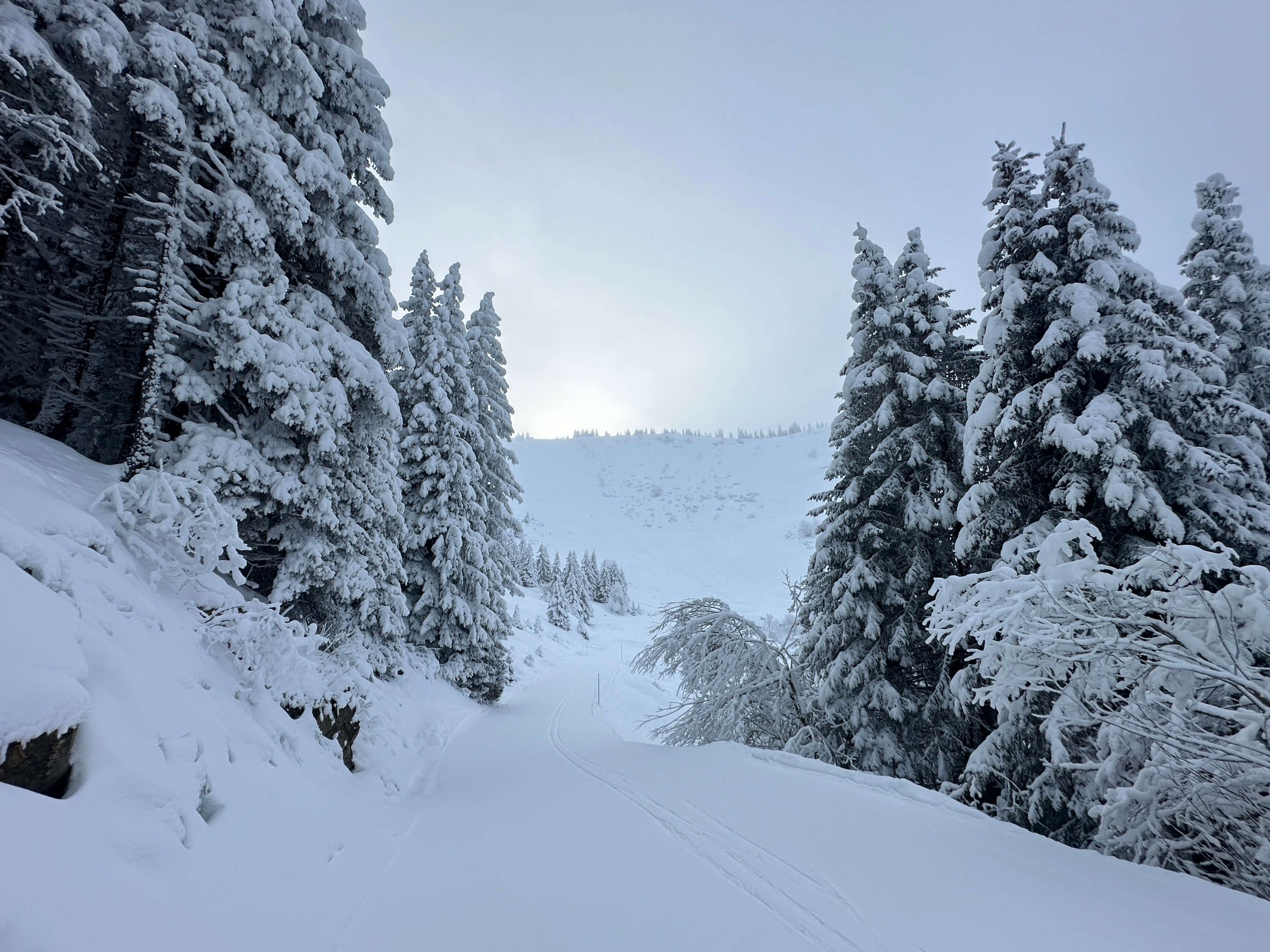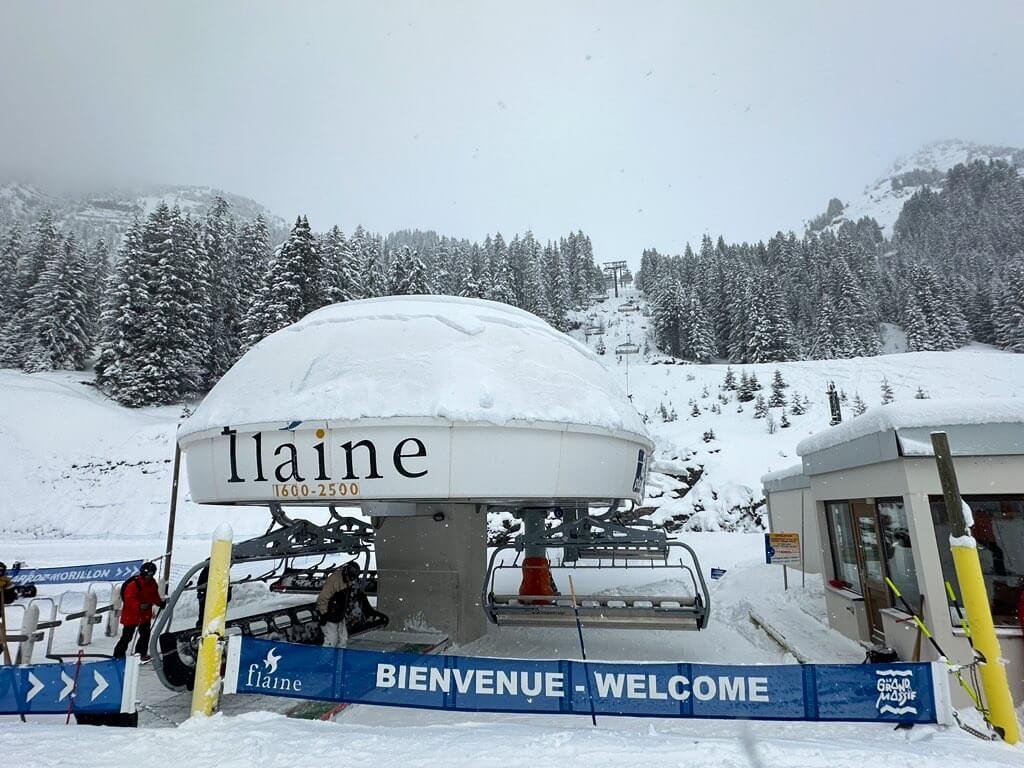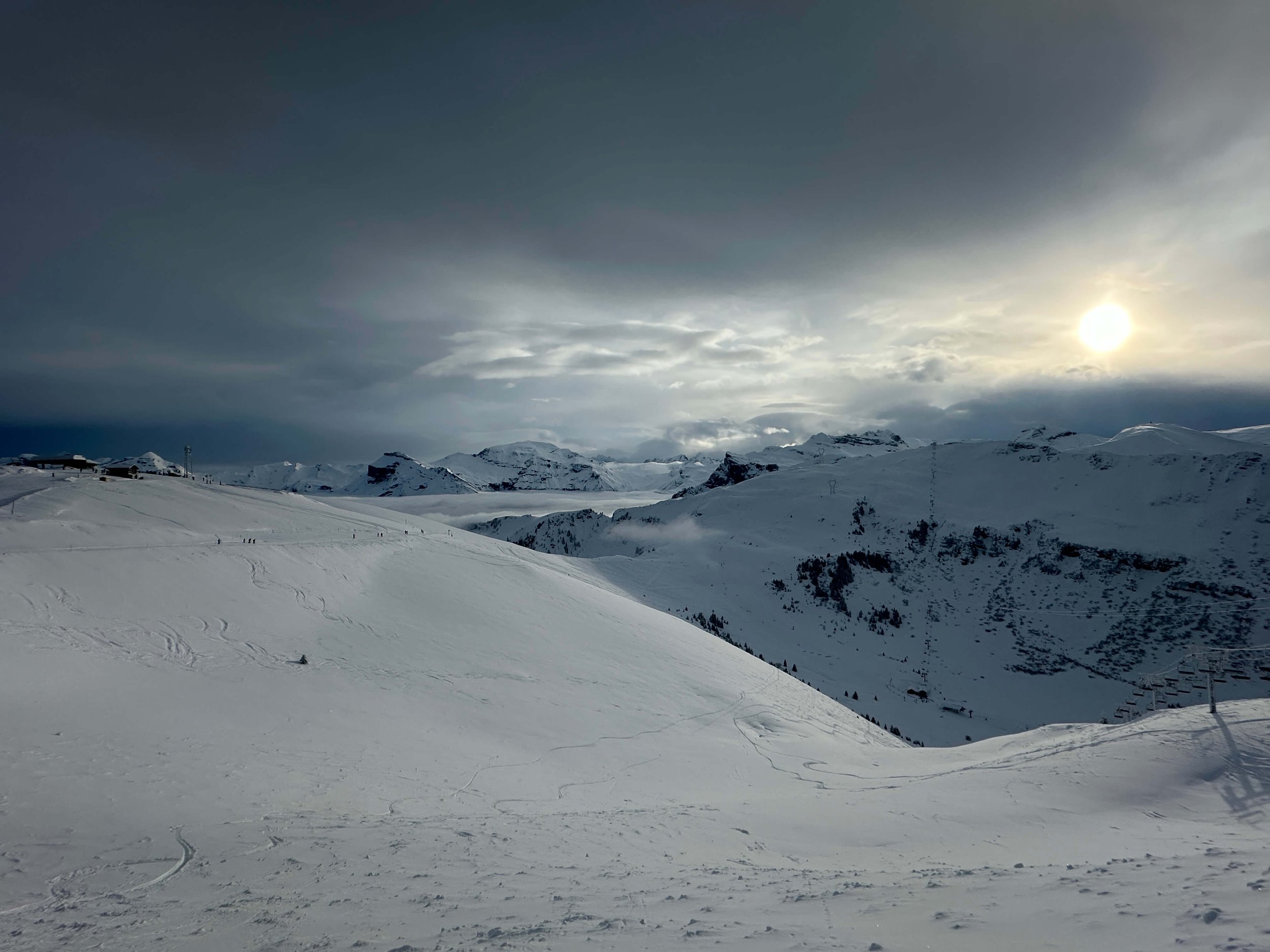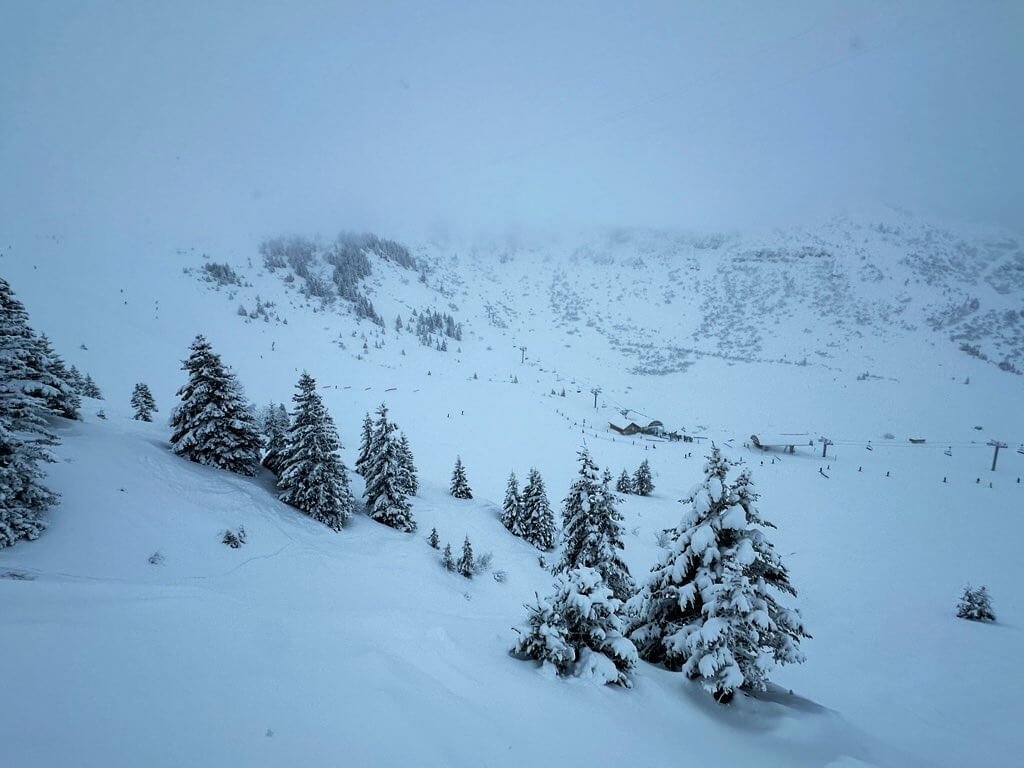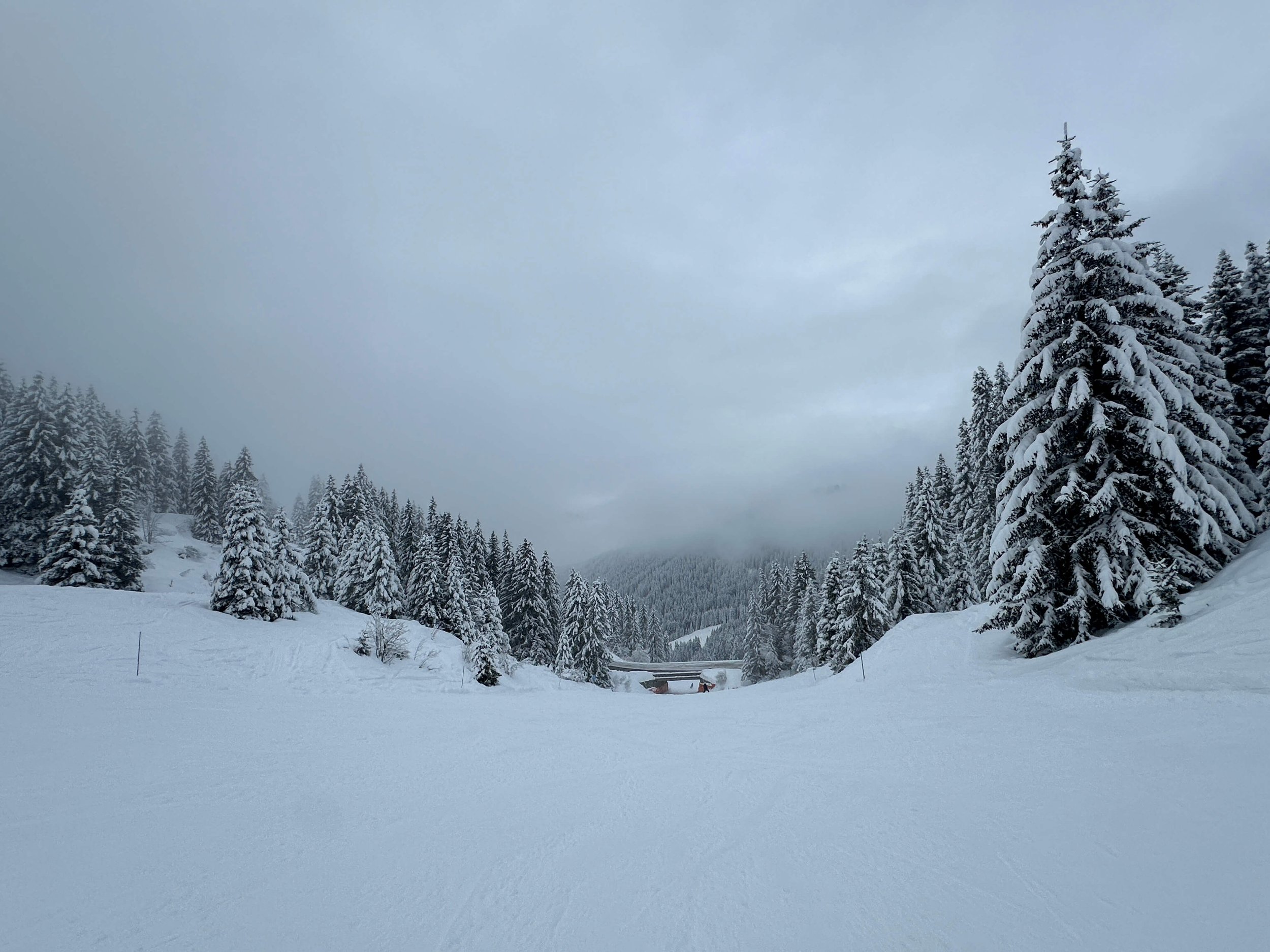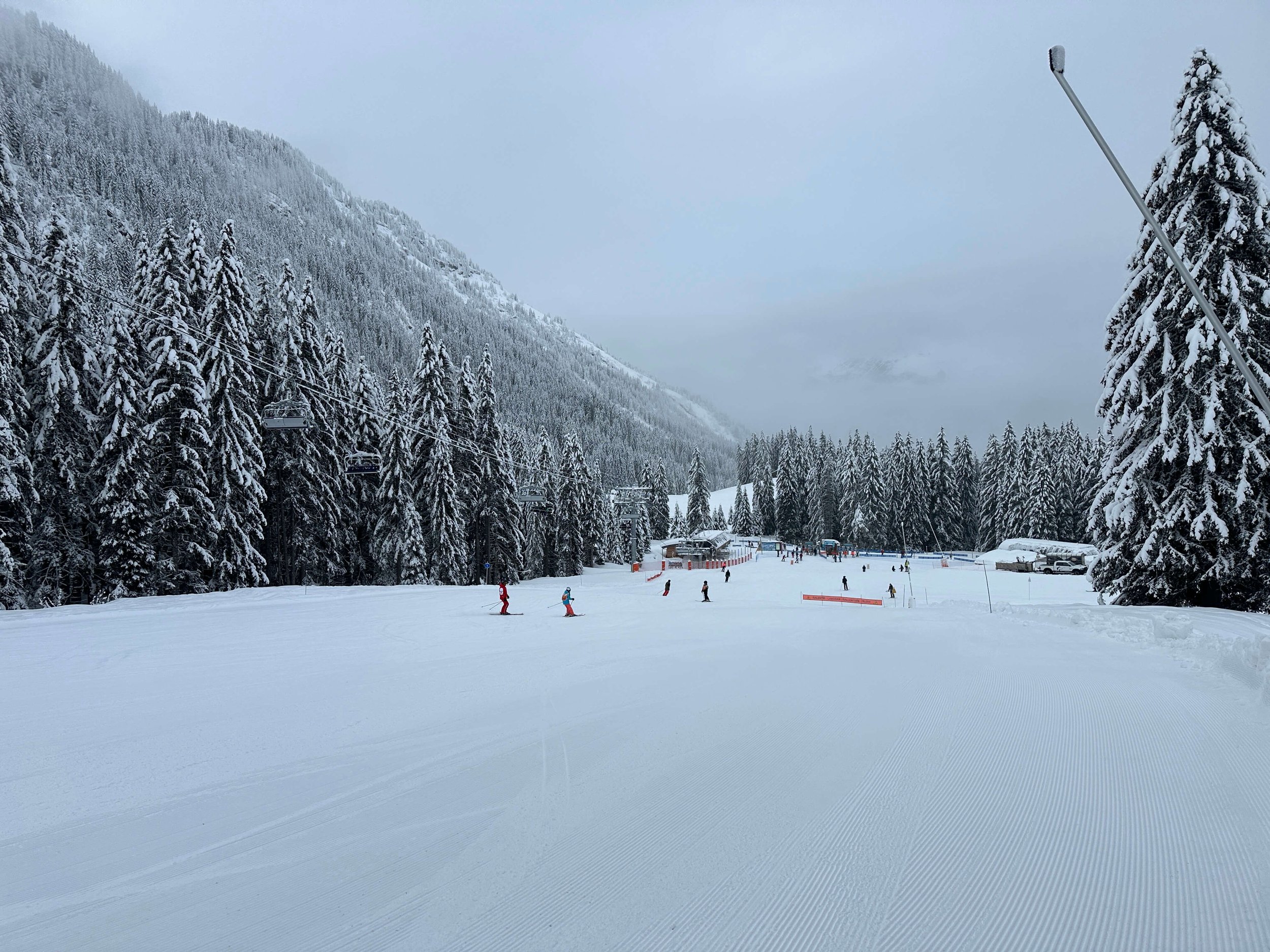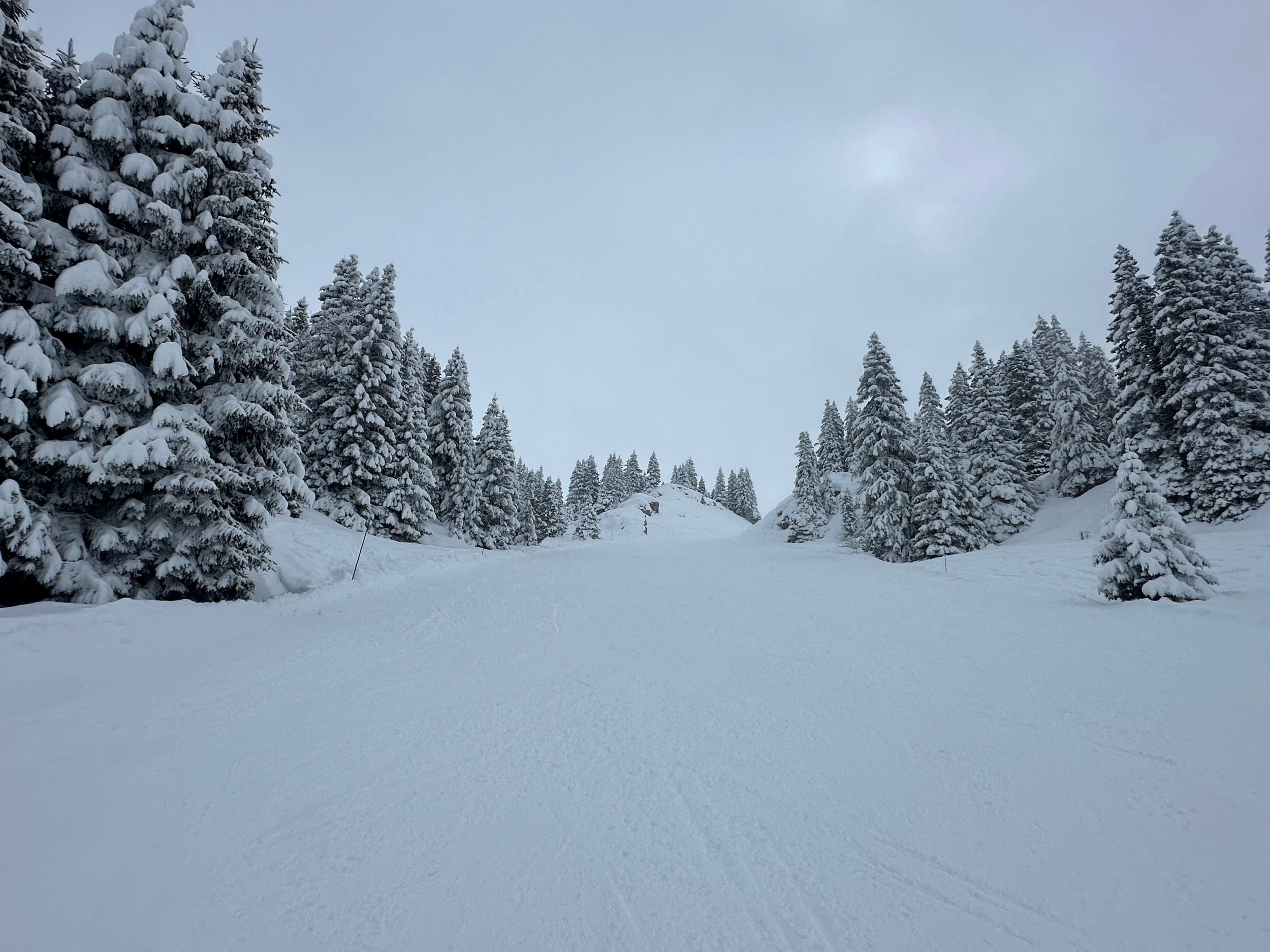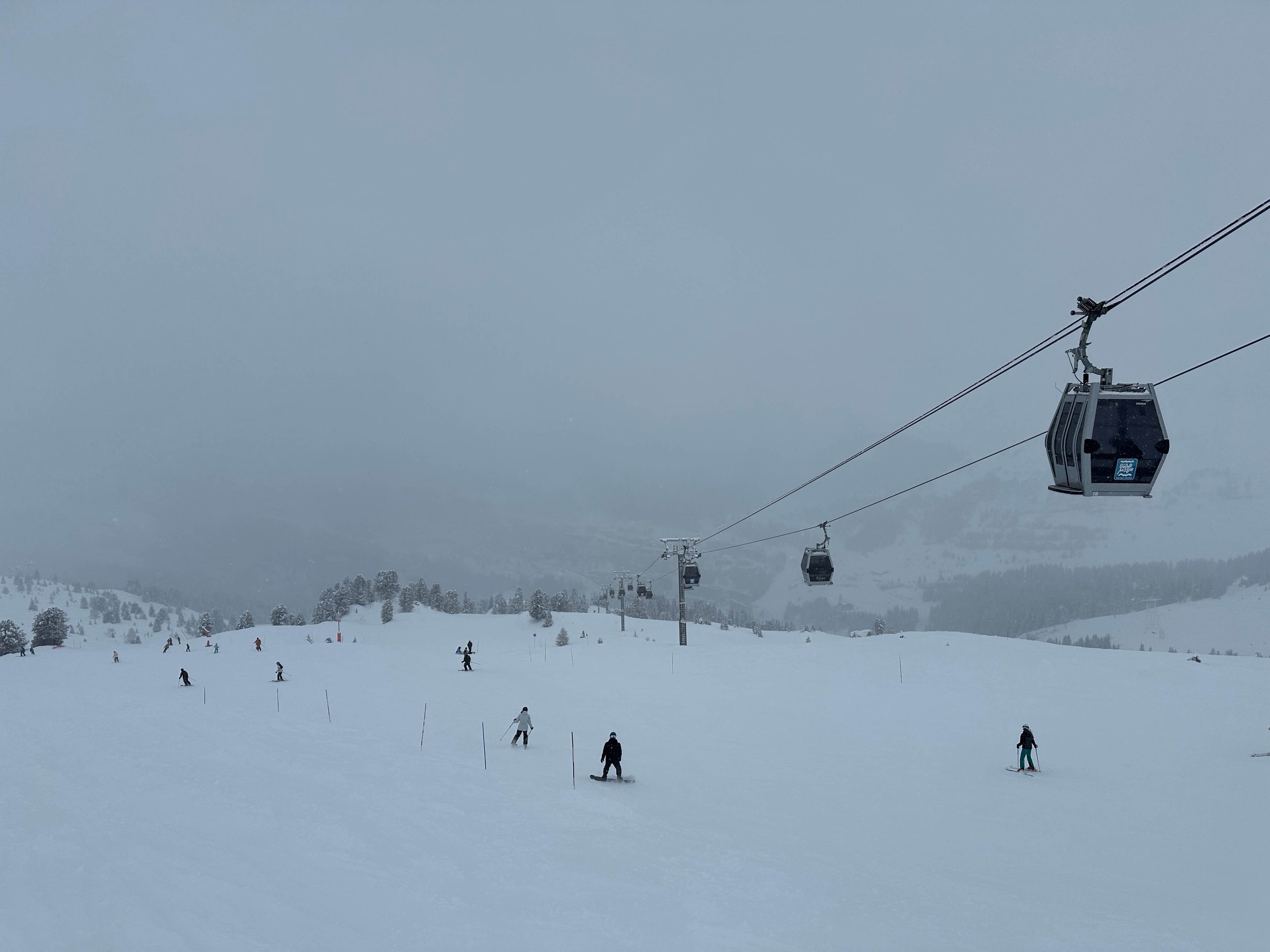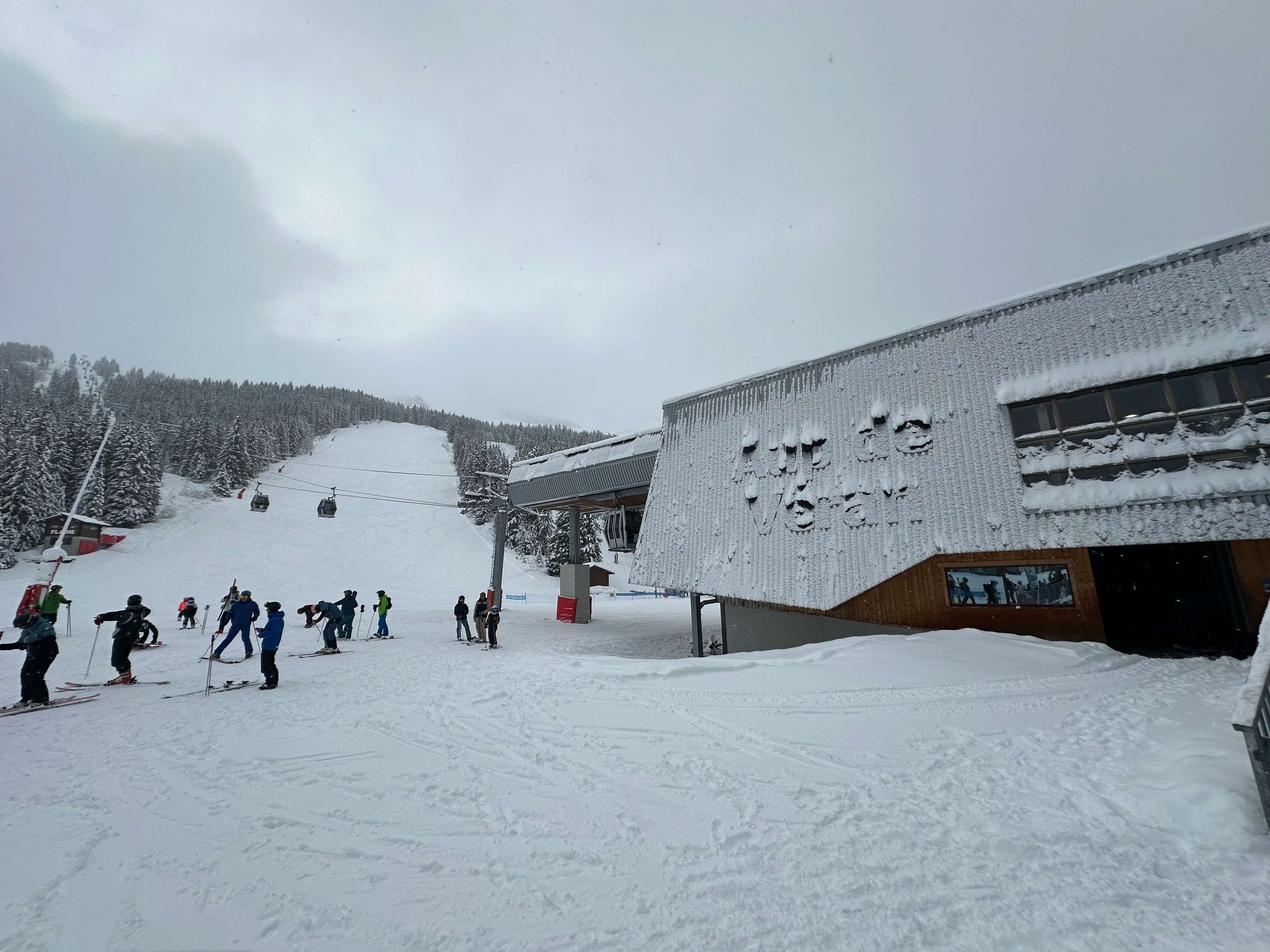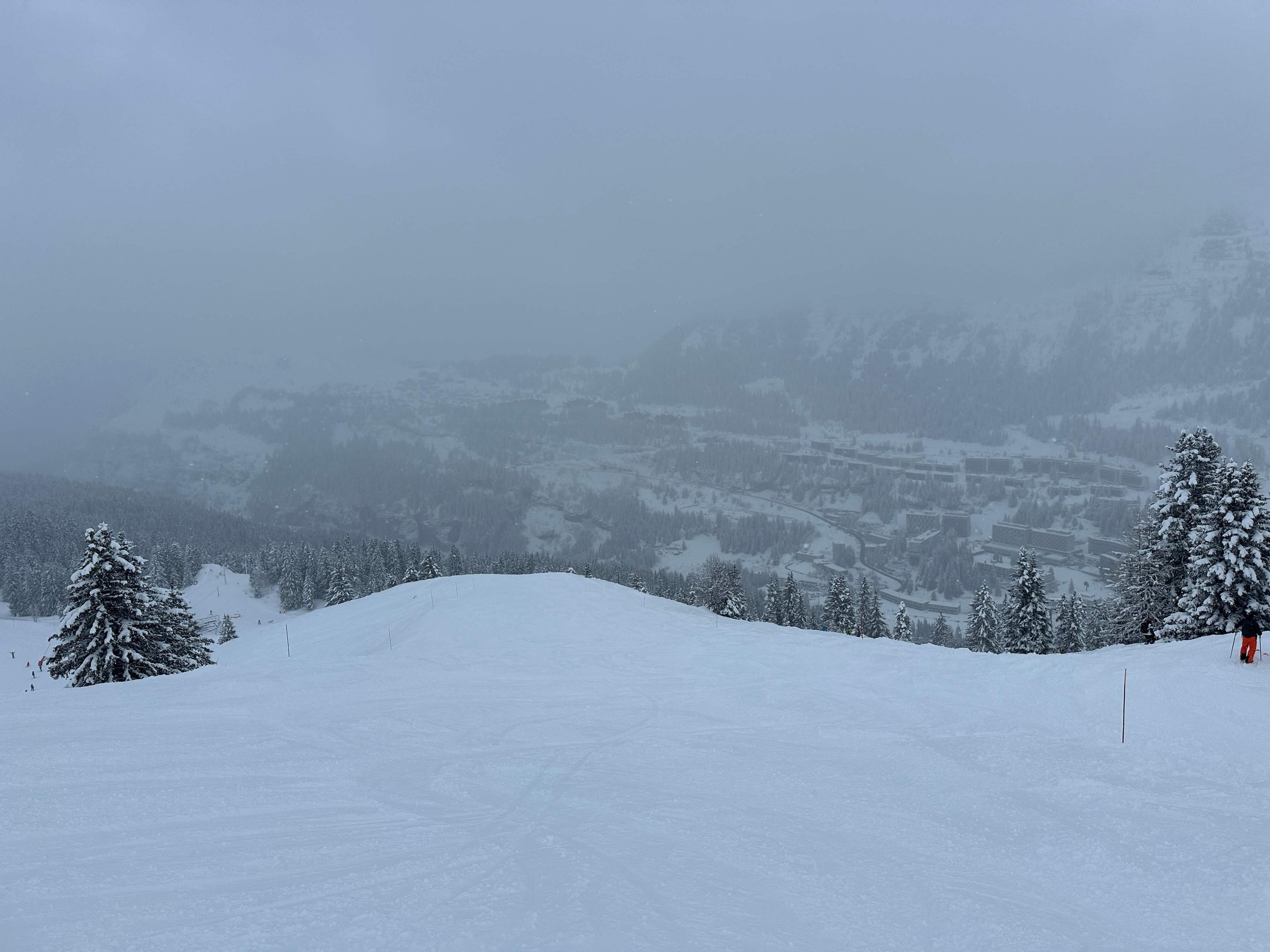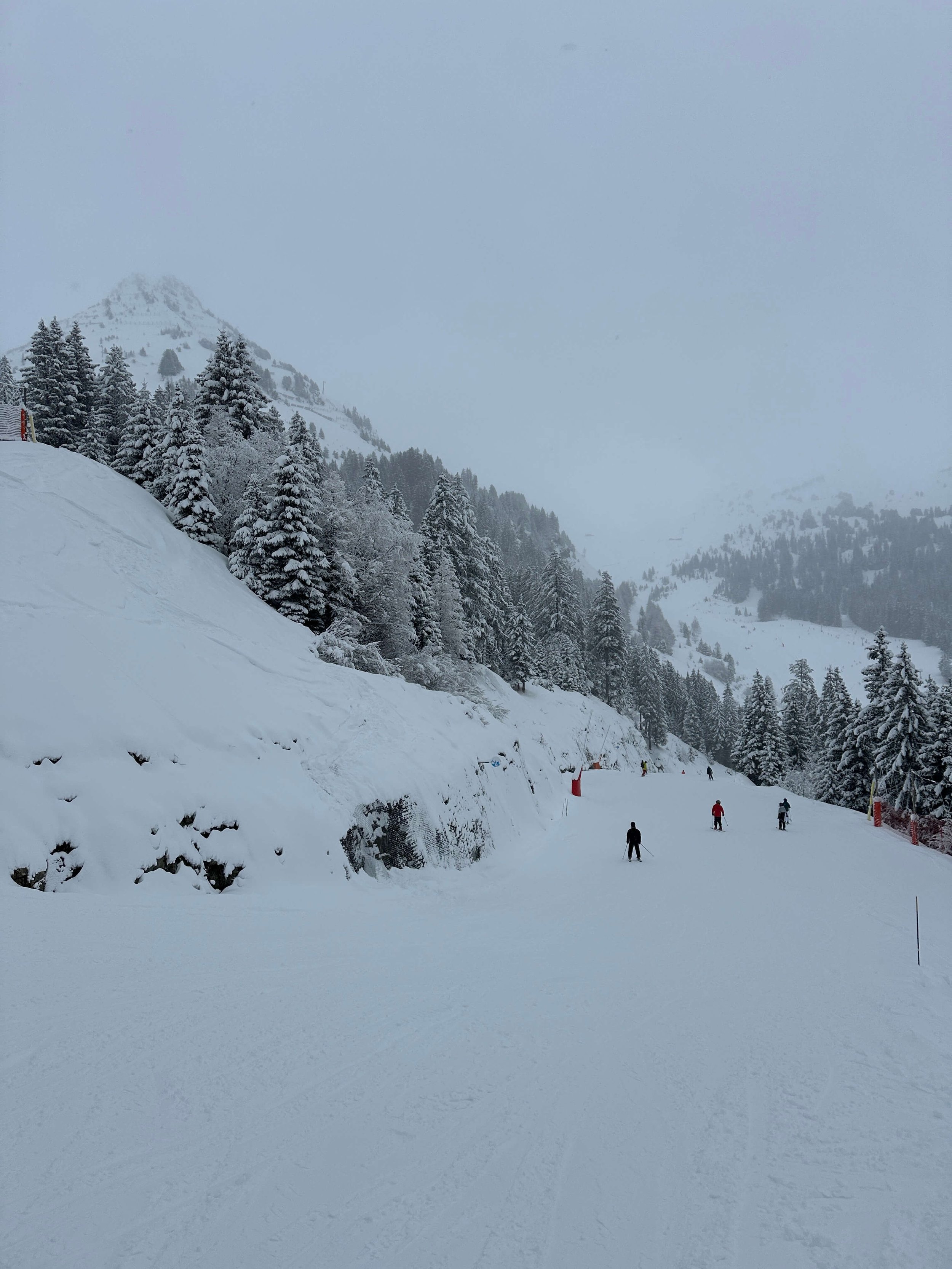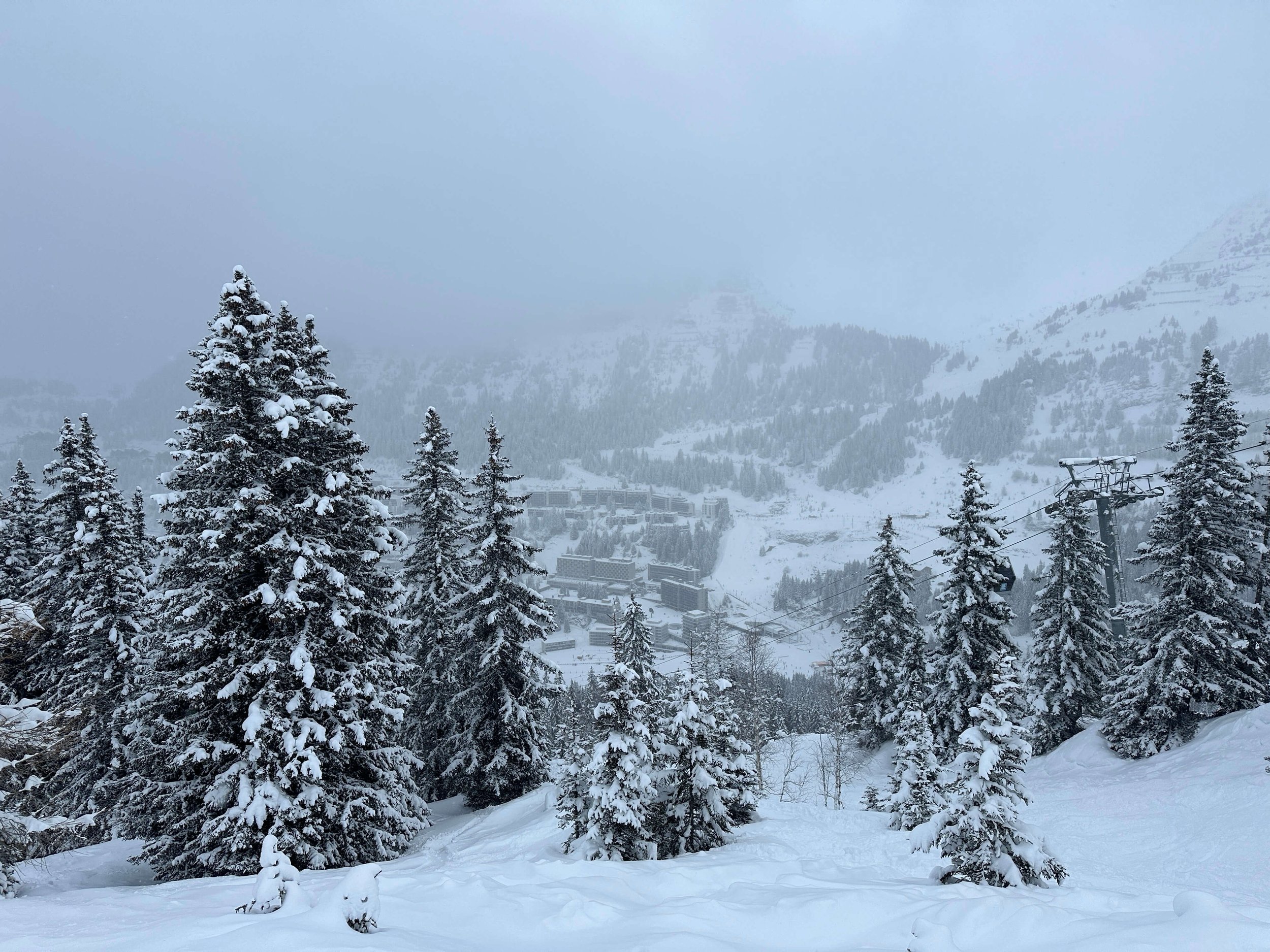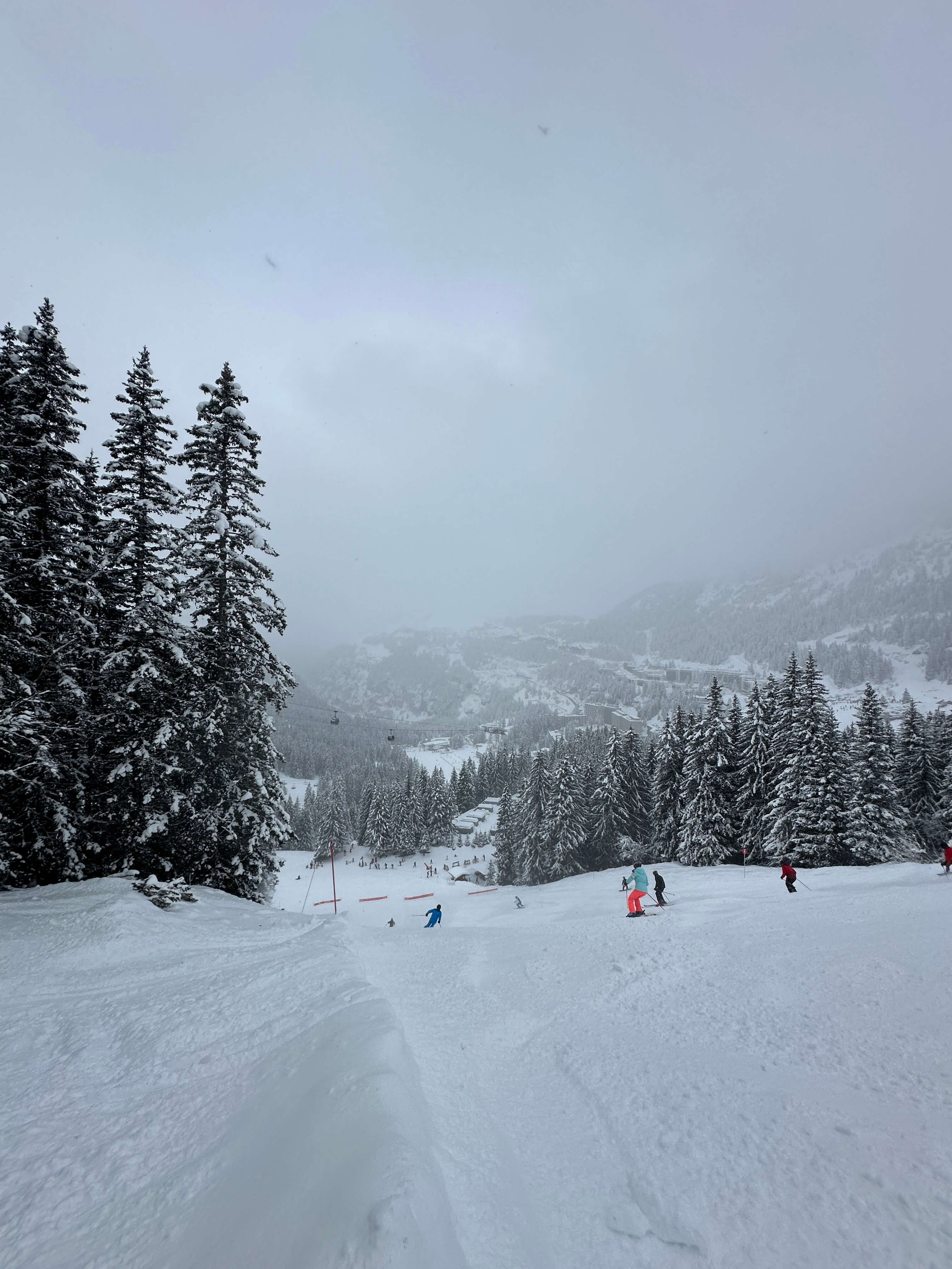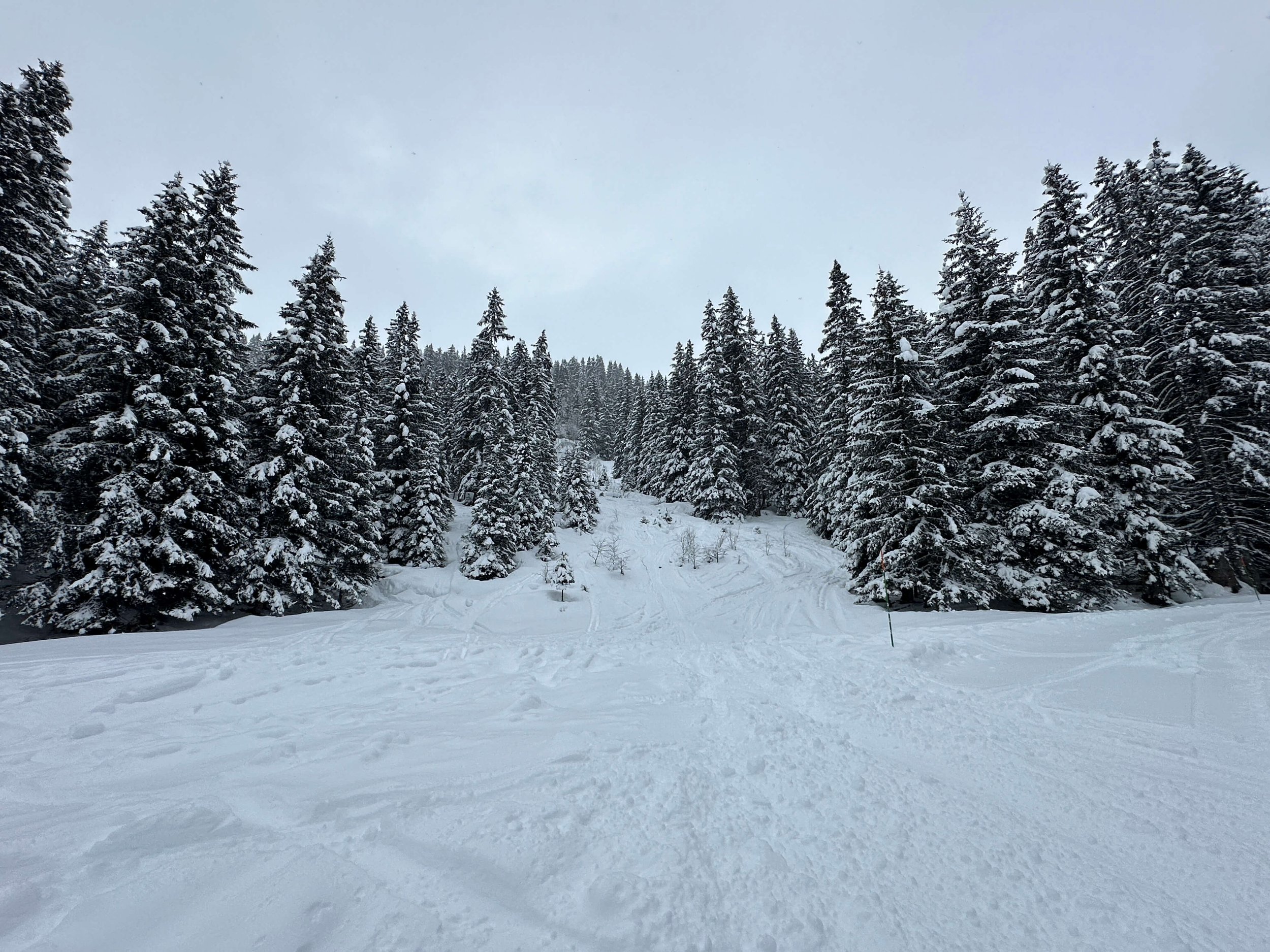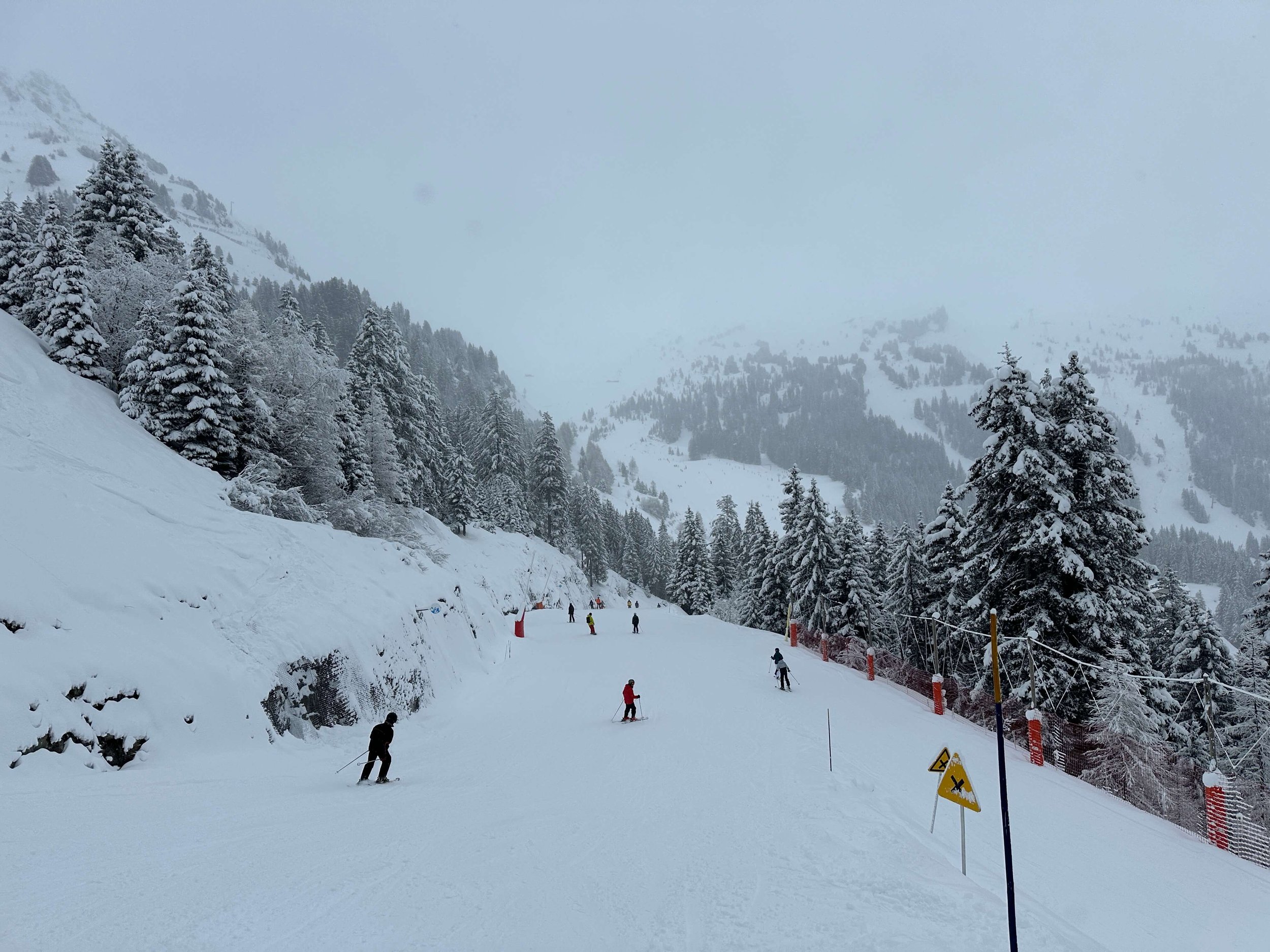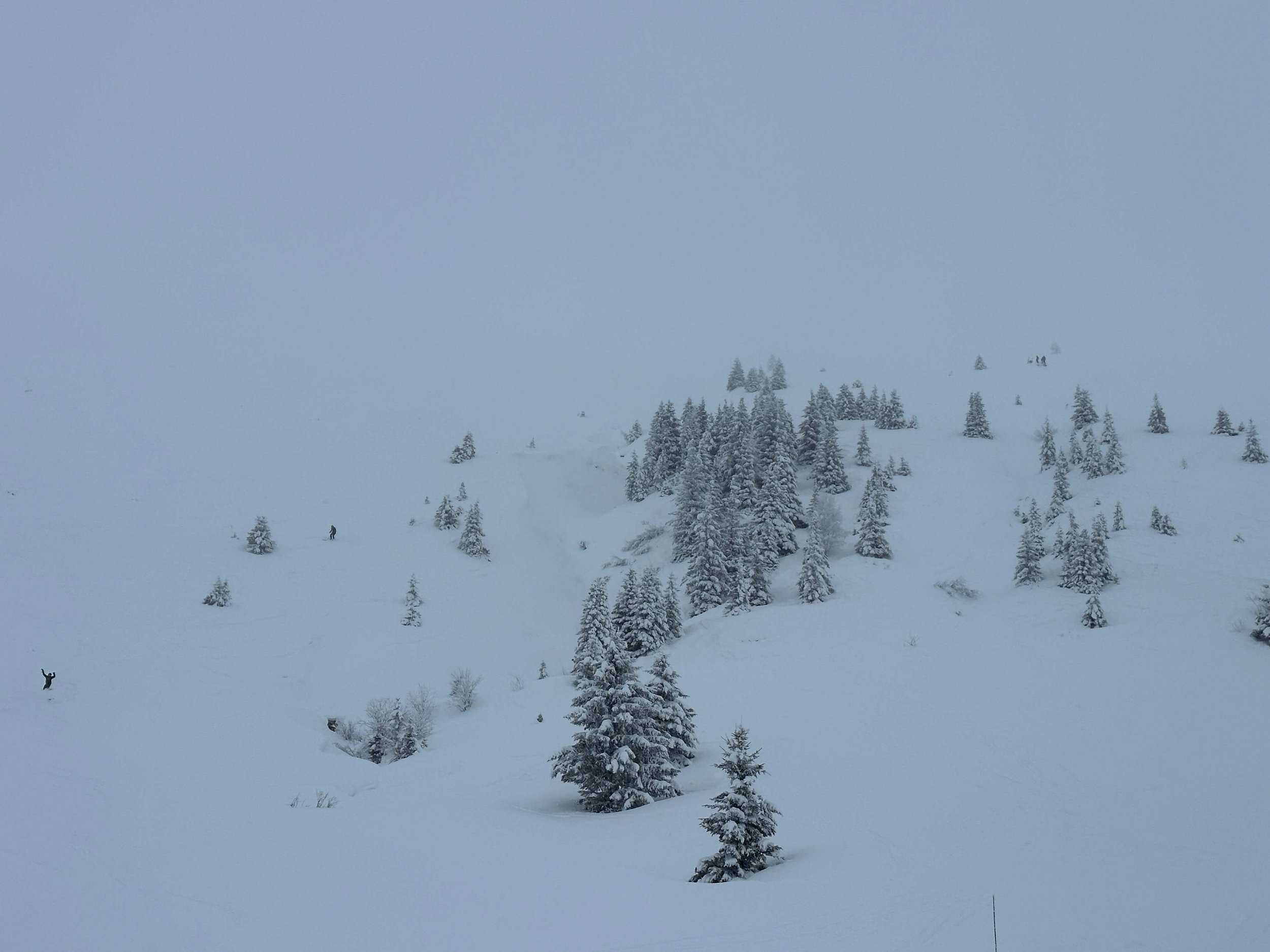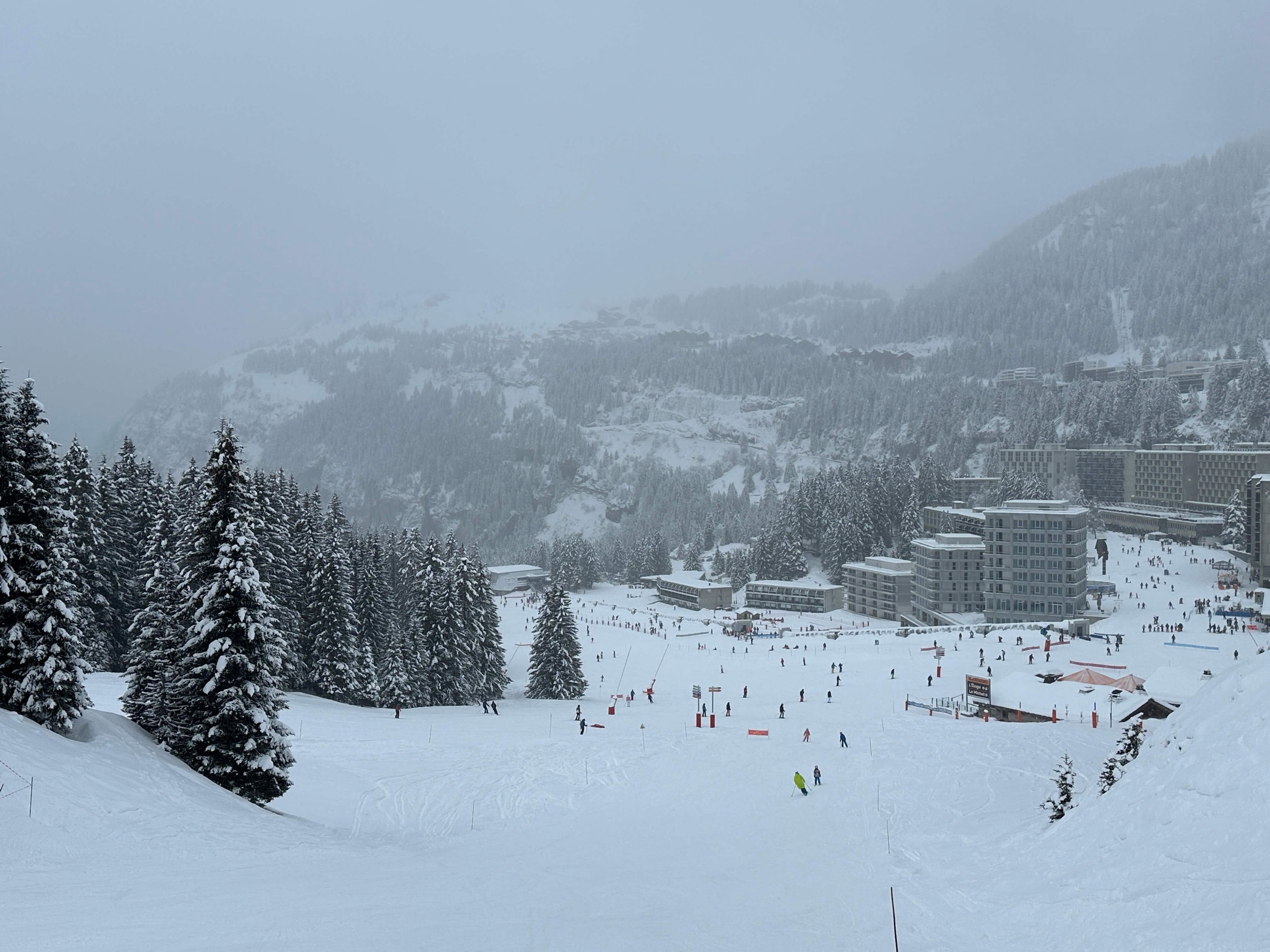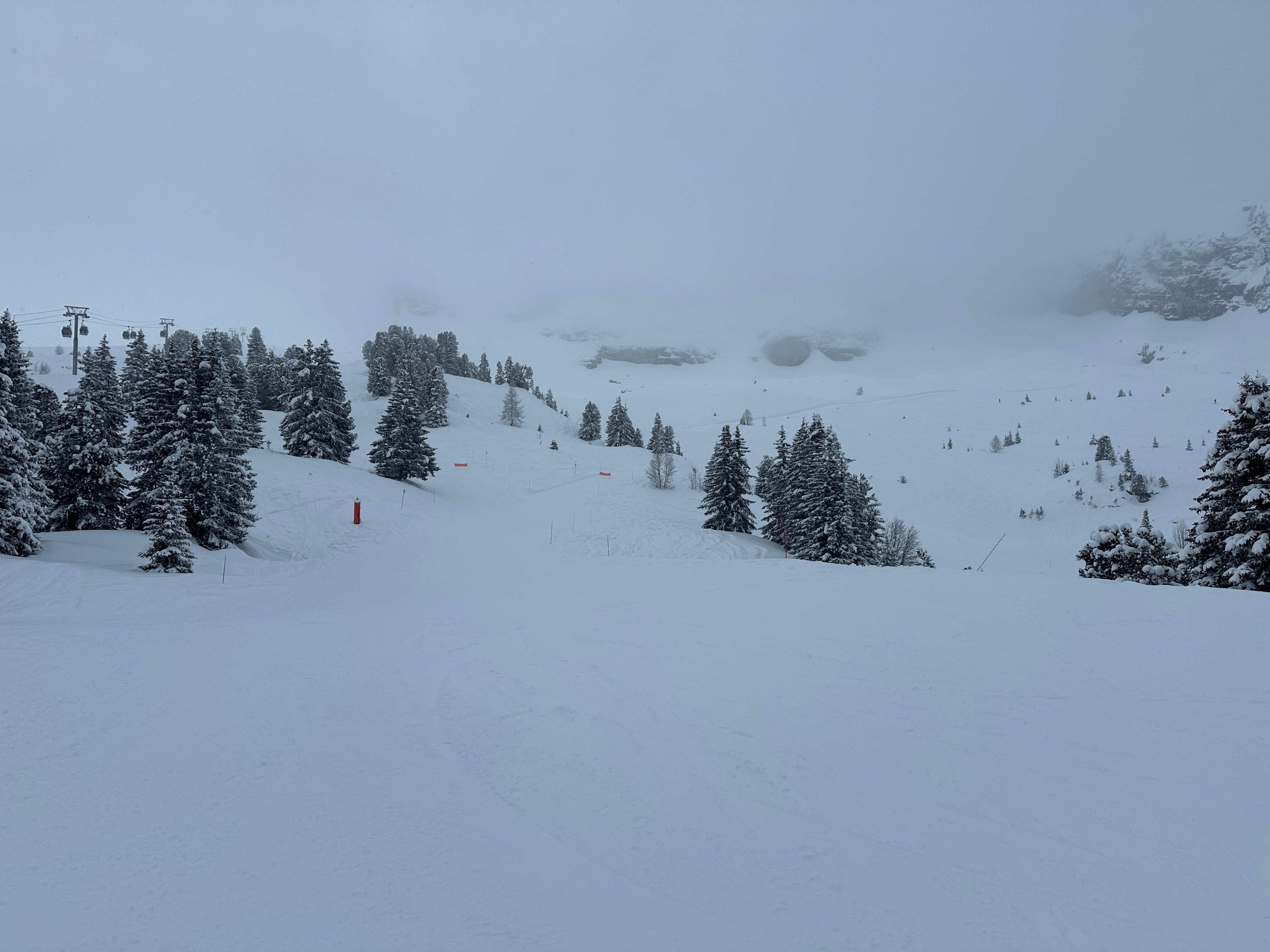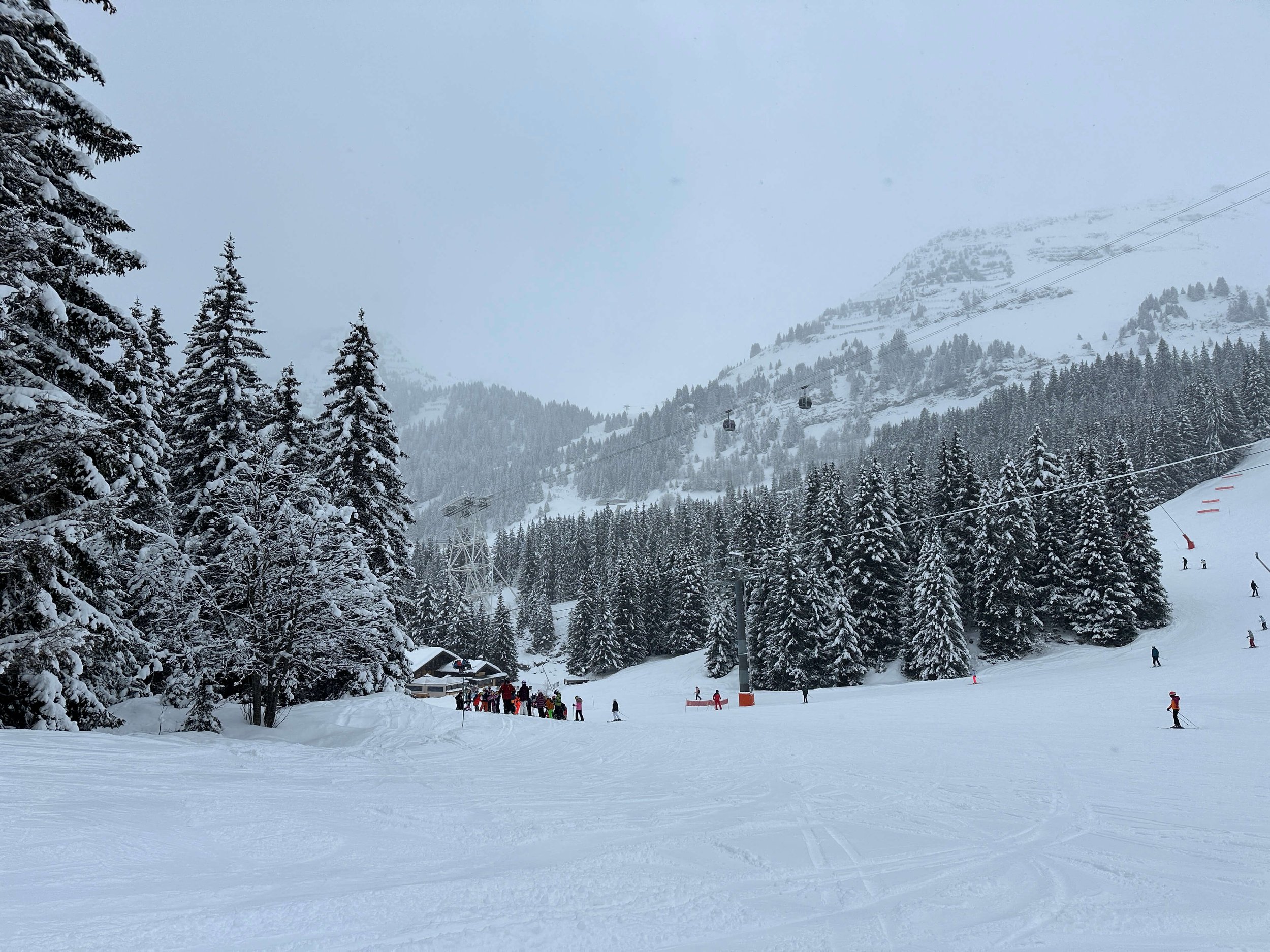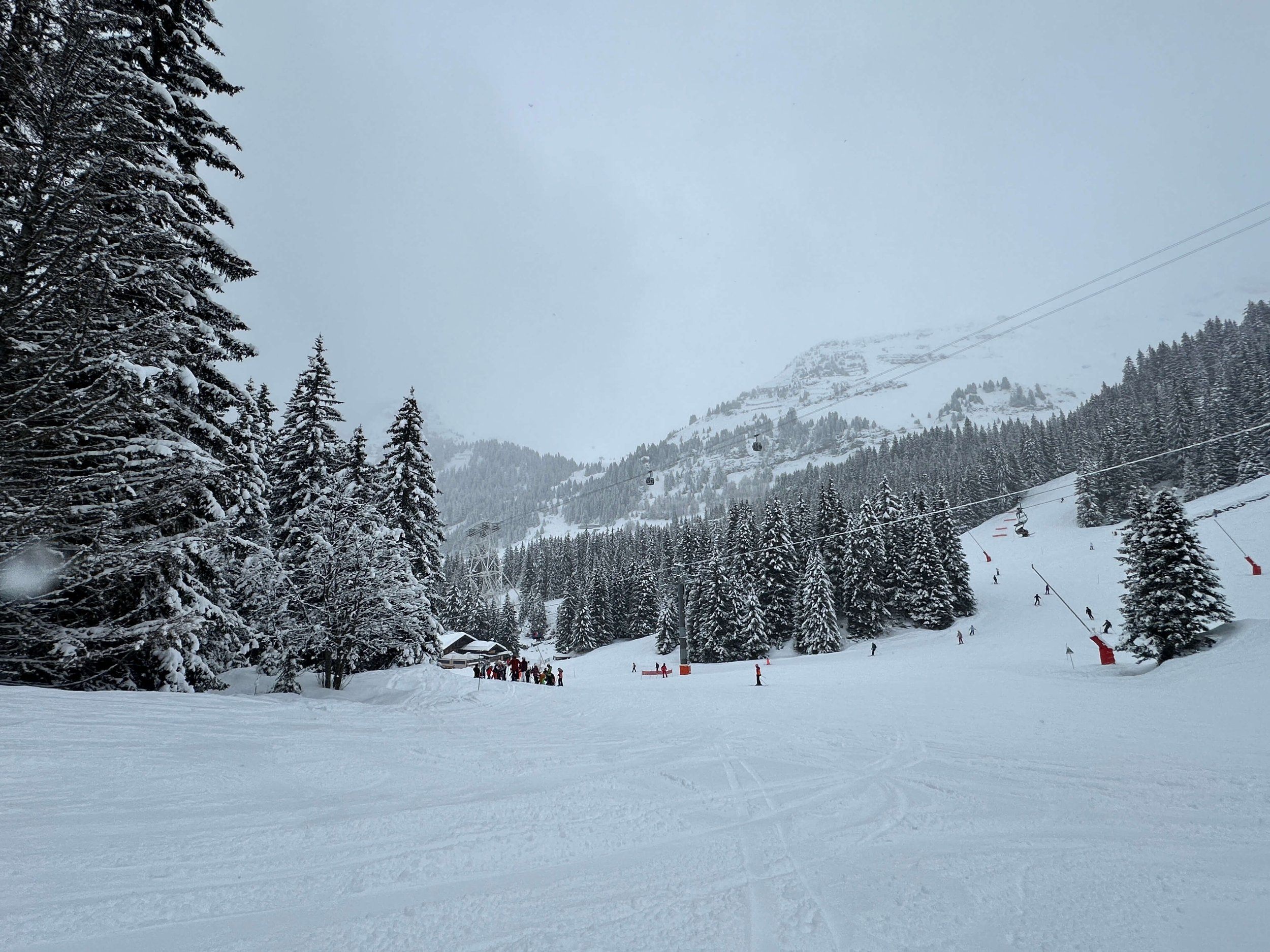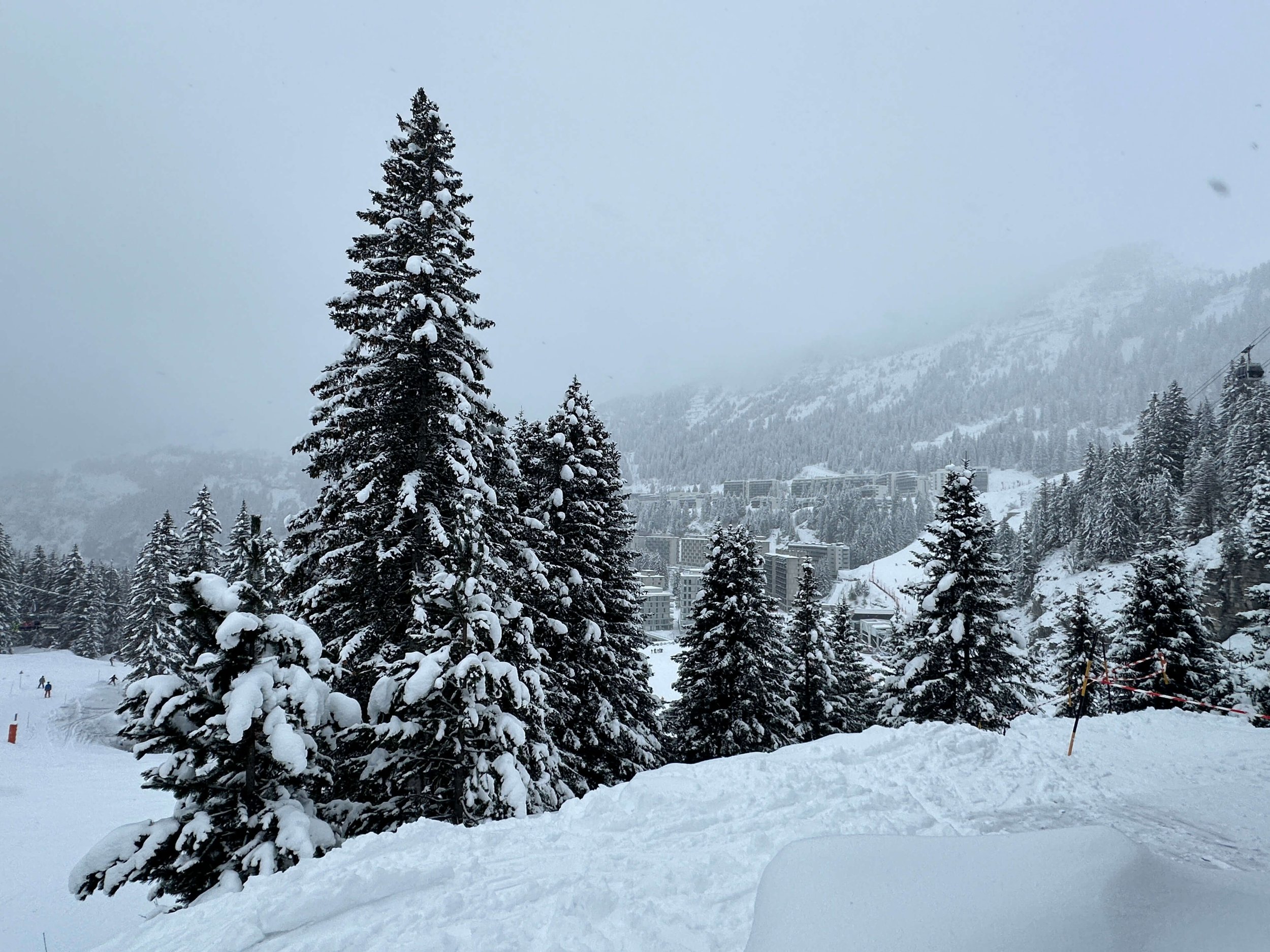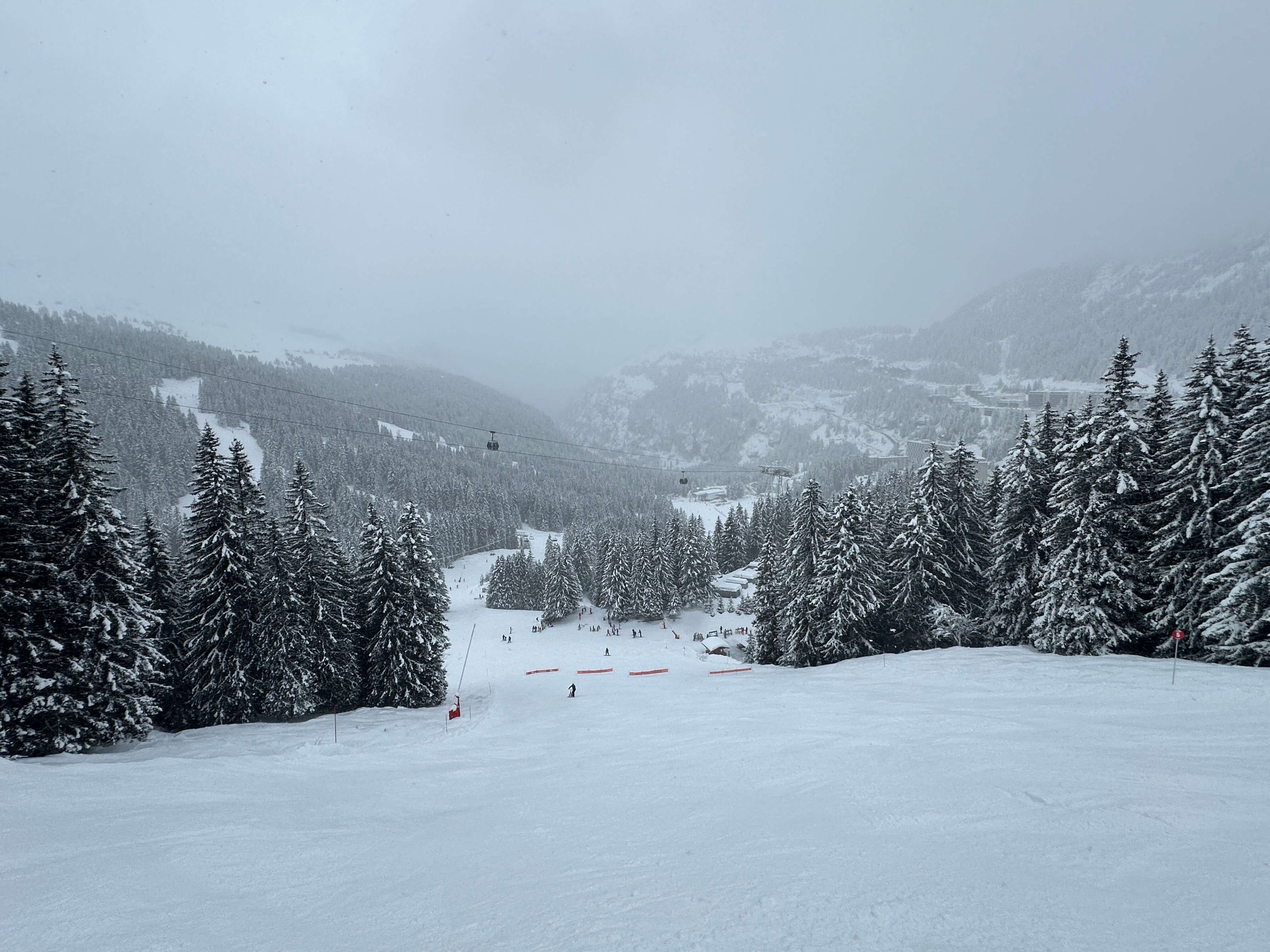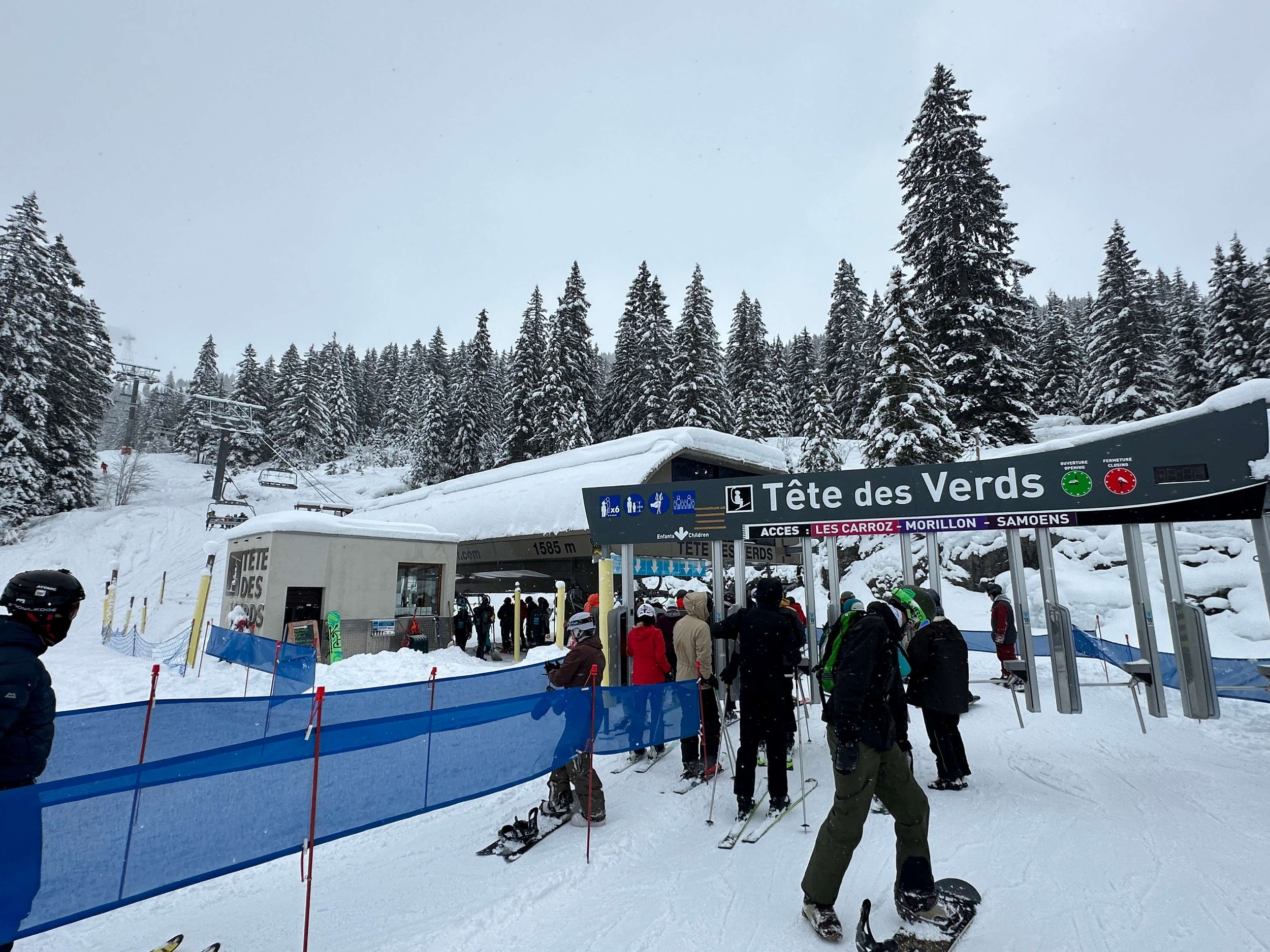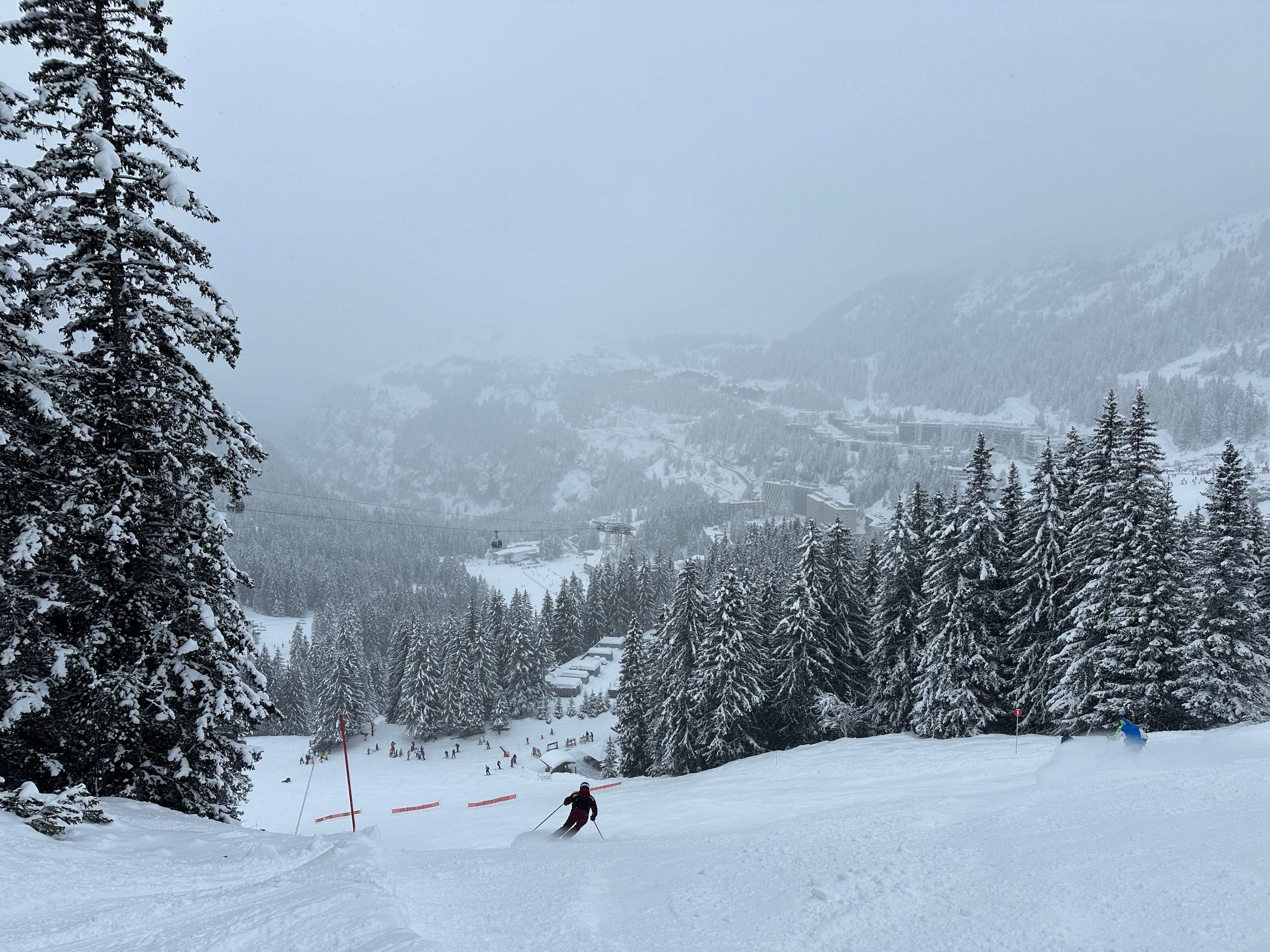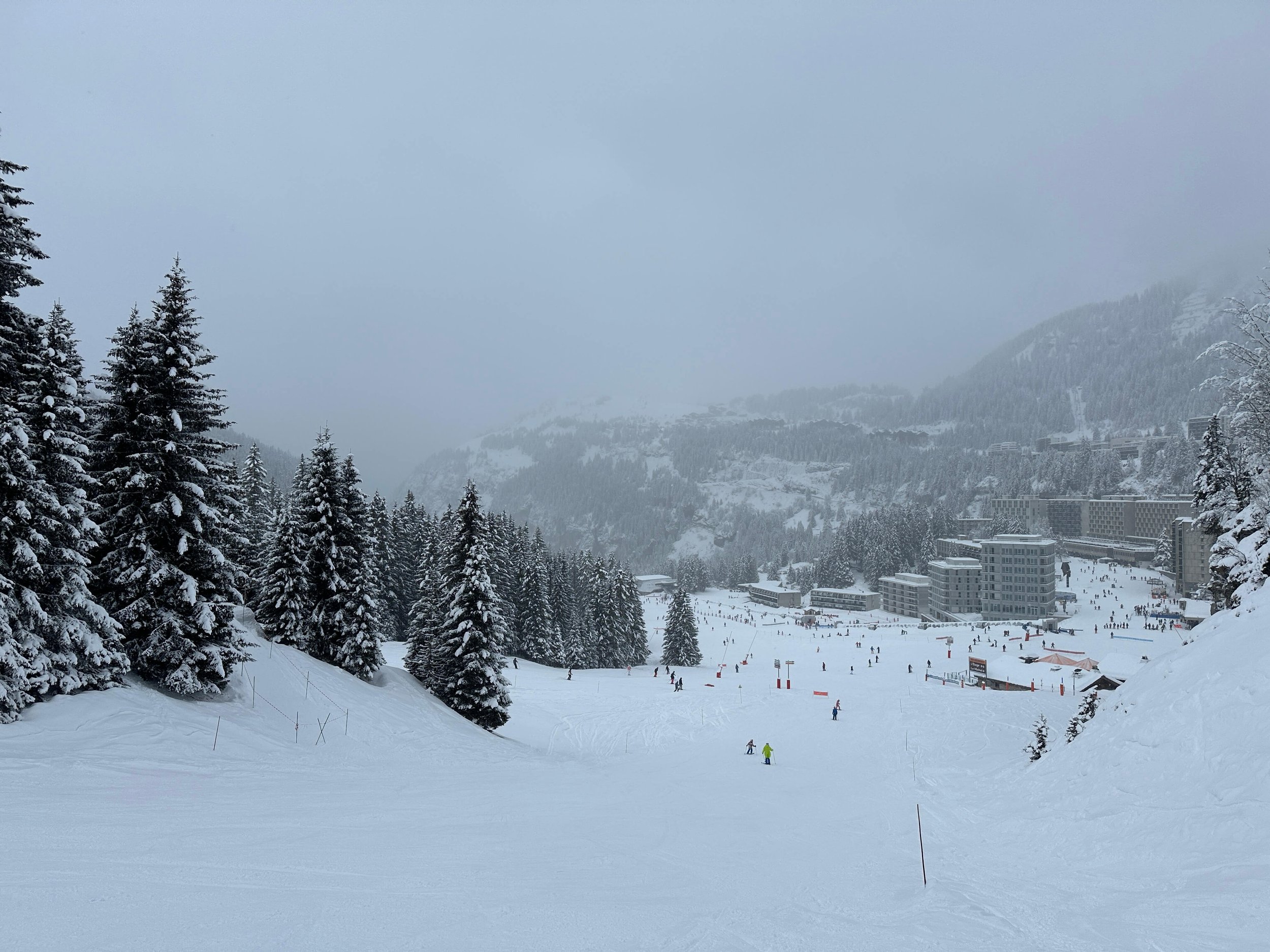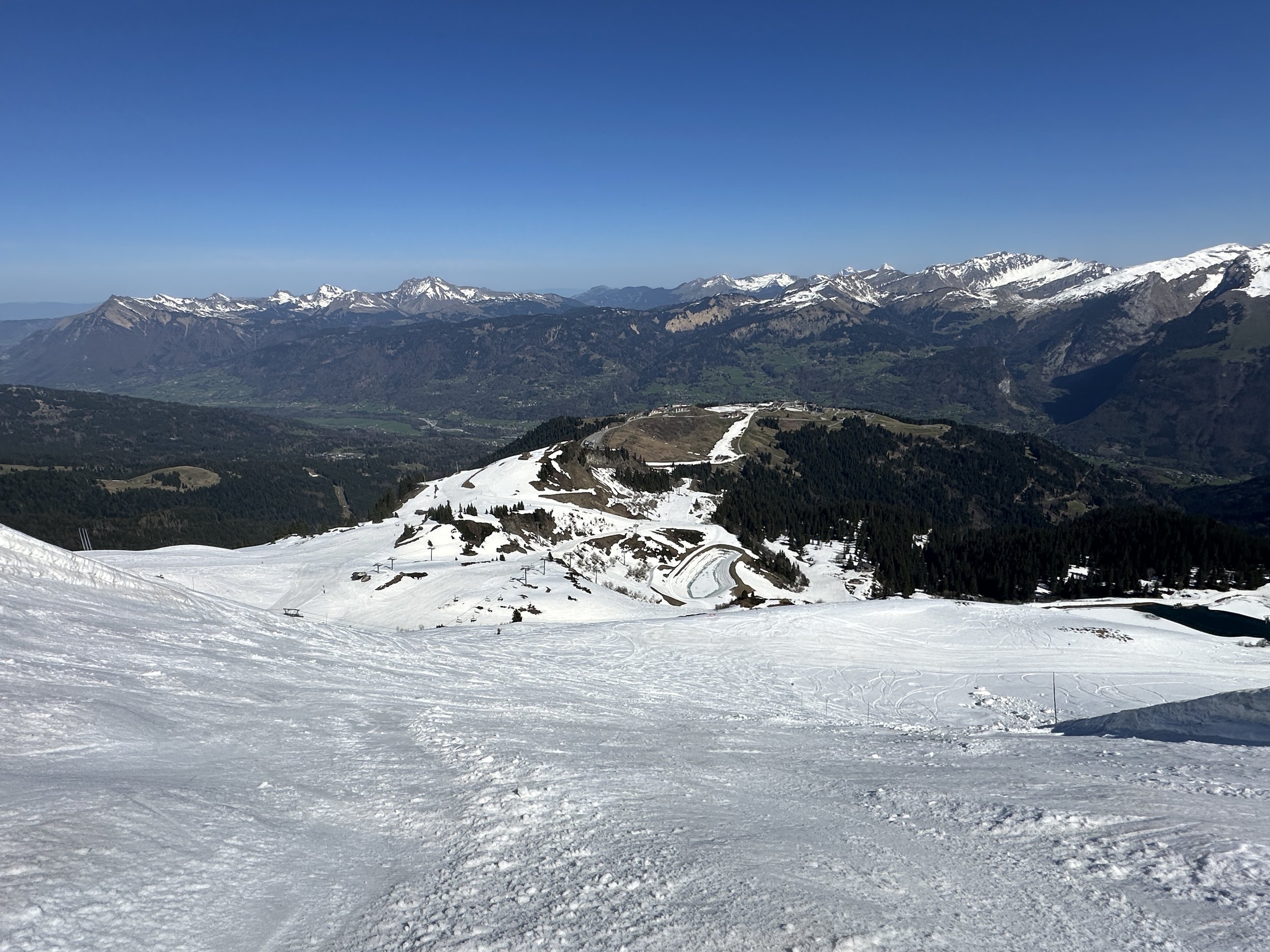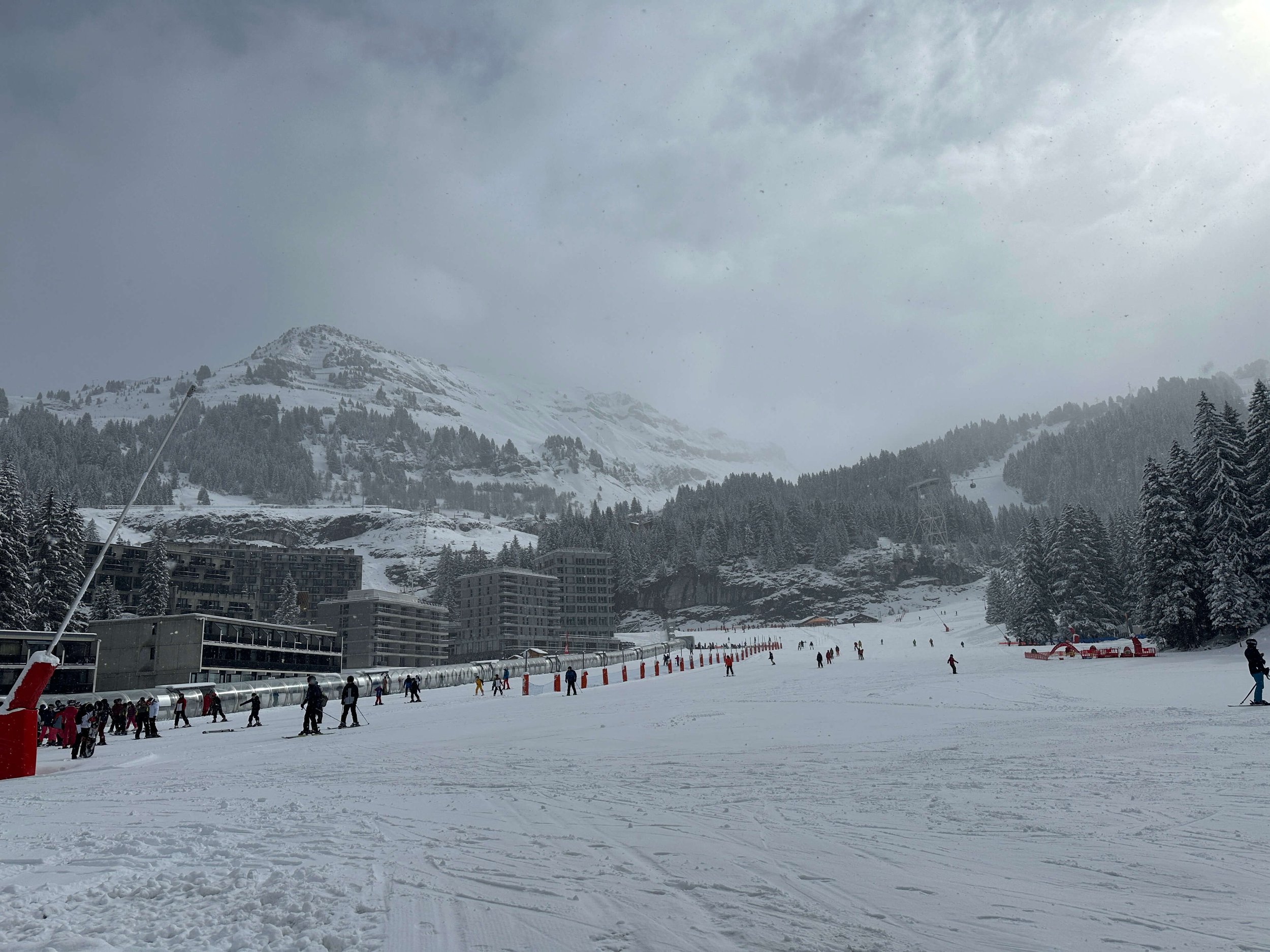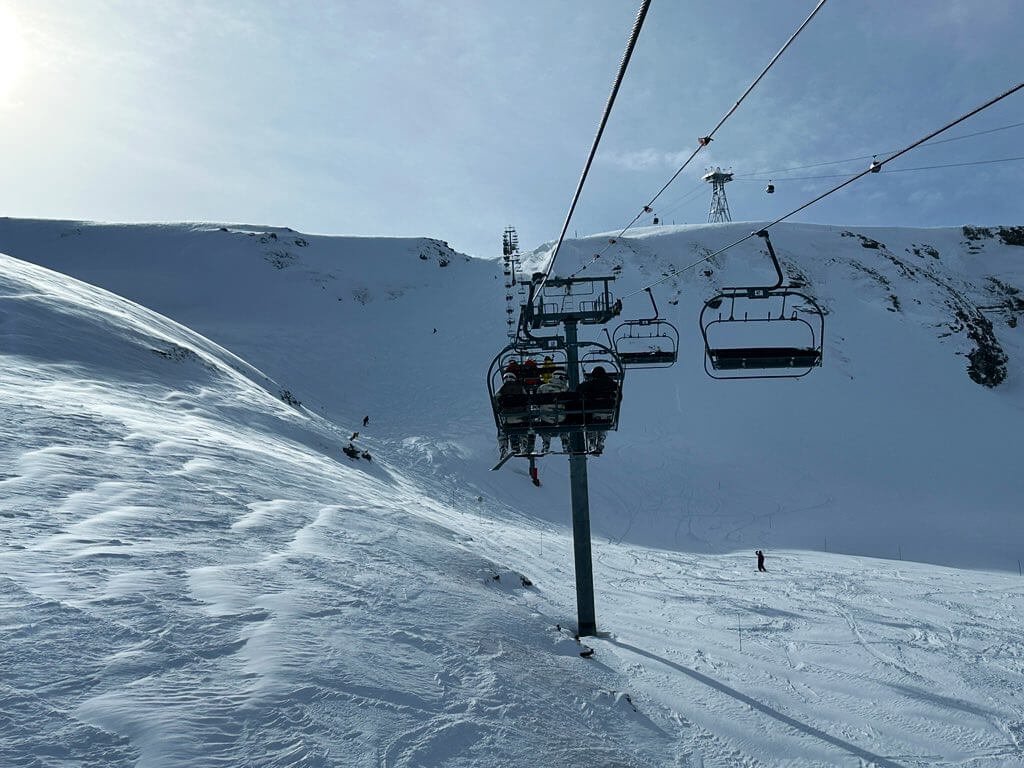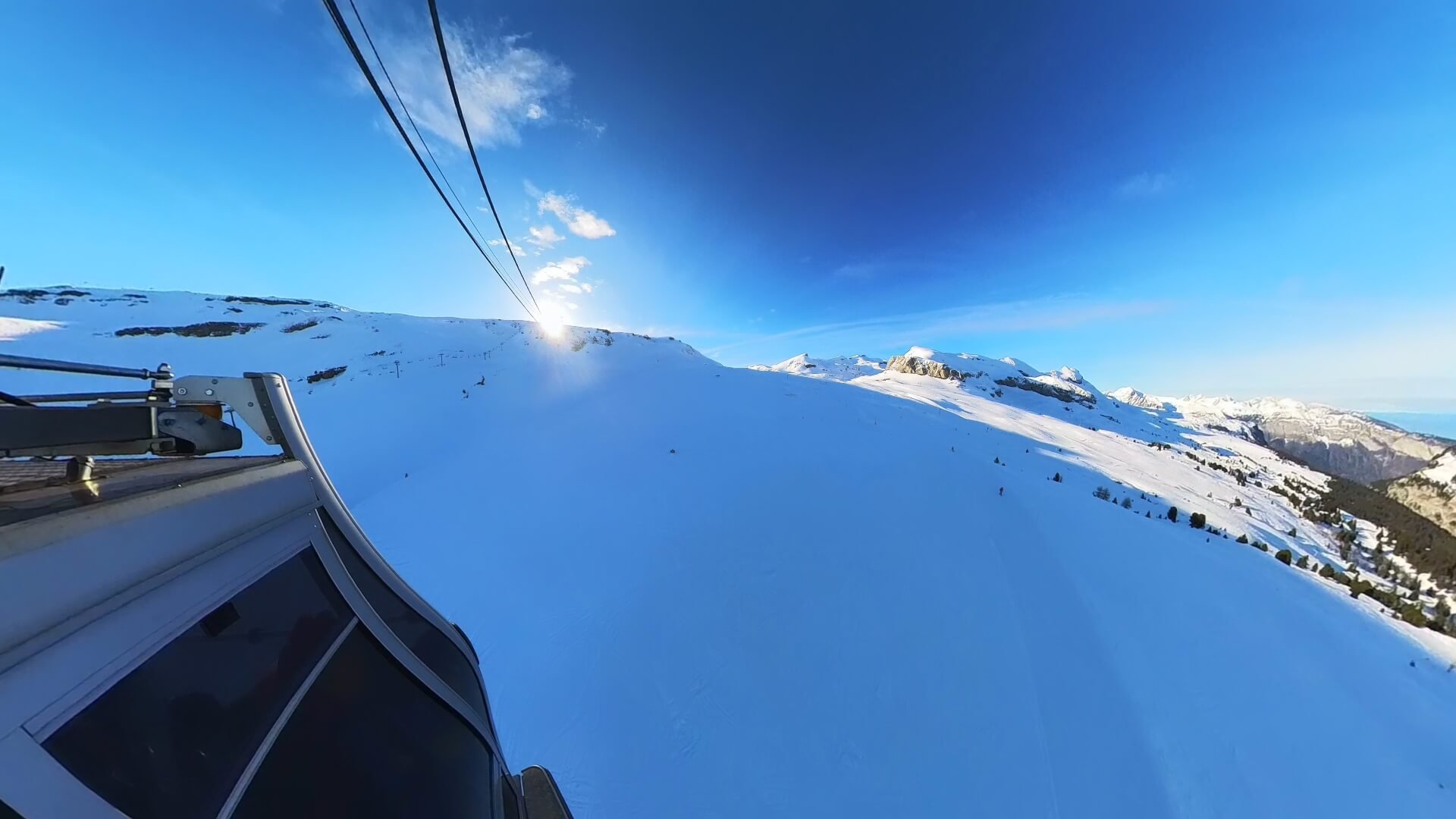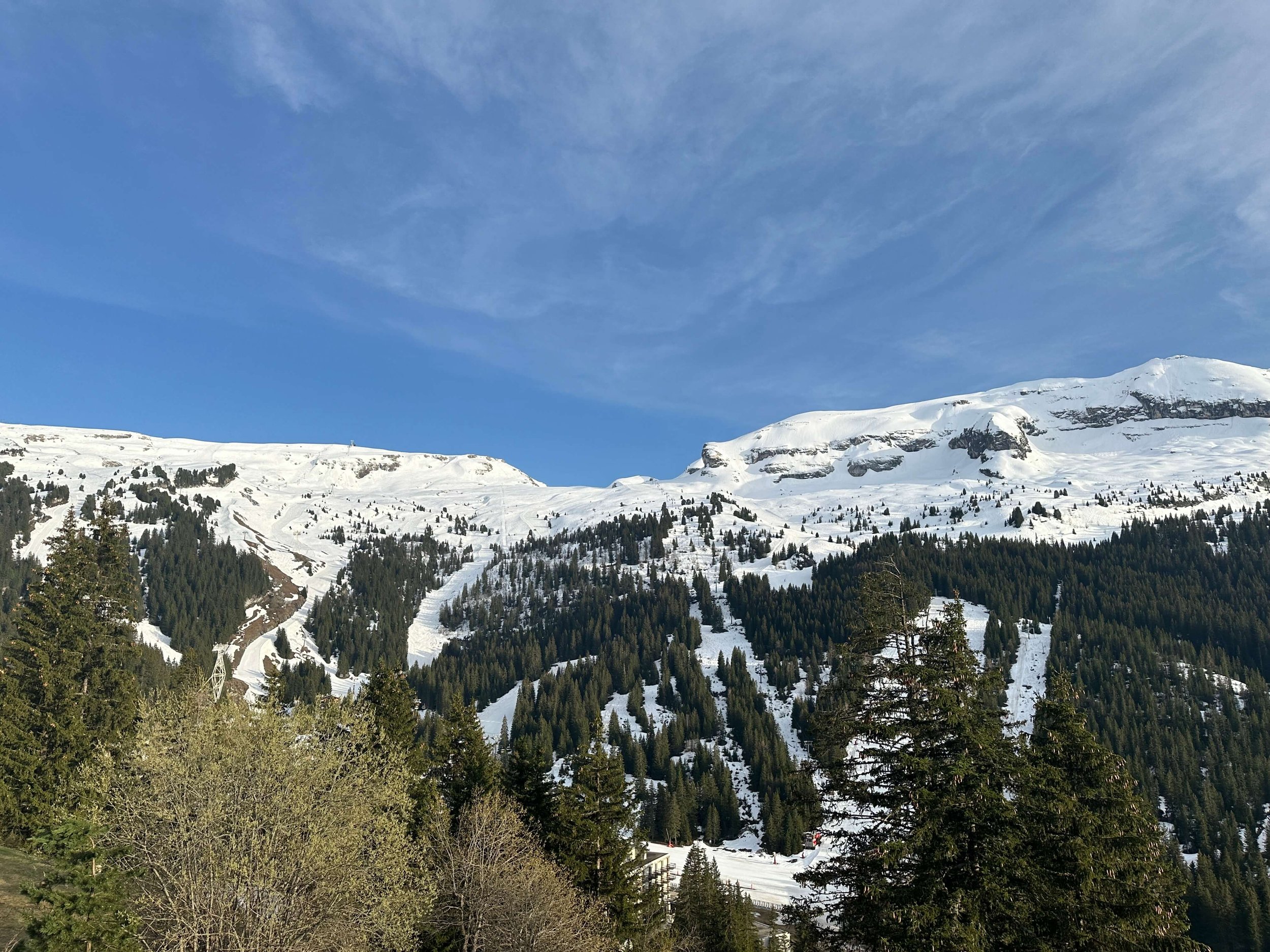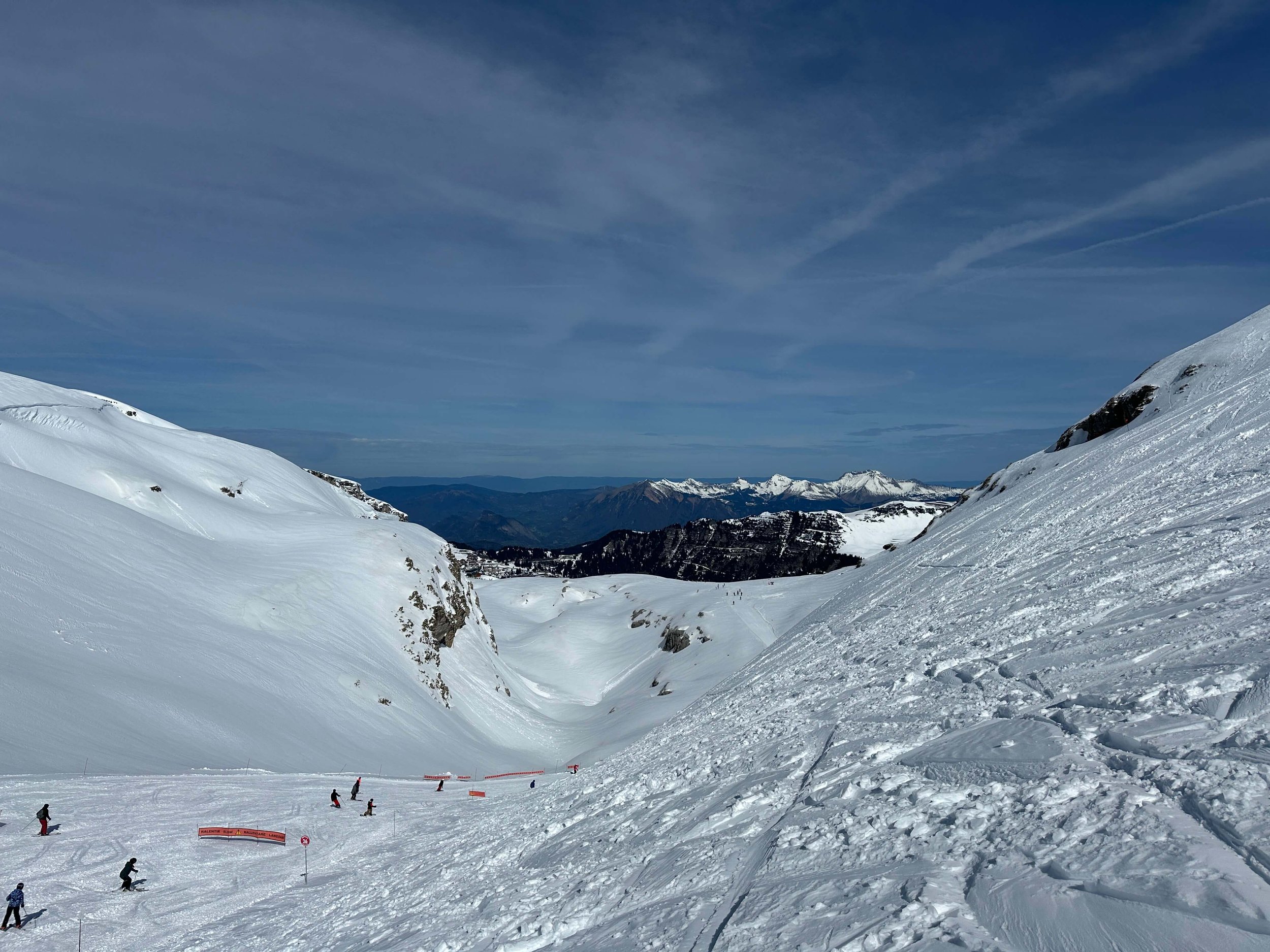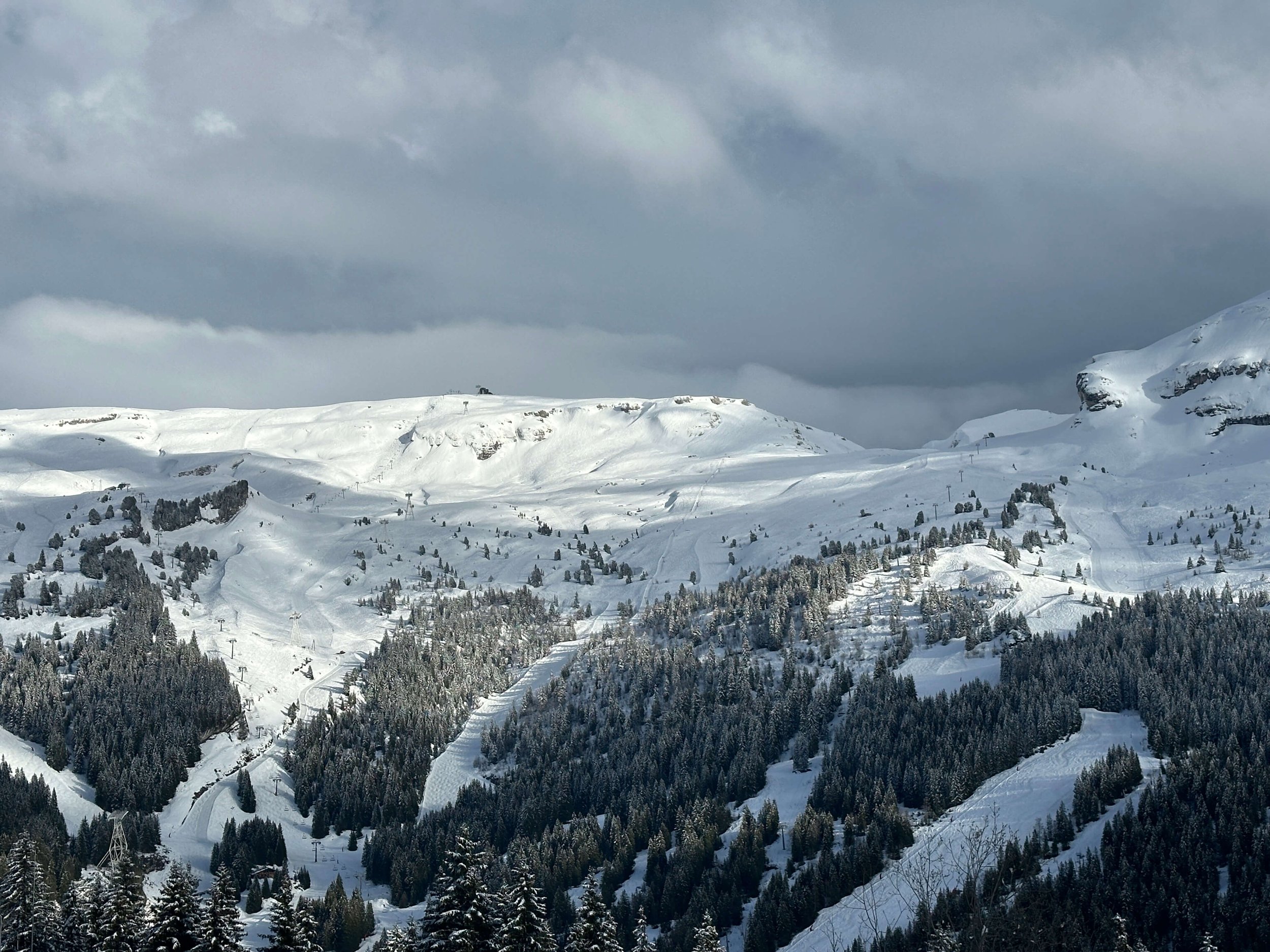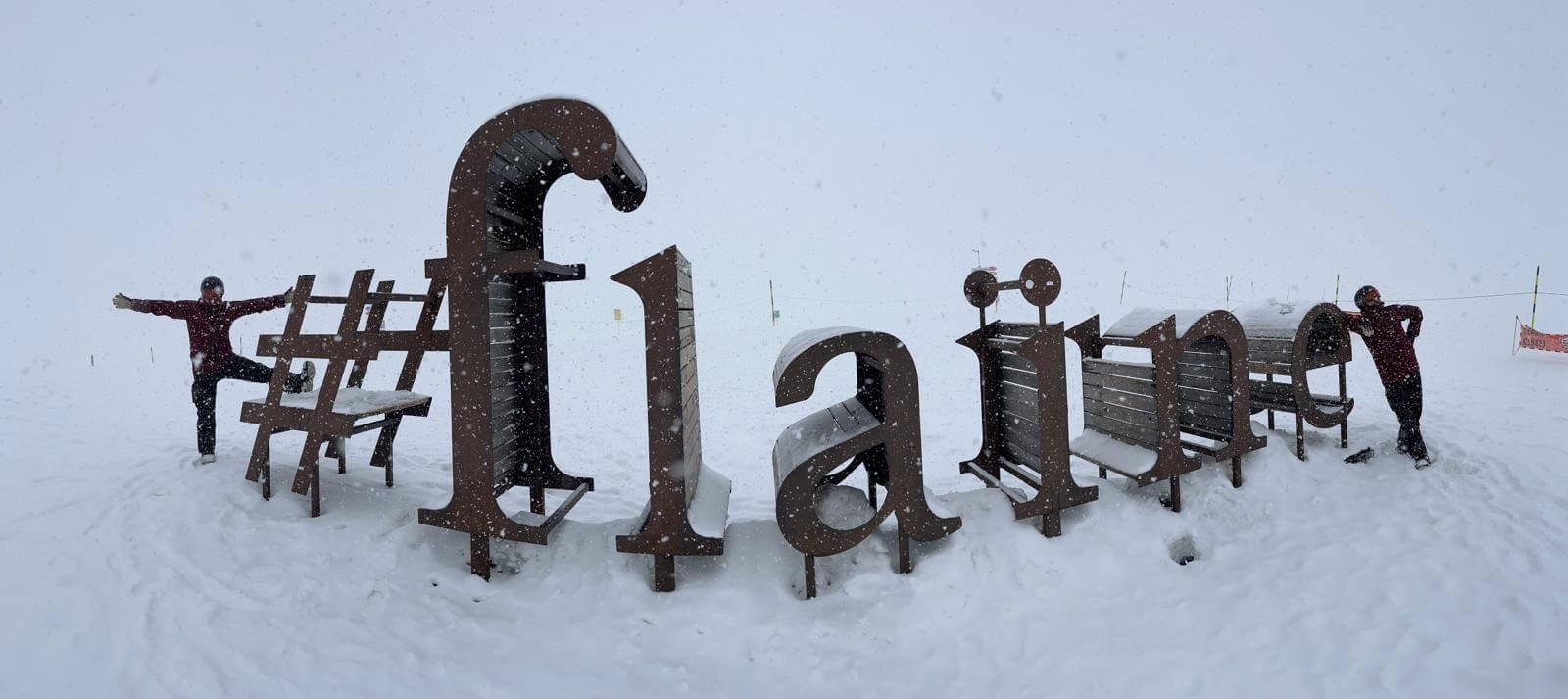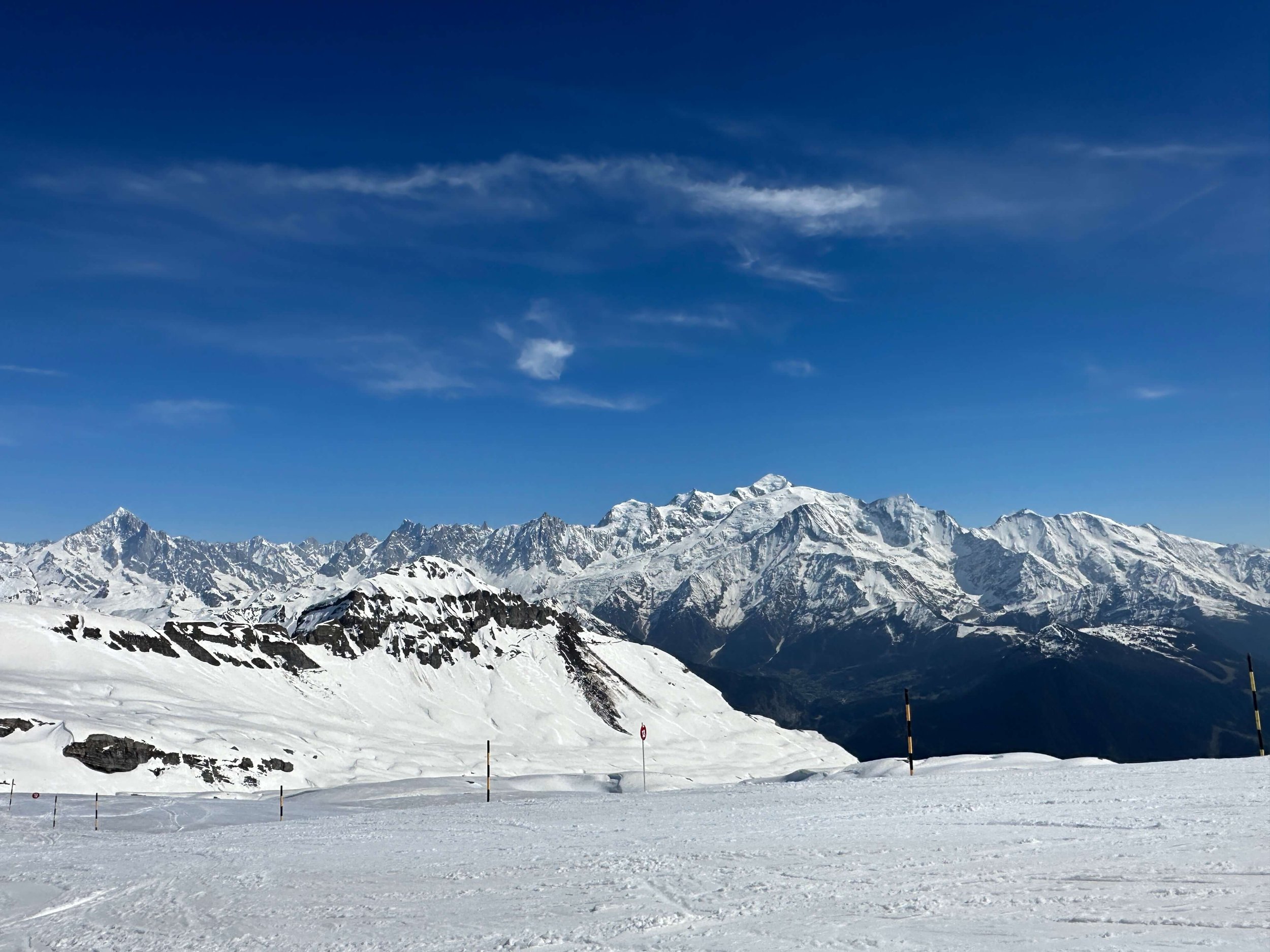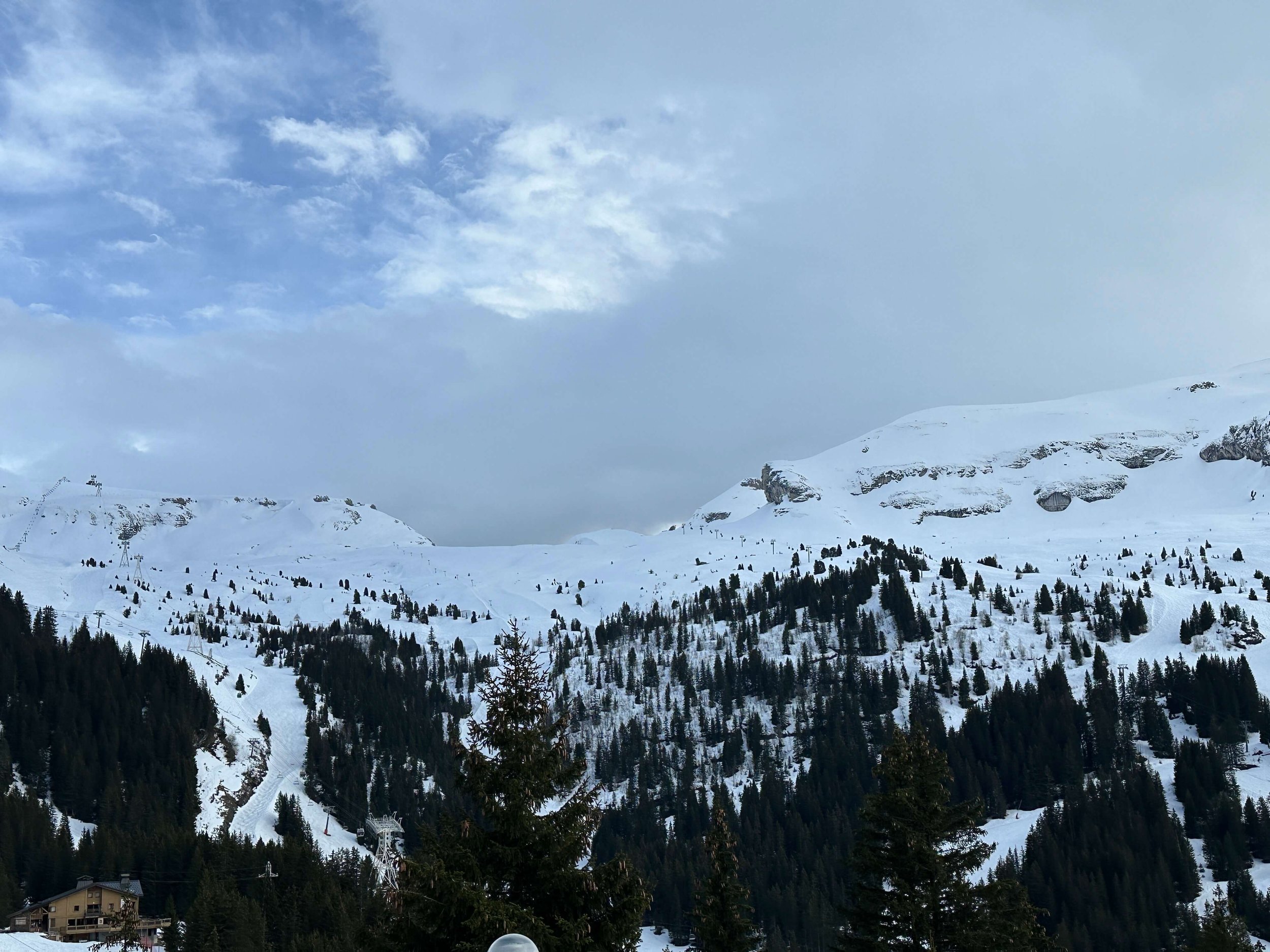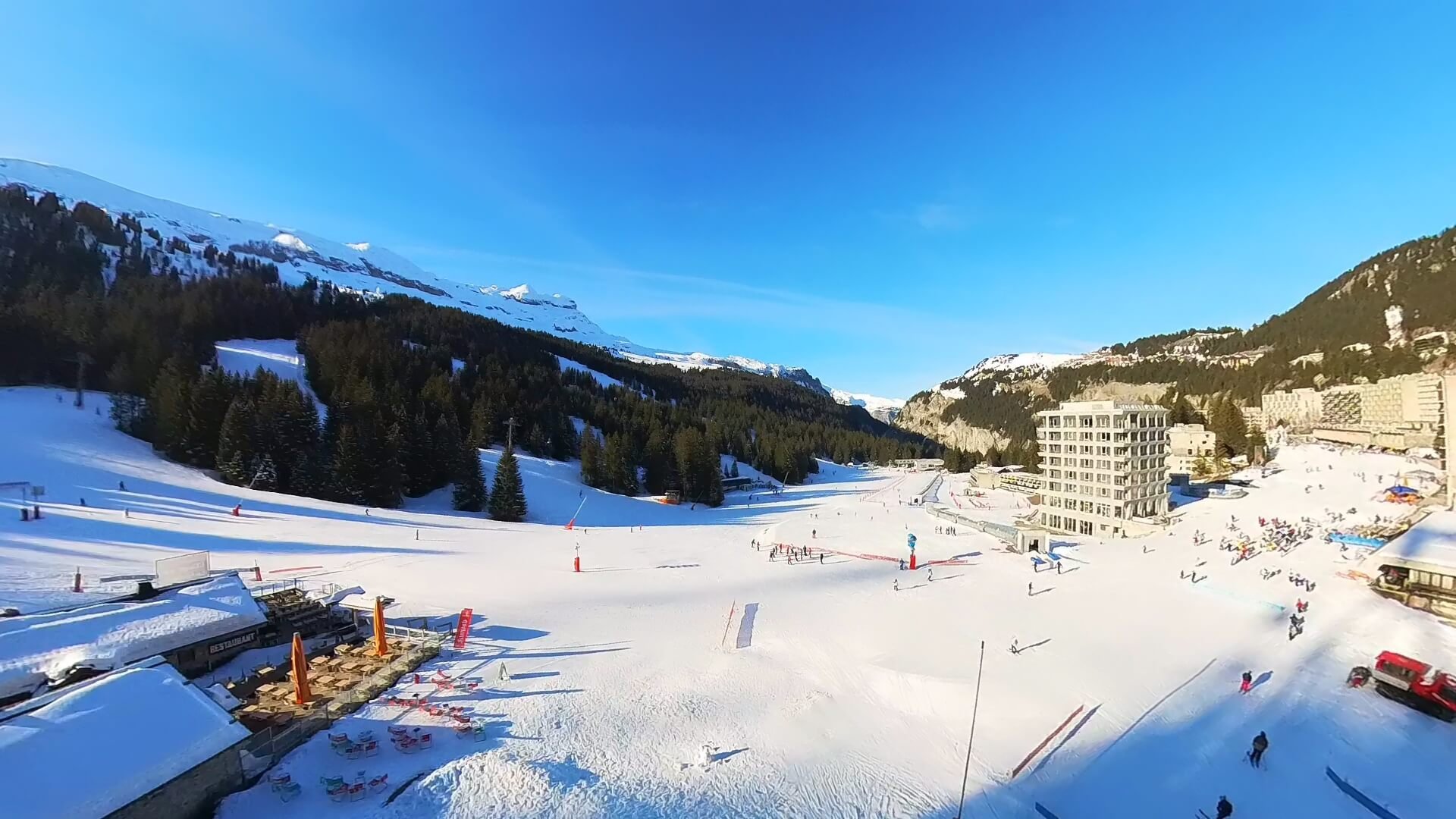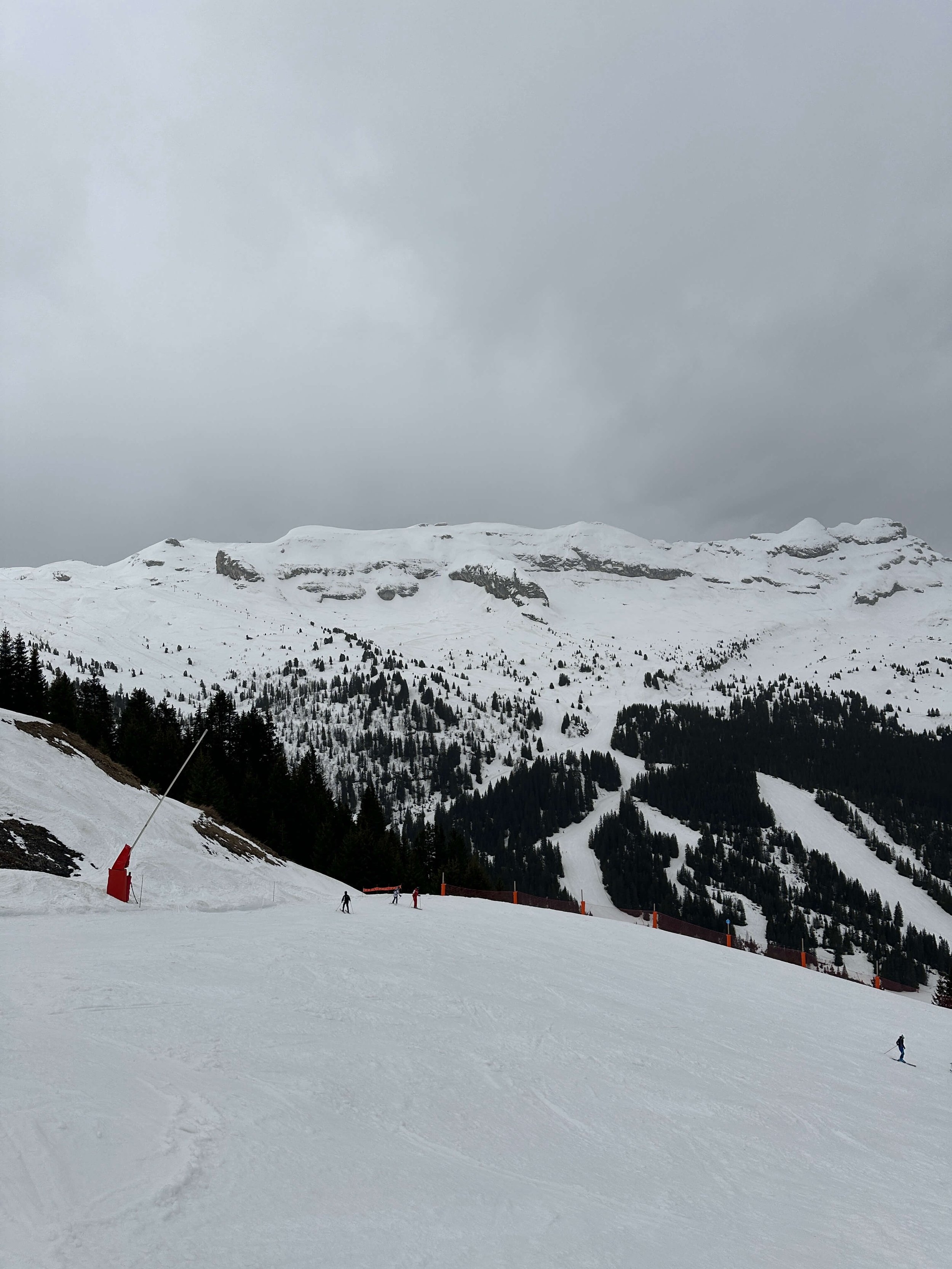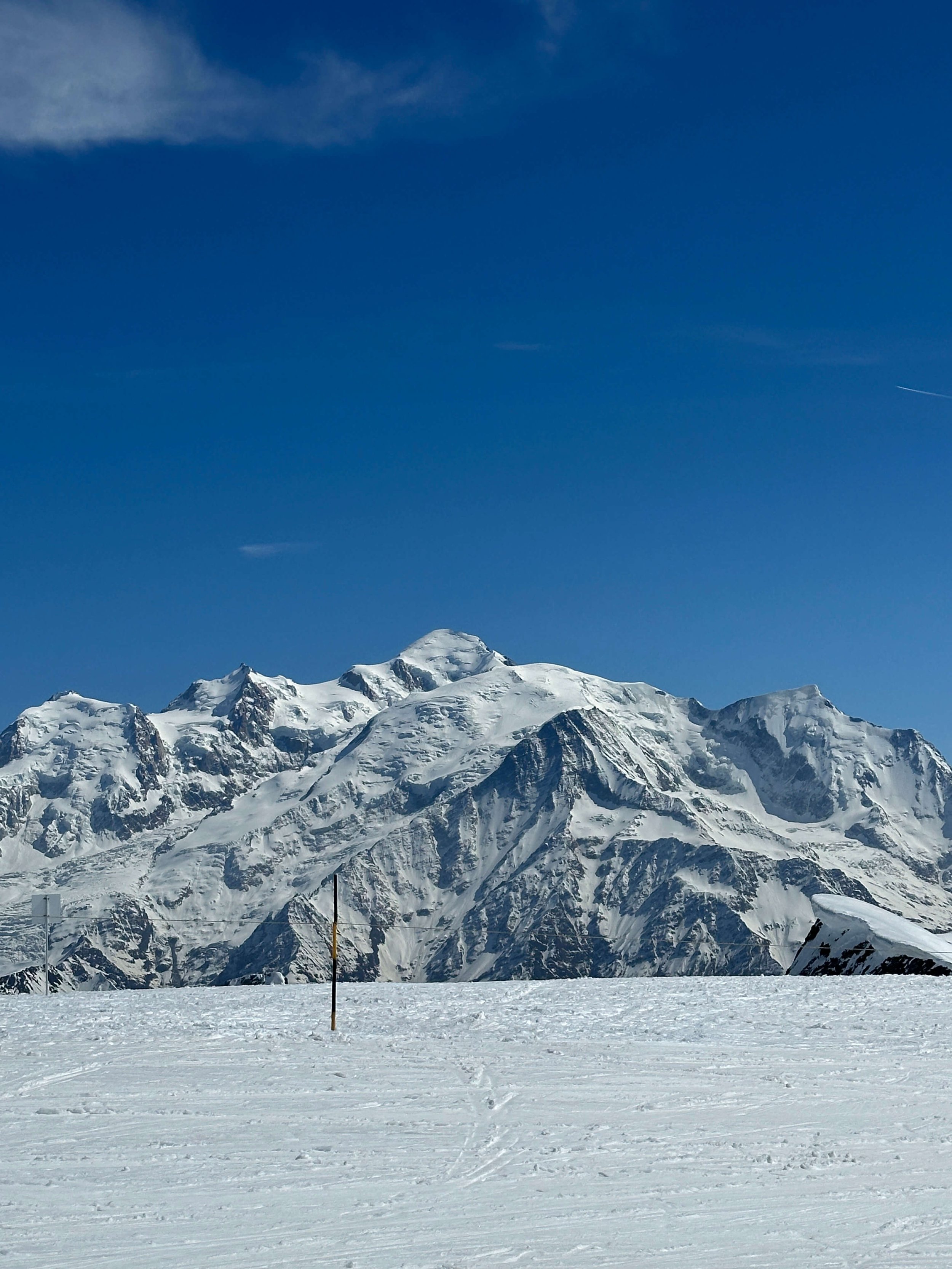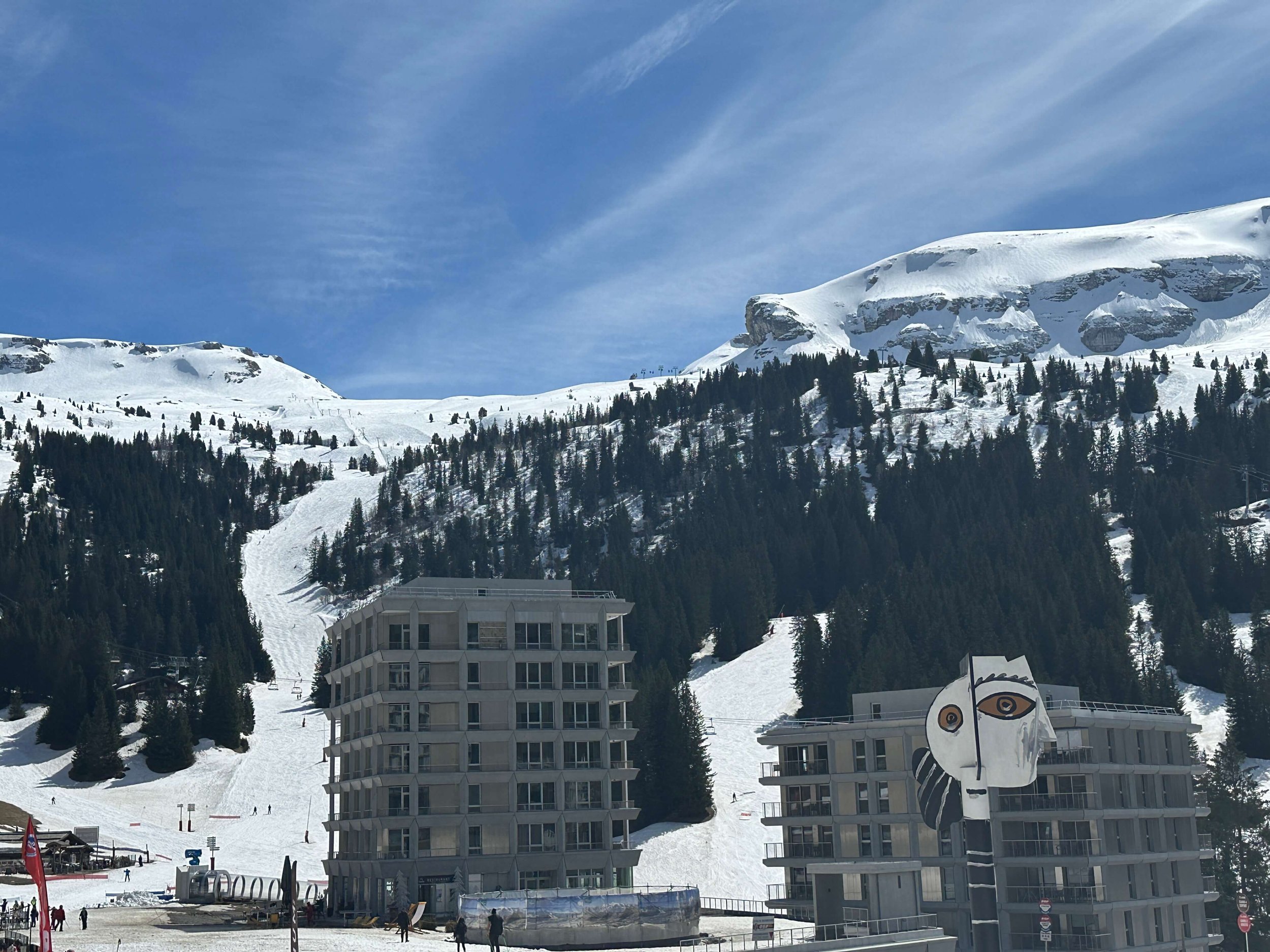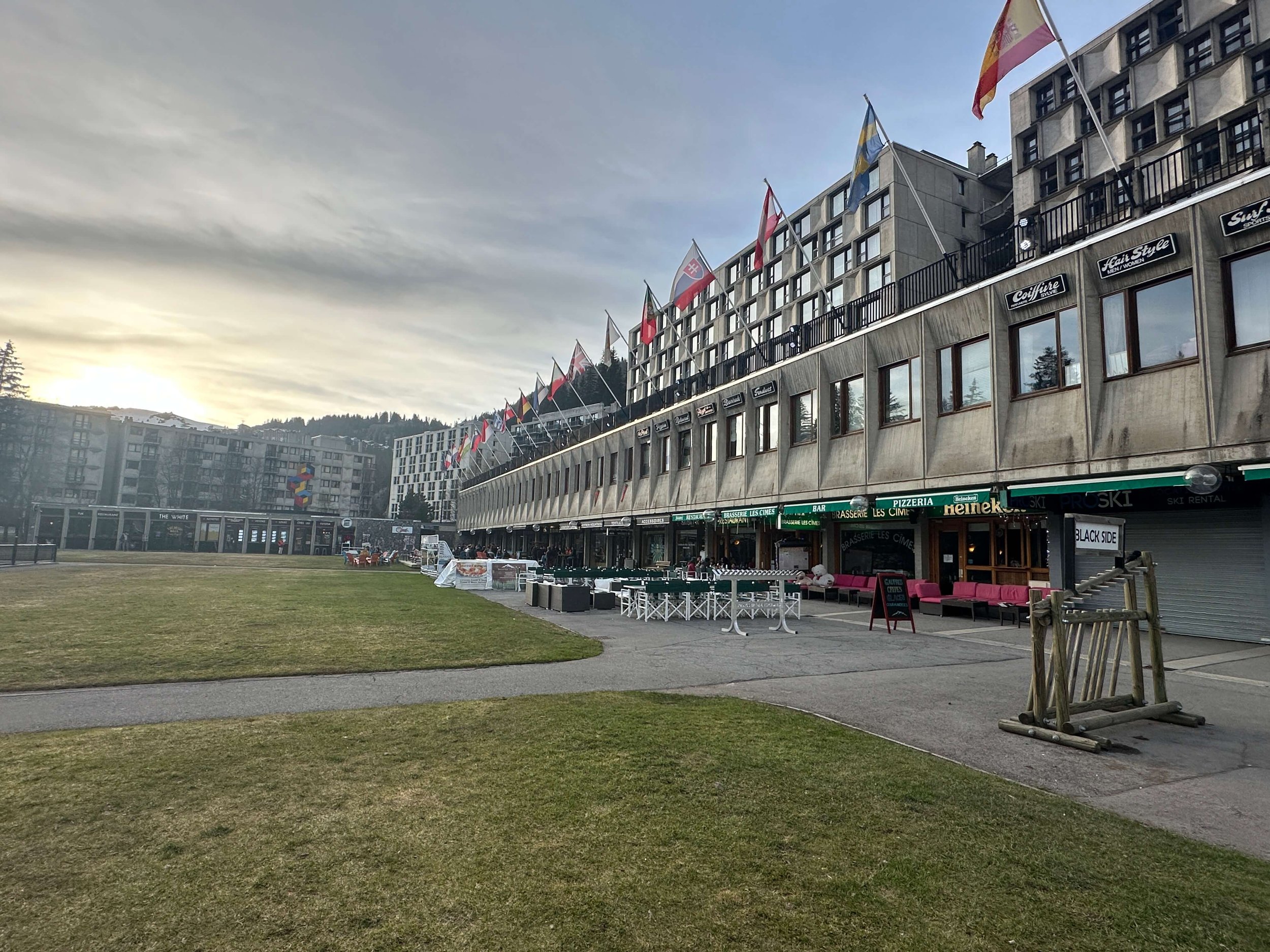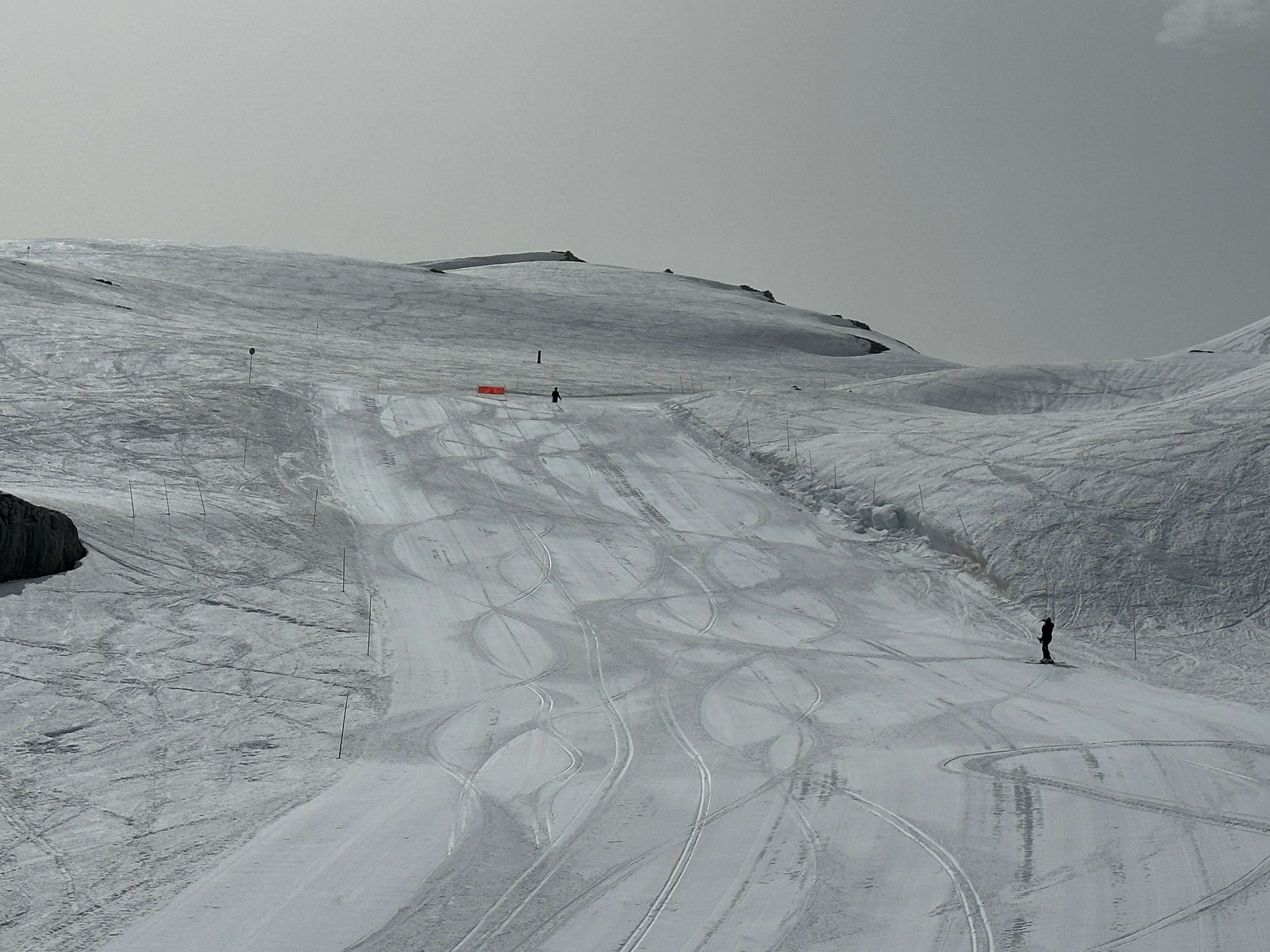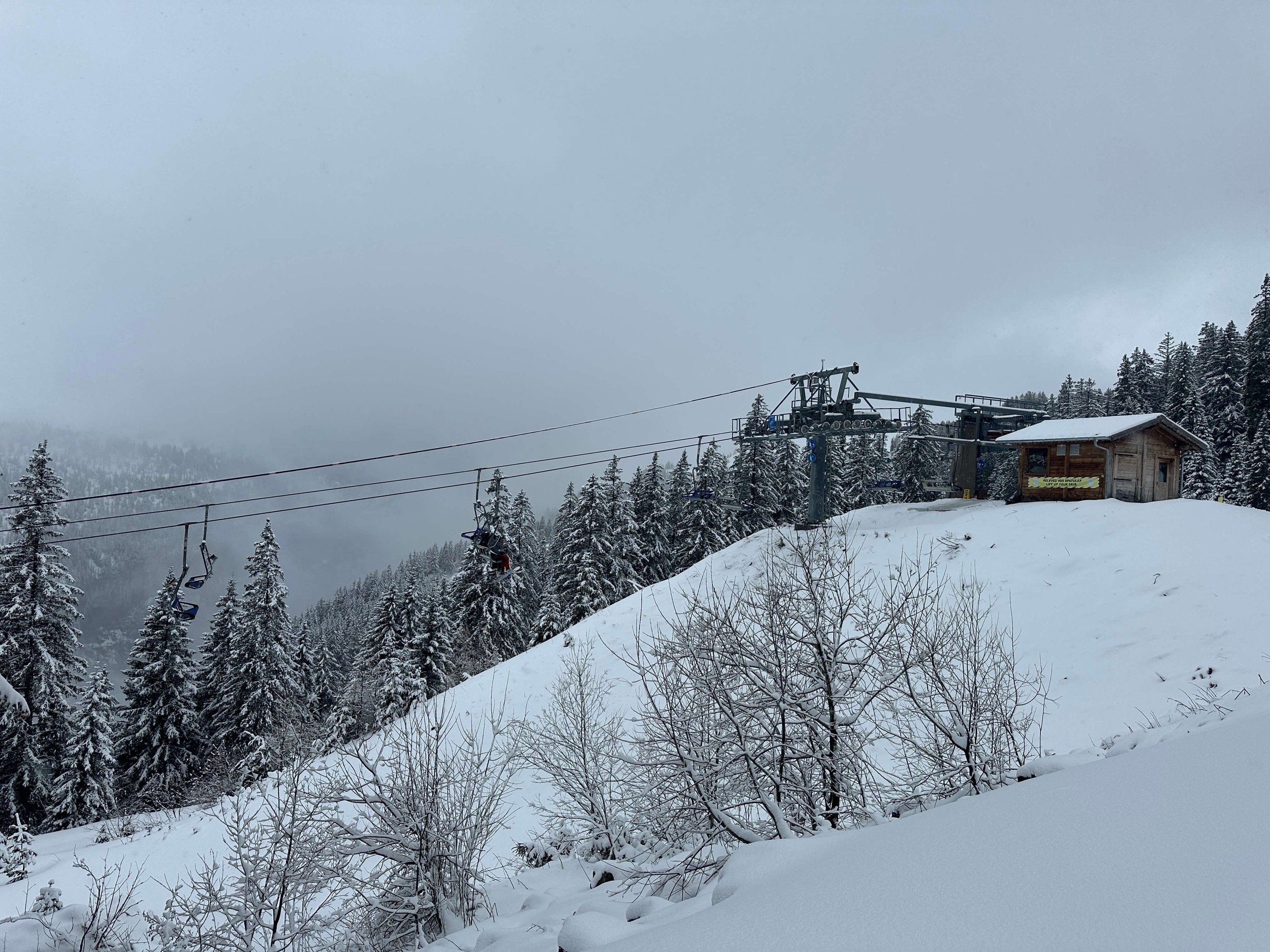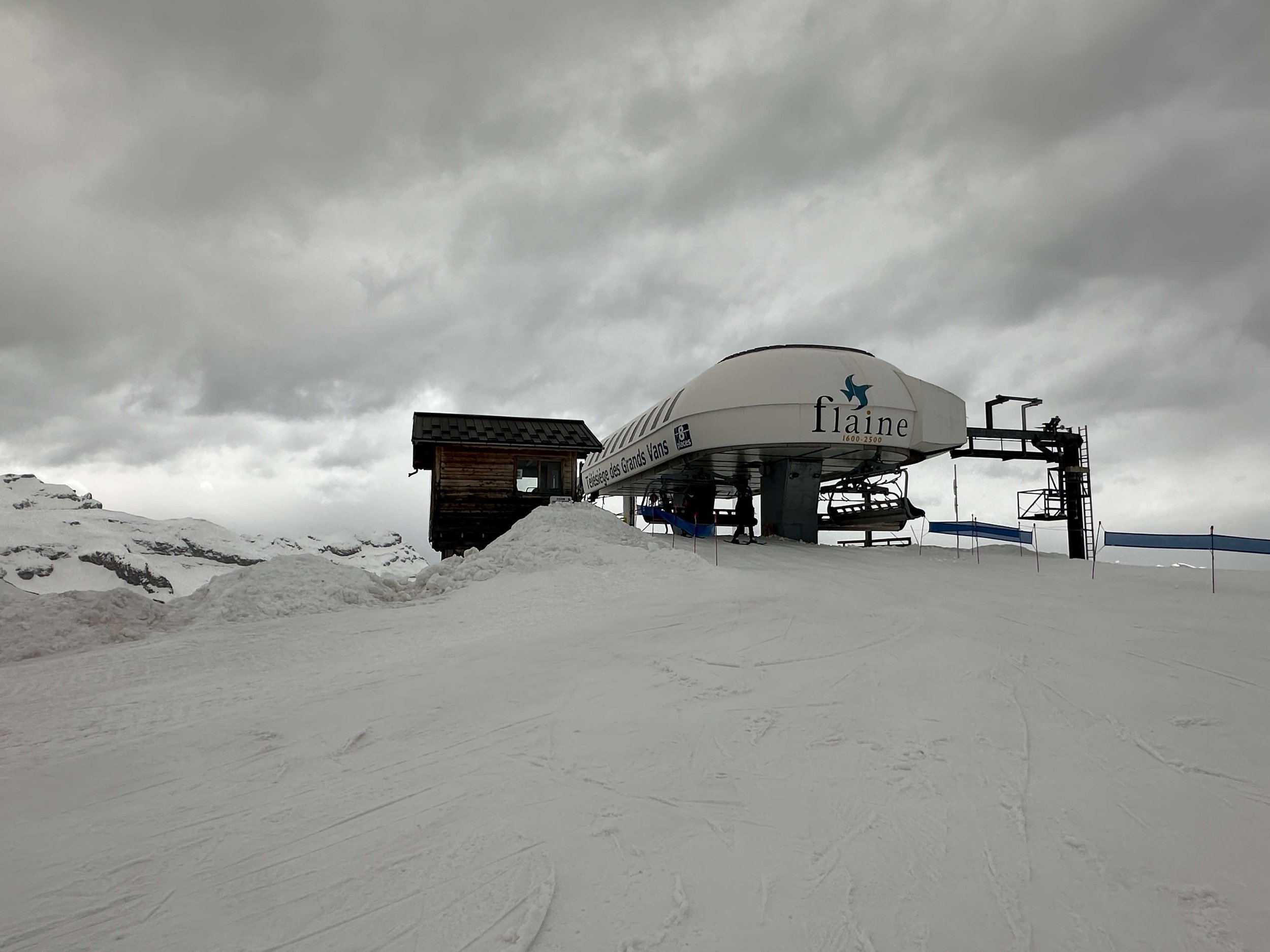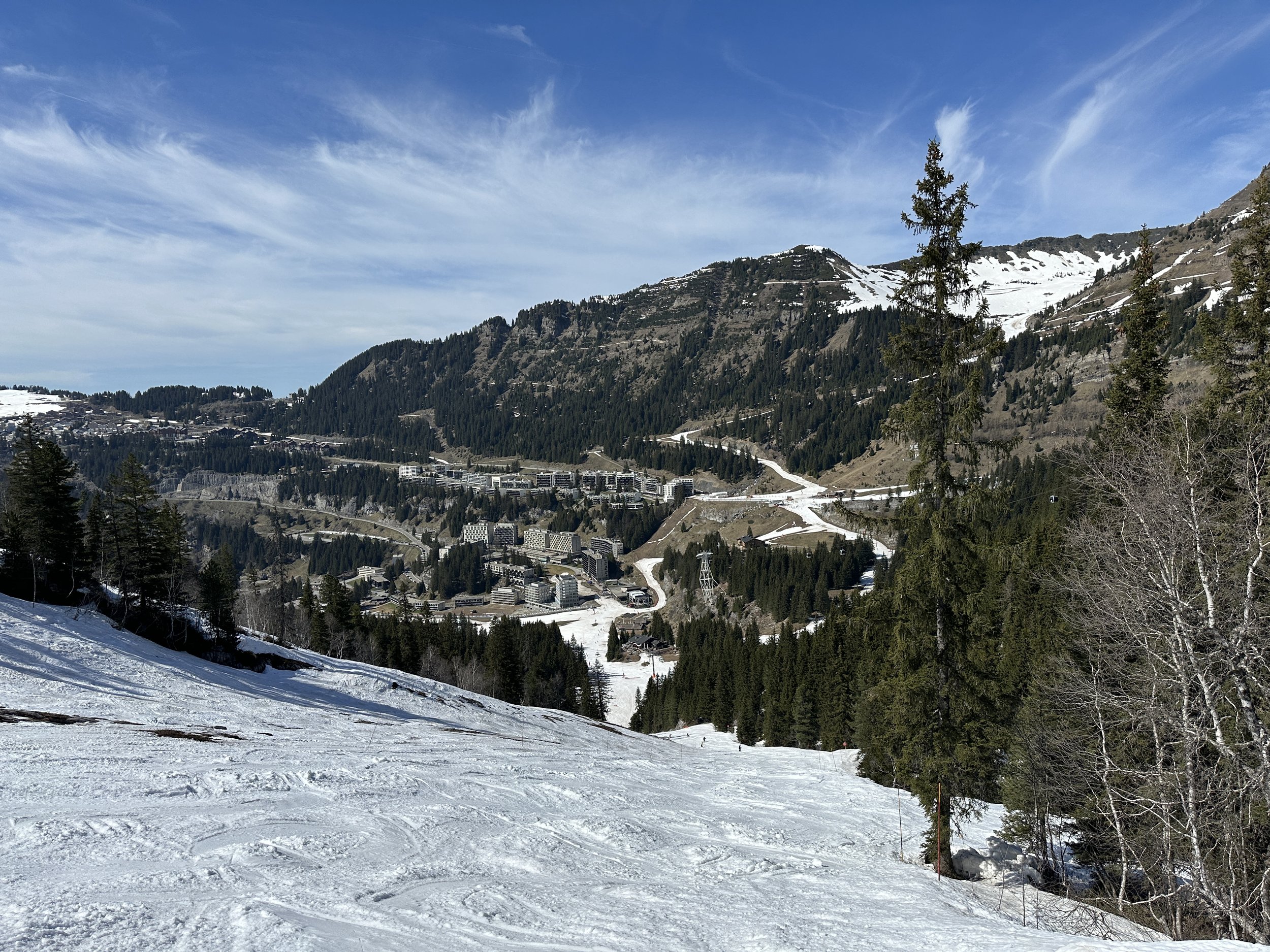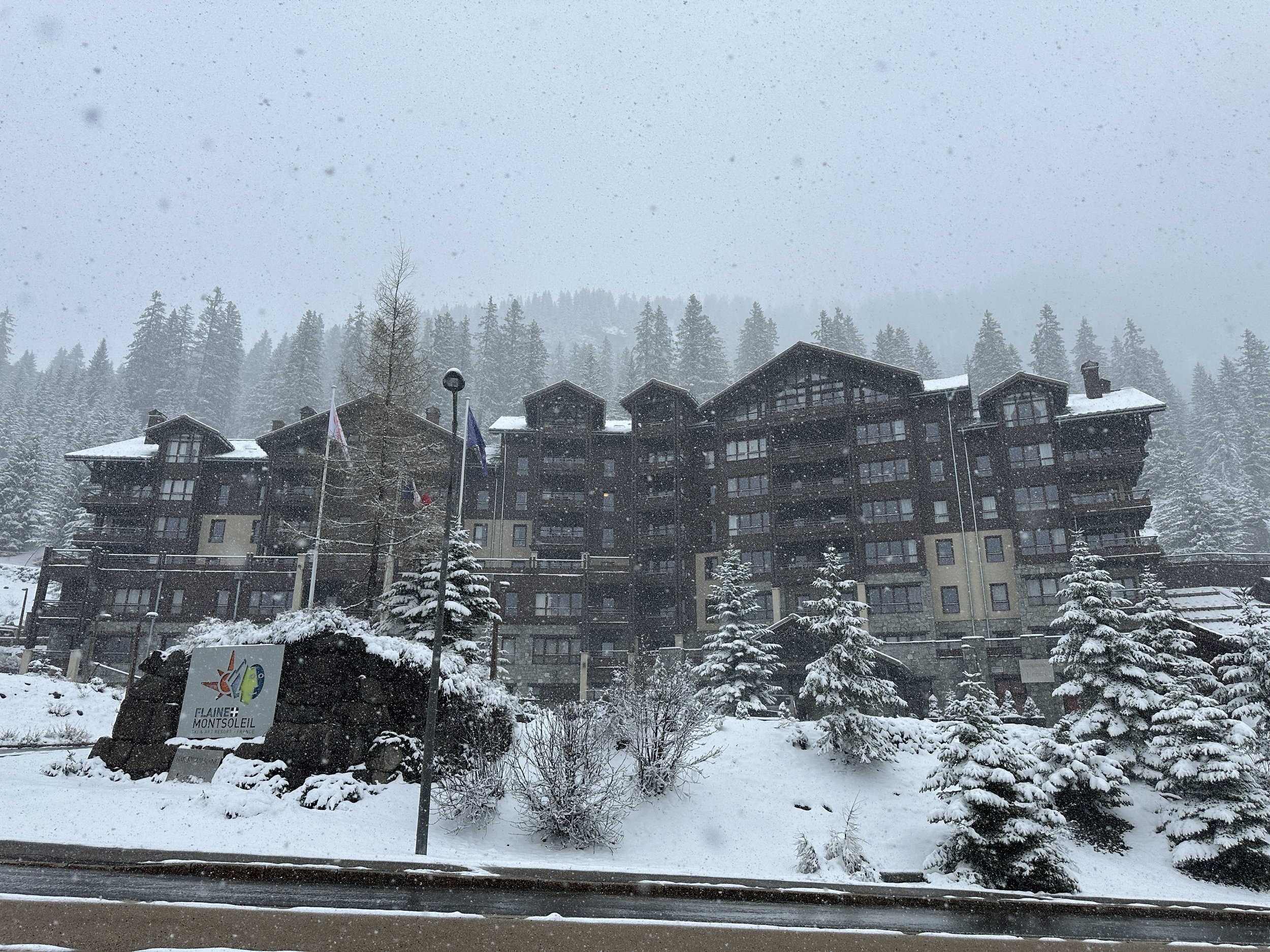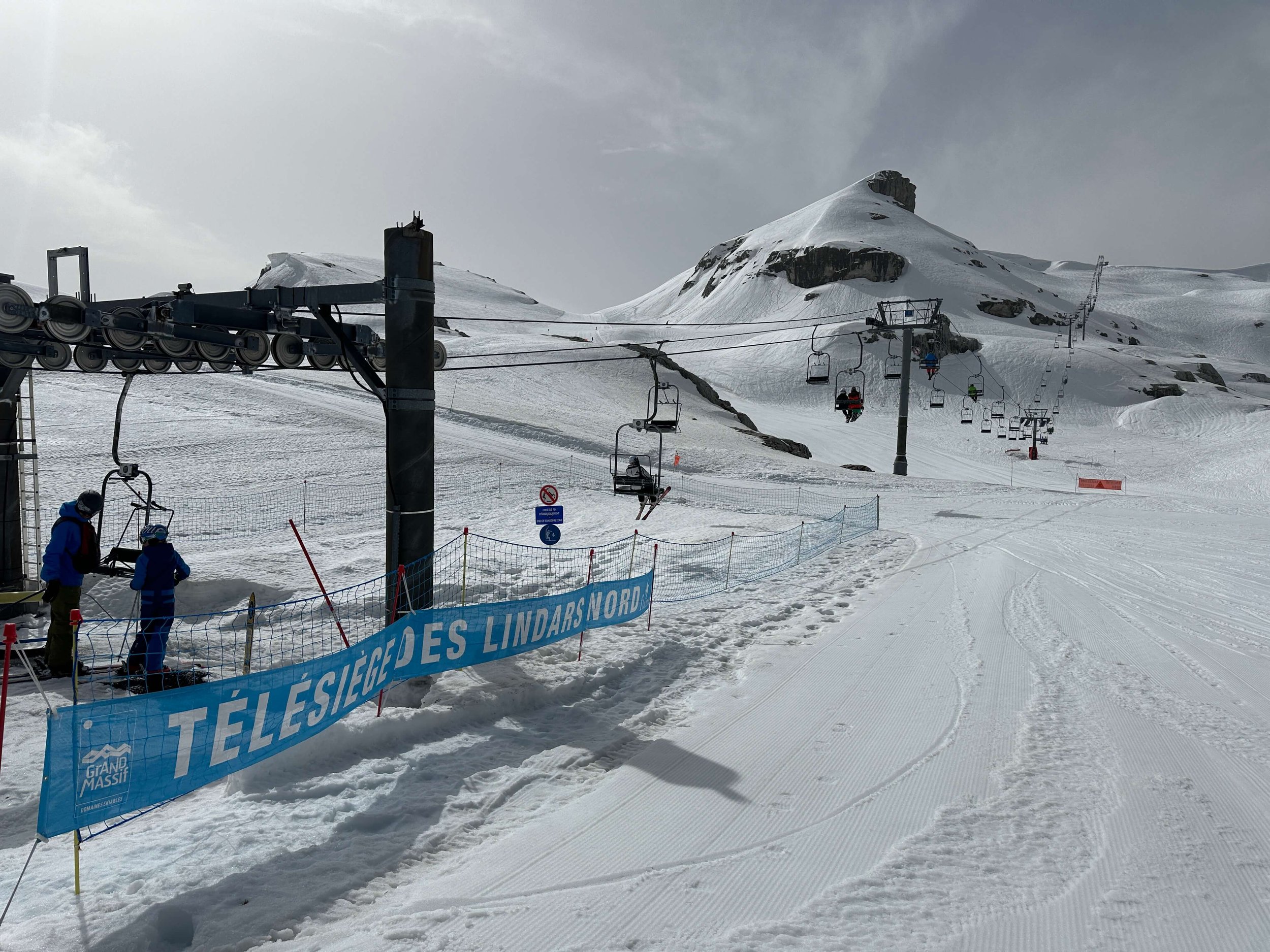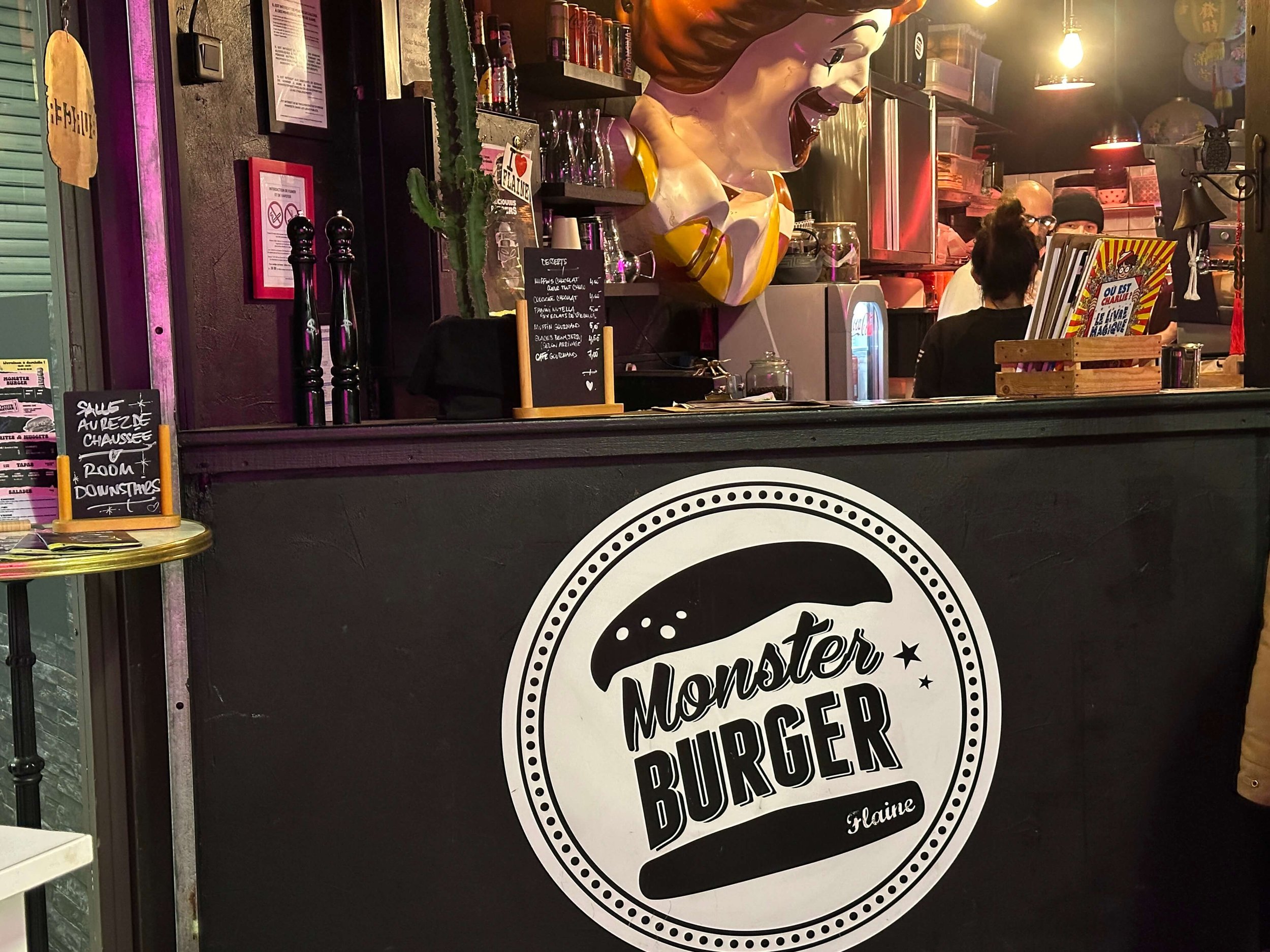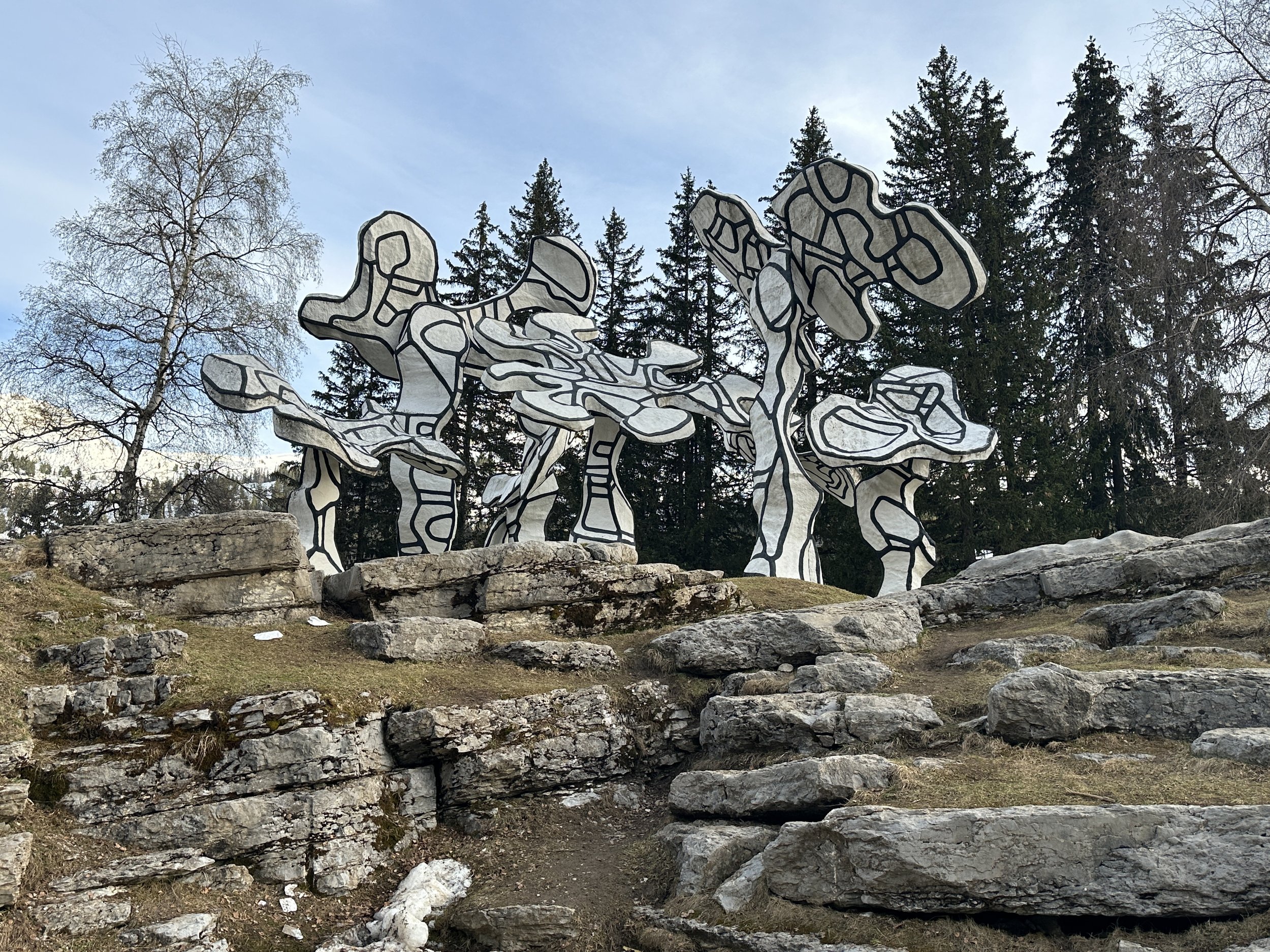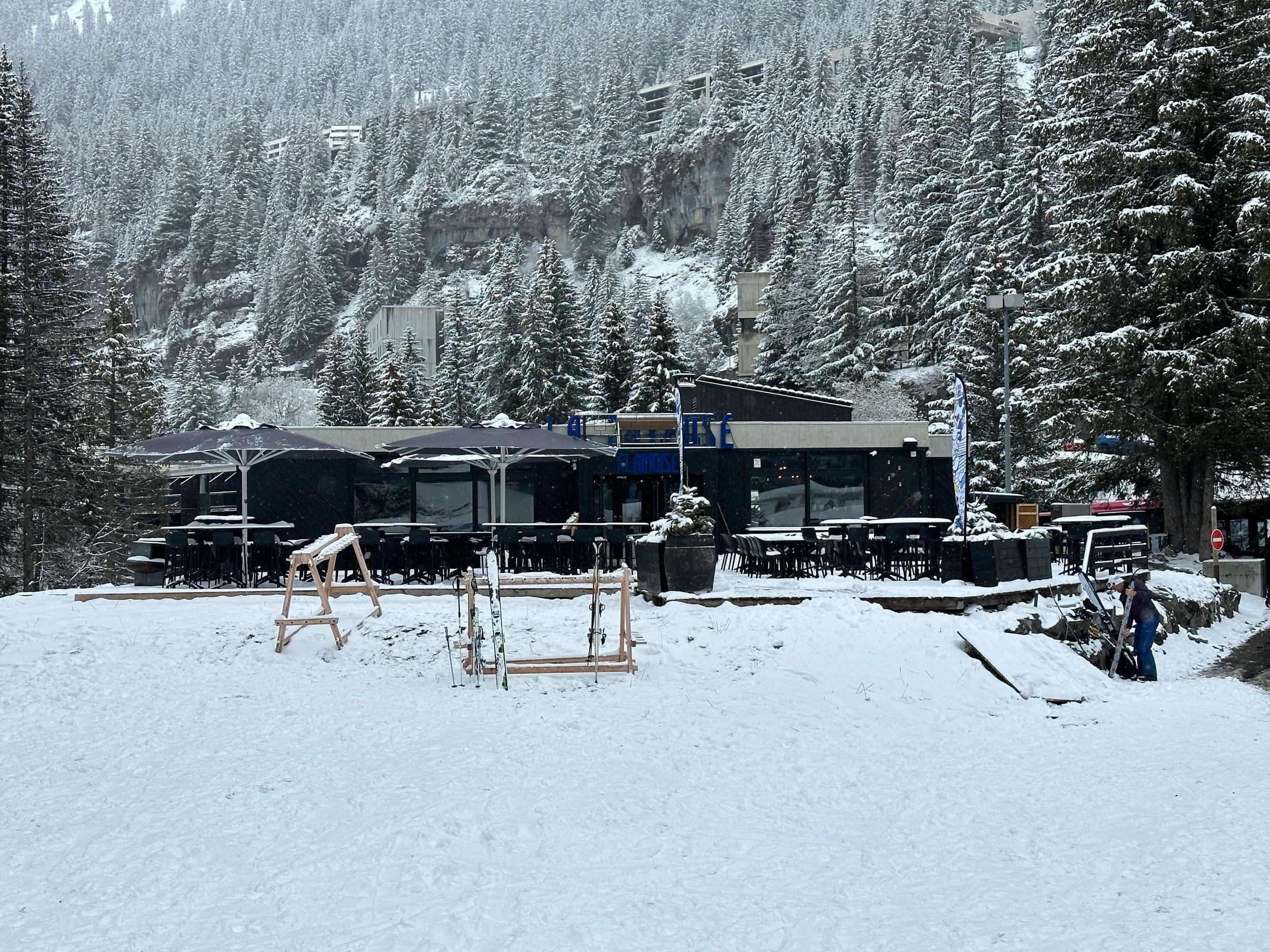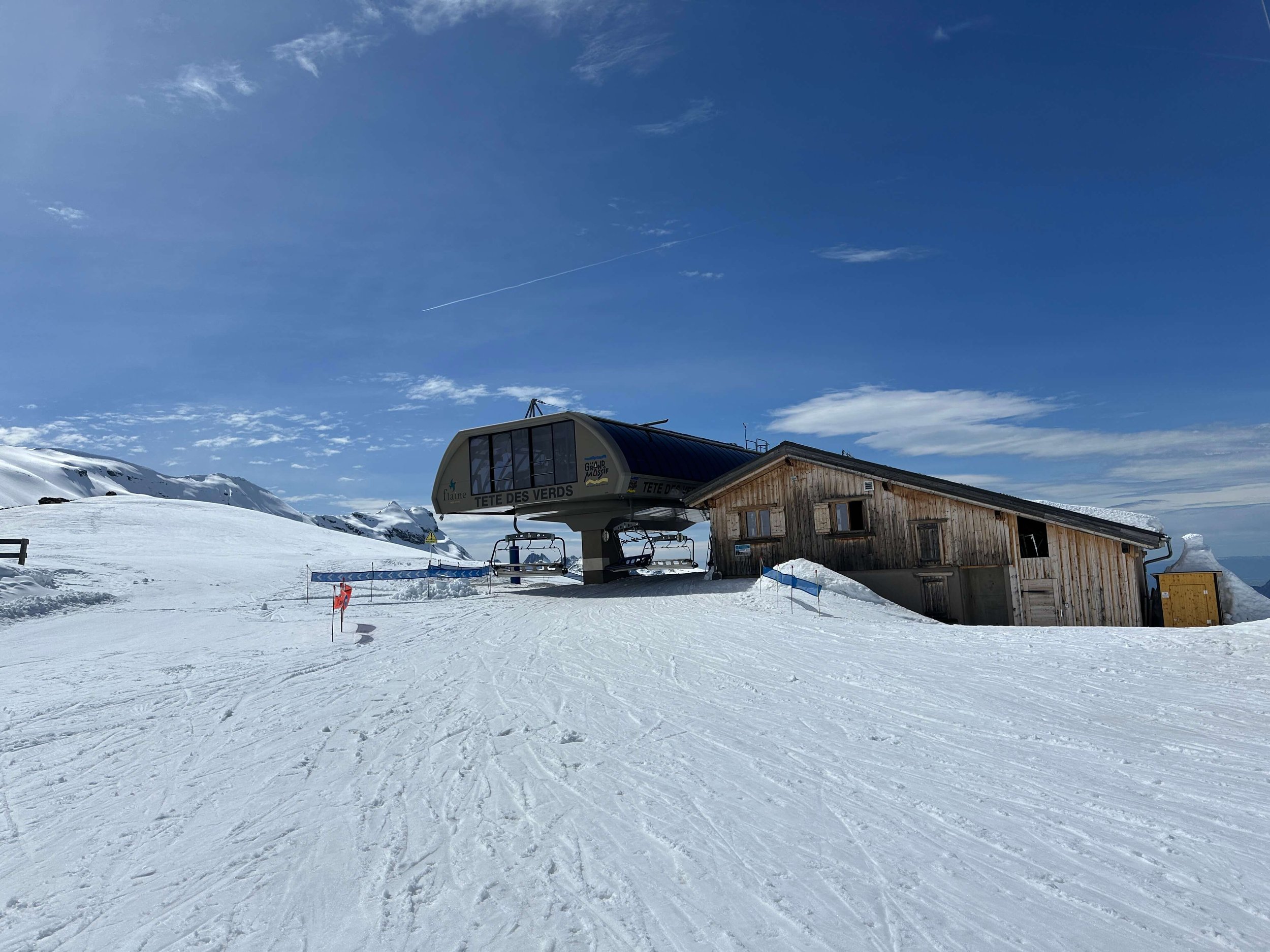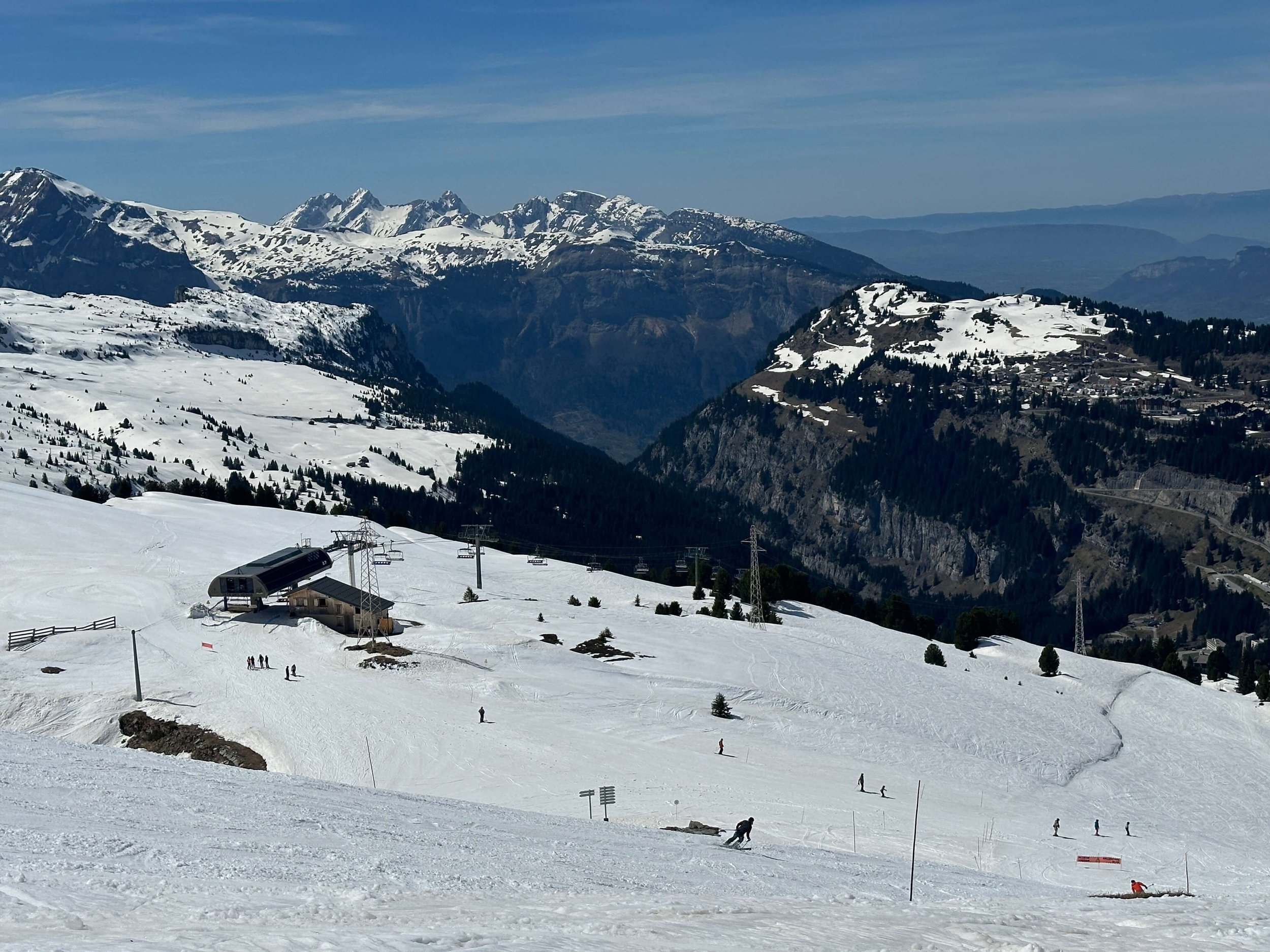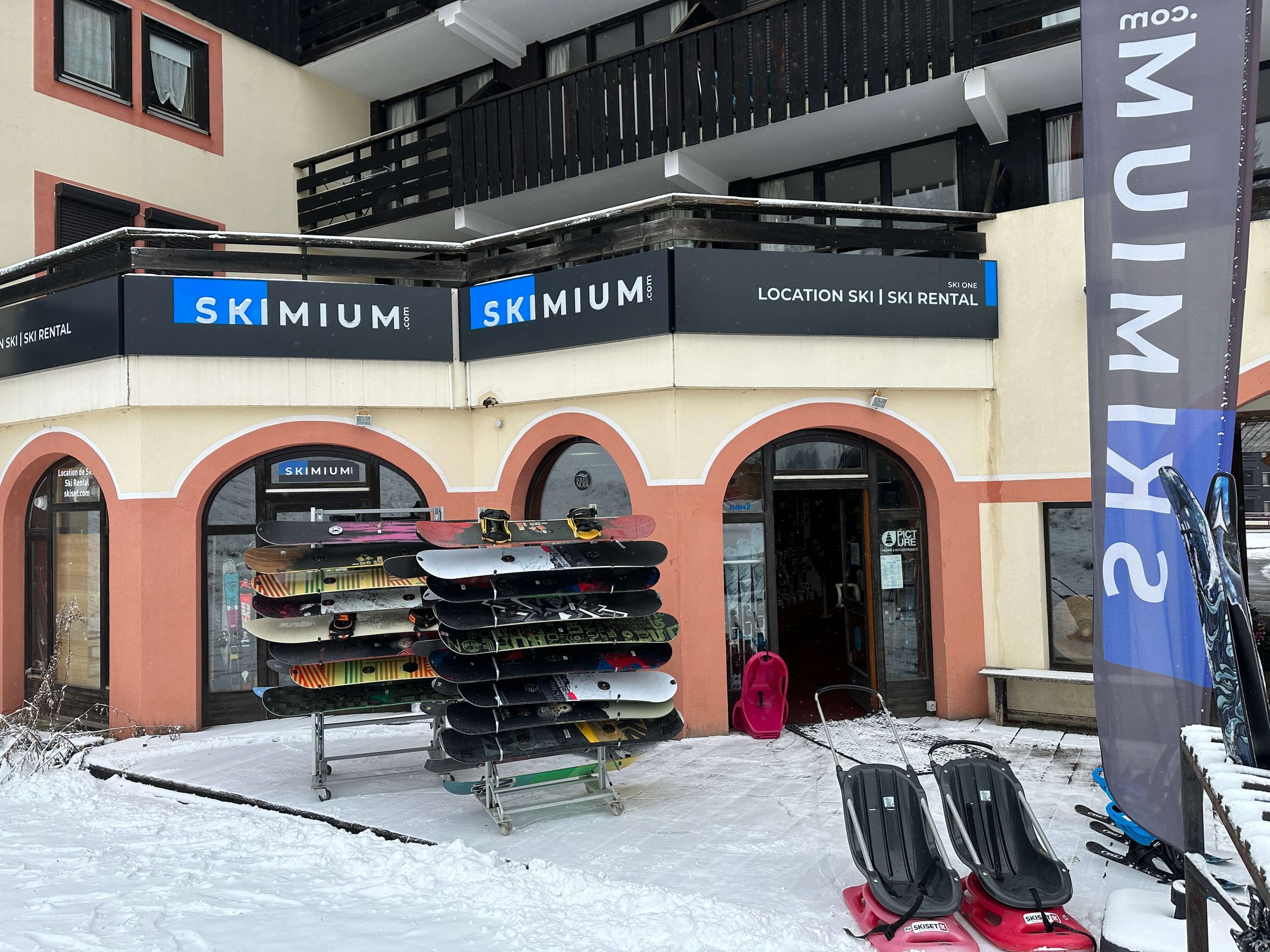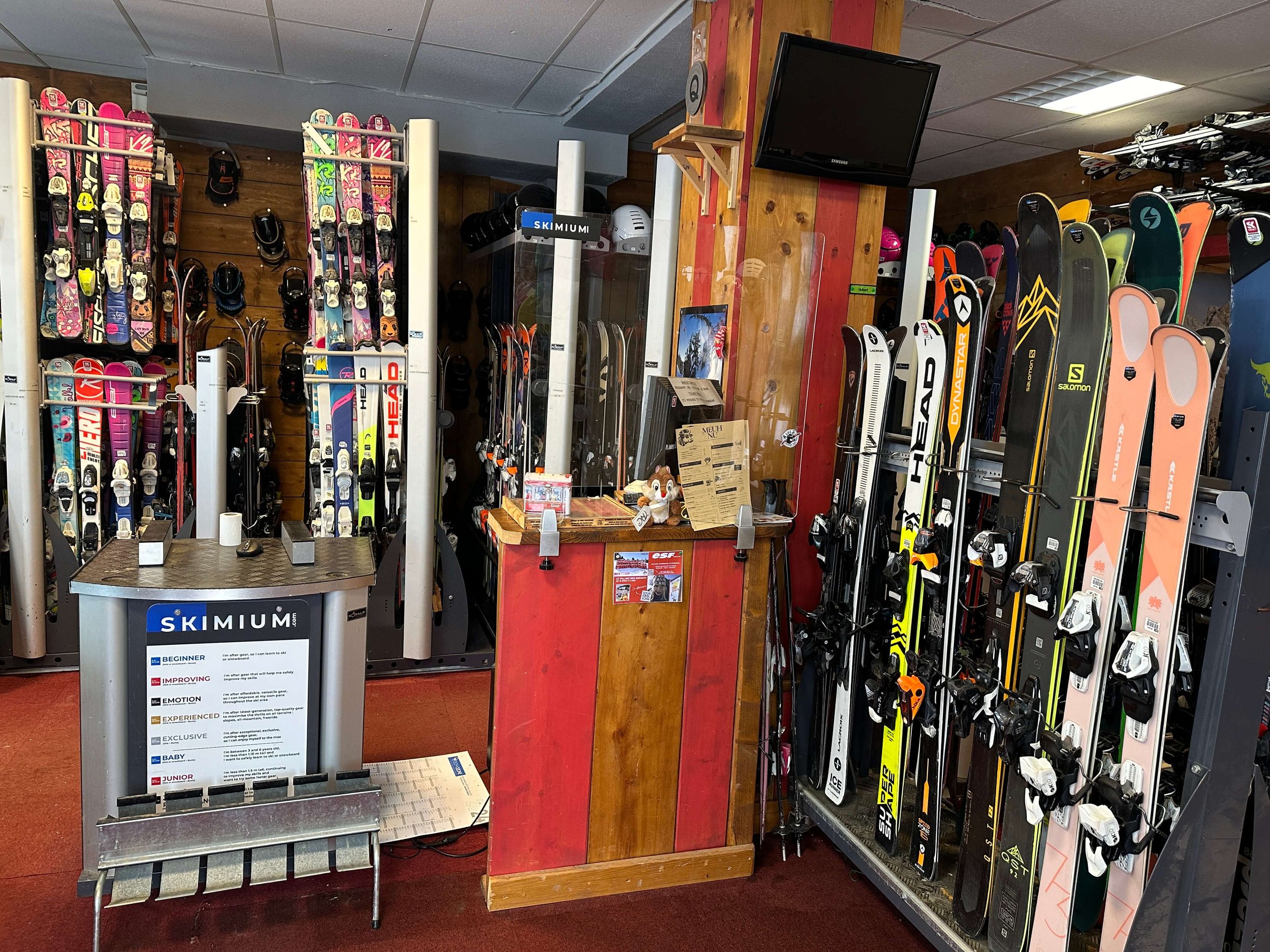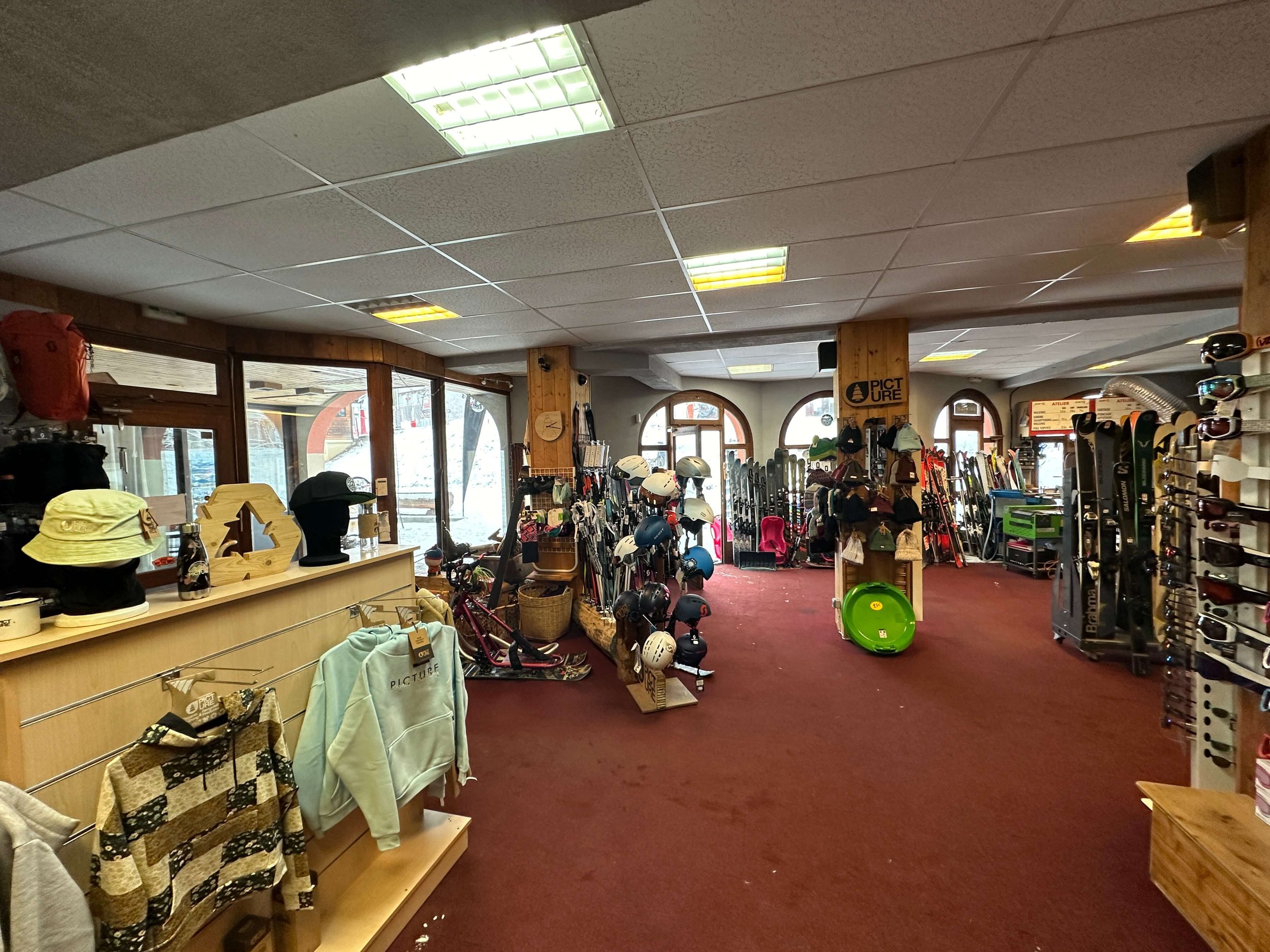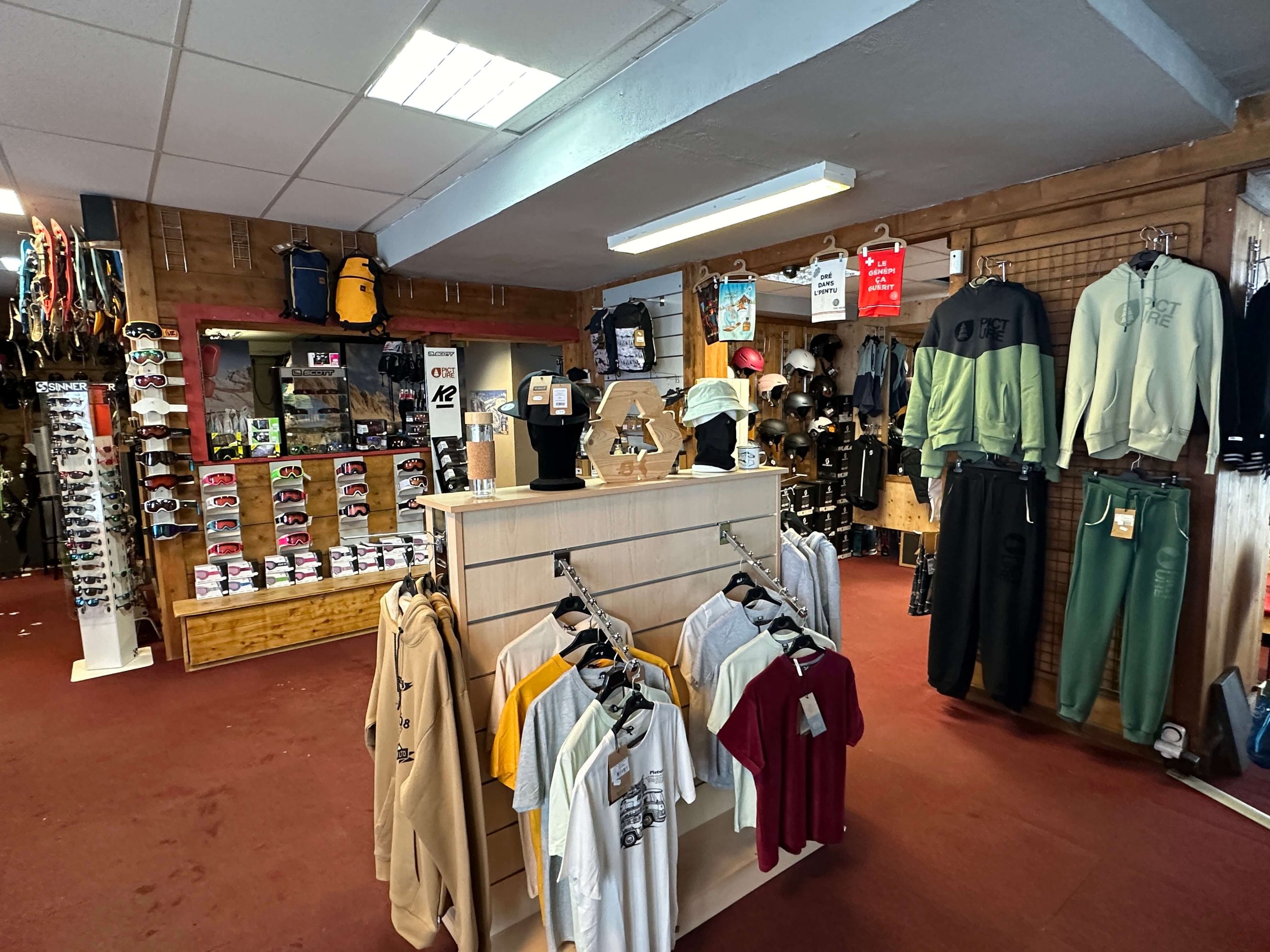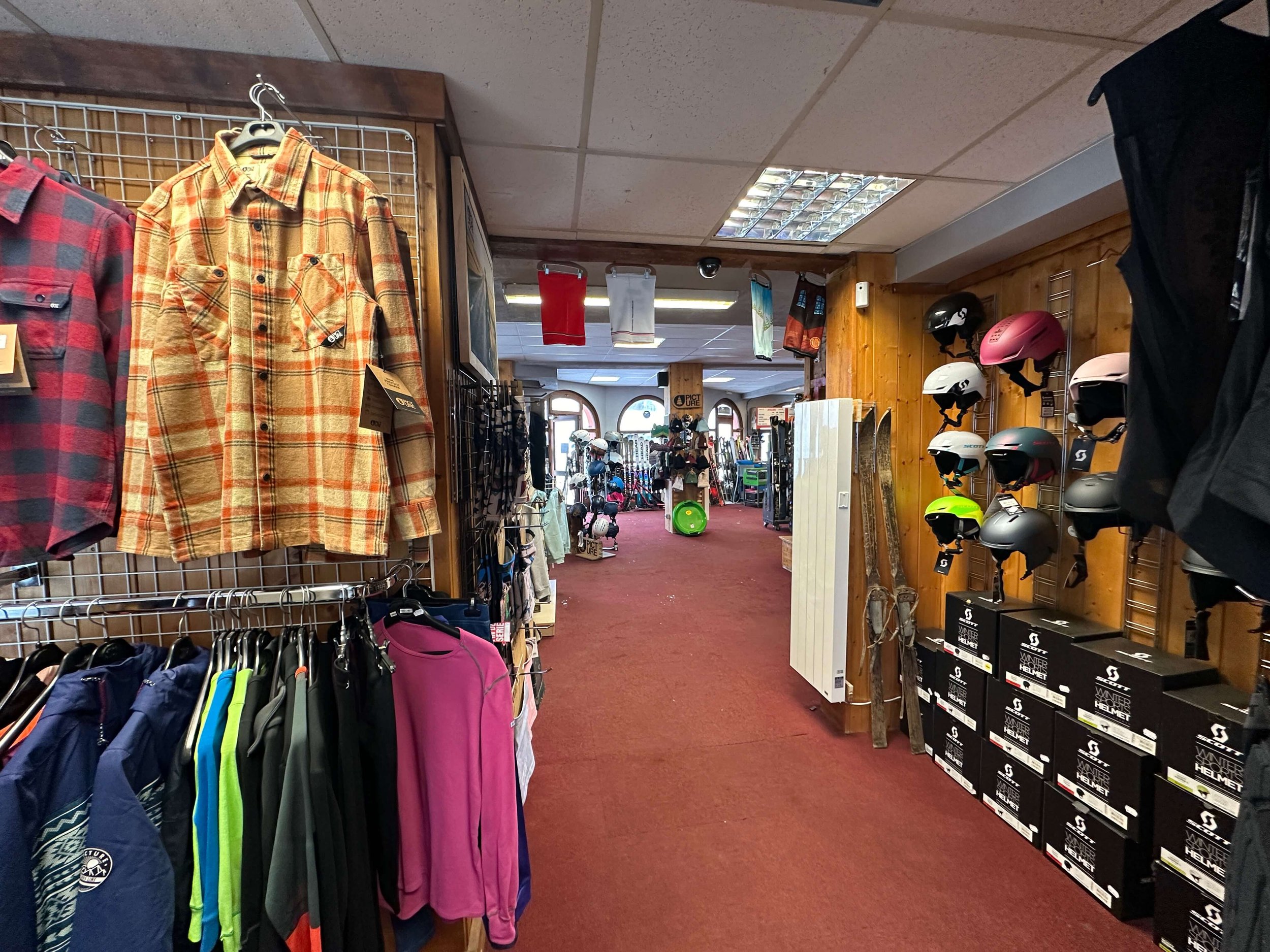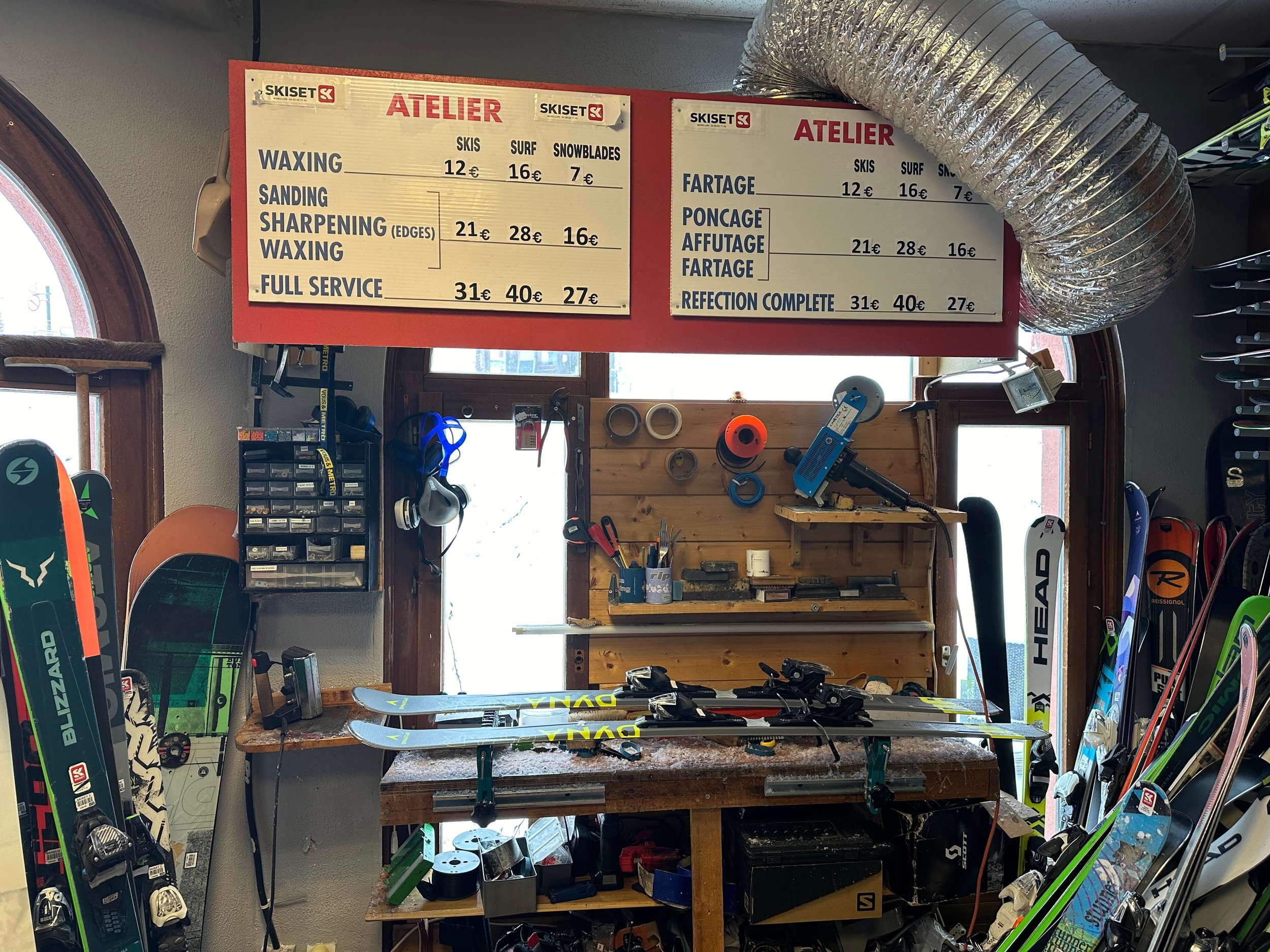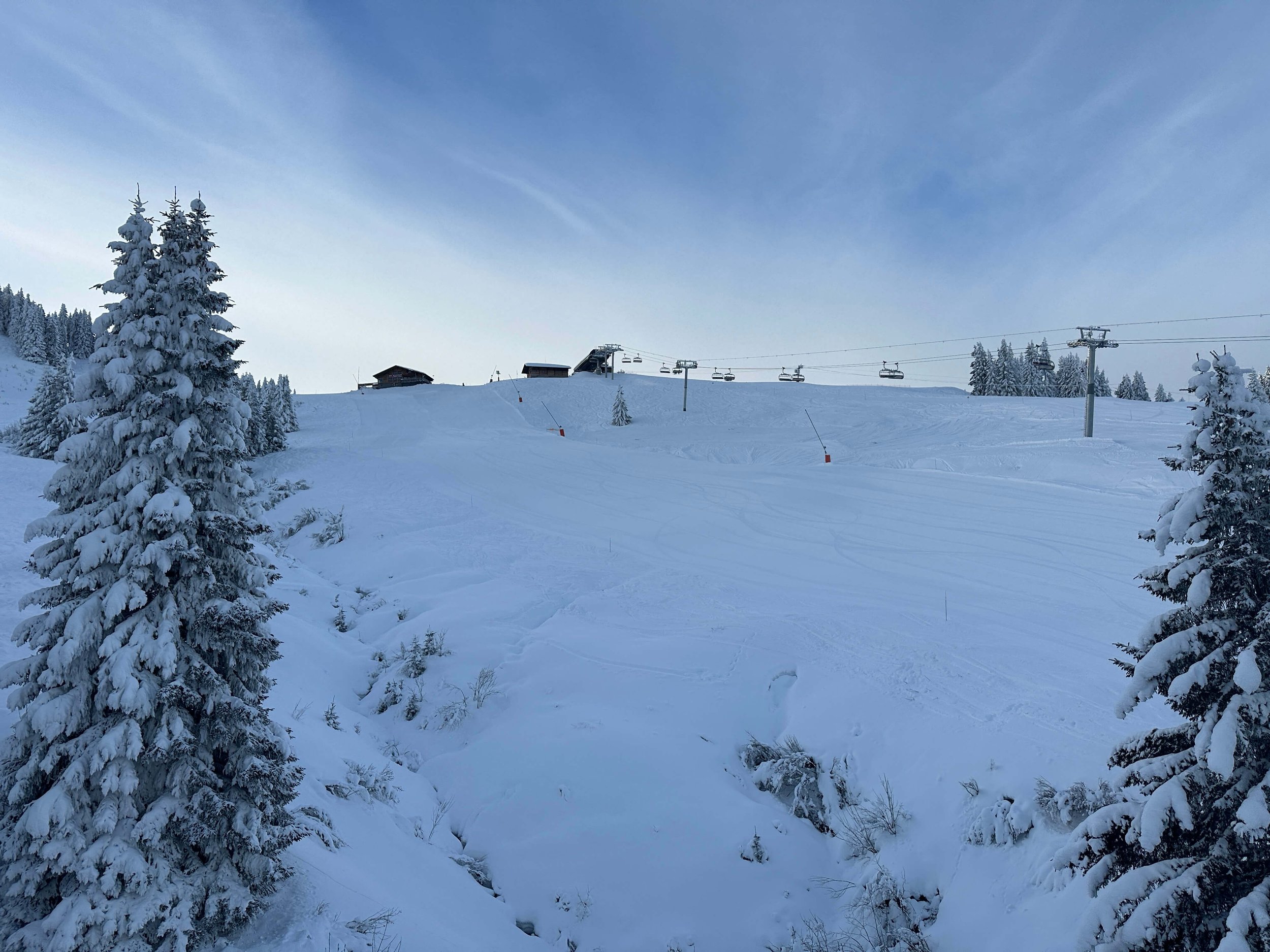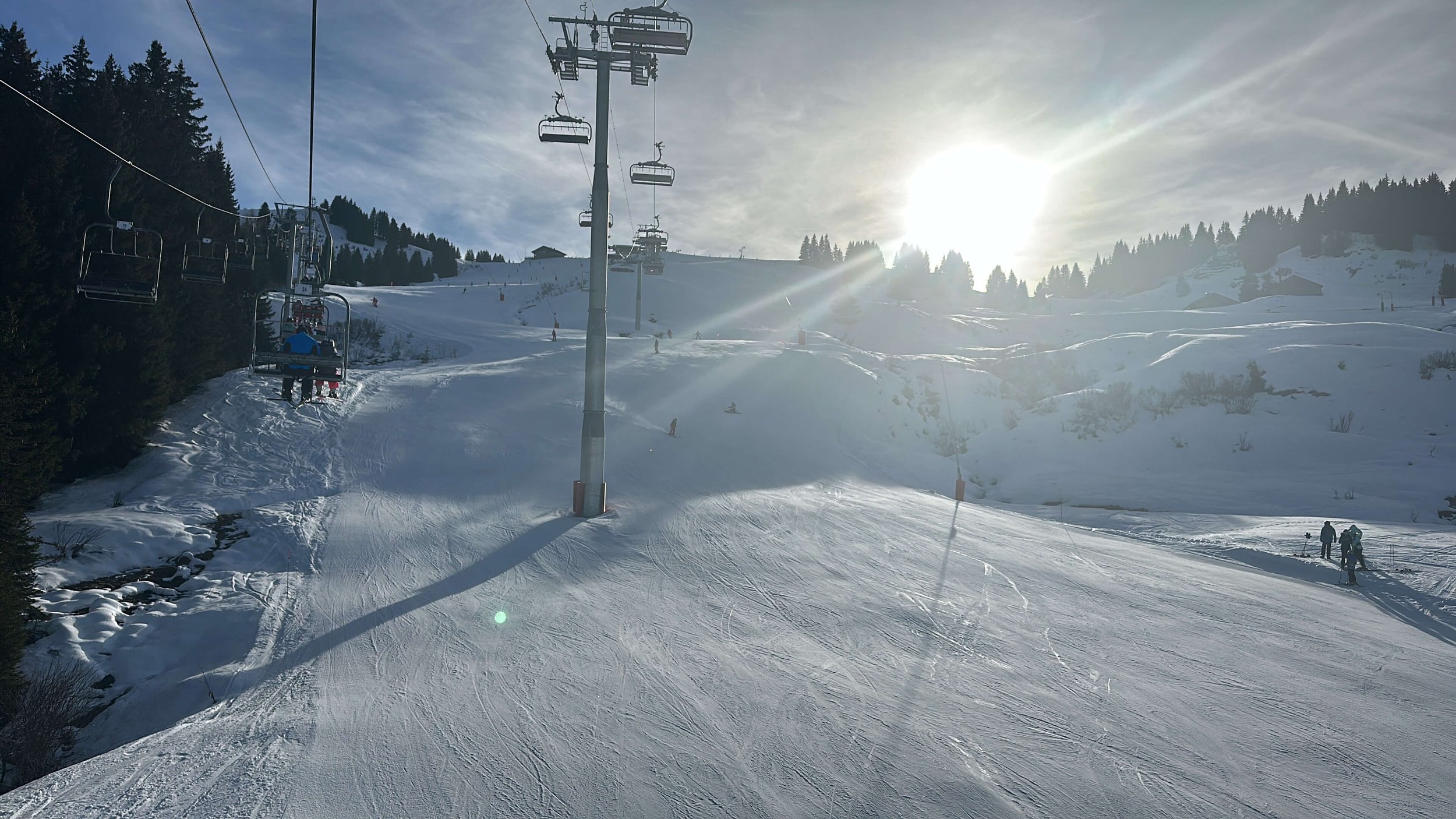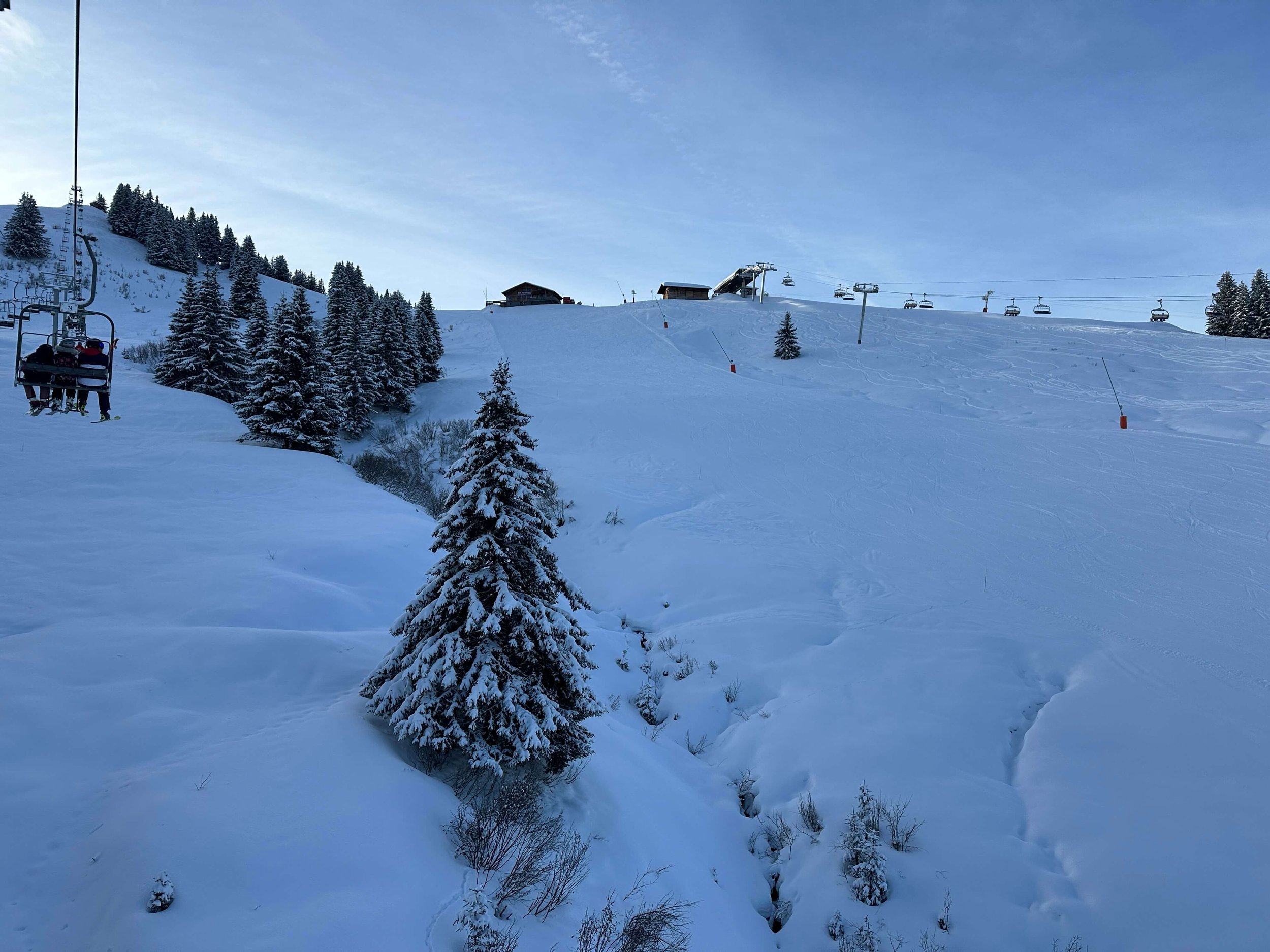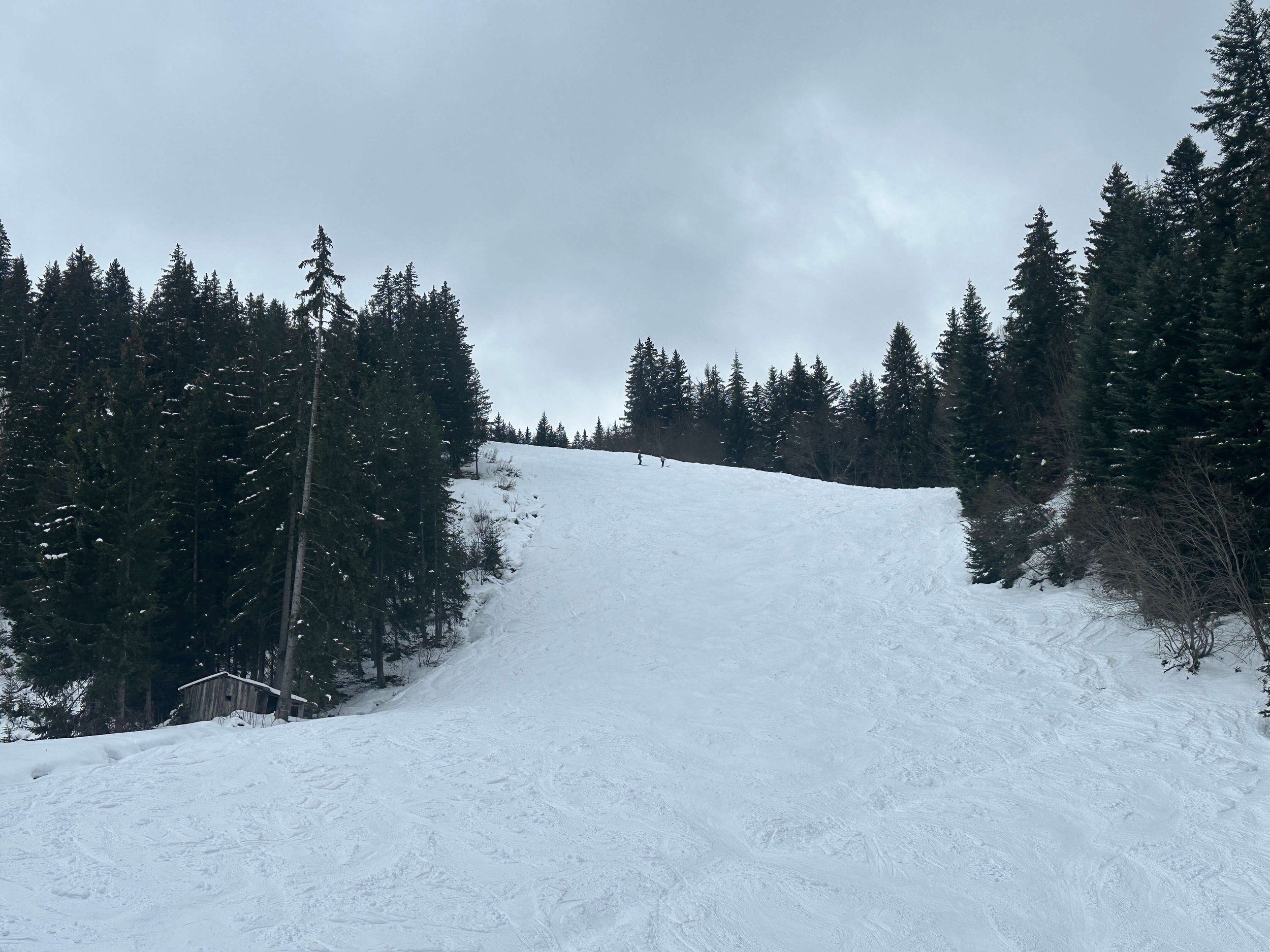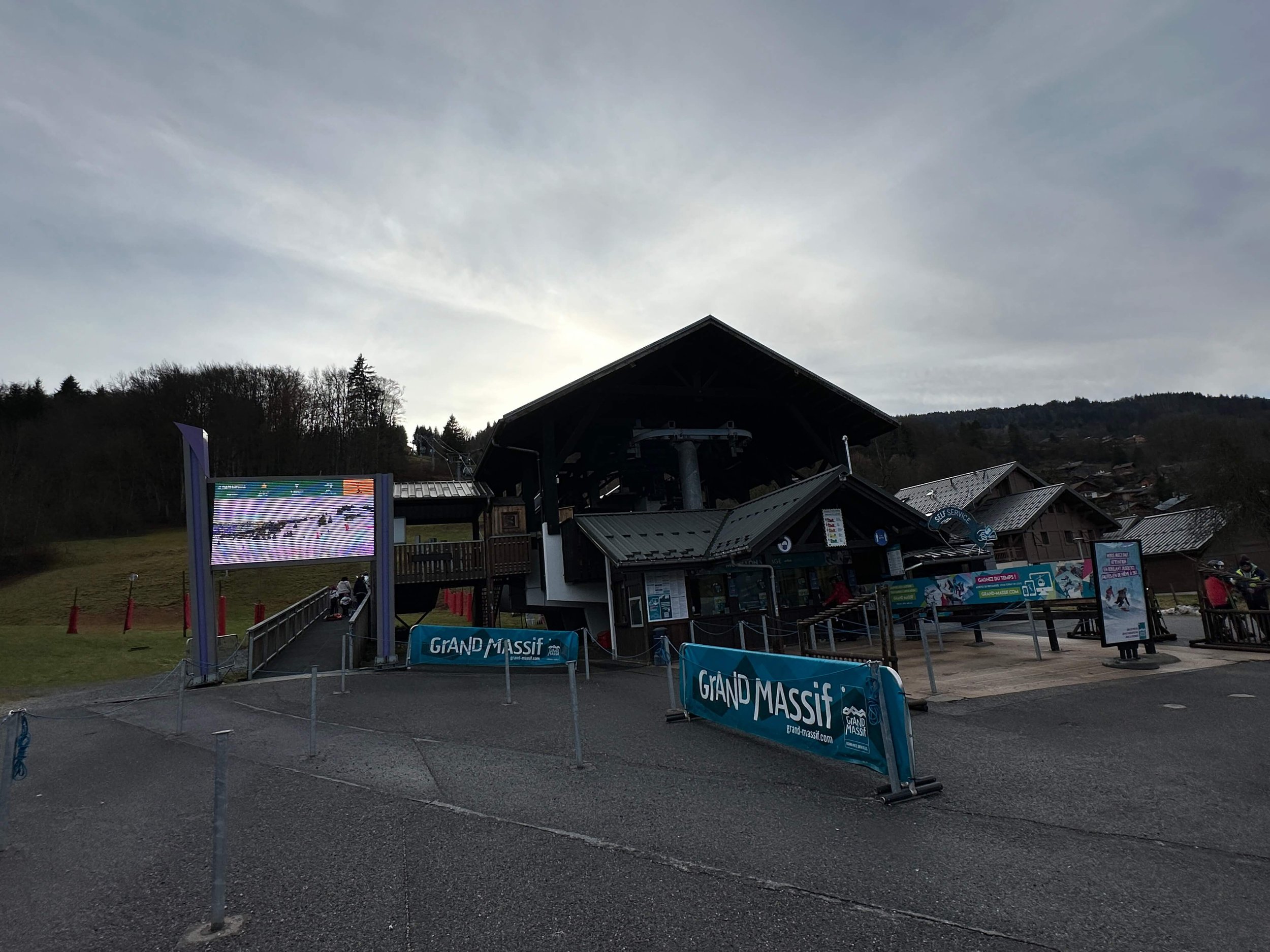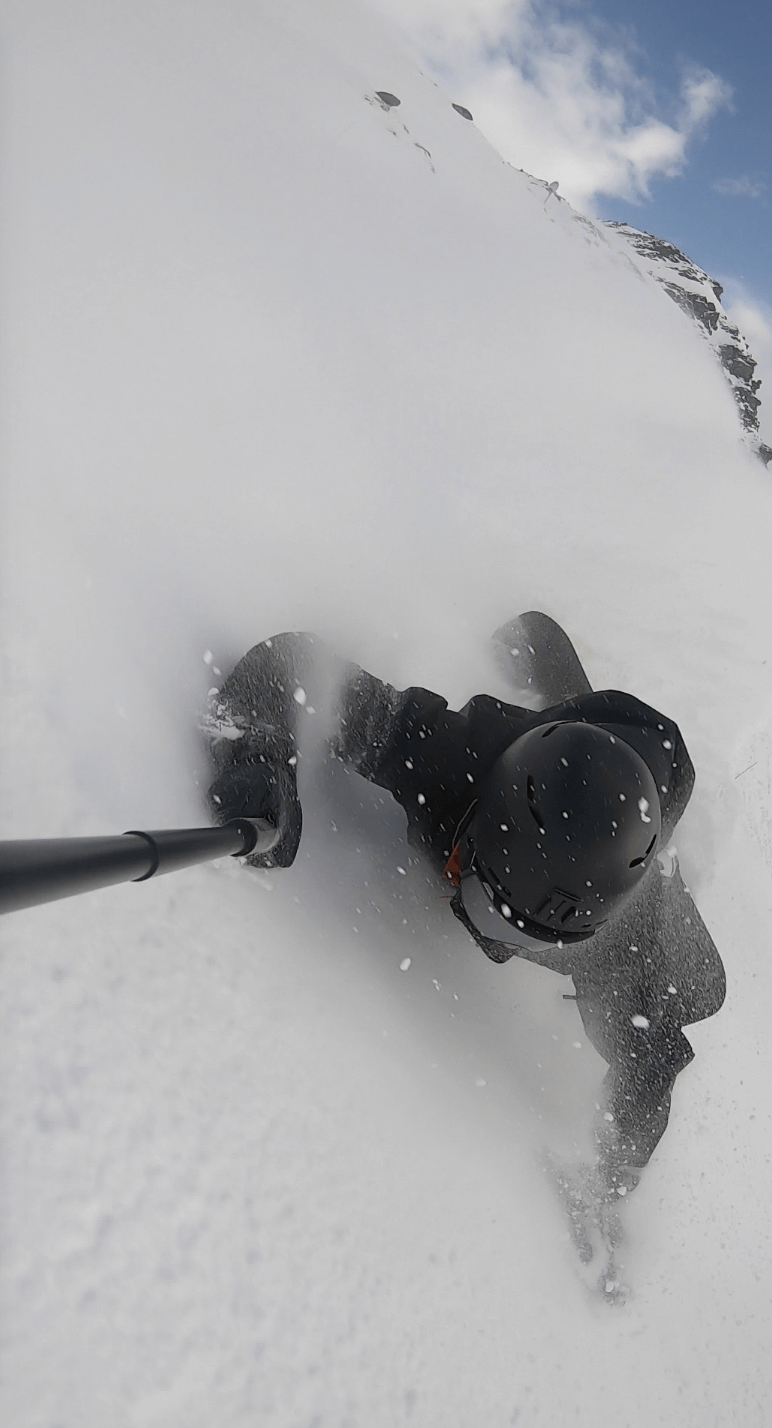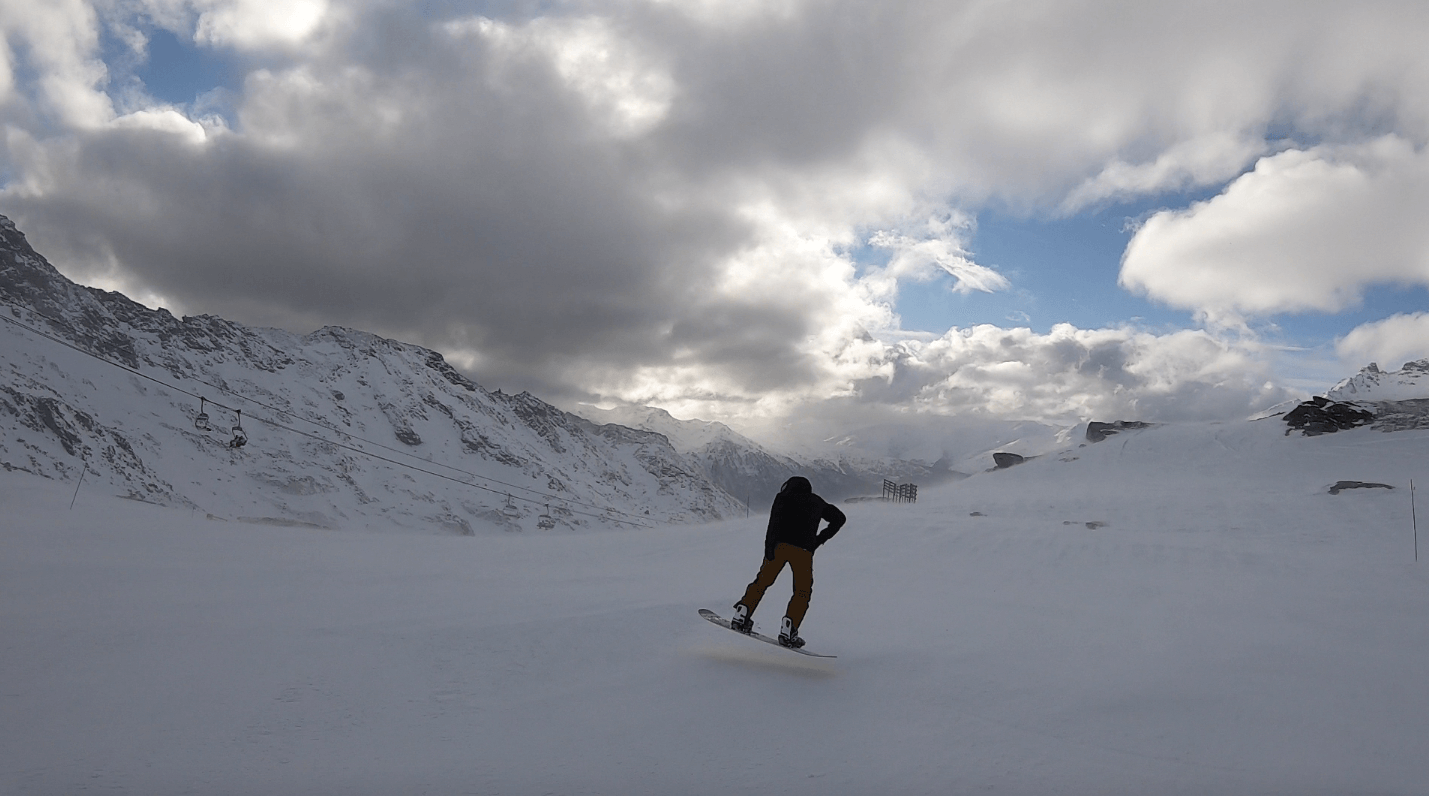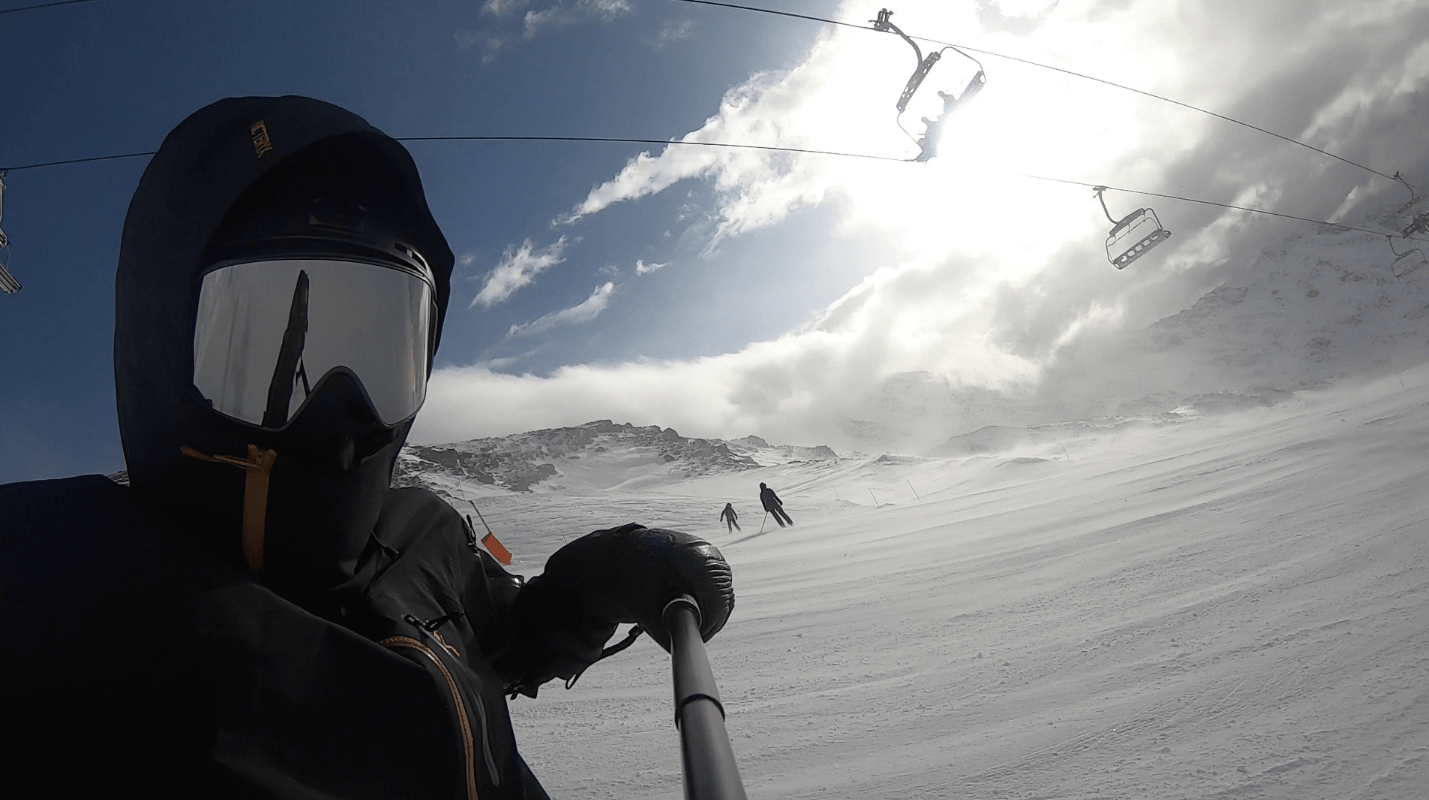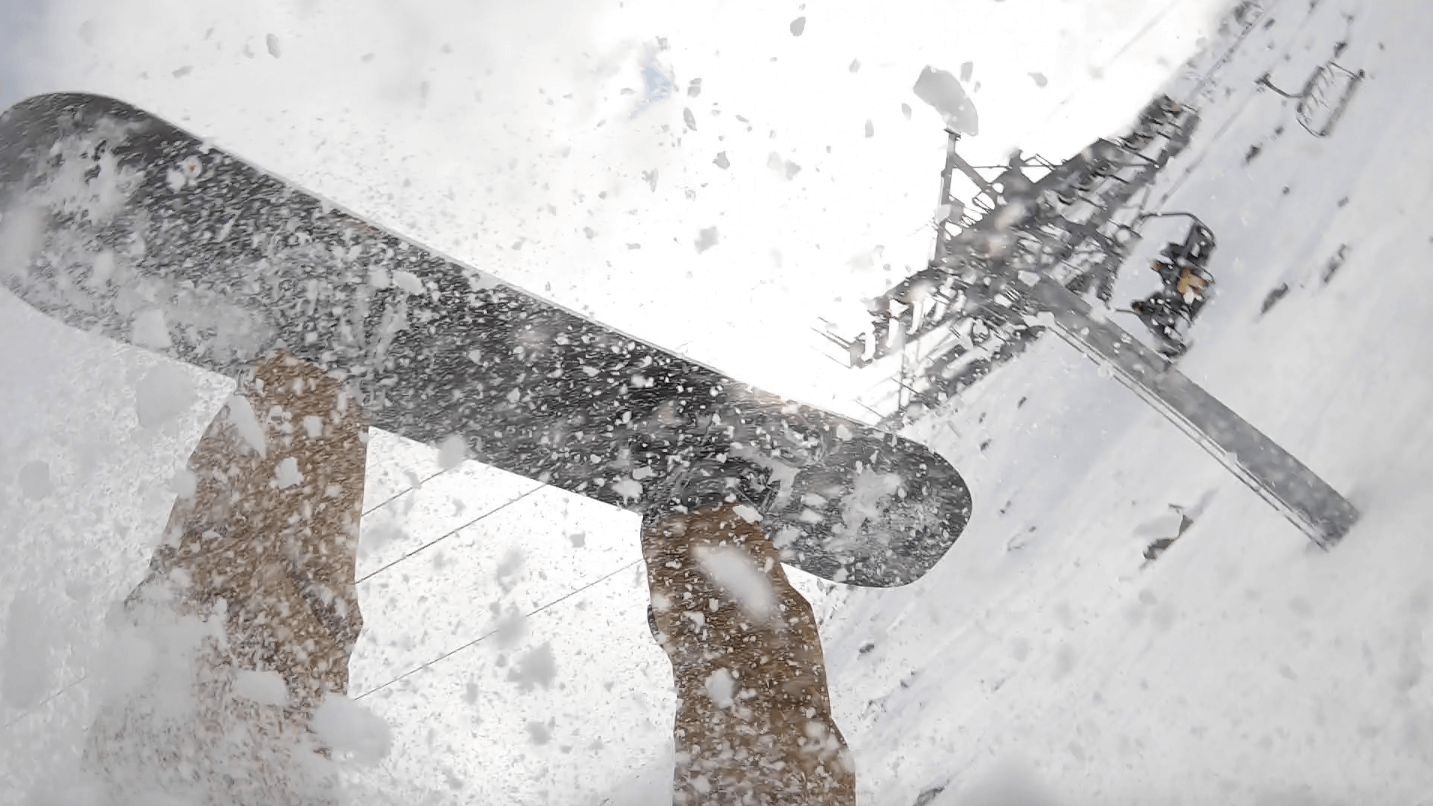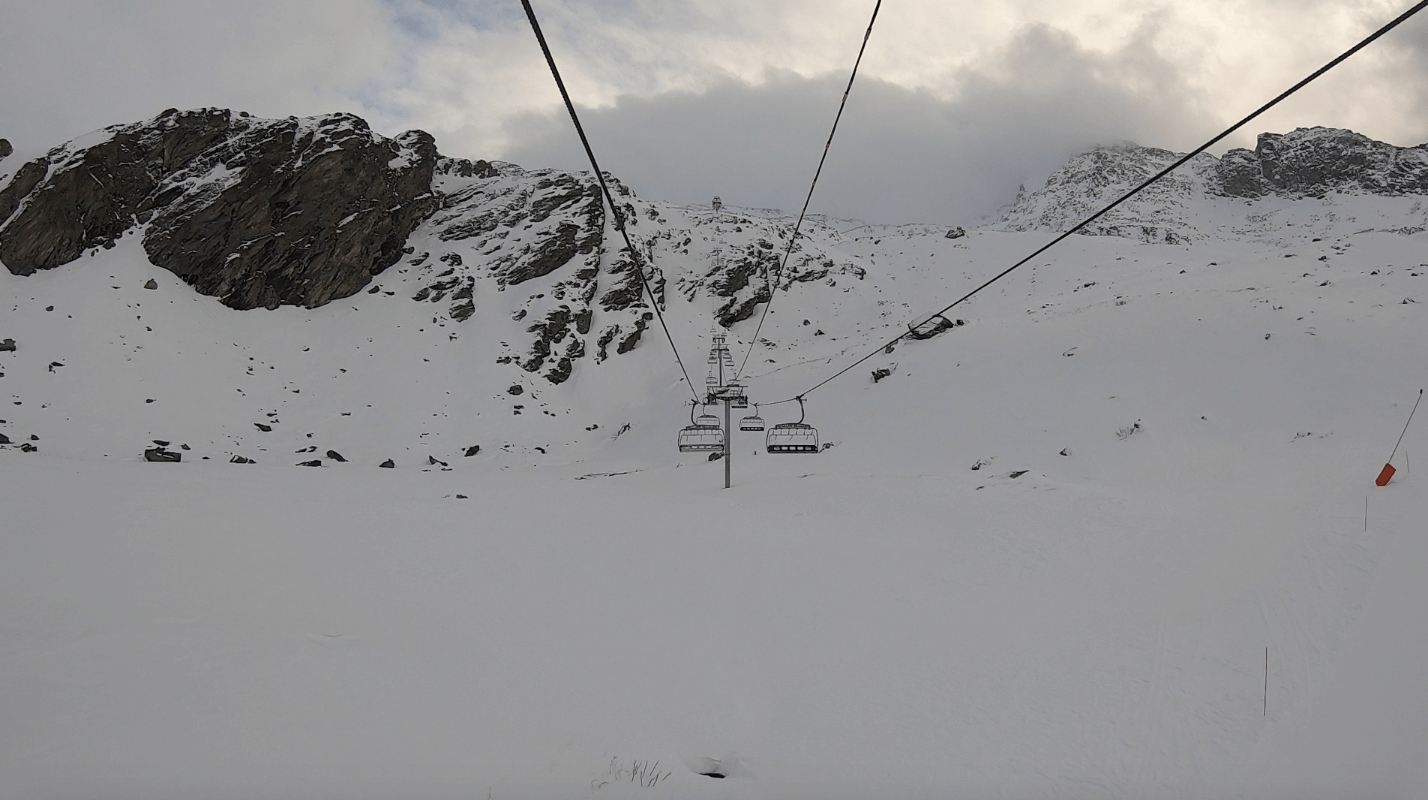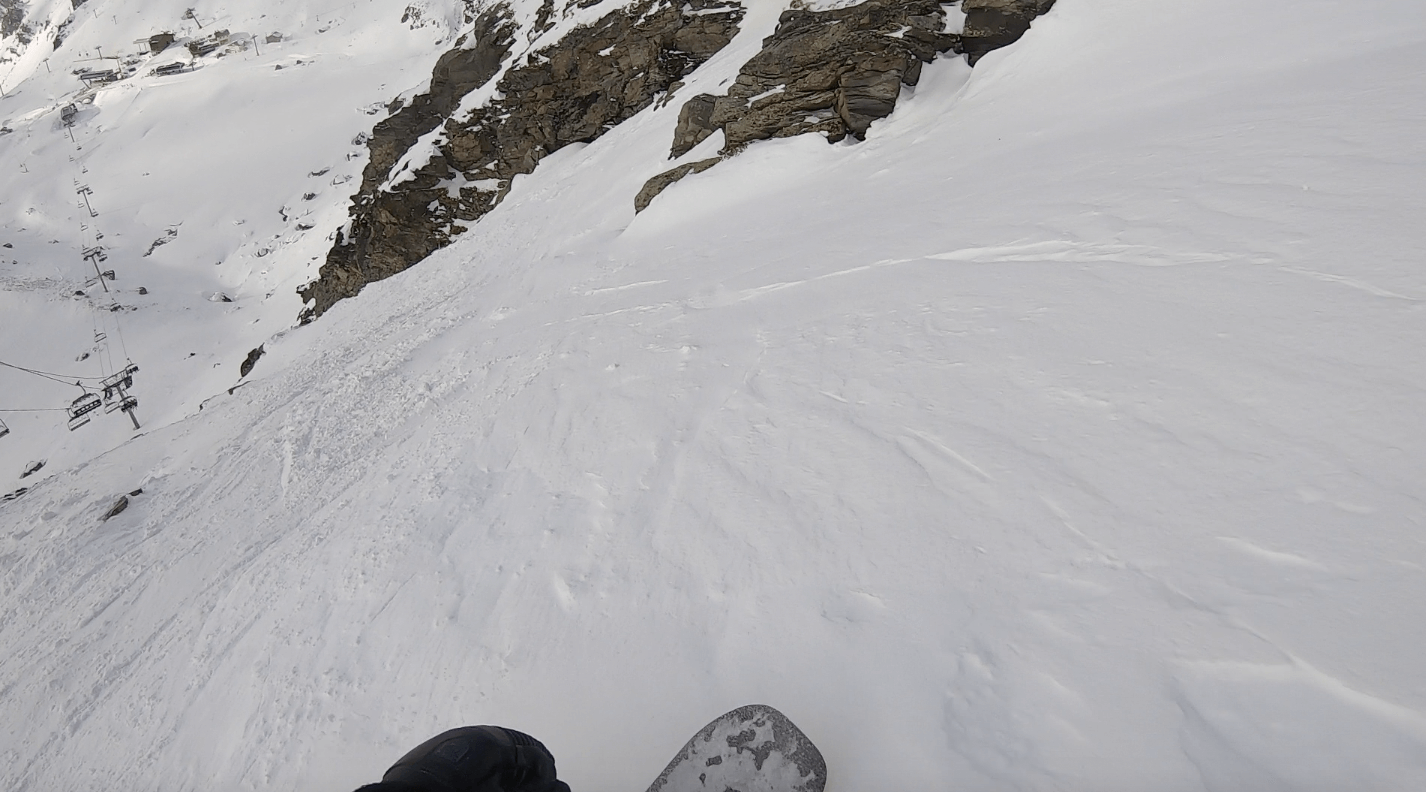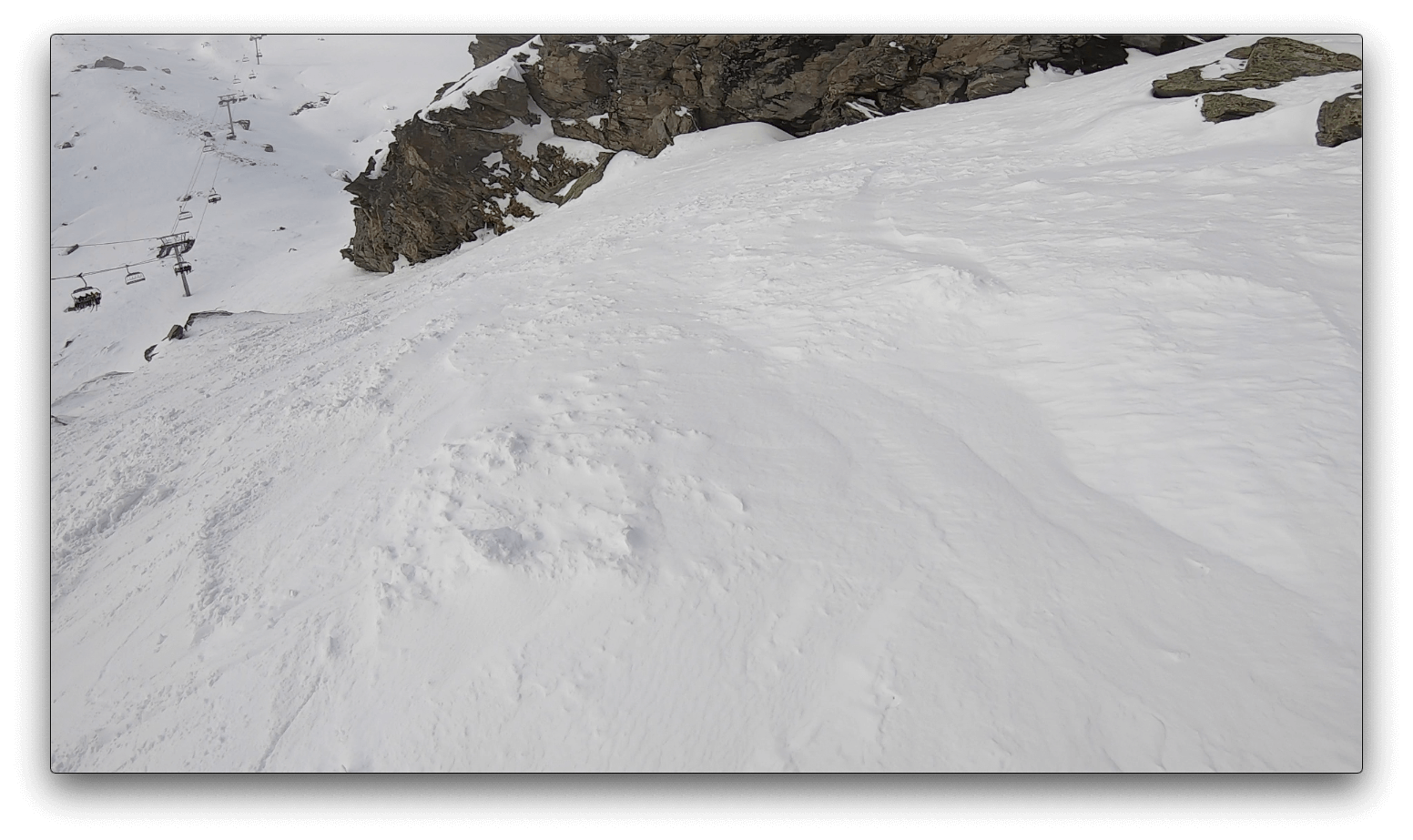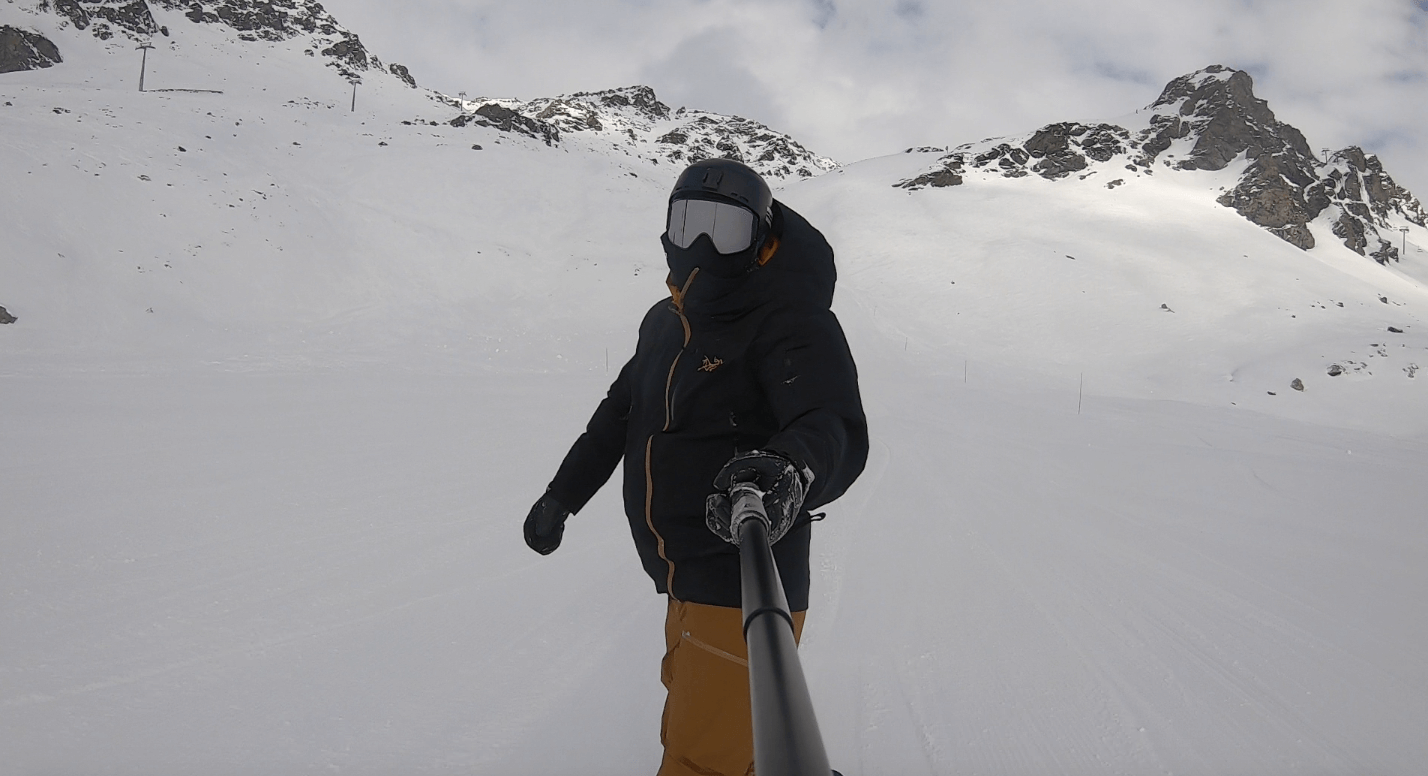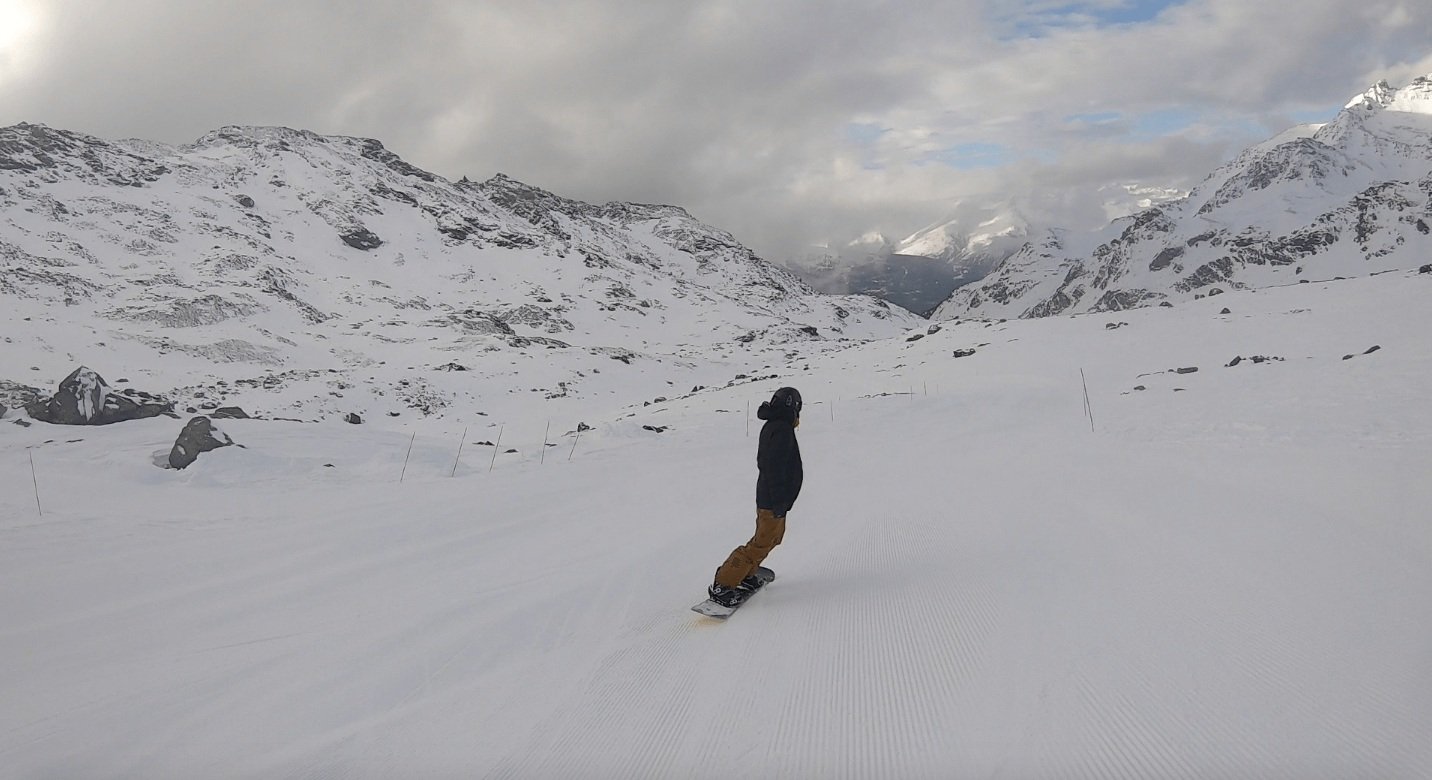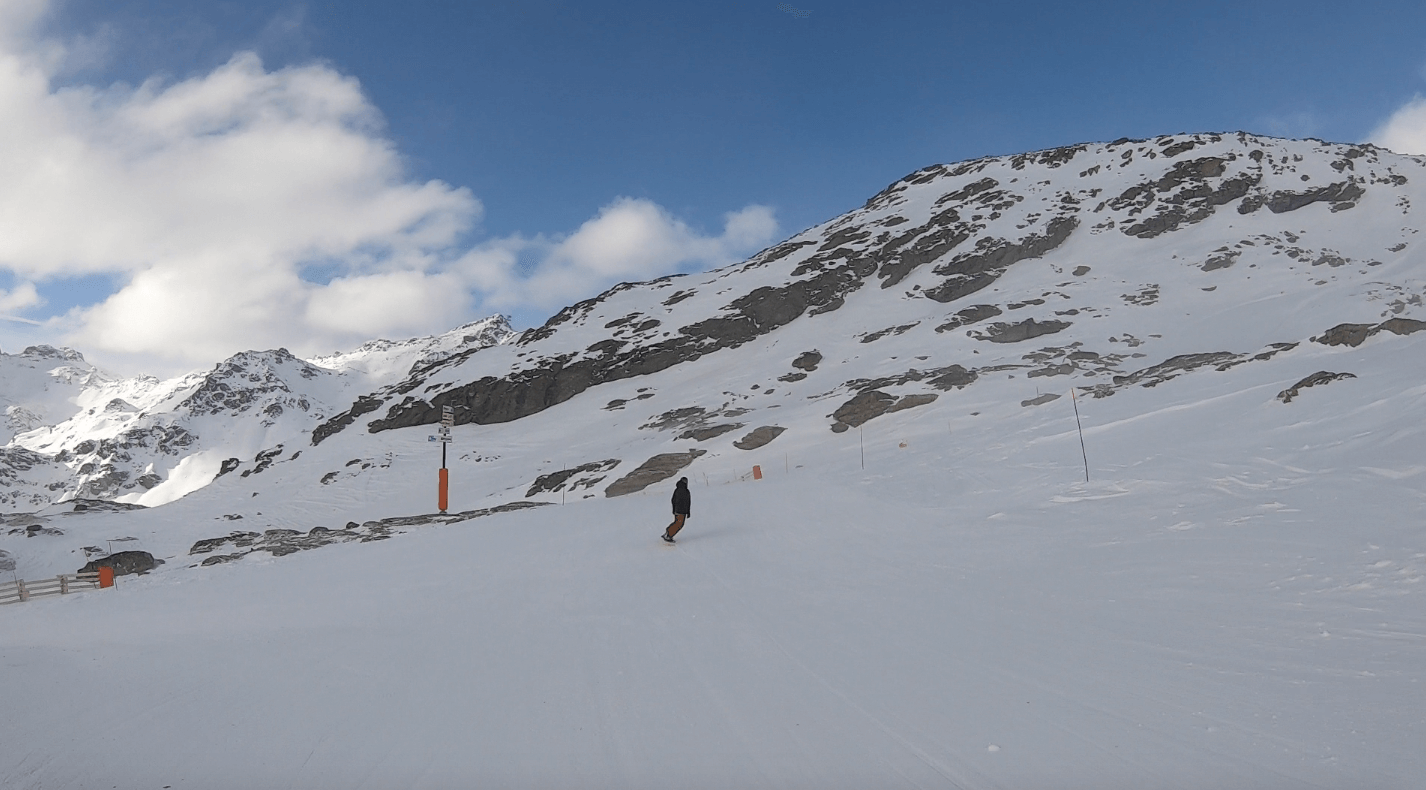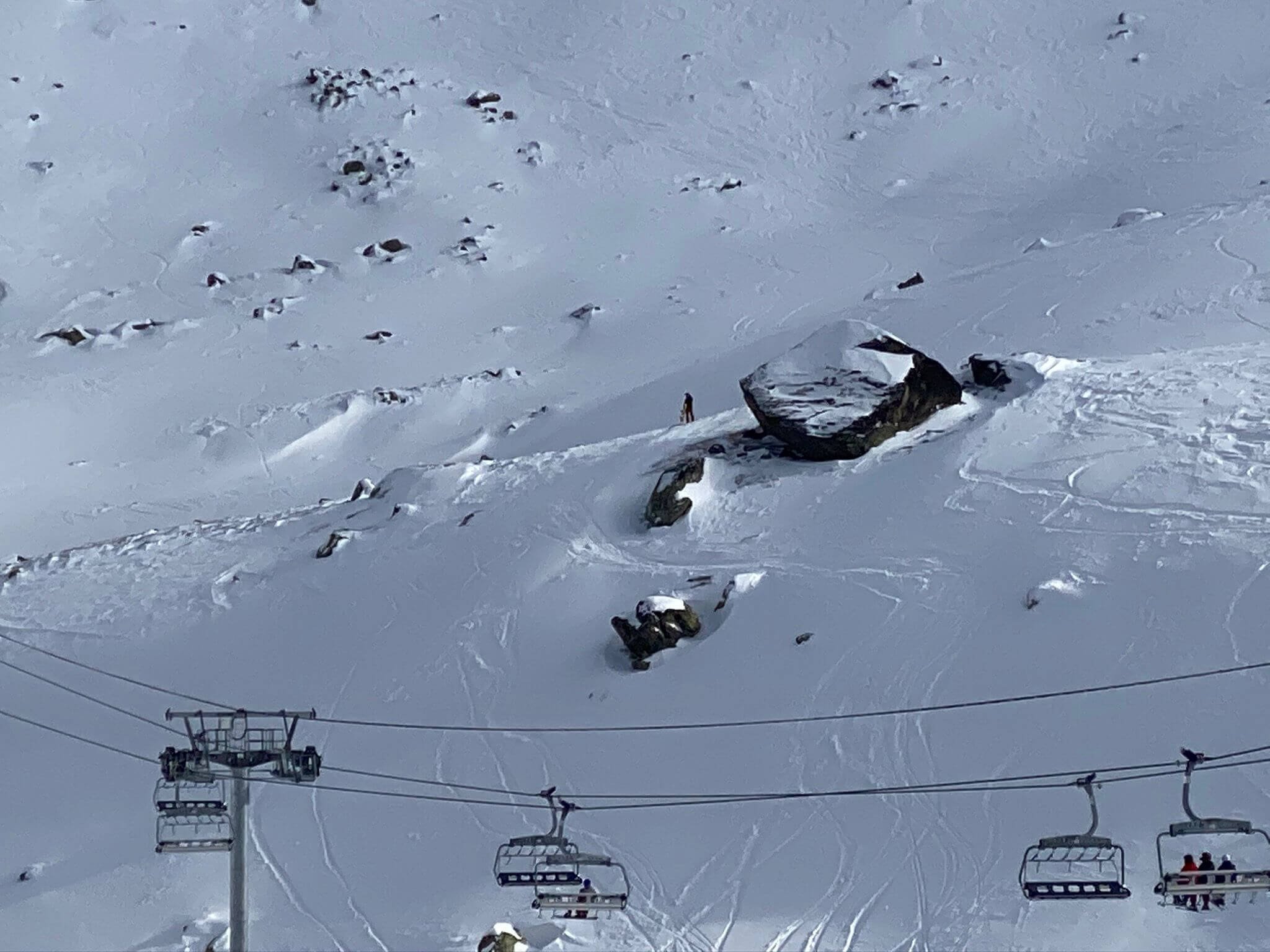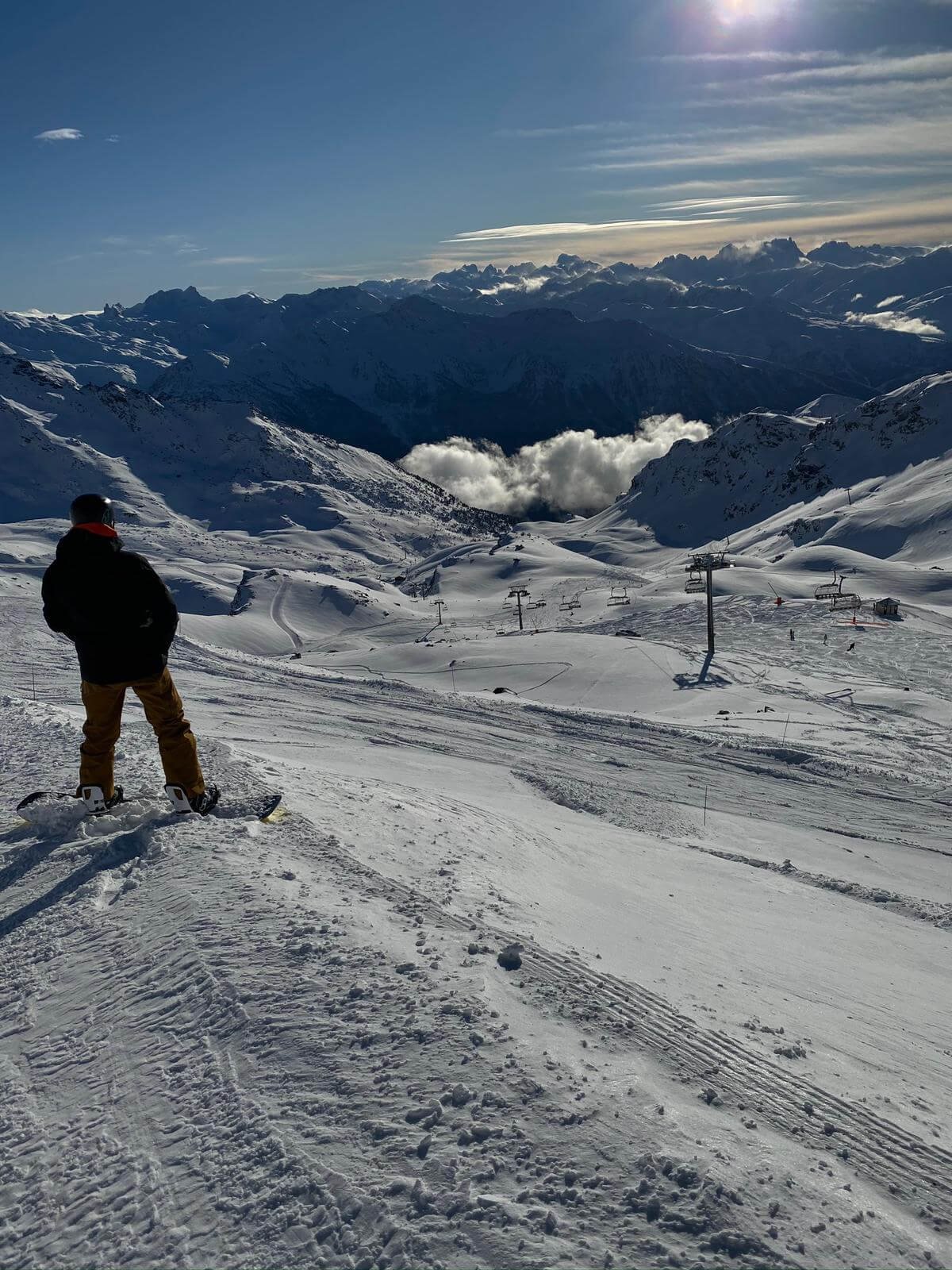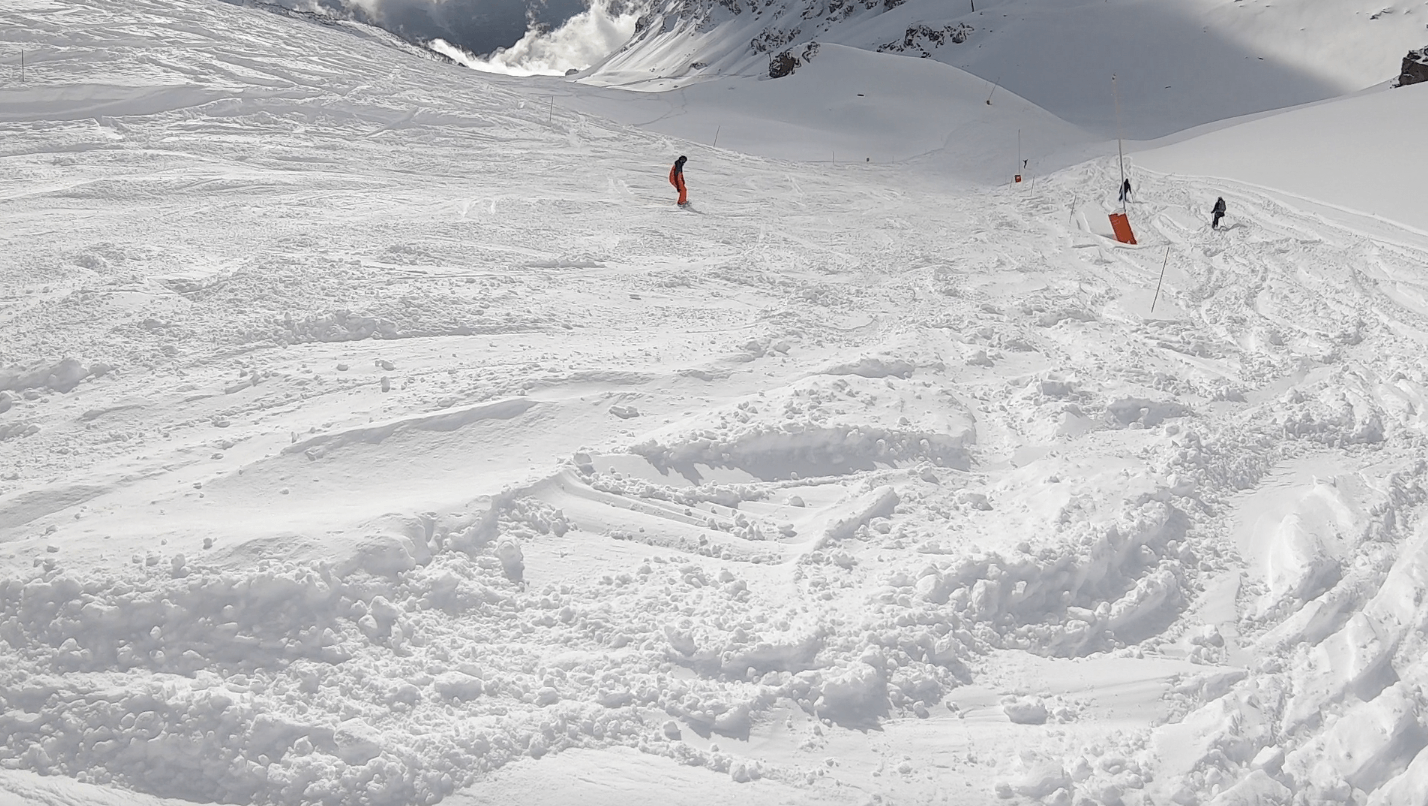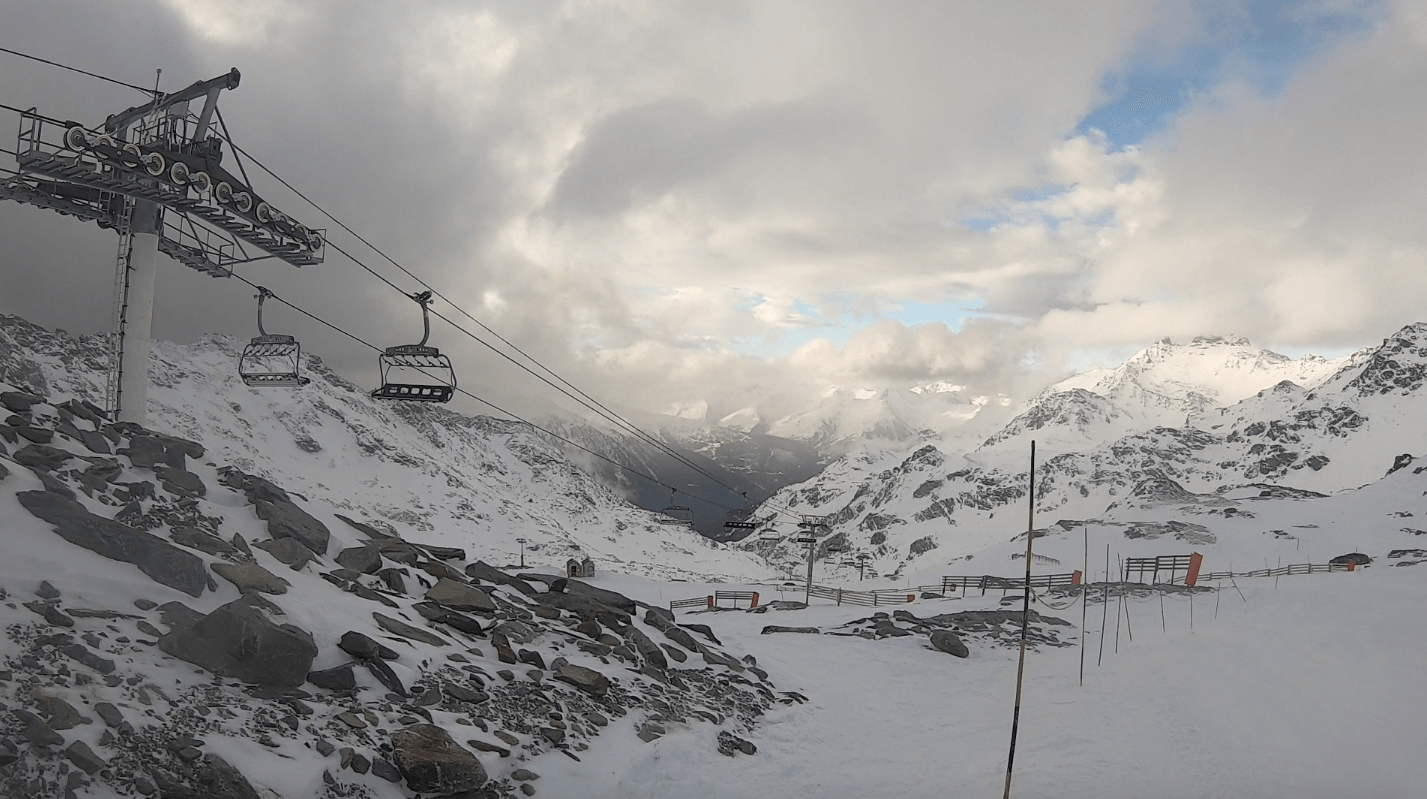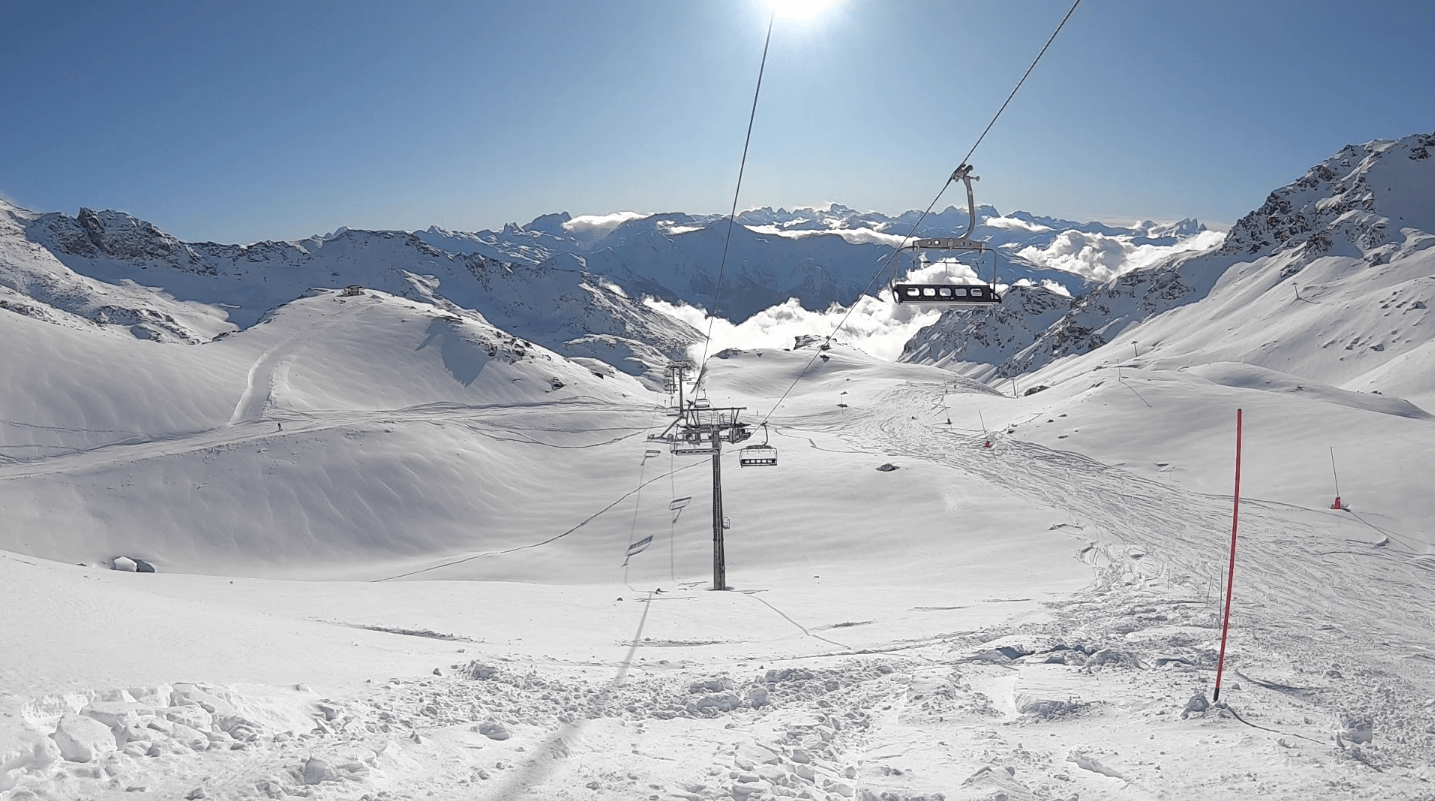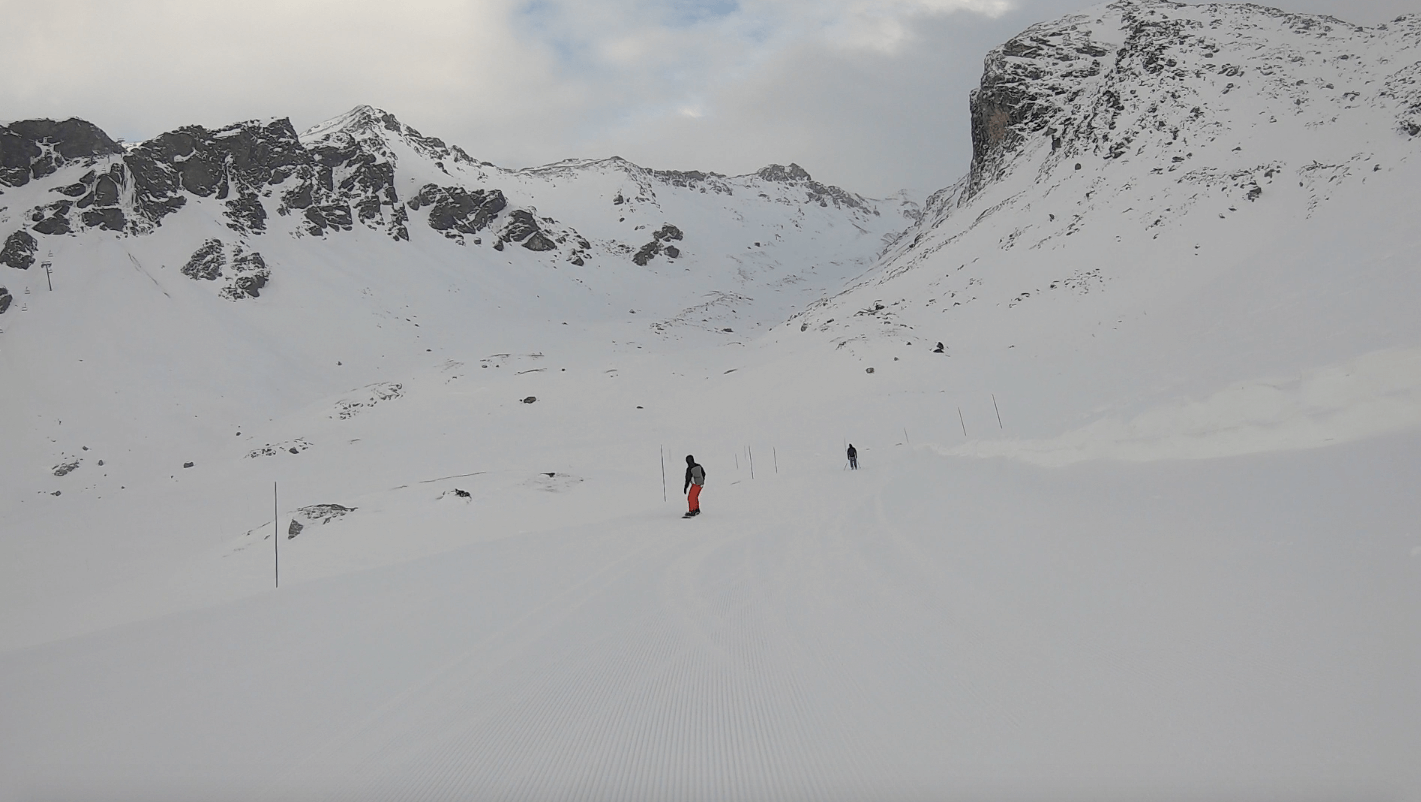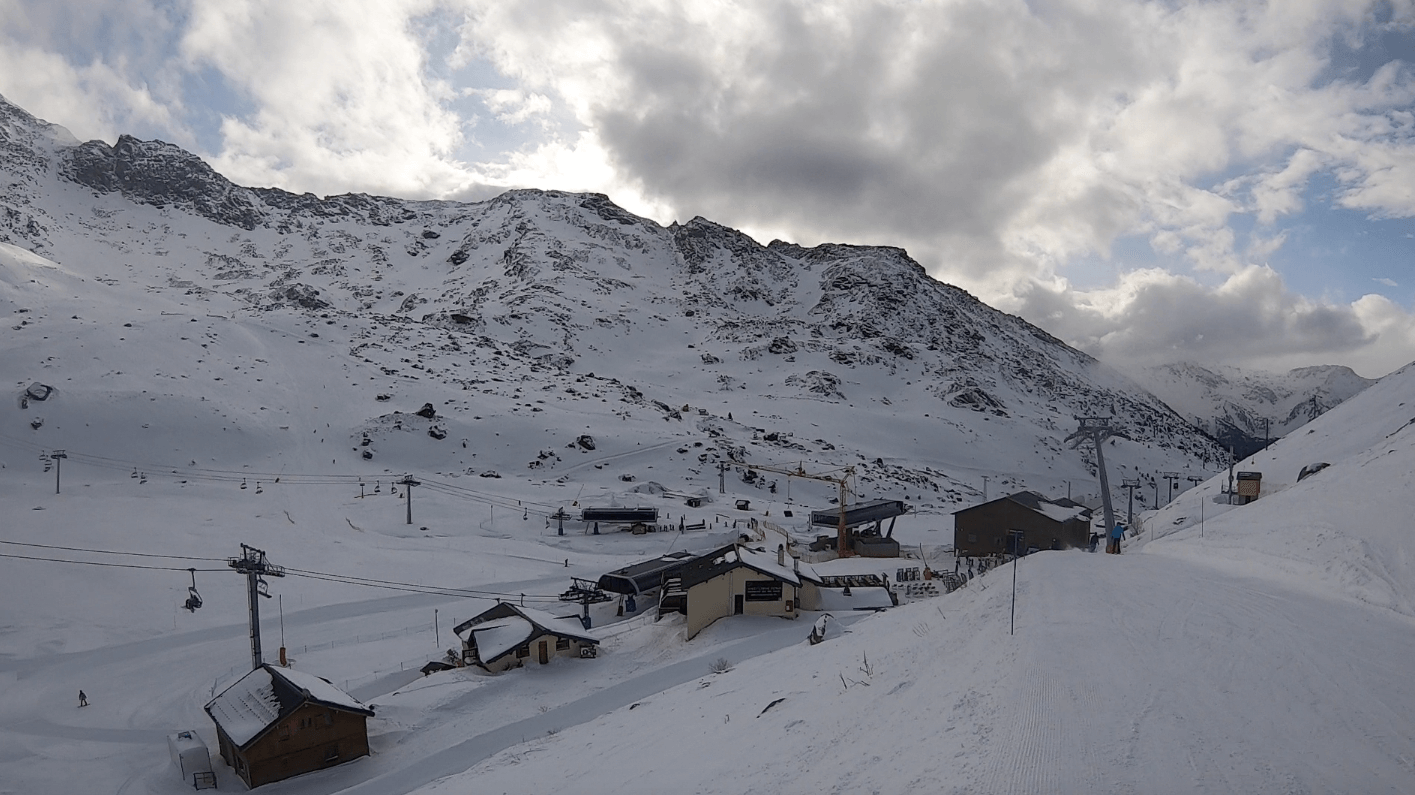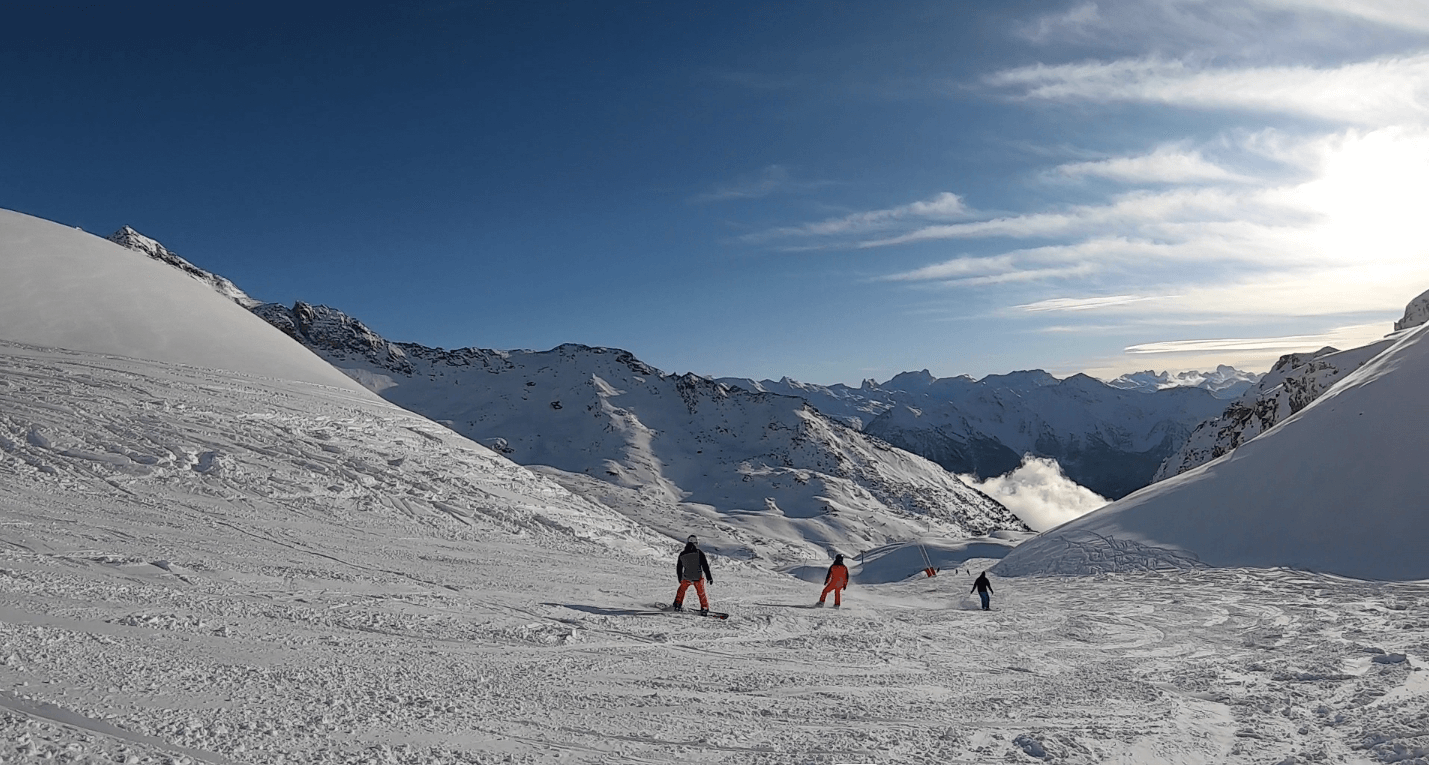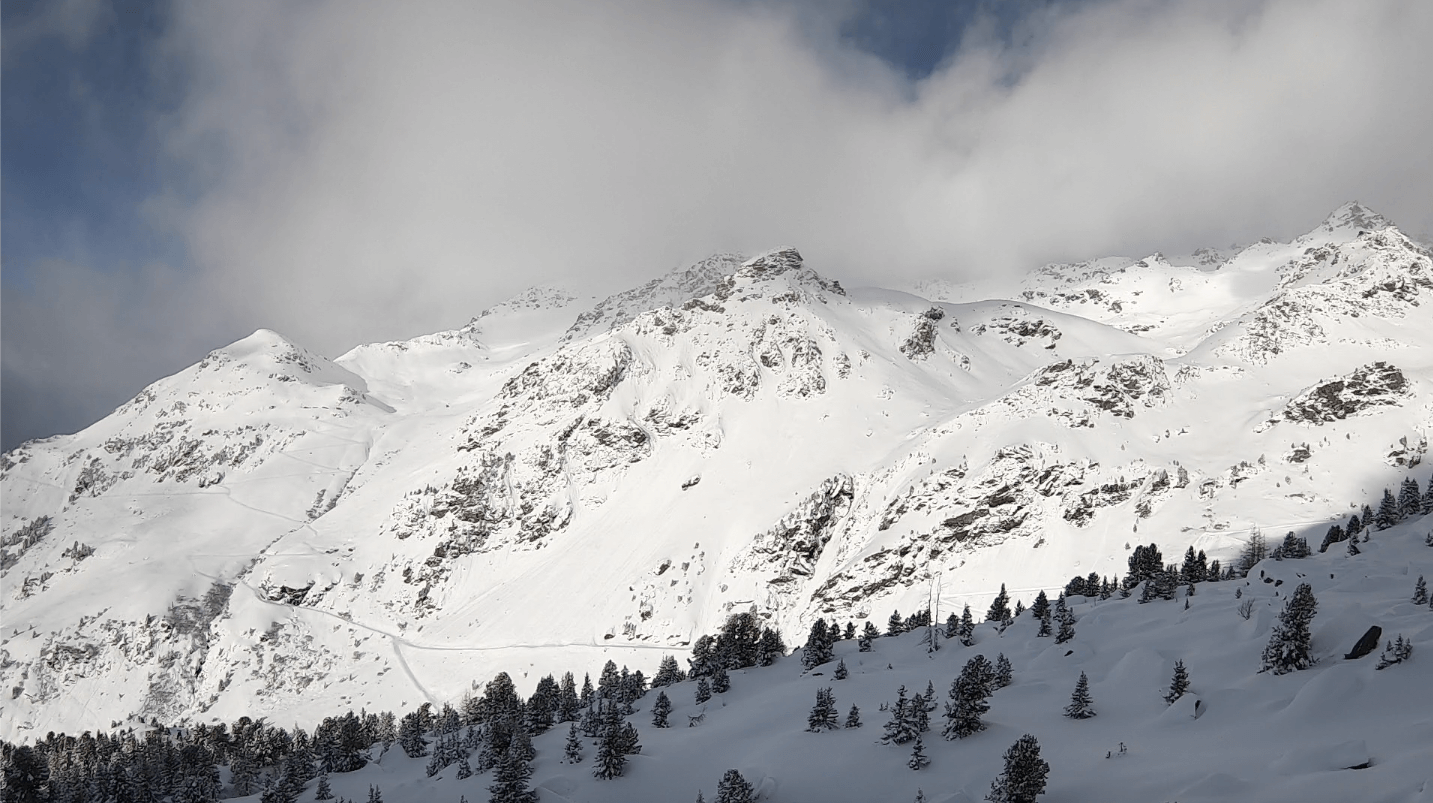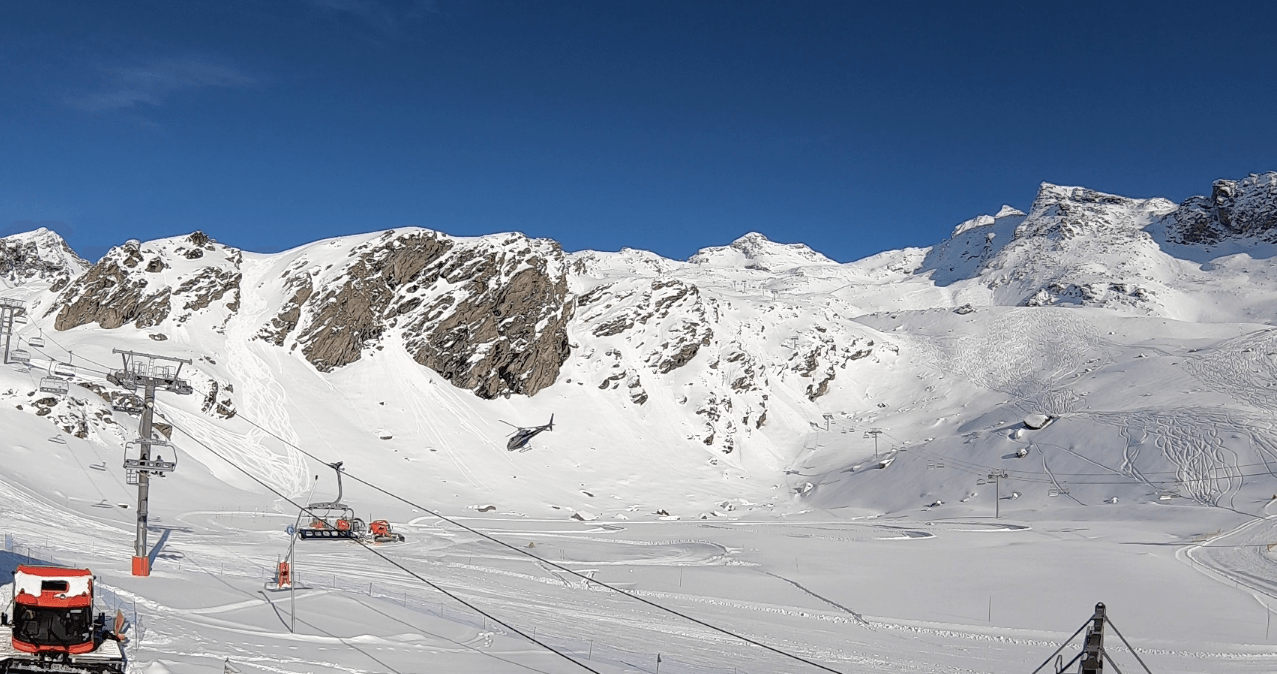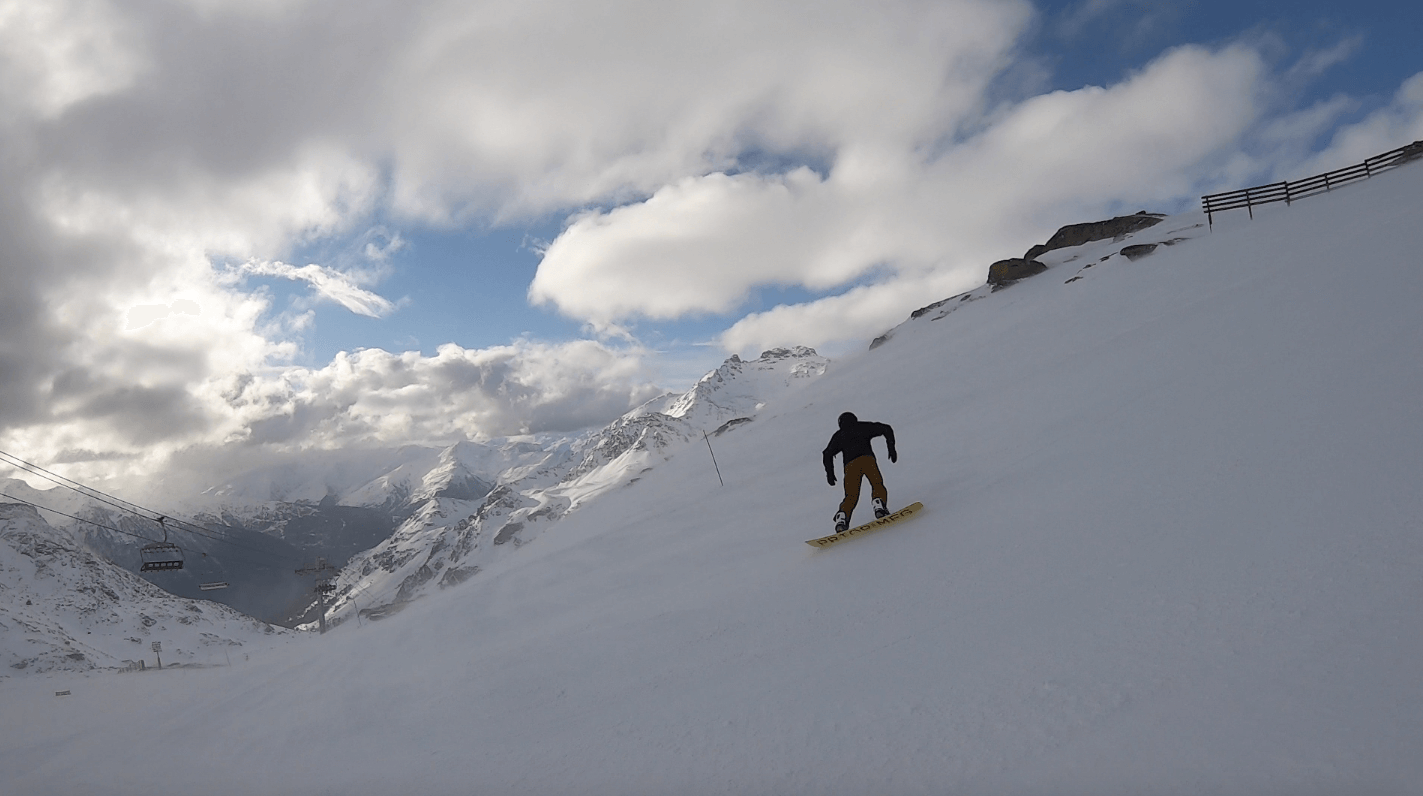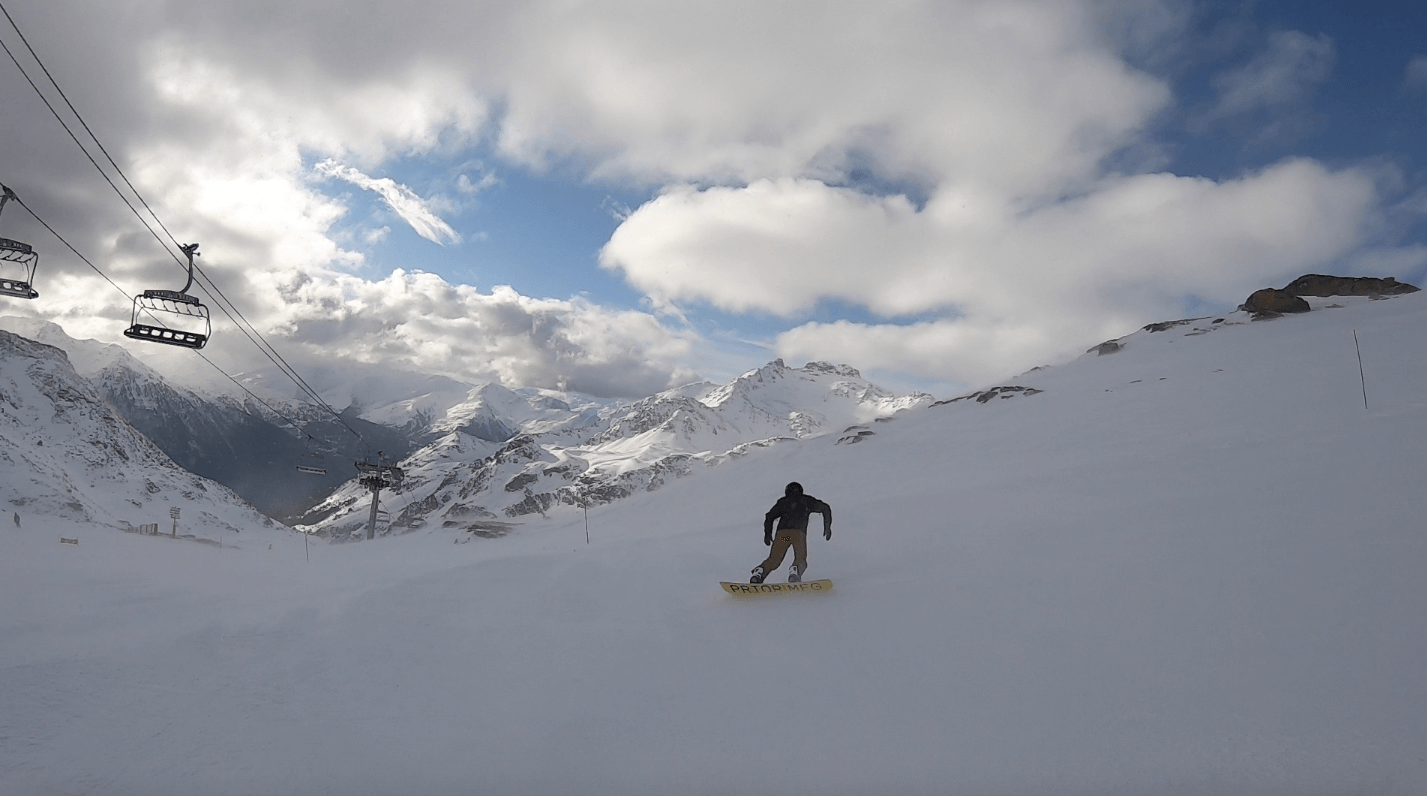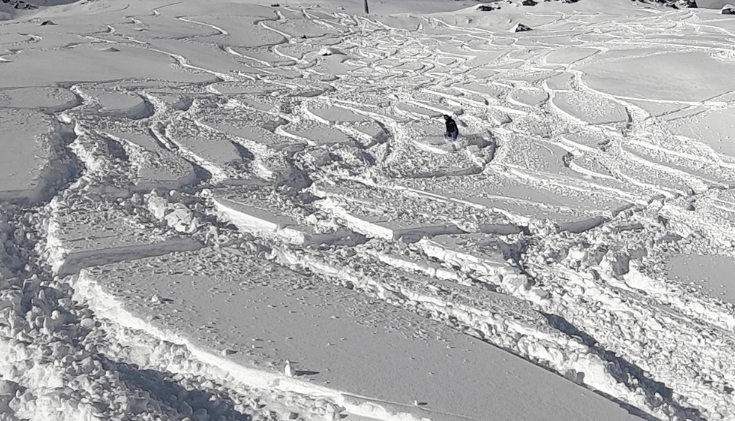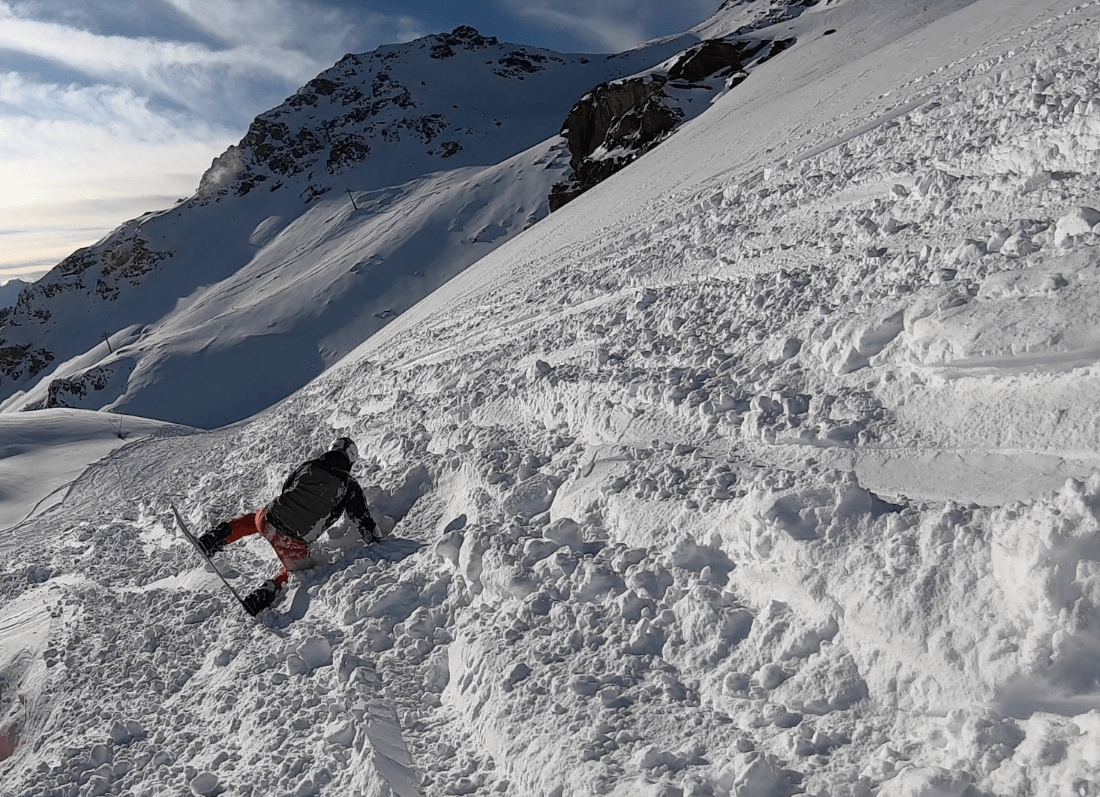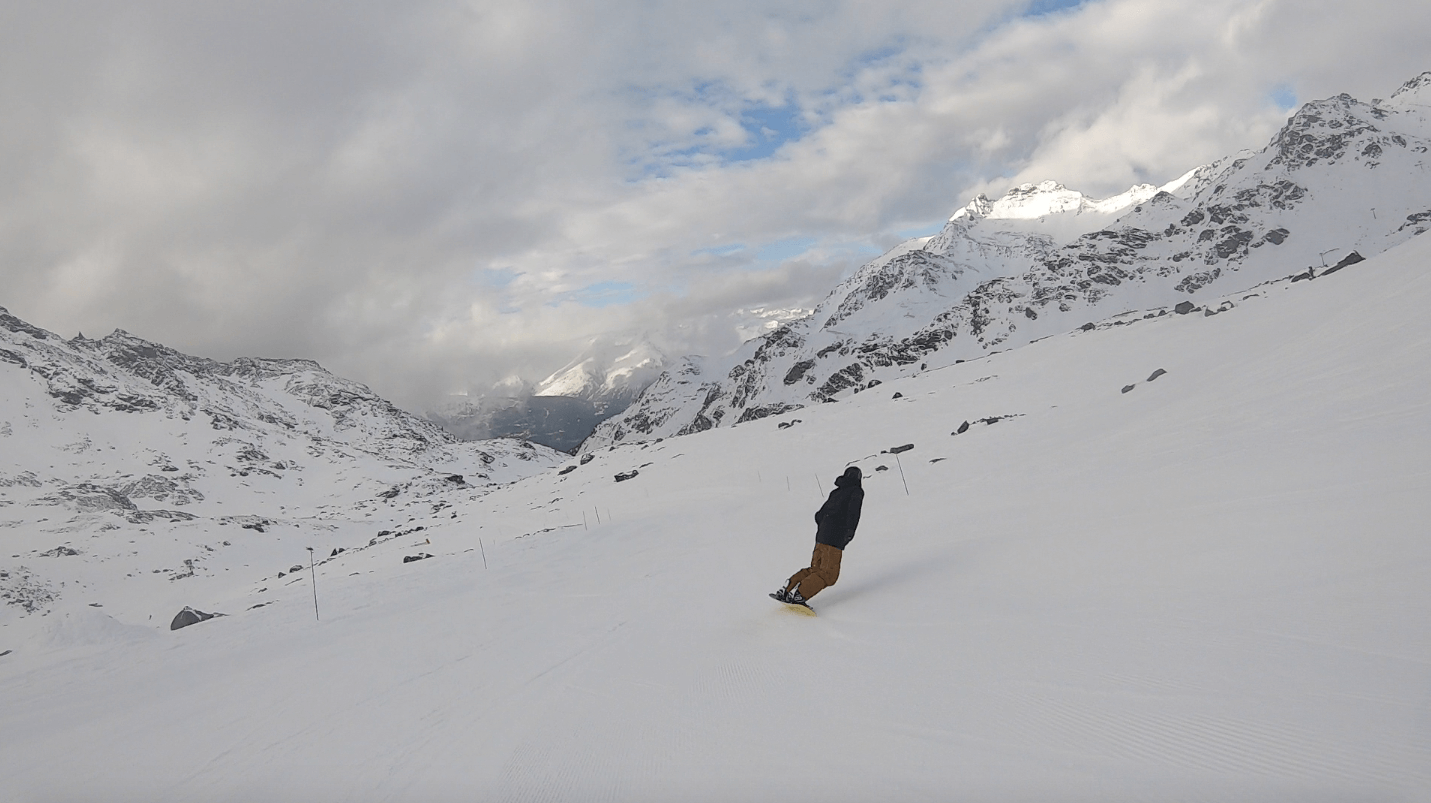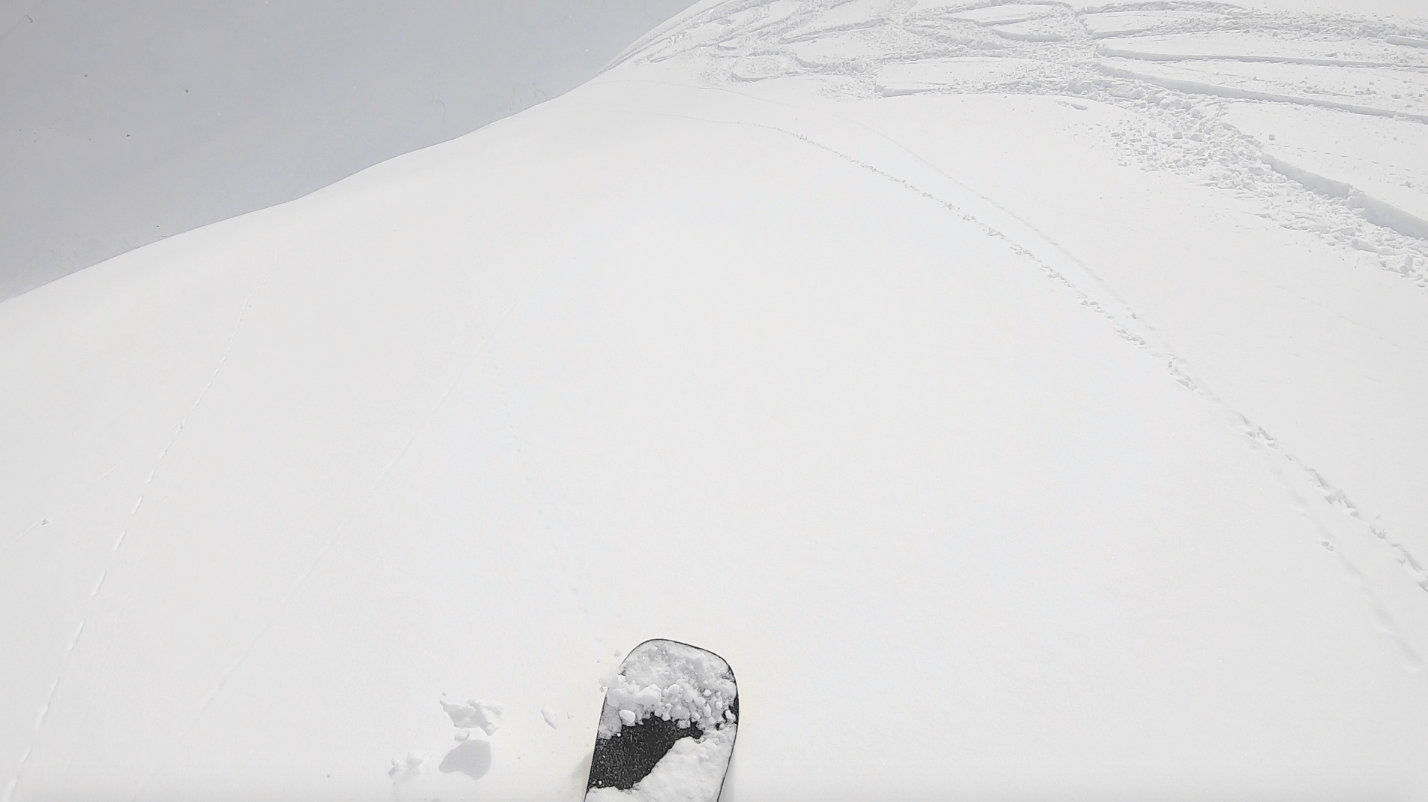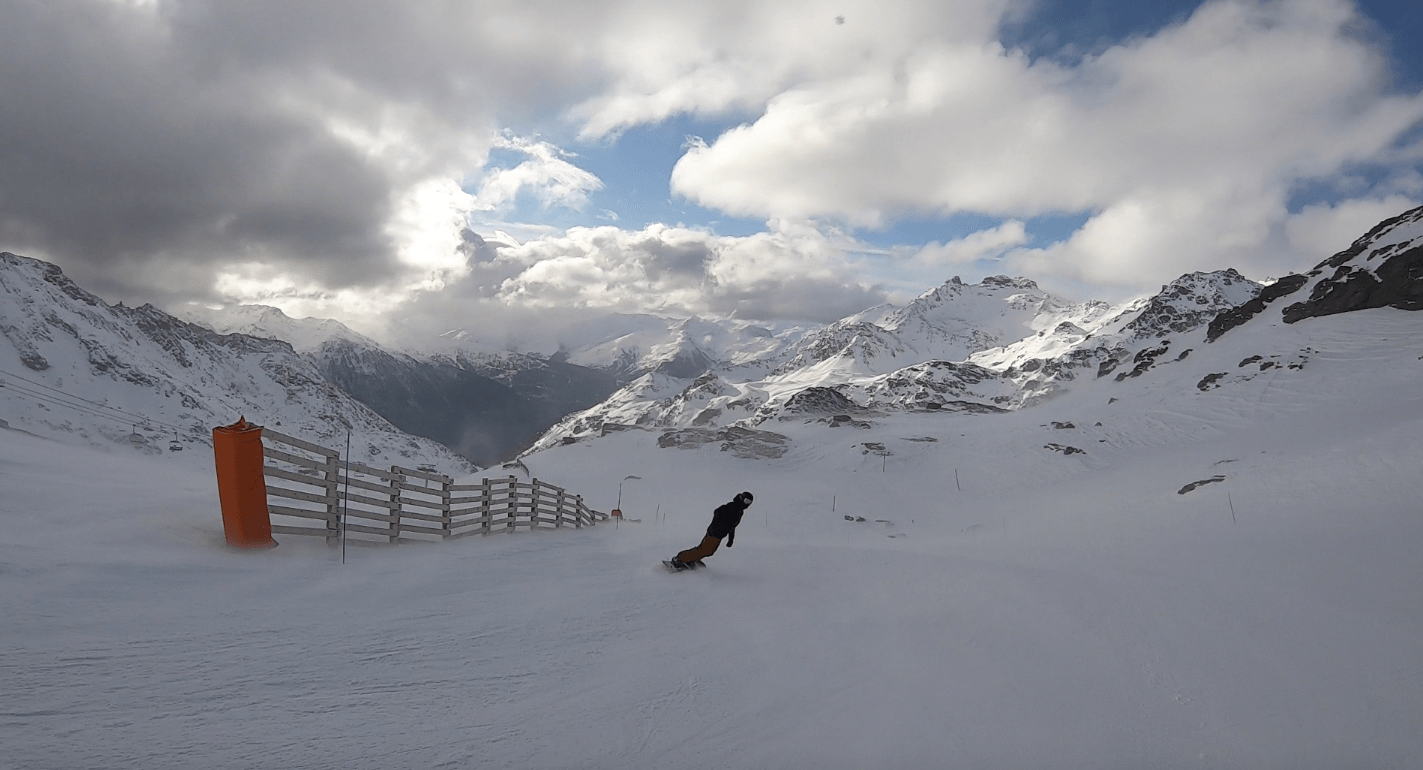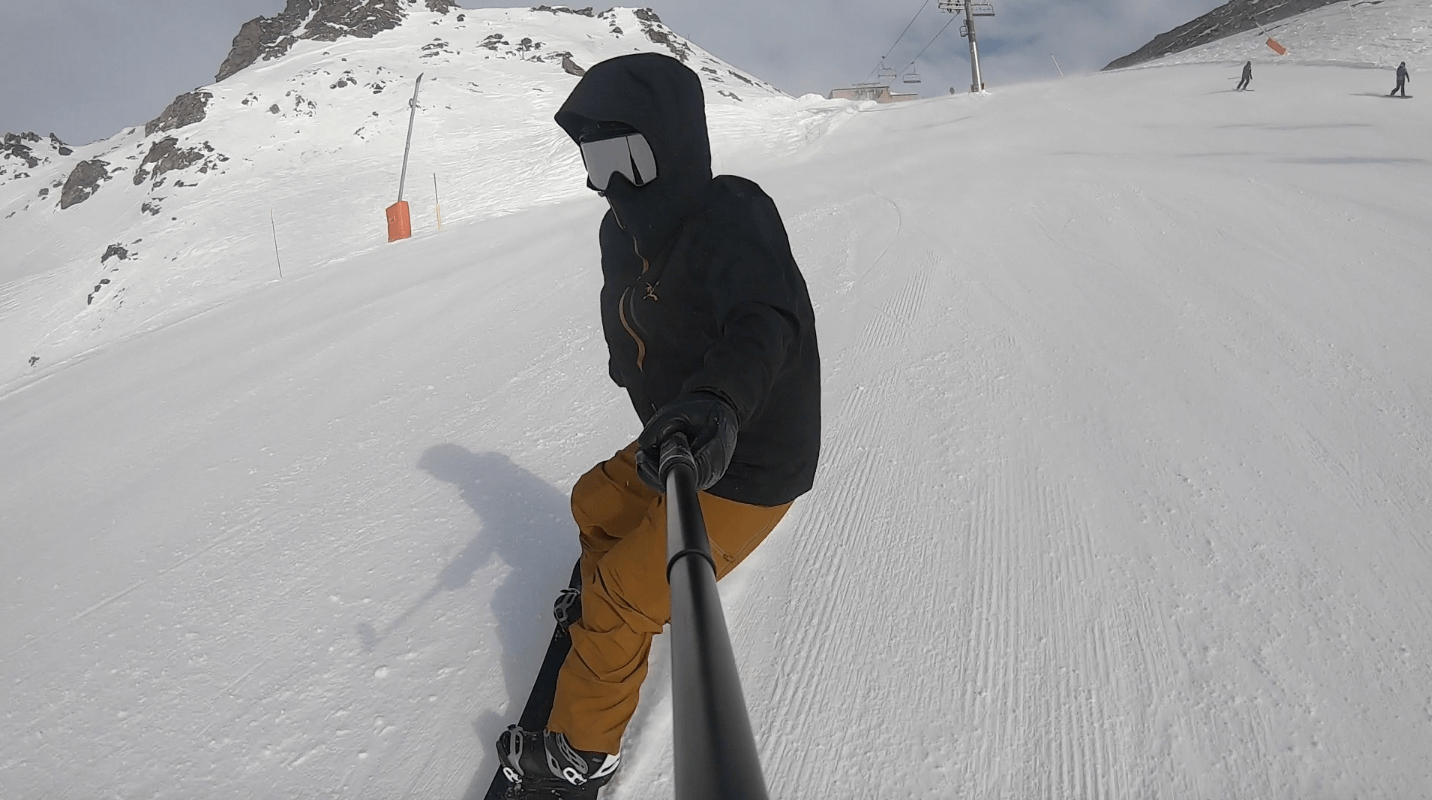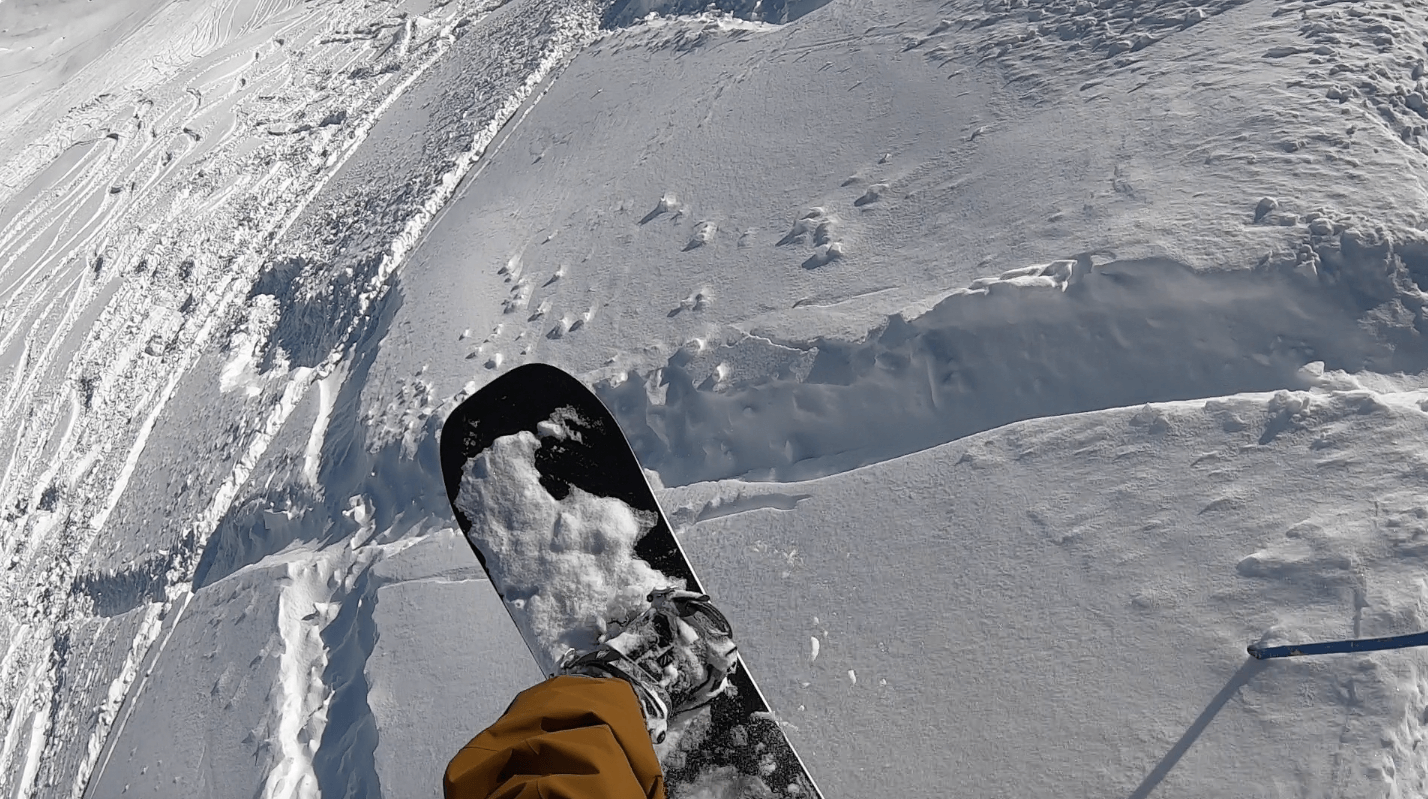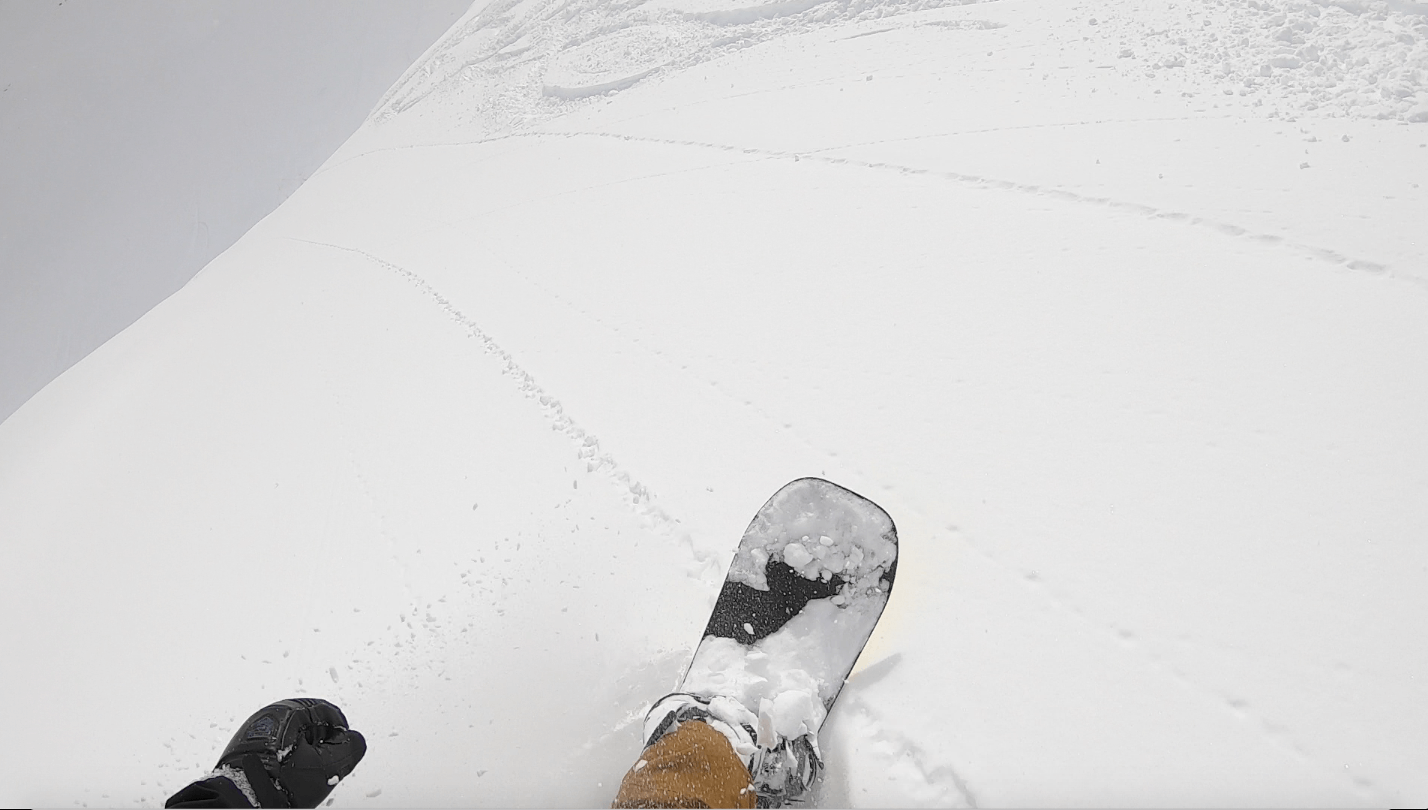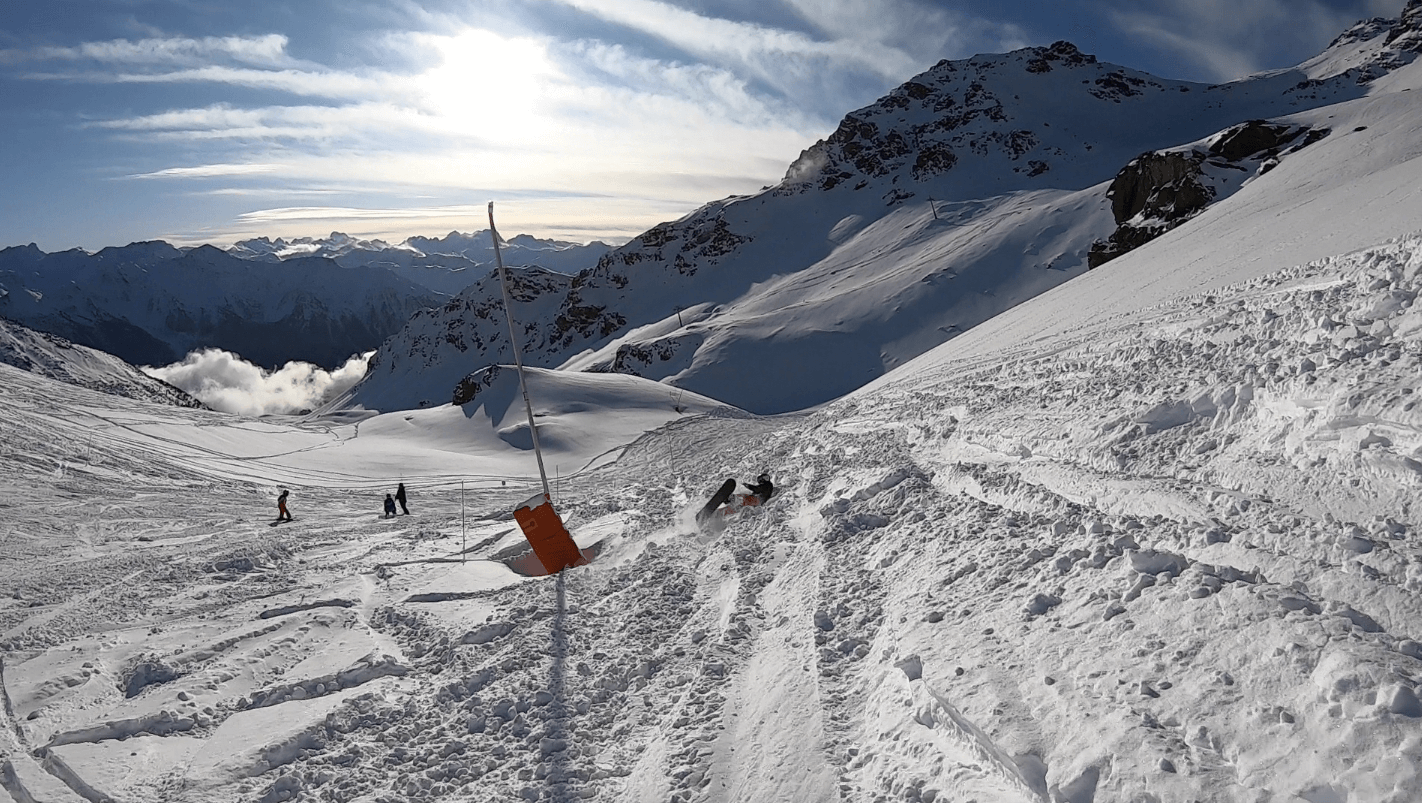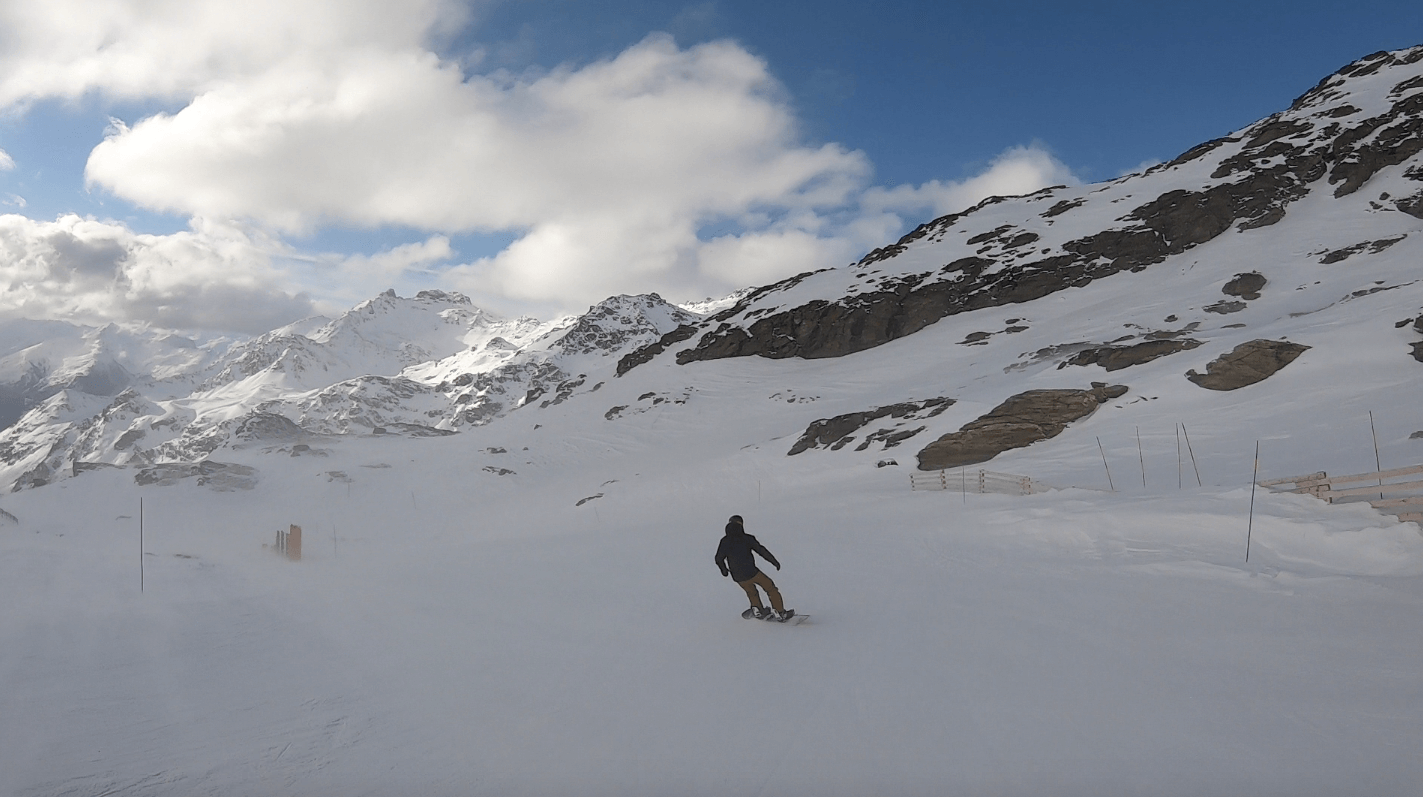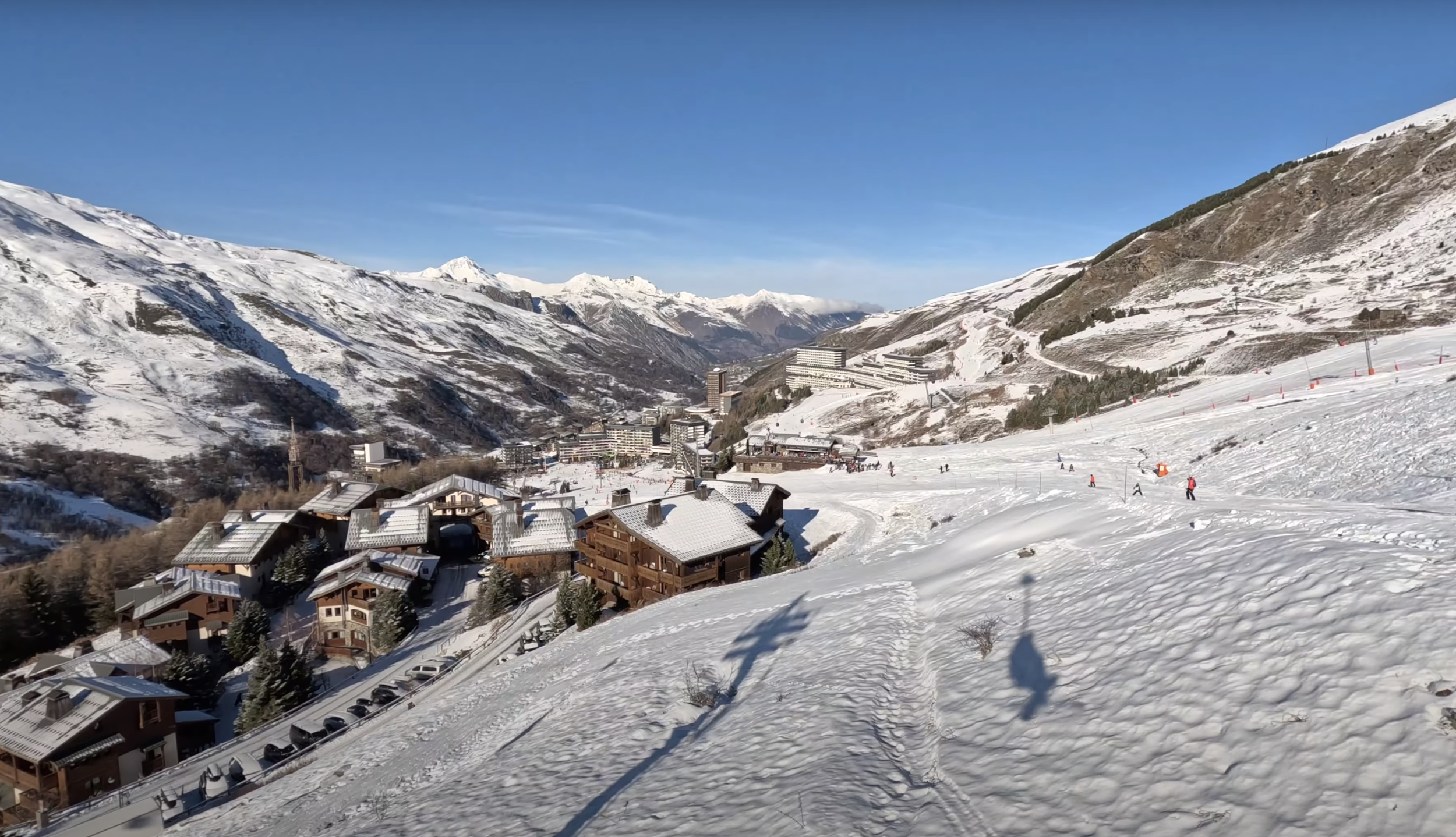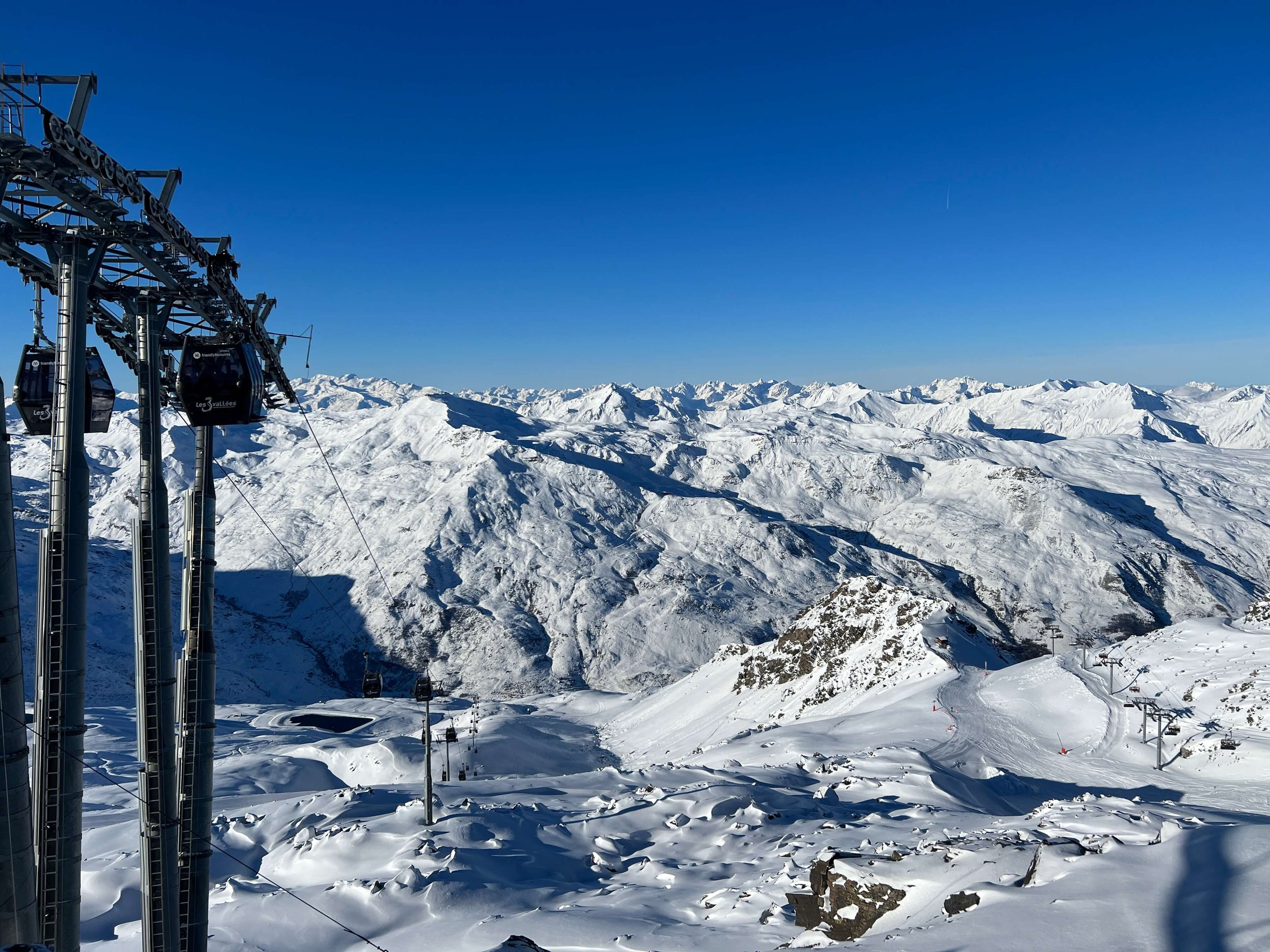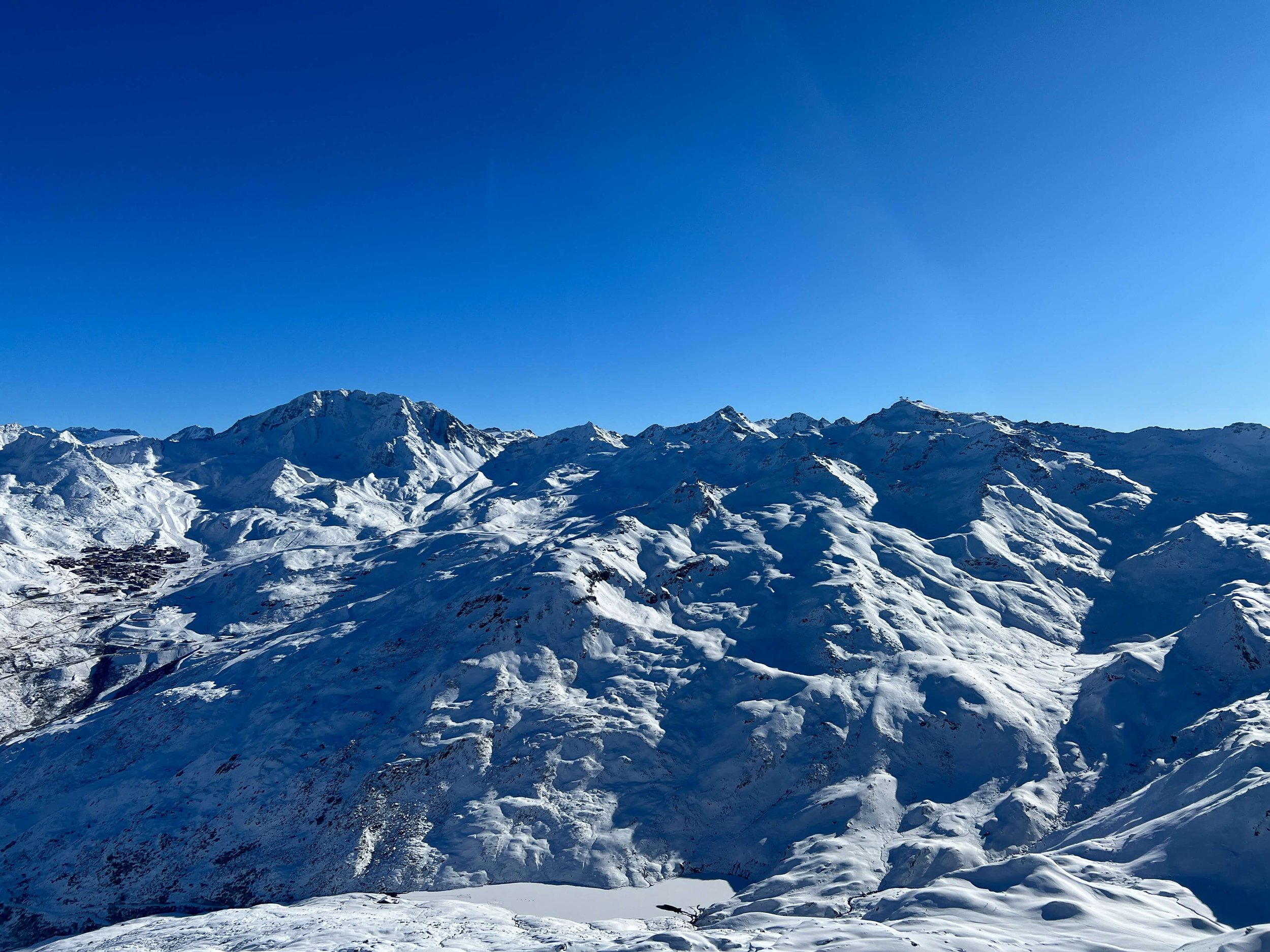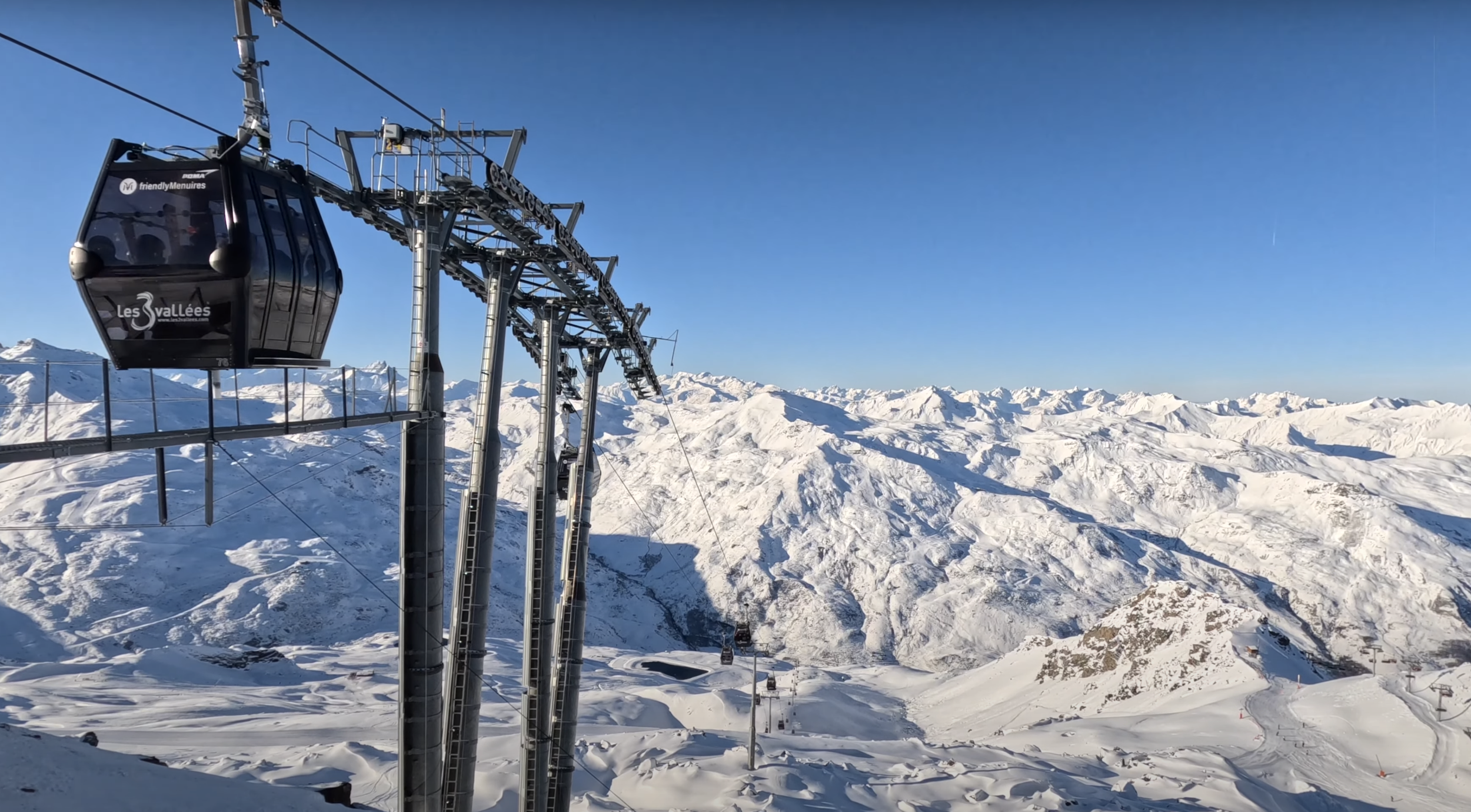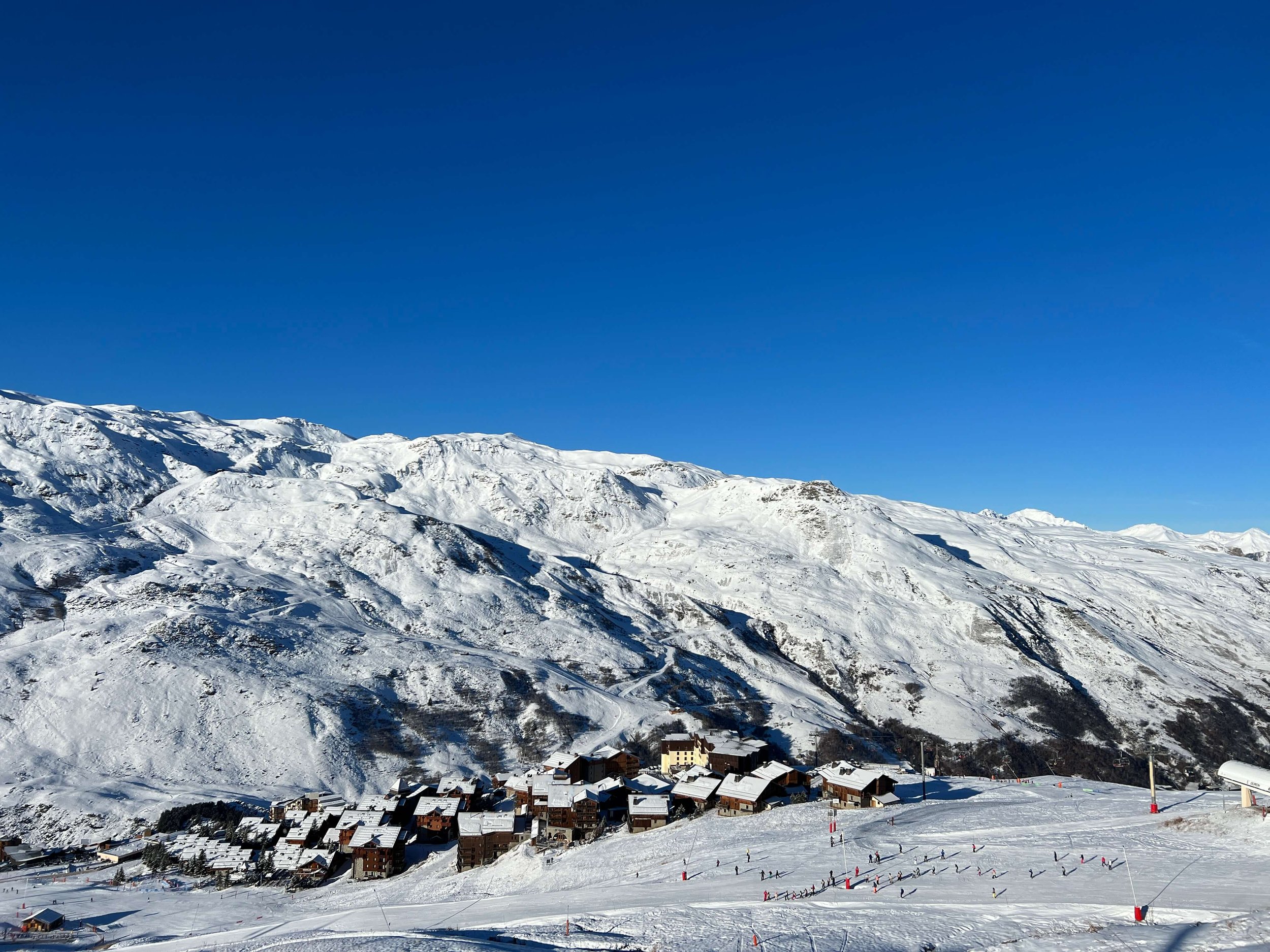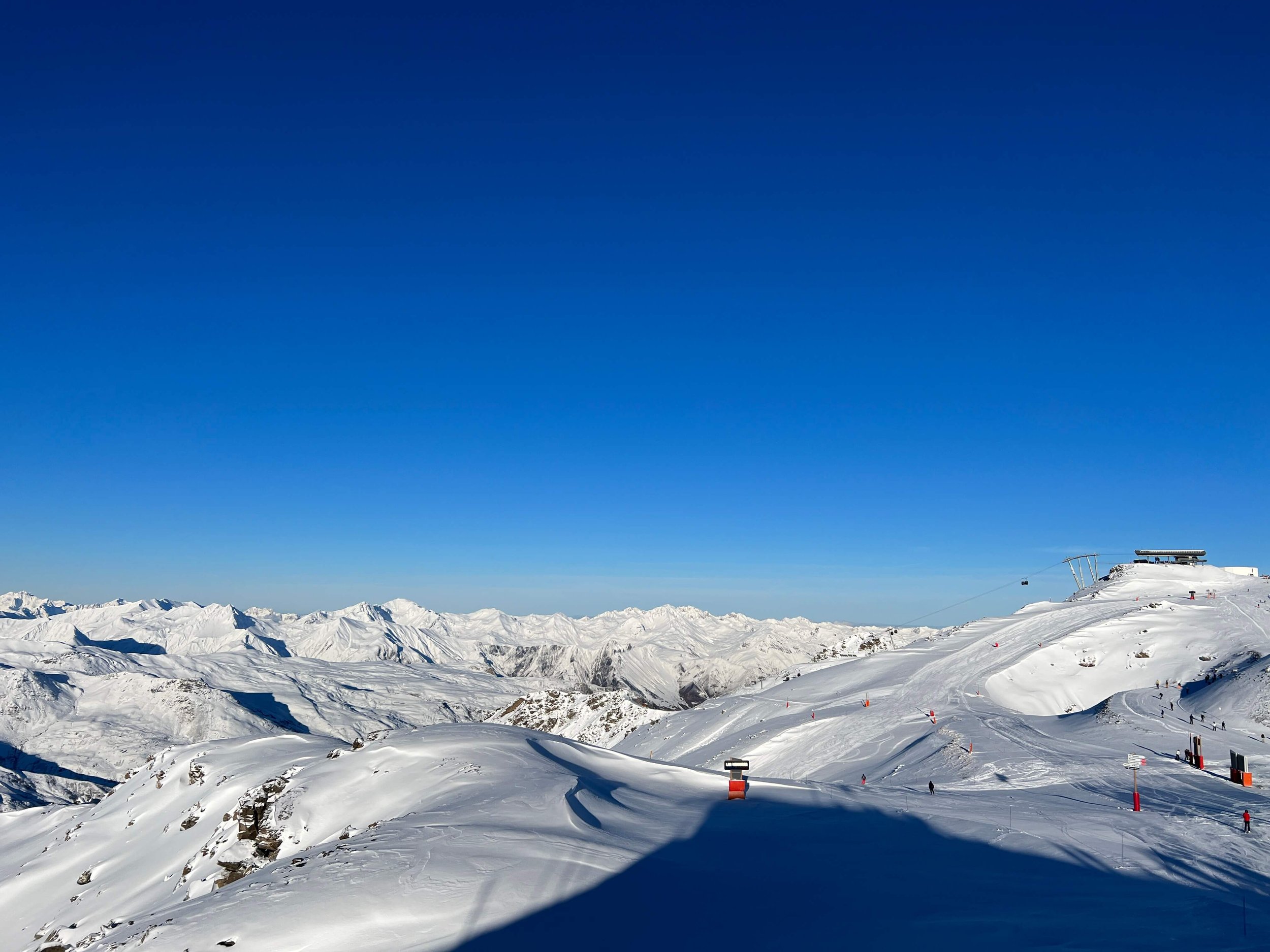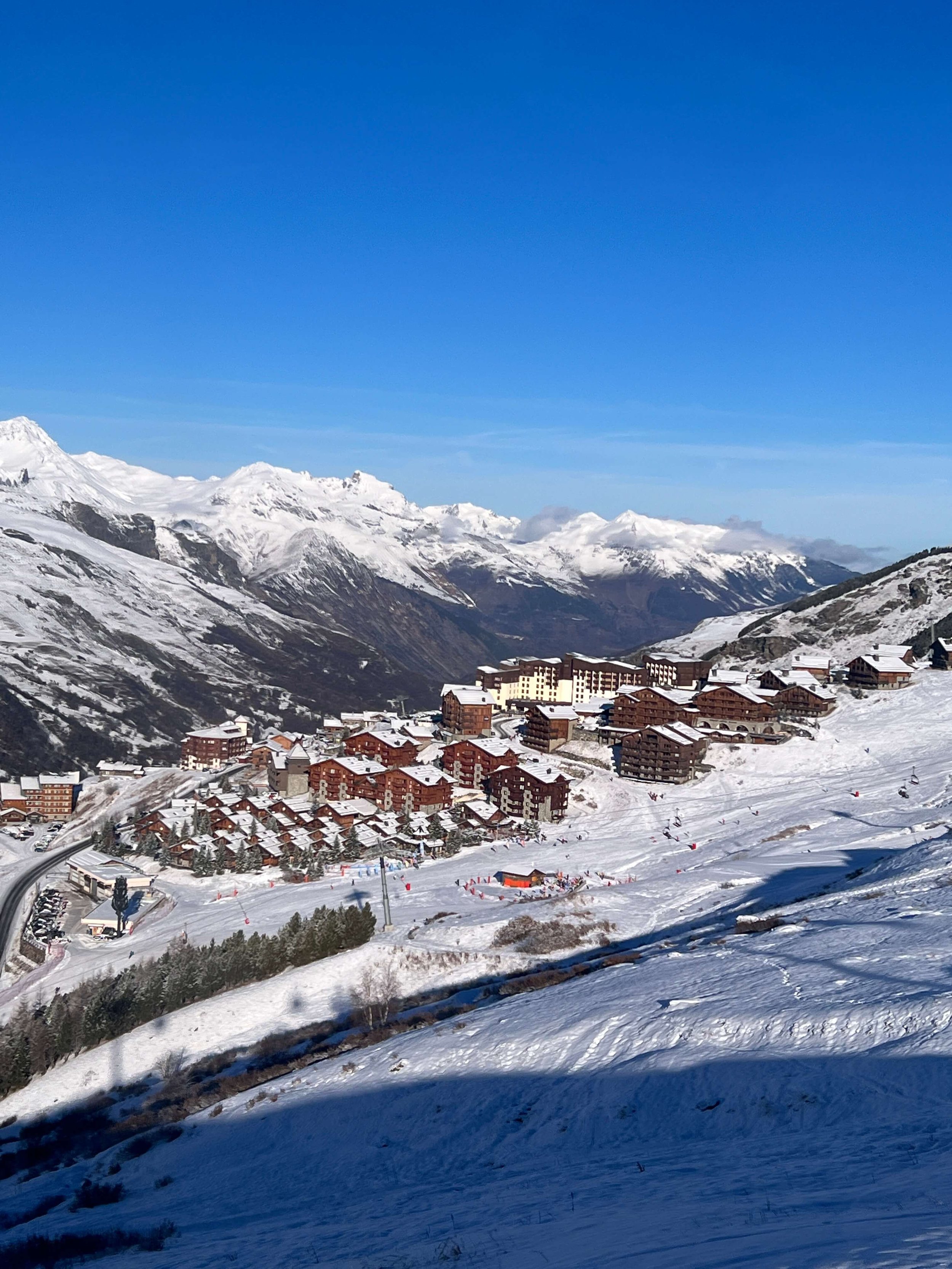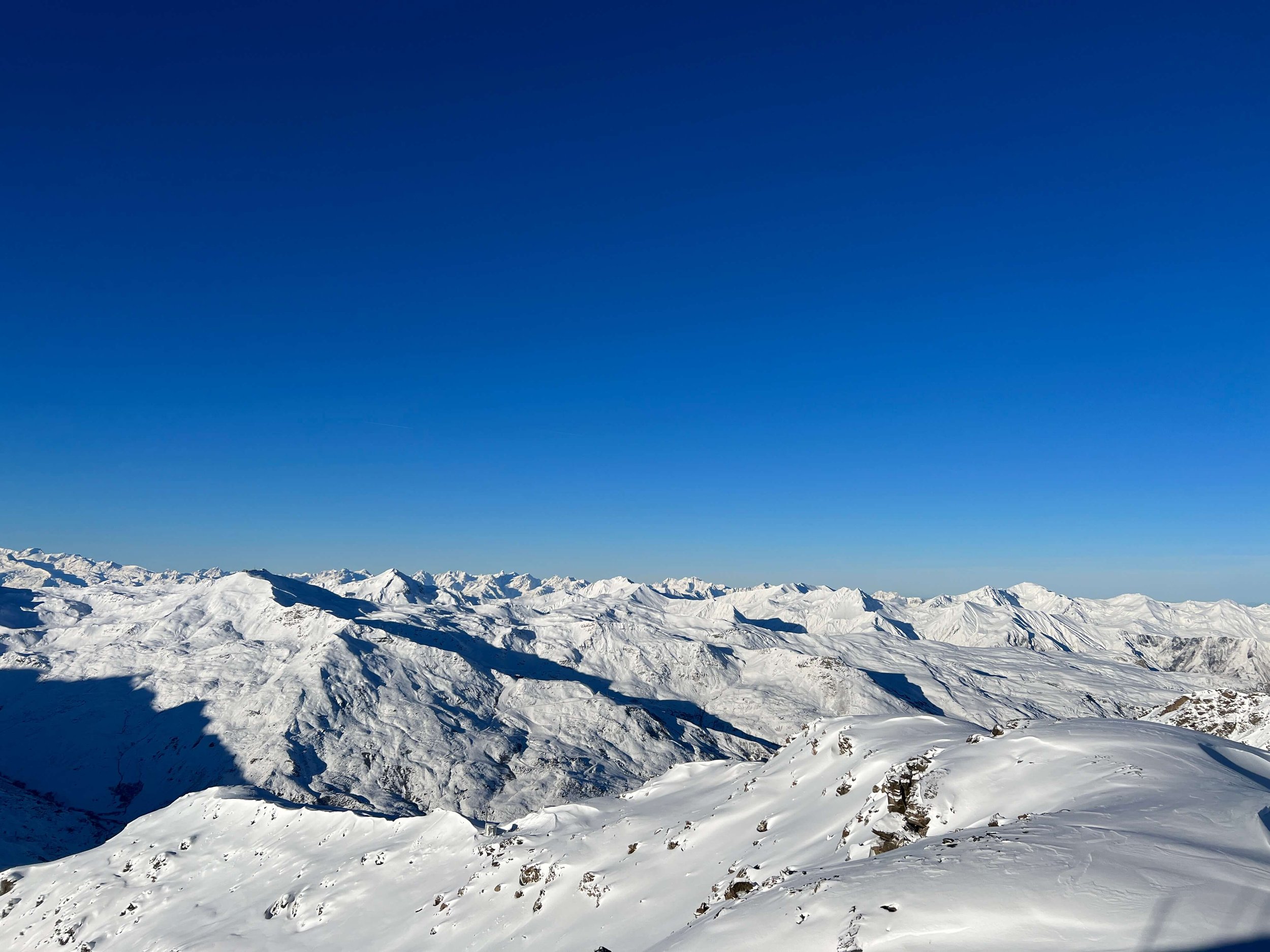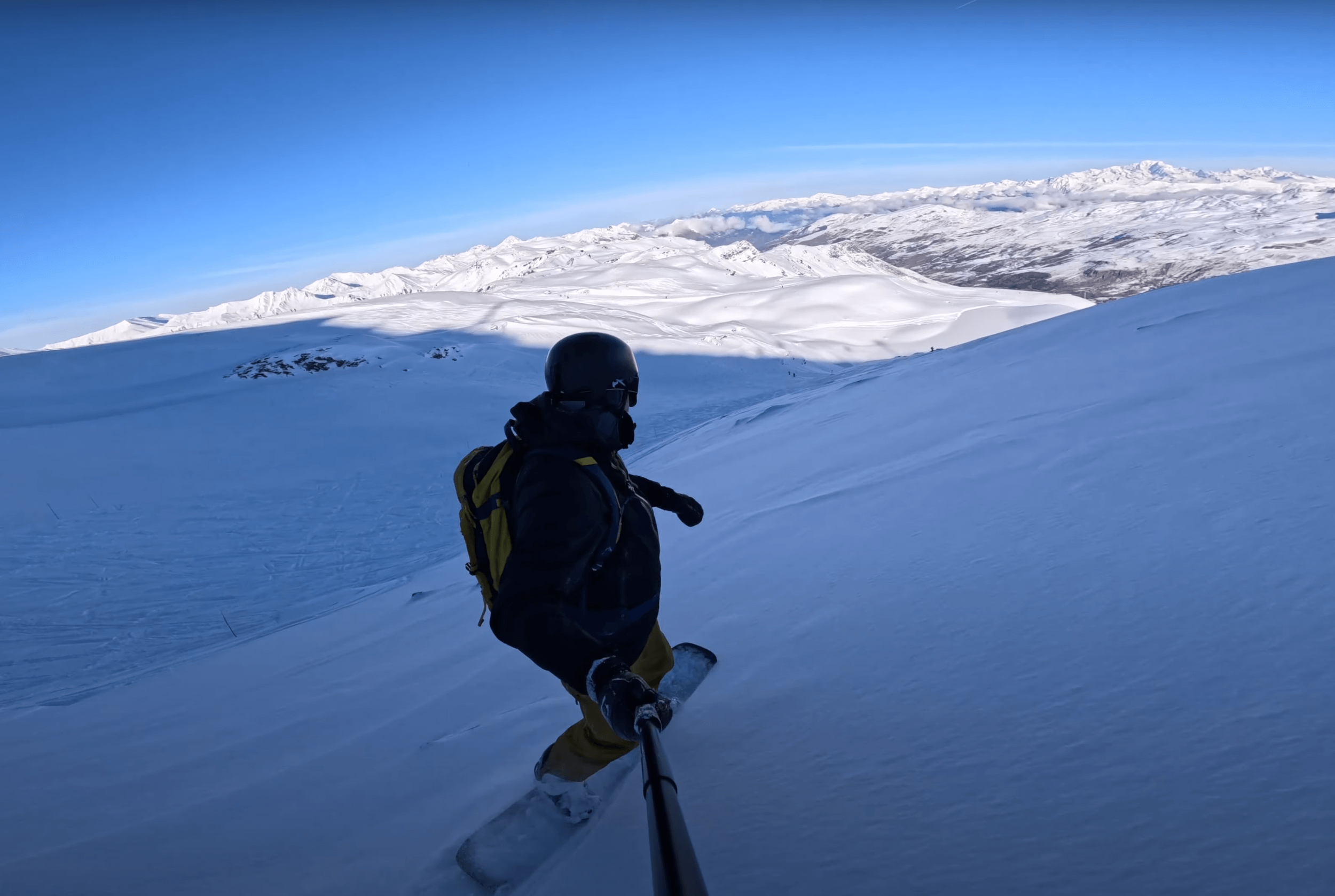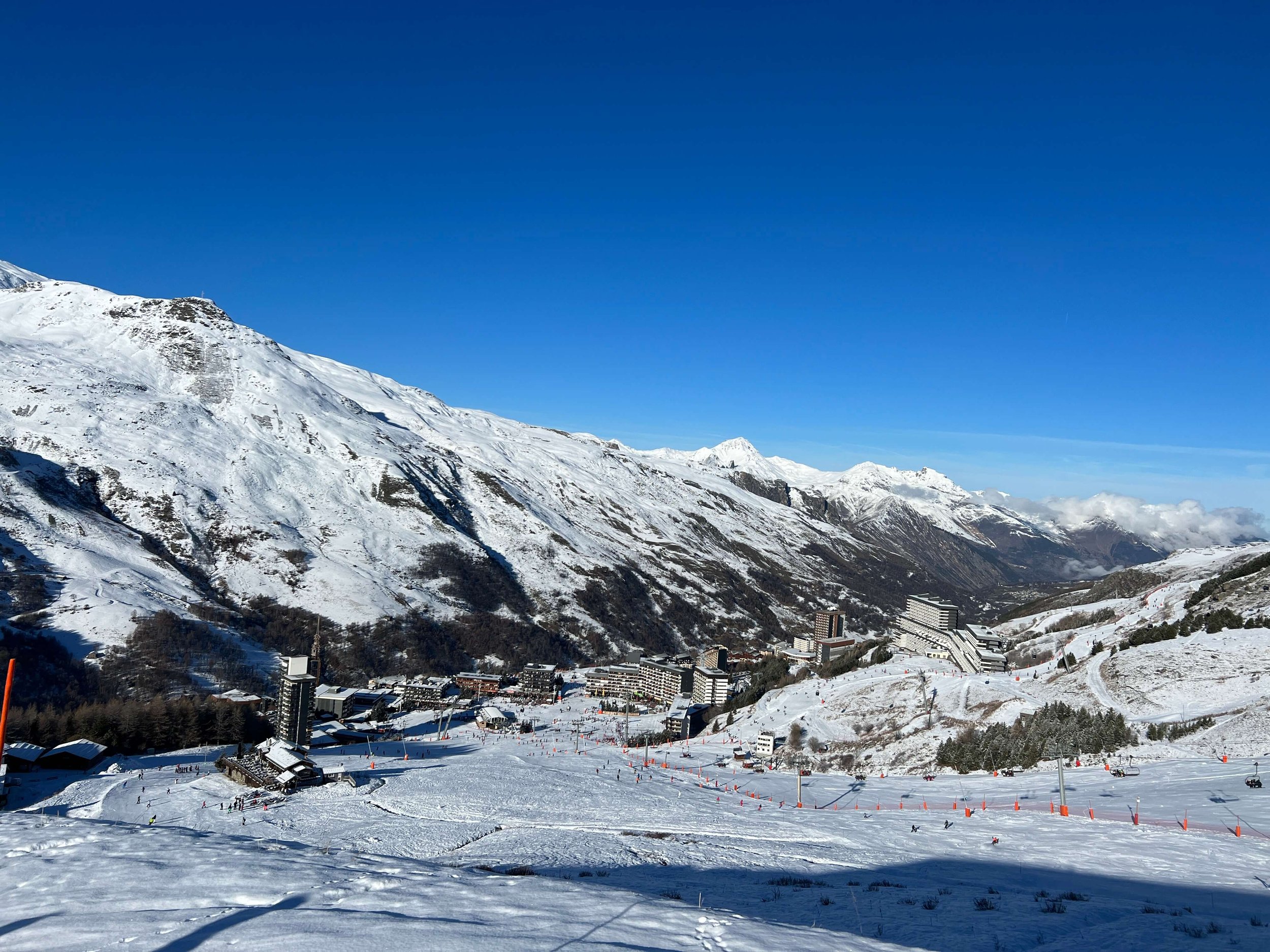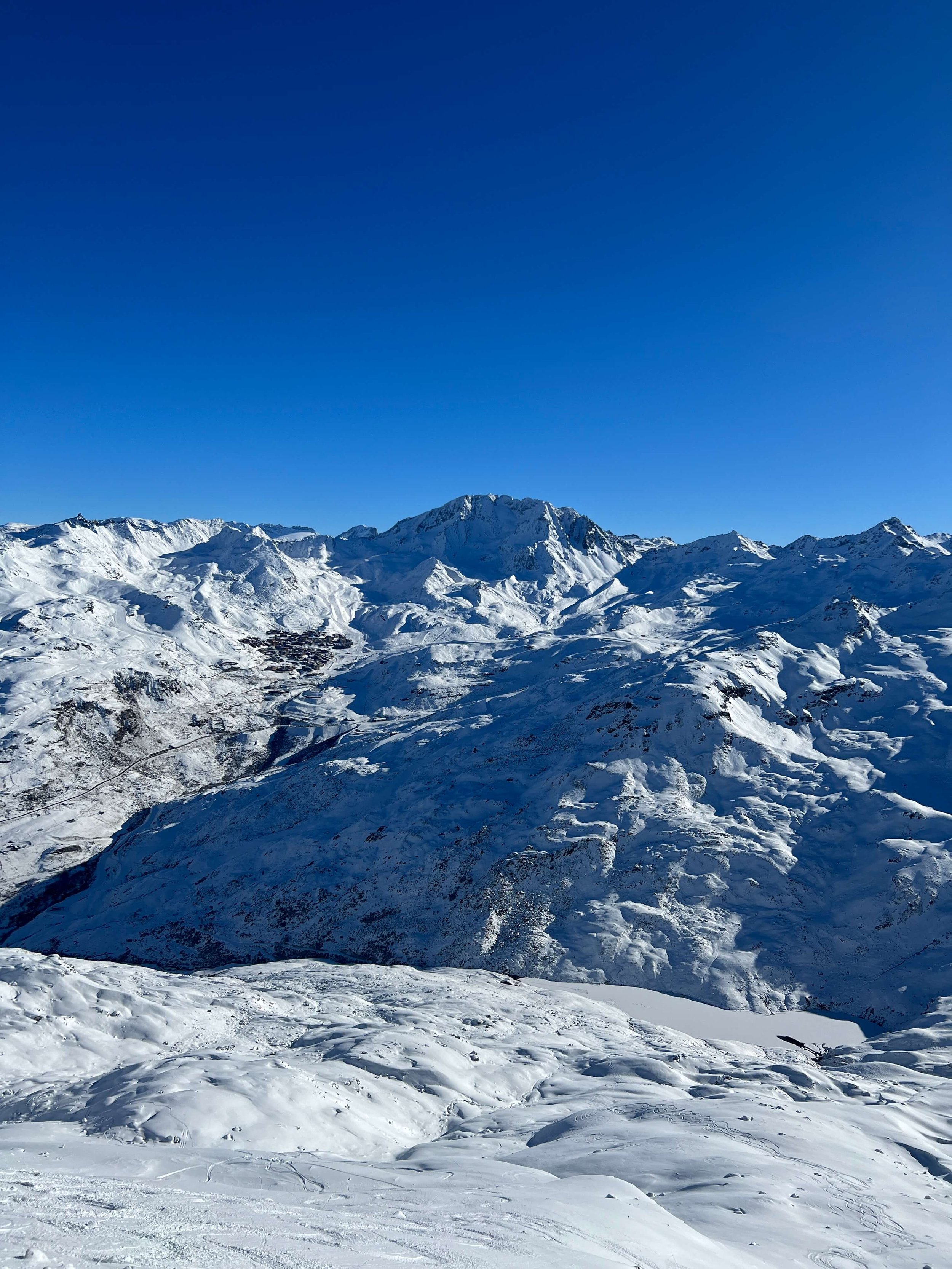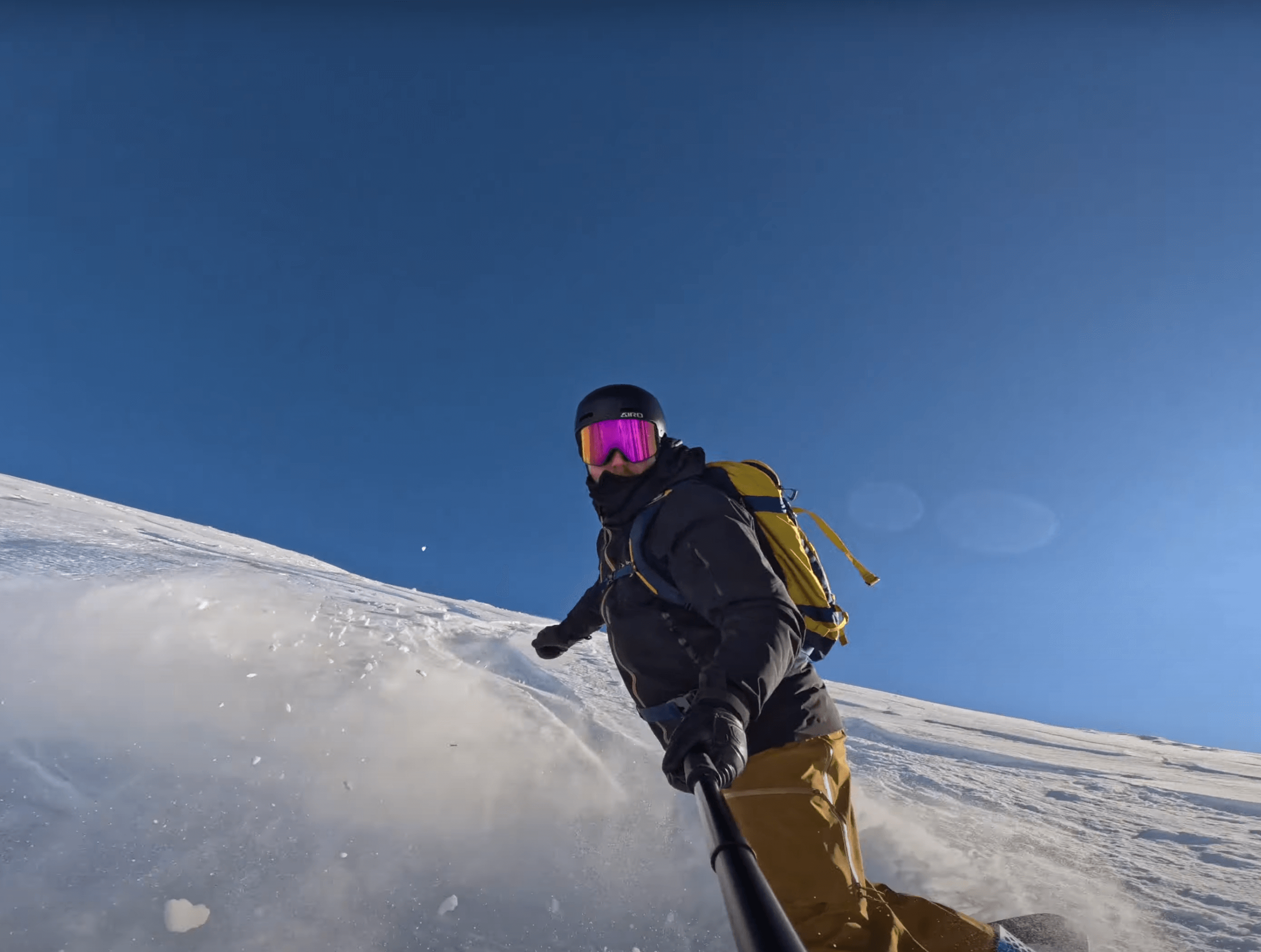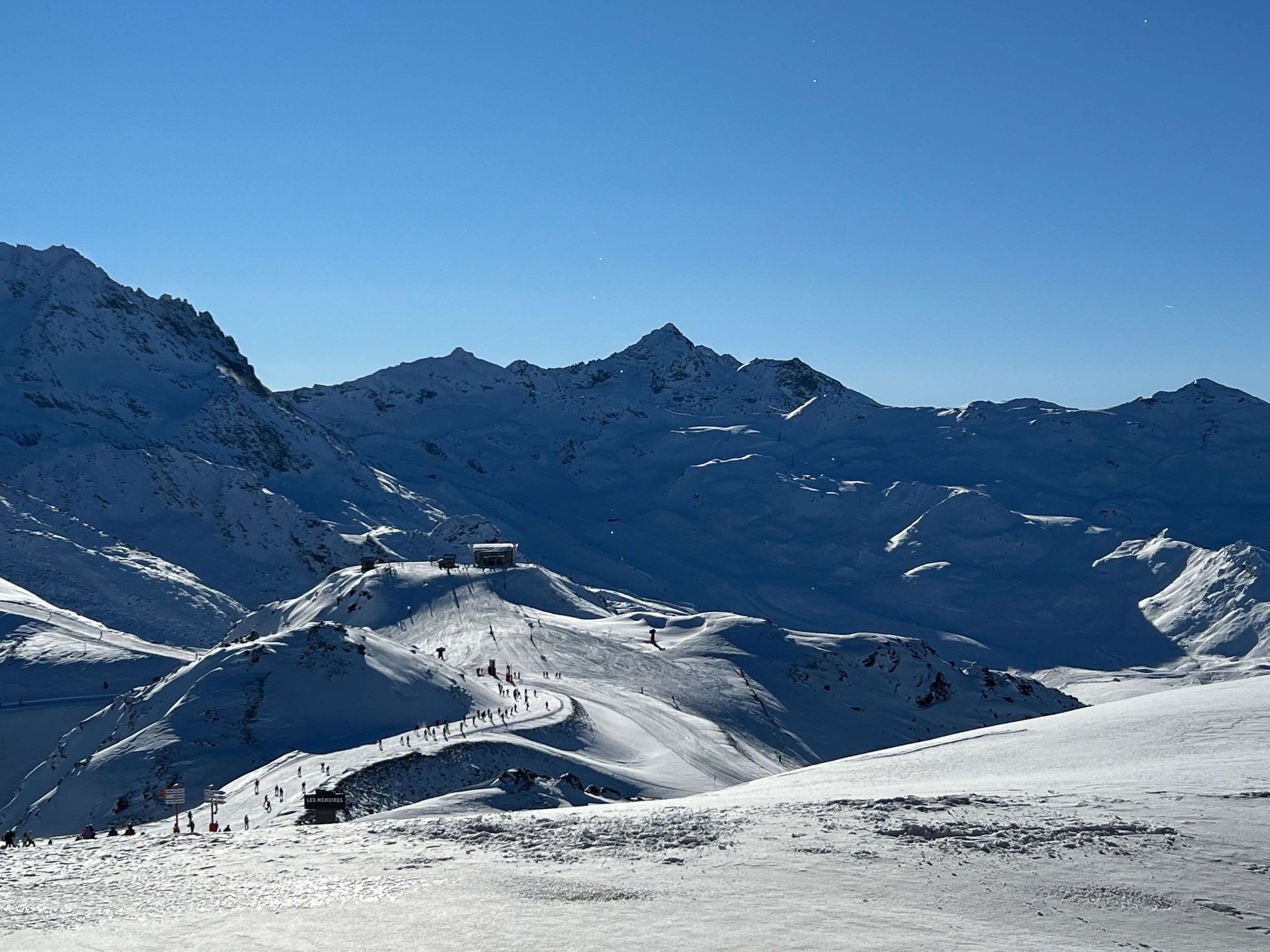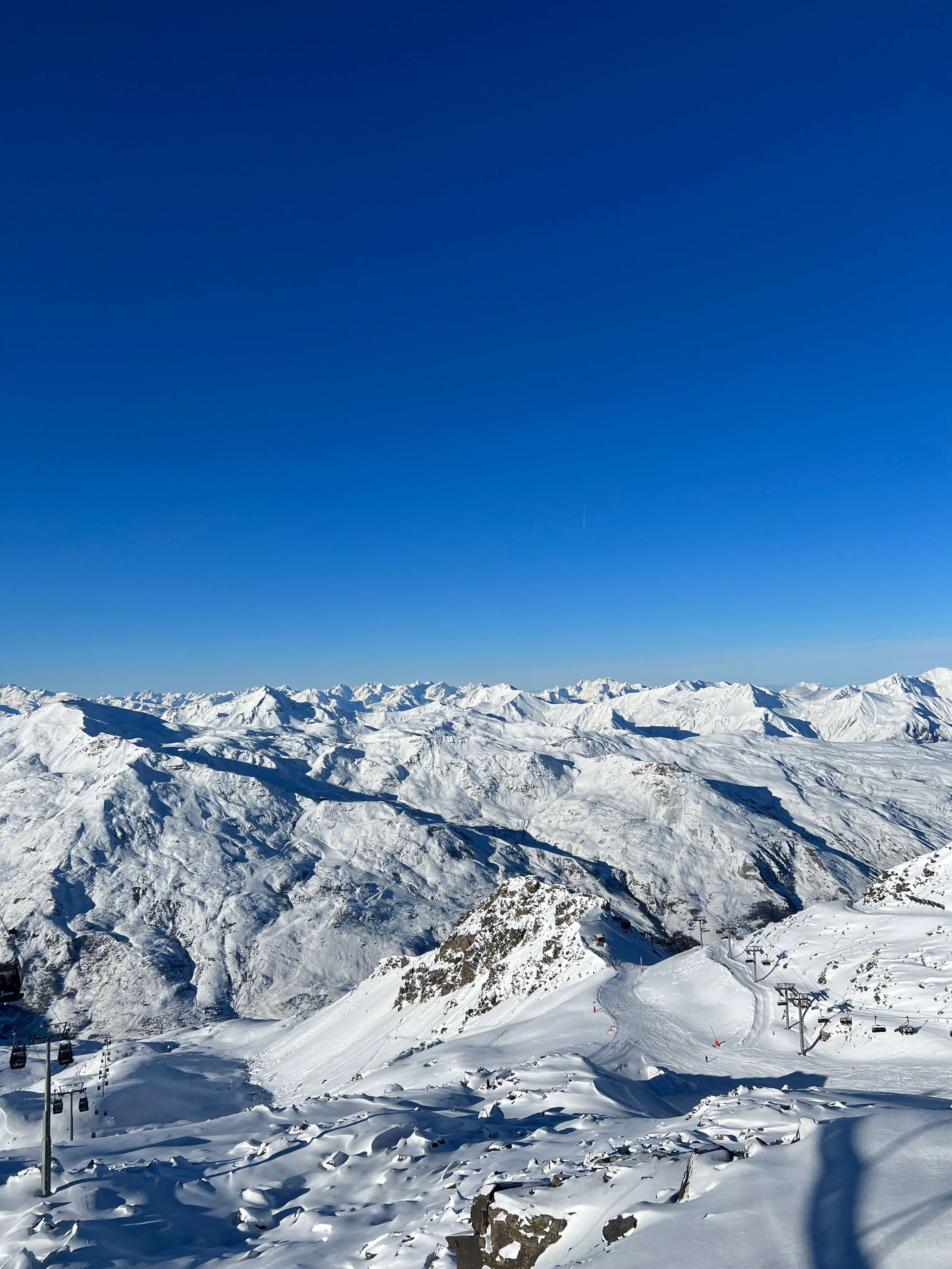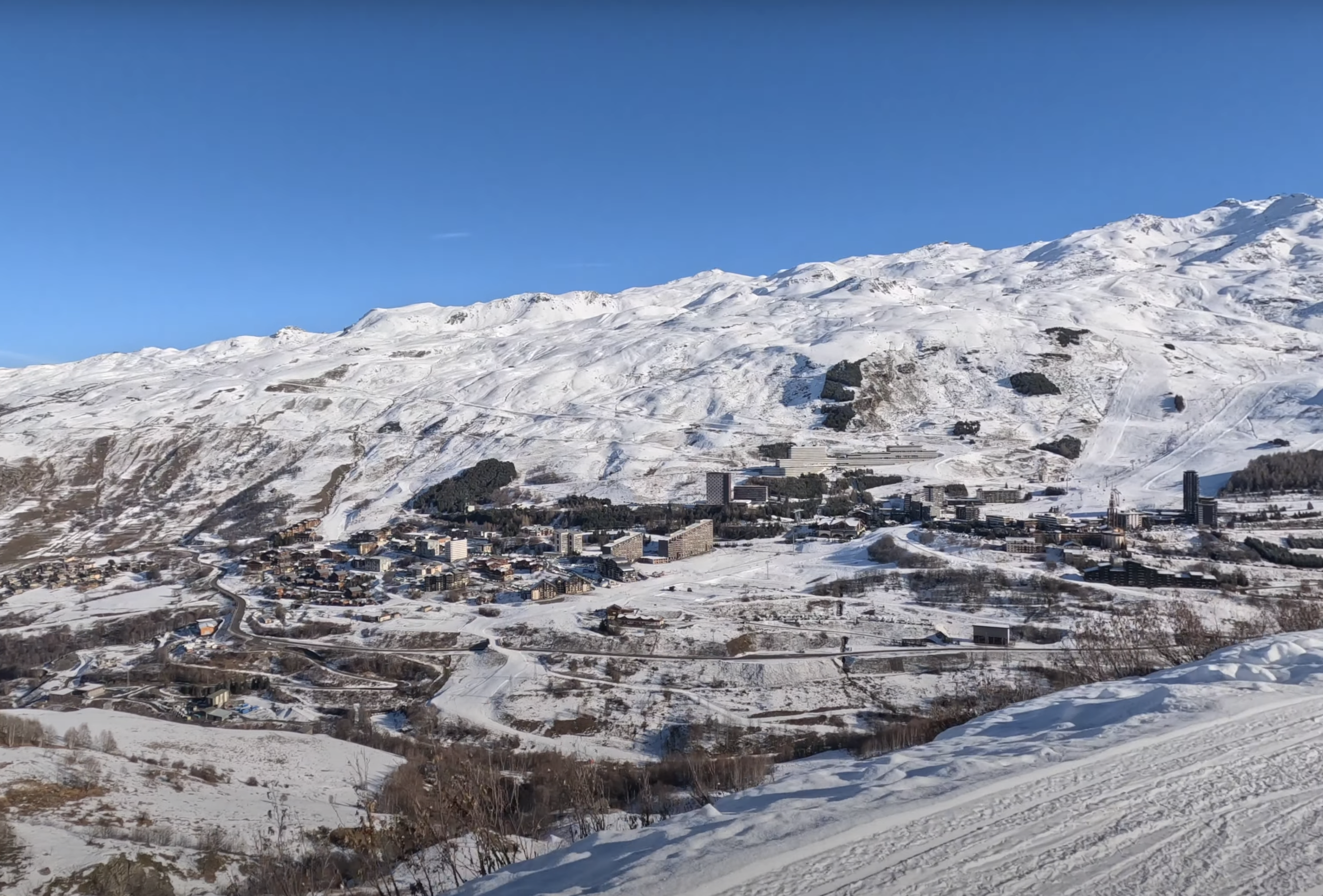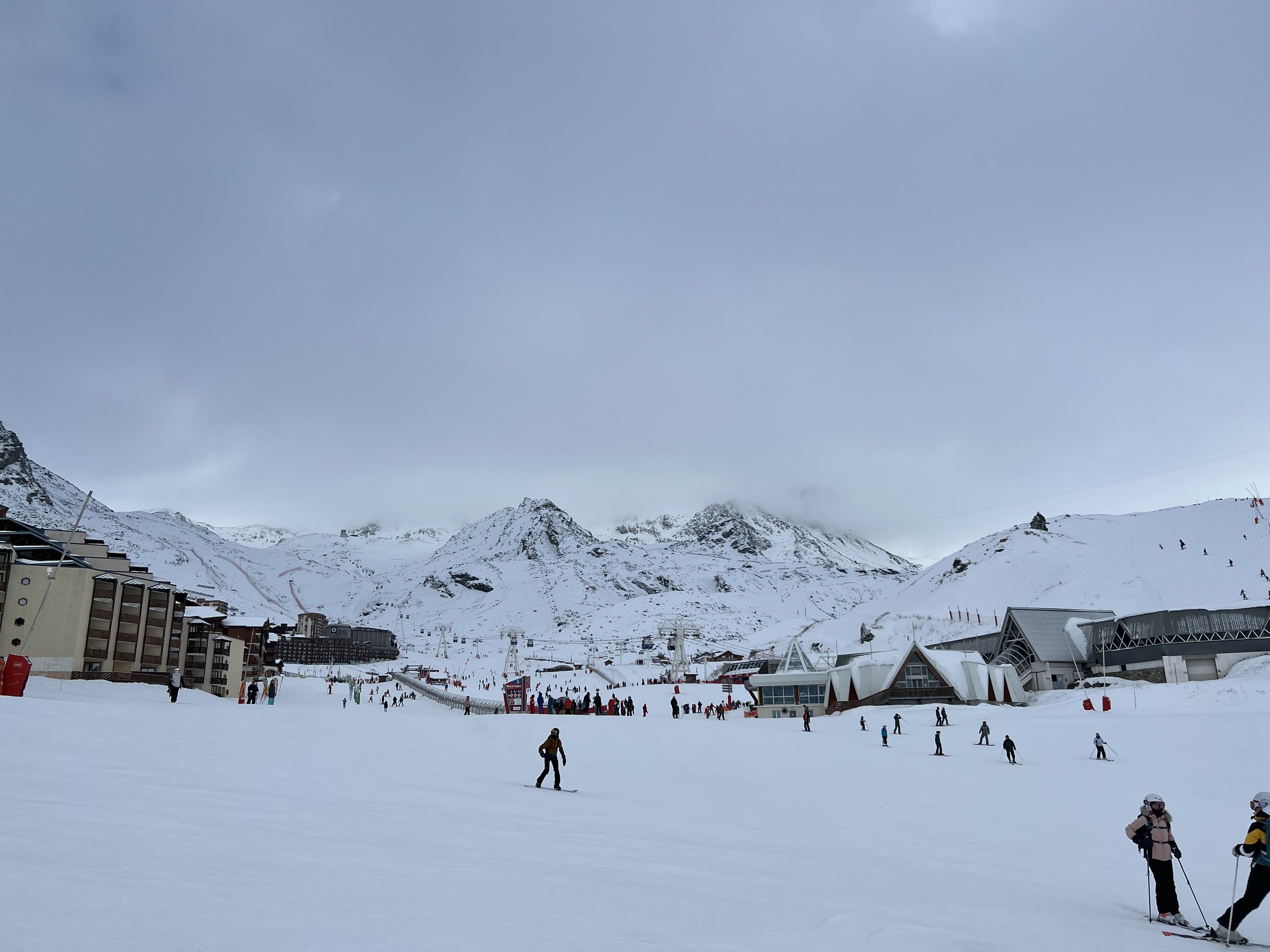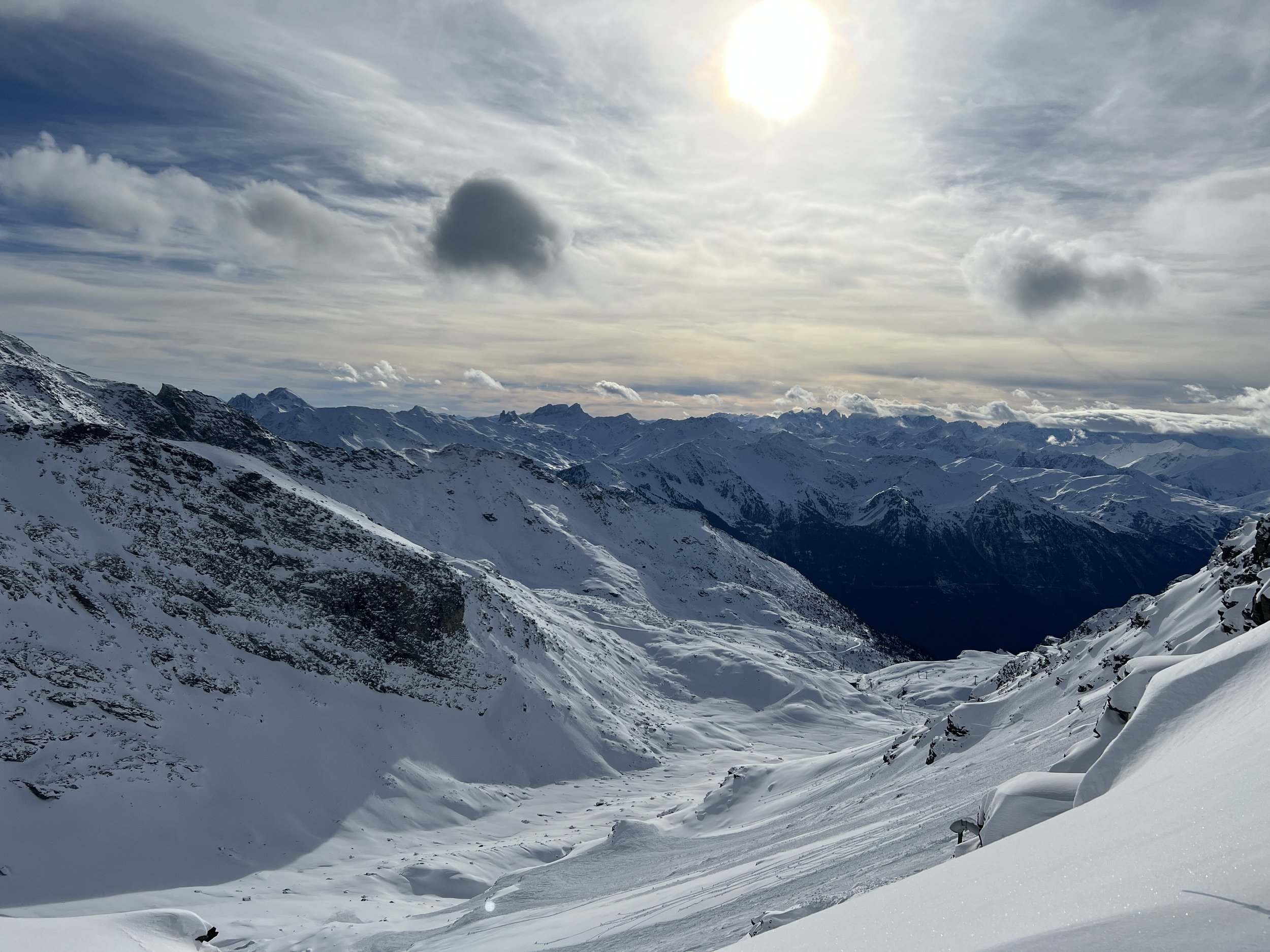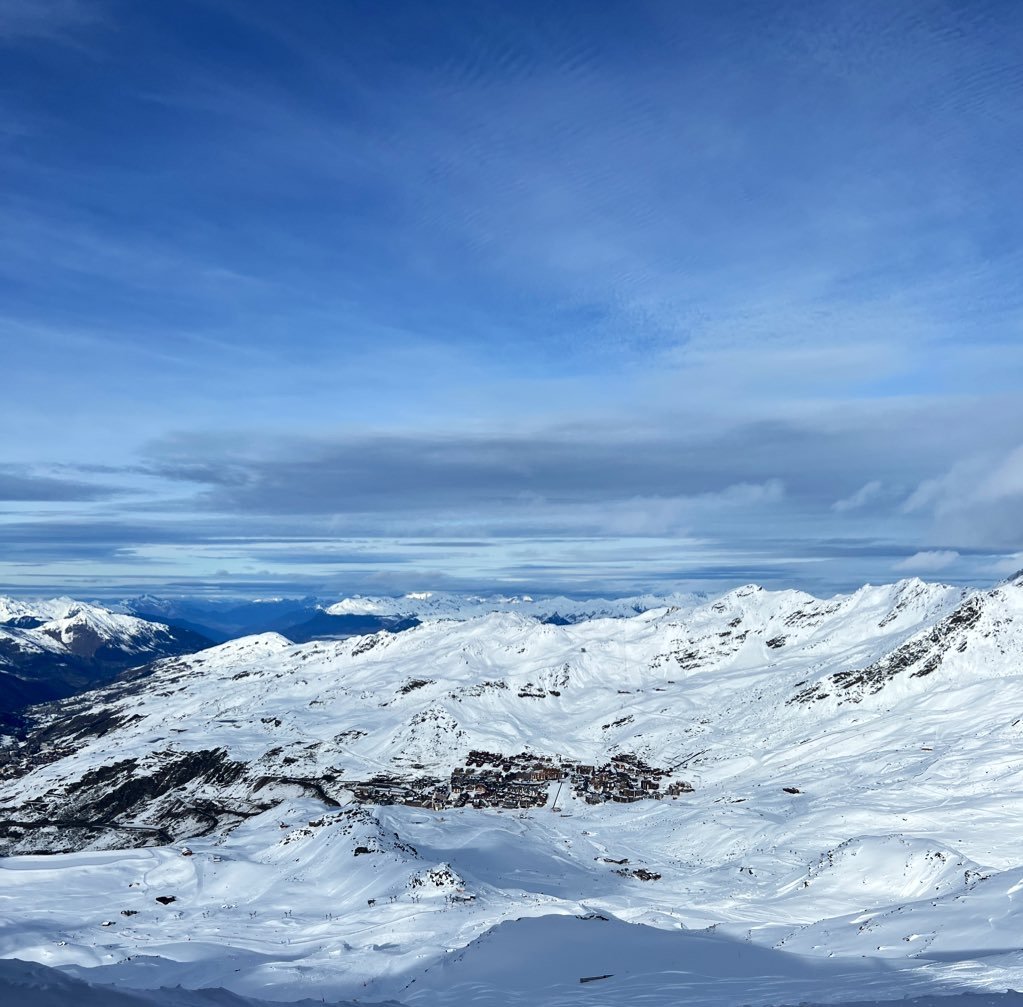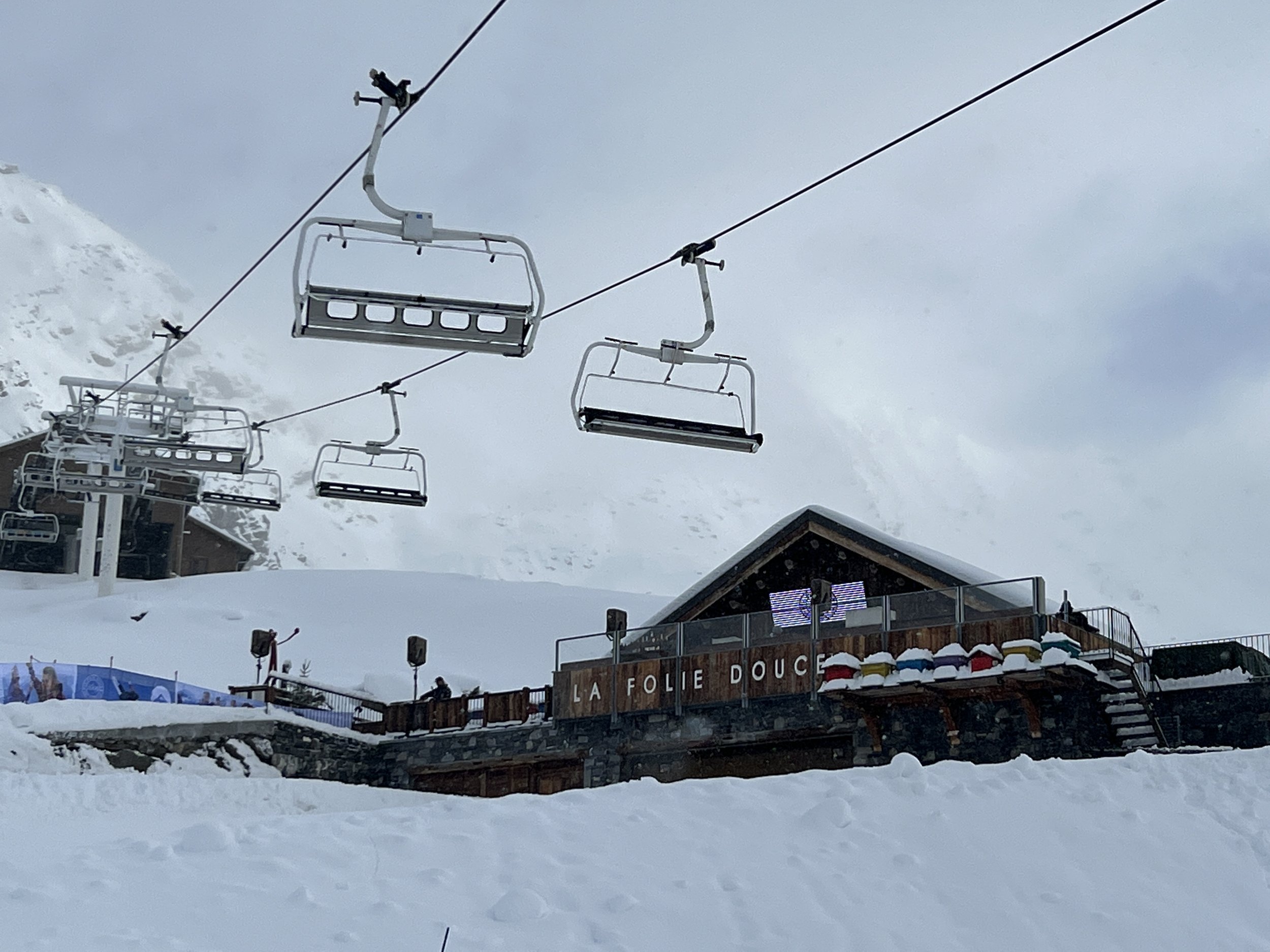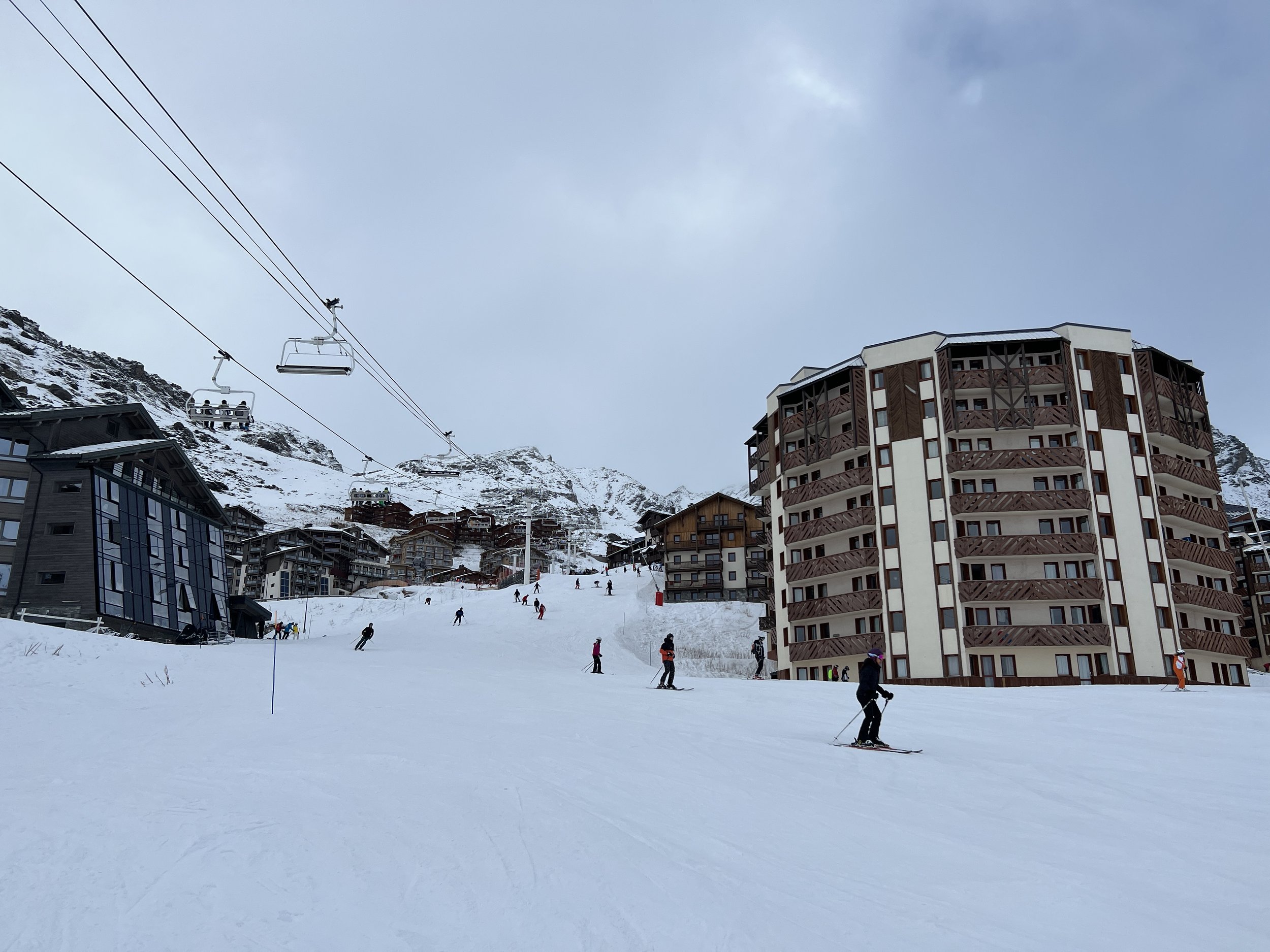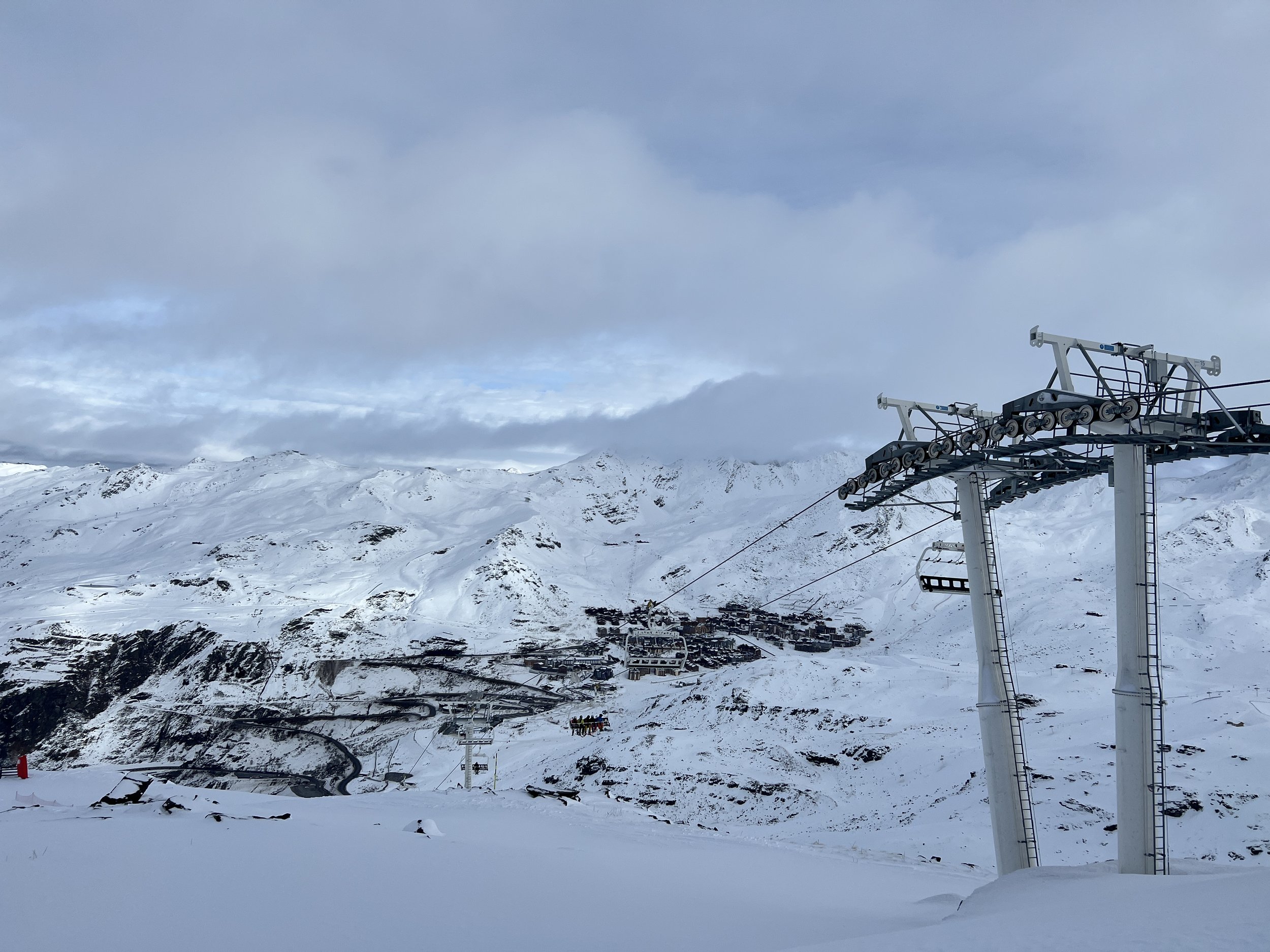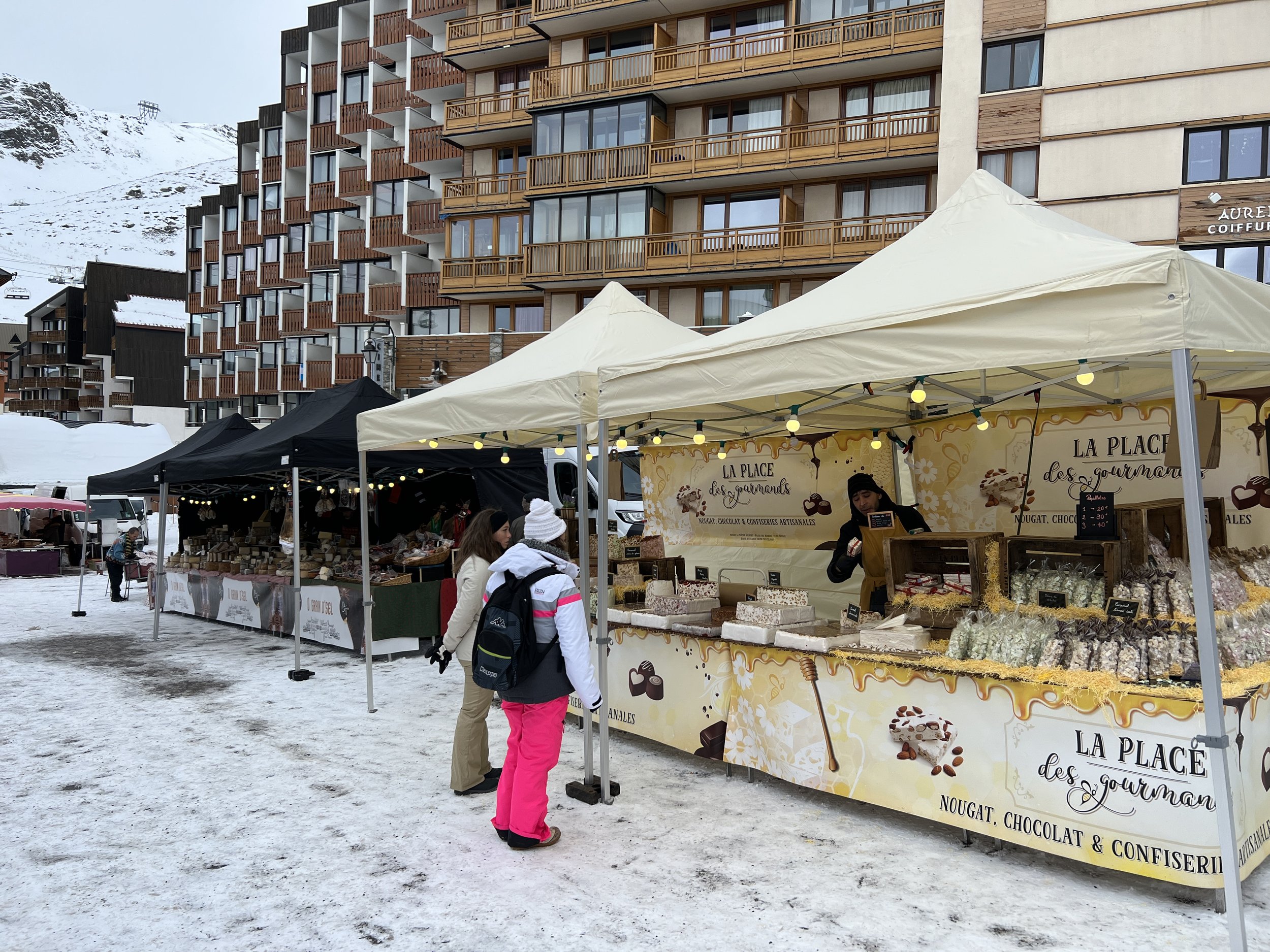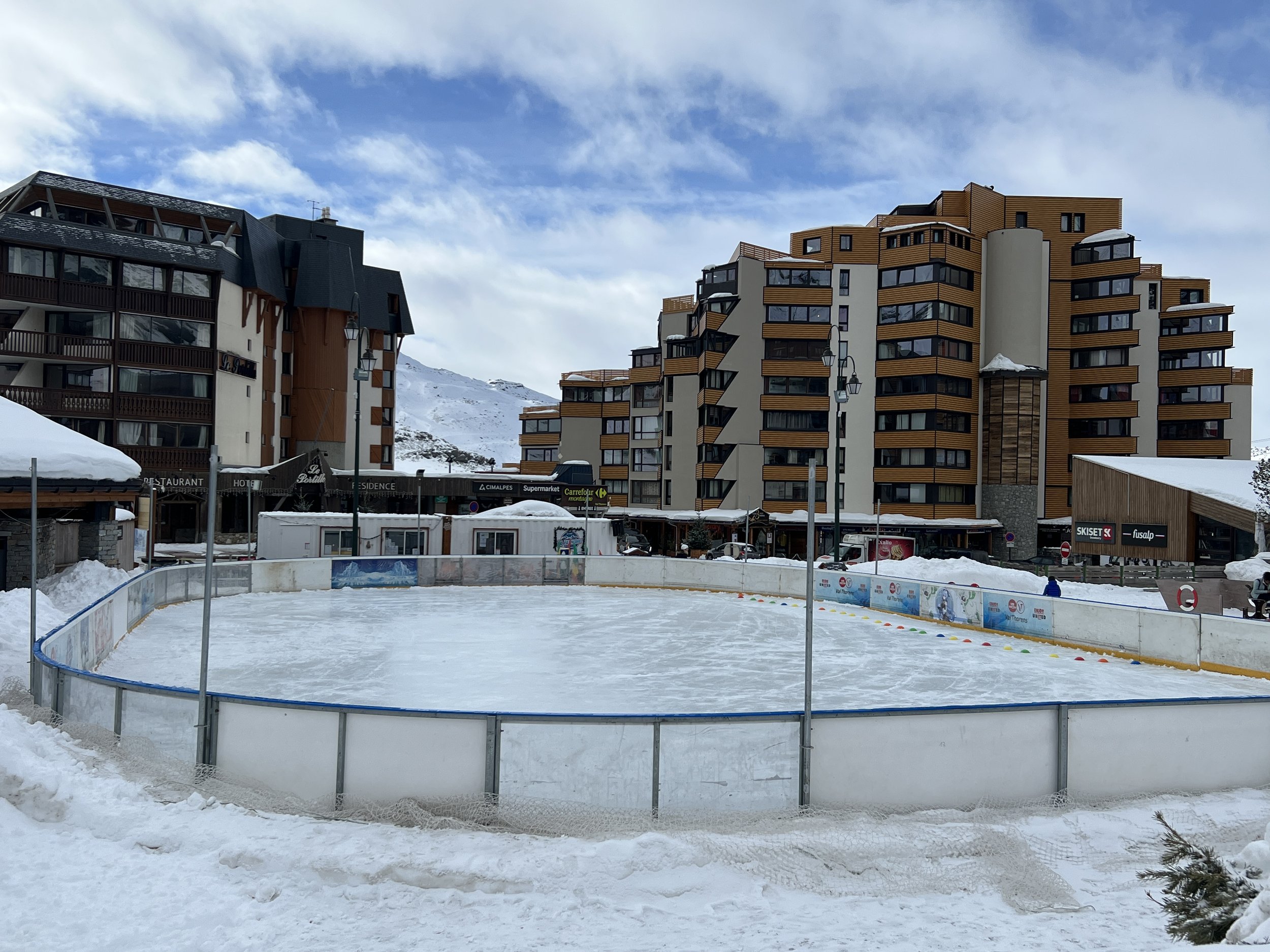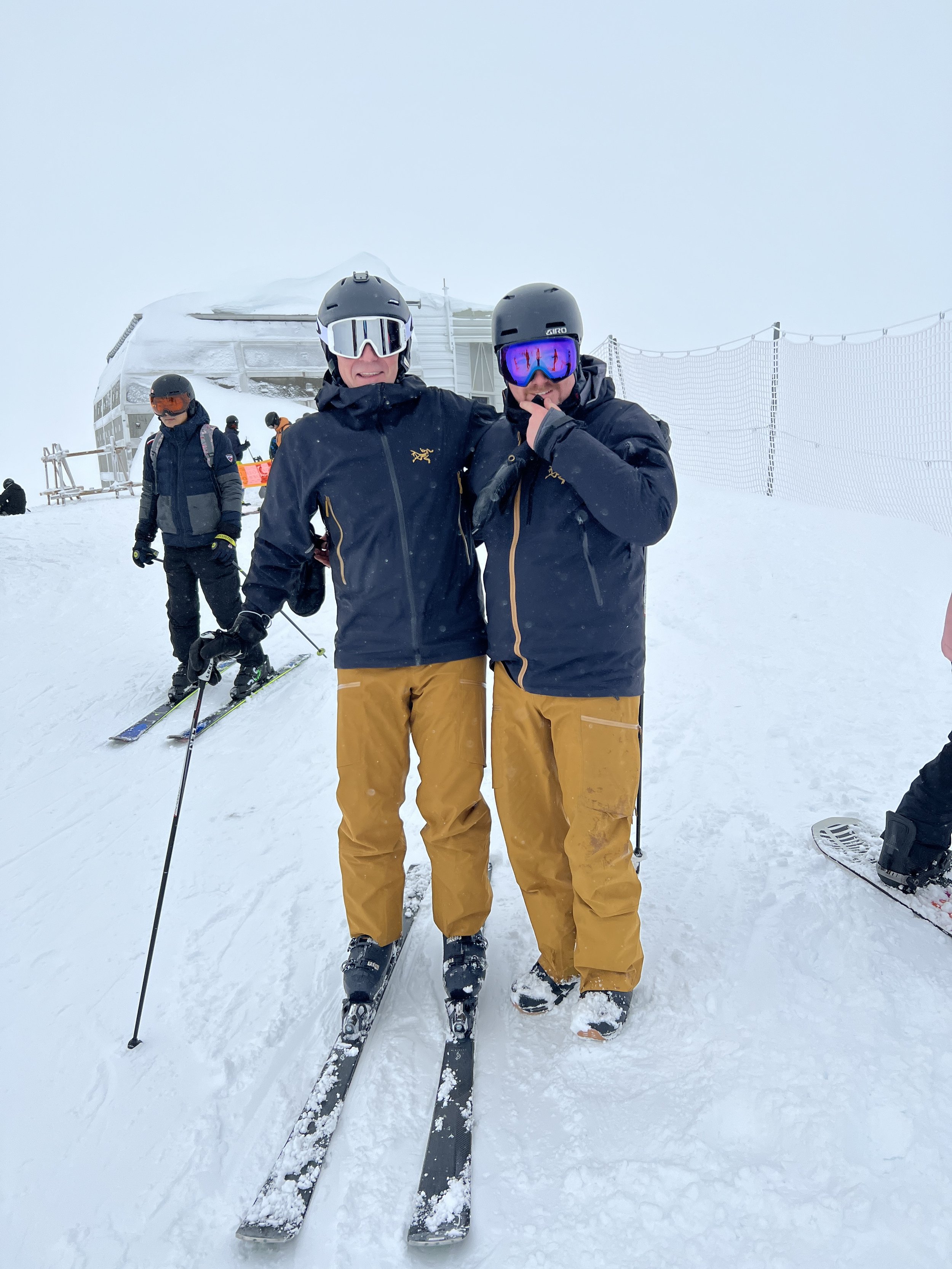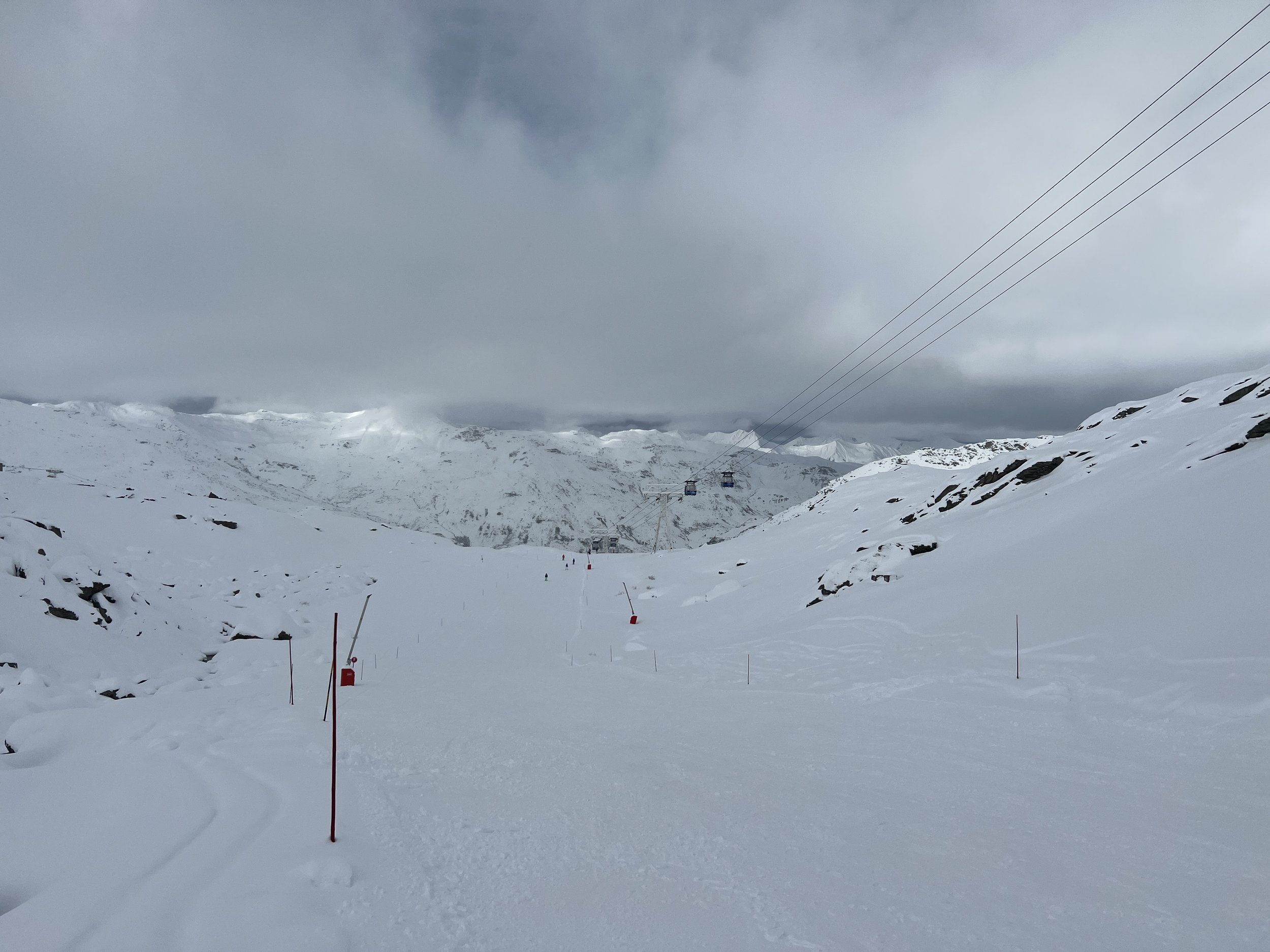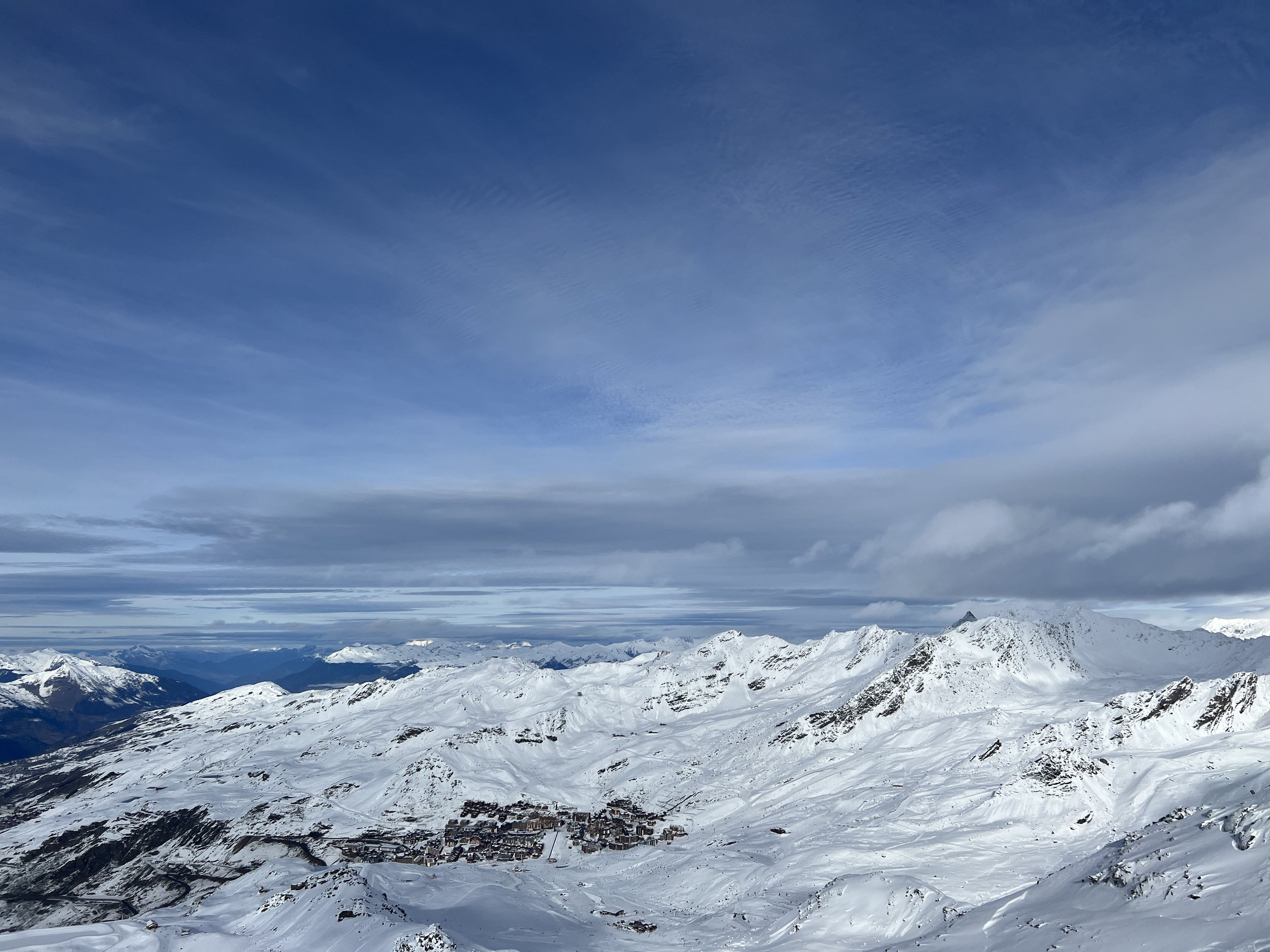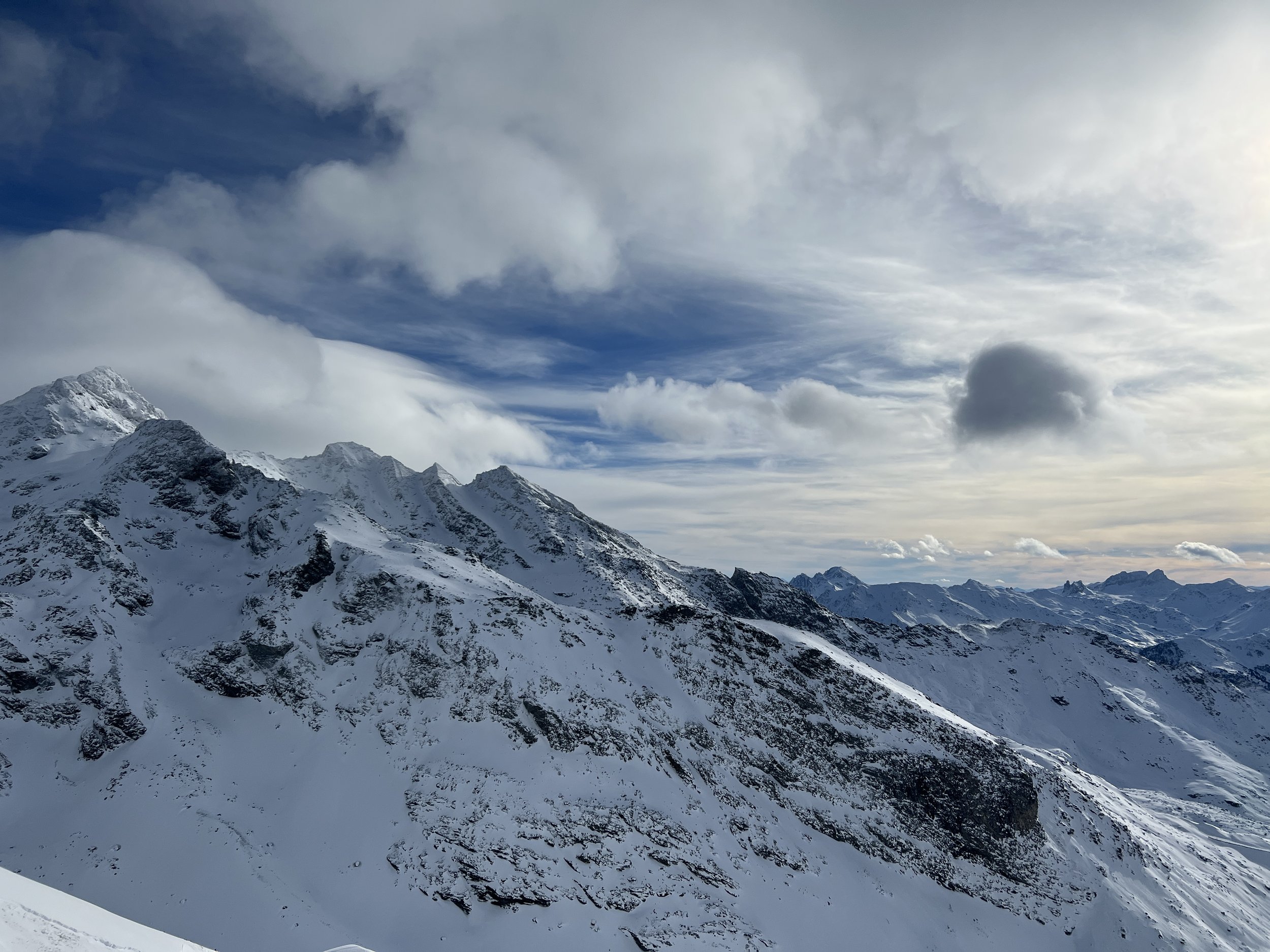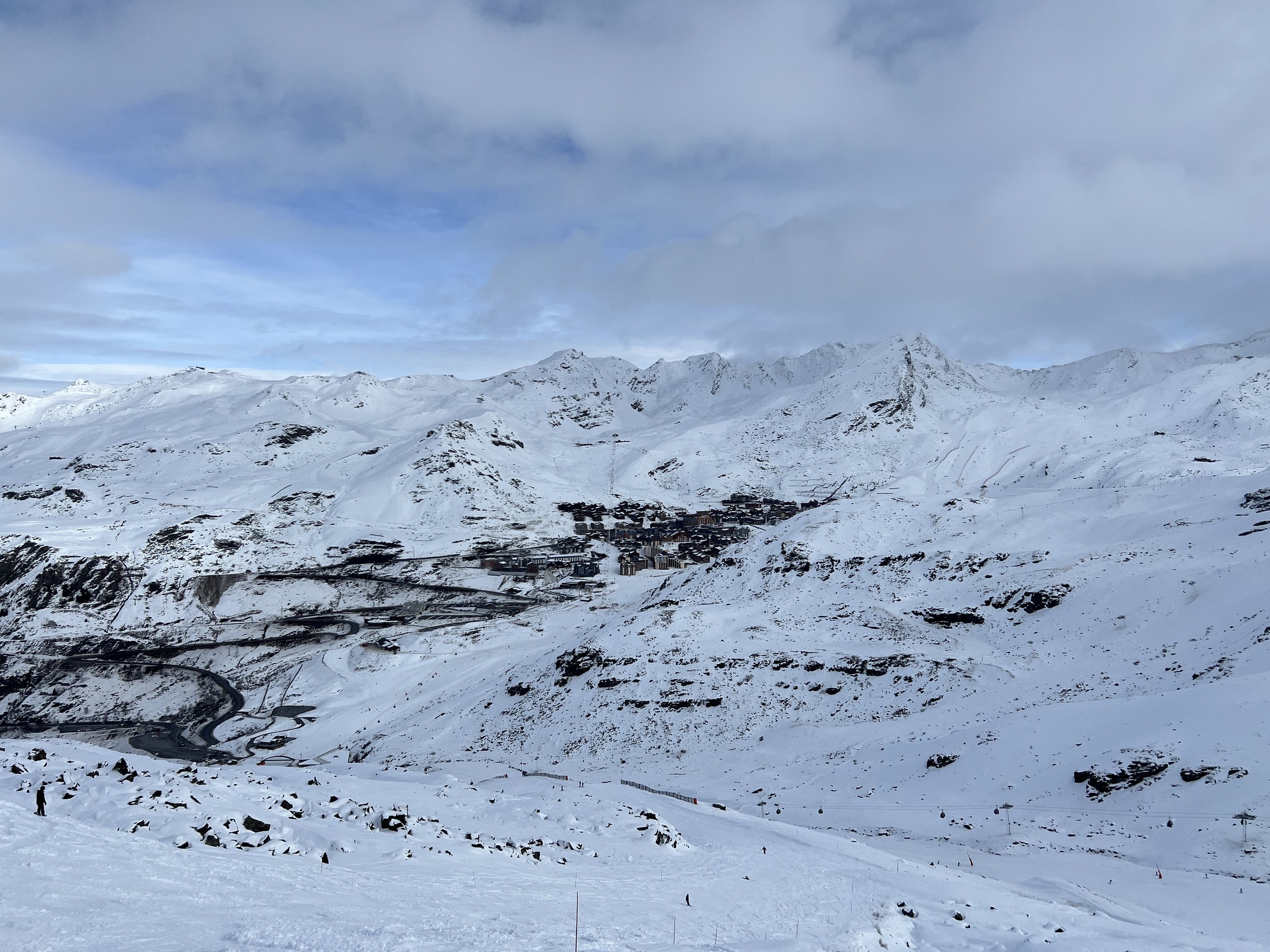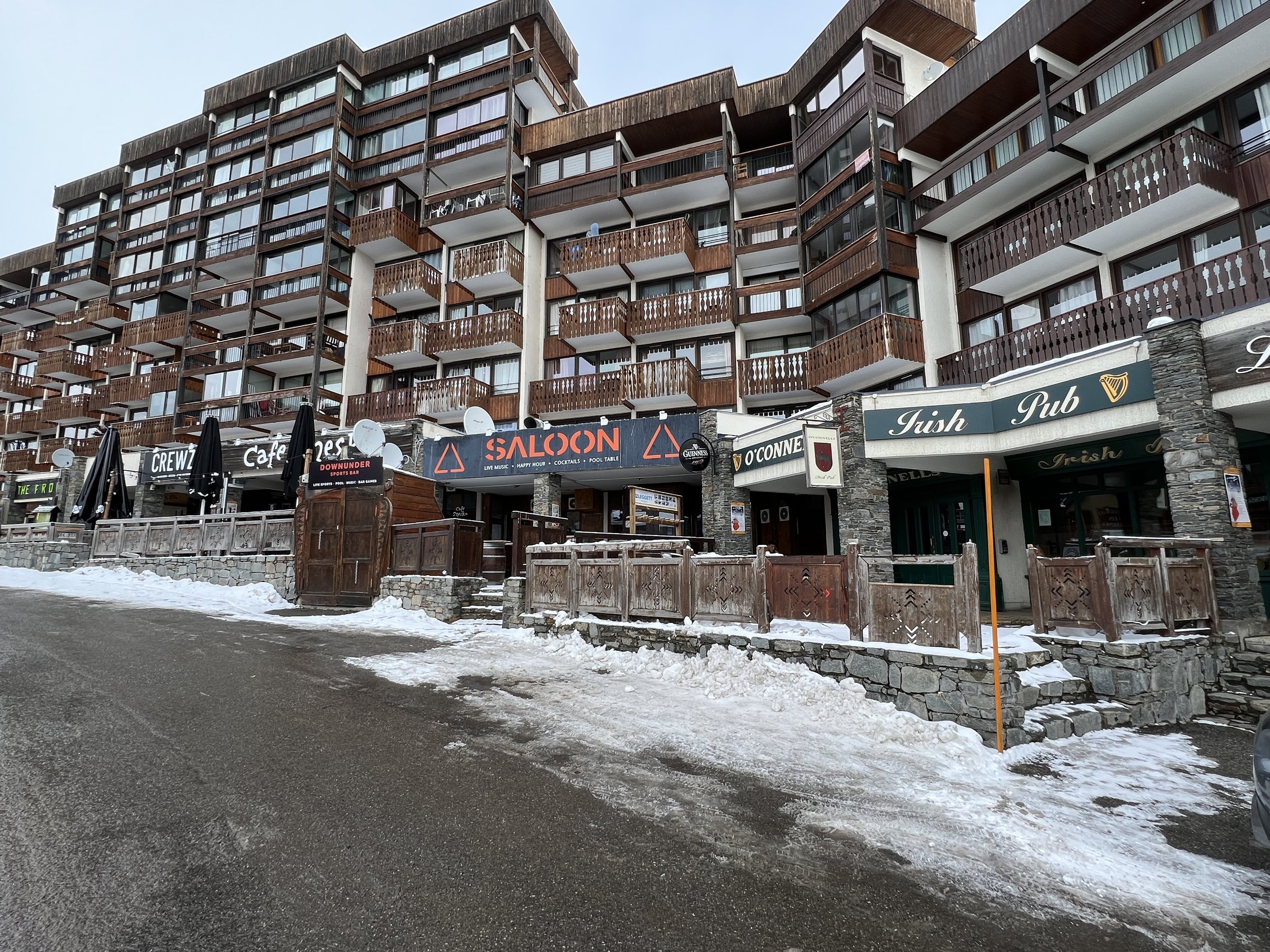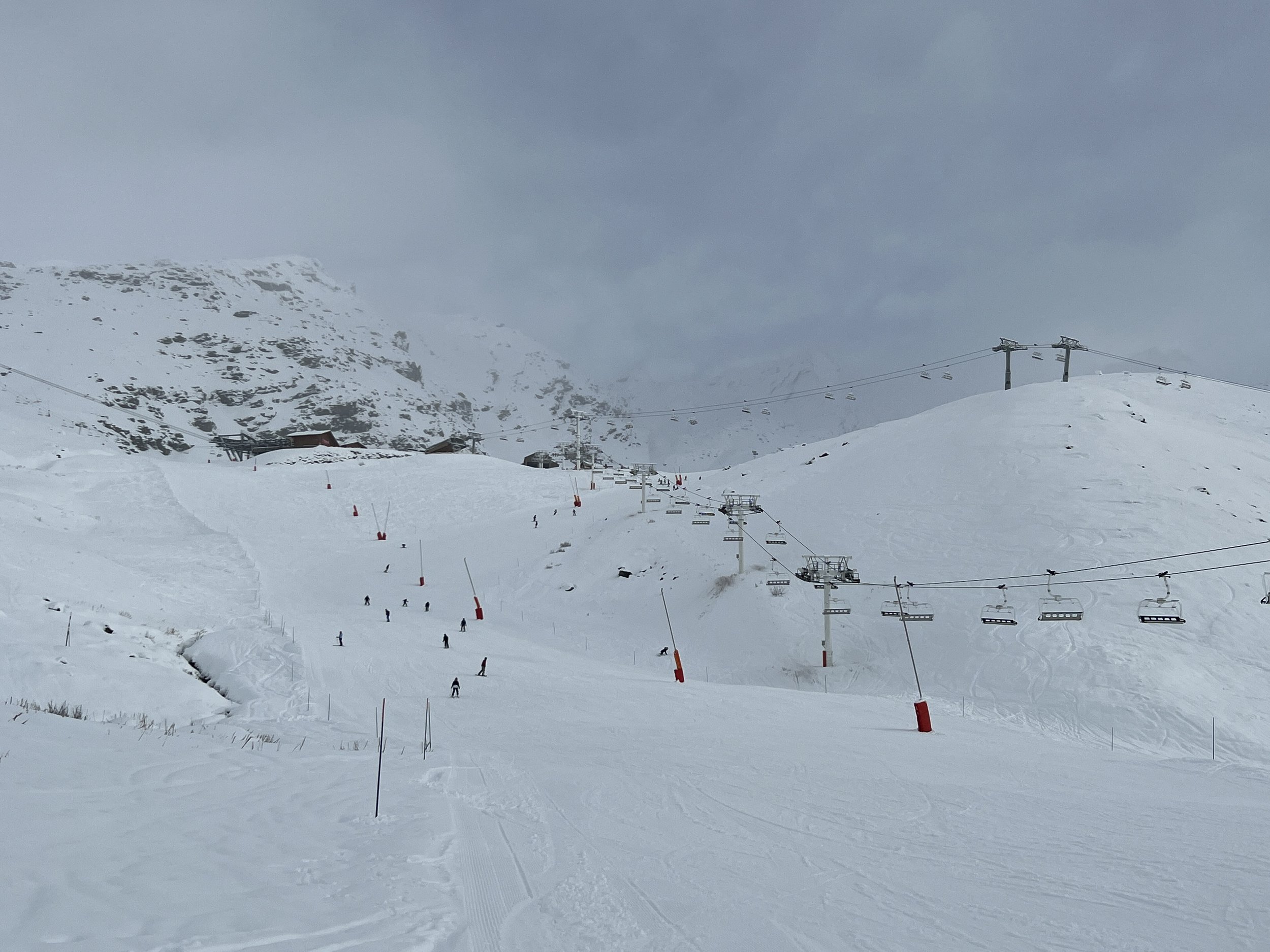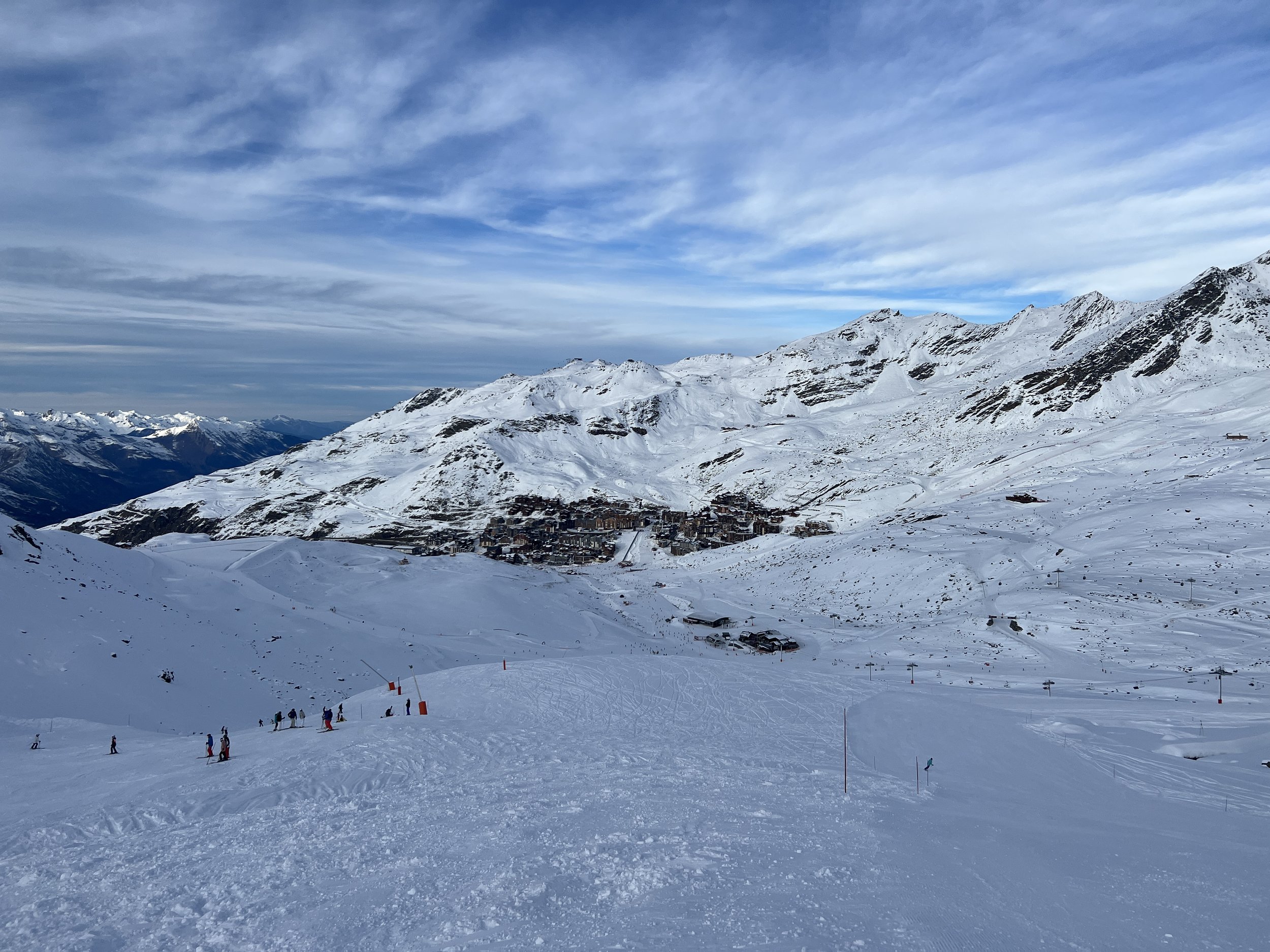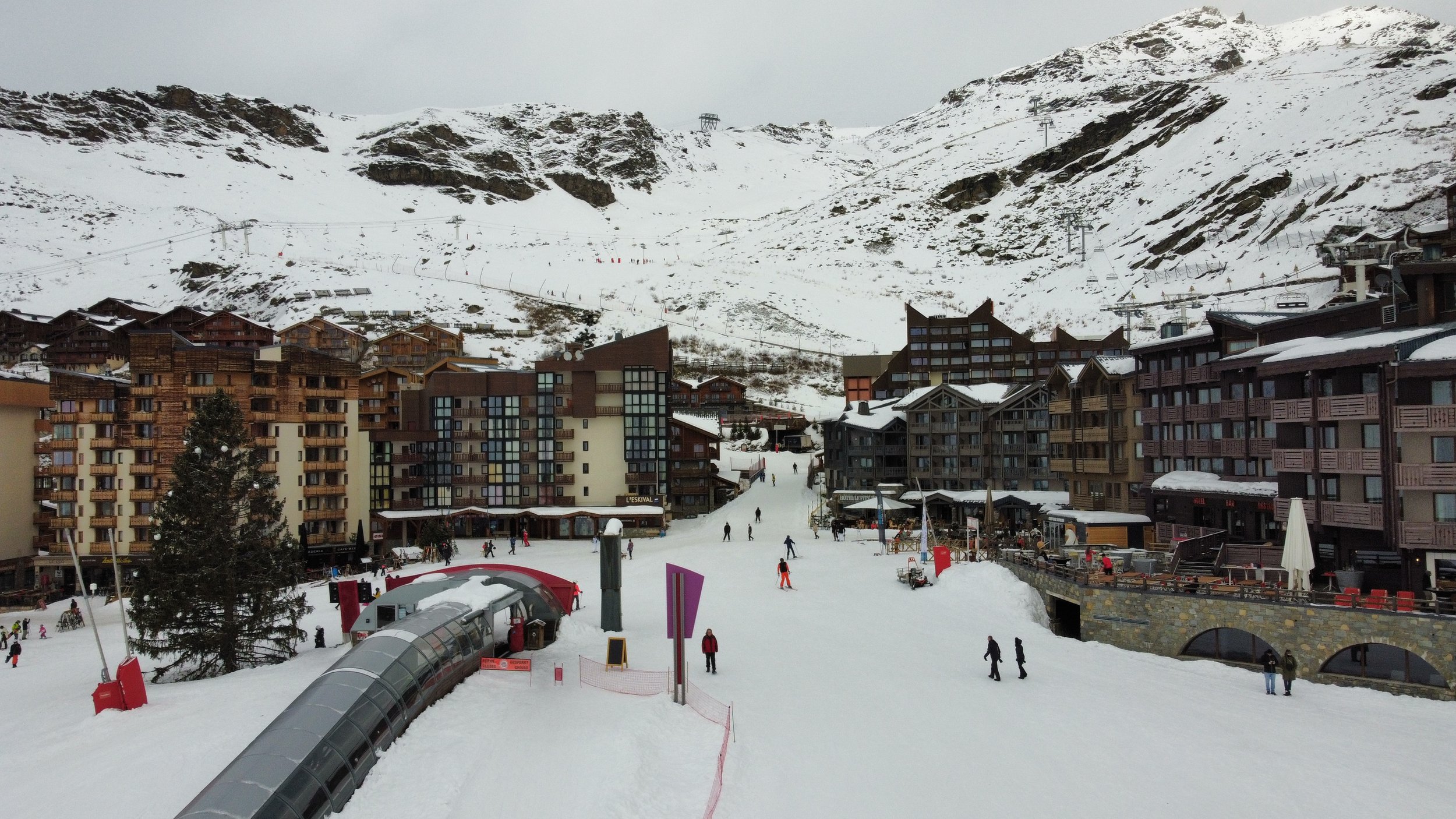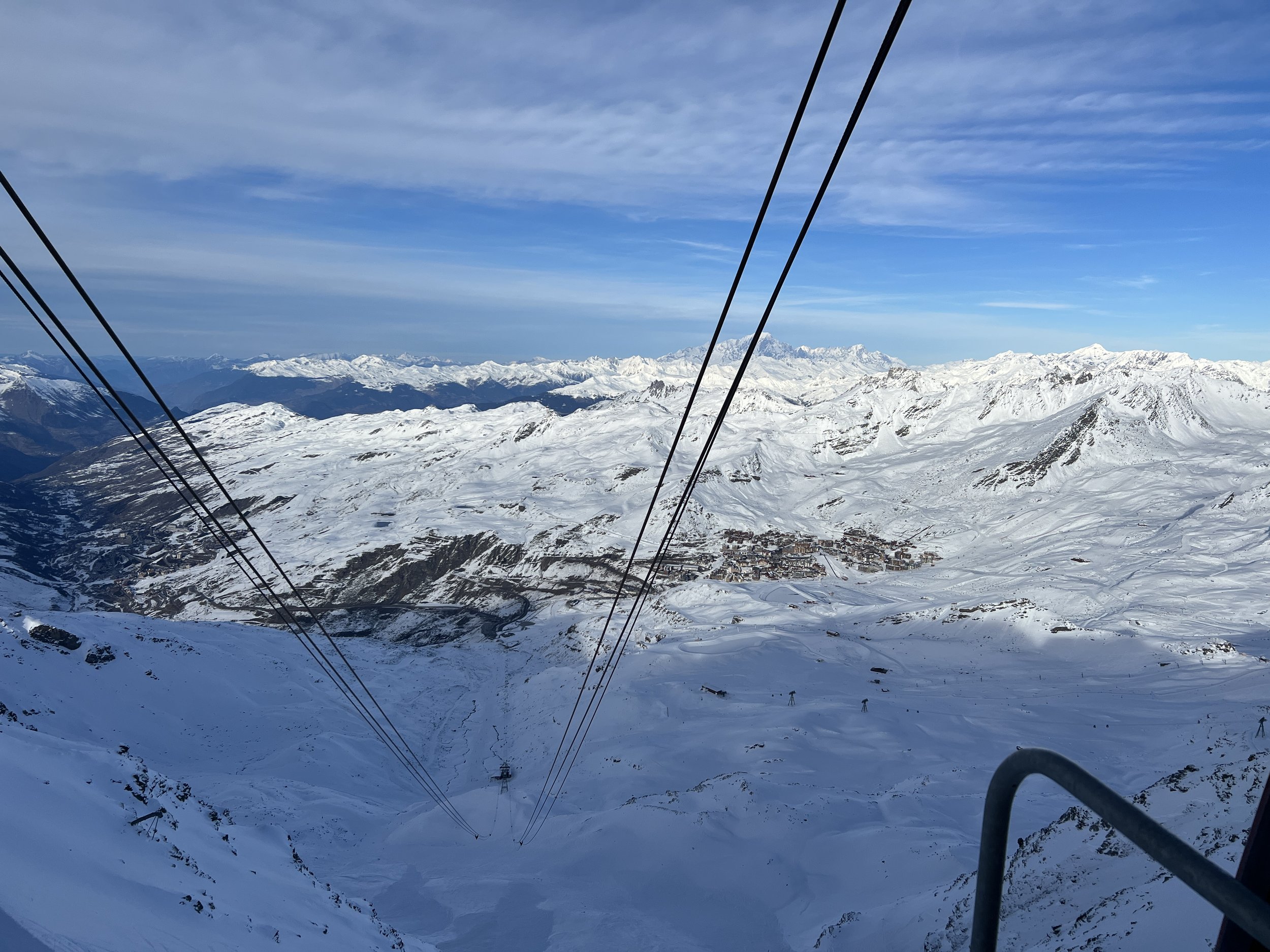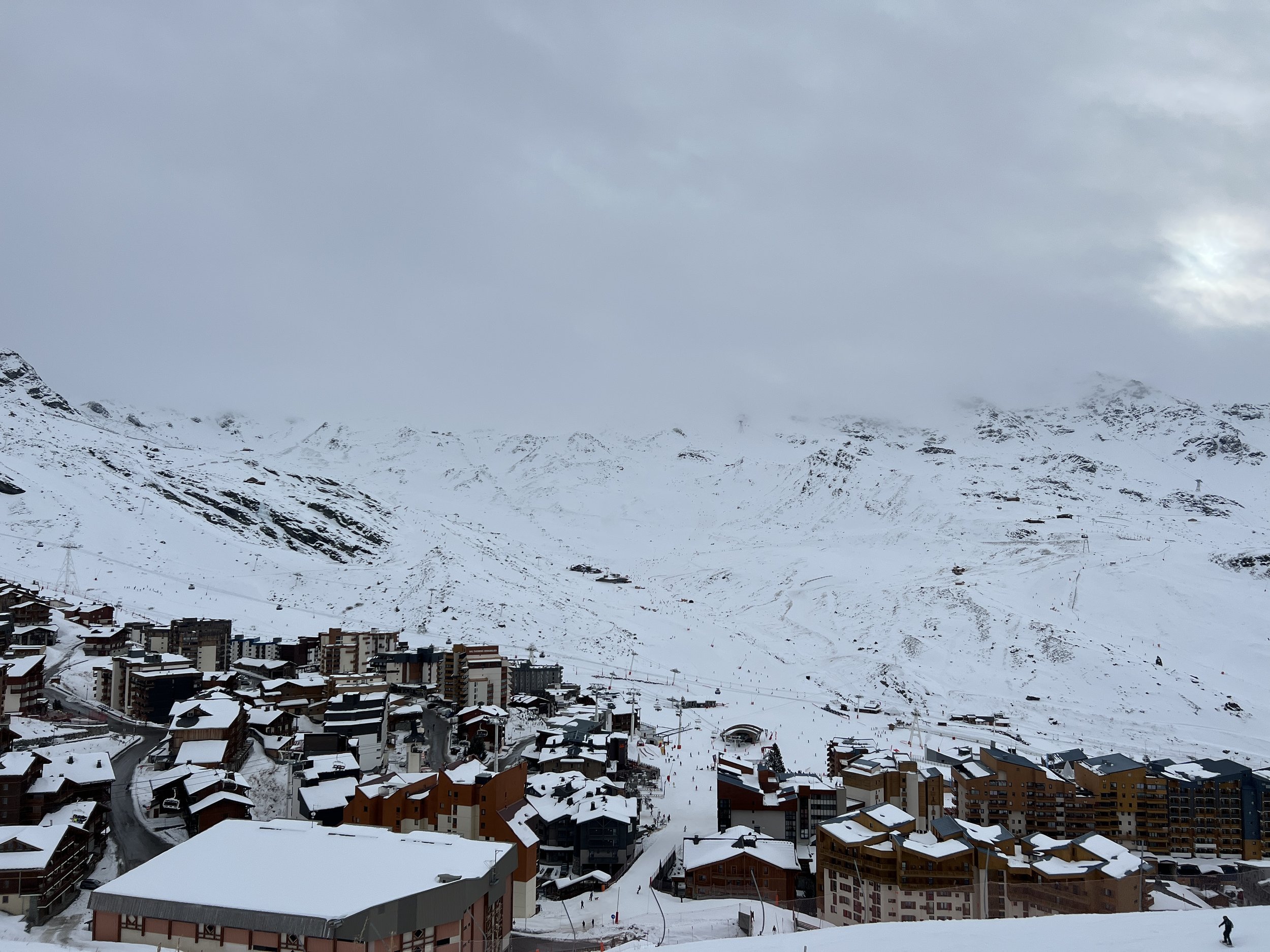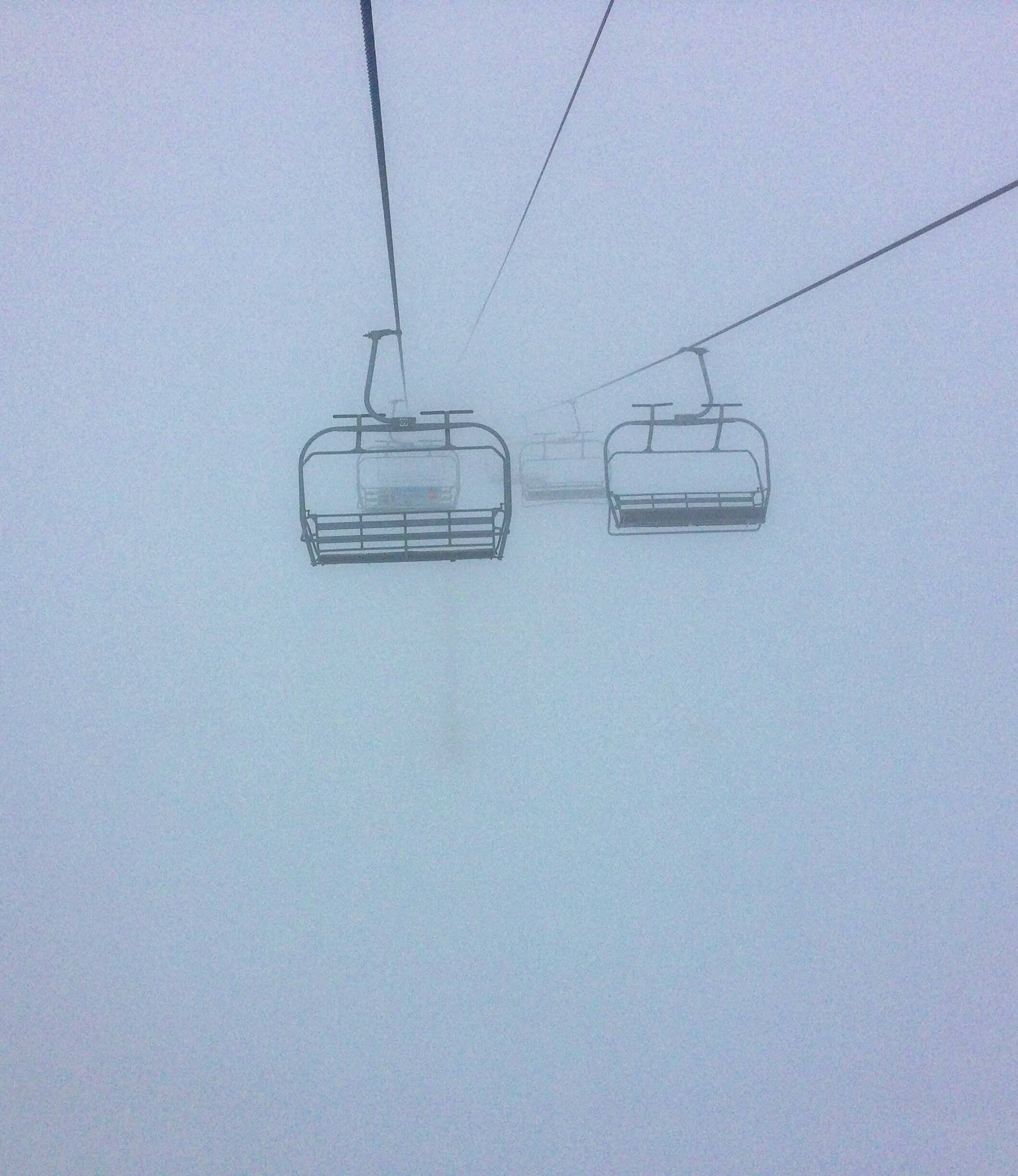OVRONNAZ SKI RESORT GUIDE
Ovronnaz ski resort, nestled in the Swiss Valais region, offers a distinctly authentic alpine experience away from the usual crowds found at the big name Swiss ski resorts. The village of Ovronnaz is known for its thermal baths and sunny terraces, but Ovronnaz ski resort is also worth the trip. The resort features mainly intermediate terrain however beginners and advanced skiers will also find pistes to suit suitable their ability. In total, 30km of empty slopes can be found with incredible views of the Swiss Alps. Unlike the larger, more commercialized resorts, Ovronnaz provides a peaceful change of pace, making it an great destination for skiers seeking quality snow, stunning views of the Rhone Valley, and a taste of traditional Swiss mountain hospitality.
OVRONNAZ FIRST IMPRESSIONS
I drove up to Ovronnaz from the valley and was immediately taken in by the beauty in this area. The village itself has a traditional charm however when arriving at the base area it was like there is nothing really there. The car park sits below the Jorasse chairlift and a lonely ticket office with no other real amenities. It is only once up the Jorasse chairlift where you see the resorts main restaurant and a small souvenir shop. This area is busy with skiers and snowboarders utilising the facilities and the beginners area. Once away from this area and around the resort there is a calmness to Ovronnaz.
OVRONNAZ SKI AREA
Ovronnaz ski area offers around 30km of mostly intermediate pistes, set against the stunning backdrop of the Valais Alps. With a vertical drop of approximately 1100m, the resort provides the opportunity to combine some pretty awesome pistes for a long run top to bottom. If you do not believe me check this video here. Ovronnaz is a particular favourite amongst the Magic Pass crowd for after a storm so if you hit it at the right time you could find yourself enjoying some incredible powder laps.
Intermediate skiers and snowboarders will love Ovronnaz for the abundance of beautiful groomed pistes which when avoiding weekend crowds are suitably quiet. Ovronnaz has enough to keep the able intermediate happy. Beginners have less to occupy them, although there is a beginners area near the Jorasse top station. This small learners area has its own drag lift and is an ok spot to learn your first turns. Away from the beginners area, a couple of gentle blues near the Petit Pré chair can keep advancing beginners entertained. Advanced terrain is limited however there are a couple of black routes in Ovronnaz. The real challenge for the more able skiers and snowboarders can be found in the freeride posibilities within the area.
WATCH THE FULL REVIEW
LIFTS AT OVRONNAZ
In Ovronnaz the lifts are not going to break any speed records, especially the Jorasse chairlift from the base area, however they do suitably handle the demands of the ski resort. The 4 chairlifts in Ovronnaz, include the new Petit Pré chairlift, which has been installed to replace an old draglift and improve the visitor experience. The lifts in Ovronnaz are fine, and during the week when it is quiet you wont be longing for bigger faster lifts. In addition to the four chairlifts, the Tsantonnaire drag lift accesses Ovronnaz highest lift accessible point at 2427m. The Tsantonnaire is an experience not to miss, its steepish climb, long duration and bend at the top is a badge of honour for any snowboarder who is successful in reaching the top. The only downside to the Tsantonnaire was the queue to ascend it… even on a quiet day.
Tsantonnaire Drag Lift Ovronnaz
WHERE TO SKI IN BAD WEATHER OVRONNAZ
This wasn’t an issue on my visit as I was blessed with bright bluebird skies for the duration of my visit. However, looking at the Ovronnaz ski area I can see with the lack of trees on the upper mountain it could be difficult to navigate in adverse weather. If I was in Ovronnaz during a storm, I would head to the area under the Col Express chairlift. This part of the resort may provide suitable context with the widely spaced trees in this area. Similarly the resort runs under the Jorasse chair are lined with trees so may provide a suitable option.
Trees under the Col-Express Chairlift
OVRONNAZ PISTE MAP
Ovronnaz Piste Map
OVRONNAZ GALLERY
OVRONNAZ SEASON DATES
Ovronnaz ski resort in Switzerland usually opens its winter season in early December and operates until late April. Thanks to its advantageous altitude and location, the resort offers consistent snow conditions throughout the winter months. The heaviest snowfall typically happens in January and February, making these months the best time to visit for excellent snow coverage. Visitors can enjoy Ovronnaz’s well-maintained pistes, often covered in a generous layer of fresh snow during this peak period. Ovronnaz ski resort receives an average annual snowfall total of approximately 450 cm ensuring its slopes are well-covered throughout the season.
TRAVEL TO OVRONNAZ
WHERE IS OVRONNAZ SKI RESORT?
Ovronnaz ski resort is situated in the Swiss canton of Valais, perched on a sunny terrace overlooking the Rhône Valley. It enjoys a strategic location approximately 1 hour and30 minutes by car from Geneva Airport, making it an accessible destination for international travelers seeking adventure. The resort lies close to the local towns of Sion and Martigny, both within a 30-minute drive; Sion serves as the regional capital with cultural attractions and amenities, while Martigny offers a gateway to the nearby vineyards and Roman history. Ovronnaz’s geographical setting provides stunning panoramic views of the surrounding peaks and easy access to the broader Valais region, blending convenience with scenic mountain charm.
GETTING TO OVRONNAZ SKI RESORT
Getting to Ovronnaz ski resort in Switzerland can be achieved smoothly through various travel options. The nearest major airport is Geneva Airport, about 1.5 to 2 hours away by car or public transport, making it the preferred gateway for international travelers. From Geneva, visitors can take a train to Martigny, a hub on the Swiss rail network, and then transfer to a local train or bus towards Ovronnaz. The train journey offers scenic views and runs regularly, ensuring convenient connections. Alternatively, self-driving from Geneva allows flexibility and direct access to the resort, with well-maintained roads suitable for winter driving conditions. For those arriving by air further afield, Zurich Airport is another option though it involves a longer transfer time. Regardless of the mode chosen, early planning is recommended, especially during peak ski season, to secure transport and enjoy a seamless journey to Ovronnaz.
Flying is and will remain the easiest and quickest way to reach a ski resort however, it also has the largest impact on your Carbon footprint.
OVRONNAZ LIFT PASSES
At Ovronnaz, lift pass prices offer excellent options for both short visits and extended stays. A one-day lift pass costs CHF 55 for adults, providing full access to the ski area for a single day of skiing or snowboarding. For those planning to immerse themselves in the mountains, a six-day lift pass is available at CHF 275 for adults, offering great value over multiple days on the slopes. Additionally, visitors should consider the Magic Pass, which includes Ovronnaz among many other resorts. This pass represents exceptional value, granting access to a wide range of ski areas across Switzerland and neighbouring countries, making it an ideal choice for travellers looking to explore multiple destinations during their ski season.
OVRONNAZ PROS
Ovronnaz has varied ski terrain suitable for all skill levels, from beginners to experts however is best suited to intermediate skiers.
Ovronnaz has reliable snow conditions due to high elevation and consistent snow record.
The lift system is suitable for the resorts needs with recent upgrades to the lifts including the introduction of the Petit Pré
Ovronnaz village has thermal spas which are perfect for unwinding after a days skiing.
Ovronnaz is included on the Magic Pass, the worlds best value ski pass. This means skiing in Ovronnaz can be linked with days at other nearby Swiss ski resorts.
OVRONNAZ CONS
Not much in the way of beginner friendly terrain can be found in Ovronnaz.
The slow Jorasse chairlift could do with updating to uplift visitors from the base area quicker.
If you find value in this content please consider supporting the website by clicking the image below and buying me a coffee.
OVRONNAZ FREQUENTLY ASKED QUESTIONS
Where is Ovronnaz ski resort located?
Ovronnaz is located in the Swiss Alps, in the canton of Valais. It sits on a sunny plateau overlooking the Rhone Valley.
What is the best time to visit Ovronnaz for skiing?
The peak ski season runs from December to April, with the best snow typically found from January through March.
How many ski runs does Ovronnaz have?
Ovronnaz offers around 30 kilometers of ski slopes, with runs suitable for beginners, intermediates, and advanced skiers.
Is Ovronnaz good for beginners?
I wouldn’t say that Ovronnaz is great for beginner skiers and snowboarders. There is a small learners area and besides from that not too much suitable terrain for learning. I would recommend other Magic Pass ski resorts like Vercorin, Saas Fee or Les Diablerets over Ovronnaz as a beginners resort.
What types of lifts are available in Ovronnaz?
The resort has a mix of chairlifts and surface lifts to access various parts of the mountain. The lifts in Ovronnaz include the newer Petit Pré lift and the less new Tsantonnaire drag lift.
Are there activities besides skiing?
Yes, Ovronnaz offers snowshoeing, winter hiking trails, and a wellness center featuring thermal baths, making it a well-rounded destination.
How accessible is Ovronnaz?
The resort is about a 1.5-hour drive from Geneva Airport and easily reachable by train and bus connections from nearby towns.
What accommodations are available?
There is a range of lodging options including hotels, chalets, and apartments, many of which offer ski-in/ski-out convenience.
Is Ovronnaz suitable for families?
Absolutely, with kid-friendly slopes, ski schools, and various family-oriented activities, Ovronnaz is ideal for a family ski holiday.
Does Ovronnaz have après-ski options?
Although quieter than larger resorts, Ovronnaz offers cozy bars and restaurants where visitors can relax after a day on the slopes.
OVRONNAZ FINAL THOUGHTS
I am glad that I visited Ovronnaz and would certainly return to ski the odd day in the right conditions. In comparison to some other favourites on the Magic Pass, Ovronnaz pales in comparison, but the village and ski area are certainly worth the visit. I feel that to make the most of a visit to Ovronnaz I would like to revisit with my splitboard to explore some of the freeride terrain available.
If you found value in this content and would like to support my adventures, consider buying me a coffee; it helps keep the blog running and fuels my passion for exploring the world's mountains.
Courchevel Ski Resort Guide
Courchevel is known as a rich persons playground but it is more than its luxury boutiques and overpriced sandwiches. Courchevel forms an important part of the world’s largest interconnected ski area, the Three Valleys. Skiers visiting Courchevel benefit not just from the ample 150km of pistes locally, but a combined 600km spread across the Three Valleys. The Courchevel ski area offers diverse terrain, picturesque tree lined slopes and an opportunity to experience the finer things in life.
WATCH THE FULL REVIEW
COURCHEVEL FIRST IMPRESSIONS
Honestly, Courchevel at first glance made me wince. I am not someone who is bothered or interested in life’s finer things and walking through the village to the gondola’s and seeing numerous luxury boutiques and overpriced restaurants just isn’t for me. Putting the vibe to one side, and considering the ski area on its merits I can see why people rave about Courchevel. The local area is sizeable with 150km of pistes to explore which is ample for most budding skiers and snowboarders. The tree-lined beginners slopes that lead to the village look a fantastic place to learn and there is more challenging terrain around the resort to keep the rest entertained.
COURCHEVEL SKI AREA
Locally Courchevel has 150km of pistes and a huge amount of off-piste terrain. This makes Courchevel a considerable ski resort in its own right. Leg burning runs are possible with over 1600m of vertical drop possible in Courchevel ski resort.
An appealing factor for those visiting Courchevel is the mix of terrain and how the resort caters to families and groups of mixed abilities. There are numerous family areas and fun runs and there is a good mix of terrain to suit everyone. There is a good reputation within Courchevel as a good place to learn to ski and I can see this from the wide green trails that lead back into the village.
There is progression to be found in Courchevel with the majority of runs in Courchevel being graded as intermediate slopes. With 67% of the terrain in Courchevel being graded as either Blue or Red you can see why Courchevel is popular amongst many skiers and snowboarders. When you consider that Courchevel provides access to nearby Meribel and Val Thorens there are endless possibilities for the intermediate piste skier.
The popularity of Courchevel amongst beginner and intermediates skiers and snowboarders is excellent news for the more advanced. Those in search of a challenge can often find the steeper Red or Black graded slopes empty in stark contradiction the crowds found elsewhere. Courchevel offers testing steeper terrain but is also a lot of fun off-piste. The Saulire is home to some epic couloirs that provide ample challenge.
One thing is for sure, visitors to Courchevel and the 3 Valleys will not get bored of the terrain that is on offer. After multiple visits to the region I am still finding plenty of new terrain to explore and would happily return in the future.
COURCHEVEL FOR BEGINNERS
Courchevel is an excellent destination for beginner skiers, offering a variety of gentle slopes and well-groomed runs perfect for those just starting out. The Pralong area, located in the Courchevel 1850 sector, is particularly well-suited for beginners, with wide, gentle slopes and a dedicated learning area. The Bellecôte sector also features several long, easy runs that are perfect for building confidence on the slopes. As skiers progress, they can explore the more intermediate terrain in the Croisette and Chenus sectors, which provide a good challenge without being too intimidating. Overall, Courchevel's well-developed infrastructure and variety of beginner-friendly slopes make it an ideal destination for those new to skiing.
COURCHEVEL FOR INTERMEDIATES
Courchevel offers a wealth of intermediate ski runs that cater to the adventurous skier. The Verdons run, with its gentle slopes and well-groomed terrain, is a favorite among intermediate skiers, providing a thrilling yet manageable descent. For those seeking a bit more challenge, the Creux run, with its sweeping turns and occasional steeper sections, is an excellent choice that will test your skills without overwhelming. Additionally, the Biollay run, known for its diverse terrain and stunning views, is a must-try for intermediate skiers looking to explore Courchevel's diverse landscape.
COURCHEVEL FOR ADVANCED
Courchevel is how to he Suisse and Vizelle pistes which are renowned for their steep gradients and challenging terrain, providing an adrenaline-fueled experience for seasoned skiers. Those seeking an extra challenge can venture onto the infamous Combe du Vallon, a narrow, winding run that tests the skills of even the most accomplished athletes. For those looking to push their limits, the Saulire Express lift grants access to the resort's most extreme slopes, from here there are a number of couloirs which will provide ample challenge.
LIFTS COURCHEVEL
The lift infrastructure in Courchevel is modern with plenty of newer lifts being installed to regularly upgrade the current offering. Still, there are pinch points with crowds at some of the older gondolas and closer to the beginner trails. One thing about the 3 Valleys, is that they are continually working to upgrade their lifts to improve customer experience.
In total, there are 58 lifts across the Courchevel ski area which goes some way to demonstrating the incredible size of the resort.. From the state-of-the-art Saulire Express gondola to the iconic Verdons chairlift, Courchevel's lift system is designed to maximize convenience and minimize wait times, ensuring a smooth and enjoyable skiing experience for its guests.
WHERE TO SKI IN BAD WEATHER COURCHEVEL
Navigating the slopes during a whiteout can be a challenging experience, but there are a few areas that stand out as the best options. The Saulire sector, with its wide, well-groomed runs offers excellent visibility and reliable snow conditions even in poor weather. The Verdons Nord area, with its gentle, tree-lined slopes, can also provide a more sheltered and visually-appealing experience when visibility is limited.
COURCHEVEL PISTE MAP
Courchevel Piste Map
COURCHEVEL GALLERY
COURCHEVEL VILLAGES
SAINT-BON
Saint-Bon can be considered the birthplace of Courchevel with the resorts first hotel being constructed here in 1908. Saint-Bon is a traditional mountain village that is a quieter base for your Courchevel ski holiday. Staying in Saint-Bon however doesn’t mean you are not connected with regular buses running between Saint-Bon and the other Courchevel Villages.
COURCHEVEL LE PRAZ
Home to Frane’s only Olympic ski jumps, Courchevel Le Praz offers something a little different. With a mountain village feel the Chalets and narrow streets here give the village a quaint feel. Still you can be in the centre of Courchevel in 8 minutes with an easy connection to Courchevel 1850 by gondola.
COURCHVEVEL LA TANIA
La Tania is the most modern of the Courchevel ski villages. This car-free mountain village is a great base for families with new apartments and a toboggan run. The village of Courchevel La Tania has everything you need for a ski holiday base.
COURCHEVEL 1550
Courchevel 1650 is a great base for those wanting to be in the middle of everything but with a more relaxed vibe than 1850. Courchevel 1550 is another great base for families with the toboggan run offering 300m of vertical drop and the Aquamotion swimming pool nearby.
COURCHEVEL MORIOND
Courchevel Moriond
COURCHEVEL SEASON DATES
Courchevel typically opens its slopes in early December and remains operational until late April. The resort's high elevation and strategic location ensure reliable snow conditions throughout the winter season, with the peak snowfall typically occurring in January and February. For the best chance of enjoying optimal snow coverage and weather, the ideal time to visit Courchevel is during the months of January and February, when the resort's 150 kilometers of groomed runs are blanketed in a thick layer of powdery snow.
TRAVEL TOCOURCHEVEL
WHERE IS COURCHEVEL SKI RESORT?
Courchevel is a ski resort located in the French Alps, nestled within the Tarentaise Valley in the Savoie region. This prestigious destination is part of the expansive Trois Vallées ski area, the largest connected ski domain in the world, offering over 600 kilometers of groomed pistes and access to some of the most challenging and diverse terrain in Europe. Courchevel is divided into five distinct villages, each with its own unique character and amenities, catering to a wide range of skiers and snowboarders. From the chic and glamorous Courchevel 1850, to the more family-friendly Courchevel 1550, the resort provides an exceptional skiing experience complemented by world-class dining, shopping, and accommodation options.
GETTING TO COURCHEVEL BY AIR
Traveling to Courchevel by air is a convenient and efficient way to reach this renowned ski destination in the French Alps. The closest major airport is Chambéry-Savoie Airport, located approximately 45 minutes from Courchevel. Alternatively, skiers can fly into Lyon-Saint Exupéry Airport, which is about 1.5 hours away. From either airport, visitors can arrange for private transfers or utilize public transportation options, such as shuttle services or taxis, to complete the journey to Courchevel.
Despite being further away, Geneva (2.5 hours) is the airport of choice for most visitors to Courchevel and the Three Valleys. Geneva has a more regular flight schedule which ramps up through the winter season with many transfer companies operating out of the arrivals area at Geneva airport.
It's important to note that during the peak ski season, transportation can be in high demand, so it's advisable to plan and book your travel arrangements well in advance.
Flying is and will remain the easiest and quickest way to reach a ski resort however, it also has the largest impact on your Carbon footprint.
GETTING TO COURCHEVEL BY TRAIN
Travelling to Courchevel from the UK by train is a great scenic option. The journey typically begins at a major train station in England, such as London's St. Pancras International, where passengers can board the Eurostar service to Paris. From there, skiers can connect to a regional train that will take them directly to Moutiers, the closest station to Courchevel. Once at Moutiers, skiers and snowboarders can easily access the slopes of Courchevel via a short transfer, making the train a practical and enjoyable way to reach this premier alpine destination.
Getting the train to the French Alps is a fantastic way to reach your ski holiday destination with many advantages. Firstly there are no luggage weight restrictions or baggage fees on these services so travellers heading to the ski resort can pack their ski gear without additional charges. Secondly, you can enjoy the ride knowing that you are travelling in a eco friendly way. Finally, the train is a scenic route that allows you to see much of France before arriving in the French Alps.
GETTING TO COURCHEVEL BY CAR
The drive to Courchevel from the UK, spanning approximately 600 miles from Calais to Courchevel, offers a scenic route through the picturesque countryside of France, with the snow-capped peaks of the mountains gradually coming into view as you approach your destination. I have always enjoyed the freedom of driving to a ski resort and have often tagged on a overnight city stop along the way.
Most brits driving to the French Alps will arrive in Calais France via the Ferry or Le Shuttle. From Calais, the drive takes around 9 hours depending on conditions and in all honesty can feel like a long slog along the motorway. The drive becomes more interesting as you arrive closer to the French Alps as you wind your way past mountain villages on your way to Courchevel.
You do not need a car in Courchevel however it can be useful as I found on this day in Orelle when the lifts stopped and I was able to drive to Brides Les Bains and ski in Meribel instead.
COURCHEVEL LIFT PASSES
Skiers visiting Courchevel have several lift pass options to choose from. A 1-day ski pass for the Courchevel ski area costs €55 for adults and €44 for children. For those planning an extended stay, a 6-day ski pass is available for €275 for adults and €220 for children. Courchevel is part of the expansive 3 Valleys ski area, which offers access to over 600 kilometers of slopes. Skiers can purchase a 3 Valleys ski pass for €62 per day for adults and €50 per day for children, providing access to the entire interconnected ski region.
Additionally, skiers who hold an Epic Pass can ski in the 3 Valleys and Courchevel for 7 days at no additional charge. Just take your Epic Pass and ID to the ticket office.
COURCHEVEL PROS
Courchevel has an extensive ski terrain with over 150 km of pistes in addition the wider 3 valleys ski area.
There is a variety of slopes in Courchevel which caters to all skill levels, from beginner to expert.
Courchevel has excellent snow conditions throughout the season due to high elevation and snowmaking capabilities.
Courchevel has a modern lift system with 58 lifts providing quick and efficient access to the slopes.
Courchevel is a vibrant and lively ski town with high-end shopping, dining, and nightlife options that appeals to many visitors.
Courchevel has good access to airports with convenient transfers from Chambéry, Lyon, and Geneva.
Courchevel offers well-developed infrastructure with purpose built villages that cater to families, singles or groups of visitors.
Whether I like it or not, Courchevel has a reputation as an upscale and prestigious ski destination that attracts skiers from world-wide.
COURCHEVEL CONS
Courchevel is an extremely expensive ski resort with high prices for lodging, dining, and lift tickets.
Courchevel can suffer from crowded slopes, especially during peak holiday seasons.
Lack of affordable dining and accommodation options for budget-conscious travelers like myself. Consider staying in Val Thorens and visiting Courchevel.
Despite having many modern lifts, there are still a few oldies hanging around that need replacing.
If you find value in this content please consider supporting the website by clicking the image below and buying me a coffee.
COURCHEVEL FREQUENTLY ASKED QUESTIONS
What is the elevation range of the Courchevel ski area?
The Courchevel ski area has an elevation range of 1,300 meters (4,265 feet) to 2,738 meters (8,980 feet).
How many ski runs and lifts are there in Courchevel?
Courchevel offers 150 ski runs served by 60 ski lifts, including 10 gondolas, 17 chairlifts, and 33 surface lifts.
What is the ski season duration in Courchevel?
The ski season in Courchevel typically runs from early December to late April, depending on snow conditions.
Are there any terrain parks in Courchevel?
Yes, Courchevel has several terrain parks catering to different skill levels. There is a family park with a fun run located in Courchevel
What is the average snowfall in Courchevel?
Courchevel receives an average annual snowfall of around 6 meters (20 feet), ensuring excellent skiing conditions throughout the season.
Are there any off-piste skiing opportunities in Courchevel?
Yes, Courchevel offers numerous off-piste skiing opportunities, with a variety of ungroomed and challenging terrain for experienced skiers. From the steep, technical chutes of the Saulire sector to the wide-open bowls of the Vizelle area, Courchevel's off-piste offerings cater to a range of skill levels.
What is the closest airport to Courchevel?
The closest airport to Courchevel is Chambéry-Savoie Airport, located approximately 90 kilometers (55 miles) from the ski area.
Are there any ski schools or lessons available in Courchevel?
Yes, Courchevel has several ski schools and offers a wide range of lessons for skiers of all levels, from beginners to advanced. The resort's ski schools are renowned for their exceptional instruction, with experienced and certified instructors who cater to both children and adults.
What are the dining and après-ski options in Courchevel?
Courchevel boasts a diverse range of dining options, from traditional French cuisine to international fare, as well as lively après-ski bars and nightlife. One of the crown jewels of Courchevel's dining landscape is Le Chabichou, a two-Michelin-starred restaurant helmed by the renowned chef Michel Rochedy. Another must-visit destination for food enthusiasts is Le Café des Prés, a cozy and inviting restaurant that has earned a reputation for its exceptional regional specialties.
Are there any non-skiing activities available in Courchevel?
Beyond the world-class skiing and snowboarding, this picturesque alpine town boasts a vibrant culinary scene, with Michelin-starred restaurants and charming local eateries serving up delectable regional cuisine. Adventurous travelers can embark on guided snowshoeing excursions, exploring the winter landscapes. Additionally, the town's luxurious spas offer the perfect respite, with rejuvenating treatments and wellness experiences that rejuvenate both body and mind. Whether you're seeking gastronomic delights, cultural enrichment, or simply a chance to unwind, Courchevel's off-snow offerings ensure that your winter getaway is truly unforgettable.
COURCHEVEL FINAL THOUGHTS
Personally I would choose to stay elsewhere in the Three Valleys and sadly this is not a decision based on the actual skiing and snowboarding. With plenty on offer in Courchevel that make it an incredible ski holiday destination this is perhaps a sour outlook however, I left Courchevel feeling that I didn’t really fit in. The restaurants were well above my price range and I certainly prefer the more down-to-earth feel of Val Thorens.
I would love to hear from you if you feel I have missed the point on Courchevel or if there are more affordable ways to ski here? Drop your thoughts in the comments.
If you found value in this content and would like to support my adventures, consider buying me a coffee; it helps keep the blog running and fuels my passion for exploring the world's mountains.
Meribel Ski Resort Guide
Meribel sits at the heart of the Three Valleys, the World’s largest interconnected ski area, and as such has a reputation as the best base for a Three Valleys ski holiday. From this central location it is easy to explore the 600km of pistes that the 3 Valleys ski area has to offer, but locally Meribel can also offer a good experience. The local Meribel ski area has been popular with British skiers for decades and with exceptional terrain, extensive accommodation options and pretty much everything you’d want/need on a ski holiday easily to hand I can’t see that changing anytime soon.
WATCH THE FULL REVIEW
MERIBEL FIRST IMPRESSIONS
Riding down into Meribel it was clear that during peak times you can suffer from lifelines in Meribel. Being the central valley you not only have the skiers and snowboarders enjoying the local area, but additionally you have those just passing through to reach Val Thorens or Courchevel. To me, it felt that Meribel suffers from lift lines more than the neighbouring resorts, but my first visit was also during a peak week.
Liftlines normally mean one of two things, poor infrastructure or in the case of Meribel, excellent terrain and a village that lots of people want to visit. Meribel is potentially a victim of its excellent location and fantastic facilities, leading to a glowing reputation as a reliable ski holiday destination. There is so much to love about Meribel, so let’s dive straight in.
MERIBEL SKI AREA
Meribel ski resort is huge. The 150km of local terrain would be enough to stand alone as a top European ski area. When you think that an additional 450km of pistes are available in nearby ski resorts the appeal of Meribel jumps out. Locally, there is also 1852m of vertical drop ensuring that Meribel has some leg burning decents, such as those off Mont Vallon.
Meribel ski area offers a good mix of beginner, intermediate and advanced terrain with a decent terrain park thrown in for good measure. The wide runs in Meribel are appealing to beginners and with plenty of green and blue graded pistes, Meribel is a great resort to learn to ski in with the majority of terrain close to Meribel centre graded as green or blue.
Intermediates will enjoy exploring Meribel with long blues and reds possible from the Pas Du Lac, Cote Brune and pretty much everywhere else in Meribel. As an intermediate visiting the Three Valleys Meribel provides an easy base from which to explore nearby Courchevel and Val Thorens.
Advanced skiers may not see many black trails jumping off the piste map but Meribel does offer some really fun off-piste. Mont Vallon is serviced by a modern gondola and offers the opportunity to head to the sides of the piste in search of fresh turns. Popular with many the aptly named ‘Go Pro Couloir’ is popular at the top of the Saulire Express.
Running alongside the Chatelet lift is the Meribel terrain park. Freestyle isn’t a massive focus in Meribel, however there was more than enough in the Meribel terrain park to keep the freestyle focussed happy. Multiple jump lines, a rail garden and a half-pipe are all skiable in this area and make Meribel well worth a visit for some freestyle fun.
MERIBEL FOR BEGINNERS
Meribel is well-known for its beginner terrain making it an exceptional ski resort to learn in. Those learning to ski or snowboard in Meribel will benefit from the Yéti Park above Meribel Mottaret which is a nice place to start. When confidence grows, beginners really are spoilt for choice in Meribel with options all around the valley.
MERIBEL FOR INTERMEDIATES
Meribel is fantastic for intermediates and those at this stage should consider saving money and only buying the Meribel ski pass not the larger Three Valleys. Everywhere you ski in Meribel there are long blues and reds for intermediates to lap and get mileage in their legs.
If exploring the Three Valleys is part of your gameplan, then swift links to neighbouring Val Thorens make this a great first excursion from Meribel. You will enter the resort of Val Thorens to find excellent intermediate terrain that you can explore on the way to Les Menuires making for an excellent day out.
MERIBEL FOR ADVANCED
Advanced skiers or snowboarders heading to Meribel will want to make the most of the geographical location and Meribels central links to the remainder of the Three Valleys. Val Thorens, Les Menuires, Orelle, and Courchevel all have decent off-piste options, as does Meribel when the conditions are right. In Meribel, the area of Mont Vallon is most appealing to those with a hunger for off-piste. This area has two long reds which are worth a spin in addition to ample off-piste.
LIFTS MERIBEL
There are a total of 42 ski lifts across Meribel which goes some way to demonstrating the size of the ski resort. Meribel has a good mix of modern lifts that ensure that crowds can navigate their way across both sides of the Meribel Valley. 13 gondolas and 17 ski lifts make up the majority of the infrastructure with a number of surface lifts coming in the shape of Magic Carpets or button lifts.
WHERE TO SKI IN BAD WEATHER MERIBEL
Every ski resort is prone to its bad weather days therefore knowing where to head on these occasions is paramount to your enjoyment. Luckily, unlike its neighbour Val Thorens, Meribel has a number of nice treelined areas that are perfect for storm days. Head towards the Altiport area where trees provide a good level of contrast for whiteout conditions.
MERIBEL PISTE MAP
MERIBEL GALLERY
MERIBEL VILLAGES
MERIBEL VILLAGE
Méribel Village, nestled at an altitude of 1,400 meters, serves as a charming gateway to the expansive Trois Vallées ski area, one of the largest in the world. It is conveniently located just a short ride from the larger Méribel center, offering easy access to a plethora of slopes catering to all skill levels, with direct lifts leading into the broader ski domain. Off the slopes, the village boasts a variety of cozy amenities, including well-regarded dining options like Le Comptoir de la Montagne, known for its hearty mountain fare, and La Table de l’Ours, which offers a delightful blend of local and international cuisine. For après-ski, the lively pub scene includes popular spots such as Le Pub, where visitors can unwind with a drink and enjoy live music. Accommodations range from luxurious chalets to more budget-friendly options, providing a perfect blend of comfort and accessibility for all types of travelers.
MERIBEL MOTTARET
Meribel Mottaret is located in the heart of the Three Valleys ski area in the French Alps, offering direct access to over 600 kilometers of interconnected slopes. This charming ski village is positioned at a high altitude, ensuring excellent snow conditions throughout the season. For dining, La Brizolée is a popular choice, known for its Savoyard specialties, while the cozy Restaurant Le Marmite serves both traditional French and international dishes. After a day on the slopes, the lively Le Cactus bar is a favorite among skiers for its vibrant après-ski atmosphere. Accommodations in Meribel Mottaret range from luxurious hotels like the Hotel Le Mottaret to more budget-friendly chalets and apartments, catering to various preferences and budgets.
BRIDES LES BAINS
Brides Les Bains serves as an excellent budget-friendly base for skiers eager to explore the renowned Meribel and the broader Three Valleys region. Located just a short gondola ride away from the heart of Meribel, this charming spa town offers affordable accommodation and dining options, making it an attractive choice for those looking to maximize their skiing experience without breaking the bank. Visitors can enjoy the extensive ski terrain that the Three Valleys has to offer while benefiting from the lower prices found in Brides Les Bains, ensuring that a fantastic skiing adventure doesn't have to come with a hefty price tag. With its convenient access to one of the world's largest ski areas, Brides Les Bains proves that you don't need to compromise on quality for savings.
LES ALLUES
Nestled in the heart of the French Alps, the Village of Les Allues offers a charming base for skiers eager to explore the expansive Three Valleys ski area. With its convenient gondola linking directly to Méribel, skiers can easily access a diverse range of slopes and stunning alpine scenery. This connection is particularly advantageous for those looking to maximize their skiing experience, as it opens up immediate access to an extensive network of runs suitable for all skill levels, from novice to expert. Furthermore, the picturesque village vibe of Les Allues provides a peaceful retreat after a day on the slopes, making it an appealing option for those who wish to balance adventure with relaxation.
MERIBEl SEASON DATES
Meribel typically opens for the winter season in early December, with the resort generally welcoming skiers and snowboarders by the second weekend of the month. The season usually runs until late April, often closing around the last weekend of the month, depending on snow conditions. For those looking to enjoy the best of what Meribel has to offer, the ideal month to visit is February. This month typically boasts the most reliable snow coverage and a blend of vibrant après-ski activities, making it a popular choice among visitors seeking both fantastic skiing and lively entertainment.
TRAVEL TO MERIBEL
WHERE IS MERIBEL SKI RESORT?
Meribel ski resort is located in the heart of the Three Valleys, one of the largest ski areas in the world, situated in the Savoie region of the French Alps. Nestled at an altitude of approximately 1,450 meters (4,757 feet), Meribel boasts a charming village atmosphere with traditional alpine architecture. It is surrounded by breathtaking mountain scenery and offers direct access to over 600 kilometers (373 miles) of ski slopes that cater to all skill levels. The resort is easily accessible by road and is close to the popular town of Courchevel and the bustling resort of Les Menuires, making it a prime destination for skiers and snowboarders alike.
GETTING TO MERIBEL BY AIR
To reach Meribel from the UK by air, travelers should book a flight to either Geneva Airport or Chambery Airport, with Geneva being the most commonly used option due to its larger number of international flights and proximity to the resort. From Geneva, it’s approximately a 2.5 to 3-hour drive to Meribel, and various transfer services—including shuttles, private taxis, and car rentals—are readily available. For travelers from the US, consider flying into major European hubs such as London or Paris before connecting to a direct flight to Geneva or Chambery. Be sure to check the seasonal service availability as direct flights may vary. Once in the Alps region, local transportation options provide convenient access to this beautiful ski resort.
Flying is and will remain the easiest and quickest way to reach a ski resort however, it also has the largest impact on your Carbon footprint.
GETTING TO MERIBEL BY TRAIN
To reach Méribel by train from the UK, begin your journey by taking a Eurostar service from London St Pancras International to Paris Gare du Nord. Upon arrival in Paris, transfer to Gare de Lyon, where you can catch a TGV high-speed train heading to Moûtiers-Salins-Brides-les-Bains. The TGV trip usually takes around five hours, so be sure to check the schedule ahead of time. Once you arrive at Moûtiers, you can take a local bus or taxi for the final leg of your journey, which is approximately a 30-minute ride to Méribel. It’s advisable to book your train tickets in advance, especially during the peak ski season.
GETTING TO MERIBEL BY CAR
To get to Méribel by car from the UK, start your journey by taking the Eurotunnel or a ferry from Dover to Calais. Once in France, follow the A26 motorway towards Reims, then merge onto the A5 heading south. Continue on the A6 towards Lyon, and from there, take the A43 to Albertville. After reaching Albertville, follow signs for the D90 until you reach Moûtiers. From Moûtiers, take the D915 which will lead you directly to Méribel. The entire journey typically takes around 12 to 14 hours, depending on traffic and stops, so it's wise to plan for a full day of travel. Make sure to check the road conditions, especially during winter months, as snow can impact driving routes.
GETTING TO MERIBEL BY COACH
When planning your coach travel to Méribel from the UK, several options stand out for their convenience and comfort. Companies like Eurolines and FlixBus provide direct services from major cities such as London and Birmingham, typically requiring a change at key hubs like Paris or Geneva. The journey offers a scenic route through the French countryside, with travel times ranging from 18 to 24 hours depending on the connections. Coaches are equipped with comfortable seating, onboard restrooms, and often free Wi-Fi, ensuring a pleasant trip. For a hassle-free experience, booking a return fare in advance can secure your spot and potentially save on costs, especially during peak ski seasons. Be sure to check for any special services and luggage allowances as well, which are crucial when packing ski equipment.
MERIBEL LIFT PASSES
Meribel offers a variety of lift pass options to cater to different skiing needs. The local area pass, known as the Meribel Valley lift pass, typically costs around €60 per day for adults, providing access to about 150 kilometers of slopes specifically within the Meribel area. In contrast, the Three Valleys lift pass, which encompasses Meribel, Courchevel, and Val Thorens, is priced around €65 to €70 per day for adults, granting access to an extensive 600 kilometers of interconnected ski runs, making it a popular choice for those wanting to explore multiple resorts.
Additionally, skiers who hold an Epic Pass for the winter season can enjoy access for 7-days of skiing in Meribel as part of the broader Epic Pass program, which allows for skiing at various resorts worldwide, though specific details and availability should be confirmed prior to planning. Discounts may also be available for families or multi-day purchases, so it’s advisable to check the official lift pass website for the latest deals and offers.
MERIBEL PROS
Extensive Ski Area: Part of the Three Valleys, the largest ski area in the world, offering over 600 kilometers of pistes.
Variety of Terrain: A wide range of slopes for all skill levels, from beginners to advanced skiers.
Charming Alpine Village: Picturesque architecture with a warm and welcoming atmosphere, complemented by numerous shops and restaurants.
Apres-Ski Options: Vibrant apres-ski scene with bars, cafes, and entertainment options to enjoy after a day on the slopes.
Great Snow Conditions: Typically reliable snow conditions and a long ski season, thanks to its north-facing slopes and snow-making capabilities.
Family-Friendly: Facilities and programs tailored for families and children, including ski schools and childcare options.
Access to Other Resorts: Easy access to nearby resorts like Courchevel and Val Thorens, allowing for diverse skiing experiences.
MERIBEL CONS
Pricey Accommodation: Known for its high-end lodging options, which can be expensive, especially during peak season.
Crowds During Peak Times: Can become very busy, particularly during school holidays and on weekends, leading to long lift lines.
Limited Off-Piste Terrain: While great for on-piste skiing, off-piste options can be less appealing due to avalanche risks and potential challenges.
Variable Weather Conditions: Weather can be unpredictable, with low visibility and poor conditions occasionally impacting skiing experience.
Transportation Costs: Potentially high costs for transportation if staying in nearby areas rather than directly in Meribel.
Nightlife Limitations: While there is a lively apres-ski scene, nightlife may not be as vibrant for those seeking late-night entertainment.
Accessibility:
If you find value in this content please consider supporting the website by clicking the image below and buying me a coffee.
MERIBEL FREQUENTLY ASKED QUESTIONS
WHAT IS THE BEST TIME TO VISIT MERIBEL?
The peak ski season in Meribel typically runs from mid-December to early April, with the best snow conditions usually found from January to March. However, the resort can be enjoyed year-round, with summer offering excellent hiking, mountain biking, and other outdoor activities. The shoulder seasons of late spring and early fall can also be pleasant times to visit, with smaller crowds and milder weather.
HOW DIFFICULT ARE THE SKI RUNS IN MERIBEL?
Meribel offers a diverse range of ski terrain to suit skiers and snowboarders of all abilities. Approximately 27% of the runs are classified as beginner, 41% as intermediate, and 32% as advanced. The resort is part of the expansive Trois Vallées ski area, which provides access to over 600 kilometers of pistes, including some challenging off-piste and black diamond runs for expert skiers.
WHAT IS THE BEST WAY TO GET TO MERIBEL?
The closest major airport to Meribel is Chambéry Airport, located about 90 minutes away by car or shuttle. Other options include Grenoble Airport, Lyon Airport, and Geneva Airport, all of which are within a 2-3 hour drive of the resort. Many visitors choose to rent a car or utilize the resort's shuttle services and public transportation options to reach Meribel.
WHAT IS THE AVERAGE COST OF A SKI PASS IN MERIBEL?
Ski pass prices in Meribel can vary depending on the length of the pass, the time of year, and any discounts or packages available. As a general guideline, a one-day adult lift pass typically ranges from €50 to €65, while multi-day and season passes can offer significant savings. It's recommended to check the resort's website or speak with a local travel agent to get the most up-to-date pricing information and explore any available discounts or package deals.
WHAT ARE THE BEST FAMILY ACTIVITIES IN MERIBEL?
Meribel is renowned for its family-friendly atmosphere and amenities. In addition to the well-groomed ski runs, the resort offers a variety of non-skiing activities, such as sledding, ice skating, snowshoeing, and snowmobiling. The resort also has several childcare facilities, ski schools, and après-ski options catered to families. Off the slopes, visitors can enjoy activities like swimming, bowling, and visiting the resort's adventure parks and recreational centers.
IS MERIBEL EXPENSIVE?
Visiting Méribel can be considered expensive compared to many other ski resorts, primarily due to its reputation as a high-end destination in the French Alps. Accommodations range from luxury chalets to more budget-friendly hotels, but even the latter can still be pricey during peak season. Lift passes, equipment rentals, and dining options also reflect the premium experience that Méribel offers. However, savvy travelers can find ways to moderate costs, such as booking in advance, exploring package deals, or visiting during off-peak periods. Overall, while it is possible to manage expenses, a trip to Méribel typically requires a higher budget to fully enjoy the resort’s renowned amenities and services.
WHICH AIRPORT DO YOU FLY TO FOR MERIBEL?
The airport of Chambery is indeed the closest option for those heading to Meribel, especially during the winter season when ski traffic peaks. However, travelers should be prepared for the limited choice of flights, which can make planning a bit challenging.
On the other hand, flying into Geneva or Lyon offers more flexibility with a greater number of flight options. While the transfers from these airports to Meribel are longer—averaging around two to three hours—they generally provide cheaper fares and more frequent services. The scenic drives through the Alps can also be a rewarding experience, making the journey part of the adventure.
For those considering the best travel options, weigh the convenience of a shorter transfer against the potential savings and variety of flights available at the larger airports.
MERIBEL ACTIVITIES
When visiting Meribel, you can enjoy a wide range of activities beyond skiing and snowboarding. In the winter, try snowshoeing through scenic trails, take part in exhilarating sledding experiences, or relax with a day of wellness at a local spa. For those seeking a thrill, ice climbing offers a unique adventure on frozen waterfalls, while paragliding provides stunning aerial views of the majestic Alps. In the summer, hiking and mountain biking take center stage, with picturesque trails suitable for all skill levels. Additionally, Meribel’s vibrant village hosts lively markets, gourmet dining, and cultural events that showcase the local flavor, ensuring an enjoyable experience year-round.
MERIBEL FINAL THOUGHTS
In conclusion, Meribel ski resort truly stands out as a premier destination for winter sports enthusiasts. With its stunning alpine scenery, extensive ski runs that cater to all levels, and a vibrant après-ski scene, Meribel offers a well-rounded experience that is hard to match. From the charming chalet-style architecture to the easy access to the expansive Three Valleys ski area, every aspect of the resort enhances the overall adventure. Whether you're carving fresh tracks on pristine snow or unwinding in a cozy bar, Meribel is a place that will make you want to visit again.
If you found value in this content and would like to support my adventures, consider buying me a coffee; it helps keep the blog running and fuels my passion for exploring the world's mountains.
A Guide To Snowboarding In France
France is renowned as a world-class skiing destination which makes it popular not only with the British ski family but with skiers and snowboarders around the world. A snowboarding trip to France offers the opportunity to visit some of the most incredible mountains, with large combined ski areas, and some of the best facilities. France offers many ski in ski out villages at some of the biggest name resorts in skiing, it is hard to argue that France is anything but a premiere ski holiday destination.
Photo Credit @yourlifestylebusiness
France is home to around 200 ski resorts split between the French Alps and the Pyrenees, with many bordering neighbouring ski areas in Italy and Switzerland. Skiing between resorts in France and local neighbour countries is becoming a theme in France with many areas joining together to offer extended ski areas by combining multiple ski resorts and villages. France is home to some of the largest combined ski areas in the world with the 3 Valleys, Paradiski, Port Du Soleil, Grand Massif, & Les Sybelles being just a few.
With a seemingly endless choice of world-class skiing choosing where to ski in France can seem overwhelming. Luckily, Frances ski resorts can differ greatly meaning that they can cater for specific requirements or needs narrowing down the options.
Most of the so-called French mega-resorts will allow skiers and snowboarders to cover huge distances throughout your holiday ensuring that you make the most of the lift pass. These resorts are also bases for large ski schools that can help beginners access ski lessons in France. This mix allows France to cater to the whole family/group meaning holidays with skiers and snowboarders of varying abilities should not be a problem.
French ski resorts also invest heavily in the infrastructure ensuring that their ski areas remain modern and that connections between resorts run smoothly. Whether it is new fast gondolas or fresh accommodation that is going up, French ski resorts offer fantastic facilities.
THE FRENCH ALPS
The French Alps border the other European giants of skiing Switzerland and Italy, offering many resorts with cross-border skiing opportunities. The ski resorts of the French Alps, not only offer some of the biggest names but also some of the most expansive terrain available. The French Alps are home the the Three Valleys, Paradiski, Espace Killy, Grand Massif and many more combined ski areas.
A huge factor in the popularity of the French Alps is the accessibility for British tourists. Regular ski transfers are available in winter from the major airports in Geneva, Lyon, Chambery and Grenoble. Alternatively, the ski resorts of the French Alps are connected to London by the ski train that runs via Paris into Bourg St Maurice.
It is possible to ski and snowboard in the French Alps in the winter and summer with some of the highest ski areas offering glacier skiing in Les Deux Alpes and Val d’Isere.
THE FRENCH PYRENEES
The French Pyrenees is often overlooked in favour of the Alps, however the Pyrenees has a number of excellent ski resorts to suit all abilities. As a generalisation, French Pyrenees ski resorts tend to be smaller than those in the alps, with less infrastructure. This doesn’t need to be a negative though with ski resorts in the French Pyrenees tending to remain uncrowded and cheaper than their French Alps counterparts. The Pyrenees doesn’t have the big names, but it does have snow-sure resorts with some excellent skiing and snowboarding. I have had some great weeks skiing in the French Pyrenees in the resort of Gourette and I look forward to exploring even more of the Pyrenees soon.
COMBINED SKI AREAS FRANCE
THREE VALLEYS
The Three Valleys is the largest combined ski area in the world offering 600km of pistes between the ski resorts of Val Thorens, Meribel, Courchevel, Les Menuires and St Martin de Belleville. Each of the resorts offers something
GRAND MASSIF
Five Resorts combine to make the Grand Massif ski area with the best known being Flaine. Flaine is joined by; Samoëns, Les Carroz, Morillon and Sixt to form this exciting ski area. The Grand Massif is perfect for Brits with short transfer times from Geneva Airport.
PORTES DU SOLEIL
The Portes Du Soleil is a combination of 12 ski resorts split across the border of France and Switzerland. Snowboarding in the Portes Du Soleil includes access to Avoriaz where you can tackle the Swiss Wall or head into the Stash. The Portes du Soleil is a short transfer from Geneva.
Coming Soon
LES SYBELLES
Les Sybelles is the 4th largest ski area in France combining six French Ski Areas. Les Seybelles offers 310km of ski trails accessible via the same lift pass ensuring its place as Top 10 largest ski area in the world!
Coming Soon
FRENCH SKI RESORT GUIDES
Coming Soon
Coming Soon
Coming Soon
Coming Soon
Coming Soon
Coming Soon
HOW TO GET TO FRENCH SKI RESORTS
The most popular way to travel to French ski resorts is by air with most arrivals landing at Geneva Airport in nearby Switzerland. The Geneva International Airport has a regular flight schedule to many UK and European cities and this makes it the preferred entry route. It is possible to get flights into Chambery, Grenoble and Lyon airports, which can have shorter transfer times to ski resorts in the French Alps. The trade of is usually more expensive flights and less choice in transfer companies. It is also possible to visit the French Alps via the Italian airports in Milan, which for example is a 2 hr 30 min drive from Chamonix.
Search for Cheap French Ski Flights
France is also very accessible by train and some of my favourite ski trips have started by taking the train from London to my French ski destination. Whilst some are put off by the station transfer in Paris, in reality, the journey between Paris Gare Du Nord and Gare De Lyon is simple, even with luggage. Access to French ski resorts by train is excellent with Bourg St Maurice and Moutiers being fantastic entry points to the Paradiski and 3 Valleys respectively. Travelling by train to French ski resorts allows you to not worry about luggage restrictions and can consist of some beautiful scenery when close to the mountains.
Self-drive to French ski resorts is a popular option with multiple ferry crossings and train crossings via Le Shuttle possible. Although I have found the journey to French ski resorts long by car it has occasionally been the best option, especially when travelling with multiple people/pets. When driving be sure to have the correct tyres and chains as these remain legal requirements.
WHY SNOWBOARD IN FRANCE?
France gives you access to some of the largest combined ski resorts with impressive facilities and some of the best ski towns in the world. A snowboarding trip to France is likely to include ski-in-ski-out accommodation in one of the world’s most beautiful mountain ranges. Whether we are talking fast lifts, fantastic accommodation or exceptional restaurants, French ski resorts have the whole package.
One of the charms of skiing and snowboarding in France is the purpose-built mountain villages that offer on-slope accommodation. France has some of the highest ski towns in the world that not only guarantee snow throughout the season but also have a party atmosphere. Although some French ski towns are lamented for their ugly architecture (Flaine, Les Menuires) you can’t fault the location and access to door-step skiing.
A real selling point for French skiing is the large number of combined ski areas. These ski areas combine individual resorts on one lift pass allowing you to ski between the neighbouring resorts. Ski areas like the Three Valleys, Grand Massif, Paradiski and Portes Du Soleil combine huge amounts of terrain which not only makes for a diverse ski area but also exceptional value.
FRENCH MULTI-RESORT PASSES
France offers nowhere near the value of Multi-Resort Ski Passes that can be found in North America or even neighbouring Switzerland with their Magic Pass. It is worth noting that a weeks skiing in the 3 Valleys is included on Vail Resorts Epic Pass, something that I have taken advantage of during a trip to Val Thorens. Additionally, IKON Pass holders benefit from 7 days skiing at Chamonix Mont-Blanc Valley further to their numerous North American holder benefits. Realistically, there isn’t a major ski pass that will combine the resorts of France, however France does hold an ace up its sleeve… MEGA RESORTS.
France’s Mega Resorts like; Les 3 Valleys, Paradiski, Grand Massif, Espace Killy, Grand Domaine Alp d’Huez, Porter Du Soleil, and Les Seybelles offer skiing and snowboarding at multiple local resorts on one lift pass. Even more, these mega resorts are so well interconnected with great infrastructure such as modern lifts and transport routes it is possible to ski multiple resorts in one day.
Sadly, these French ski resorts know that they are offering a great package and they charge accordingly. A season pass for Les 3 Vallees for example is over €1300 but covers the 8 local ski resorts. Some value can be found in resorts that offer early bird discounts with the Grand Massif holding a sale before December that means season passes can be bought for half price.
Although there isn’t a one pass to rule them all like the Epic Pass or Magic Pass in France, France does offer multi-resort skiing. My advice is buy your passes early to save the most money.
THE FRENCH SKI SEASON
France offers a long winter of skiing usually starting in November at some of the higher ski resorts such as Val Thorens with the season getting into full swing in mid-December. The ski season in France tends to last into the middle of April with a couple of key exceptions. Les 2 Alpes and Val d’Isere are both open for summer skiing, although the dates for this are being adjusted to preserve the glaciers. One thing is sure that throughout winter France offers skiers plenty of options for snow sure ski resorts to make for a great ski and snowboard holiday.
FRENCH SKI RESORT VIDEOS
LATEST FRENCH SKI RESORT POSTS
WAS THIS POST VALUABLE?
Consider supporting future content by buyingmeacoffee using the link or QR code below.
Saint Sorlin d'Arves Ski Resort Guide
Saint Sorlin d’Arves is a modest ski resort that goes under the radar of its larger neighbours in the French Alps. With a quiet village steeped in history and tradition Saint Sorlin is more than just a ski holiday. A bonus, Saint Sorlin is linked via chairlift to surrounding Les Seybelles resorts allowing access to 144 slopes and 310km of trails on the same lift pass. The Les Seybelles region consists of Saint Sorlin d’Arves, Le Corbier, Saint Jean d’Arves, Saint Colomban des Villards, La Toussuire and Les Bottières and forms one of the Top 10 largest ski resorts in the world. .
SAINT SORLIN FIRST IMPRESSIONS
Approaching Saint Sorlin d’Arves can feel surreal compared to arriving in other well-known French Alps resorts. The resort feels calm and there is little hustle or nightlife. On our trip, we were based in the village a short walk from the slopes and there was a solitary bar nearby. It was hard to tell if this was due to being a pre-Christmas trip and maybe the village wasn’t quite in full swing but the quietness was also reflected on the slopes. With no lift lines or crowds, it was easy to enjoy the skiing on offer in Saint Sorlin.
SAINT SORLIN SKI AREA
The local area of Saint Sorlin d’Arves has 44 runs with a slight bias towards beginner terrain with 27 green or blue pistes. The 17 red and black runs offer some challenge, however experts will want to ensure they get the Les Seybelles lift pass so they can explore the wider ski region.
Stating that Saint Sorlin d’Arves is mainly suitable for beginners would do the area a disservice as we were able to find some interesting spots away from the piste to explore. Not only was the slackcountry incredibly enjoyable but it certainly felt as if we had less competition for powder turns than at other French ski resorts.
Within the boundry of Saint Sorlin d’Arves, it is possible to ski 1000m of vertical drop between Les 3 Lacs (2620m) and the village (1600m). Close to the village the La Balme (2240m) area has many chilled green pistes which meander their way back to the village lifts. Rather strangely this seemingly gentle area is also home to the Bartavelle black piste, but ensure you are comfortable riding drag lifts to re-enter the resort from here.
The Vallons run from Les 3 Lacs is a long blue that leads to Chalets D’Olle and the access points to the remainder of the Seybelles region. Those looking for a higher concentration of red runs should head towards Le Corbier where there are some excellent options.
The real beauty of the combined ski areas like Les Seybelles, Paradiski, Portes du Soleil and the Three Valleys is the option to explore multiple ski resorts on one lift pass. Despite not being a big-name ski area, Les Seybelles sits within one of the ten largest combined ski areas in the world. The 310kms of pistes accessible from Saint Sorlin d’Arves make this one of the must visit ski resorts in Europe.
SAINT SORLIN D’ARVES GALLERY
SAINT SORLIN PROS
Saint Sorlin offers a quiet alternative to overcrowded French Alps Resorts
Access to the whole Les Seybelles region is possible using just one lift pass.
Lots of beginner and intermediate terrain coupled with quiet slopes make Saint Sorlin d’Arves a great place to learn.
Ski in - Ski Out accommodation is possible to find in Saint Sorlin
SAINT SORLIN CONS
Five Black runs could be seen as too few for a more advanced skier
Saint Sorlin sits on the edge of the Les Seybelles region meaning skiing over to St Colomban Des Villards can be tiresome.
WHERE IS SAINT SORLIN D’ARVES
Saint Sorlin d’Arves is located in the Maurienne Valley in the French Alps. The resort of Saint Sorlin and the rest of Les Seybelles are located close to the border of Italy a short drive from the city of Turin. You will access Saint Sorlin via St Jean de Maurienne which is around half an hour from the ski resort village.
TRAVEL TO SAINT SORLIN SKI RESORT
Saint Sorlin is accessible from both Chambery and Grenoble airports which offer direct flights into London and other major European cities. Located in the Maurienne Valley the village of Saint Sorlin d’Arves is 104km from Chambery Airport which has the closest transfer. Grenoble and Lyon are 177km and 180km away respectively.
TRAIN TO SAINT SORLIN SKI RESORT
Arriving to Saint Sorlin d’Arves by train is an option for both domestic and international travellers. The nearest train station to Saint Sorlin is Saint Jean de Maurienne which is conveniently linked to Paris, Chambéry and Turin. On arrival to the station a direct transfer shuttle can be taken to the resort. You can search for the latest train prices here.
OTHER FRENCH SKI RESORTS
SAINT SORLIN ACCOMMODATION
Saint Sorlin d’Arves is a ski village that offers a calmer more traditional base for your ski holiday. Throughout Les Seybelles there are six villages and although Saint Sorlin’s neighbours may offer more nightlife, I enjoyed the quiet base that Saint Sorlin offers. The majority of the accommodation on offer is self-catering apartments, with modern chalets accompanied by exceptional views of the surrounding mountains.
FINAL THOUGHTS ON SAINT SORLIN D’ARVES
Saint Sorlin d’Arves is a resort that I would be keen to revisit. The lack of crowds is a real draw especially when compared to other French ski resorts. The pistes are great, with some super fun side country. With the option to explore further across the Les Seybelles region, there is plenty here to discover.
HAVE YOU VISITED SAINT SORLIN D’ARVES OR LES SEYBELLES? LET ME KNOW YOUR THOUGHTS IN THE COMMENT SECTION.
Heavenly Ski Resort Guide
Heavenly Ski Resort in South Lake Tahoe could not have a more incredible location. Divided across the states of California and Nevada, Ski Heavenly has panoramic views of Lake Tahoe in one direction and Nevada desert vistas in the other. A snowboarding trip to Heavenly is more than just incredible views though with Heavenly offering everything from steep tree-skiing, to two terrain parks, and some great family fun. This Heavenly Mountain ski resort review aims to give you all the information to make the best out of your trip to Heavenly.
HEAVENLY FIRST IMPRESSIONS
Arriving at Heavenly after the long drive from San Francisco I headed straight up for an afternoon of exploration. Taking the gondola from the Heavenly village on the California side I was first struck by stunning views across Lake Tahoe. I don’t think it is over the top to say this may just be the prettiest place I have ever snowboarded. Certainly, it would be up there with Cerro Catedral, Argentina, and the views from Coronet Peak in Queenstown. At the top of the gondola, there is a small beginner area and a lodge, but a quick ride up the Tamarack Express provides you with a dilemma.. to stay in California or head over to the Nevada side. Wherever you go you will be able to find; awesome tree runs, big bump lines, great groomers, and of course insane views!
HEAVENLY SKI AREA
Heavenly is the largest ski area in Lake Tahoe, around 800 acres larger than the popular Squaw Valley Resort. The amount of terrain is a fantastic pull for skiers and snowboarders to Heavenly, especially given how it serves all abilities of skiers and snowboarders.
There are dedicated beginner areas at both the California Lodge and the Tamarack Lodge which are both meeting places for the ski school. The slopes at Heavenly are particularly suited to intermediates who will make the most of the groomed terrain on both California and Heavenly side. The groomers at Heavenly are exceptional with High Five being a particular favorite.
If you want to avoid the crowds then the Nevada side certainly sees less traffic. Looking for more challenging terrain? You will not be disappointed! Heavenly has an expanse of exciting tree runs across the resort with Mott Canyon offering steep skiing in bounds. At Heavenly you will also find a lot of moguls and it seems that Heavenly skiers like their bumps big.
An iconic run down Gunbarrel at the end of the day will ensure the best views as well as sore legs! Heavenly ski resort offers the most vertical drop as well as the largest ski area in Lake Tahoe. Heavenly also has two terrain parks, both on the California side of the resort. You will find that the Groove and Remix Parks cater to different abilities but both are excellent. Groove Park has entry-level through to medium size features and is served by its own chairlift. Remix Park is home to the large jumps and rails.
LIFTS AT HEAVENLY
Heavenly ski resort has a modern system of 24 lifts across the resort, but they are not without fault. Let’s start with the positives, you have a choice of where you would like to access the mountain with three main uplift sites. California Lodge offers two options for uplifting, a tram and the Gunbarrel chairlift both take you to the top of Patsy’s run so you can start your day. Alternatively, you can take the gondola from Heavenly village which rises over 1000m to the Tamarack Lodge. If you are looking for a quieter start to your day consider heading to Nevada and Stagecoach lodge where you can uplift on the Stagecoach Express chair. Nevada side in general sees fewer crowds.
Once on the mountain, the modern lift system mainly consists of fast quad or six-seater chairs, although beware of the bottleneck at Sky Deck, with Sky and Canyon chairs having serious crowding on weekends.
One major negative about the lift system at Heavenly is that key chairs are prone to wind closures. This is common across many ski resorts but sadly it can really affect your day at Heavenly. If you park on the California side and ski over to Nevada before Dipper and Comet chairs close, you can then find yourself stranded across the state line.
If this occurs, Heavenly does not run its bus service between the two states so you could end up needing to pay for a taxi. The best advice is to pay attention to the weather and if in doubt stay on the side you park.
HEAVENLY SNOW RECORD
Heavenly ski resort receives an average of 9m snowfall throughout its winter season, which is plenty to keep the fun rolling well into April. Helped by its elevation and extensive snowmaking Heavenly does a pretty good job of maintaining snow quality throughout the season.
SEASON DATES
The ski season at Heavenly runs from late November until the third week of April with snow permitting. Nearby Squaw does have longer season dates with skiing possible into July!
HEAVENLY LIFT TICKETS
Buying a day pass for Heavenly isn’t cheap with prices above $100 per day. If you intend to ski at Heavenly book your multi-day pass in advance of your trip to secure a discount. I visited Heavenly as an Epic Pass Holder and found being an Epic Pass holder to be an affordable way to ski across many resorts. With an Epic Pass, you can also ski at nearby Kirkwood and Northstar.
TRAVEL TO HEAVENLY
WHERE IS HEAVENLY?
Heavenly ski resort is split between the states of Nevada and California and is located in South Lake Tahoe. To access Heavenly is easiest with self-drive car hire although shuttles are available from downtown San Francisco.
HOW TO GET TO HEAVENLY
INTERNATIONAL
If arriving internationally you will be best served to fly into San Francisco International Airport. From San Francisco, you can continue your journey by either taking an internal flight to Reno or take the 3-hour drive to South Lake Tahoe straight from San Francisco.
DOMESTIC
An internal flight to Reno will bring you to your closest access point to the South Lake Tahoe Ski Resorts, but realistically you will still require car hire to get you the 1.5hr from Reno to Heavenly ski area.
HEAVENLY ACCOMMODATION
At Heavenly you will find an array of accommodation options available. The unique opportunity to stay in a casino at a ski resort is possible here, but be wary of low room prices that may tempt you to spend your spare change in the slots. Alternatively, you can opt for a stay in condos, lodges, or motel-style accommodations.
SEARCH HEAVENLY ACCOMMODATION
HEAVENLY PROS
Heavenly Ski Resort has insane views that are unrivalled!
Heavenly Mountain’s modern lift system with various entry points to the mountain
Heavenly is a purpose-built town with a lively Apres scene.
Mott Canyon offers a great inbounds challenge with steeps and bumps accessible by Heavenly’s lift system
Heavenly Ski Resort has a really good beginner’s area.
HEAVENLY CONS
Lifts at Heavenly Ski Resort can close due to high winds, which can lead to you getting stranded and needing to find a way back across the Stateline.
Heavenly Mountain, like many US ski resorts, is incredibly expensive with budget options few and far between.
Heavenly gets way more crowds at peak times than nearby Kirkwood and Northstar.
HEAVENLY ACTIVITIES
Despite being a pretty epic ski resort at Heavenly there are many alternatives on and off-snow activities to take part in. Near Tamarack Lodge you will Adventure Peak, which has a mountain coaster and tubing hill. These activities are an additional cost to your ski lift ticket.
Near the resort, it is possible to take snowmobile tours, skate at the village ice rink, or see the latest films at Heavenly Cinema. A trip to Lake Tahoe is a must, with a walk along the beach possible as well as lake cruises or fishing excursions.
The Casinos at Heavenly provide entertainment with regular shows, nightclubs, and of course the casino floor itself. But don’t get sucked into spending too much time in the casinos. Heavenly Village has a number of really good restaurants and bars to explore.
HEAVENLY GALLERY
NEARBY SKI RESORTS
HEAVENLY FREQUENTLY ASKED QUESTIONS
IS HEAVENLY SKI RESORT GOOD FOR BEGINNERS?
Heavenly has a really good beginners area near the Tamarack Lodge and another at the California Lodge base area. Heavenly resort is mostly suited to intermediates but beginners will find it a good place to learn as they will find plenty of blue graded pistes to progress onto.
IS HEAVENLY A GOOD SKI RESORT?
Honestly, the simple answer is yes. I would struggle to find reasons other than price why people would not enjoy a trip to ski at Heavenly. The pistes are well maintained, the terrain parks are great, and the tree skiing is so much fun. Add to this the location and the views that Heavenly ski resort offers and it all adds up to being a fantastic ski resort.
HOW MUCH IS THE GONDOLA RIDE AT HEAVENLY?
Don’t panic, if you are at Heavenly to ski then the gondola price is of course included with your ski pass. If however, you are a foot passenger than the $50 sightseeing pass may seem a bit steep. This pass will allow you a return trip on the gondola from Heavenly village.
WHERE SHOULD I STAY WHILST STAYING AT HEAVENLY?
This question really depends on what you are in fact looking for from your ski holiday. I stayed at Econo Lodge as I was looking for the most budget option I could find. It was well placed to explore the village and for access to both California Lodge and the Heavenly Village gondola. It was actually much nicer than I was expecting as well and would stay again.
A lot of people I spoke to at Heavenly opted for casino accommodation to be in the thick of the action, alternatively, if you are looking for a quieter holiday then head to Nevada where the accommodation is cheaper and less in your face.
HEAVENLY FINAL THOUGHTS
Visiting Heavenly ski resort was a trip I had wanted to take for years and it did not disappoint. In California, you are spoilt for choice with a number of quality ski resorts but Heavenly is up there with the best. I would say for an all-round experience if you were looking for everything in one place then Heavenly is a good choice that will meet most people’s requirements from a ski holiday. For me, I would love to return if only to take in the Lake Tahoe view just once more.
GET IN TOUCH
Thanks for reading this Heavenly ski resort review and I hope it has answered many of your questions. I’ve given my opinion but I’d love to hear from you in the comments or via the socials. Have you been to Heavenly ski resort? What were your opinions? Are there better ski resorts in Lake Tahoe?
RELATED HEAVENLY POSTS
Hakuba Cortina Ski Resort Guide
Hakuba Cortina is by far the best resort in the Hakuba Valley for those in search of steep and deep turns on a Japanese powder day. A combination of factors makes Hakuba Cortina ski resort the ultimate destination for those deep days, starting with the pitch of the trees. Unlike other Japanese resorts, Cortina opens its glades without restriction and this makes for an incredible experience. The steep pitch combined with the widely spaced trees makes this the pinnacle of a trip to Hakuba. Sadly, talk of the quality of Cortina’s tree riding is widespread meaning it is no longer a secret. This can result in some pretty big lift cues after a snowfall.
HAKUBA CORTINA FIRST IMPRESSIONS
Arriving at Cortina you at met by the sight of the iconic Green Park Hotel. A Tudor style hotel offering ski in ski out accommodation at Cortina. Most of the resorts facilities are inside the hotel, which can be pricey so if like me you are on a budget… bring your own lunch. Walking through the hotel to the slopes you will soon get a sense of excitement and anticipation, everyone is talking about getting in the lift line for the first lift.
Stepping outside the hotel you can be forgiven for thinking Cortina is a bit of nothing. There are three lifts at the base area which all run fairly slowly and it’s hard to get an appreciation for the terrain from the base area.
HAKUBA CORTINA SKI AREA
Similar to most Hakuba Valley ski resorts the terrain stats are nothing to get excited about, but who goes to Cortina to ride its 16 trails? Well, the Japanese, which is another reason it’s great because its best asset is mainly avoided by the locals. Cortina’s 16 runs sit mainly within a bowl and can be expanded if you consider that it is linked to neighbour Hakuba Norikura, but you will either need the Hakuba Valley Pass or a combined lift ticket to make use of this link.
There is some pretty decent beginner runs at Cortina however there are better Hakuba resorts to learn at. The real draw is the free ride zones including the backcountry lap that leads through to Norikura. The trees through these routes are well spread out, perfectly so! The combination of the well-spaced trees and the steep pitch makes Cortina an absolute must-visit resort.
The approach to off-piste at Cortina ski resort is different to the neighbouring Hakuba resorts. Most Hakuba resorts make you attend a course before you can ride in the dedicated off-piste zones. Hakuba Cortina is more relaxed and you are free to explore the terrain at your discretion. The tree-skiing at Hakuba Cortina is steeper, better and blessed with huge amounts of snowfall what’s not to love? Well, the one downside to skiing and snowboarding at Hakuba Cortina is that everyone knows how good it is. Be prepared to stand in lift queues but don’t worry, there is plenty of Japow to go around.
As mentioned above Hakuba Cortina ski resort is a small resort if you only take the trail map into consideration. Connected via lift to Hakuba Nortikura this opens more terrain including a fantastic backcountry route to Norikura through the trees from the top of the Number 4 chair.
BEGINNERS TERRAIN AT HAKUBA CORTINA
Cortina isn’t best known for its beginner ski and snowboard terrain but actually, it would be a decent place to learn your turns. The main beginner trail runs back down to the base area from the No. 1 chair and is a fairly long stretch. The beginner’s trail is nice and wide offering plenty of space for beginners to learn.
Also, what better place to learn than in a ski resort with copious amounts of snow, think about those soft landings.
INTERMEDIATE TERRAIN AT HAKUBA CORTINA
Intermediates will enjoy riding at Hakuba Cortina but should also consider adding the Norikura ski resort to their lift pass. A dual Cortina Norikura lift pass will open up more intermediate terrain. The Hiedayam Rinkan Course from the top of No. 4 chair allows intermediates to ski from the top of the resort dipping in and out of the trees within their comfort level.
ADVANCED TERRAIN AT HAKUBA CORTINA
Advanced skiers and snowboarders will have an absolute field day at Hakuba Cortina. The steep Hiedayama Courses are great but in reality, everyone is at Cortina for the trees. This is where Hakuba Cortina really stands out with its wide tree runs. Tree skiing at Hakuba Cortina is at your own risk and you should treat it with caution. If possible ride with a friend and bring the correct safety gear. Although the terrain is in bounds there is more snow than most skiers and snowboarders are used to so it wouldn’t be that difficult to run into trouble.
FREESTYLE TERRAIN AT HAKUBA CORTINA
There is no terrain park at Hakuba Cortina, but neighbour Norikura has a Pipe, a small terrain park as well as a boarder cross, and a mogul run. If freestyle is your thing then consider looking at these Hakuba Valley ski resorts; Hakuba 47, Tsugaike Kogen.
LIFTS AT HAKUBA CORTINA
Hakuba Cortina’s lift infrastructure can be quite frustrating. Seven lifts in total but none of them run particularly fast. Well, they do say good things come to those who wait and I can assure you that the run down is well worth the slow uplift. To access the more advanced terrain you will need to catch the No. 1 lift from the base area where you can then head up the No. 4 chair. There are normally long lift queues for the No. 4 lift on a powder day so if you are impatient then head to the No.5 chair which also accesses some incredible tree skiing.
HAKUBA CORTINA PROS
Hakuba Cortina ski resort has some of the best trees runs out of any resort I have visited. The combination of steepness, the spread of trees and the quality of snow all help this.
Hakuba Cortina and nearby Norikura receive more snow than the resorts closer to Hakuba village.
The quality of the snow at Hakuba Cortina is unrivalled in my experience.
Hakuba Cortina is one of the few resorts in Hakuba linked via chairlift to another. Ride between Cortina and Hakuba Norikura on the same day and explore both resorts.
Free shuttles are available to Cortina from the Happo Bus Terminal
HAKUBA CORTINA CONS
Hakuba Cortina Ski Resort is no longer a secret and due to the slow speed of the chairs, you can expect to spend 30-40 minutes in lift lines on busy days (it is more than worth it).
Despite having free transport it is not an enjoyable journey with the bus normally packed full. You will need to get the 7:30 am bus to make the first lift at Cortina Japan.
TRAVEL TO HAKUBA CORTINA SKI RESORT
Free shuttle buses run to Hakuba Cortina from the Happo Bus Terminal throughout the day. If you are planning to get first tracks, you will need to get the 7:30 am bus, but be warned this is incredibly popular so be early or you could miss out. This bus also stops at Tsugaike Kogen ski resort which is another favourite in Hakuba. Cortina is the furthest resort from Hakuba Village and the drive takes around 30 minutes.
HAKUBA CORTINA SNOW RECORD
Cortina gets the most snow out of all the Hakuba Valley ski resorts. 12m plus during the winter season! That is insane. Whether Cortina gets more snowfall or it catches the snowfall better with its bowl-shaped terrain matters not as the facts are as follows. The amount of snowfall that Cortina Hakuba receives is legendary and it is more than enough to blow your mind!
HAKUBA CORTINA LIFT PASSES
HAKUBA VALLEY PASS
If you are planning to visit more Hakuba Valley ski resorts than Hakuba Cortina it may be worth picking up a Hakuba Valley pass. The Hakuba Valley Pass not only offers access to the slopes but the interconnecting resort shuttles. This means your transport and skiing is included on the same pass. Find out more by watching the video below.
EPIC PASS
If you are an Epic Pass season pass holder than you will get access to the resorts of the Hakuba Valley included with your pass. The Epic Pass allows for 5 consecutive days of skiing in the Hakuba Valley, additional tickets can be purchased at a discount.
PAY AS YOU PLAY
If you want more freedom to choose your day to day activities and resorts you won't lose much money by paying on the day. Paying for your lift passes on the day offers a number of benefits. You can get full-day, morning or afternoon passes which offers flexibility.
MORE HAKUBA CORTINA VIDEOS
HAKUBA CORTINA GALLERY
To be fair I wasn’t stopping very often to take photos and in hindsight needing photos for a blog post that wasn’t that great an idea. But the conditions were insane so it was just go go go. These screenshots below should give a pretty decent idea about what to expect when snowboarding at Hakuba Cortina.
ACCOMMODATION AT HAKUBA CORTINA
If you have the money, a stay at the Green Plaza Hotel will leave you as close to the lifts as possible. A stay in this Tudor style hotel will cost around £200 per night. More likely is that you will stay in Hakuba Village and travel to Cortina when the forecast is good.
NEARBY RESORTS
FINAL THOUGHTS ON HAKUBA CORTINA
Hakuba Cortina brought me not only some of my best days on snow but also some of the best days of my life. Although there can be crowds (usually at No.4 chair) there is some great skiing and snowboarding to be had. The traverse left from the No. 5 chair before dropping into the trees is less crowded than other parts of the resort but has some great turns.
Argentina Snowboarding Guide
Argentina has a rich history and a welcoming culture that has seen many Europeans settle and call it home. A quick walk around the capital of Buenos Aires will see the influence of its European settlers in the names, faces, and traditions of the locals. You will need to leave Buenos Aires and head into the Andes Mountains to reach the snow. In this Argentina snowboard guide, I will look at Argentinian ski resorts that will help you make the most of your Argentina ski holidays.
La Laguna @ Cerro Catedral
WHERE TO SNOWBOARD IN ARGENTINA
Snowboarding in Argentina is split between three distinct areas; High Andes (Mendoza), Lake District Patagonia, and Southern Patagonia Ushuaia.
PATAGONIA AND THE LAKE DISTRICT SKI RESORTS
Possibly the most popular place to snowboard in Argentina, the Lake District in Patagonia is stunning. When snowboarding in the Lake District expect to find epic views of mountains surrounded by lakes.
Bariloche is a popular access point to the resorts in this region with direct flights available from Buenos Aires. In Bariloche, you will find a bustling town filled with chocolate shops, bars, and incredible steak restaurants. Be sure to check out El Boliche de Alberto for the best Argentinian steak experience.
Most importantly, Bariloche is only a 12-mile drive to the Patagonia ski resort of Cerro Catedral, which offers modern lifts and some incredible terrain. Catedral Alta Patagonia is one of the prettiest resorts I have snowboarded at with views across Lago Nahuel Huapi into Chile. More importantly than the views, the terrain at Catedral Alta Patagonia is insane with easy access backcountry into the La Laguna area.
North of Bariloche you will find Caviahue ski resort which sits on a stratovolcano Copahue at nearly 3000m. Caviahue runs mostly surface lifts with a mere 418m of vertical drop.
Other notable Lake District ski resorts are; Cerro Chapelco, Cerro Bayo and La Hoya. Chapelco is outside the town of San Martin de Los Andes and offers some good riding through the trees. A mere 40 miles from Bariloche you will find Cerro Bayo. Cerro Bayo is a small ski resort offering a different experience to that found at nearby Cerro Catedral. South of Bariloche you will find La Hoya, which despite its modest size packs a punch. La Hoya has steep couloirs and the longest ski season in Argentina due to the colder temperatures.
MENDOZA SKI RESORTS
Snowboarding in Mendoza may be harder to access than most ski areas in Argentina but it may just be worth that extra effort. Mendoza is home to Las Leñas ski resort which is known worldwide for its steep freeride terrain. Las Leñas is the highest ski resort in Argentina with lifts reaching 3,340m. This pretty much guarantees great snow and Las Leñas receives an average of 5-6m per season. A combination of lift-accessible steeps and easy-access hiking make Las Leñas popular with the extreme crowd.
Mendoza is also home to Los Penitentes ski resort close to the border of Argentina and Chile. At Los Penitentes, you are unlikely to find many international skiers and snowboarders instead, Penitentes caters to the locals. That is not to say that Los Penitentes does not get international clients just that it is less common as a multi-day ski destination and is more likely to be an add-on. Similarly to Las Leñas, Penitentes has terrain above 3000m with a good proportion of the terrain intended for advanced riders.
SOUTHERN PATAGONIA SKI RESORTS
Ushuaia at the very southern tip of Argentina in Tierra del Fuego is home to Cerro Castor. Cerro Castor is not only Argentina’s most southerly ski resort but also the world’s. Cerro Castor is essentially at the end of the road but is surprisingly accessible. Direct flights to Ushuaia are possible from Buenos Aires which makes skiing and snowboarding at Cerro Castor popular. The terrain at Cerro Castor isn’t on the same scale as what you may find at Las Leñas or Cerro Catedral but the location is incredibly unique.
IF YOU FIND VALUE IN THIS POST CONSIDER CLICKING THE BUYMEACOFFEE LINK BELOW TO SUPPORT MY CONTENT
ARGENTINA GALLERY
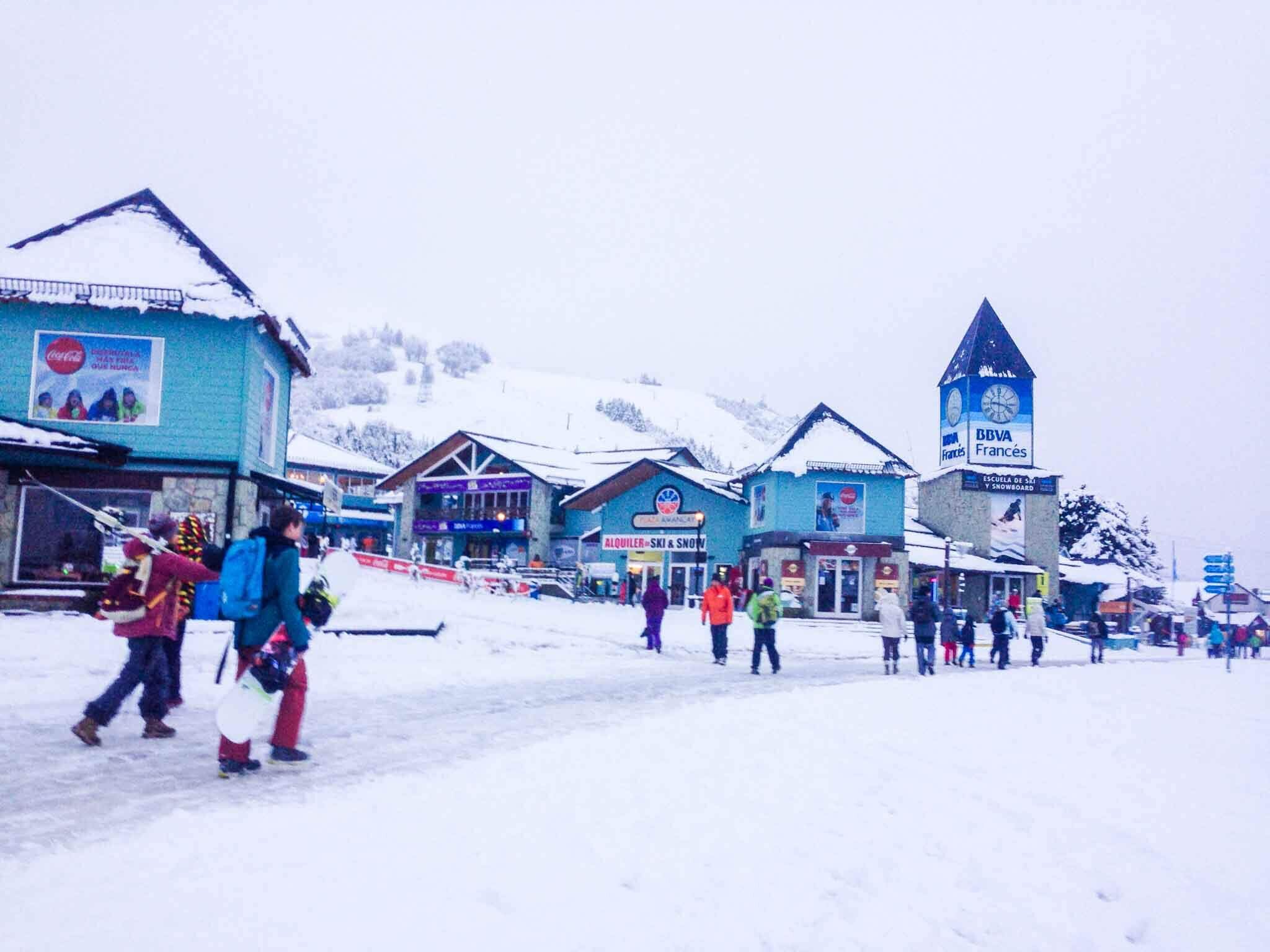
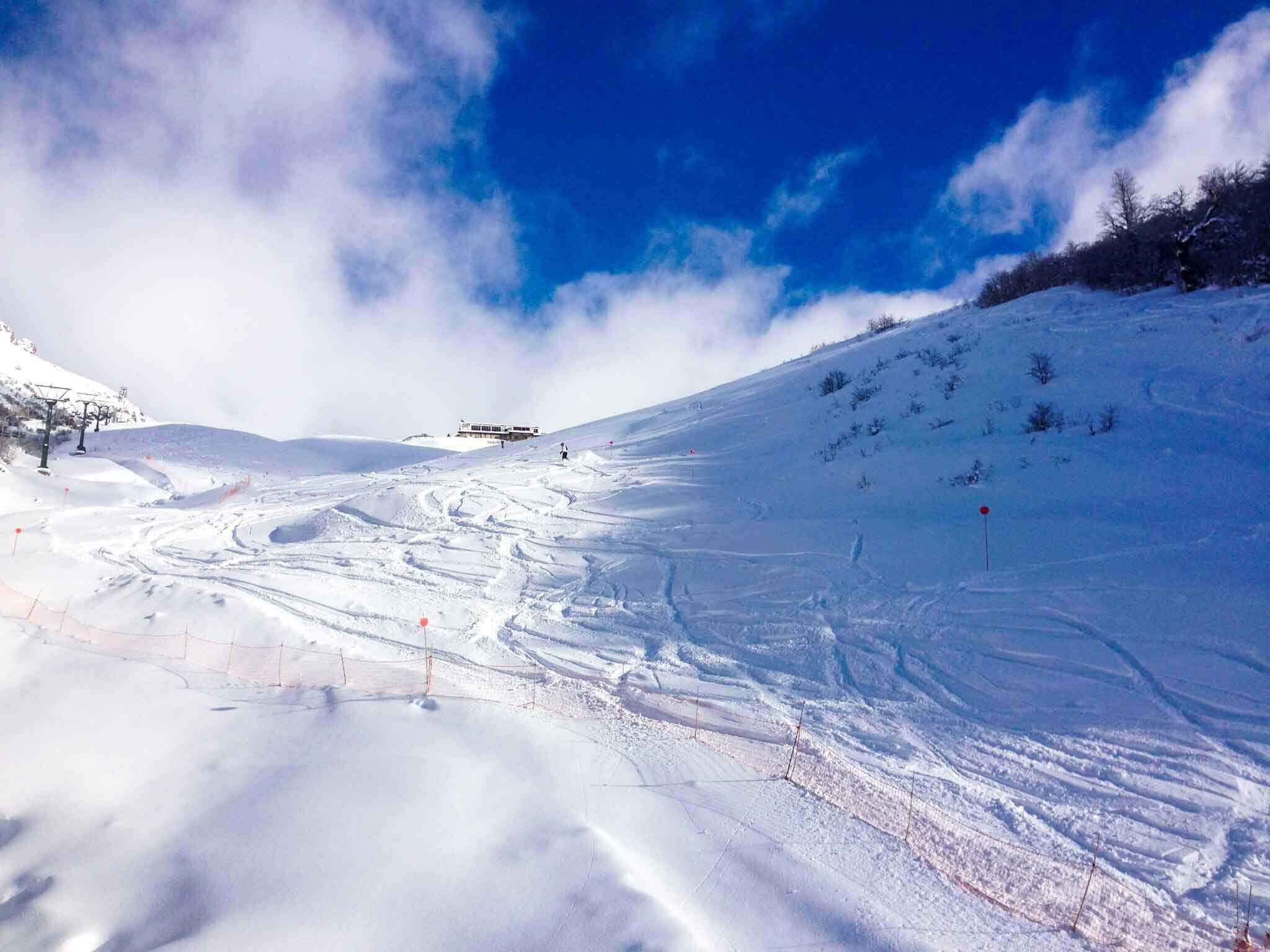
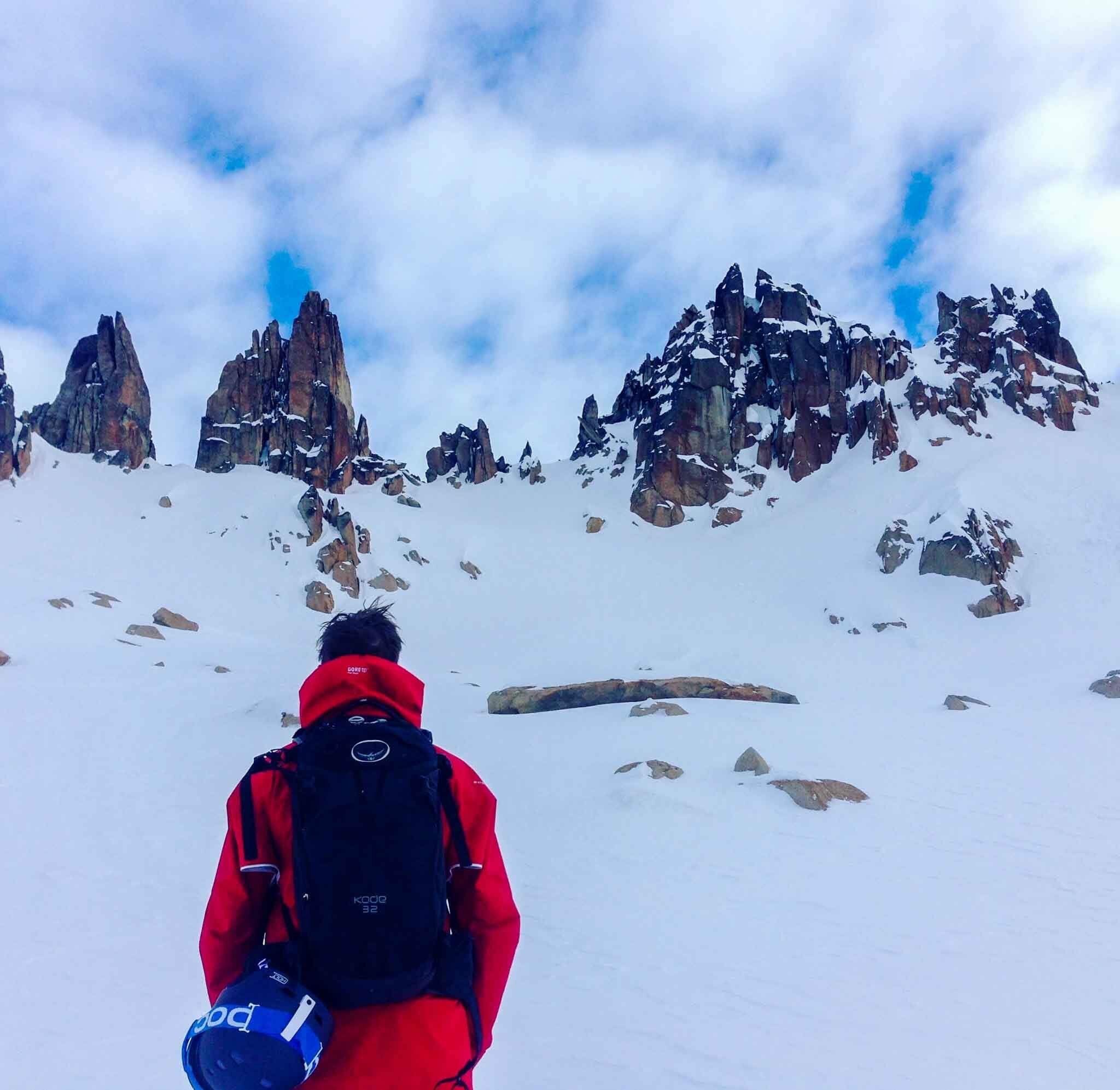
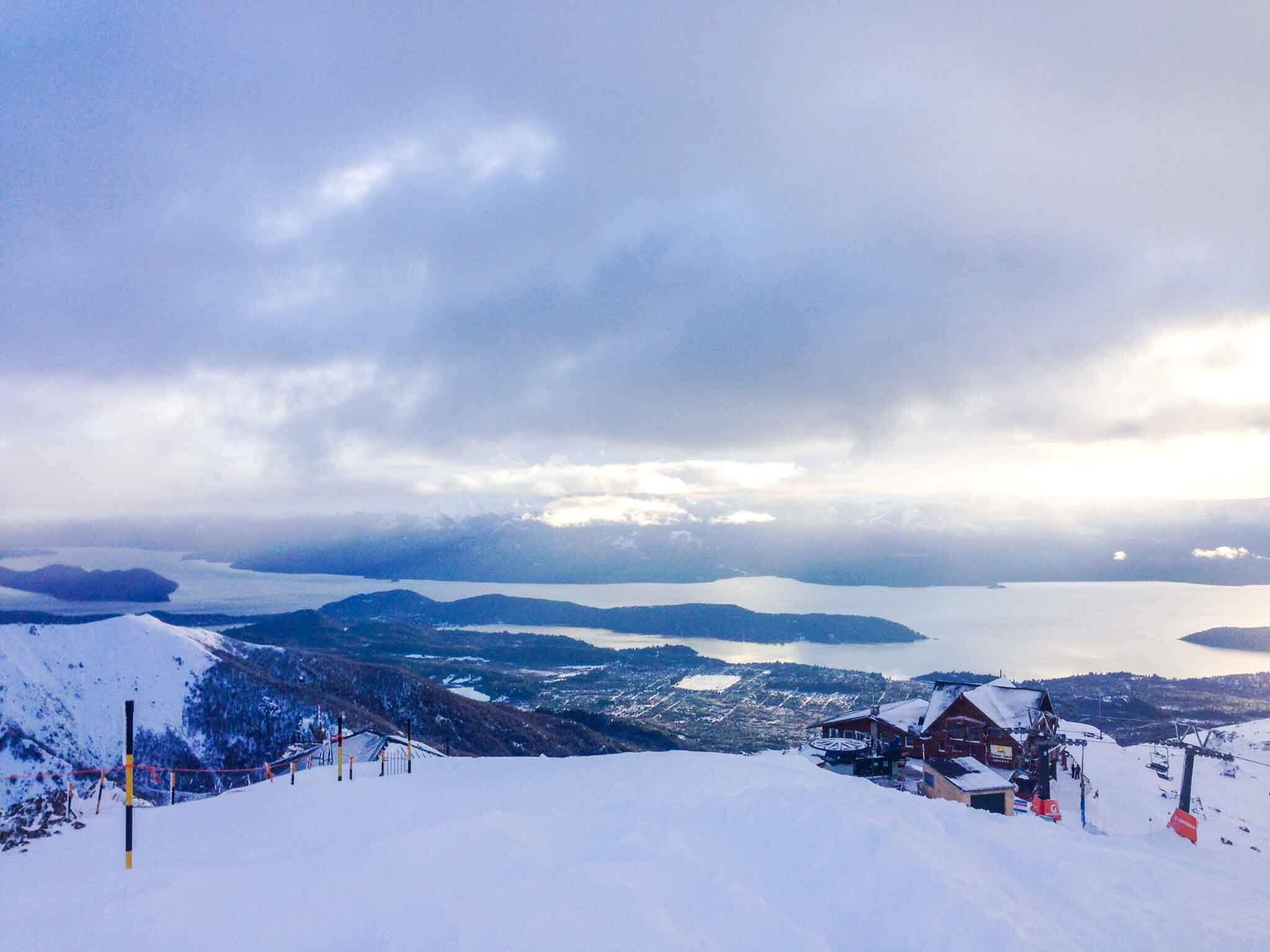
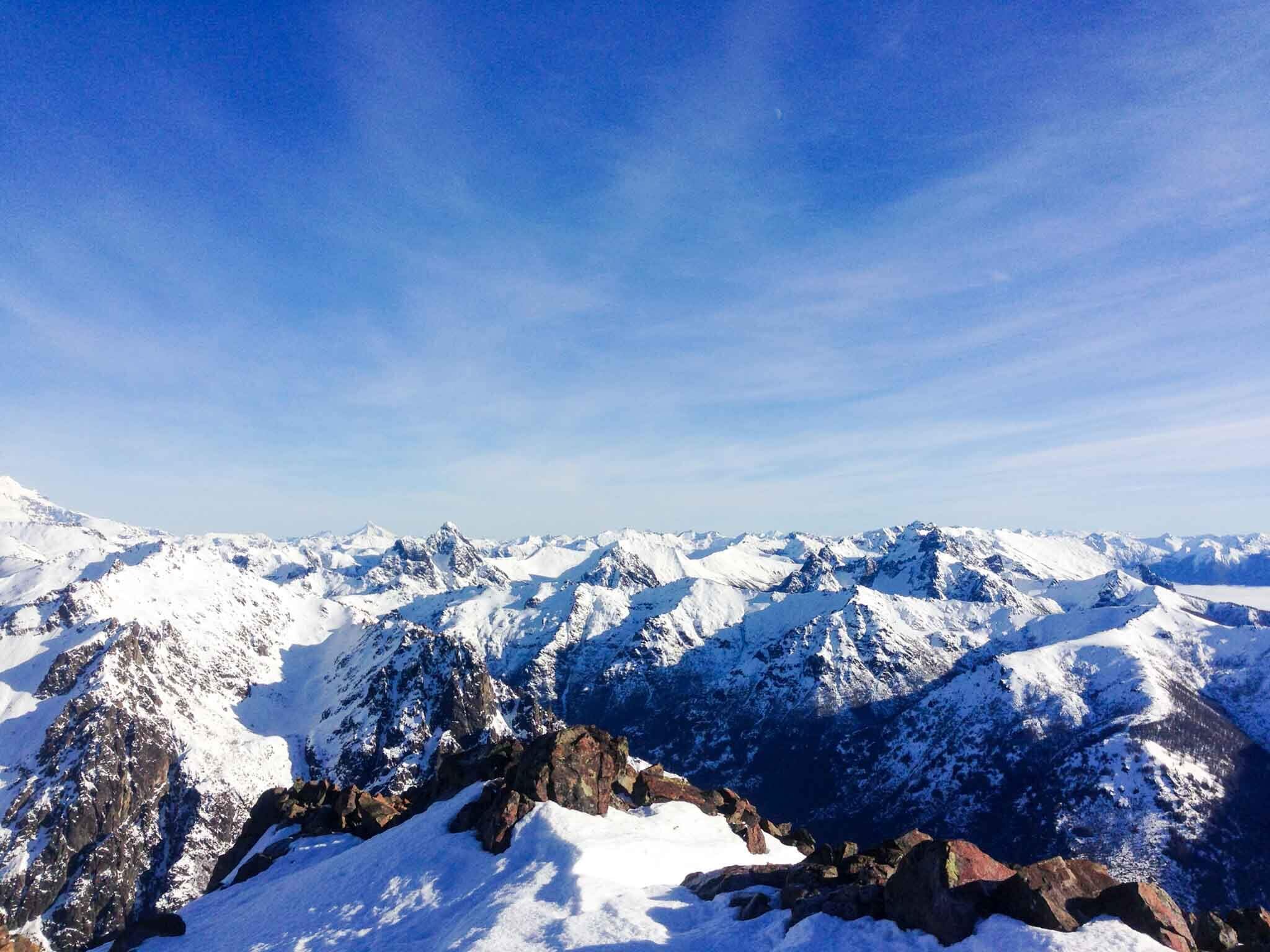
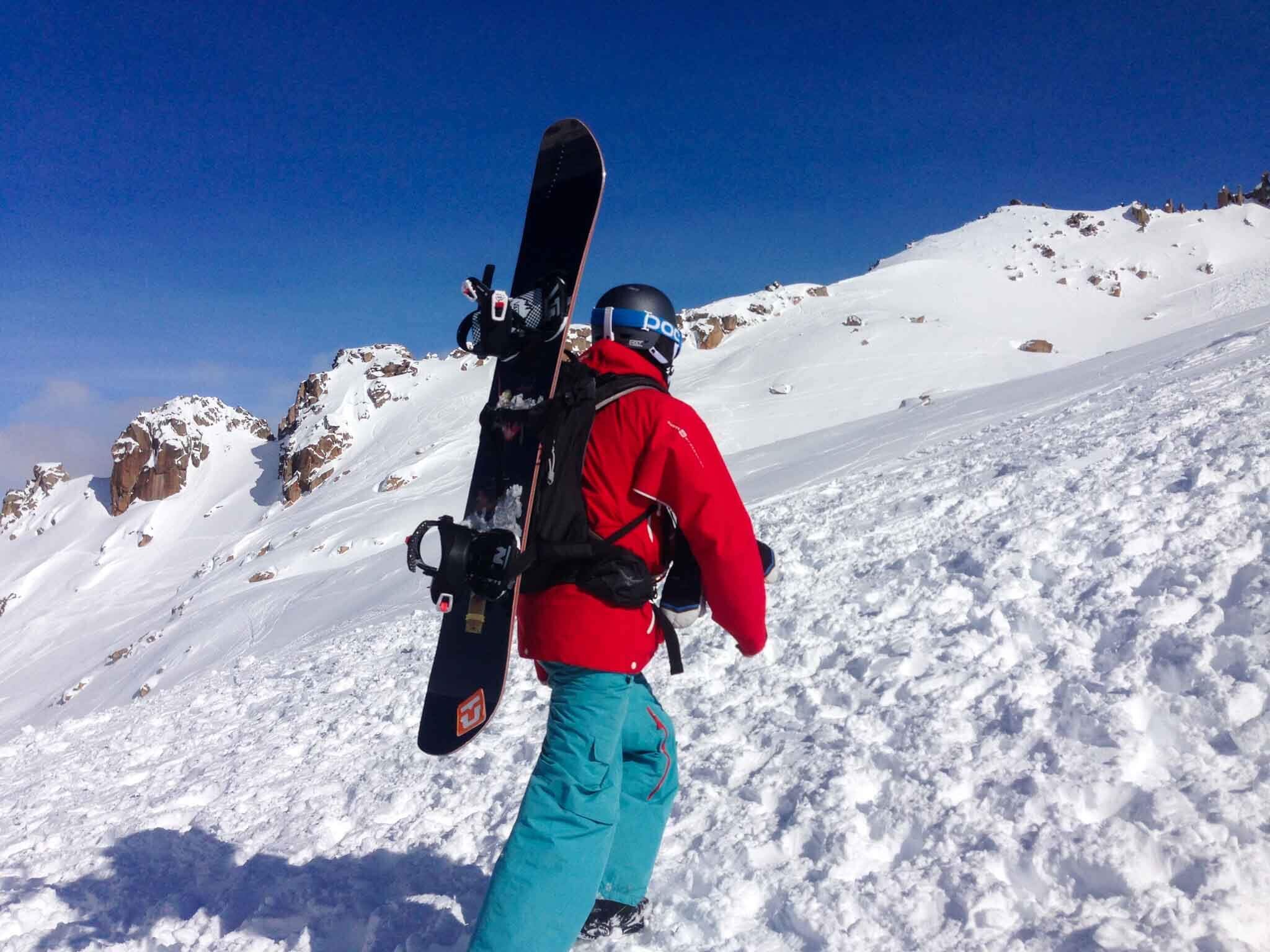
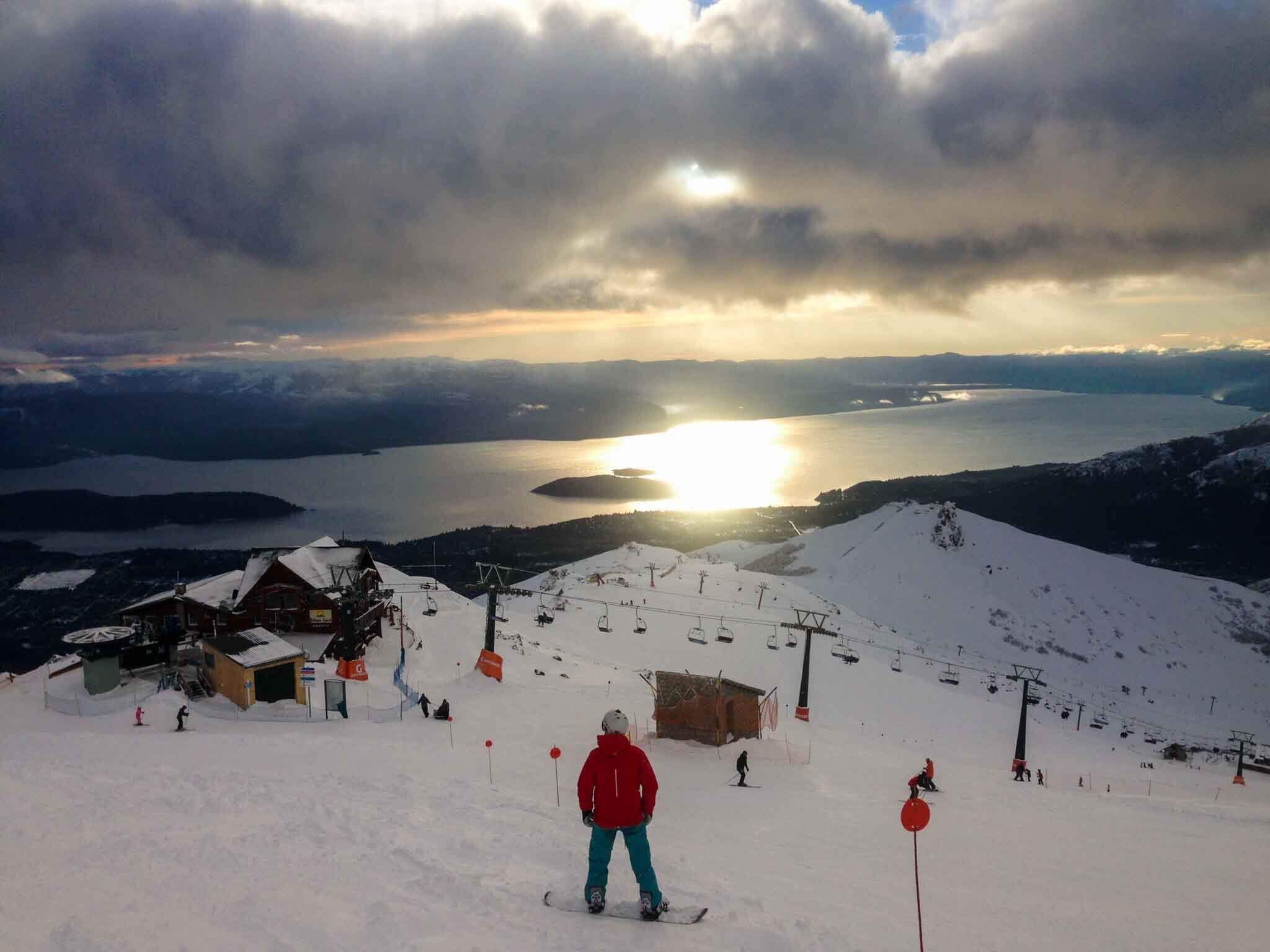
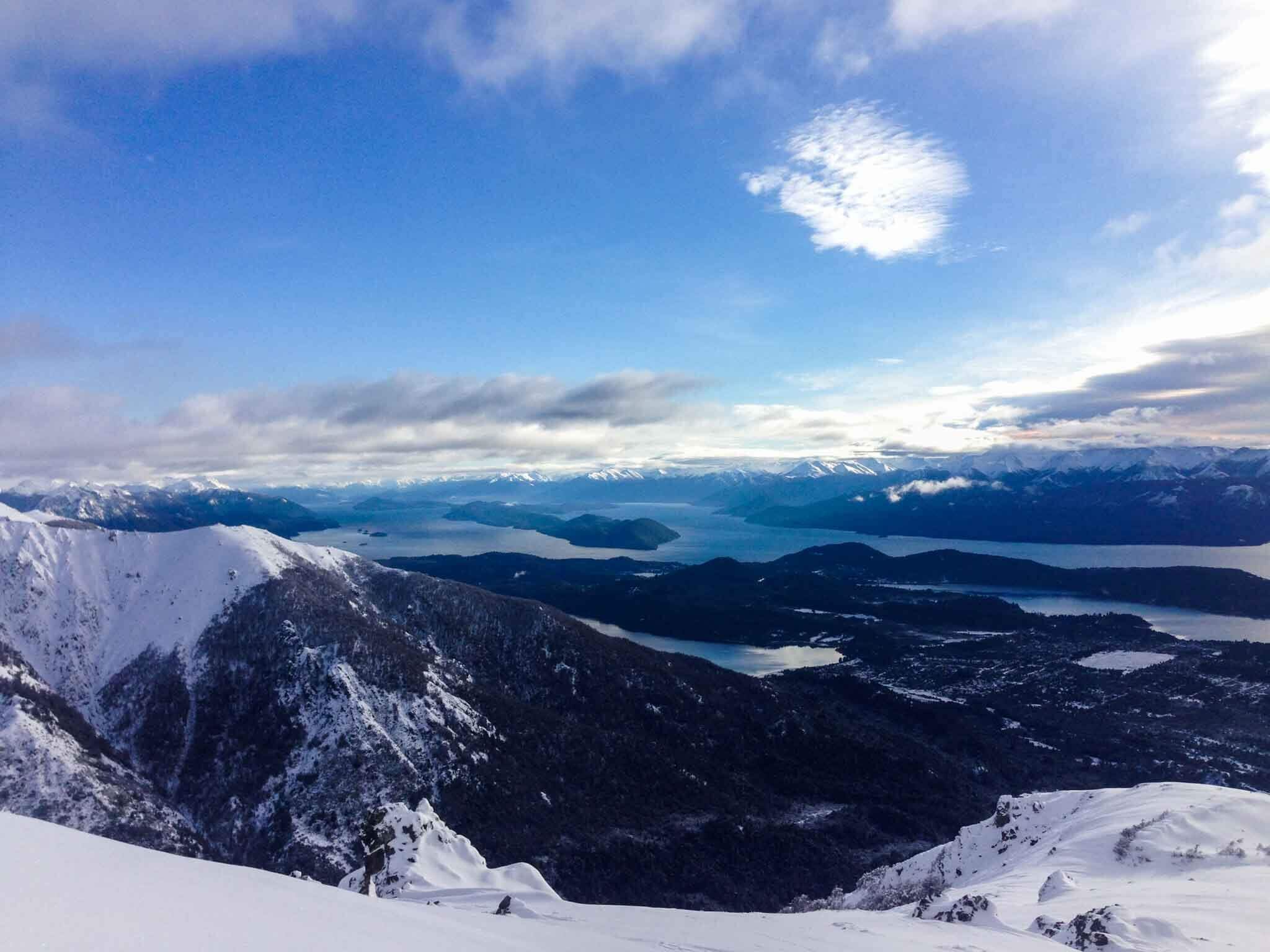
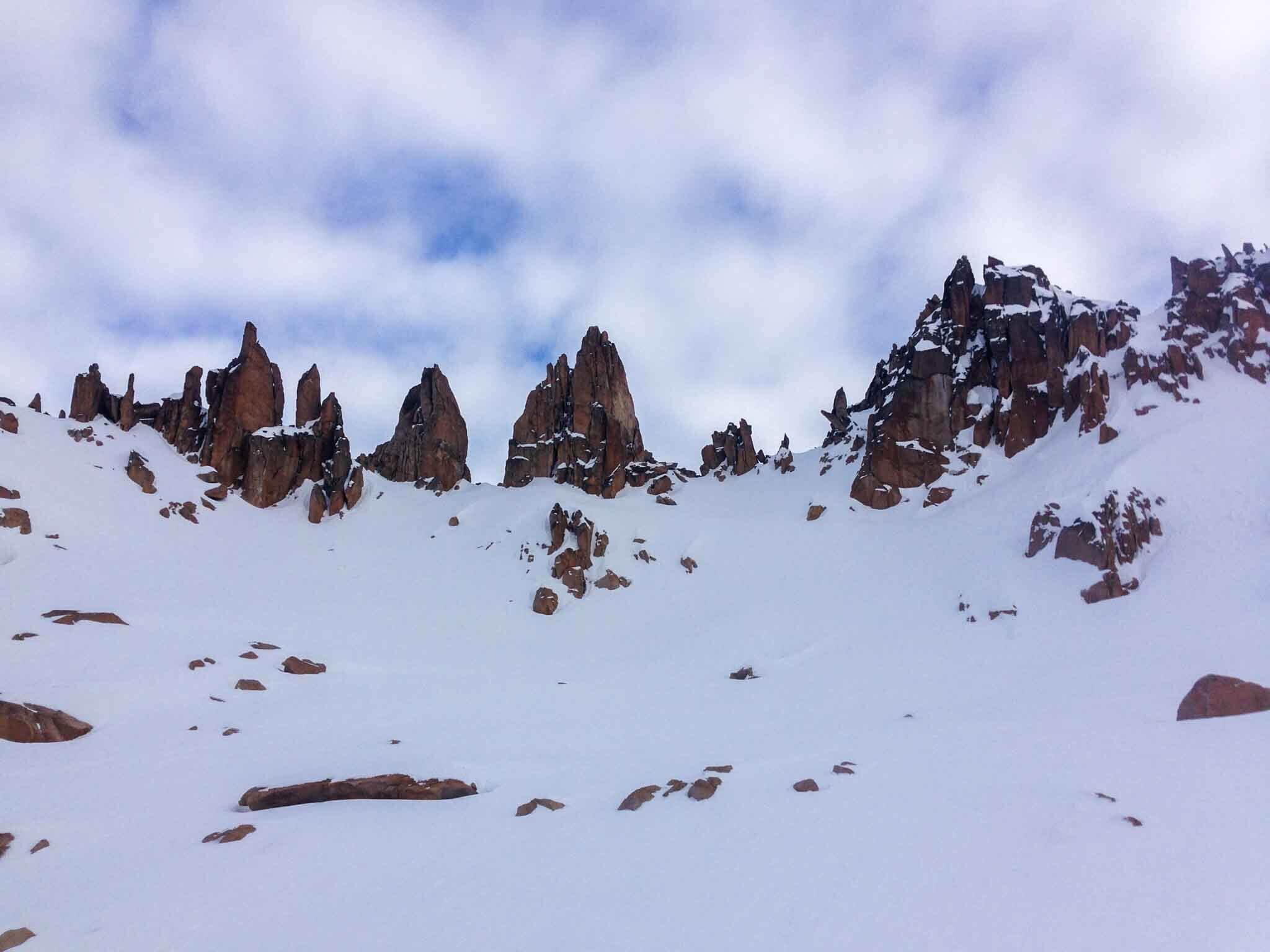
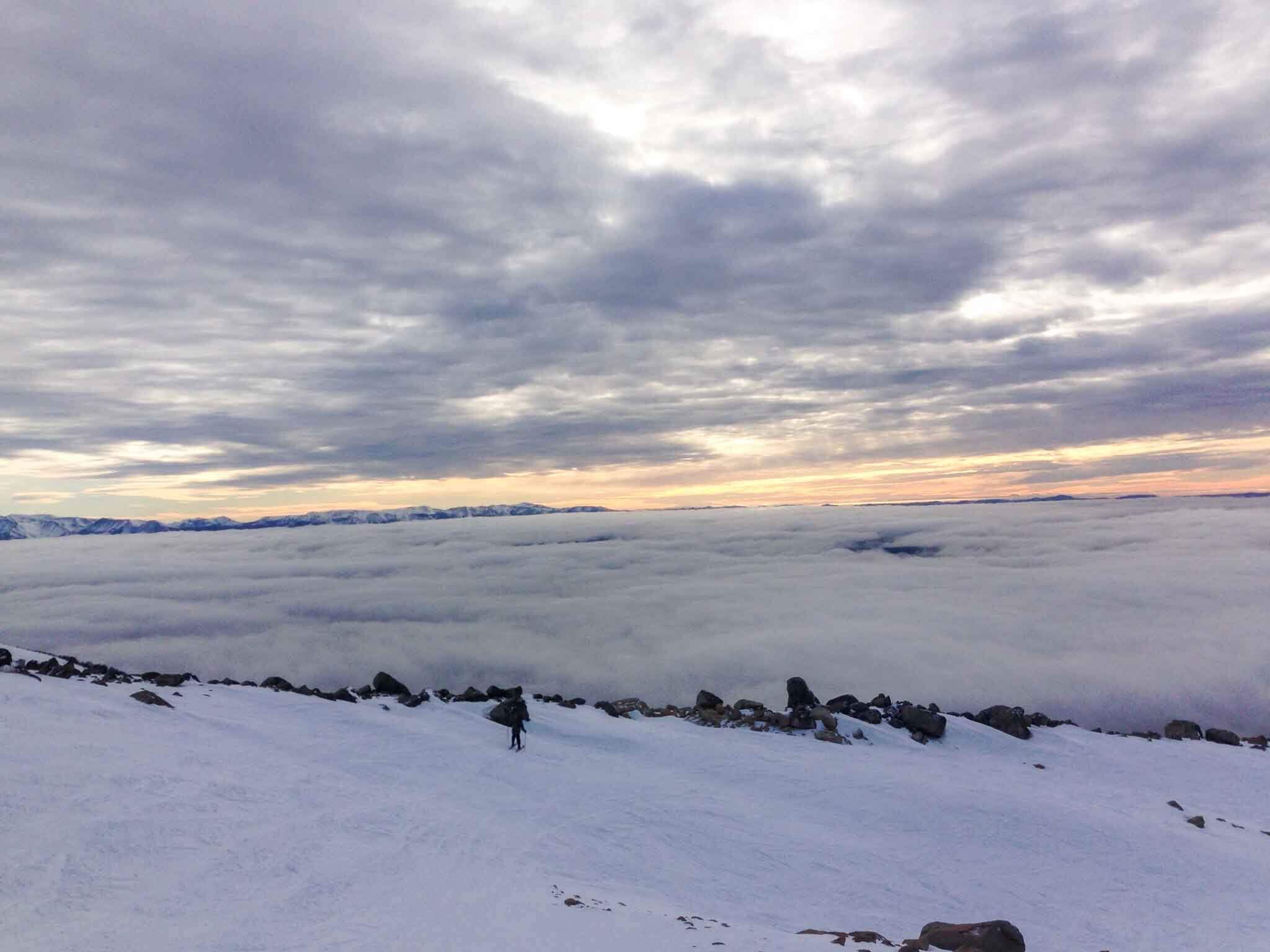
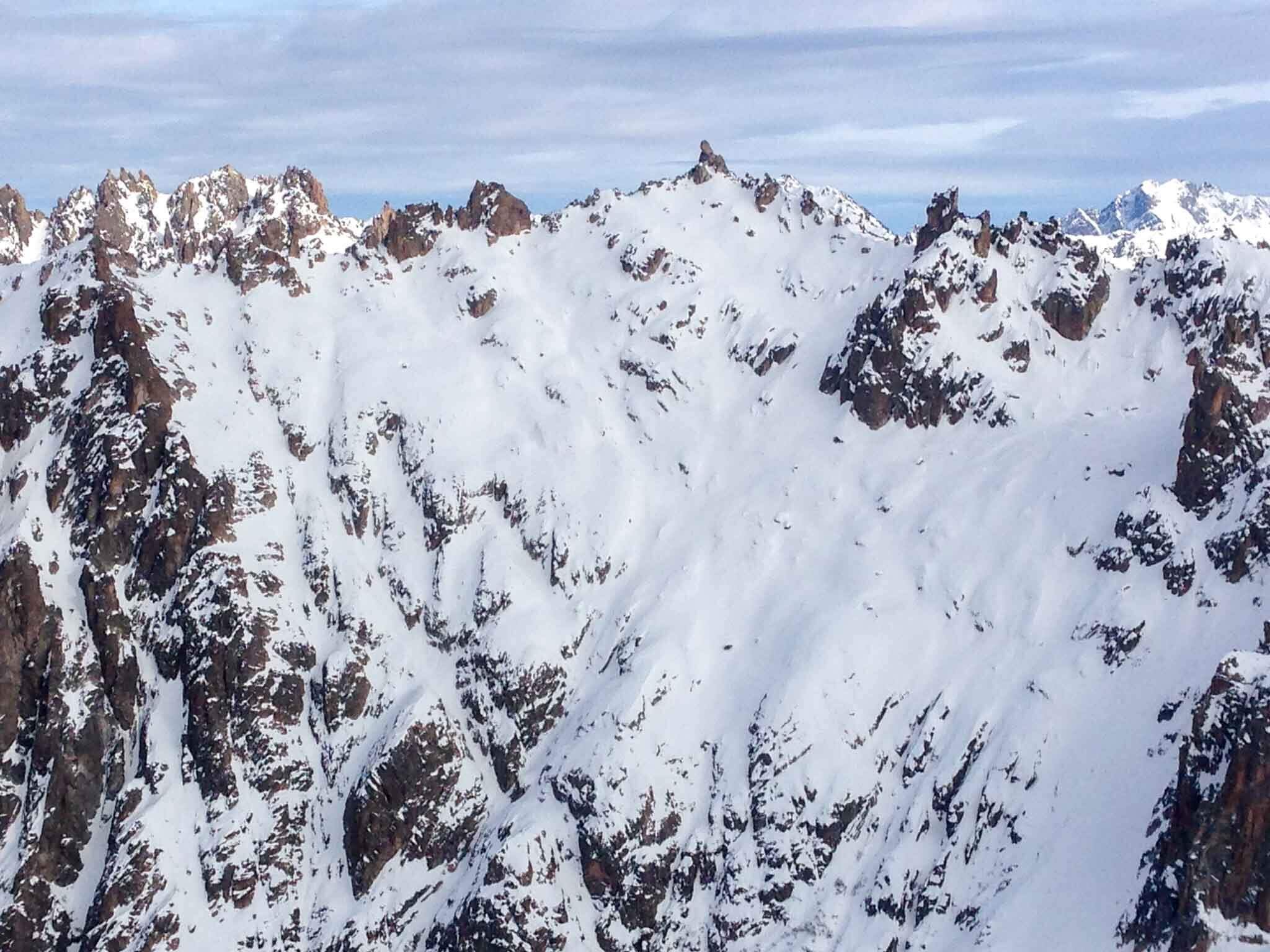
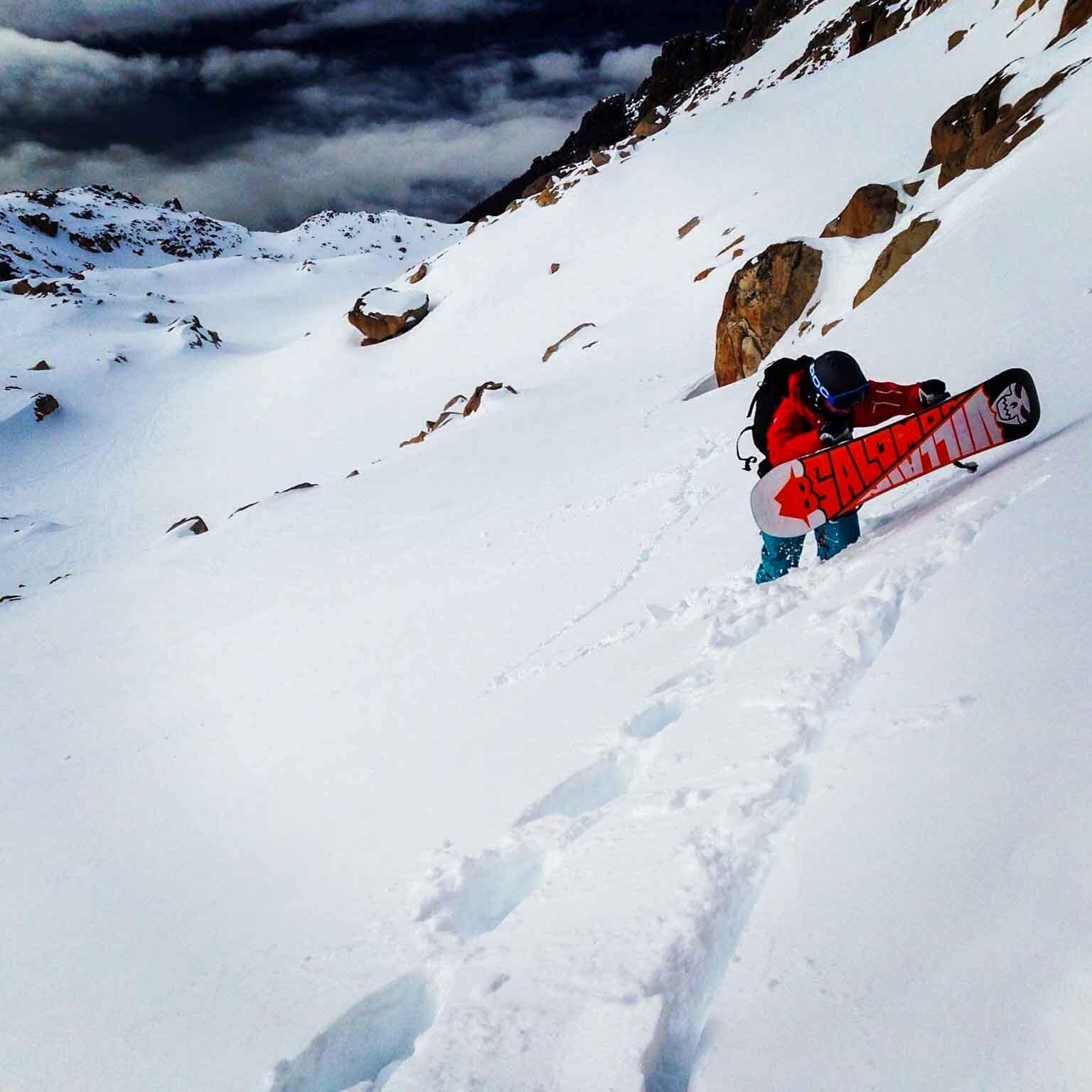
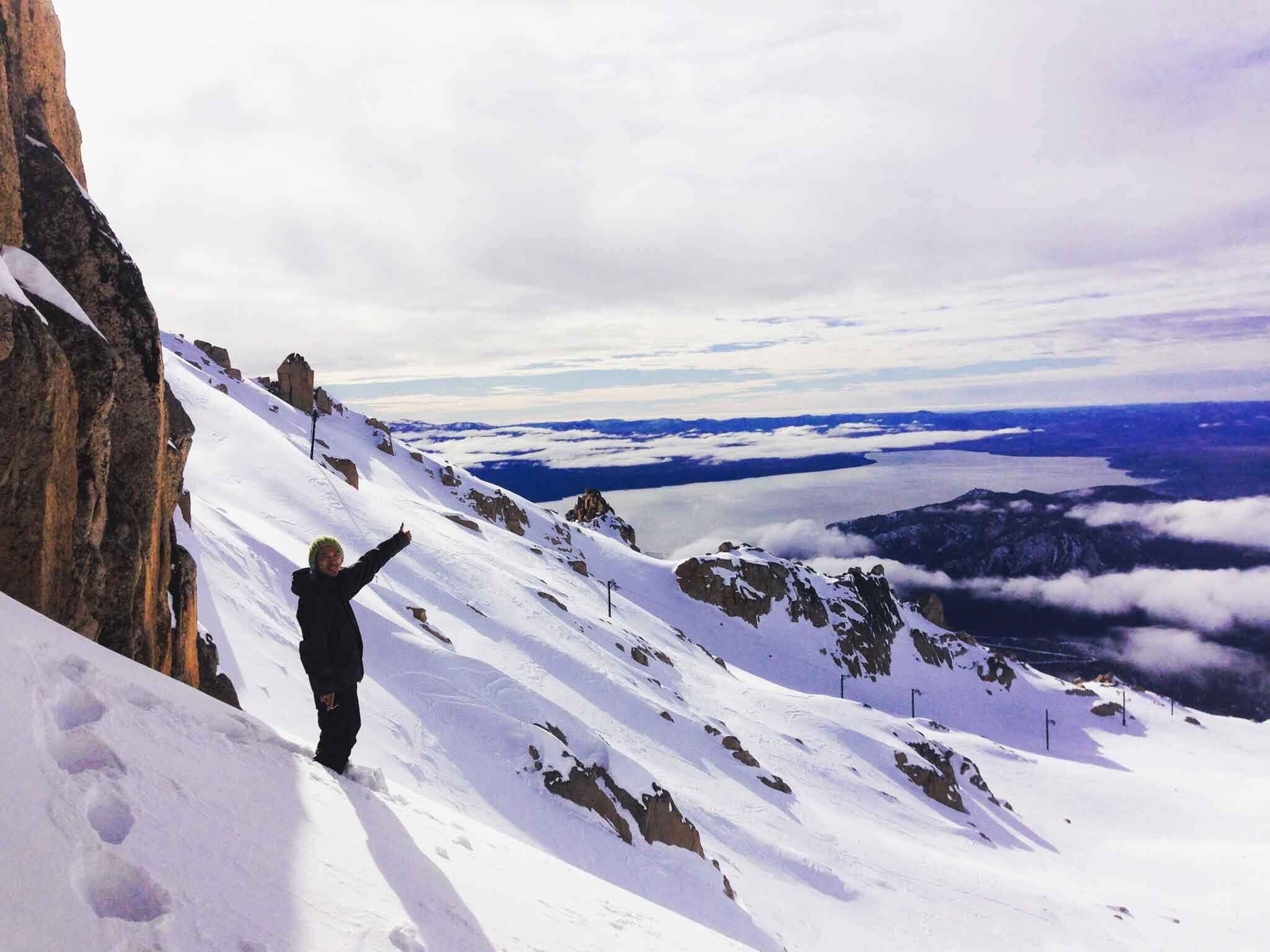
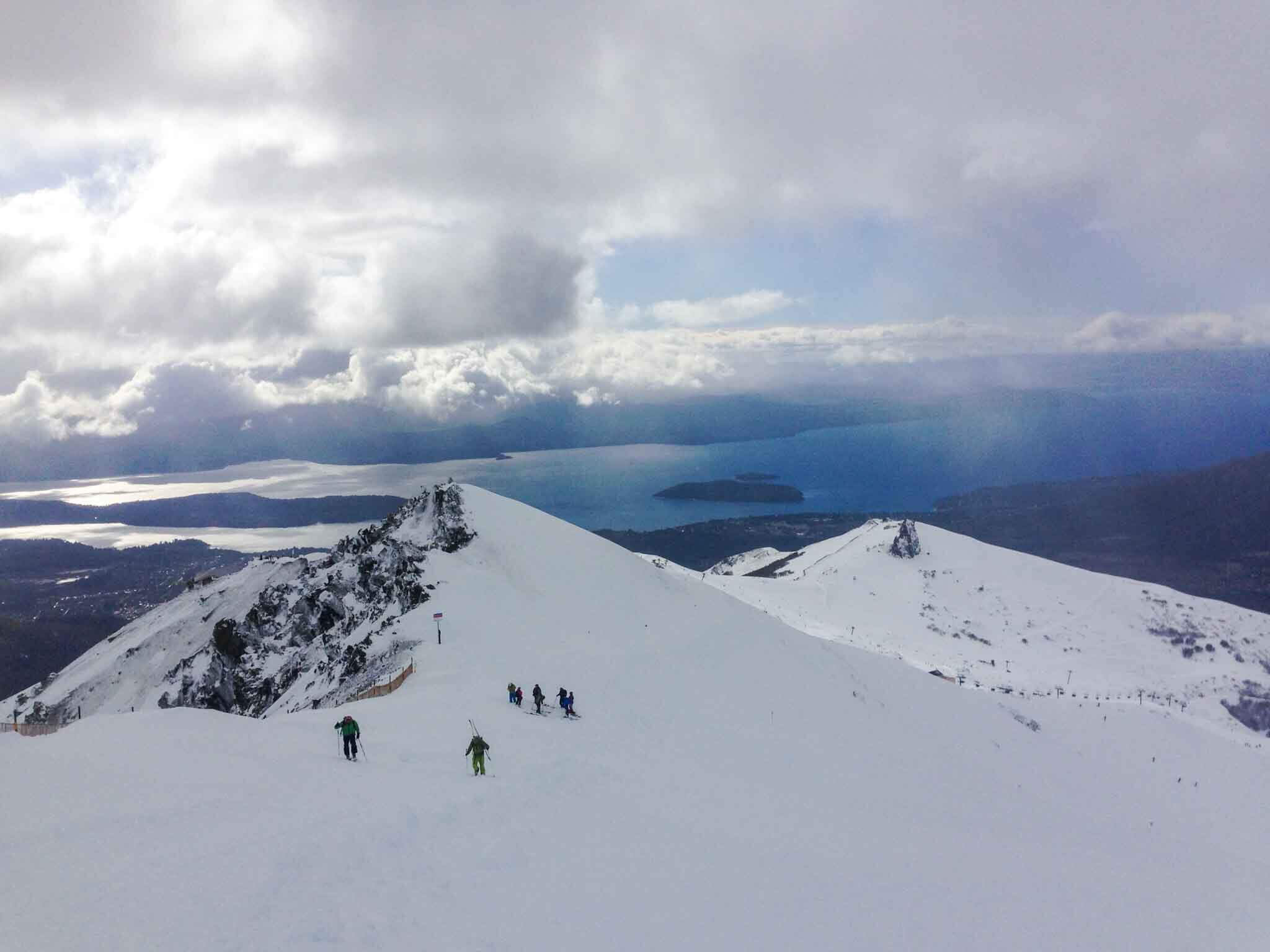
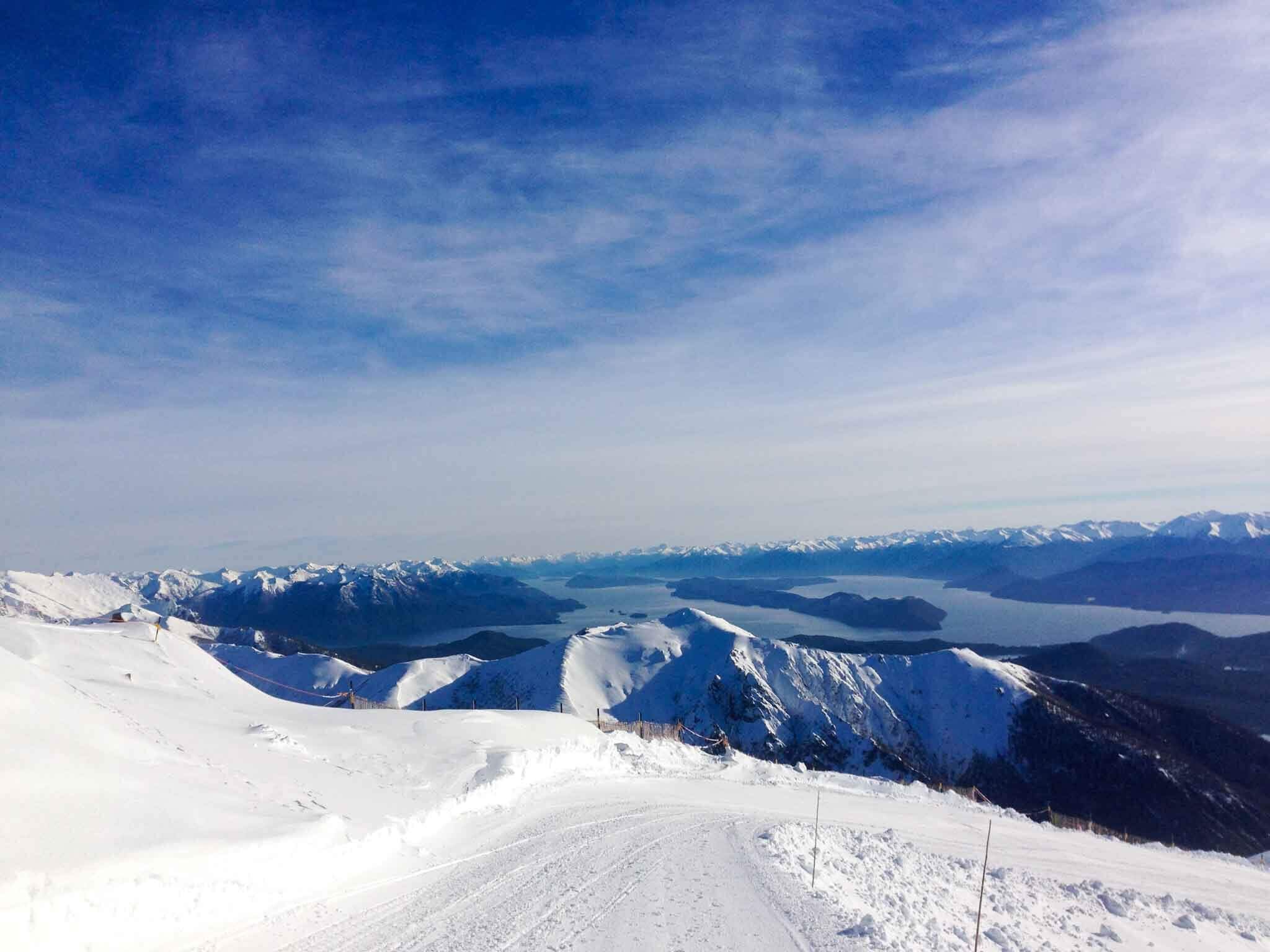
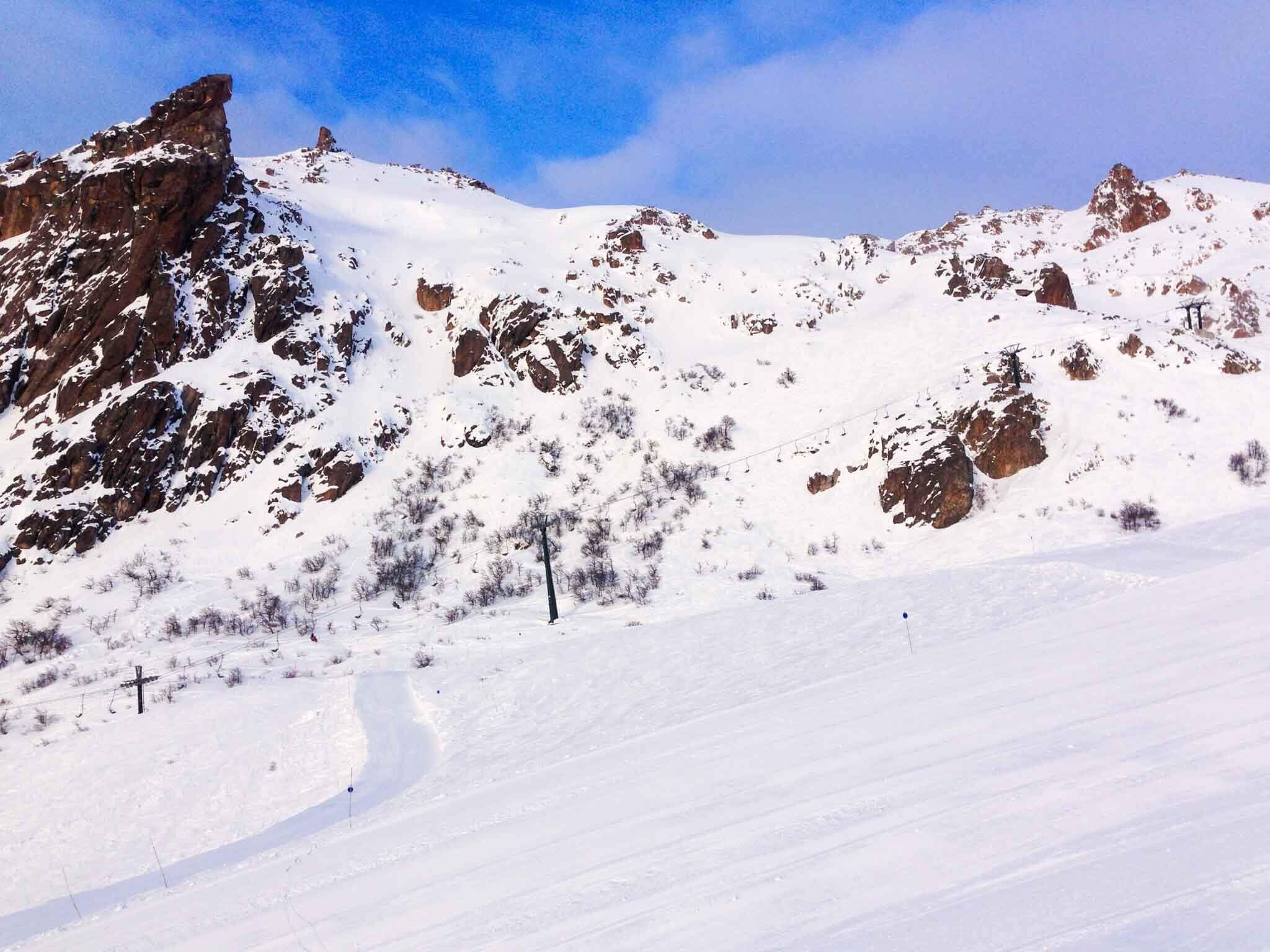
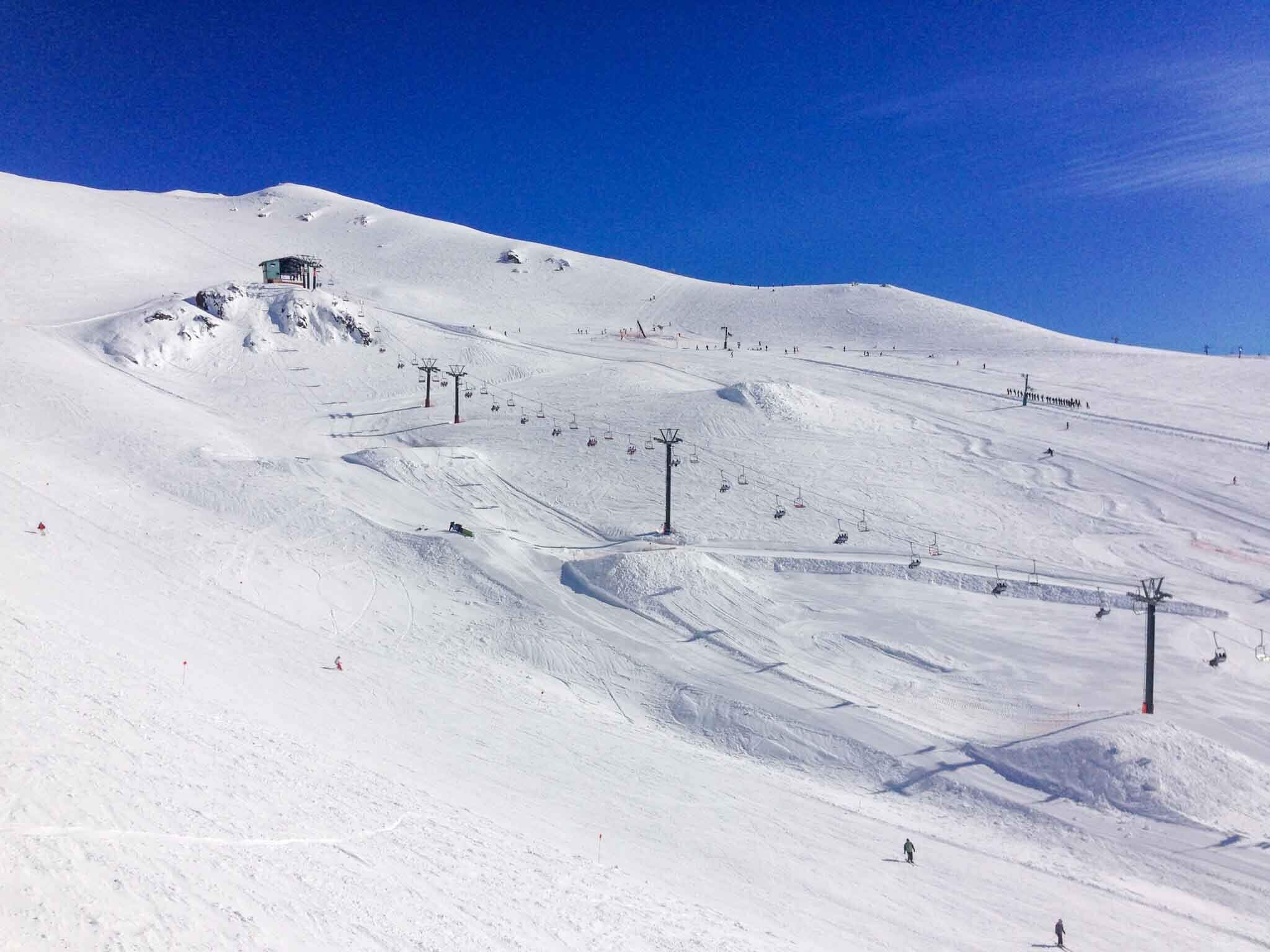
WHAT TO EXPECT WHEN SNOWBOARDING IN ARGENTINA
Snowboarding in Argentina can be amazing and it can be a complete write-off. In Argentina, you really have to be prepared for the worst and make the most of the good days you get. Like in most mountain environments, the weather dictates everything and Argentina can be prone to some pretty serious weather systems. There is nothing quite like the feeling of being sat on a chairlift in 100km winds whilst hoping the resort staff can get the chair running again. With this in mind, Argentina’s resorts can be prone to wind closures that can last days rather than hours.
When conditions are good, Argentina is an incredible place to snowboard. Bluebird days bring with them insane views of Argentina’s rugged landscape and powder days combine epic snow and some jaw-dropping terrain. The majority of my days on snow in Argentina have been positive and it is worth remembering that on the days when things don’t go right.
The resorts are a mixture of modern facilities and some of the slowest chairlifts you could ever experience. Cerro Catedral specifically has a good mixture of high-speed chairs and some older ones that really could do with replacement. With that being said if there is one place I don't mind a slow chairlift ride it’s Argentina, the views are worth it.
Freeride is the main reason to visit Argentina with the Andes Mountain range creating some incredible natural terrain to play in. If freestyle is your thing, then there will be terrain parks to play in but don’t expect the same scale as some New Zealand resorts.
WHY SNOWBOARD IN ARGENTINA
Argentina is a great destination for a summer snowboard trip. Unlike Australia and New Zealand, you will find big mountain terrain within the resort boundaries. This means that not only will you be chasing summer pow laps but you can head into some pretty epic areas to get it. There is hikeable terrain at most Argentinian resorts with Las Leñas and Cerro Catedral having great sidecountry access straight from the chairlift.
Argentinians are great people and will be a highlight of any trip to this awesome country. I found Argentinians to be incredibly welcoming during my travels and even had some volunteers show me their local spots on the hill. I was blown away by the helpful nature of the Argentinians whether it be; hitchhiking to the resort or inviting me for Asado.
Argentina is about so much more than just the on-snow experience. The capital of Buenos Aires is well worth investing a couple of days of your trip to visit. Everything from the historic Plaza De Mayo to watching a football match at La Bombonera should be high on your tourist bucket list. Of course, any trip to Buenos Aires would be incomplete without a steak dinner and a night learning the Tango.
La Laguna @ Cerro Catedral
ARGENTINA SKI SEASON DATES
As summer seasons go Argentina’s is pretty long. Starting in June and running into October. Depending on the season the early and late season conditions can be pretty sketchy with the best time to visit during August. In August you will have your best chance of scoring that Argentinian powder day however it can be crowded during the holiday season. Luckily, my experience is that most tourists to Argentine ski resorts are first-timers and won’t be out stealing your stashes.
POPULAR ARGENTINA POSTS
TRAVEL TO ARGENTINA
Getting to Argentina from London is a long flight, 14 hours into Buenos Aires and you will need to connect to get closer to your chosen resort. Internal flights in Argentina can be expensive but will save you a long bus journey. Argentina’s bus network is pretty impressive and fairly inexpensive. Be sure to choose the ‘cama’ option which is a reclining seat and will offer more comfort.
ARGENTINIAN APRES SKI
Argentinians know how to have fun and this is no different in their ski towns. Most resorts will offer a lively happy hour after the lifts are closed but this is normally just a prelude to what is to come. Argentina is about the community so expect to be invited to eat Asado. If the mood takes you, nightclubs are popular but be prepared to start late with most opening around midnight.
TRAVEL MONEY ARGENTINA
Argentina is famous for a currency that is continually fluctuating. This means getting your money at the right time can make a huge difference in how affordable your trip is. It is well known that in Argentina there are two currency exchange rates, the official rate, and the black market rate. The black market rate will get you around 20-30% more for your money over exchanging your money in banks but this is obviously at your own risk.
ARGENTINA FREQUENTLY ASKED QUESTIONS
IS SNOWBOARDING BETTER IN ARGENTINA OR CHILE?
Argentinian and Chilean ski resorts offer you incredible terrain if you love freeriding. With terrain that will challenge even the most experienced snowboarders, you can really push your boundaries in both countries. Like most places in the world, Argentina and Chile have different scale resorts suited to different styles or levels of snowboarding and you just need to find the resorts that suit your style. There are plenty of reasons to visit both countries for a snowboarding trip.
HOW MUCH IS A SKI PASS IN ARGENTINA?
As with most things in Argentina the actual cost when you consider currency conversion can change drastically. Expect to spend between £40 to £80 per day for a lift pass at the major resorts. It is worth checking out the Flexi pass options if you want some coverage due to poor weather and you can save massively by purchasing multi-day passes.
IS IT SAFE TO TRAVEL AROUND ARGENTINA?
As with all countries is it best to use common sense and proceed with caution in high-risk areas. Our experience is that Argentina is a safe place to travel and we have never had any issues. Listen to local advice and leave potential problem spots before it gets dark. Around the ski resorts, Argentina is incredibly safe and you can feel more relaxed. Buenos Aires is one of the safest cities in South America but it does have its problem spots. In Buenos Aires, areas like La Boca are huge tourist hotspots and prone to crime. We enjoyed visiting La Boca but the advice was always to leave before 5 PM.
DOES ARGENTINA HAVE GOOD SNOW?
Argentina can deliver some epic snow conditions with big mountain powder runs a thing of legend. Typically the ski season has its most reliable conditions through July and August in Argentina so it is best time time your trip between these months.
DOES ARGENTINA HAVE GOOD SKIING?
If you are looking for a summer skiing destination then you can’t go wrong by opting for Argentina. Argentina is home to some mega-resorts like Las Lenas and Cerro Catedral which offer some of the best skiing on the continent. The ski resorts in Argentina are on a bigger scale than those in other summer skiing destinations like Australia.
GET IN TOUCH
As always thanks for reading and know it is your turn to have your say! Let me know in the comment section if you have visited Argentina. What was your favourite activity in Argentina?
PIN IT FOR LATER
IF YOU FIND VALUE IN THIS POST CONSIDER CLICKING THE BUYMEACOFFEE LINK BELOW TO SUPPORT MY CONTENT
Samoëns Ski Resort Guide | Grand Massif
Samoëns offers two bases, the traditional village with its cobbled streets and historic town square and the satellite village of Samoëns 1600 where ski-in-ski-out accommodation provides direct access to the Grand Massifs 265km of pistes. Samoëns is a fantastic base to the wider Grand Massif but equally remains a stand-alone ski resort with plenty to offer.
Samoëns 1600m
SAMOËNS FIRST IMPRESSIONS
Arriving in the town of Samoëns has a different feel to most European ski areas. The old village sits at the base of the Grand Massif Express, a gondola that rises 900m to the ski area. From the gondola top station, a quick run takes you to the Chariande Express where you can access the rest of the extended ski area.
SAMOËNS SKI AREA
Samoëns is perfectly placed to access the slopes of the Grand Massif resorts of Flaine, Morillon and Les Carroz by chairlift or the village of Sixt by bus. If you do not want to venture too far then Samoëns has enough to keep most of the family entertained.
The beginner’s area in Samoëns is first class and would make a perfect base for learning, although during peak weeks it can suffer from overcrowding. There is a magic carpet, some surface lifts, and a friendly chairlift, after graduating from this area you should be able to handle everything the mountain has to offer. The ski schools will meet in Samoëns 1600 by the gondola or entrance to Club Med.
Those looking to explore further will not be disappointed with Samoëns, there are many interesting steeps and off-piste routes that lead back to the Chariande Express Chair. Some great skiing can also be found near the Coulouvrier chair with some interesting blue and red-grade slopes.
After fresh snow, most will head to the Tete de Saix and the links over to Flaine, where you will find some awesome powder lines and tree skiing. Many neglect the long run down from Samoëns to Vercland, which can have great conditions after fresh snow. Sadly snow to Verclands base area can be unreliable.
Samoëns ski area can be prone to high wind causing the links over to Flaine, Les Carroz and Morillon to shut down. If this happens skiing in Samoëns can be great for bad weather days with ample cover in the bowl and between the trees. If you still plan to ski another Grand Massif resort on a bad weather day this is possible via the local free bus service.
BEGINNERS TERRAIN SAMOËNS
The beginner’s area in Samoëns is amongst the best in the Grand Massif. What I like about the beginner’s area is there is a perfect progression in terms of lifts. Beginners can start worry-free on the Magic Carpets before moving onto a slow drag lift and then the two slow beginners chairlifts which all access green runs.
INTERMEDIATES TERRAIN SAMOËNS
The intermediate terrain in Samoëns offers a perfect blend of challenge and enjoyment for skiers and snowboarders looking to progress their skills. With its wide array of groomed blue and red runs, this picturesque ski area caters well for intermediates. Intermediate skiers and snowboarders will also benefit from the links to nearby resorts like Morillon and Les Carroz which have beautiful blue cruisers.
Samoëns Grand Massif
ADVANCED TERRAIN SAMOËNS
Advanced skiers and snowboarders will need to enjoy heading away from the piste to make the most of skiing in Samoëns. Yes Aigle Noir can claim to be amongst the most challenging black pistes in the Grand Massif but there is little else on the piste map.
Where Samoëns comes into its own is the slackcountry areas between the pistes which can be exceptional after fresh snowfall. Samoëns is great for catching snow that gets blown into its large bowl. and this makes it a really fun resort to hit when the conditions are good.
WHERE TO SKI IN SAMOËNS DURING A STORM
Sadly in Samoëns there is little cover from bad weather when conditions turn to their worst. Luckily nearby Morillon and Les Carroz ski resorts have some fantastic terrain which is lined by trees which gives good context in bad weather.
ACCESSING THE GRAND MASSIF
From Samoëns it is easy to transition between the other Grand Massif resorts allowing you to make the most of the whole ski area. From Samoëns take the the Chariande Express or Coulovrier chairs which will take you to the Tete de Saix, the crossroads of the Grand Massif. For Flaine, head to Verdant chair, alternatively you can ski directly into Morillon and Les Carroz from this point.
Coulovrier Chair above Samoëns
FREESTYLE SAMOËNS
In terms of freestyle, you have a couple of options in the Grand Massif. Flaine has a terrain park and border cross tracks that wind down skiers left of the bowl as you head towards the village. In Les Carroz there is a small park that is serviced by a poma, the layout of this park didn’t allow for good flow between jumps and rails but had some of the best features.
SAMOËNS SNOW HISTORY
Samoëns has a pretty reliable snow history however it is worth noting that over the last few seasons, the lower reaches of the resort towards the Vercland gondola have suffered with a lack of snow. In general, throughout the past winter the majority of Samoëns and the further Grand Massif had exceptional snowfall and it’s fair to say that you will get decent snowfall when you are in the higher reaches of the resort.
RELATED VIDEOS
SAMOËNS LIFTS
Samoëns has 3 major lifts, the Grand Massif Express and Vercland gondolas which whisk skiers up to the main area of Samoëns 1600 and the Chariande Express which departs 1600m and arrives at the Tete de Saix. There are two additional quad chairs in the beginner’s bowl and the addition of some surface lifts and magic carpets.
Skiers in Samoëns also have good access to the Coulouvrier chairlift, Europes longest, when it is in service. Sadly the Chariande 2 lift that used to run from the main bowl alongside the Chariande Express is no longer in service. I made the video below to discuss the reasons for this.
SEASON DATES
The season in Samoèns runs from early December to the end of April with closing normally around the 20th April. The resort has invested heavily in snow making to ensure they are able to maintain great conditions in both the early and late season.
SAMOËNS PISTE MAP
Grand Massif Piste Map
To see the interactive piste map click here
GETTING TO SAMOËNS
Getting to Samoëns is pain-free with Geneva airport around an hour away. I’ve always taken a resort transfer directly into my Grand Massif accommodation which has always been smooth. Although driving is possible I have always favoured transfer to these resorts
TRANSFER COMPANIES
Most of my transfers to Samoëns have been with GO MASSIF. Go Massif have been fantastic for shared transfers between Geneva and the Grand Massif and having used their service multiple times I would recommend them.
Alpin Bus are a company that I have used for private transfers between Geneva Airport and the Grand Massif. The communication throughout has been fantastic and service came in cheaper than Go Massif for the private option.
FIND YOUR TRANSFER
SELF-DRIVE
If you would prefer to self-drive there are numerous counters available at Geneva Airport where car-rental is possible. From Geneva, you can expect to drive for 1-1.5 hours depending on conditions. Other nearby airports; Chambéry and Lyon, also offer short drive times of 2 hours and 2.5 hours respectively. Driving to Flaine from Geneva represents one of the shortest ski resort transfers in the Alps.
TRAVEL AROUND THE GRAND MASSIF
The Grand Massif is a large area but luckily access between the resorts is fairly simple. From Samoèns you are perfectly placed to explore the other resorts.
SAMOËNS TO FLAINE
From Samoèns you will want to take the Chariande Express chair. Here you can either drop off into the off-piste near the Corbalanche Chair then head towards Vernant's chair. If you would prefer to stick to the pistes then Silice (blue) will take you to Dolomie (blue) which will lead you to Vernant. From the top of Vernant take Tourmaline (blue) all the way into Flaine.
SAMOËNS TO MORILLON
The fastest route via the pistes to Morillon is via the Chariande Express chair from Samoëns. Take the Perce-Neige (blue) until you reach L’Arète (blue) which will lead you to Morillon. Alternatively, you can utilise the free shuttle bus services which run between Samoëns and Morillon ski resorts.
SAMOËNS TO LES CARROZ
There are a number of routes between Samoëns and Les Carroz. Perhaps the most direct for beginners and intermediates is to take the Chariande Express chair from Samoèns and follow Silice (blue and then Dolomie (blue) which will lead you to Portet (blue). This run gets fairly flat around the end of Dolomie so you can often see some people pushing or walking this route. If you can maintain your speed you should be fine.
The more advanced can take the Chamois red piste from the Tete de Saix which runs towards Marmotte and Les Molliets chair. From Les Molliets you can either return to the Tete de Saix via the chair of the same name or take Les Molliets to head towards Gron or the Keuduze gondola and Les Carroz village.
SAMOËNS ACCOMMODATION





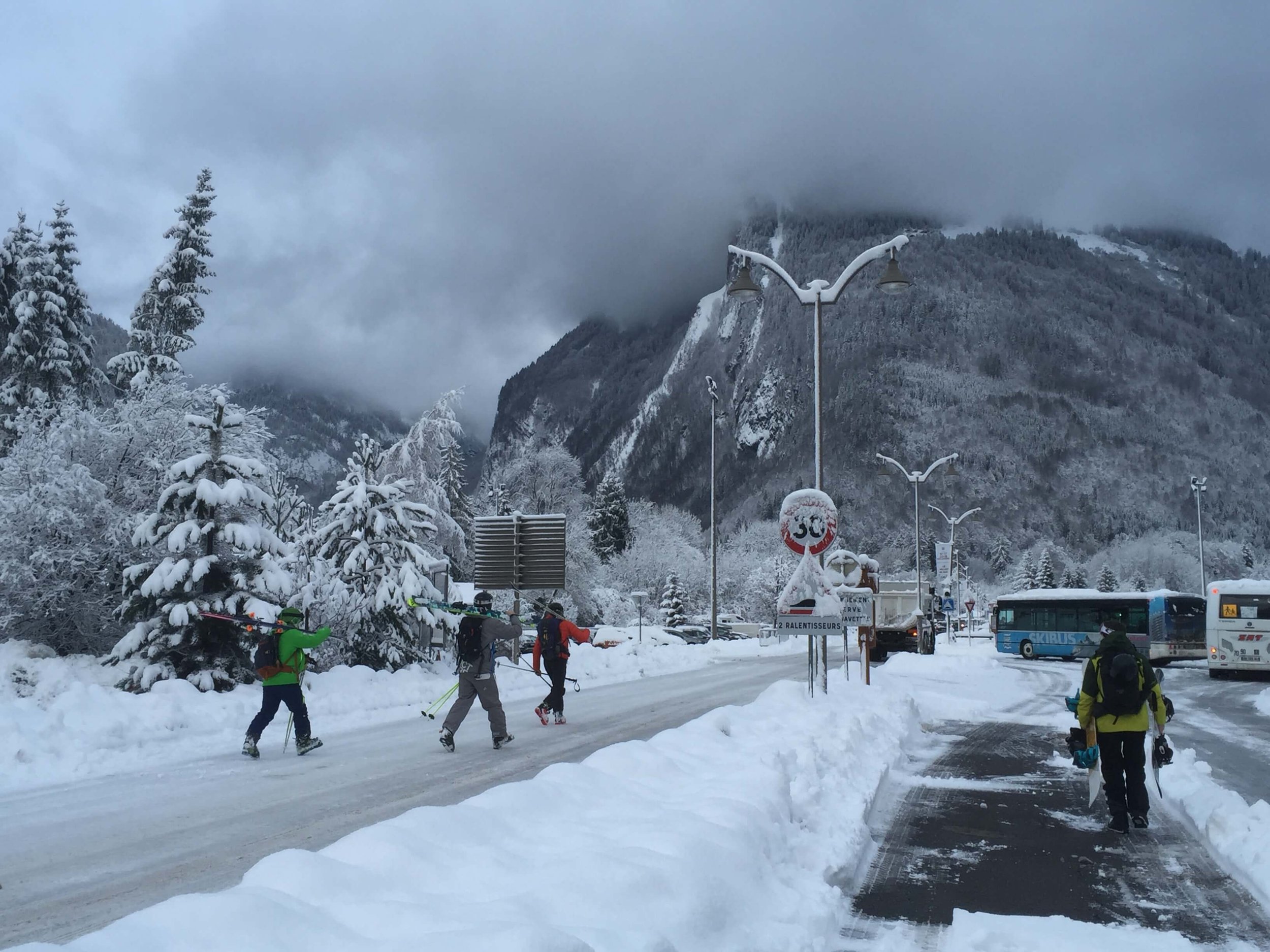
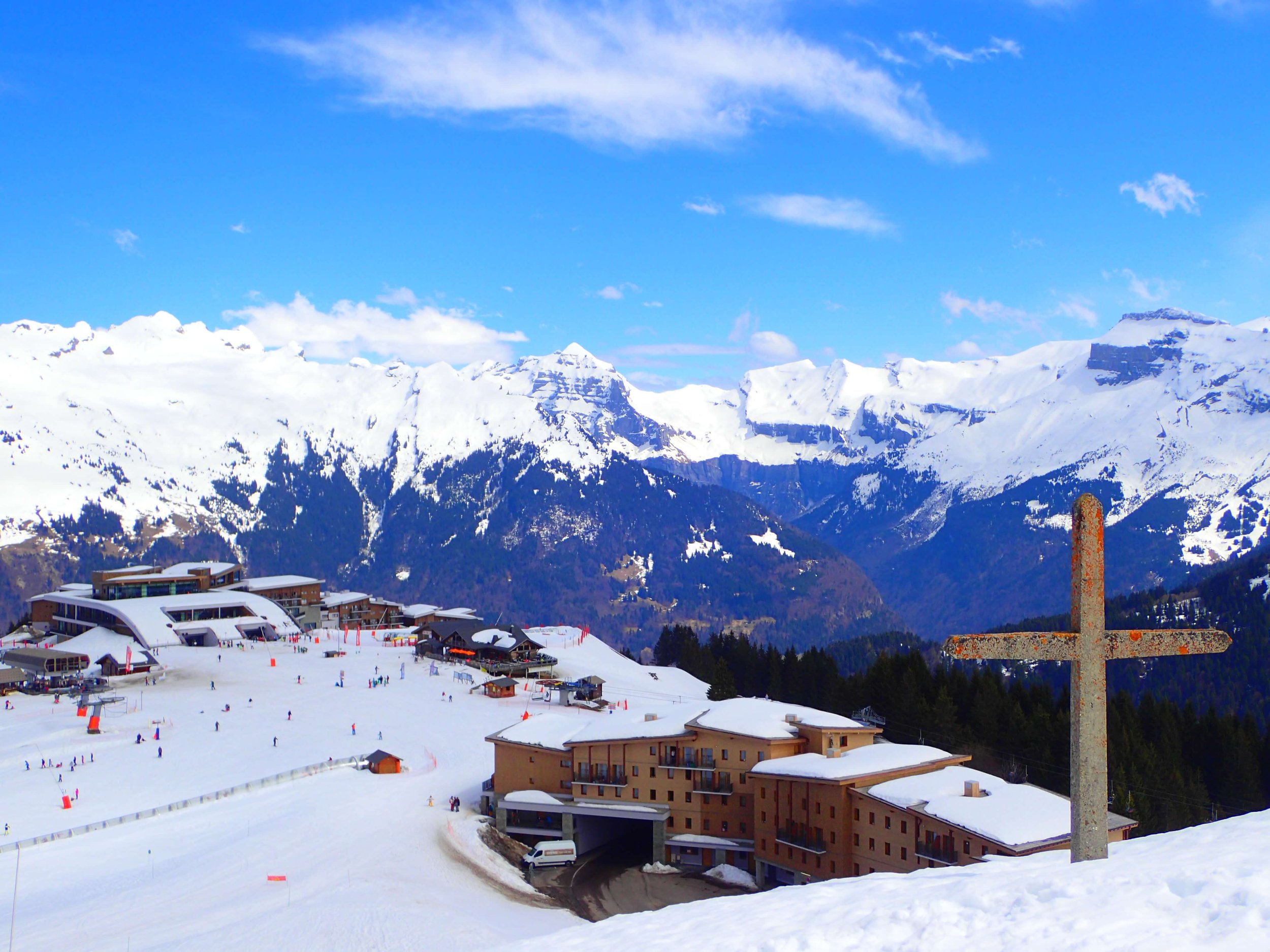
Staying in the village of Samoëns is a great base with plenty of restaurants, bars and shops within easy walking distance of your accommodation. It is worth noting that the village is a short walk or shuttle bus ride from the Grand Massif Express Gondola so you will need to factor this into your morning routine.
If you prefer on-slope accommodation there are several places to stay at Samoëns 1600 although you will miss out on the village vibe. Samoëns 1600 is also the base for a large Club Med hotel with all-inclusive facilities including a ski school. This would make a good base for families heading to the Grand Massif.
SAMOËNS LIFT PASS
Lift passes in Samoëns represent exceptional value. If you think you will ski more than one week in a season then consider getting the Grand Massif season pass, if purchased online before 30th November you save 50% meaning a whole season of skiing for €552. You can even add summer access so you have access to all the summer hiking and mountain biking.
If you are only visiting for one week then you can see all the options for lift passes here. I would always recommend getting the Grand Massif pass rather than the local area pass as it represents better value.
SAMOËNS PROS
Samoëns has direct access to the rest of the Grand Massif from the Chariande Express.
There is a brilliant beginner’s area in Samoëns that makes it the perfect base for never-evers.
Samoëns has a good mix of terrain in the local area making it a great base for mixed ability groups.
Aigle Noir black run is genuinely intense and for able skiers and snowboarders can represent a fantastic challenge.
SAMOËNS CONS
Crowding in Samoëns has become a problem during peak weeks since the closure of the Chariande 2 chairlift.
If you are staying in the village you will need to take a shuttle bus to the Grand Massif Express. Because of the bus timetable, it is hard to get to the GME before there is a queue during peak weeks.
Restaurants in the Samoëns ski area seem to charge more than in other Grand Massif resorts.
SAMOËNS GALLERY
NEARBY SKI RESORTS
FINAL THOUGHTS
Samoëns has been one of my favourite ski areas in France for years, I love it for the traditional village and the access it has to the rest of the Grand Massif. However, since the Chariande 2 lift has been out of action, Samoëns has had a problem, crowding during peak weeks. If you are visiting Samoëns outside of the main holiday weeks, I guarantee you will have a fantastic time! During peak periods, you may suffer from morning queues at the Grand Massif Express and Chariande Express chairlifts.
DISCOVER SAMOËNS
www.samoens.com
AROUND THE GRAND MASSIF
Revelstoke Mountain Resort Guide
Revelstoke has the largest vertical descent in North America and if that wasn’t enough to catch your intrigue it also has some of the best terrain. The powder-rich ski resort is fairly young compared to many of the well-known Canadian ski areas yet Revelstoke is already making a name for itself. Opened in December 2007 and set amongst the Selkirk Mountains visitors to Revelstoke Mountain Resort can expect copious amounts of fluffy Selkirk powder and some epic terrain.
Photo @Takahiro
REVELSTOKE SKI AREA
With 75 trails at Revelstoke Mountain Resort, you could be forgiven for thinking Revy is a medium-sized ski area… but Revy is huge. With the largest vertical drop in North America and over 3000 acres of skiable terrain Revelstoke has plenty to offer visitors.
To access the ski area at Revelstoke you will need to take the Revelation gondola which has two stops. The mid-station is fairly low and serves the lower mountain which consists of some mellow green and blue terrain. Continuing past the mid-station the Revelation gondola continues to the Mackenzie Outpost at 1690m where skiers can head to the short Stellar chair, Ripper, or the famous Stoke chair.
Ripper chair mainly accesses green and blue trails however black Denver Dollars is in this area and runs directly beneath the chair. From the Ripper chair, there is also plenty of Revelstoke’s famous glades skiing to be found with; Powder Monkey Glades, Back 40 Glades and Glades of Glory all in this area. If you say one thing about Revelstoke they’ve got their trail names perfect!
The real interest at Revelstoke is found off the Stoke chair. The Stoke chair provides the closest access to the North Bowl and South Bowl and has some spicy black trails nearby, think Jalapeno and Hot Sauce.
REVELSTOKE LIFTS
Revelstokes main lift is the Revelation gondola. The Revelation gondola runs from the resort base area to the Mackenzie Outpost. The Revelation gondola is a two-part lift that skiers will need to depart and re-enter at the mid-station. Above the upper station of the Revelation gondola, there are three further lifts; Ripper, Stellar and Stoke. These chairs access the upper mountain with Stoke accessing the famous North and South Bowls.
REVELSTOKE LOCAL
Friend of the channel Matt, better known for his Youtube channel BRAMSKI, has been a Revelstoke local for the last couple of seasons. Because of Matt’s extensive local knowledge, I’ve enlisted his help to ensure you get the best information on Revy. If you find the information Matt provides in this section useful then why not hit this link and subscribe?
REVELSTOKE FIRST IMPRESSIONS
MATT WHAT WERE YOUR FIRST IMPRESSIONS OF REVELSTOKE?
I first noticed the gentle rumble of the trains passing through. But surprisingly it didn’t keep me up at night, it rocked me to sleep! Being from the UK, the street signs took some getting used to. It's all just numbers by North, South, East and West. All the shops, bars and restaurants are on two streets and roughly a 5 minute walk to get to. Very few of the tourist workers had arrived yet so it was very quiet, but the locals were super friendly.
There were still two months before the resort opened for skiing but taking the 10-minute drive from town was worth it. I was curious to see only one gondola at the base, a big hotel, two restaurants and some very nice private lodges (or chalets). You cannot see the top of the mountain, so your imagination runs wild on what it is actually like up there. Immediately I was trying to picture the snow falling and carving my first turns. Opposite the resort, the scenery of the Columbia River and Monashee Mountain Range is breathtaking.
REVY IS WELL-KNOWN AS AN EXPERT RESORT, BUT WHAT DOES REVELSTOKE OFFER FOR BEGINNERS?
It is true that 45% of the resort terrain is suited towards advanced skiers. But there is an entire area of the mountain designated for beginner riders. The Stellar Chairlift serves its own zone making it perfect for those learning to ski. Any traffic uphill has to go around the area.
WHAT DOES REVELSTOKE OFFER FOR INTERMEDIATES?
If you like long, rolling blues then Revelstoke has tonnes of them. I love the deep powder the resort offers but I can’t help myself when I see fresh corduroy on a blue groomer, (aka piste for the European readers). A personal favourite is “Hot Sauce” and if you ever get the opportunity to experience it on the first tracks program, it's an unforgettable experience. It's worth mentioning some of the intermediate runs start off as blacks due to the steepness at the top of the mountain before changing to blues as they stretch out. Snow Rodeo is another recommendation, and it's exactly like it sounds.
WHAT IS THE BEST ADVANCED TERRAIN AT REVELSTOKE?
I’ve already mentioned the steepness. The resort is also renowned for its high-quality snow and there’s lots of it. 10.5 metres of snow falls on average in winter here. To put that in perspective, a high-altitude resort in Europe might get 3.5m in a good year. The ‘Champagne Pow’ pulls many expert skiers in from across the world. Riders have four different powder bowls to choose from, divided by chutes and endless glades. But that's just for starters.
REVY IS FAMOUS FOR ITS GLADES SO WHERE IS THE BEST PLACE TO SKI DURING A SNOWSTORM IN REVELSTOKE?
It depends on which way the wind is blowing during the storm and if ski patrol has opened the terrain. Safety is a big priority at the resort and avalanches do happen. If it's the ‘perfect storm’ then head to North or South Bowl for the magic.
WHERE IS THE FIRST PLACE YOU HEAD ON A REVELSTOKE POWDER DAY?
That’s a secret Simon! But it really does vary depending on the conditions. Tally-Ho Glades is a personal favourite for a morning warm-up in the trees.
When the legs are pumping, I love a hike to the Sub-Peak before dropping down into South Bowl.
DOES REVELSTOKE HAVE ANY FREESTYLE TERRAIN?
The main terrain park features medium to large jumps with rails and boxes. If you are looking for something more gentle the ‘Gnome Zone’ next door has small-medium jumps with rails and boxes too. I don’t venture in the parks often, but the Gnome Zone can be fun skiing in fresh powder.
REVELSTOKE SNOW HISTORY
As mentioned earlier Revelstoke gets an average of 10.5m of snow during a winter. This makes Revy an exceptional destination to head for powder turns!
Photo @BRAMSKI Youtube
REVELSTOKE SEASON DATES
As with most Northern Hemisphere ski resorts, Revelstoke is open for skiing between December and April with exact dates for each season depending on conditions. For the latest hours of operation at Revelstoke Ski Resort check this link.
REVELSTOKE PISTE MAP
Revelstoke Piste Map
REVELSTOKE PROS
A young and active community in an isolated town.
The locals are very passionate, getting ‘Revelstuck’ is an actual thing.
The resort is a relatively new resort, only opening in 2007, and has huge growth potential.
It’s an all year round tourist destination.
REVELSTOKE CONS
Housing, of all kinds, is the biggest challenge facing the town and many others like it. I don’t have the answers but would always recommend people book or move well in advance for the best options.
REVELSTOKE GALLERY
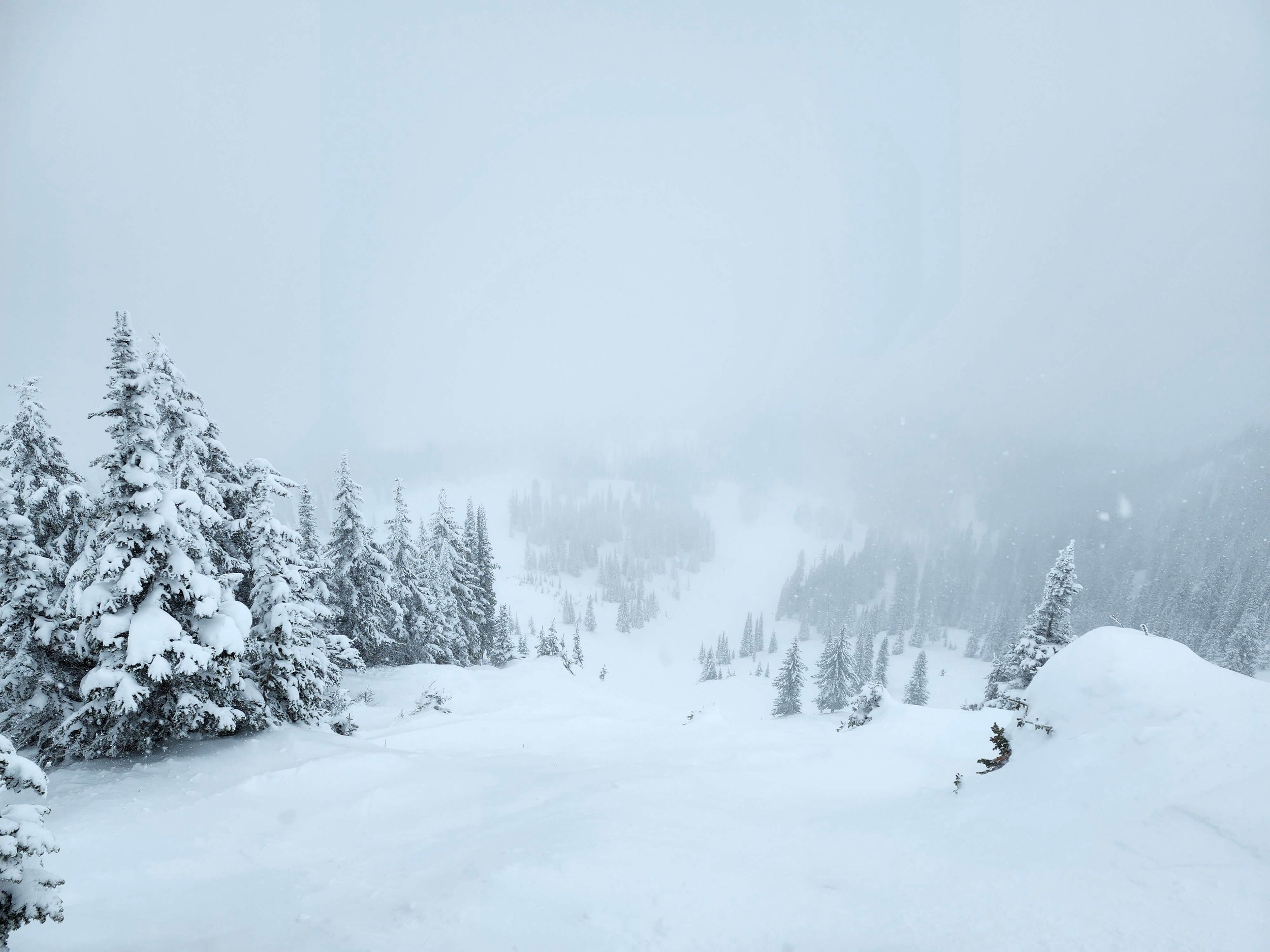

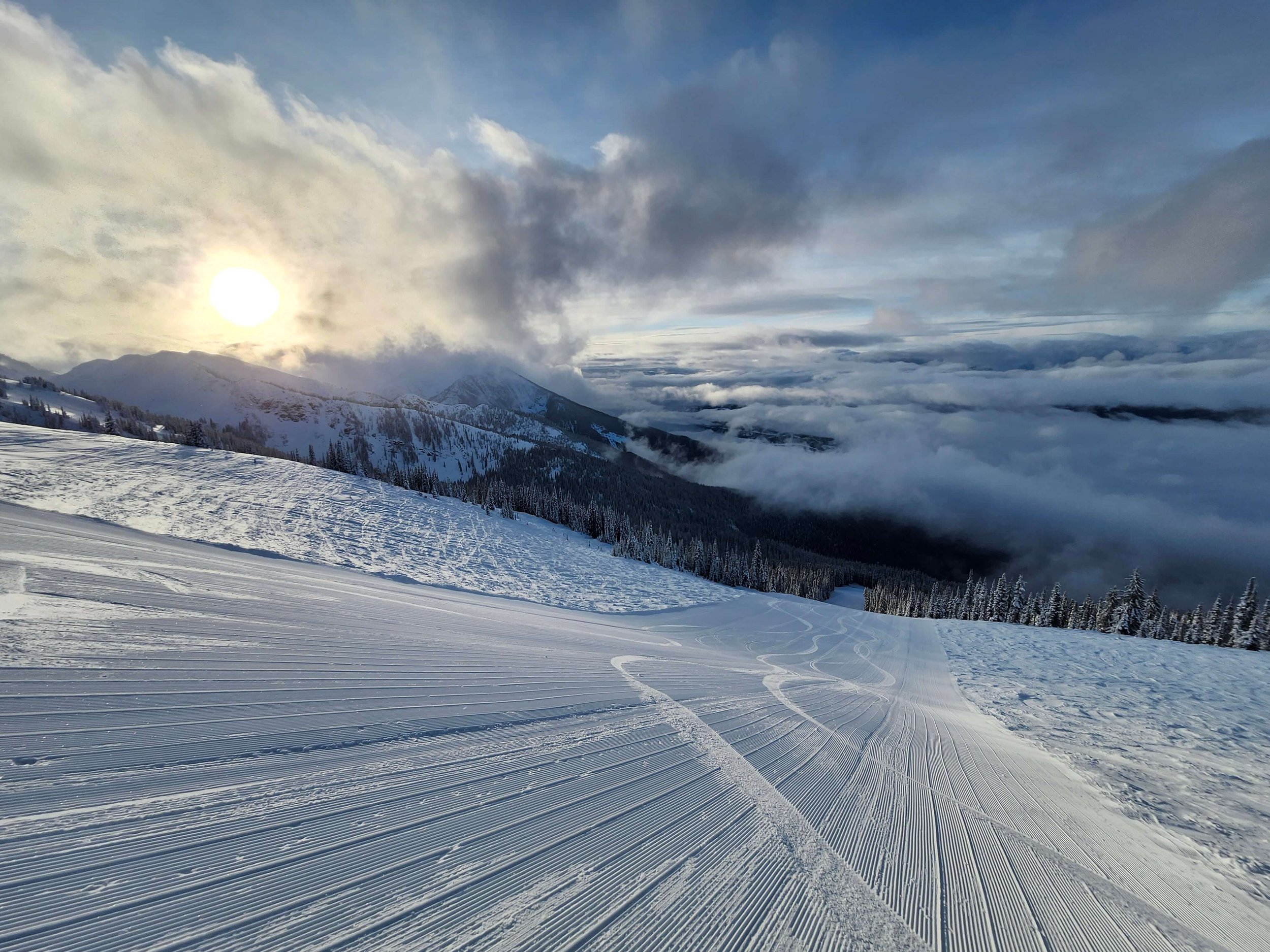
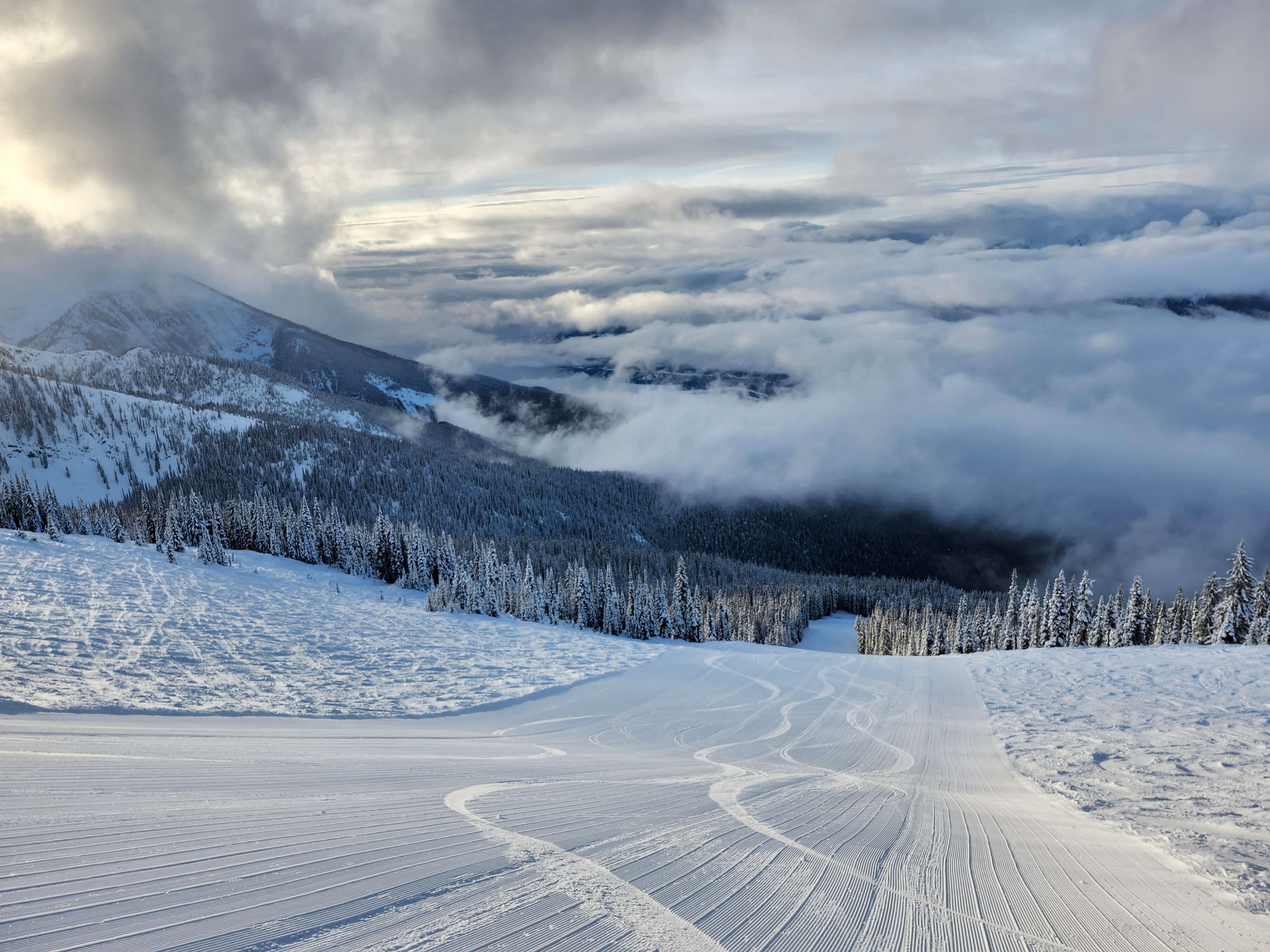

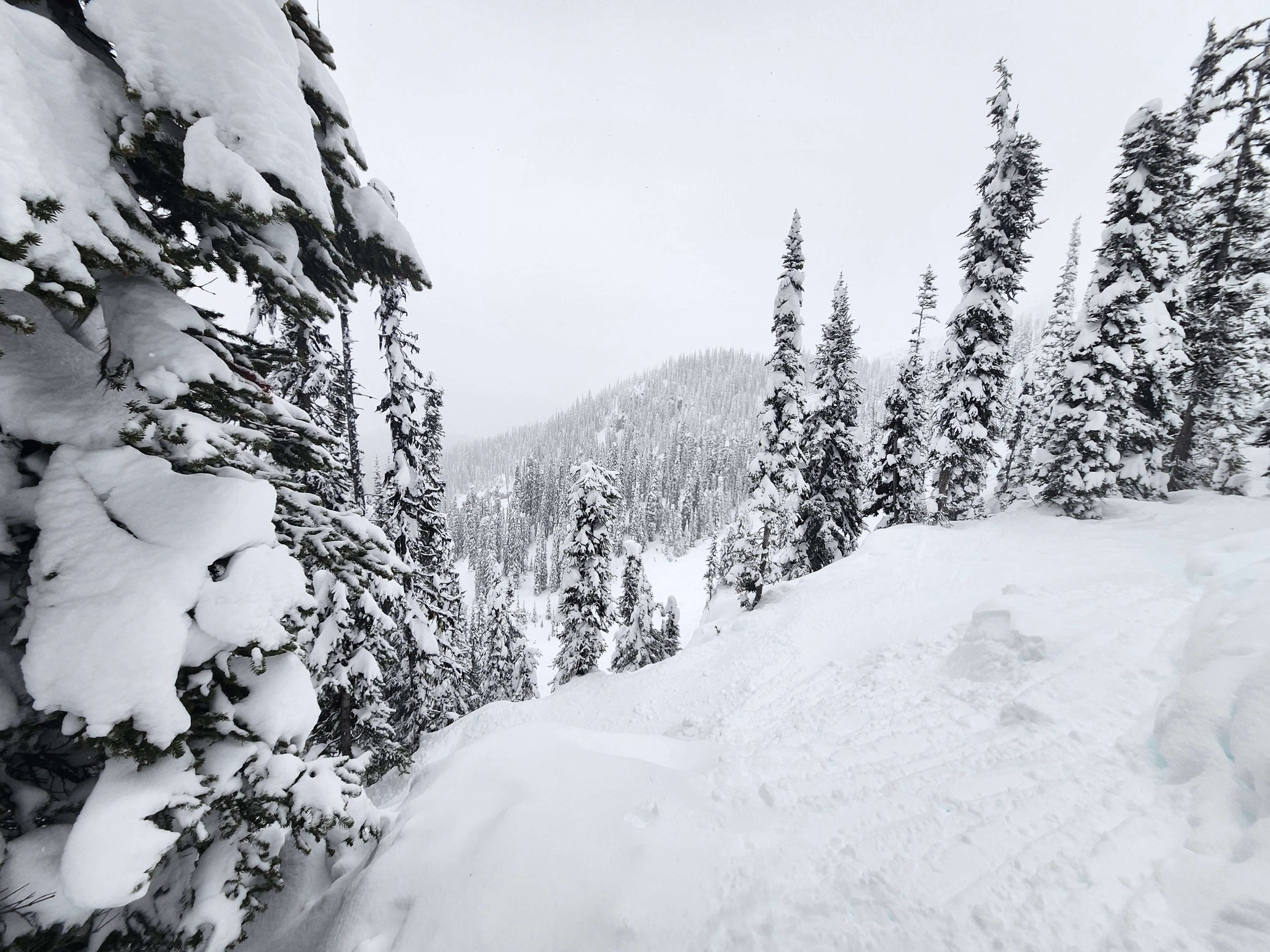
REVELSTOKE LIFT PASS
For the latest Revelstoke lift pass prices check here however at the time of posting a 6-day adult pass will set you back 884CAD with a 1-day pass at 179CAD. Revelstoke Ski Resort is also included as part of the IKON Pass with 7 days of access available for full IKON Pass holders.
GETTING TO REVELSTOKE
The closest airport to Revelstoke is (YLW) Kelowna International Airport which is a large hub for flights into BC with daily flights from the major cities across Canada. Kelowna is still 2.5 hours drive from Revelstoke so you will need to rent a car or utilise the Revelstoke Transfers service.
If you are staying in downtown Revelstoke and do not have access to a car, you can utilise the local Resort Shuttle which cost 2CAD for each ride. The Resort Shuttle runs daily between downtown and Revelstoke Mountain Resort.
MATT’S FINAL THOUGHTS
Despite Revelstoke being the hottest commodity on the ski circuit, it is the only ski town where I have felt there was an opportunity to begin laying down routes. Perhaps that was due to the two-year work holiday visa, I don’t know. The word ‘community’ gets used a lot in town, that’s because it's what makes Revelstoke so special. Everyone who lives in Revelstoke came from somewhere else and is trying to make a go of it long-term. Work, housing and food costs are all huge challenges to the ‘Canadian Dream’, and yet Revelstokians still find the time to contribute through projects, performances and activities.
Bansko Ski Resort Guide
Bansko holds an international reputation that stakes a claim to be Bulgaria’s premier ski resort. Offering something different to rival Borovets, Bansko is split distinctly into two areas; the modern village and the UNESCO heritage site of Old Town. In recent times Bansko has seen investment and improvement in facilities on and off the ski hill that makes it a worthwhile ski destination on a budget. Skiing and snowboarding in Bulgaria are underrated and great value compared to large-scale European resorts. This ski resort guide will cover everything you need from the Bansko piste map to the best time of year to visit Bansko, let’s drop in.
BANSKO FIRST IMPRESSIONS
Being my second trip to Bulgaria to snowboard I had some prior expectations for my trip to Bansko. Bulgaria is known for being a cheap ski holiday destination but that often goes in hand with the attitude that the experience cant be good. That's just not the case, with Bansko offering enough terrain to keep beginners and intermediates occupied without breaking the bank. Going to Bansko as an experienced snowboarder I was worried that there might not be enough challenge to keep me interested. The FIS course was certainly fun and there was some really nice red graded trails.
BANSKO SKI AREA
Bansko ski area has a total of 48km of pistes making it a decent size for a weeks ski holiday. Around 10km from the base of the gondola and the town you will have to endure a 30-minute gondola ride to reach the slopes at Bundarishka. Installed in 2003, the gondola still feels dated and ambles it’s way up to 1635m. At the top of the gondola, you will find some restaurants a beginners area and lifts to whisk you around the rest of the resort. Fortunately, the chairs run faster than the gondola so you should be able to get your laps in.
The more confident will want to head towards Todorka and Banderitza chairs. These lifts will lead you to some brilliant red graded pistes. Head here first thing in the morning to make the most of the grooming. The Tomba is the only notable black piste in Bansko. If you are looking to venture off-piste you may be disappointed. There isn’t much within the confines of the resort and you may wish to book a ski-touring excursion. However, it is not all bad news. Bansko beginner reputation tends to scare away interested freeriders so when the conditions are good you can have it all to yourself.
Intermediates skiers and snowboarders will appreciate the Bansko terrain the most. There are plenty of interesting blue runs that will fill you with confidence to try the reds. Wide pistes are a theme at Bansko and make cruising about really fun. The highlight has to be the long 16km piste from Todorka Peak to the base area.
Beginner terrain makes up about 40% of the skiable runs in Bansko. This makes Bansko the perfect place for beginner skiers and snowboarders. The local ski schools in Bansko are excellent and offer more affordable packages then French or Swiss ski resorts. Learning to ski or snowboard in Bulgaria is a good way to gain confidence without breaking the bank.
The Resort
Bansko town offers a large town with a choice of accommodations. Choose from large spa hotels or self-servicing apartments. Bansko hotels are good value with half-board options if you want an easy holiday. The resort is known for its apres-ski with Bansko nightlife attracting the stag/hen crowds. It is worth keeping this in mind as the parties can last into the early hours. Luckily if that isn’t your thing Bansko has plenty of other activities to keep you occupied. The resort is also home to a number of decent restaurants where eating out will not cost a premium.
The Old Town
Offering a different pace the cobbled streets of Bansko Old Town seem a world away from the fluorescent streets and bars surrounding the ski centre. A UNESCO World Heritage site, Bansko’s Old Town has a special feel. Its Bulgarian Renaissance houses that line the backstreets offer a charm not found elsewhere in Bulgaria. The Holy Trinity Church is exquisite in design and noticeable by its tall bell tower is a symbol of Bansko’s history.
The Bansko ski map below gives a good overview of the resort. The highlight has to be the 16km blue run from Todorka Peak back to the base of the gondola. This is one of the longest runs I have snowboarded and it is such a good way to end the day. Bansko slopes cover 48km.
Bansko Ski Resort Piste Map
SEASON DATES
Snow cover in Bansko is good with snow from December until April. The upper slopes generally stay in a decent condition throughout the season, however, if help from snow-making is required, Bansko has those facilities. The best time to ski in Bansko is January through March where the conditions are the most stable.
HOW MUCH IS A LIFT PASS IN BANSKO?
Further discounts are available on Bansko lift tickets with family passes available at discount. To check the latest pass prices click here
Below are my ratings for Bansko ski resort. All categories are scored out of five with higher scores being better. The only exception is crowds, a higher score in this category means the resort is busier. These scores are based on my experiences in the resort and I’d love to hear your views and experiences in the comments.
TRAVEL TO BANSKO
Where is Bansko
Bansko ski area is located in the Pirin mountain range around 160km from Bulgaria’s capital city Sofia. The transfer to Bansko is around 2 hours.
Getting To Bansko
From the UK low-cost airlines fly fairly regularly into Sofia (don’t get done by baggage fees). Flights to Sofia are regular and affordable from UK airports. A Sofia to Bansko ski resort airport transfer is 2hrs. Most people book their Bulgaria ski trip through a travel company that will be on hand to organise your transfer.
Self-Drive
If you do not have an organised transfer then self-drive is possible with hire cars available in the airport arrivals area. Car rental is easy but the journey can be more stressful. Fair to say in Bulgaria the overtaking can be hairy at times so if you are wanting ease… take a transfer.
Taxi
Taxi or private hire is also available from Sofia airport but be sure to pre-arrange this with an agreed price. The is a Bansko App that allows you to book taxi transfers in advance. The earlier you book the better the price you will get. Private transfers will cost around €120 for the round trip.
Public Bus
The most affordable way to access Bansko is on the public bus service from Sofia. A ticket will cost you 15BGN and you have two departure points. For up-to-date departure times check here
How long is the transfer from Sofia to Bansko?
The transfer time between Sofia International Airport and Bansko is two hours by coach although during busier periods this can take longer.
BANSKO ACCOMMODATION
When considering Bansko accommodation you have plenty of choices but make a smart decision. If you don’t want to be involved in the apres scene search for accommodation that is further away from the gondola base area. It is here that the noise can be loud and may disrupt your sleep. Although staying in a Bansko hotel near the ski lifts gives you prime access to the gondola in the morning.
The Bansko hotels have decent facilities with pools or spas commonplace. Hotel food in Bulgaria is a bit basic but there are plenty of places to eat out if you fancy a change. That being said, a Bansko hotel all-inclusive option makes for a hassle-free holiday. All-inclusive in Bansko can include; food, ski hire and lessons so look for these deals.
If you would prefer the self-catering experience then consider staying in an apartment with many conveniently located for the gondola and restaurants.
BANSKO PROS
Incredible value as a European skiing holiday
The ski school offers a good service at low prices (please tip your instructor)
Bansko has a good apres ski scene
Bansko has 48km of pistes which should suit most people for a weeks holiday
BANSKO CONS
Longer transfer time then Borovets
Bansko ski area has little for advanced skiers or snowboarders
The 30-minute gondola from the base area gets tedius.
Other Activities In Bansko
When booking a ski holiday It is always worth considering what other activities are available locally. Bansko doesn’t disappoint with plenty to do and see should you fancy a day off the snow.
OLD TOWN
Already mentioned but worth repeating, Bansko’s Old Town is a UNESCO World Heritage site. More relaxed than the area around the gondola, head into the Old Town for a stroll around the cobbled streets. Unique houses and interesting matsurev’s (restaurants) will keep you occupied.
SPA DAY
Bulgaria is home to over 800 natural mineral springs so it’s fair to say Bulgarians know a thing or two about relaxing. Taking a trip to the spa in the evening is the perfect way to recover those weary muscles for another day of snowboarding. Most Bansko hotels will be able to arrange for you to receive a spa treatment with the luxury hotels hosting good facilities.
ICE SKATING
Ice skating in Bansko is the perfect winter evening activity. Bansko’s Ice rink is located on Pirin St in the centre of town. Tickets cost 12BGN for a two-hour ticket. Including skate hire.
ESCAPE ROOM
If you are hoping not to leave Bansko just go and hide out in one of the escape rooms. Found at Aparthotel Lucky Bansko and open to hotel guests and visitors there are two escape rooms to try. Prices vary depending on how many people are in your team. There are two themes, the Egypt room and the Hacker room. Let me know if you got out.
FREQUENTLY ASKED QUESTIONS
Is Bansko good for skiing?
This is probably the most common question and comes up because of the low cost holidays to Bansko. Cheap holidays doesn’t mean bad holidays, just a different experience. Honestly, I really enjoyed visiting Bansko. Would I go back.. probably not. That is only because I feel like I have seen it now. I know families who go to Bansko each year and it is more than ideal for their needs. The 48km of pistes is ample terrain for a ski holiday and Bansko town has everything you need.
Which is better Bansko or Borovets?
This is ultimately down to opinion and will vary from person to person. For me, there isn’t too much difference in the actual skiing between Bansko and Borovets. Bansko does have a world cup run which offers more challenge than anything you will find at Borovets, but Borovets offers more terrain. Away from the slopes both Bansko and Borovets have a lively nightlife. I like that you can get away from this in Bansko with a trip to the old town, a Unesco heritage site. In the Old Town, you will find restaurants and bars that are quieter and set in a beautiful setting. The closer you get to the gondola in Bansko it gets more modern and more nightlife oriented. Borovets also has a good nightlife scene, but you will find the hotels in Borovets offer great entertainment for kids with games rooms etc.
Are Bansko Lift Tickets Cheap?
Normally one of the biggest expenses on a ski holiday, lift tickets in Bansko are very reasonable. A 6-day Bansko ski pass will cost £180 for adults. That is £100 cheaper than a 3 Vallees 6-day lift ticket.
Is Bansko Snow Sure?
Bansko’s upper slopes are high enough to maintain good snow coverage throughout the season. The season runs into April with the best conditions found in January and February. Bulgaria and therefore Bansko tends to receive less snow than the Alps but combat this with extensive snowmaking.
How Much is Beer In Bansko?
The standard measure of how expensive a destination is can always be related to the cost of a pint. In Bansko, a beer costs 3BGN or £1.35 for a pint which represents decent value. This price can get even better with many bars offering happy-hours deals as the lifts stop turning. The Happy End is a good place to start and finish your night with live music.
FINAL THOUGHTS
Bansko is a destination that ticks a lot of boxes. The terrain is big enough to keep most people occupied although advanced riders may want more. As a beginner, there is plenty of reason to go to Bansko with a good ski school, cheap ski hire and nice blue terrain to progress onto. Intermediates will probably love Bansko the most with the majority of terrain being blue or red graded runs. Bansko is a ski destination that offers it all but at a fraction of the cost. why not?
DISCOVER BANSKO
Tsugaike Kogen Ski Resort Guide
Tsugaike Kogen ski resort may still be the best-kept secret in the Hakuba Valley. Nicknamed ‘Powder Heaven’ but often overlooked by the more popular Happo One or Hakuba Cortina, Tsugaike Kogen is the place to go for uncontested powder turns.
One of 10 ski resorts on the Hakuba Valley Pass, Tsugaike Kogen ski resort is a Japanese ski resort that retains a local feel. Tsugaike receives an average of 12 metres of snow each winter season which makes it popular with snowboarders in search of fresh turns. Tsugaike Kogen lies along the same shuttle bus route as Hakuba Cortina and with most skiers opting to remain on the bus to its final destination, Tsugaike is the place to go to avoid lift lines on a powder day.
TSUGAIKE KOGEN FIRST IMPRESSIONS
Tsugaike has its own village with a number of hotels, pensions, restaurants and rental shops. As you approach you can tell that you are somewhere with a different feel to Happo. Tsugaike is pretty subdued in terms of its nightlife or apres scene and it’s clear that people are here for one reason and one reason alone… the powder.
Queuing for the bottom gondola at Tsugaike you see powder chasers with wide-waisted skis and fat snowboards adorning swallowtails. This sets the tone for what to expect. Taking the gondola from station one to the mid-station leaves little to get excited about for more advanced skiers and snowboarders. But from the mid-station to the top station, the gondola hovers over the famed DBD tree riding zone. It is from here that you can see why people flock in search of Tsugaike's famous well-spaced trees.
TSUGAIKE SKI AREA
Having spent more days snowboarding at Tsugaike ski resort than any other Hakuba resort on my trip, it’s hard to argue against it being my favourite as I kept going back. The Tsugaike Kogen tree access is the main draw with the DBD offering everything from quite mellow terrain at the top of gate 1 to steeper runs through gates 3, 4 and 5.
The terrain at Tsugaike Kogen is divided into two main zones, upper and lower Tsugaike. The total vertical drop of Tsugaike ski resort is over 900m which is great when considering the size of other local resorts. Tsugaike Kogens highest point is about 1700m.
TSUGAIKE LOWER MOUNTAIN
The lower mountain at Tugaike Kogen includes anything found beneath the mid-station of the gondola. The majority of this terrain is mellow beginner’s terrain with 5 short chairlifts and the gondola accessing beginner’s trails to the base. The lower mountain at Tsugaike Kogen would make an ideal place to learn with the mellow terrain feeling the opposite of intimidating.
TSUGAIKE UPPER MOUNTAIN
There are still entry-level green pistes on the upper mountain and this is one of the reasons why Tsugaike is so popular with beginners. If learners are feeling confident enough to take the gondola to the upper mountain then the winding green course through the forest makes an exciting edition for beginners.
The upper mountain however is mostly home to the intermediate and advanced terrain at Tsugaike Kogen ski resort. The pinnacle of this is the Tsugapow DBD courses. In this area, there are five separate gates that you can take to enter the designated tree-skiing zones. If the snow conditions are good then this area is unrivalled and is one of the best zones I have ever snowboarded in.
In addition to the DBD Tsugaike Kogens upper mountain has a number of red-graded terrain and one black (Horseback Course). The upper mountain is also home to TG Parks, Tsugaikes freestyle terrain. The terrain park at Tsugaike is well worth a visit and has the benefit of running underneath the No.3 Quad Lift.
BEGINNERS TERRAIN AT TSUGAIKE KOGEN
The lower mountain at Tsugaike Kogen is perfect for beginners. All of these runs are wide, mellow slopes that have suitable lift access.
On the upper mountain, there is an interesting green trail that winds its way along a Cat Track trough the Tsugaike trees.
INTERMEDIATE TERRAIN AT TSUGAIKE KOGEN
The upper mountain consists of mainly intermediate terrain. There are a couple of long red-graded pistes with the steeper Champion slope also of note.
ADVANCED TERRAIN AT TSUGAIKE KOGEN
Advanced skiers and snowboarders will love the tree skiing found in the Tsugaike Double Black Diamond gates. To access this area you need to take a course (more info follows in this post).
Also of note is the run Uma no see which follows a narrow ridgeline.
FREESTYLE TERRAIN AT TSUGAIKE KOGEN
Tsugaike Kogen has 2 terrain parks which is fantastic for a Japanese ski resort. The main Tsugaike Park is decent and is one of the longest in the Hakuba Valley. The parks consist of jumps, rails and lots of great side hits and banks.
TSUGAIKE DOUBLE BLACK DIAMOND GATES
To access the Double Black Diamond or DBD you will first need to attend a safety lecture, sign a disclaimer and then collect your armband. The courses run out of Jacky’s kitchen, a diner near the top lift station. It’s best to head to Jacky’s Kitchen early so that you can beat any rush on a powder day.
The DBD course provides you with information about local hazards within the designated tree-riding zone and although many skiers I spoke with found it pointless, I appreciated the extra safety precautions. The courses are run by local skiers who ride at Tsugaike Kogen regularly, their first-hand knowledge was useful.
In the Tsugaike DBD there are five gates. Gate 1 is closest to the chairlift and offers the easiest terrain. In fresh snow plenty of fun can be had in gate 1 without heading into the more challenging areas. The remaining 4 gates access terrain with more hazards such as cliffs. The DBD area is an incredible place on a powder day!
TSUGAIKE KOGEN PISTE MAP
TSUGAIKE KOGEN SKI PASSES
The Hakuba Valley lift pass is valid at Tsugaike Kogen and may represent your best option if you want to explore more than one Hakuba ski resort.
As a beginner, you can purchase a lower mountain lift pass at a discounted rate. This beginner’s lift pass will allow you access to the base area lifts and some very mellow green terrain.
Tsugaike and the Hakuba Valley is also valid on the somewhat controversial Epic Pass from Vail Resorts. Personally, I love the Epic Pass and have made many videos about it in the past.
If you just want to pay as your play then a 1 day lift pass at Tsugaike will cost around 5000 Yen.
LIFTS AT TSUGAIKE KOGEN
The main lift you will use at Tsugaike Kogen is the gondola which links the base area with the top of the resort. The gondola journey takes a while but it is travelling a fair distance in the process. Actually, after the leg-burning tree runs a long rest in the gondola was quite welcoming.
Tsugaike has a further 9 high-speed chairs and some that are much slower… 19 lifts in total service the resort although only the lower mountain is open for night skiing.
SEASON DATES TSUGAIKE KOGEN
Tsugaike Kogen has a long season opening the resort in mid December and remaining open until the beginning of May.
TSUGAIKE KOGEN SNOW RECORD
Tsugaike Kogen is located in Northern Hakuba at the snowiest end of the valley. The resorts in this region get absolutely pounded with snow and Tsugaike Kogen averages 12m of snowfall every winter. This means the top of the resort and tree skiing gets ample amount of snowfall for any powder skier.
VILLAGE AT TSUGAIKE KOGEN
Despite Tsugaike having a quieter village than Happo, it is fair to say that it has been commercialised. You will find a high ropes course on the slopes and fast food restaurants surrounding the mid-gondola station. This isn’t necessarily a bad thing but won’t be to everybody’s taste. A popular stop at the end of a day on snow is the bar near the base gondola station. You will recognise it from its uniquely Japanese foot spa, the perfect way to rejuvenate your feet at the end of a day on snow.
TSUGAIKE KOGEN PROS
Tsugaike Kogen receives an abundance of snow! 12m on average per season.
Tsugaike tree skiing is fantastic and although you have to take a course to enter this isn’t too much hassle.
Despite the combination of a great snow record and incredible tree skiing, Tsugaike is much less crowded than the nearby Hakuba Cortina resort.
Getting to Tsugaike ski resort is really simple using the Hakuba Valley shuttle buses that are provided free with your lift pass.
Tsugaike is great for beginners and provides English instruction through their snow sports school.
Due to transport links, it is easy to ski at Tsugaike and the resorts of Iwatake, Norikura or Cortina on the same day.
TSUGAIKE KOGEN CONS
On-piste skiing at Tsugaike is fairly mellow so may not suit a more able skier or snowboarder
Night skiing at Tsugaike Kogen is available but only accesses the beginner terrain which is quite dull.
Taking the course to enter the DBD area will take up some valuable on snow time and you will need to wear an armband each time you wish to enter the trees.
TRAVEL TO TSUGAIKE KOGEN SKI RESORT
Tsugaike is easily reachable from all main transport hubs in Hakuba with regular shuttle buses running throughout the day. Tsugaike ski resort is further out of Hakuba than some of the other resorts with the journey taking between 20-30 minutes depending on conditions.
The resort of Tsugaike Kogen is located between Iwatake and Norikura ski resorts. This makes it perfectly placed to be able to ski at more than one Hakuba resort on the same day. The resorts are linked by shuttles and this makes navigating the area fairly straightforward.
ACCOMMODATION AT TSUGAIKE
Tsugaike Village is an option for accommodation close to the slopes in Hakuba. Staying in the village would represent a more laid-back option where you can get away from the more western restaurants and bar scene. Be aware that around Tsugaike it is likely that you will encounter less spoken English and not every shop or restaurant will accept credit cards.
Alternatively, you can stay closer to the main hubs and commute to Tsugaike on the days that you would like to ski or snowboard there. I stayed at Nori’s sharehouse, which is a no-frills share home in the Hakuba Village. The location was good and I had no complaints about my stay. The house even had a workstation to tune your gear. There are plenty of other accommodation options in and around Hakuba
TSUGAIGE KOGEN VIDEOS
ACTIVITIES AT TSUGAIKE KOGEN
In addition to skiing and snowboarding at Tsugaike Kogen there are many other ways to stay entertained. The high ropes course at mid-mountain will be popular with families and children, as will the tubing area.
A Japanese ski holiday wouldn’t be complete without a trip to a local Onsen. At Tsugaike there are a coupe of Onsens in the village that you can visit after your day on snow.
NEARBY SKI RESORTS
FINAL THOUGHTS ON TSUGAIKE KOGEN SKI RESORT
Tsugaike featured regularly in my discussions when choosing which resort I wanted to ride at during my trip. I really enjoyed the DBD trees area but sadly on a couple of occasions, this area was closed. For me when the DBD was closed there wasn’t enough to keep me entertained so I would normally take a bus to another resort. When the DBD was open Tsugaike represents one of the best tree skiing zones in the Hakuba Valley.
A Guide To Snowboarding In Japan
Japan quite simply is a snowboarding trip like no other. If the idea of perfect trees, untouched powder and unwinding in an onsen sounds like your dream, well you can live it in Japan! Japan is a mix of the best skiing you are likely to experience and a cultural holiday in a country that is full of surprises. Everything from endless snowfall to the stunning Japanese Alps and a journey on a bullet train make Japan a place every skier and snowboarder should visit.
Skiing and snowboarding in Japan is amongst the best powder skiing in the world. Known worldwide for the copious amounts of snowfall falling between December and March, Japan is the perfect powder ski trip. What makes snowboarding in Japan even better? The trees! In Japan, you will discover glade skiing unlike elsewhere in the world.
Regulars to Japan will speak of the incredible snow conditions with resorts receiving upwards of 10m of snowfall. Some Japanese ski resorts even report DOUBLE that. Regular big dumps of snow are expected during late January and February so these are great months to plan your visit. What’s more, Japanese snow is incredibly light and dry making it perfect for throwing up into those face shots.
Face Shots Hakuba Cortina Trees
Skiing and snowboarding in Japan is split between the North and South islands. Hokkaido on the North Island is where people head in search of major powder stashes. The ski resorts of Niseko and Rusutsu are probably the most popular resorts in the north of Japan with copious amounts of snow falling between January and March. Niseko is very popular with tourists and if you prefer a quiet resort vibe Japan always has some smaller local resorts to explore.
The South Island offers skiing within a few hour’s train ride from Tokyo airport with Hakuba being amongst the most popular. The Hakuba Valley is a combination of ten ski resorts that are all available on the same lift pass. Each resort offers something different, from Happo One (former Olympic hosts), Sanosaka (a small local resort with no crowds) and Tsugaike (some of the best tree skiing). Away from Hakuba, the resorts of Myoko, Shiga Kogen and Nozawa Onsen are gaining popularity.
Japanese ski resorts are not just about powder laps through the trees….there is also a big freestyle scene. Terrain parks in Japan are well thought out with a good range of features. One example is Hakuba 47 which makes the most out of a small space with a full park set-up including; a small, medium and large jump line, a half-pipe and some small rail features. Japanese skiers also love bumps leading to resorts developing purpose-built mogul lines. Norikura has a freestyle moguls course and Goryu has a mogul line down its steep frontside.
After a full day of riding leg-burning powder, you may want to find a way to relax. Luckily the Japanese have just the answer, the onsen. Onsens are an incredibly important part of Japanese culture. An Onsen is a Japanese thermal bath or hot spring that can be found in every region. There are strong rules involved in onsen use that need to be adhered to. Most onsens operate a no swim-suit policy and you will need to wash thoroughly before entering. This can put some people off but you can find private onsens to protect your modesty.
Equally Japanese food is a huge part of the experience. There are plenty of international options for the less adventurous but be sure to try some local dishes as well.
Japan ski holidays can be taken during the months of December through to April. The Japanese ski season is longer in the southerly resorts with Hokkaido receiving its huge snowfall during January to March. The famous Japan powder skiing is made possible by resorts receiving between 10 - 18 metres of snowfall throughout the winter. To put that in perspective, famous European resorts such as Verbier, known for its freeride, receive an average of 6 metres of snow in winter.
Away from the snow, Japan offers plenty of cultural experiences. The numerous temples and historical sites can provide an insight into Japanese culture, whereas trips to visit the snow monkeys are well worth it!
TRAVELLING TO JAPANESE SKI RESORTS
FLYING TO JAPAN
To arrive in Japan you will most likely transit through Tokyo’s Narita International Airport. Depending on whether you will be snowboarding on the North or South Island will determine your next steps.
HONSHU
For international visitors, Honshu may be a more favourable destination. Flying into Tokyo is easy from pretty much all around the world and the transport links are fabulous. Depending on your budget coaches run from Tokyo Narita to most major ski areas or if speed is important the bullet train will get you there faster. There are even options direct from the airport that allow you to send your baggage ahead so you can get the train hassle-free.
HOKKAIDO
Getting to Hokkaido generally means taking a connecting flight from Tokyo. The most popular airport for Hokkaido arrivals is Sapporo New Chitose Airport. New Chitose Airport is the closest to Niseko United which is the most popular of the Hokkaido ski areas. There is the opportunity to transfer to New Chitose Airport from other international airports such as Singapore.
If you would prefer to take a journey to Hokkaido on the famous Japanese rail network then this is also possible. The North and South Islands of Japan are linked via an underground rail tunnel. Taking the train to Hokkaido from Tokyo will be a much longer journey (7-8 hours) but it will be the best way to see Japan.
RESORT REVIEWS
FREQUENTLY ASKED QUESTIONS
Is skiing in Japan expensive?
In general ski holidays are pretty expensive but there are always ways to cut costs. Japan in itself can be considered an expensive country to visit but in terms of skiing, there are certainly ways to cut costs. Currently, skiing in Japan is available on the Epic Pass in Hakuba and Rusustu which will be music to the ears of American readers. Getting five days in both areas will already see Epic Pass holders saving money when using their pass. Lift tickets in Japan are considerably cheaper than some European or American ski resorts. Bearing this in mind it is possible to save on the cost of your Japanese ski trip. My advice, spend less on your accommodation as in Japan you will want to spend as little time there as possible!
What is the best month to ski in Japan?
The best month to snowboard in Japan is probably February if you want to have your best chance of epic powder conditions. Late January is also great with an incredible snow record as well. If you are looking for a bargain consider heading to Japan for spring skiing in April although some resorts will be closed by this time.
Does Japan have good ski resorts?
Simple answer, Yes. Forgetting the epic conditions for a minute, Japan has plenty of great ski resorts with fantastic facilities. You will find base lodges and restaurants, ski rentals and stores that will serve all your needs. There are modern lifts in resorts, although a number of old single or double chairs still remain. Sometimes a slower lift is needed in Japan to help you recover from the last powder lap!
Is skiing in Japan good for beginners?
Japan has plenty of beginner-friendly ski resorts that would be perfect for learning to ski or snowboard. Sanosaka has nice gradients for learners and Happo has a number of popular ski schools. Learning to ski or snowboard in Japan would be pretty interesting with the opportunity to learn on a pow day! Even less reason to be worried about falling over!
What is better Niseko or Hakuba?
Probably the two most popular Japanese ski areas; Niseko and Hakuba offer something different. Hakuba combines skiing and snowboarding across 10 resorts on the same pass making it incredibly diverse. Hakuba has a longer season with a good quality of snowfall although Niseko tends to receive more snow. What is obvious to me is that both ski areas are worth visiting.
Where do you fly to ski in Japan?
Arriving in Japan from international destinations means it is likely you will transit through Narita International Airport in Tokyo. If heading to the North Island there are plenty of international transits that have connecting flights to Sapporo. If staying on the South Island, from Narita you can take the train or bus to reach your final destination.
How cold is skiing in Japan?
Really guys? How is this a most asked question? Skiing in general is going to happen in cold conditions. Dress for it and you will be fine. That being said Hakuba averages temperatures of zero to minus five degrees throughout the winter! That’s perfect for Japan’s quality of snow! The cold is a blessing!
What is the largest ski resort in Japan?
Ski resorts in Japan tend to be smaller than European ski resorts. That’s a huge benefit of ski areas like Hakuba which have a number of resorts combined on the same lift pass. The largest stand-alone resort is Shigakogen Mountain Resort which has over 80km of slopes.
WHY SKI OR SNOWBOARD IN THE JAPAN
Planning a ski or snowboard trip to Japan is a no-brainer. The quality of the snow conditions in Japan tends to be better than anywhere else in the world. If powder is your thing, just book now. Japan also offers a decent variety of skiing experiences from the well-developed modern ski areas of Niseko and Hakuba to the more locally orientated yet-to-be-discovered ski areas.
Away from the snow, Japan could just open your mind to a whole different way of life. The culture in Japan varies dramatically from the one back home and learning more about Japan was certainly worth it. Taking time away from the snow to discover Tokyo, ride a bullet train or participate in Onsen will be well worth the effort.
JAPAN SKI RESORT SNOW RECORD
More snow than anywhere else on the planet on a more regular basis. That is a pretty fair assessment of the snow record at Japanese ski resorts. Japan tends to receive between 10m-18m of snowfall throughout the winter. The North Island resorts will reach the upper end of that number whereas Hakuba Cortina and Tsugaike tend to receive around 12m on average.
MULTI RESORT PASSES
Both the main American multi-resort passes include ski days in Japan. Epic Pass allows 5 days of skiing in Hakuba and 5 days at Rusustu. The IKON pass includes 7 days of skiing at Niseko. Even Indy Pass is getting in on the act by including skiing in Japan!
Within Japan, there are a number of multi-resort passes that you should consider if you are planning a Japanese ski trip.
The Hakuba Valley is home to 10 ski resorts which are all included on the same pass. Olympic host Happo One is probably the biggest name on this pass, but don’t miss out on Tsugaike and Cortina for the tree skiing.
Niseko has its own 4 mountain pass called Niseko United. The interconnected resorts of; Niseko Annupuri, Niseko Village, Grand Hirafu and Hanazono are all included on this pass making it perfect for those heading to these world-renowned ski areas.
The Kamori ‘K Winter’ Pass includes some of the best of the best ski resorts in Japan. Rusustu is a popular destination on the Kamori pass with Sahoro and Sapporo also worth noting.
THE JAPANESE SKI SEASON
The ski season in Japan runs between December and April with the South Island having a longer ski season than the North Island.
JAPAN GALLERY
JAPAN VIDEOS
COST OF A JAPANESE SNOWBOARD TRIP
The cost of skiing in Japan can be as cheap or as expensive as you intend to make it. Japan is home to some premium resorts with lavish hotels but it doesn’t have to work out that way. It is also possible to ski in Japan on a budget. Let’s take a dive into the costs of skiing and snowboarding in Japan.
LIFT TICKETS
Generally, lift tickets in Japan are available as daily tickets. There is also the availability for half or even hourly lift tickets! Day passes at Japanese ski resorts normally cost around 4000 yen (£30). Weirdly, around Hakuba, it was possible to find discounted lift tickets at convenience stores. So keep an eye out for coupons.
A multi-resort pass like the Hakuba Valley pass could also cut down costs, as this also includes the cost of all inter-resort shuttles.
ACCOMMODATION
Japan has plenty of premium hotels and lodges surrounding their ski areas and who could resist staying at the Hakuba Green Plaza Hotel with its Tudor styling and slope-side location? Well for £1200 for 4 nights maybe a few might resist.
Don’t fret as there are plenty of budget-friendly options like the Guest House I stayed in during my time in Hakuba.
FLIGHTS
A major stumbling block for many when it comes to planning a Japanese ski trip will be the cost of flights. Direct flights from London into Tokyo Narita will set you back around £800. When you consider that flights from London to Geneva can be found for less than £100 that is sure to put some people off.
JAPAN EXCURSIONS
FEATURED POSTS
Les Carroz Ski Resort Guide | Grand Massif
Les Carroz may be my favourite of the Grand Massif ski resorts. The resort is well-located within France’s fourth-largest ski area ensuring from Les Carroz you can explore everything the Grand Massif has to offer. The local Les Carroz ski area offers everything from pristine pistes, to fantastic off-piste and the best terrain park in the Grand Massif. Les Carroz is a great base for any Grand Massif ski holiday.
Looking over Les Carroz from the Tete de Saix
Located in the heart of the Grand Massif ski area in the French Alps, Les Carroz village is a charming alpine destination that offers a perfect blend of traditional Savoyard architecture and modern amenities. Surrounded by stunning mountain scenery, Les Carroz is the perfect base for skiers and snowboarders wanting to make the most of their trip to the Grand Massif. From world-class skiing and snowboarding in the winter to hiking, mountain biking, and paragliding in the summer, Les Carroz delivers for everyone.
LES CARROZ FIRST IMPRESSIONS
Arriving at Les Carroz village had a different feel to many French ski resort villages. The traditional town square with restaurants and bars was welcoming and the access to the ski area was easy. Depending on your base in the village, a free navette shuttle will take you to the base of the Kedeuze gondola. When on the slopes my overriding first impression was how good the groomed pistes were with plenty of blue and red runs to keep the majority happy.
LES CARROZ SKI AREA
Les Carroz ski area is part of the Grand Massif ski area in the French Alps, offering a variety of terrain for skiers of all levels. Les Carroz offers access to 265km of pistes inclusive of the wider Grand Massif resorts of Samoëns, Flaine and Morillon.. Locally, Les Carroz offers 37 km of slopes, including some of the best red and blue-graded trails across the entire Grand Massif.
It’s fair to say that Les Carroz is well-suited to intermediates with 15 blues and 7 reds on the piste map. This matches nicely with the rest of the Grand Massif which caters well for skiers and snowboarders who are looking for nicely groomed pistes, however, Les Carroz is much more than this. There are 4 black trails which offer substantial challenge and the off-piste and tree runs here are incredible. Don’t believe me? Well check the videos here and here which were both filmed in Les Carroz. Beginners will find a Magic Carpet at the base of the Kedeuze gondola with a mellow learners slope. Additionally, the Coin Coin area at the top of the Kedeuze gondola has another Magic Carpet and drag lift with an ideal learners slope.
BEGINNERS TERRAIN LES CARROZ
Beginners heading to Les Carroz will not be disappointed. Never evers have two dedicated learner areas within Les Carroz at the bottom and top of the Kedeauze gondola. As beginners find their legs, the Plein Soleil piste is perfect for testing your skills on its rolling terrain. As confidence grows, beginners should consider heading to nearby Morillon to take the fantastic Marvel ski run.
INTERMEDIATES TERRAIN LES CARROZ
Les Carroz delivers for intermediates with the majority of its terrain red or blue-graded. Intermediates visiting Les Carroz will have fun exploring under the Gron and Les Molliets chairs where there is a good mix of trails including the the short Rhodos red (my favourite) and the long Marmottes blue (long but busy).
Intermediates who want to test themselves should try the Chamois red, near the Tete de Saix, which has a prolonged steep section and leads to the Oasis Snowpark. Timalets is another favourite red in Les Carroz but can suffer later in the season as it is closer to the base area.
Intermediate skiers and snowboarders should certainly make the most of the effective links between Les Carroz and Samoëns and Morillon where there are further exceptional red and blue runs.
ADVANCED TERRAIN FLAINE
With only four black trails on the piste map it is fair to assume that some advanced skiers may not get too excited about a visit to Les Carroz. This would be unfair as there is certainly challenge to be found within Les Carroz and the wider Grand Massif ski areas.
Corbalanche black is popular with many as soon as there is fresh snowfall, possibly because you can view skiers and snowboarders enjoying their pow turns from the Tete de Saix lift. This run is great after fresh snow but equally, it offers another challenge when the powder has turned to large moguls. The area close to Cobalanche is also home to some fantastic tree-skiing and those who know head here when the snow falls.
Felire Run Les Carroz
Elsewhere the Felire black trail is tucked away and is easily missed, which can make it a great place to test yourself away from the crowds. Advanced skiers should venture to Samoëns and Flaine to test themselves on Aigle Noir and Diamont Noir respectively.
WHERE TO SKI IN LES CARROZ DURING A STORM
Snowboarding in a whiteout sucks, so it is important to find your context. The best place to head in a storm is always the trees; luckily, Les Carroz has a few options. Able skiers and snowboarders can enjoy the trees of Corbalanche but for a mellower experience, Plein Soleil is lined with trees. For the best experience, consider heading to Morillon which has fantastic tree-lined pistes that are a great refuge in whiteout conditions.
ACCESSING THE GRAND MASSIF
From Les Carroz it is simple to head to the neighbouring Grand Massif resorts. Taking the Tete de Saix chair from Les Carroz you will find yourself at the crossroads of the Grand Massif. From the Tete de Saix it is possible to ski directly into Samoëns and Morillon without taking additional chairs. To access Flaine, head from the Tete de Saix to the Vernant chair which will take you over to Flaine.
FREESTYLE TERRAIN LES CARROZ
Freestyle in Les Carroz is pretty decent. Les Carroz is home to the Oasis Snowpark which offers a full spread of freestyle features with everything from airbag jumps, boarder cross tracks and jump and rail lines. The Oasis Terrain Park is accessible from the Tete de Saix or via its own drag lift that runs along the side of the park.
The Oasis Terrain Park has everything from tiny ride-on features up to larger jumps. To learn more about Freestyle in Les Carroz, watch the video above where you can skip to 3:50 to see the Oasis Snowpark.
LES CARROZ SNOW HISTORY
Les Carroz has a good snow record but you need to consider that the lower slopes will vary in conditions greatly to the upper slopes in early or late season. The Kedeuze gondola runs even when Les Carroz’s lower slopes are lacking which means you can still access some great skiing in the resort. I have experienced some incredible conditions snowboarding in Les Carroz, but sadly I have also experienced the worst. Luckily when you are in Les Carroz, you have the option of riding in neighbouring Flaine when the conditions suck where you will generally find more consistent snow conditions.
LES CARROZ LIFTS
The main entry point to the Les Carroz ski area for most will be the Kedeuze gondola. Kedeuze leave the village and drops skiers and snowboarders at 1800m. Elsewhere in Les Carroz, you will find Les Molliets, Tete de Saix Express, Gron, and Plein Soleil serving skiers. These four lifts vary greatly with the Tete de Saix being a modern six-seater that whisks skiers up to the mountain, whereas Gron is a slower 4 seater than gently ambles its way.
SEASON DATES
The Grand Massif is open between December and April with Flaine having the longest season. Les Carroz closes a week or so earlier than Flaine (conditions dependent).
LES CARROZ PISTE MAP
To see the interactive piste map click here
GETTING TO LES CARROZ
Getting to the villages of the Grand Massif is simple with lots of Transfer companies available from Geneva Airport. The short transfer time means that self-drive is also fairly straightforward forward however my personal thoughts are that you do not need a car when in the resort so transfer makes the most sense.
TRANSFER COMPANIES
Most of my transfers to Flaine have been with GO MASSIF. Go Massif have been fantastic for shared transfers between Geneva and the Grand Massif and having used their service multiple times I would recommend them.
Alpin Bus are a company that I have used for private transfers between Geneva Airport and the Grand Massif. The communication throughout has been fantastic and service came in cheaper than Go Massif for the private option.
SELF-DRIVE
If you would prefer to self-drive there are numerous counters available at Geneva Airport where car-rental is possible. From Geneva, you can expect to drive for 1 hour depending on the conditions.
ACCOMMODATION
Les Carroz Village offers many different styles of accommodation with a range of hotels and self-catering apartments. The village is a great base for families and even those without young children due to the many amenities on offer. I have always enjoyed a self-catering option when staying in Les Carroz as there are many nice restaurants to enjoy in the evening.
LES CARROZ LIFT PASS
Lift passes in Les Carroz represent exceptional value. If you think you will ski more than one week in a season then consider getting the Grand Massif season pass, if purchased online before 30th November you save 50% meaning a whole season of skiing for €552. You can even add summer access so you have access to all the summer hiking and mountain biking.
If you are only visiting for one week then you can see all the options for lift passes here. I would always recommend getting the Grand Massif pass rather than the local area pass as it represents better value.
LES CARROZ PROS
Les Carroz is central to the Grand Massif ski area meaning it is very easy to access the whole of the wider ski area from Les Carroz.
Les Carroz has several modern lifts including the Tete de Saix and Kedeuze.
Les Carroz ski resort offers a good variety of terrain to suit all-abilities
The beginner’s ski areas in Les Carroz are great with Magic Carpets and gentle drag lifts.
The tree-skiing in Les Carroz is fun with further challenges found near Corbalanche.
LES CARROZ CONS
The lower slopes in Les Carroz can have dodgy snow conditions in early and late season.
Les Carroz doesn’t offer ski in ski out accommodation like Flaine, Morillon Les Esserts and Samoëns 1600.
Locally Les Carroz is the smallest of the Grand Massif ski areas.
LES CARROZ VIDEOS
NEARBY SKI RESORTS
FINAL THOUGHTS
Les Carroz may be my favourite of the Grand Massif villages. I love its central location to the other ski areas and how easy it is to explore the wider Grand Massif from here. But Les Carroz itself is home to some of my favourites… Rhodos red is one of my favourites across all the resorts despite its short length, The Oasis Terrain Park has more going for it than freestyle in Flaine, and the off-piste near Corbalanche is among my favourite in the whole Grand Massif. Les Carroz and it’s village have lots to offer and I would head back without hesitation.
Flaine Ski Resort Guide | Grand Massif
Flaine is the most popular resort and flagship destination in the Grand Massif ski area. Flaine’s access to the fourth largest interconnected ski area in France is exceptional but it can also stand alone as a ski holiday destination. A purpose-built village ensures Flaine has everything you could want on your doorstep including a long ski season with guaranteed snow.
Flaine’s marmite village
Although the buildings in Flaine offer great ski slope access and amenities they also lack charm. This however doesn’t detract from Flaine being a fantastic base for a French ski holiday. With the highest base area in the Grand Massif, Flaine remains snowsure from Dec - April. A Flaine ski trip guarantees great quality snow, on-slope accommodation and modern facilities.
FLAINE FIRST IMPRESSIONS
Flaine is an acquired taste with some (only my opinion) hideous buildings in the village. Forget French alpine charm, think large concrete facades but Flaine’s village wouldn’t put me off visiting again. The resort of Flaine is well positioned to access the 265km of terrain spread throughout the Grand Massif with fast access to Les Carroz, Samoëns and Morillon, not to mention the 14km Cascades run to Sixt.
FLAINE SKI AREA
Flaine is a well-rounded resort that offers great value for families. Flaine’s main bowl ensures whichever direction you take a lift, you will end up back in the purpose-built village. This makes Flaine ideal for families of different abilities who can spread out, and find their own challenges but easily meet up again for lunch.
Flaine boasts the majority of the Grand Massif terrain with 145km of pistes to explore in the local area. This is good as sometimes the links to Les Carroz close due to high winds but you will still have access to the local ski area.
The ski area in Flaine offers a huge vertical drop with skiing possible between 2561m and 1600m within the resort and down to 700m if you include the links to Morillon. Flaine is a key part of the Grand Massif ski area with its huge bowl offering not only some fantastic in-bounds skiing but in the right conditions, exceptional off-piste.
Flaine has some other claims to fame, like views of Mt Blanc from Les Grandes Platieres and an incredibly enjoyable 14km blue run descending 1720m into the smallest Grand Massif resort of Sixt. The Cascades blue run between Flaine and Sixt is one of the longest in the Alps!
BEGINNERS TERRAIN FLAINE
The beginners area in Flaine is good with a nice wide piste serviced by a magic carpet. This allows people to learn without the space feeling overcrowded. The location of the beginner’s areas is close to the accommodation and some on-mountain restaurants in case you need to take a break. The best thing about being a beginner in Flaine is that you do not need to pay to access the magic carpet so you can save on lift passes. When you find your confidence exploring, Flaine is a breeze with some nice cruisey green and blue graded slopes, this theme is continued around the rest of the Grand Massif.
Magic Carpet near Grand Vans Chairlift at the top of Telebenne
INTERMEDIATES TERRAIN FLAINE
Flaine and the wider Grand Massif ski area are great for intermediates who are building that confidence to explore. With 66 blues and 48 red pistes spread across the Grand Massif, 50 of which are in Flaine, there is plenty for the confident intermediate to explore. Flaine offers numerous high-quality groomed pistes across its expansive bowl and these can also offer substantial vertical drop back to the resort.
Away from the pistes, Flaine has plenty of easily accessible slackcountry to explore just off the lifts, making for a fun first powder day. Those with a willingness to explore can find treelined runs on modest gradients which can be confidence-boosting.
Exploring the trees to the side of the pistes in Flaine
ADVANCED TERRAIN FLAINE
The more confident will love exploring Flaine and the rest of the Grand Massif. Flaine itself offers ample opportunity for off-piste and some interesting tree skiing. To add further challenge there are some steep black slopes and Flaine is great for free riding. The valley that drops between Flaine and Les Carroz offers awesome skiing after fresh snowfall as does the area off the Veret poma lift. I was also fond of the runs alongside the Gers drag-lift which was not the easiest lift but well worth the effort once at the top. On a powder day, this is a must!
Those who are able should consider the run beneath the Vernant chair which leaves the lift station and heads down into a Couloir before running back out to the Vernant chair.
WHERE TO SKI IN FLAINE DURING A STORM
Very few people enjoy snowboarding in a whiteout, myself included, so it is important to know where to head when the weather turns sour. Normally this means heading to the trees as the foliage provides a combination of context and cover from the storm. In Flaine, the majority of the terrain is treeless although there are some glades to be found closer to the village. You may be better served to leave Flaine and head for the treelined slopes of Les Carroz or the lower altitude of Morillon.
Flaines Aup de Veran gondola and Tete de Verdes chairlift lead to some interesting tree runs that are great fun on a bad weather day.
ACCESSING THE GRAND MASSIF
From Flaine it is easy to get between the other Grand Massif resorts and with this in mind you can make the most of the whole ski area. The Grand Vans chairlift takes you to the meeting points of Flaine, Les Carroz, Samoëns and Morillon. From atop Grand Vans (2204m) you can decide your route to sample the best of the rest of the Grand Massif. Within a couple of pistes/connections, you can be in any of the four villages that make up the rest of the ski area.
FREESTYLE FLAINE
In terms of freestyle, you have a couple of options in the Grand Massif. Flaine has a terrain park and border cross tracks that wind down skiers left of the bowl as you head towards the village. In Les Carroz there is a small park that is serviced by a poma, the layout of this park didn’t allow for good flow between jumps and rails but had some of the best features. Morillon also has a really fun terrain park. You can lap from the top of Morillon over some boxes and rails, through a border cross-track and then some awesome groomers, straight to a chairlift, repeat.
FLAINE SNOW HISTORY
Snowboard trips to Flaine can be regarded as pretty much risk-free in regards to snow worries. The Flaine ski area has a high average snowfall with a fantastic snow history. The higher reaches of the Flaine ski area have been known to receive upwards of 13m of snowfall annually. Because Flaine offers high-altitude skiing with resort accommodations around 1600m, snow conditions remain great throughout the winter. If visiting the Grand Massif in early/late season staying in Flaine is your best bet for guaranteeing suitable skiing conditions.
FLAINE LIFTS
Flaine has 24 ski lifts that cover the resort with access to a further 40 lifts across the wider Grand Massif ski area. Flaine has everything from high-speed chairs, gondolas, surface lifts and the unique Télebenne lift that was a first for me.
SEASON DATES
Due to the high altitude, Flaine is the most snow sure of the resorts in the Grand Massif. The resort of Flaine opens in mid-December and closes around the 20th of April. You can be assured of good-quality snow throughout the season but Sixt and Morillon may suffer during early and late seasons.
FLAINE PISTE MAP
To see the interactive piste map click here
GETTING TO FLAINE
Getting to Flaine is easy and pain-free with Geneva airport around an hour away. I’ve always taken a resort transfer directly into my Grand Massif accommodation which has always been smooth. Although driving is possible I have always favoured transfer to these resorts
TRANSFER COMPANIES
Most of my transfers to Flaine have been with GO MASSIF. Go Massif have been fantastic for shared transfers between Geneva and the Grand Massif and having used their service multiple times I would recommend them.
Alpin Bus are a company that I have used for private transfers between Geneva Airport and the Grand Massif. The communication throughout has been fantastic and service came in cheaper than Go Massif for the private option.
SEARCH FLAINE TRANSFERS
SELF-DRIVE
If you would prefer to self-drive there are numerous counters available at Geneva Airport where car-rental is possible. From Geneva, you can expect to drive for 1-1.5 hours depending on conditions. Other nearby airports; Chambéry and Lyon, also offer short drive times of 2 hours and 2.5 hours respectively. Driving to Flaine from Geneva represents one of the shortest ski resort transfers in the Alps.
ACCOMMODATION
The ski resort of Flaine has a purpose-built village with ski-in ski-out apartments available within walking distance of the lifts. The village architecture is not to my taste and lacks charm but the convenience of the village certainly makes up for this.
Photo @judithgirardmarczak
Flaine is car-free which makes the village very family-friendly and worry-free which can be a huge plus for families. Due to the locality of the slopes staying in Flaine can be more expensive than other parts of the Grand Massif.
If working within a budget consider staying in Sixt and using the resort bus services to access the other Grand Massif resorts. Using Sixt as a base is not the most convenient but can offer a more secluded ski holiday for those looking for a quieter experience. Staying in Les Carroz or Samoèns will give the most direct access to Flaine if staying outside of the resort with high-speed lift access.
SEARCH FLAINE ACCOMMODATION
FLAINE LIFT PASS
Lift passes in Flaine represent exceptional value. If you think you will ski more than one week in a season then consider getting the Grand Massif season pass, if purchased online before 30th November you save 50% meaning a whole season of skiing for €552. You can even add summer access so you have access to all the summer hiking and mountain biking.
If you are only visiting for one week then you can see all the options for lift passes here. I would always recommend getting the Grand Massif pass rather than the local area pass as it represents better value.
Adults can expect to pay around €48 for a day ticket to Flaine, whereas a 6 day Grand Massif lift pass costs €273 if purchased online.
FLAINE VIDEOS
FLAINE PROS
Flaine offers snow-sure skiing and a long season.
Flaine is connected to the resorts of Samoëns, Les Carroz, Morillon and Sixt which encompasses 265km of trails.
The terrain across Flaine and the Grand Massif is varied and as a result beginners through experts can have a great time here.
Flaine offers some free beginner areas that do not require a lift pass.
Ski-in Ski-out village that has everything you need for a ski holiday.
Flaine is super easy to access from Geneva.
FLAINE CONS
High winds in Flaine can close the links to the other resorts.
Flaine has updated its lift however there are still some slow chairs hanging in there.
The village aesthetic lacks that charming ski resort feel.
FLAINE GALLERY
FINAL THOUGHTS
Flaine represents a great option for a French ski holiday. The terrain is well suited to families of differing abilities and the fact the beginner’s area can be used for free is awesome. I love Flaine for its great off-piste routes and snow-sure slopes that mean you can book with confidence. It is rare that I revisit ski areas however the Grand Massif is an area that keeps drawing me back.
AROUND THE GRAND MASSIF
Morillon Ski Resort Guide | Grand Massif
Quiet and unassuming, Morillon is a perfectly placed village that offers an escape from the grandeur and excess associated with some French ski resorts. Those looking for a more relaxed vibe and a friendly village should consider Morillon as a base to access the 265km of Grand Massif Pistes. The village of Morillon is split into two, the accommodation at the base of the gondola and Morillon Les Esserts at 1100m.
MORILLON FIRST IMPRESSIONS
My first day in Morillon was accessed from Samoëns where I skied down the wide pistes to the base of the gondola. Morillon grabbed my attention immediately with the ability to just cruise and carve your way without interruption. Morillon offers a good mix of beginner and intermediate terrain but with fantastic access to the rest of the Grand Massif where you can find more challenging runs.
MORILLON SKI AREA
Morillon village is the lowest base in the Grand Massif at 700m which can mean the slopes closer to the gondola base station are patchy in early and late season. It was possible to ski to the base in April but I wouldn’t say the conditions were enjoyable.
On my most recent trip, Dec 23/Jan 24 - skiing back to the village at 700m was not possible. throughout.
The Morillon ski area is small with 22 local runs, consisting of 5 green, 12 blue, and 5 red pistes. The local area is therefore well suited to intermediates and beginners with some beautiful wide pistes to help inspire some confidence. This however wouldn’t put me off booking accommodation in Morillon as a more advanced skier or snowboarder as the links to the rest of the Grand Massif are well-established. You will be required to take the Morillon gondola and then the Sairon chairlift which opens up the rest of the ski area.
From Morillon, you have easy access to the Coulouvrier chair, which at 2.9 km is the longest in Europe! This is one of my favourite chairs in the whole of the Grand Massif as it makes the whole Grand Massif accessible. From the top of Coulouvrier, it is possible to ski back to Morillon, down into Samoëns, across into Les Carroz or over to Flaine.
MORILLON FOR BEGINNERS
In Morillon 1100 you will find the beginner’s area which is well-positioned close to some restaurants and the ski-in ski-out village. From nearby you can take Les Esserts chair which will access some green terrain for when you fancy exploring for the first time. Morillon is also home to the green Marvel slope which is a 7km green trail that runs through the Morillon trees.
INTERMEDIATES IN MORILLON
Intermediates will love Morillon with a selection of blues available from the top of the Biollaires chairlift, Sairon is a particular favourite due to its 3km length and 600m vertical drop. Morillon is also home to several nice red pistes with Paccoty being an enjoyable route to the Coulouvrier chair. A much overlooked route is the short Freres blue route which can be lapped using the Vielle drag lift. This blue is tucked away near the start of the green Marvel run so is often overlooked.
Outside of Morillon, intermediates can explore the whole of the Grand Massif with some beautiful trails spread throughout the neighbouring resorts of Samoëns, Les Carroz and Flaine. If intermediates would like to experience a big day out… they should consider heading to Flaine and taking the 14km blue trail Cascades that runs to Sixt. From Sixt, you can return to Morillon using the free Navettes bus service.
ADVANCED SKIERS MORILLON
There isn’t much for advanced skiers and snowboarders in Morillon ski resort but with easy access to Samoèns and Les Carroz, you will be able to find a challenge. Head to Les Carroz which offers some fantastic tree-skiing. Like most people in the Grand Massif, you will also want to explore Flaine which offers brilliant off-piste within its large bowl.
Within Morillon, the excellent Stade Morillon red is an opportunity to open the lungs and get some speed, when it isn’t reserved for the race kids. Morillon is also a good spot to find uncontested freshies on a powder day.
FREESTYLE TERRAIN MORILLON
Morillon has a small but fun terrain park that runs alongside a drag lift Vielle. The run has several banked turns, flat boxes and small jumps. The Morillon Ze KidzPark is aimed at a blue level of run and is intended to provide an intro to freestyle.
Morillon is sheltered from the wind so the lifts here remain unaffected when the resorts of Flaine, Les Carroz and Samoëns need to close their upper installations.
On a bluebird ski day, Morillon is one of my favourite resorts. The slopes here get ample sun coverage and there are a few nice restaurants where you can enjoy a beverage on the sun terrace.
LIFTS MORILLON
Morillon has a total of 9 lifts in the resort with the longest being the Coulouvrier. From the village of Morillon, you will need to take the Morillon Gondola that will drop you at the satellite village of Morillon 1100 Les Esserts. From Morillon 1100 you have the option of Sairon or the shorter Les Esserts chairs. The Les Esserts chair only serves the lower part of Morillon so if you want to reach the summit you will need to take Sairon chair.
From the top of the modern Sairon chair, it is possible to ski across to Les Carroz and the Gron chair and Le Kedeuze gondola. Alternatively, you can ski towards Coulouvrier and the links to Samoëns and Flaine.
The lifts in Morillon could do with some updating but actually, this is part of the appeal of staying in Morillon. The slower lifts can make Morillon less popular than some of the other Grand Massif villages so is a fair price to pay for quieter runs.
@geoffreyarduini Biollaires Chairlift
SKI SHOP RECOMMENDATION
Located in Morillon 1100 next to the Les Esserts chairlift is the shop Ski One. During my stay, I received fantastic service from the store which repaired quite a bad core shot in my snowboard. Morillon doesn’t have many great ski shops with some of the equipment being quite dated across the other stores. Therefore if you are looking for ski rental, repairs or to pick up some gear I would recommend Ski One.
You can book rental online by using this link. This is NOT an affiliate link but a recommendation based on fantastic service.
SEASON DATES
The ski season in Morillon opens in December and closes in late April. Early season conditions have been variable over the past couple of seasons so be aware the whole area may not be open in December. If this is the case, skiing will still be possible above 1100m and in the nearby Grand Massif resorts.
MORILLON VIDEO
MORILLON GALLERY
GRAND MASSIF PISTE MAP
GETTING AROUND THE GRAND MASSIF FROM MORILLON
MORILLON TO SAMOËNS
Getting from Morillon to Samoëns is possible via skiing between the resorts or taking the local Navettes (free shuttle service). Information and timetables on the Navettes can be found by clicking the picture below.
Using the buses between the ski stations is not a necessity as all resorts can easily be skied between however they can be a lifesaver if you have tired legs and can’t face the ski commute back.
TRAVEL TO MORILLON
Most international guests to Morillon will arrive at Geneva Airport where a short transfer to the village is possible. Depending on traffic and weather conditions your transfer should take no longer than 1 hour.
Alternatively, you can take the train from Geneva to Cluses whether you will then need to take a local bus service.
NEARBY SKI RESORTS
MORILLON ACCOMMODATION
As previously mentioned Morillon has two main bases; the village of Morillon at 700m and Morillon 1100 Les Esserts.
MORILLON VILLAGE
Staying in Morillon 700m will mean that you need to make the morning commute up the gondola however this could be well worth it. Although Morillon village is a quiet village, staying at Morillon 700m does give you access to several restaurants, bars and other amenities. I enjoy staying in Morillon village as it also provides flexibility in case you would prefer to take a Navette and start your ski day in another ski resort.
Morillon Village is also nice if travelling with family or pets. A short walk from the main street you can be down by the river where there are footpaths between Morillon and Samoëns. This area is also home to a lake, pump track, mini golf and children’s high ropes climbing area.
MORILLON LES ESSERTS
The satellite village of Morillon Les Esserts is a ski-in-ski-out village for those who would like to be as close to the action as possible. Staying at Morillon 1100 gives you more direct access to the slopes and you can avoid the morning gondola commute, however, there are fewer amenities in this part of the village.
BOOK MORILLON ACCOMMODATION
MORILLON PROS
Morillon is an affordable base for your Grand Massif ski holiday providing access to 265km at a fraction of the cost of Flaine accommodation.
The local area of Morillon has some fantastic pistes that are normally in great condition.
The Morillon ski area is fantastic for intermediates with numerous blue and red trails.
Morillon is home to Marvel a 7km long green run fantastic for beginners.
Morillon has great access to the other Grand Massif resorts and from the top of Sairon you can be straight into Les Carroz, one lift from Samoëns and two lifts from Flaine.
MORILLON CONS
Morillon has been suffering in the early season meaning its lower slopes have not been open. The resort run back to the base of the gondola is fantastic so this has been a real shame.
The lifts in Morillon are slower than in other parts of the Grand Massif and could do with updating.
The village of Morillon is small and quiet, for me this can be a positive, but many would prefer Samoëns or Les Carroz for their busier towns.
FINAL THOUGHTS
Overall, I feel that Morillon offers a good option for a holiday in the Grand Massif. Getting from Morillon to the other Grand Massif ski areas is not a problem and the local area has enough to offer. However, I can see why many would prefer to base themselves in a busier village and visit Morillon on a ski day.
I am fond of Morillon however the issues it has faced over the past couple of seasons with early season snow would make me think twice about basing myself here for a Dec-Jan trip.
AROUND THE GRAND MASSIF
Orelle Ski Resort Guide
Orelle is a small village in the Maurienne Valley that is linked to the world’s largest ski area the Three Valleys. From Orelle, the new Orelle gondola whisks you to high-altitude skiing and snowboarding above 2,000 m. Direct links between Orelle and Val Thorens ensure the local area has access to 150km of pistes to keep you occupied.
Referred to as the Fourth Valley, Orelle has an exceptional snow record with the ski area base really starting at 2350m. In addition to an excellent snow history, Orelle has 870m of vertical drop between the top of Bouchet chair and Plan Bouchet. There is a limited number of pistes in Orelle however the area has plenty of opportunity for off-piste and easy access to Val Thorens with a more extensive piste map.
ORELLE IN VIDEOS
ORELLE FIRST IMPRESSIONS
Arriving at Orelle is strange for French skiing because you arrive at the bottom of a gondola not close to the ski area. The area around the gondola has a car park, ticket office and small ski shop where ski and snowboard hire is possible.
View from the 3 Vallees Express gondola.
The Orelle gondola, formerly the 3 Vallees Express gondola, takes you to the base of the Orelle Ski Resort at 2350m. This journey takes 13 minutes and has some incredible views. Within 20 minutes from the car park, you can be on top of the Cime Caron at 3200m where you see the real beauty of skiing in the Three Valleys. Orelle feels small, but within minutes you can be skiing in the world’s largest ski area, this is a small ski area with a Mary Poppins bag full of surprises.
Ticket office in Orelle, next to the now replaced 3 Vallees Express gondola.
ORELLE SKI AREA
Locally the skiing in Orelle is based around Plan Bouchet your arrival point in Orelle. From Plan Bouchet it is possible to take two lifts, the Rosael or the Peyron. Both lifts access brilliant intermediate terrain with some fantastic blue trails leading back to Plan Bouchet. You can also continue to the Cime Caron using the new Orelle - Cime Caron gondola.
Taking the Rosael chair you can opt to remain in Orelle and descend via blue or red trails from the Col de Rosael. Alternatively, you can use this chair to drop into nearby Val Thorens where between the two resorts 150km of trails are shared.
The Peyron chair and trail are perfect for beginners and intermediates. Those looking for more challenge are encouraged to take the Bouchet chair to the highest point in Orelle, Sommet des 3 Vallees at 3230m. From the top of Bouchet, you can access two stunning red trails, however the more adventurous can also find great off-piste in this area.
Finally, the new Orelle-Cime Caron gondola links the village of Orelle with the Cime Caron at 3200m. From here it is possible to ski over to Val Thorens or take the Combe Rosael black trail back towards Orelle.
The ski area of Orelle is small in terms of pistes with 8 runs listed on the trail map. This doesn’t really do a good job of explaining the appeal of snowboarding in Orelle with plenty of fantastic off-piste options, links to Val Thorens, and high altitude snow-sure skiing.
ORELLE FOR BEGINNERS
A green nursery slope awaits at the top of the Orelle gondola, which is also the meeting place for the local ski school. Orelle does have nice wide blue trails that will be good for skiers and snowboarders developing the confidence to ski around the mountain.
On my trip to Orelle, a few of my friends were beginners and they found the area a good place to progress with blues to explore.
ORELLE FOR INTERMEDIATES
Orelle is perfect for intermediates, especially with the wide selection of blue and red runs shared between Orelle and Val Thorens. As an intermediate Orelle is a ski area where you can clock up the miles as you nail down that technique and gain confidence linking your turns.
For the more advanced intermediate, Orelle is a good place to explore to the side of the piste getting confidence in riding in changing snow conditions. My pal Mark made the best of the fresh snow making his first forays into the off-piste within the Orelle ski area.
ORELLE FOR ADVANCED
Snowboarding for the more advanced in Orelle is centred around the off-piste that is available. Yes, the reds from Bouchet and the Col de Rosael are excellent but the best terrain is found between the pistes. At every point of the resort you can look to the side of the piste and see something fun to ride. If you manage to combine your trip to Orelle with fresh snowfall, there is little need to head into the rest of the Three Valleys.
Combe de Caron
FREESTYLE ORELLE
There is no terrain park specifically in Orelle, however, the VT Park in Val Thorens is within an easy ride from the Col de Rosael. Within Orelle, you will find a boardercross track.
VT Park Val Thorens
OFF-PISTE ORELLE
Between Orelle and nearby Val Thorens there are many options to explore the off-piste. I enjoyed the off-piste from the Cime Caron and Bouchet chair specifically. From the Bouchet chair, the adventurous may want to attempt the Pierre Lory itinerary that you can read about here.
LIFTS ORELLE
As discussed previously, Orelle has recently upgraded the 3 Vallees Express gondola to a two-stage gondola between Orelle and the Cime Caron. This major lift investment is reflected across the Three Valleys where you will find excellent lift infrastructure throughout.
Besides the new gondola taking skiers from the village of Orelle to the Cime Caron in 20 minutes, there are three other lifts in Orelle; Rosael, Bouchet, and Peyron. I can not remember standing in a lift queue in Orelle and this is down to the quality of lifts.
Orelle Chairlifts
One issue that I had during my visit to Orelle was that the weather closed the resort for one and a half days. For me this wasn’t an issue as I was able to drive to another part of the Three Valleys that was open. It is worth noting that this can happen anywhere so maybe my timing was unlucky in this regard.
WHERE TO SKI IN BAD WEATHER ORELLE
As mentioned above the weather can greatly affect your experience during a ski trip and sadly my first trip to Orelle was hit by wind closures. Orelle is also way above the treeline so there is little in the way of places to hide out during whiteout conditions. This is similar for nearby Val Thorens so if you are in Orelle during a whiteout consider heading down to St Martin de Belleville.
ORELLE PISTE MAP
Piste Map Orelle
ORELLE GALLERY
ORELLE VILLAGE
Orelle is located in the Maurienne Valley and can make for a quieter more affordable base to access the Three Valleys ski area. Orelle’s location is fantastic as a gateway to Val Thorens and the wider Three Valleys.
The village itself is divided into 10 hamlets that are spread between 880m and 1200m. The hamlet of Francoz is where you will find the gondola access and most tourist activity with the ticket office, ski rentals and more. The village of Orelle offers a different type of holiday to the purpose-built villages of Val Thorens, Meribel and Courchevel. In Orelle, you will find narrow cobbled streets and traditional houses set amongst a mellow atmosphere which is perfect for that more chilled ski trip vibe.
ORELLE SKI SEASON DATES
Orelle joins Val Thorens with having one of the longest ski seasons in Europe closing around three weeks after Courchevel and Meribel. Access to Val Thorens and Orelle is from Nov 25th and the ski area remains open until the first week of May.
TRAVEL TO ORELLE
WHERE IS ORELLE SKI RESORT?
Orelle is very accessible by car, rail and plane. The closest airports to Orelle are Lyon and Chambéry however access is still possible from Geneva. Geneva Airport is popular with British skiers who appreciate it for the regular flight schedule during the winter season, and the numerous ski resort transfer companies.
GETTING TO ORELLE
If your plan is to fly and self-drive, you can reach Orelle within one hour from Chambéry and two hours from Geneva. Fly and drive arrivals are also possible from across the border in Italy with Turin under two hours from Orelle. One benefit of self-drive holidays to Orelle is that the parking at the Orelle gondola is free!
Visiting Orelle via train is possible with connections via Paris and Milan on the TGV. The nearest train stations to Orelle are St Michel/Valloire and Modane. Train tickets can be purchased on RailEurope and are not cheap. However, travel by train does offer a certain freedom and is a fantastic way to travel to a ski resort.
Self-drive direct from the UK is possible with the most popular channel crossings via Dover and Folkestone to Calais. From Calais, the drive to Orelle takes around 9 hours when utilising the French toll roads. Driving to French ski resorts is great for when travelling in groups and wanting to bring extras for self-catering accommodation.
ORELLE LIFT PASS OPTIONS
There are multiple ski pass options for Orelle and choosing the right one for you and your group can be confusing. Let’s take a look at the best options below.
LOCAL AREA PASS - VAL THORENS/ORELLE
The local area pass is enough for most skiers and snowboarders visiting Orelle/Val Thorens for a 7-day period. The area encompassed by Val Thorens and Orelle includes 150km of pistes and some pretty epic off-piste terrain. By purchasing the local area ski pass you will be unable to venture further into the Three Valleys, but for many first-time/intermediate skiers, you won’t need to.
Purchasing the local pass will save you around €7 each day.
VALLEE DES BELLEVILLES PASS
This pass similar to the above does not offer full Three Valleys ski area access but it is a good medium point. This pass includes 300km of terrain shared between; Val Thorens, Orelle, Les Menuires, & St Martin de Belleville. With 300km of pistes, this pass covers 50% of the available pistes in the Three Valleys ski area.
Purchasing the Vallee des Bellevilles pass will save around €5 per day.
THREE VALLEYS LIFT PASS
Those looking to explore the full ski area should look to purchase the full Three Valleys ski pass. This pass covers the 600km of pistes across all Three Valleys ski areas. Although €7 more expensive than a local Val Thorens lift pass, this extensive pass is a great option for the more able who may wish to explore the entirety of the combined ski area. Using this pass from Orelle can account for some long ski safaris between Orelle and the resort of Courchevel at the far end of the Three Valleys.
EPIC PASS HOLDERS
If like me you visited the Three Valleys using an Epic Pass then you are entitled to a 7-day Three Valley ski pass which covers the entire 600km and all resorts in the Three Valleys. Epic Pass holders will need to take their Epic Pass and photo ID to the ticket office in Orelle where you will be given your free pass.
ABILITY
Beginners and early intermediates visiting Orelle should consider purchasing the local pass. There is plenty to keep you entertained whilst you are honing your skills within the local area. Access to Orelle could be considered adventure enough for your early trips to Val Thorens.
BUDGET
If budget is a consideration then meeting midway and getting the Vallee des Bellevilles pass could be your best option. 300km of pistes within this area should be enough to satisfy even the most ardent skiers and snowboarders on a week’s trip to the Three Valleys.
RETURNING VISITOR
If you are returning to Orelle and want to escape the local area then having the Three Valleys lift pass is ideal. You can still ski within the local area but the Three Valleys pass allows you to make the most of the connections to the nearby ski areas.
To check the latest prices and buy your lift pass click here.
ORELLE PROS
Orelle offers cheaper accommodation than Val Thorens but has quick access to the epic terrain shared between the two resorts. The new gondola ensures you are close enough to the action in Orelle.
Orelle is quieter than Val Thorens meaning you can often have no rivals for freshies on those powder days.
Orelle has access to 600km of pistes depending on your choice of lift pass, meaning that you can access the largest combined ski area in the world.
ORELLE CONS
Orelle is not central within the Three Valleys, therefore it can take a while to ski to the resorts of Meribel and Courchevel. Orelle however does have good access to Val Thorens and Les Menuires.
Orelle doesn’t have the amenities of Val Thorens or Apres scene…. actually for me this is a positive but some will rate this as a negative.
If you find value in this content please consider supporting the website by clicking the image below and buying me a coffee.
ORELLE FREQUENTLY ASKED QUESTIONS
CAN YOU SKI FROM ORELLE TO VAL THORENS?
Yes, the resorts of Orelle and Val Thorens are linked from the top of the Cime de Caron. From here, you can ski between the two resorts. Orelle and Val Thorens share 150km of pistes and are accessible on the same lift pass.
WHAT IS THE SKI ALTITUDE IN ORELLE?
Although the village of Orelle sits below the ski area, within minutes you have access to high-altitude skiing via the new gondola. The ski area in Orelle is situated between 3,230m and 1,100m offering 2,130m of vertical drop. The ski area of Orelle is very snowsure with the majority of its skiing above 1,800m.
ORELLE FINAL THOUGHTS
When heading to Orelle for the first time I made the decision to stay in Orelle due to budget constraints. Honestly, I was worried that I would be heading to the Three Valleys but wouldn’t get the proper experience. I can say now from experience that I would happily base myself in Orelle again as it delivered on so many levels.
The recent improvements with an upgraded gondola ensure that links to Val Thorens are seamless and efficient. Add to this some of the best off-piste areas in the Three Valleys and Orelle has to be high on most skiers and snowboarders watch-list.
Les Menuires Ski Resort Guide
Les Menuires is often overshadowed by its neighbours within the Three Valleys. With nearby Val Thorens being the highest ski resort in Europe, Courchevel being the playground of the rich and famous, and Meribel being the centre of the world’s largest combined ski area, Les Menuires can often be an afterthought. Honestly, that is a MASSIVE mistake and overlooking Les Menuires could just hurt your experience and your wallet.
Les Menuires is a fantastic family ski holiday destination with affordable ski-in-ski-out accommodation in a major ski area. Locally the 150km of local pistes combine with some excellent off-piste snowboarding to ensure Les Menuires has enough to entice visitors on its own. Les Menuires combines a great local ski area with excellent connections to Val Thorens, Meribel and St Martin de Belleville that help it pack a punch for skiable terrain and value.
WATCH THE FULL REVIEW
LES MENUIRES FIRST IMPRESSIONS
Driving to Val Thorens I passed through Les Menuires and was impressed by what I could see of La Masse from the road. This was reason enough to make Les Menuires one of my first stops on my most recent trip to the Three Valleys ski area.
LES MENUIRES SKI AREA
The ski area of Les Menuires is split across both sides of the Valley de Belleville with the village at 1850m. This lower base makes for a shorter season than nearby Val Thorens but there are plenty of areas in the resort that have great snow throughout the season with skiing possible to above 2800m.
The layout of Les Menuires offers a good variety of skiing and scenery with everything from wide-open pistes, to freeride zones, and high alpine skiing at Pointe de la Masse.
The area between the village at 1850m and the Col de la Chambre at 2850m offers 1000m of decent via mostly mellow beginner and intermediate terrain. The runs on this side were really fun, however the closer to the village you got crowds formed, especially close to the Sunny Express lift.
On Pointe de la Masse, you will find the more challenging terrain, including the Liberty Ride Zone and Dame Blanche. The terrain on both the La Masse side and closer to the village offers 1000m of vertical drop so Les Menuires is fantastic for long descents.
Within Les Menuires, there are 150km of pistes locally that combine with Val Thorens and St Martin de Belleville to form 300km of pistes within the Valley de Belleville. Further aside, the Les Menuires ski area also combines with Meribel, Courchevel, and Orelle to form the world’s largest combined ski area Les Trois Valley (3 Valleys).
LES MENUIRES FOR BEGINNERS
Les Menuires caters really well for beginners with a number of magic carpet learning areas dotted around the village. Dedicated beginner’s pistes help to make the process of learning easier for first-time skiers and snowboarders in Les Menuires, but beware these can be busy during peak weeks. Beginners in Les Menuires will appreciate the mellow green trails around the village, as well as the opportunity to progress onto the wide blues that spread across the eastern side of the Valley de Belleville.
LES MENUIRES FOR INTERMEDIATES
Les Menuires comes into its own for intermediates, especially those who have either the Valley de Belleville lift pass or the Three Valleys lift pass. Both locally and throughout the Three Valleys there is an extensive selection of blue and red terrain for intermediate skiers and snowboarders to explore. I particularly enjoyed the runs beneath the Bruyeres 1 and Bruyeres 2 gondolas that link together forming 1000m of vertical drop towards the village.
LES MENUIRES FOR ADVANCED
More experienced skiers and snowboarders visiting Les Menuires should head straight for La Masse. Pointe de la Masse, offers some of the best and most challenging terrain in Les Menuires and if you avoid the blues on La Masse you should also avoid the crowds.
View from Pointe De La Masse
FREESTYLE LES MENUIRES
In Les Menuires, there are a few freestyle areas. The Pixel Area Snowpark is the most traditional style terrain park in Les Menuires with features sized XS to L. Snowboarders and skiers can choose features in this area to suit their ability and progress accordingly. Les Menuires also has a boardercross track which can be found at the top of the Becca Chairlift. Finally, the Friendly Natural Park on La Masse offers a slalom alongside ski games.
OFF-PISTE LES MENUIRES
In Les Menuires, the off-piste snowboarding is a real draw to the area. The freeride areas known as the Liberty Ride Zones are perfect for finding untracked snow. There are two of these within Les Menuires, La Masse and Les Pylônes. La Masse is accessed via the Pointe de al Masse gondola and can be seen in my Les Menuires Ski Resort Review here (2.25). Les Pylônes Liberty ride zone is accessed from the Sunny Express chairlift.
If venturing off-piste in Les Menuires, the Park des Menuires AVD gives you the opportunity to practice search and rescue and check that your beacons are working. This can be found via the Roc 1 gondola.
LIFTS LES MENUIRES
Les Menuires lift infrastructure blends modern gondolas and fast chairlifts with some older installations like Croisette that serve their purpose. The new gondola to Pointe de la Masse is fast and quick rising 1000m in around 8 minutes. Similarly, the Bruyeres two-stage gondola is modern but can have serious queues during peak times at Bruyeres 1.
The lifts at Les Menuires ensure swift connections to the rest of the Three Valleys meaning skiers and snowboarders can be in Val Thorens or Meribel within a couple of lifts.
Network of Ski Lifts in Val Thorens.
WHERE TO SKI IN BAD WEATHER LES MENUIRES
The majority of the skiing in the Belleville valley is treeless due the high altitude of Val Thorens and Les Menuires. In whiteout conditions, consider skiing down into St Martin de Belleville or taking the links to Meribel where the trees will provide greater context.
LES MENUIRES PISTE MAP
LES MENUIRES GALLERY
LES MENUIRES VILLAGE
The villages in Les Menuires are renowned for being unattractive eyesores that blight it as one of the ugliest ski resort villages. What the village at Les Menuires 1850 lacks in looks it makes up in convenience with ski-in-ski-out accommodation throughout the village.
Photo Credit @yannallegre
Les Menuires has 5 districts or villages that are served by free shuttle buses allowing easy travel between the villages. La Croisette is as described, the ugly purpose-built village that is the centre of Les Menuires. Below Croisette is Preyerand, which is a good shout for finding affordable accommodation. If you are looking for some charm then the Grand Reberty area has nice accommodation on the slopes with good access to the pistes of Les Menuires. Bruyères has good access to Val Thorens via its gondola that departs from the village.
LES MENUIRES SEASON DATES
Les Menuires opens in December and closes in April but that shouldn’t limit your visit to these months only. Val Thorens is open for longer and can be accessed by bus or self-drive when Les Menuires is closed for the winter. This can make Les Menuires an affordable base for a Nov or May trip to Val Thorens.
TRAVEL TO LES MENUIRES
WHERE IS LES MENUIRES SKI RESORT?
Les Menuires is in the Vallèe de Bellevilles in the Savoie region of France. Located between the villages of Val Thorens and St Martin, Les Menuires is a central location to explore the Vallee de Belleville.
Les Menuires is easy to access within France’s Savoie region which is cluttered with world-class ski areas. The high proximity of ski resorts in the Savoie ensures that many facilities and businesses are geared around travel to the ski areas.
GETTING TO LES MENUIRES BY AIR
Flying to Les Menuires is the fastest and easiest way to get to Les Menuires from the UK. Flying into Geneva airport represents your best bet with regular flights and many transfer operators in the terminal building. Alternative routes into Lyon are also possible.
From both Geneva and Lyon airports you can then either self-drive, take a transfer or continue your route by train towards Moutiers.
Flying is and will remain the easiest and quickest way to reach a ski resort however, it also has the largest impact on your Carbon footprint.
GETTING TO LES MENUIRES BY TRAIN
Taking the train to Les Menuires is possible with trains from London via Paris arriving at Moutiers which is within an hour from Les Menuires. Arriving in Moutiers by train you can connect to Les Menuires via local bus services. Train and bus journeys to Les Menuires are great for minimizing your carbon footprint.
GETTING TO LES MENUIRES BY CAR
Although a longer journey, I have always appreciated the freedom that can come from driving your car to the ski resort. Driving to Les Menuires is straightforward although cumbersome driving long distances down motorways. Having driven to nearby Val Thorens when travelling with my dog, I found the journey really simple. The car journey to Les Menuires will be slightly shorter than the journey to Val Thorens.
Driving to Les Menuires will involve taking either a ferry or Le Shuttle to Calais before starting your drive to the southeast of France. The easiest route is to stick to the French toll-roads which are well-maintained and easy to navigate, although this does come at a further cost.
If you intend to drive to Les Menuires, remember it is essential to have winter tyres and snow chains.
GETTING TO LES MENUIRES BY COACH
Travelling from London to Les Menuires by coach is an affordable option but is probably most people’s least favourite method of transport. Operating from London Victoria Coach Station Snow Express operates weekly departures to Les Menuires throughout the winter season.
The coach to Les Menuires travels through the night until arriving in Moutiers where you will change onto a public bus service (included in your ticket) to arrive into the resort.
LES MENUIRES LIFT PASSES
There are multiple ski pass options for Les Menuires and choosing the right one for you and your group can be confusing. Let’s take a look at the best options below.
LOCAL AREA PASS - LES MENUIRES/ST MARTIN DE BELLEVILLE
The local area pass for Les Menuires and St Martin de Belleville allows access to the 150km of runs within these ski areas. Purchasing the local pass will save you around €10 each day when compared to the Three Valleys Pass. I would recommend this lift pass if you are a beginner or early intermediate, as 150km is plenty of terrain to get started with.
VALLEE DES BELLEVILLES PASS
This pass similar to the above does not offer full Three Valleys ski area access but it is a good medium point. This pass includes 300km of terrain shared between; Val Thorens, Orelle, Les Menuires, & St Martin de Belleville. With 300km of pistes, this pass covers 50% of the available pistes in the Three Valleys ski area. This is a great option for those looking to explore further than Les Menuires but without the need to ski in every Three Valleys ski area.
Purchasing the Vallee des Bellevilles pass will save around €5 per day.
THREE VALLEYS LIFT PASS
Those looking to explore the full ski area should look to purchase the full Three Valleys ski pass. This pass covers the 600km of pistes across all Three Valleys ski areas. Although €10 per day more expensive than a local Les Menuires lift pass, this extensive pass is a great option for the more able who may wish to explore the entirety of the combined ski area.
EPIC PASS HOLDERS
If like me you visited the Three Valleys using an Epic Pass then you are entitled to a 7-day Three Valley ski pass which covers the entire 600km and all resorts in the Three Valleys. Epic Pass holders will need to take their Epic Pass and photo ID to La Croisette (under Roc 1 gondola) to collect there free 7-day Three Valleys lift pass.
ABILITY
Beginners and early intermediates visiting Les Menuires should consider purchasing the local pass. The local area is more than big enough for beginners and early intermediates.
The more able will want to escape Les Menuires and explore the rest of the Three Valleys as it has so much to offer.
BUDGET
If budget is a consideration then meeting midway and getting the Vallee des Bellevilles pass could be your best option. 300km of pistes within this area should be enough to satisfy even the most ardent skiers and snowboarders on a week’s trip to the Three Valleys.
RETURNING VISITOR
If you are returning to Les Menuires and want to escape the local area then having the Three Valleys lift pass is ideal. You can still ski within the local area but the Three Valleys pass allows you to make the most of the connections to the nearby ski areas. The connections between Les Menuires and the resorts of Meribel and Val Thorens are fantastic, this makes the Three Valleys pass worth having.
LES MENUIRES PROS
Les Menuires has skiing above the village at 1800m-2850m making it a snow-sure ski area.
The new Pointe de la Masse gondola gives fantastic access to high-altitude skiing with a quick ride (8 mins) to 2800m.
As with the whole Three Valleys, Les Menuires is continuing to invest in its lift infrastructure ensuring that connections within Les Menuires and between the resorts of the Three Valleys remain excellent.
The area around the village of Les Menuires is great for learning to ski and snowboard with wide trails and mellow gradients.
The village of Les Menuires is perfect for ski-in-ski-out accommodation… even if it is a bit ugly.
The area at the top of La Masse in Les Menuires has some great off-piste.
LES MENUIRES CONS
The area around the village can be busy with lift queues at key times of day. The slopes around the village can feel overcrowded. Once away from the village this is less of an issue.
The pistes around the village can have much different conditions to those at the top of the resort. The higher traffic and lower elevations can make village runs slushy and bumpy.
If you find value in this content please consider supporting the website by clicking the image below and buying me a coffee.
LES MENUIRES FREQUENTLY ASKED QUESTIONS
IS LES MENUIRES FOR BEGINNERS?
Les Menuires is perfect for beginner skiers and snowboarders. The slopes close to the village are mellow and there are a number of beginner areas with magic carpets to help you learn. The majority of the terrain on the village side of Les Menuires is suitable for beginner skiers and snowboarders with plenty of long blues and some green runs close to the village.
IS LES MENUIRES EXPENSIVE?
Les Menuires is one of the more affordable places to stay within the Three Valleys. The village of Les Menuires offers ski-in-ski-out apartment-style accommodation within easy access to the rest of the Three Valleys making it a great base for those on a budget.
WHAT IS THE CLOSEST AIRPORT TO LES MENUIRES?
The closest airport to Les Menuires is Chambery but it is more likely that you will fly to Geneva airport which has a more regular flight schedule than Chambery. Chambery Airport however offers the closest access and, therefore the shortest transfer journey to Les Menuires.
HOW LONG TO SKI FROM LES MENUIRES TO COURCHEVEL?
Skiing between Les Menuires and Courchevel is possible although it is the longest commute from Les Menuires. Expect to spend a couple of hours skiing between the resorts depending on your ability level.
IS LES MENUIRES CONNECTED TO VAL THORENS?
You can ski between Les Menuires and Val Thorens via Mont de la Chambre. From Val Thorens, it is possible to ski back into Les Menuires, simply continue to head down the valley.
LES MENUIRES FINAL THOUGHTS
Les Menuires remains a fantastic base for your Three Valleys ski holiday. As someone who always has an eye on the budget staying in Les Menuires appeals for good value accommodation without sacrificing access to the Three Valleys ski area. I enjoyed the skiing on La Masse and would opt to spend the majority of my time in La Masse when returning to Les Menuires.
Val Thorens Ski Resort Guide
Val Thorens is Europe’s highest ski resort and as such has one of the longest ski seasons in the Alps. The extensive local terrain in Val Thorens (150km) is made better by its links to the rest of the Three Valleys and a total of 600km of pistes! Whether you are heading to Val Thorens for guaranteed snow, the endless variety of pistes or to dance the night away, Val Thorens has you covered.
Locally Val Thorens links to neighbouring Orelle to form what is commonly referred to as ‘the fourth valley’. This part of the 3 Valleys ski area offers an exceptional snow record with enough terrain to keep everyone happy. Furthermore, the resorts across the 3 Valleys are constantly improving the lift network and Val Thorens is no exception.
WATCH THE FULL REVIEW
VAL THORENS FIRST IMPRESSIONS
If you will allow me, I have two very different first impressions of Val Thorens. Initially, as a beginner I made my first turns on a snowboard in Val Thorens. On that first trip, I considered Val Thorens to be a tough experience. I struggled with the crowds and my instructor dragging me onto button lifts… there were better places to learn.
More recently returning as a snowboarder who has visited resorts across the globe I was impressed by the facilities and terrain at Val Thorens. Noticeably from my earlier visit, the beginner’s areas had received an update with new magic carpet lifts running alongside the learner’s slopes. Similarly, the impressive Cascades chair moves crowds away from the village efficiently. Val Thorens had improved its facilities and I was excited to explore more around the resort.
VAL THORENS SKI AREA
Forming a key part of the world’s largest combined ski area, Val Thorens is a big reason why people visit the Three Valleys. The ski area is about as snow-sure as can be with the majority of its terrain (99%) above 2000m and skiing possible on two local glaciers.
Val Thorens is spread between its highest lift point, Cime De Caron (3200m) and its lowest point, Plan de L’eau (1800m) offering 1400m of vertical descent within the resort. Taking the Cime de Caron allows for skiing down to Pan Bouchet in Orelle. The Orelle Valley is one certainly worth exploring on your trip especially after fresh snowfall as there is less competition for freshies.
Throughout the resort, you will find your fair share of reds (35%) and blues (43%) which make Val Thoren’s ideal for intermediates. The quality of the snow in Val Thorens ensures that the pistes stay in exceptional condition making them really confidence building.
Val Thorens sits above the treeline so can be a tough place to ski on those bad weather days. The lack of context during a whiteout can become quite challenging. If the visibility is poor consult the webcams, as a real benefit of skiing the Three Valleys is that the sun is likely to be shining somewhere. Meribel and Courchevel offer more tree-lined runs which can be a godsend in adverse conditions.
VAL THORENS FOR BEGINNERS
Half of the pistes across the Three Valleys are graded as green or blue which goes some way to explaining why this mega-resort is popular with beginners. I personally learnt to snowboard in Val Thorens however the situation has changed greatly. Consider watching the below video which explains the learning experience in Val Thorens.
The beginner's areas in Val Thorens are located in the village with the main trail being quite crowded. Personally, I found this quite daunting when learning, however, it now seems there are more segregated areas off the main trail. Beginners will appreciate the investment in magic carpets across the resort which certainly improve the beginner experience.
When venturing away from the beginner area there are a number of mellow green runs that skiers can head to. The Cascade and 2 Lacs chairs will probably be your first choice. Similarly, the Pionniers chair marks a good place for progression onto blues with Plein Sud and Corniche leading back to the village.
The Magic Carpets in Val Thorens are free of charge which again is a major positive for beginners heading to VT.
VAL THORENS FOR INTERMEDIATES
Val Thorens is perfect for intermediate skiers and snowboarders with plenty of terrain to explore. I loved the trails of the Boismint chair that were nice and wide and tended to avoid crowds. The long red that links trails Boismint and Plan de L’eau was great for picking up some speed.
Elsewhere the pick of the intermediate terrain can be found of the three main gondolas, Peclet, Grand Fond, and Cime Caron. Each gondola accesses some long red trails that provide a good amount of challenge for the advancing intermediate skier.
Intermediates looking to get off-piste after snowfall will find pockets of great snow and mellow gradients to the side of the Peclet pistes. Similarly Grand Fond had some nice areas beside Variante and Falaise. Again Boismint offers good terrain for these conditions with nothing steep to the sides of the pistes.
The pick of the lot could be blue run Jerusamlem which has been voted amongst the Top 10 ski runs in the world. The area to the side of Jerusalem can be great for those looking for a mellow entry into off-piste snowboarding.
Photo Credit @judithgirardmarczak
VAL THORENS FOR ADVANCED
Although the piste map is dominated by blue and red trails, Val Thorens is a great place to snowboard for the more experienced. Val Thorens. The obvious run is Combe de Caron where you can pick your way down the slope which on my trip remained ungroomed. In reality, there is so much more in Val Thorens with the opportunity to find great off-piste across the whole mountain.
Combe de Caron
FREESTYLE VAL THORENS
There are two terrain parks in Val Thoresn, the VT Park and the Family Park. The VT park has its own surface lift which means you can effectively lap it, rather than doing a longer loop utilising the Grand Fond. The Terrain Park was still under construction during my visit but there was a good series of entry-level freestyle features and the jump line was being shaped.
The Plateux area where the park is located is normally found in shade during the morning meaning landings can be hard and icy. Consider delaying your visit until the afternoon until the sun has softened the snow.
The family park is found off the 2 Lacs chair and has a mellow boarder cross track with hoops to ride through. Again I can see them developing upon this throughout the season.
OFF-PISTE VAL THORENS
Getting off-piste in Val Thorens is possible across the resort with lots of options depending on the weather. Turning left at the top of Boismint chair will take you into some interesting terrain with a huge bowl and chutes leading back to the pistes. The Cime Caron offers options both back towards Val Thorens and down into Orelle and easy access is possible across to Meribel and Les Menuires where your options increase further. La Masse in Les Menuires is amongst my favourites with the Liberty Ride or Freeride Zone.
If you are interested in ski-touring or splitboarding then Val Thorens offers a number of interesting options within the resort or accessible by resort lifts. Amongst the most popular routes and the Lac du Lou or The Pierre Lory.
LIFTS VAL THORENS
What can not be argued is the quality of the ski lift infrastructure in Val Thorens. Across the resort and the wider Three Valleys ski area the the lifts are fast and modern, but more importantly well placed to navigate the resort. I was impressed by the ability of the lifts close to the village to move crowds quickly away from the resort. Cascades in particular loads and moves skiers effectively preventing crowds even at peak times.
Network of Ski Lifts in Val Thorens.
Being a high-altitude ski resort, Val Thorens can get those bad weather days when high winds can threaten closures. Luckily the ski lifts in Val Thorens are able to keep turning and the resort can keep running in all but the most adverse weather conditions.
WHERE TO SKI IN BAD WEATHER VAL THORENS
Sadly when the weather does get bad in Val Thorens there is little shelter or context to be found. Heading into Meribel or down into Les Menuires provides better shelter and more context from the tree-lined slopes. If you are restricted to Val Thorens then sticking to the runs closest to the resort will provide some context from the large apartment complexes.
VAL THORENS PISTE MAP
VAL THORENS GALLERY
VAL THORENS VILLAGES
Val Thorens combines with Les Menuires and St Martin de Belleville to form the Belleville Valley. From each of the villages, it is possible to explore the Val Thorens ski area with ease. Similarly, basing yourself in nearby Orelle can also reflect a great base for a Val Thorens ski holiday. All of this could make it confusing when deciding where to stay for your Val Thorens ski trip. In this section, I look to provide you with information about each village to make an informed choice.
VAL THORENS
The most obvious choice for your Val Thorens ski holiday is of course Val Thorens. Staying in the highest ski village in Europe comes with its advantages including direct access to the slopes and ski-in-ski-out accommodation. Val Thorens now a bustling ski town with everything you would need not just for a ski holiday but for life in general. The large sports centre, a great selection of restaurants and activities for kids make Val Thorens an easy choice for your ski accommodation.
The accommodation itself varies from large hotel chains like Club Med to self-catering apartments on the side of the piste. Whatever your requirements or budget Val Thorens will have something for you. Personally, for one of my trips to Val Thorens, I stayed in the worst-rated apartment on booking dot com and had a great time. Fair the apartment was naff, but it was central, ski-in-ski-out and budget-friendly.
If staying in Val Thorens it is worth noting that the village is not car-free but you have to park in the designated parking garages. Cars left at the side of the road will receive penalty tickets and possibly be towed. The garages vary in price and you can save money by parking further from the village centre. Free shuttle buses run between the car parks and the village regularly.
LES MENUIRES
A resort in its own right, Les Menuires represents a great base for your Val Thorens ski or snowboard holiday. Locally there are 150km of pistes, but with easy access by road or chairlift to Val Thorens this skiable area doubles. Staying in Les Menuires will save you cash but not at the expense of your experience. Les Menuires is referred to as the ‘Ugly Duckling’ of French ski villages but it provides a practical base for your ski holiday.
Photo Credit @yannallegre
The Village of Les Menuires is lower down the Belleville Valley at 1850m which certainly makes it a less reliable base during early and late season.
SAINT MARTIN DE BELLEVILLE
St Martin de Belleville is like a little brother to Val Thorens. Often overlooked as it is lower in the valley, St Martin has connections straight into the heart of the Three Valleys. At 1450m St Martin de Belleville is less snow-sure than Val Thorens but its links mean this isn’t really an issue. The village itself is quieter which can offer a more chilled alternative to a Val Thorens ski holiday.
ORELLE
Another cost-effective village to explore Val Thorens from is Orelle. Orelle is more traditional and less a ski village but more actual village. From Orelle, you will need to take the 3 Vallees Express and then Peyron and Bouchet chairs to ski into Val Thorens but this is all due to change with plans for an updated gondola.
The Village itself had a really nice vibe and felt like a quieter Samoëns, with a classic stone village centre and enough shops to fulfil your needs. Orelle is a combination of budget-friendly and quieter Val Thorens ski holiday base.
VAL THORENS SEASON DATES
Val Thorens regularly has one of the longest ski seasons in the Alps with the opening of the ski resort in November and closing in May. Therefore it is possible to ski for nearly six months in Val Thorens, longer than any of the other Three Valleys ski areas. The long ski season in Val Thorens makes it a fantastic choice for early and late season ski holidays to the Three Valleys.
TRAVEL TO VAL THORENS
WHERE IS VAL THORENS SKI RESORT?
Val Thorens is in the Vallèe de Bellevilles in the Savoie region of France. Located at the top of the Valley you will pass St Martin de Belleville and Les Menuires en route to Val Thorens.
Val Thorens is easy to access within France’s Savoie region which is cluttered with world-class ski areas. The high proximity of ski resorts in the Savoie ensures that many facilities and businesses are geared around travel to the ski areas.
GETTING TO VAL THORENS BY AIR
Flying to Val Thorens is the fastest and easier way to get to Val Thorens from the UK. Flying into Geneva airport represents your best bet with regular flights and many transfer operators in the terminal building. Alternative routes into Lyon are also possible.
From both Geneva and Lyon airports you can then either self-drive, take a transfer or continue your route by train towards Moutiers.
Flying is and will remain the easiest and quickest way to reach a ski resort however, it also has the largest impact on your Carbon footprint.
GETTING TO VAL THORENS BY TRAIN
Taking the train to Val Thorens is possible with trains from London via Paris arriving at Moutiers which is within an hour from Val Thorens. Although Val Thorens itself does not have a train station arriving at Moutiers and then taking a bus/transfer to the resort is a fairly simple process.
GETTING TO VAL THORENS BY CAR
Although a longer journey, I have always appreciated the freedom that can come from driving your car to the ski resort. Driving to Val Thorens is straightforward although cumbersome driving long distances down motorways. Having driven to Val Thorens when travelling with my dog, I found the journey really simple.
There is no need for a car within the resort and you will have to factor in the cost of using the underground parking areas in Val Thorens, but driving to Val Thorens was a stress-free travel method.
Driving to Val Thorens will involve taking either a ferry or Le Shuttle to Calais before starting your drive to the southeast of France. The easiest route is to stick to the French toll-roads which are well-maintained and easy to navigate, although this does come at a further cost.
If you intend to drive to Val Thorens, remember it is essential to have winter tyres and snow chains.
GETTING TO VAL THORENS BY COACH
Travelling from London to Val Thorens by coach is an affordable option but is probably most people’s least favourite method of transport. Operating from London Victoria Coach Station Snow Express operate weekly departures to Val Thorens.
VAL THORENS LIFT PASSES
There are multiple ski pass options for Val Thorens and choosing the right one for you and your group can be confusing. Let’s take a look at the best options below.
LOCAL AREA PASS - VAL THORENS/ORELLE
The local area pass is enough for most skiers and snowboarders visiting Val Thorens for a 7-day period. The area encompassed by Val Thorens and Orelle includes 150km of pistes and some pretty epic off-piste terrain. By purchasing the local area ski pass you will be unable to venture further into the Three Valleys, but for many first-time/intermediate skiers, you won’t need to.
Purchasing the local pass will save you around €7 each day.
VALLEE DES BELLEVILLES PASS
This pass similar to the above does not offer full Three Valleys ski area access but it is a good medium point. This pass includes 300km of terrain shared between; Val Thorens, Orelle, Les Menuires, & St Martin de Belleville. With 300km of pistes this pass covers 50% of the available pistes in the Three Valleys ski area.
Purchasing the Vallee des Bellevilles pass will save around €5 per day.
THREE VALLEYS LIFT PASS
Those looking to explore the full ski area should look to purchase the full Three Valleys ski pass. This pass covers the 600km of pistes across all Three Valleys ski areas. Although €7 more expensive than a local Val Thorens lift pass, this extensive pass is a great option for the more able who may wish to explore the entirety of the combined ski area.
EPIC PASS HOLDERS
If like me you visited the Three Valleys using an Epic Pass then you are entitled to a 7-day Three Valley ski pass which covers the entire 600km and all resorts in the Three Valleys. Epic Pass holders will need to take their Epic Pass and photo ID to either Forum Joseph Fontanet or the Funitel de Pèclet ticket offices to receive your free pass.
ABILITY
Beginners and early intermediates visiting Val Thorens should consider purchasing the local pass. There is plenty to keep you entertained whilst you are honing your skills within the local area. Access to Orelle could be considered adventure enough for your early trips to Val Thorens.
Remember if you are a never-ever, then you may not need to purchase a lift pass initially as the Magic Carpets are free to use. Liaise with your instructor to discuss whether you will be venturing further than this.
BUDGET
If budget is a consideration then meeting midway and getting the Vallee des Bellevilles pass could be your best option. 300km of pistes within this area should be enough to satisfy even the most ardent skiers and snowboarders on a week’s trip to the Three Valleys.
RETURNING VISITOR
If you are returning to Val Thorens and want to escape the local area then having the Three Valleys lift pass is ideal. You can still ski within the local area but the Three Valleys pass allows you to make the most of the connections to the nearby ski areas.
To check the latest prices and buy your lift pass click here.
VAL THORENS PROS
Val Thorens offers guaranteed skiing between Nov and May making it one of Europe’s longest ski seasons.
As part of the Three Valleys, Val Thorens has access to 600km of pistes across multiple French ski resorts.
Being a high-altitude village the Val Thorens ski area mostly sits above 2000m ensuring snow quality is great.
Val Thorens has 150km of local terrain which is well suited to intermediates.
Val Thorens has an exceptional lift system with modern lifts transporting skiers quickly and efficiently around the mountain.
Purpose-built village of Val Thorens has numerous accommodation options.
VAL THORENS CONS
The learner's areas in Val Thorens are busy with the main village run being a bit of a nightmare at peak times.
Val Thorens lacks context in trees due to its altitude meaning the resort can have bad visibility days which are not fun.
Limited on-piste terrain for the more advanced skiers and snowboarders.
If you find value in this content please consider supporting the website by clicking the image below and buying me a coffee.
VAL THORENS FREQUENTLY ASKED QUESTIONS
IS VAL THORENS FOR BEGINNERS?
As someone who learnt to snowboard in Val Thorens and subsequently taught snowboarding across various continents I wouldn’t say that Val Thorens is an ideal place to learn. The positives are that Val Thorens offers free use of the Magic Carpets to beginners which is a nice touch and there are plenty of ski schools available. My main issue are the crowds which can feel daunting, so if you are set to learn in Val Thorens avoid the peak weeks.
WHAT IS VAL THORENS FAMOUS FOR?
Val Thorens is the highest ski resort in Europe making it famous for exceptional skiing conditions and a long winter season.
IS VAL THORENS A PARTY RESORT?
Val Thorens is a party town but you don’t need to feel like you are in the thick of it. If you are after Après ski well Val Thorens does it superbly with a number of bars and nightlife throughout the village. Nightlife in Val Thorens stays open until the early hours so be prepared to dance away the hangover so you can still make first lift.
IS VAL THORENS EXPENSIVE?
Val Thorens is a premium ski resort in the largest combined ski area in the world so yes it can be expensive. Within the context of the Three Valleys, Val Thorens represents great value when compared to Courchevel and Meribel which are advertised towards the more affluent clientele. There are always ways to budget and reduce costs for your ski holiday from accommodation to bringing your lunch with you on the slopes.
IS VAL THORENS HARD TO SKI?
The resort runs of Val Thorens are suitable for beginner and intermediate skiers and snowboarders with the majority of terrain rated as blue or red. There are a few black graded slopes within the resort however the main challenge is found away from the pistes.
WHICH AIRPORT DO YOU FLY TO FOR VAL THORENS?
The airport of Chambery is the closest airport to Val Thorens but the choice of flights is limited. Flying into Geneva or Lyon will result in longer transfers but cheaper and more regular flight services.
VAL THORENS ACTIVITIES
Val Thorens has plenty to keep skiers and non skiers entertained when visiting for a winter ski holiday. There are a number of activities available throughout the resort which will add to your on snow experience. Below is a selection of my favourites.
BEE FLYING VAL THORENS
Bee Flying was incredible and certainly one of the highlights of my trip to Val Thorens. The journey back to the village takes on 1800m of zip lines in three stages, where you will hover 65m above the ground. Check out the video below for a POV of my experience at Bee Flying Val Thorens.
ICE RINK
In the village of Val Thorens, you will find an Ice Rink where beginners through to experts are welcomed to put on their skates and head out onto the ice. The rink is 400m2 and is only open during the winter season.
ICE DRIVING
Ice Driving Val Thorens is exactly what it sounds like! These go karts on ice race around the 225m ice track at the base of the village in this incredible mountain setting. Check out the Ice Driving Experience here.
BEST SKI SHOP IN VAL THORENS
When visiting a ski resort I always try to find the best ski and snowboard shops to recommend to others. After spending time looking for snowboard boots in most of the Val Thorens ski shops I can highly recommend Zenith Ski Shop.
Although I didn’t purchase anything in Zenith, the assistance I was given was exceptional. Zenith is ideally located in the centre of the village and has an excellent selection of ski and snowboard gear to buy and rent. I took my board in for a service and they did a great job with a quick turn-around.
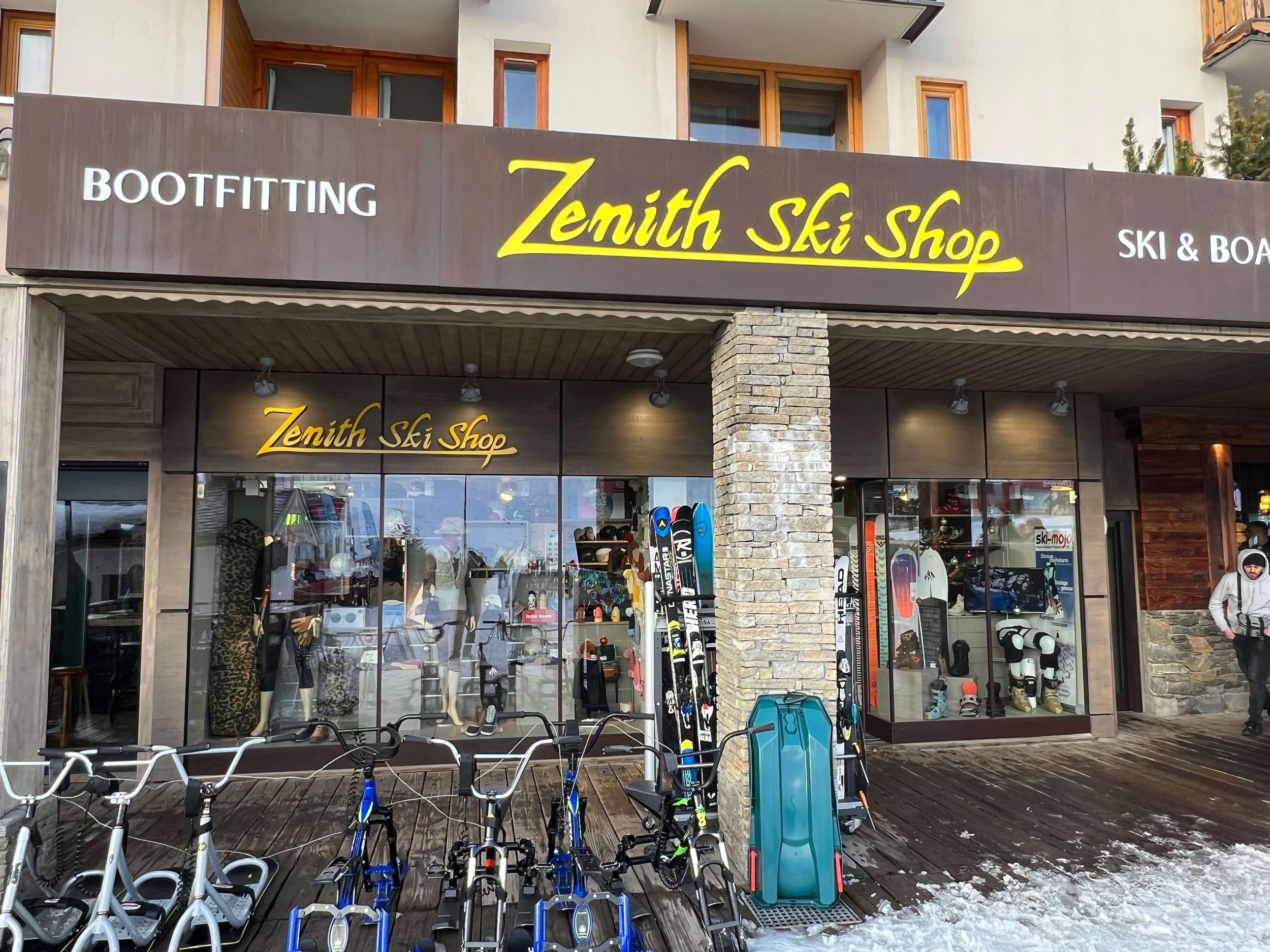
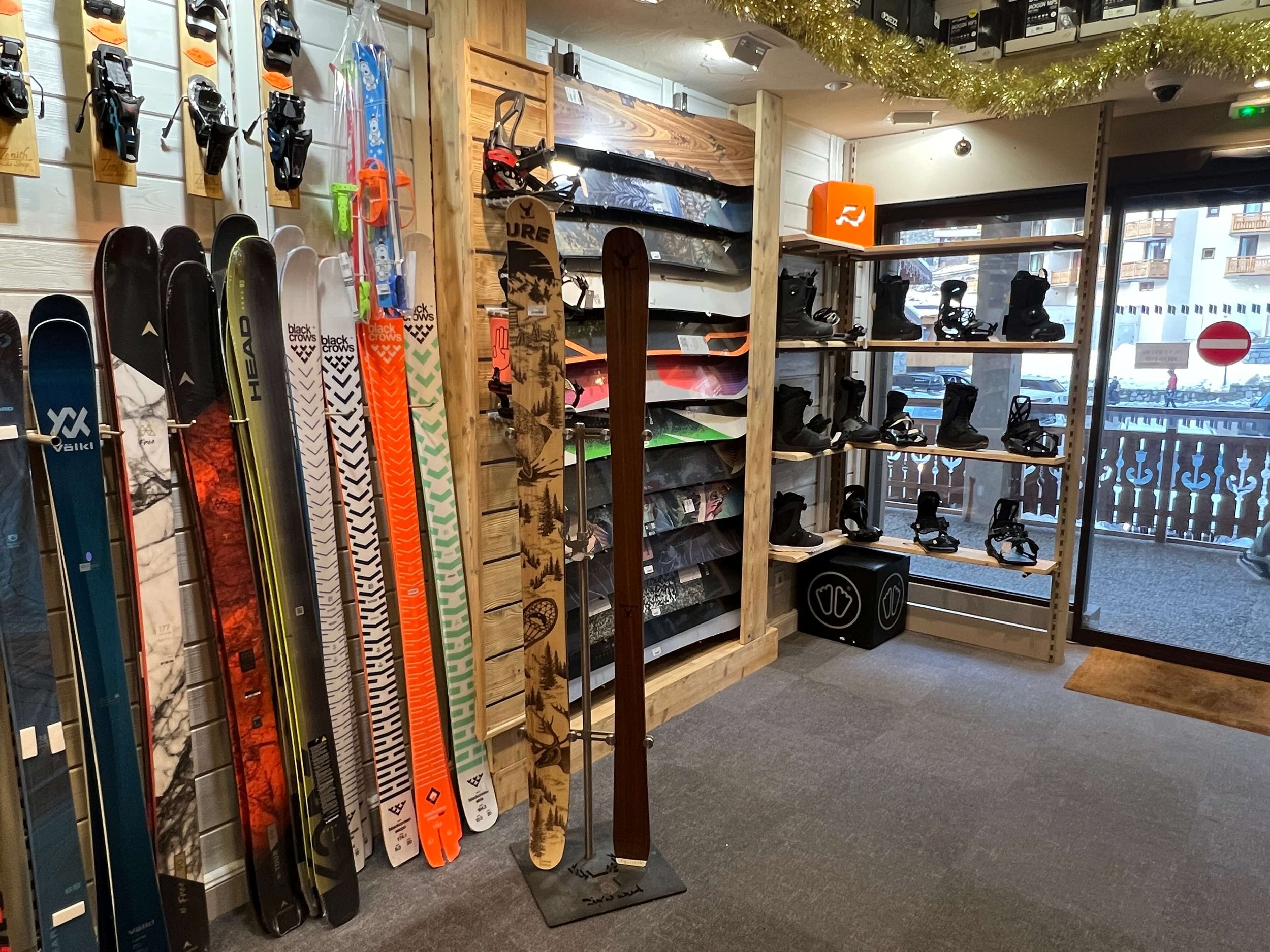
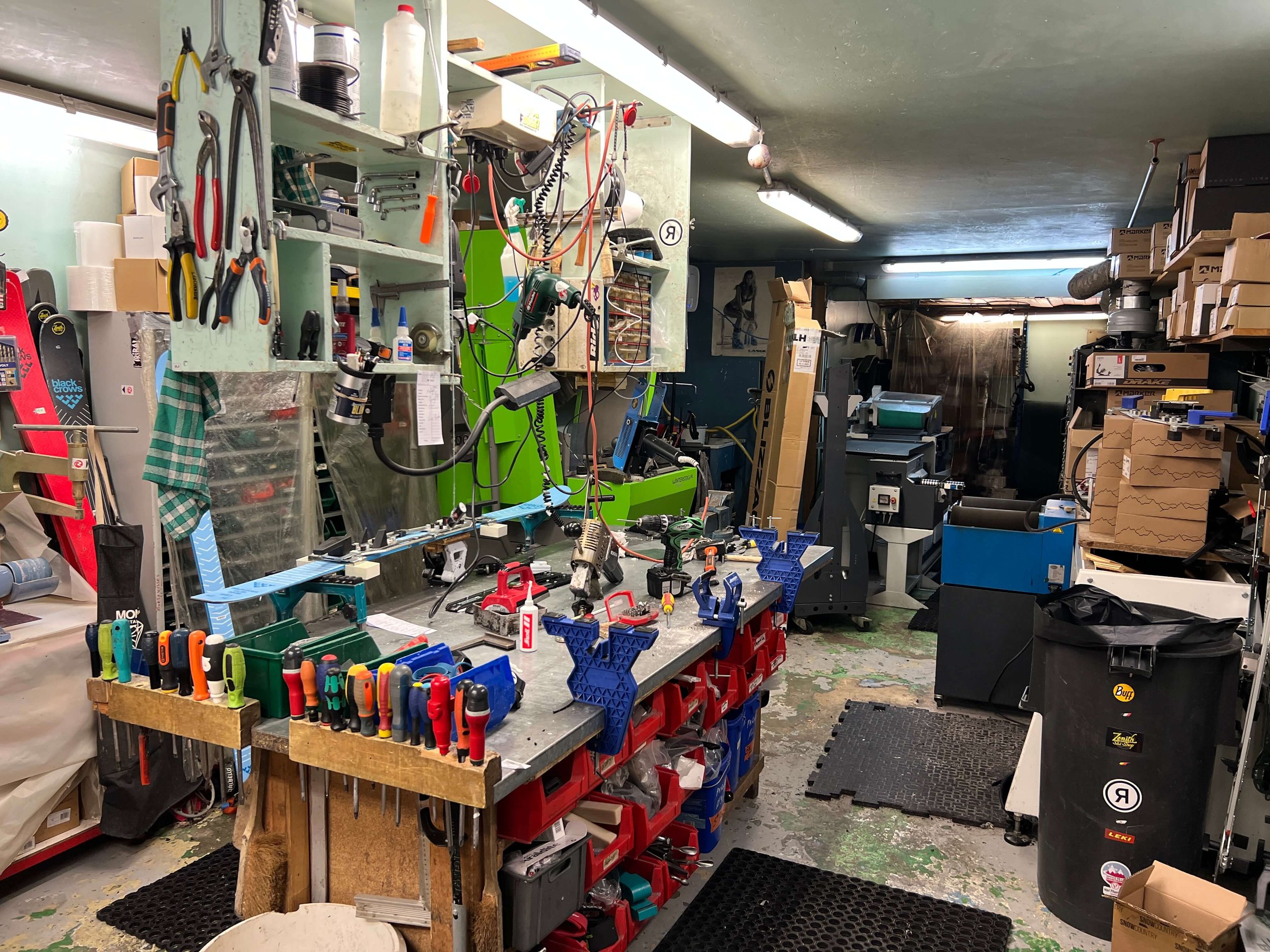
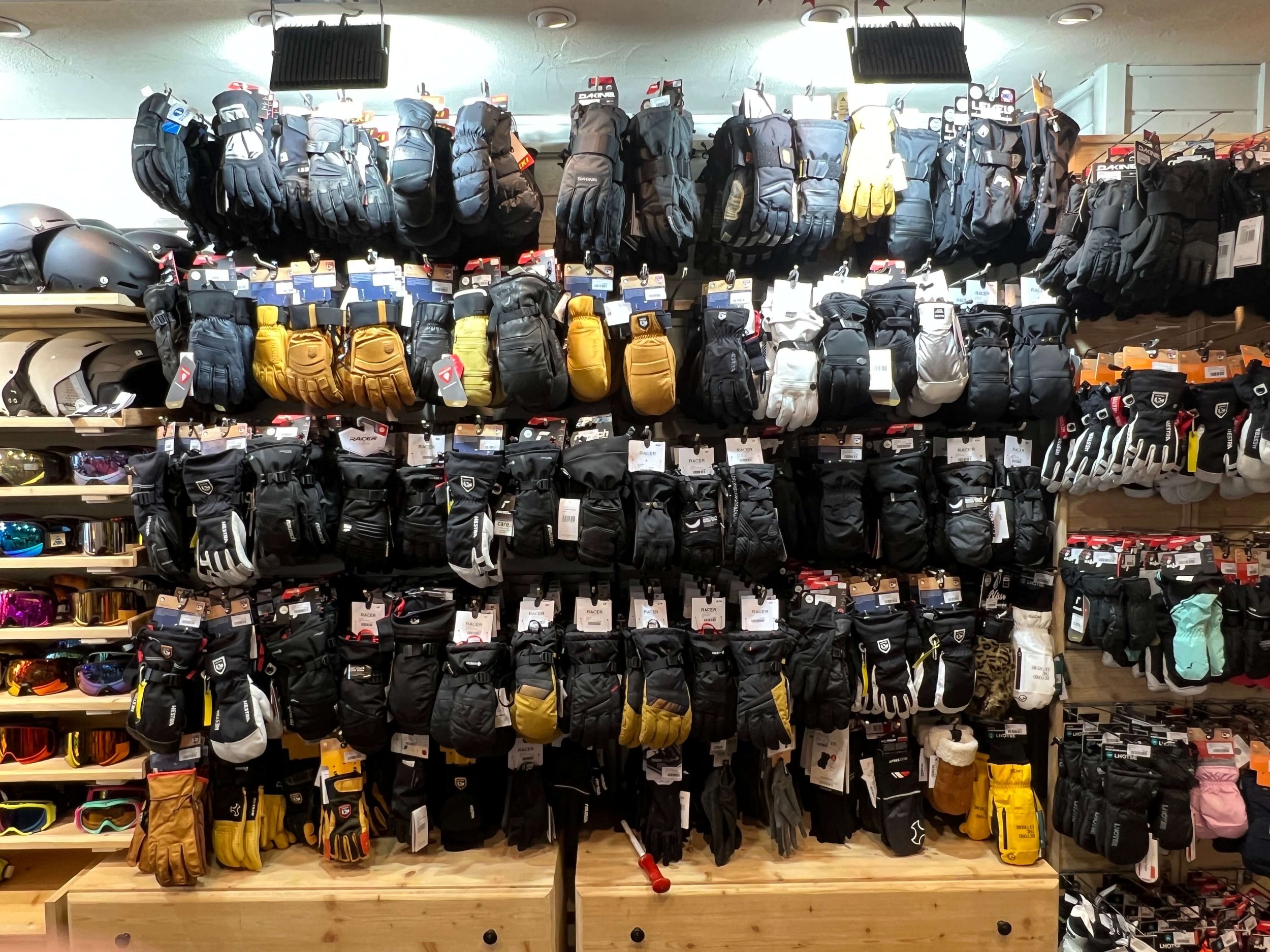
VAL THORENS FINAL THOUGHTS
Val Thorens is always going to be one of the best options for ski holidays in Europe. When you combine the highest resort village, with terrain above 2000m, and a large connected ski area Val Thorens packs a punch. The village and local area have everything you require in a ski resort base and it is hard to argue against returning to the resort year after year.
Cerro Catedral Ski Resort Guide
If you are looking for a well-developed ski resort in South America, well Cerro Catedral is your best option. The largest ski area in South America, Cerro Catedral has it all. A one-stop-shop for experiencing the best of the Argentine ski scene. At Cerro Catedral ski resort you will not only find some incredible terrain but you will find the views to match. Catedral’s location looking over Lago Nahuel Huapi is stunning and firmly cements its place amongst the most scenic ski resorts in the world.
Views from @ Cerro Catedral Across Lago Nahuel Huapi
CERRO CATEDRAL FIRST IMPRESSIONS
Flying into the local town of Bariloche it is easy to see what draws not only mountain lovers but tourists to this area. The Andes are spectacular and the location of Bariloche on the banks of Lago Nahuel Huapi is something extra special. You will need to leave the town of Bariloche and drive just over 16km to reach the resort and village base at Cerro Catedral. Now known as Catedral Alta Patagonia, the resort and village are about as modern as it comes in South America. You will find a fully functioning ski town, with accommodations and ski shops lining the pathways to the lifts. A particular highlight is the smell coming from Rapanui, a delightful chocolatier you will find both in Catedral and Bariloche.
CERRO CATEDRAL SKI RESORT
Catedral Alta Patagonia is huge and offers the largest lift accessible ski area in South America. There are over 30 lifts to transport you uphill around the 3000 acres of ski area here. There is an expanse of off-piste and sidecountry terrain at Cerro Catedral and this can make the skiable terrain seem endless. Inbounds you will find 120km of pistes that are most suited to intermediate skiers and snowboarders. Snowboarders who love to cruise the blues will really enjoy Cerro Catedral and if you are a competent red rider then Panorama will be a favourite. Panorama is a beautiful red run that winds its way from the top of Nubes chair offering (yes you guessed it,) panoramic views of Lago Nahuel Huapi and the Andes mountains.
Beginners will be happy enough at Catedral with a designated beginners area at the base and at mid-mountain. If you are learning for the first time whilst visiting Catedral aim to visit outside of the holiday season as the resort can get swarmed by Brazilian tourists making the learner slopes pretty hectic.
La Laguna Off-Piste @ Cerro Catedral
Where Catedral Alta Patagonia comes alive is in the advanced terrain. When conditions are good at Catedral this is one of the best resorts you can be at. The short hike into La Laguna is well worth it and offers up a good range of off-piste options. In La Laguna, you can hike to the imposing granite towers that give Catedral its name. This area is where we had our best days at Cerro Catedral ski resort, exploring the terrain and finding new ways to snowboard back down into the resort. Advanced skiers and boarders will also appreciate the lift accessible turns you can get straight from the Nubes chairlift. Directly under the chair, there are some steep runs lined with rocks however, these can get tracked quickly during the peak periods.
If you find value in this content please consider supporting the website by clicking the image below and buying me a coffee.
CERRO CATEDRAL FOR BEGINNERS
Beginner skiers and snowboarders will find a few areas to learn at Cerro Catedral with magic carpets and beginner’s lifts right outside Plaza Amancay and at the top of both Princesa 1 and Amancay gondolas. The beginner areas at Catedral can be really busy during holiday periods with an influx of Brazilian tourists learning to ski for the first time. Away from the never-ever slopes, Catedral ski resort has some interesting greens on the lower mountain. In the right conditions, beginners can ski from Esquiadores chair back to the base via a winding green trail 1200.
The main greens at Cerro Catedral are on the lower mountain meaning that they can be subject to poor conditions late in the season or during a lean snow year.
CERRO CATEDRAL FOR INTERMEDIATES
Intermediates will find no shortage of blue and red trails at Catedral Alta Patagonia. The reds and blues link together nicely across the mountain to ensure that intermediates can pick their preferred route down to the base.
The area underneath the Condor 1,2, & 3 chairs link together some long trails that head down to the base area. Beware, the Condor chairs are pretty old-school and not known for their speed. Elsewhere the Nubes chairlift accesses not only one of the prettiest runs on the mountain, Panorama, but also some interesting blues, Nuber and Paralela, which run alongside the Cerro Catedral terrain park.
CERRO CATEDRAL FOR ADVANCED
Although Cerro Catedral ski resort caters well to intermediates it is for the advanced skier that it comes into its own. The Nubes area was amongst my favourite hangouts with some great off-piste routes which pick their way between the rocks and are lift-accessible.
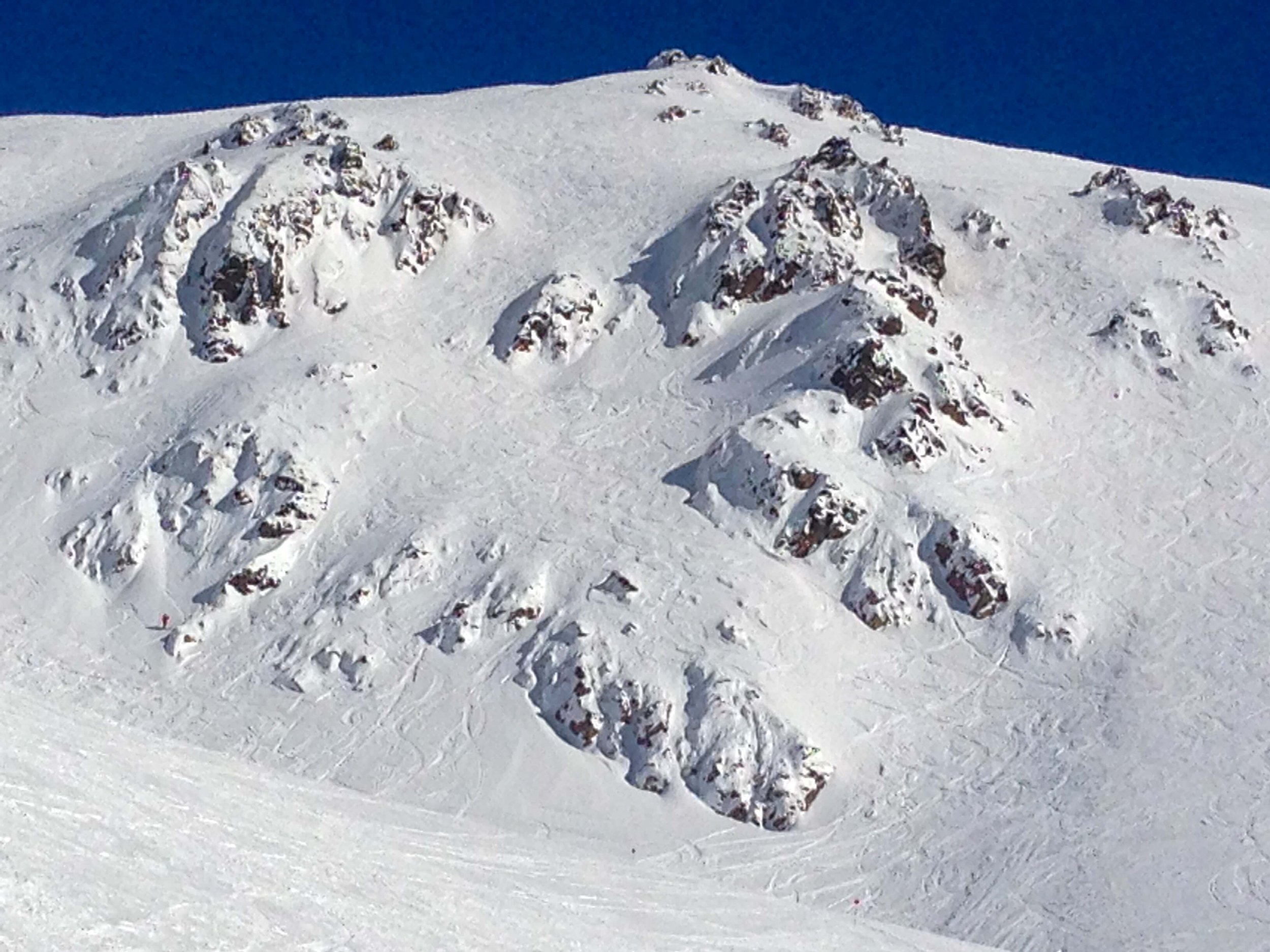
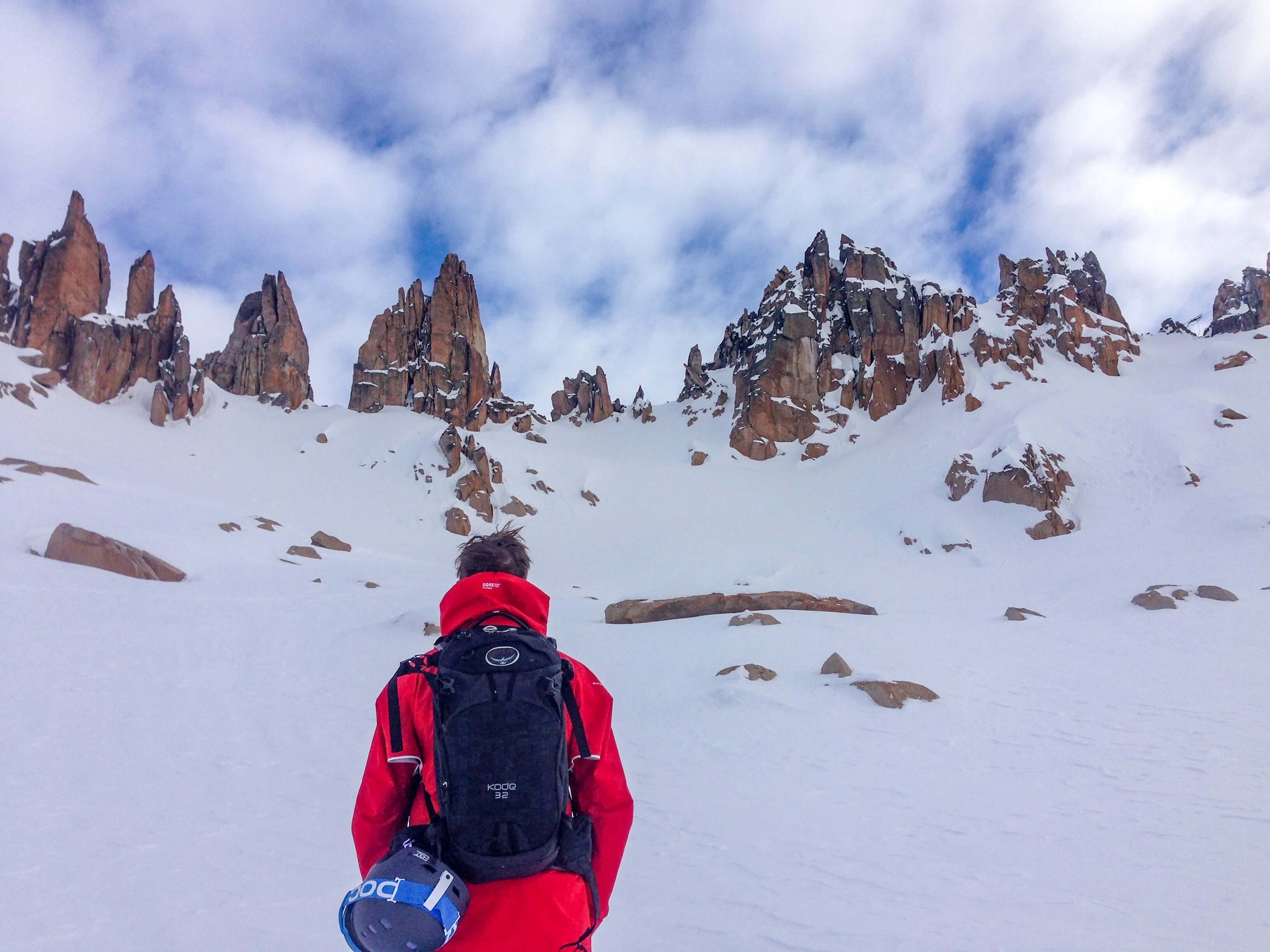
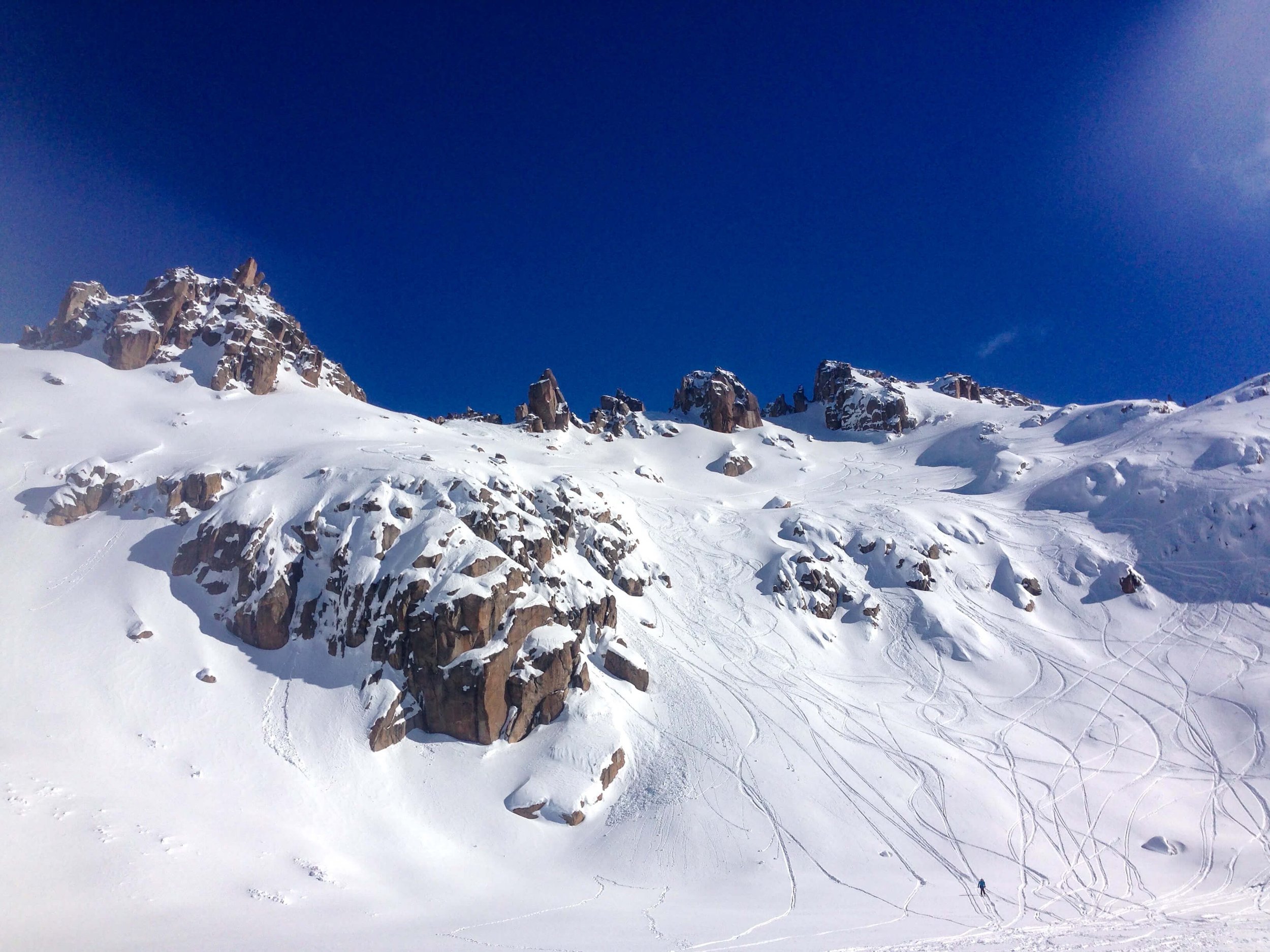
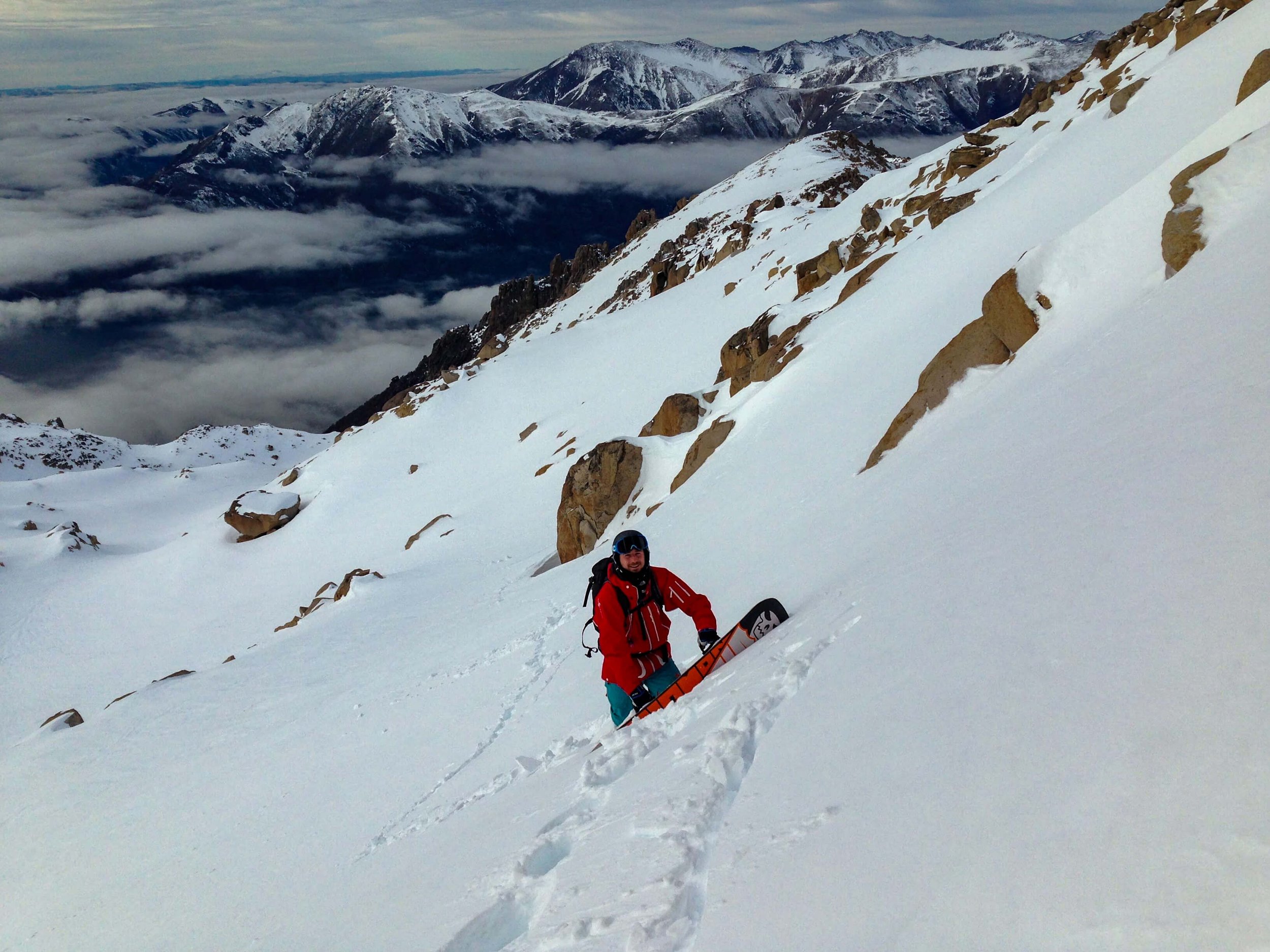
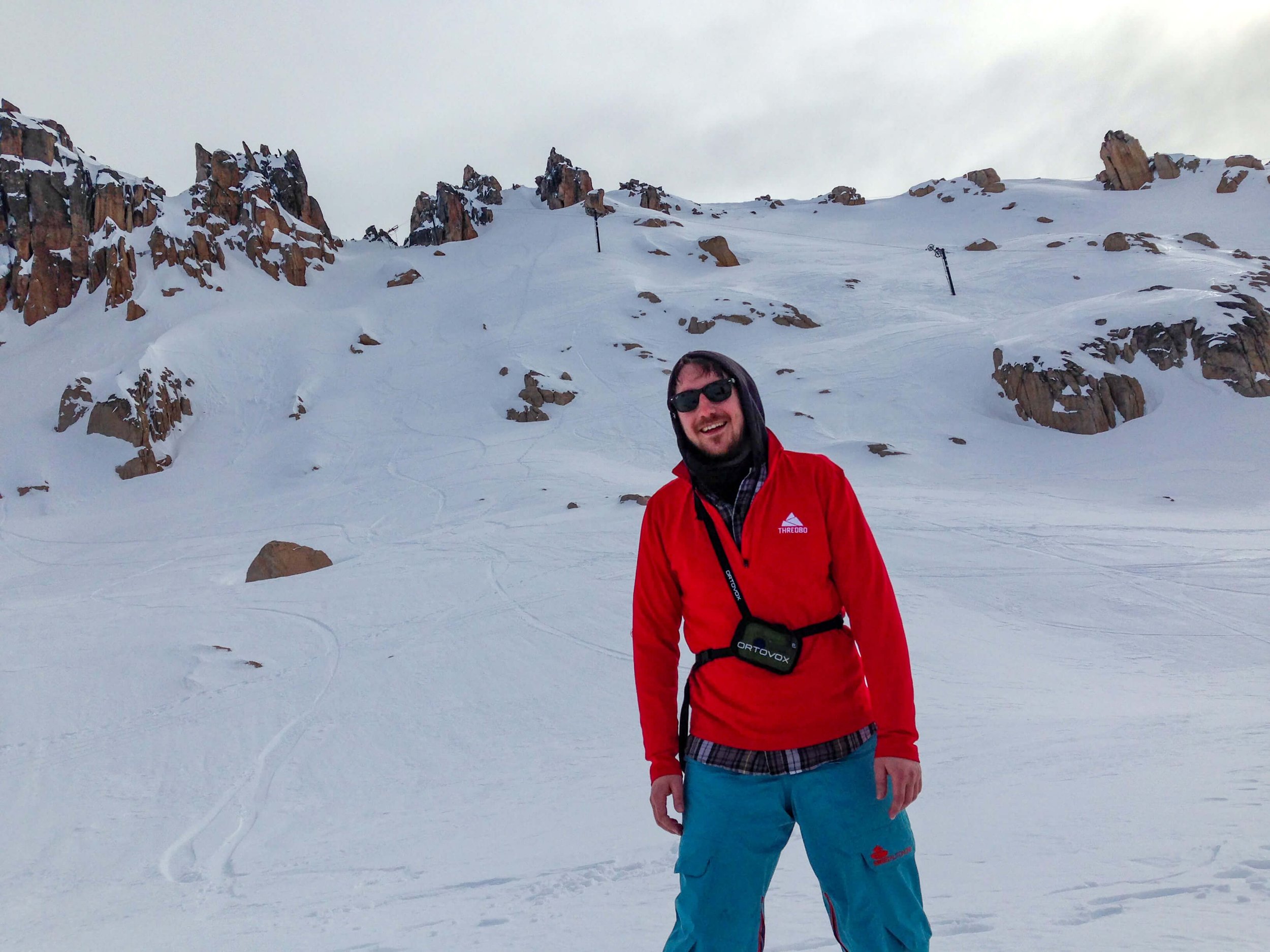
If you do not mind a short hike, then the La Laguna area is of absolute interest. It is here following the hike to 2180m and standing amongst the granite peaks that I enjoyed some of my most memorable days at Catedral.
CERRO CATEDRAL FREESTYLE
Cerro Catedral has a decent terrain park with its own quad chairlift making it simple to lap. The park has a number of freestyle features that progress in difficulty. The terrain park is located under Nubes and is well-maintained with regular staff ensuring that features are safe and fun.
CERRO CATEDRAL PISTE MAP
Catedral Alta Patagonia Piste Map
LIFTS AT CERRO CATEDRAL
The quality and speed of lifts at Cerro Catedral vary greatly. The Sextuple will be your fastest and most direct way to access the centre of the resort. Alternatively, you can take the arduous journey up the three old Condor chairs. This route is sometimes worth it when the crowds swamp the Sextuple. There is also an old gondola, Amancay, which accesses some of the beginner terrain and will get you closest to La Laguna. My favourite lift in the resort is the Nubes chair which takes you to some of the best views and runs on the mountain.
CERRO CATEDRAL SNOW RECORD
The snow at Cerro Catedral can be hit or miss and although the average snowfall in the resort is 6m per season it can be wet and heavy. The snow towards the base tends to worsen throughout the day and the season and it is possible you will be required to down lift. The upper slopes tend to stay in good condition and this is where the majority of the challenging terrain is found.
CERRO CATEDRAL SEASON DATES
The season at Cerro Catedral Alta Patagonia runs between June and October. The early and late season conditions can be fairly average so we would recommend visiting between August and early September.
CERRO CATEDRAL LIFT TICKTS
When buying your lift tickets for Cerro Catedral it is best to look in advance at the weather forecast. Patagonia is prone to some pretty serious weather systems that can cause down days. Cerro Catedral offers Flexi pass options which are great for this purpose.
For prices and the most up-to-date information on lift tickets for Cerro Catedral click here
TRAVEL TO CERRO CATEDRAL
GETTING TO ARGENTINA
Argentina is the 8th largest country in the world so getting around can involve long journeys. You will most likely enter via plane into Buenos Aires EZE or Ministro Pistarini Internation Airport. From here if you intend to take an internal flight you will need to transfer to AEP or Jorge Newbery Airport. From AEP you can fly directly to Bariloche.
WHERE IS CERRO CATEDRAL?
Cerro Catedral is the closest ski resort to the town of San Carlos de Bariloche in Argentina’s Lake District. Set within the area of the Nahuel Huapi National Park and near Lago Nahuel Huapi, Cerro Catedral is in a stunning location. To get to Bariloche from Buenos Aires the quickest route is to take a flight into Bariloche airport which will take around 2 hours. The airport is outside of Bariloche and you will need to either take the bus or a taxi into the town.
CERRO CATEDRAL ACCOMMODATION
The town of Bariloche is bustling with activity and would be a great place to base yourself during your stay at Cerro Catedral. There are plenty of accommodation options ranging from hostels to boutique hotels. If you stay in Bariloche you will need to take the bus to Cerro Catedral, hitchhike, or hire a car.
Alternatively, it is possible to stay in the village base area at Cerro Catedral. The village has a wide selection of accommodation and amenities. Most accommodation is a short walk from the slopes and the restaurants or bars in the village.
I opted to stay at a hostel halfway between Bariloche and Cerro Catedral called Alaska Hostel. We found this location great for both ease of getting to Cerro Catedral and also trips into town.
CERRO CATEDRAL PROS
Cerro Catedral has incredible lift-accessed side-country that offers plenty of challenges.
Modern lifts can be found at Catedral although the slow ones also remain… The offer is good though when compared to other South American ski resorts.
At Catedral Alta Patagonia you have the option of flexible lift passes which are a good choice with variable weather.
The resort of Cerro Catedral is stunning with some of the best views of any ski resort I have visited.
CERRO CATEDRAL CONS
July can be busy at Catedral with it being a busy holiday season. This results in queues on the lower mountain. Once up the mountain, crowds tend to spread.
Early and late season can require down lifting to the base area due to poor snow conditions.
Catedral can be expensive to visit when you factor in the cost of international flights.
CERRO CATEDRAL ACTIVITIES
There is a range of local ski schools at Cerro Catedral but if you want a proper adventure look into booking a trip with SASS Global Travel. SGT offers some intensive guided programs to help you make the most of the Cerro Catedral backcountry.
CERRO CATEDRAL GALLERY
CERRO CATEDRAL FREQUENTLY ASKED QUESTIONS
HOW HIGH IS CERRO CATEDRAL SKI RESORT?
The highest lift-accessible point at Cerro Catedral is Nubes at 2100m. You can reach higher peaks by ski-touring into La Laguna where the peak is 2180m. With Nubes standing at 2100m there is a 1070m vertical drop back to the base area.
WHAT IS THE CLOSEST AIRPORT TO CERRO CATEDRAL?
The closest airport to Cerro Catedral is San Carlos de Bariloche which is located in the nearest town. International visitors will need to enter Argentina via either of the two main Buenos Aires airports before catching a connection to Bariloche.
HOW DO YOU GET TO CERRO CATEDRAL SKI RESORT?
From Buenos Aires, you have two main options… the long coach journey or the two-hour flight to Bariloche. Once in Bariloche, you will still need to travel to the resort. You can do this by hiring a car or travelling by public bus, though the buses can be extremely packed. It is also possible to hitchhike in Argentina and we always tried our luck whilst waiting for the bus.
IS IT EXPENSIVE TO SKI IN ARGENTINA?
The answer to whether Argentina is an expensive location to ski in isn’t simple. Ultimately, the cost of your trip to Cerro Catedral will depend on how and where you exchange your cash. I know this is true for most countries but none quite like Argentina. In Argentina there are two currency rates, the bank rate and the black market rate, with the latter offering up to 33% more for your money. Changing money on the streets in Argentina is easy and for the most part safe. If in doubt, I used a company called Azimo which provided the black market rate with currency collection from a bank.
IS BARILOCHE SAFE?
Our experience of Bariloche is that it is a safe place to visit. As with most places, beware of normal tourist crimes such as; pickpocketing or thefts of unattended bags. In general, the people in Bariloche were very kind and welcoming.
WHEN CAN YOU SKI OR SNOWBOARD IN BARILOCHE?
The ski season in Bariloche runs between June and October although the optimal months to visit would be August and September. July can be extremely busy and the early and late season snow is unpredictable.



